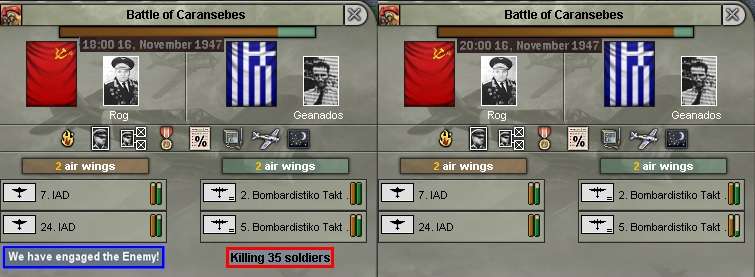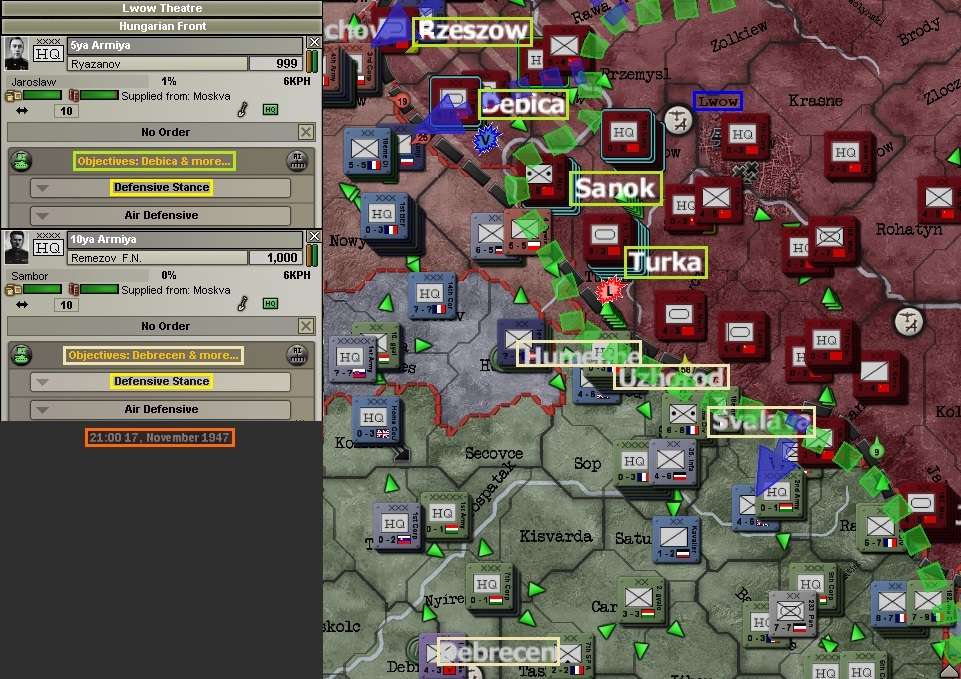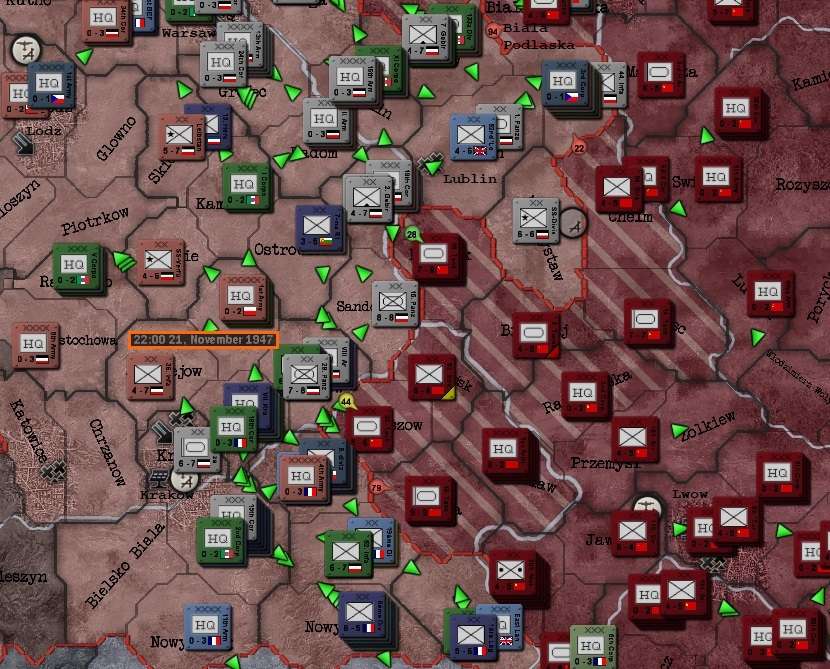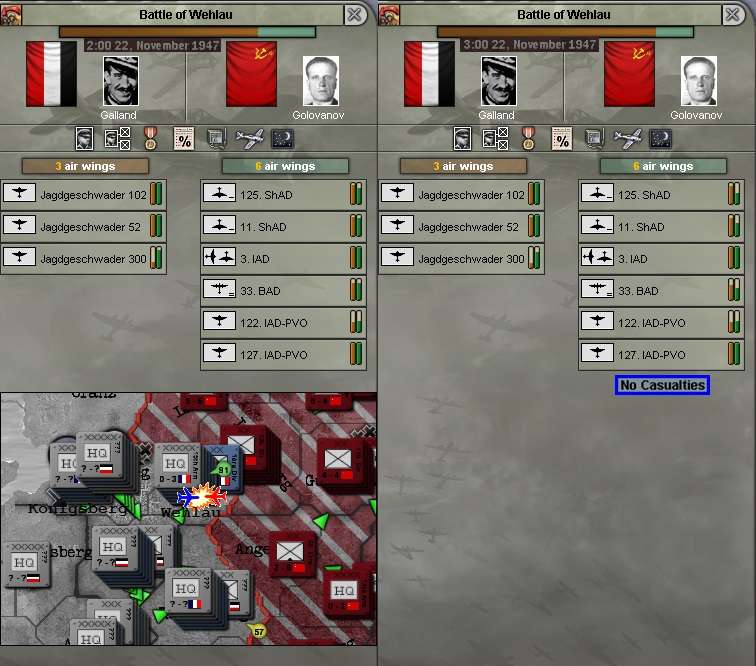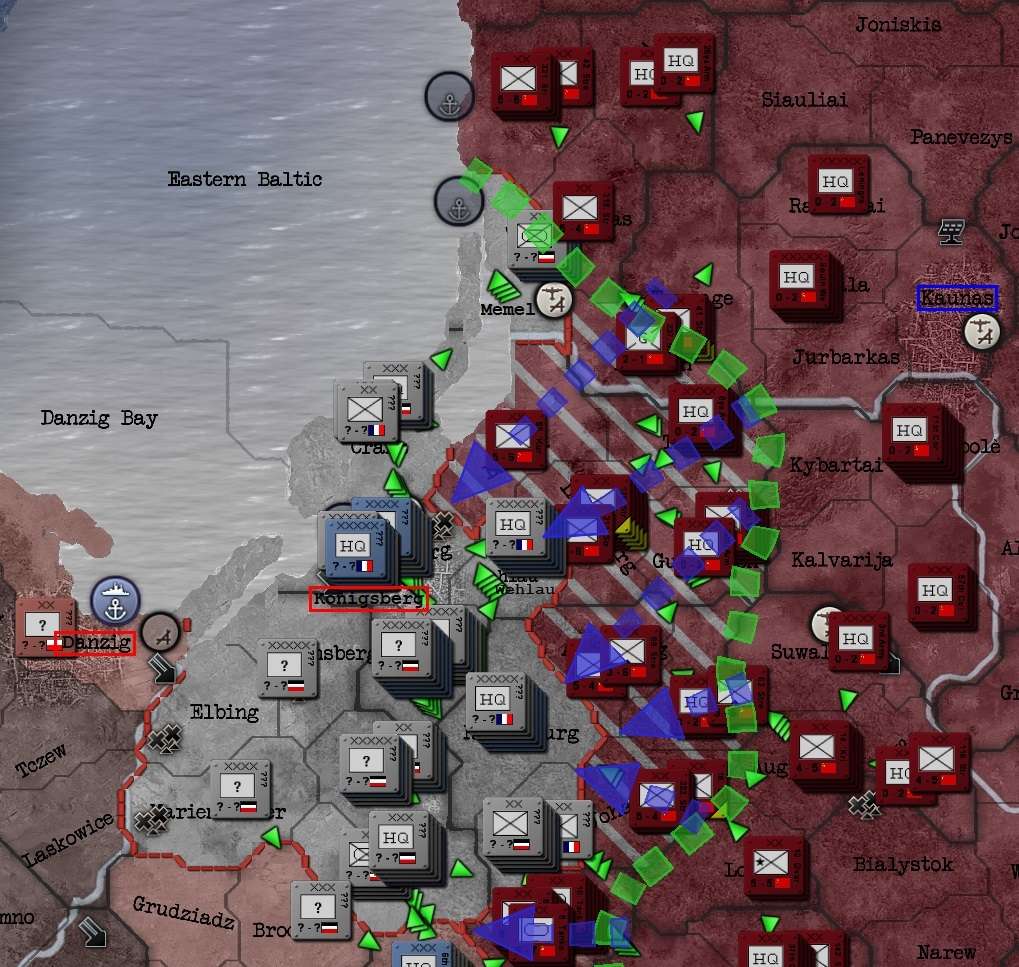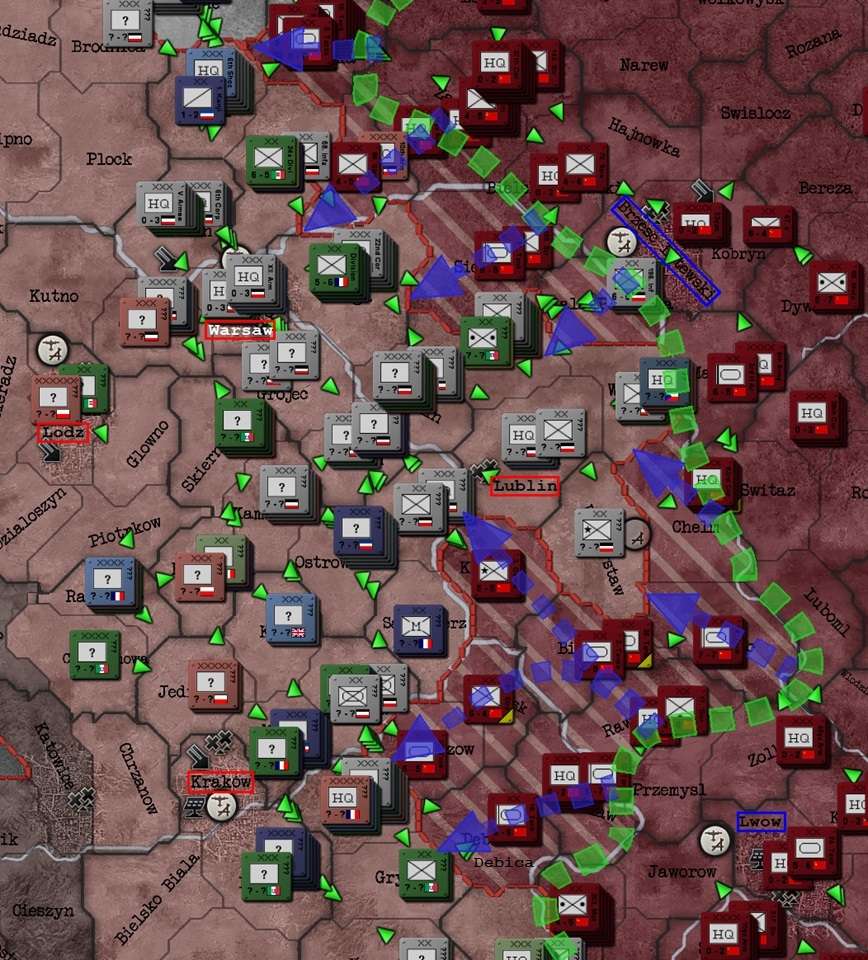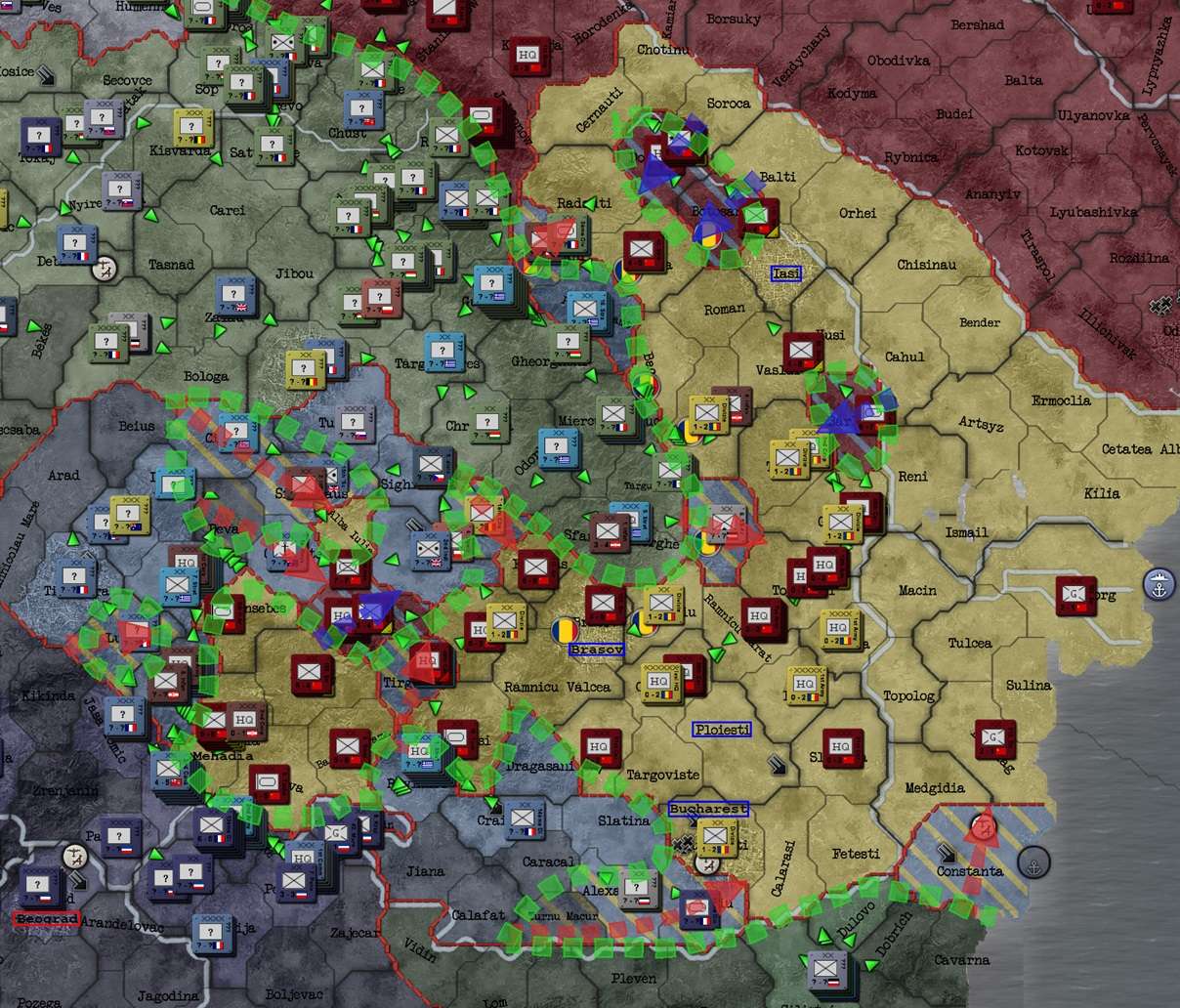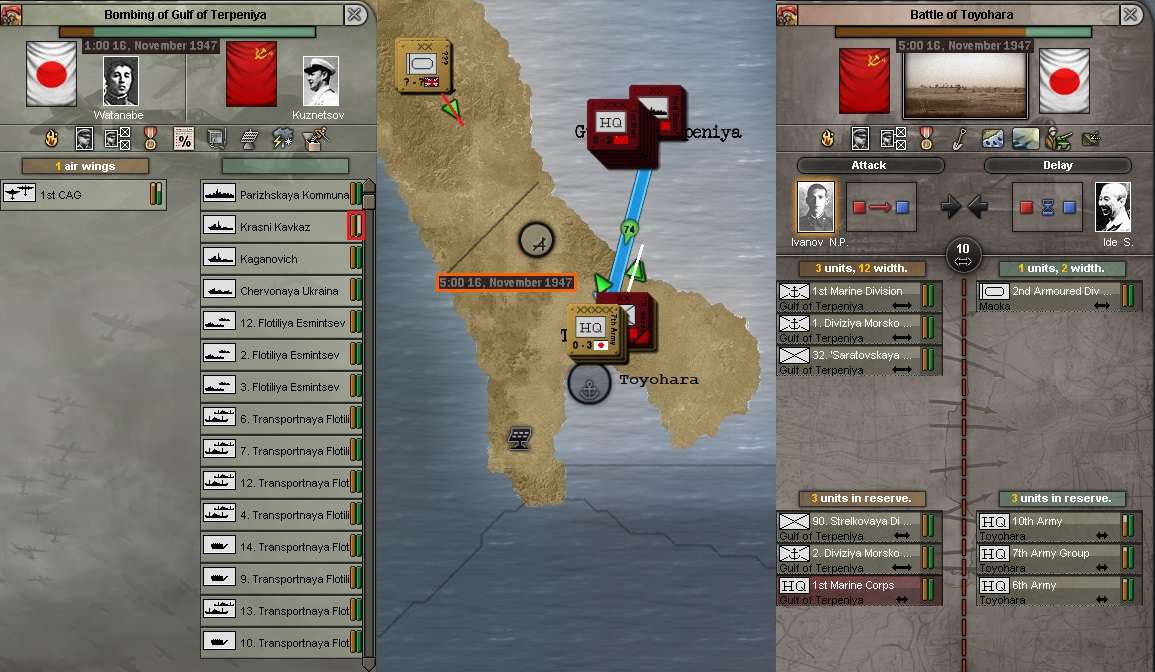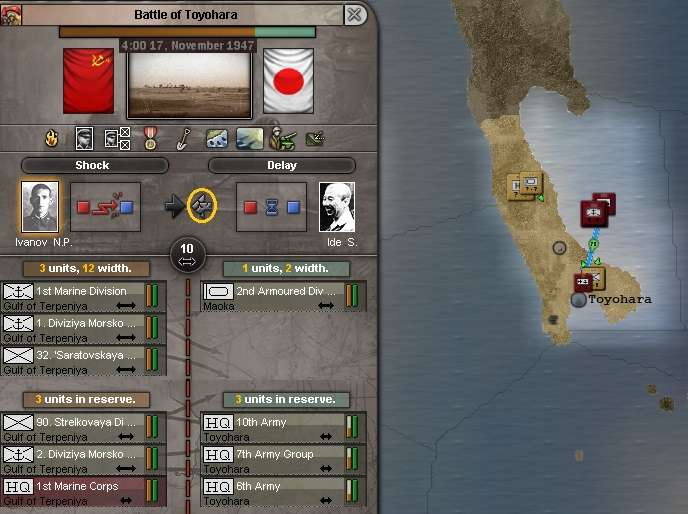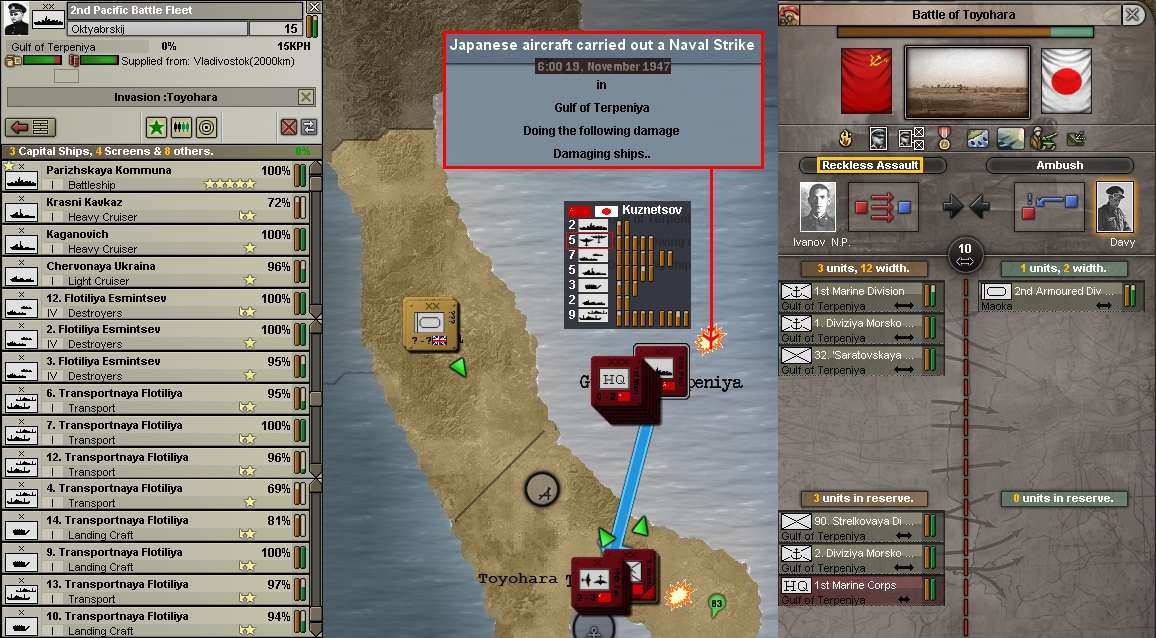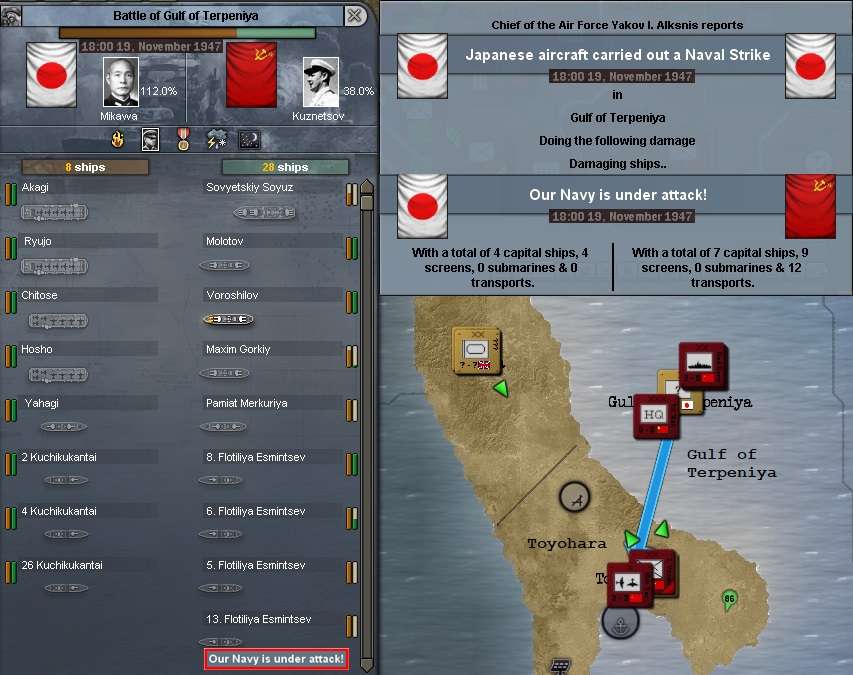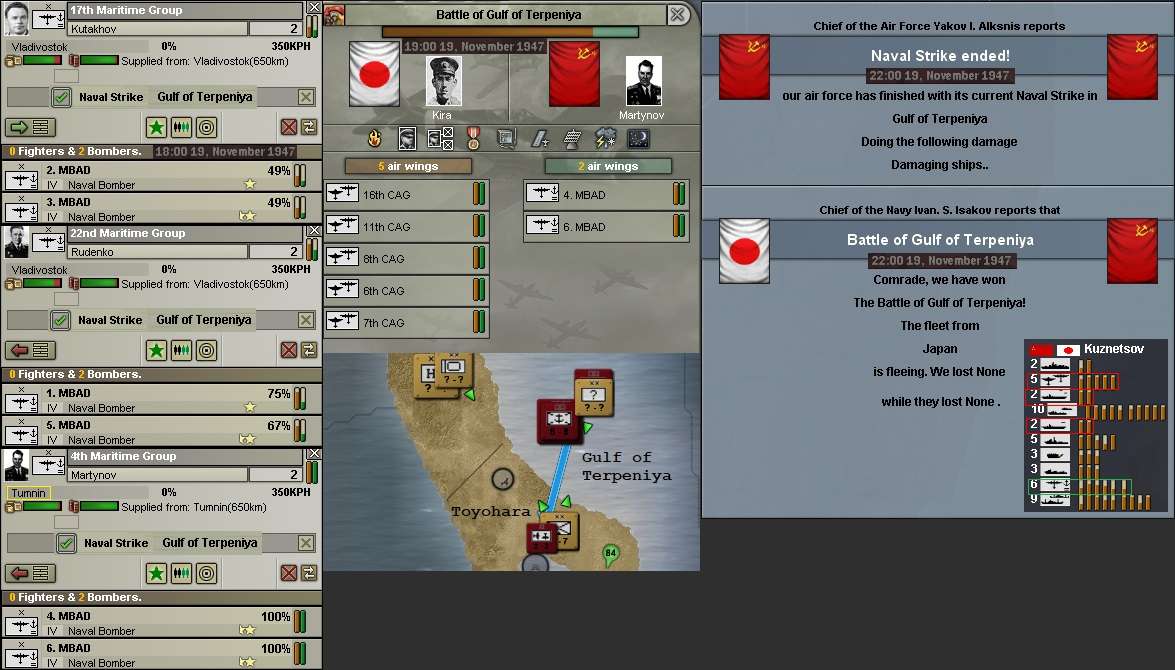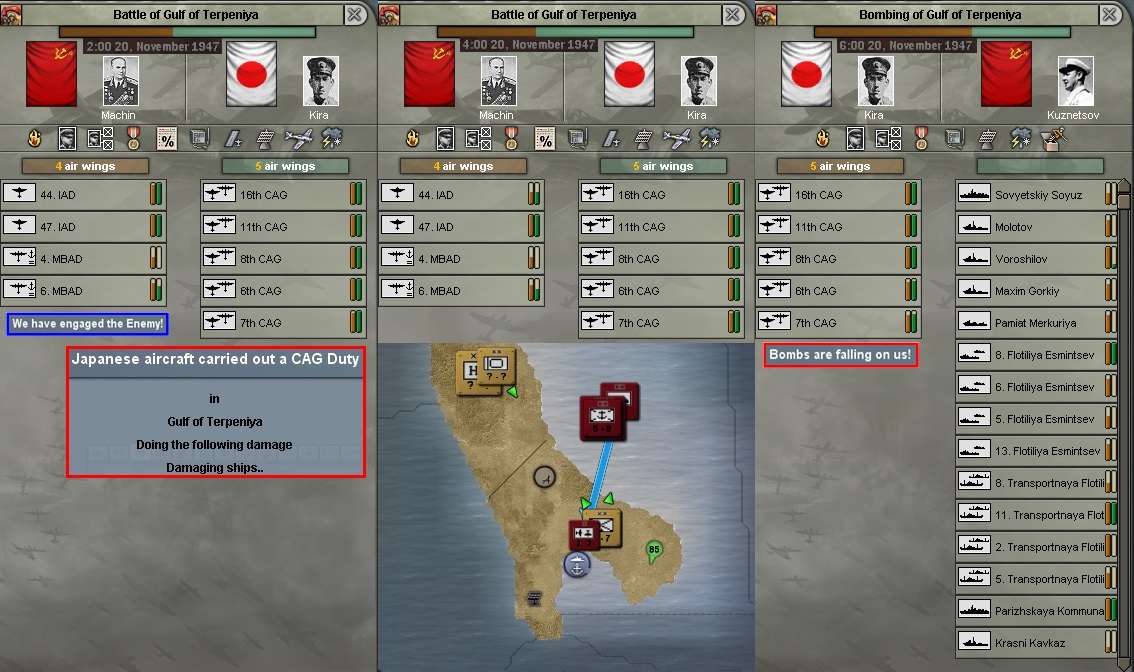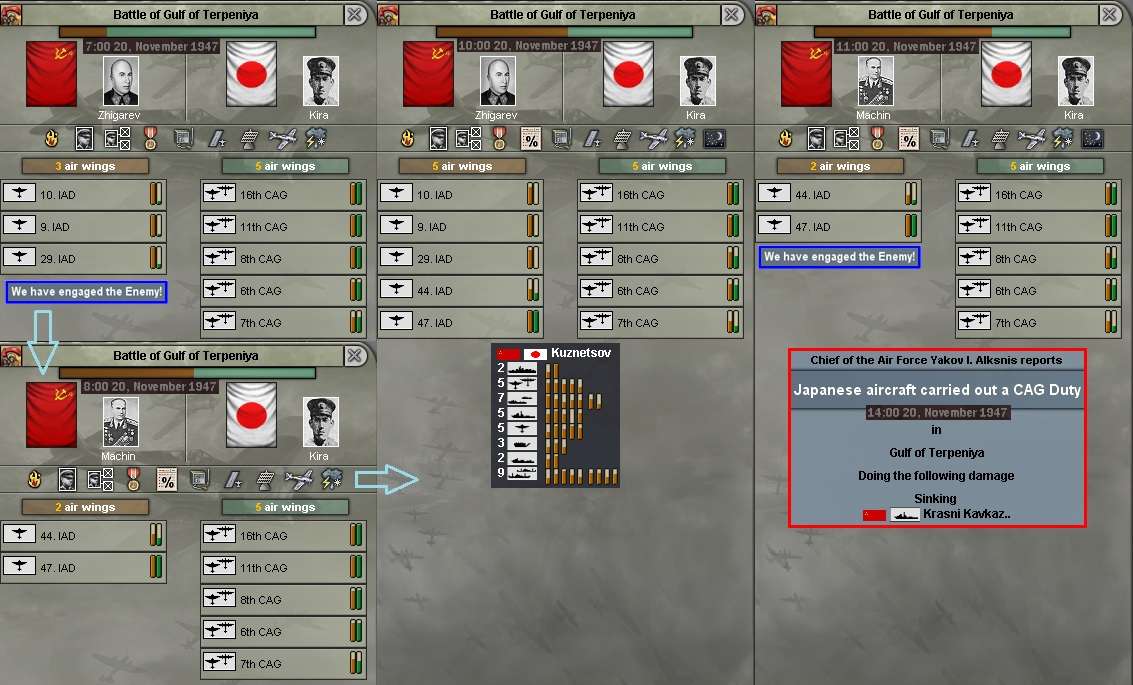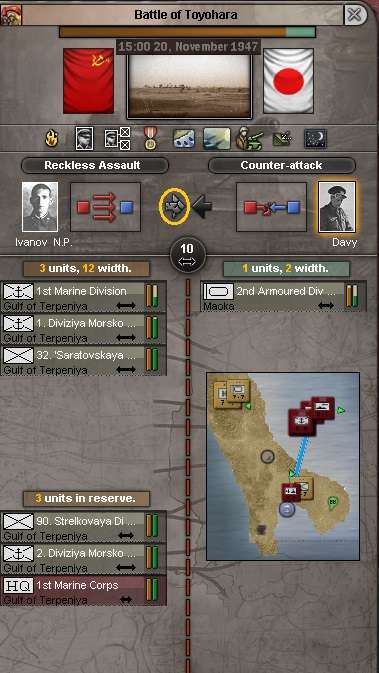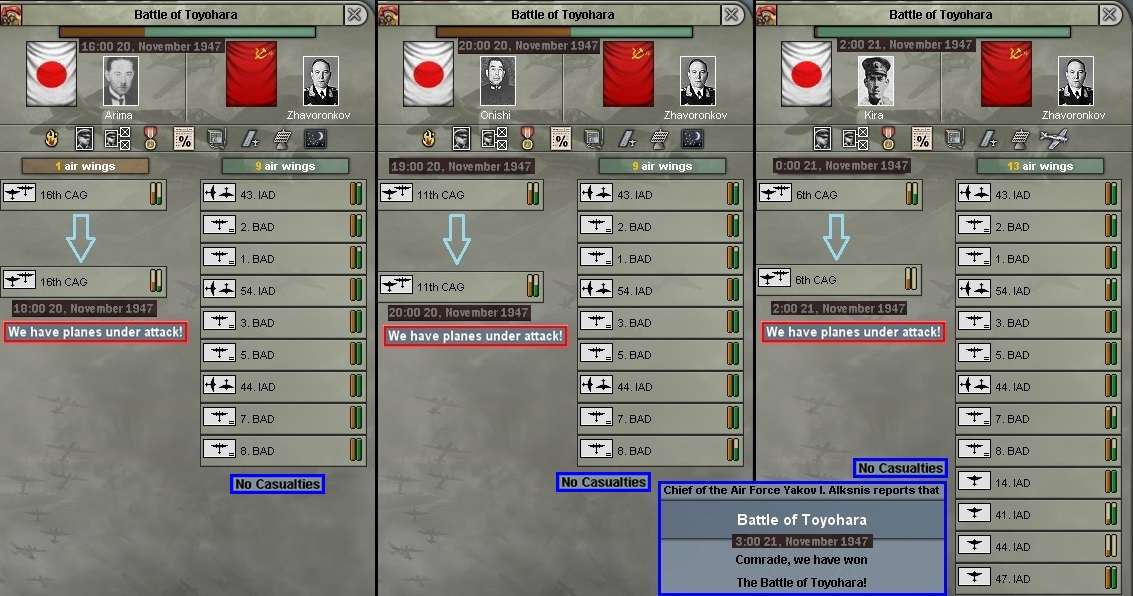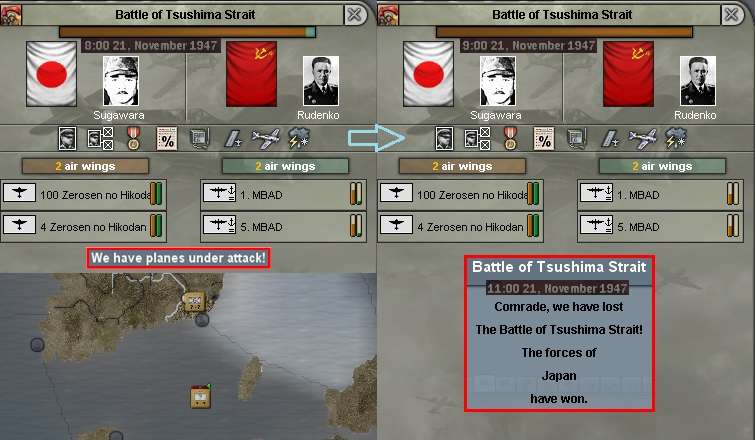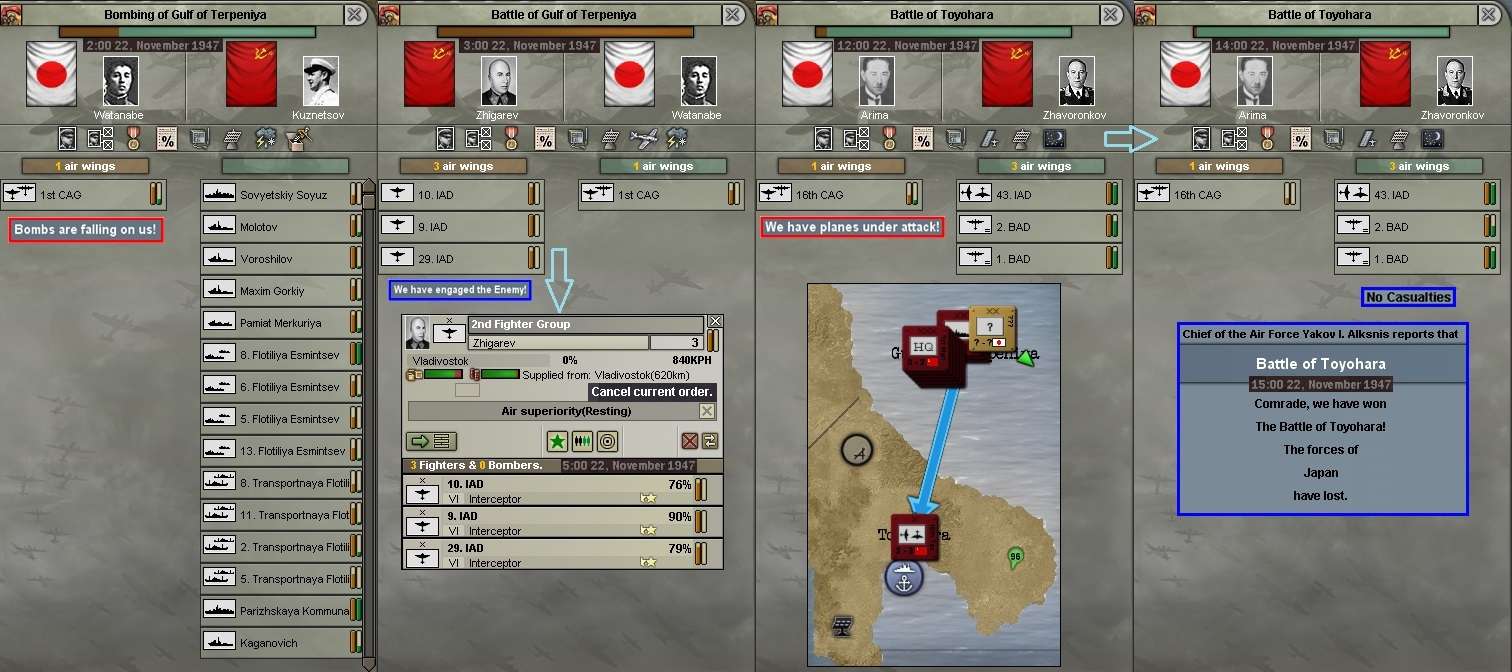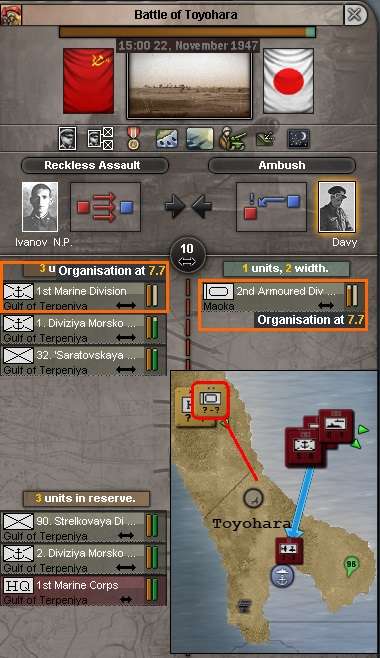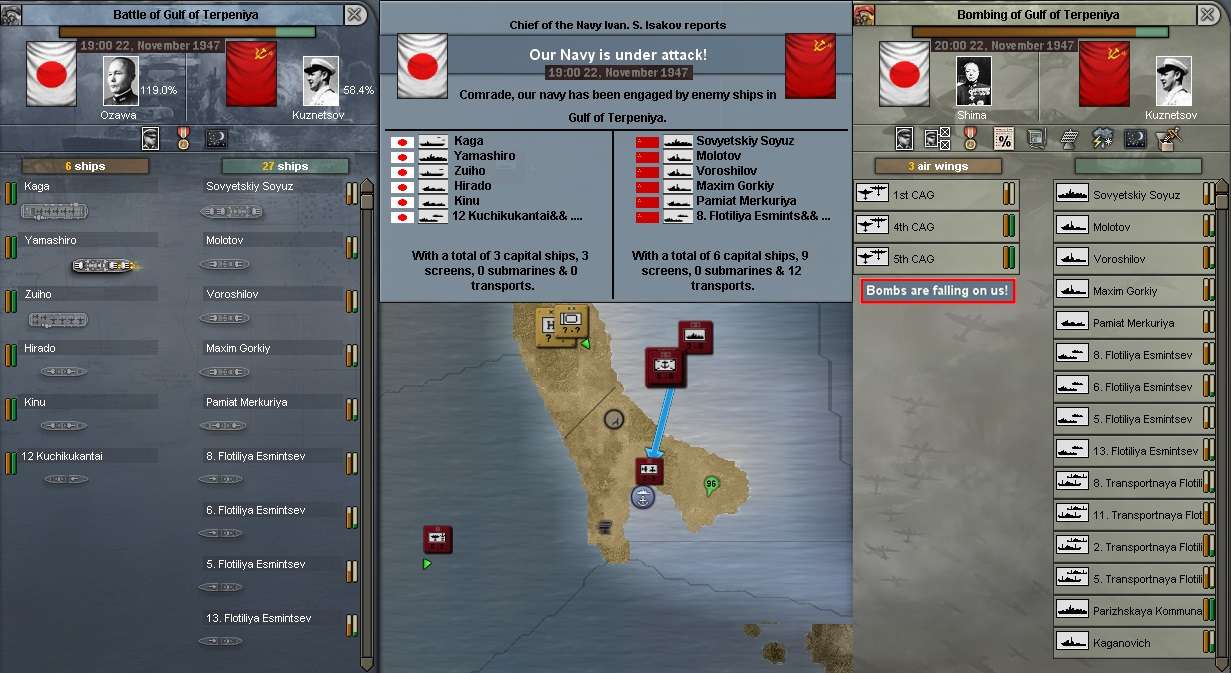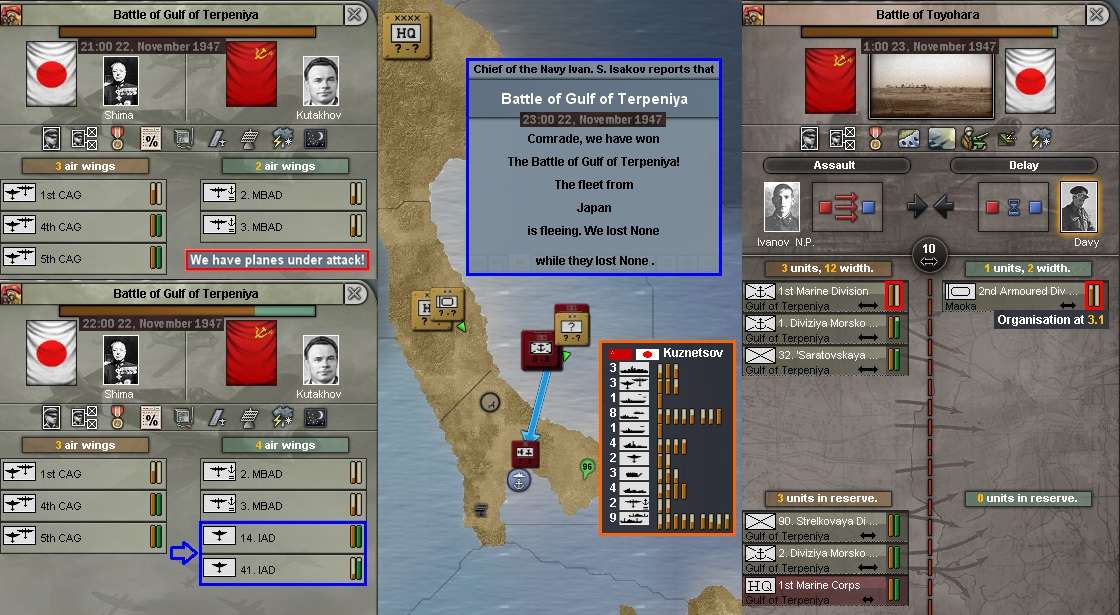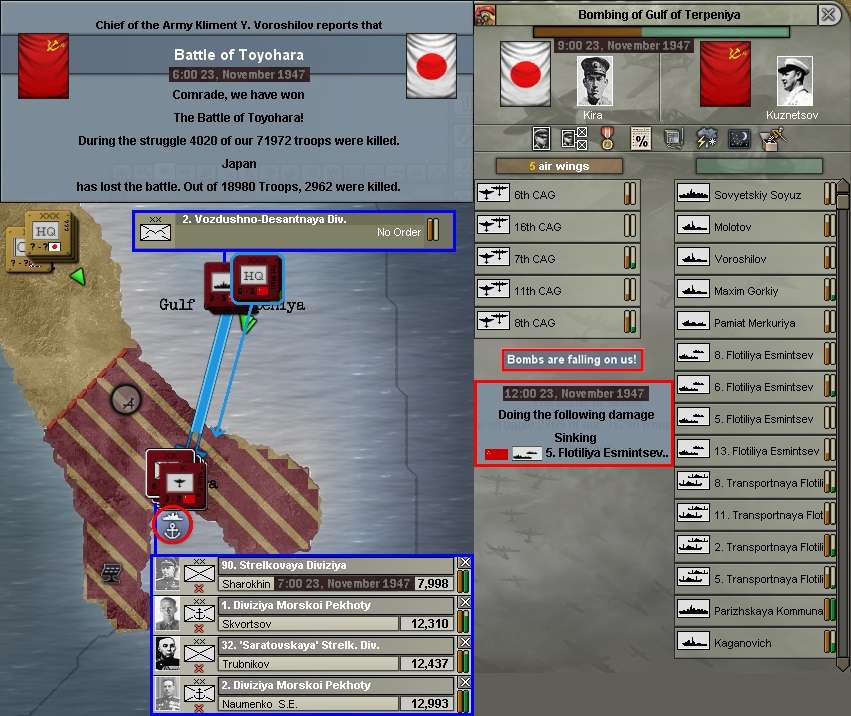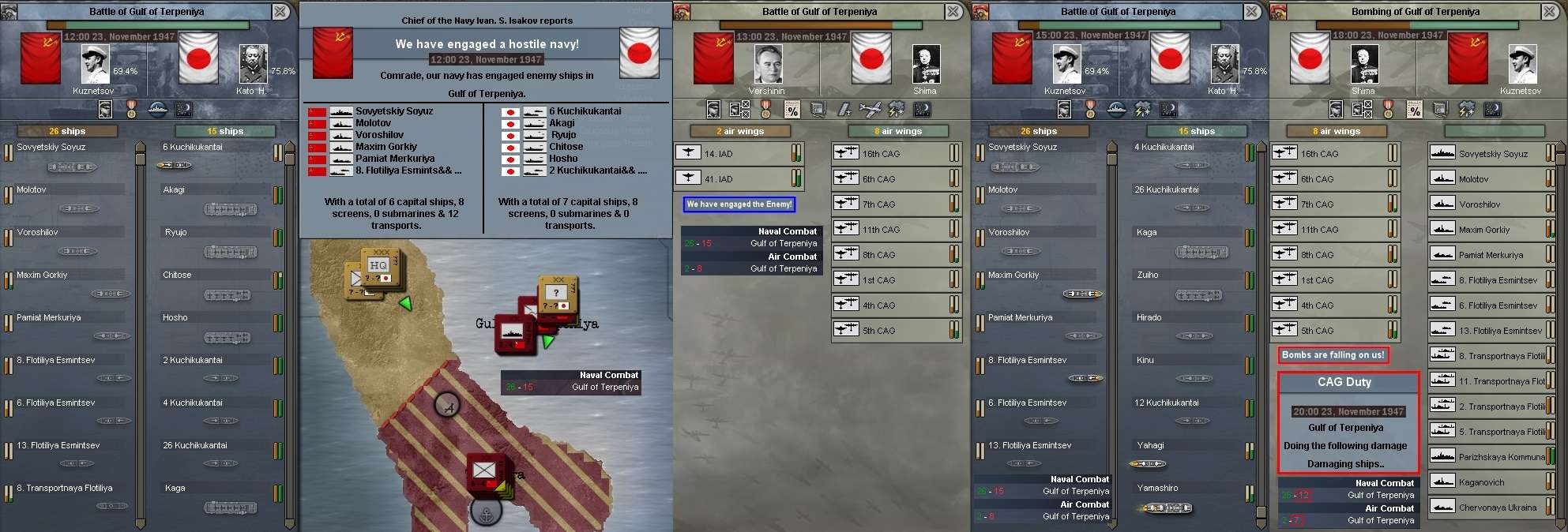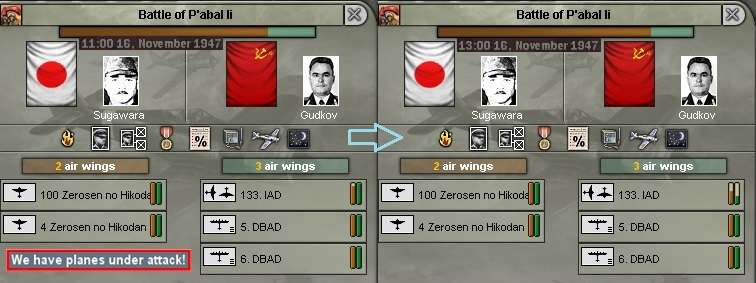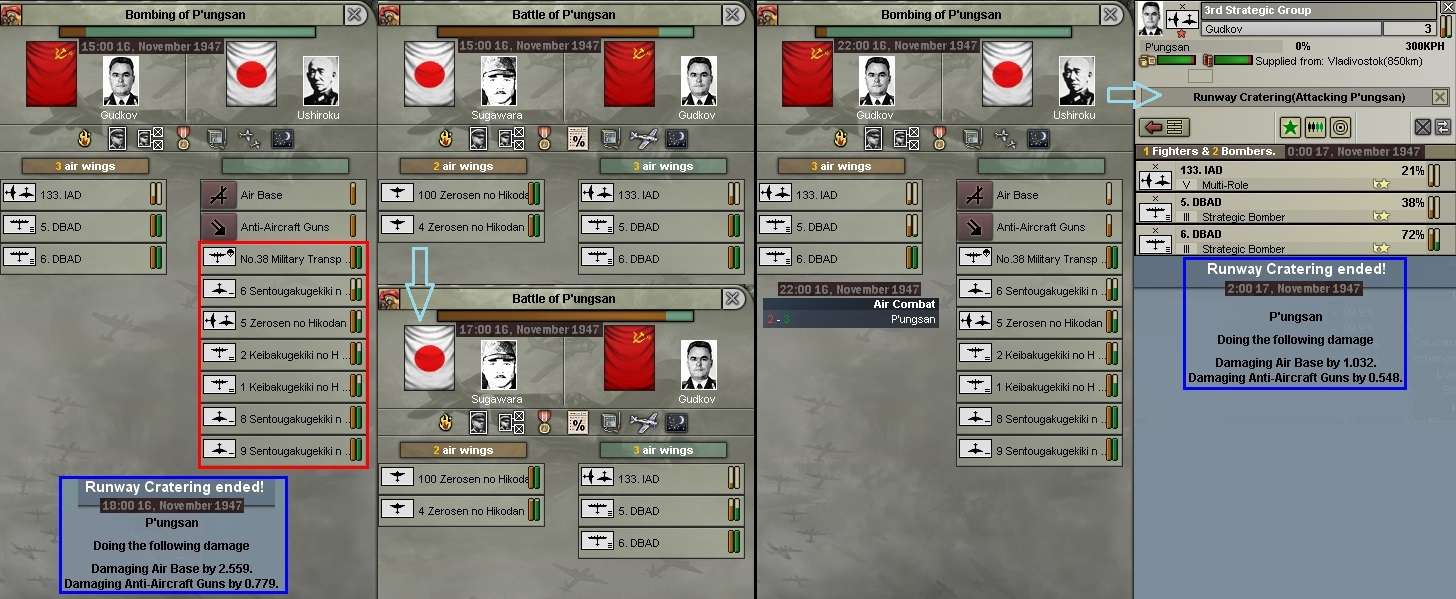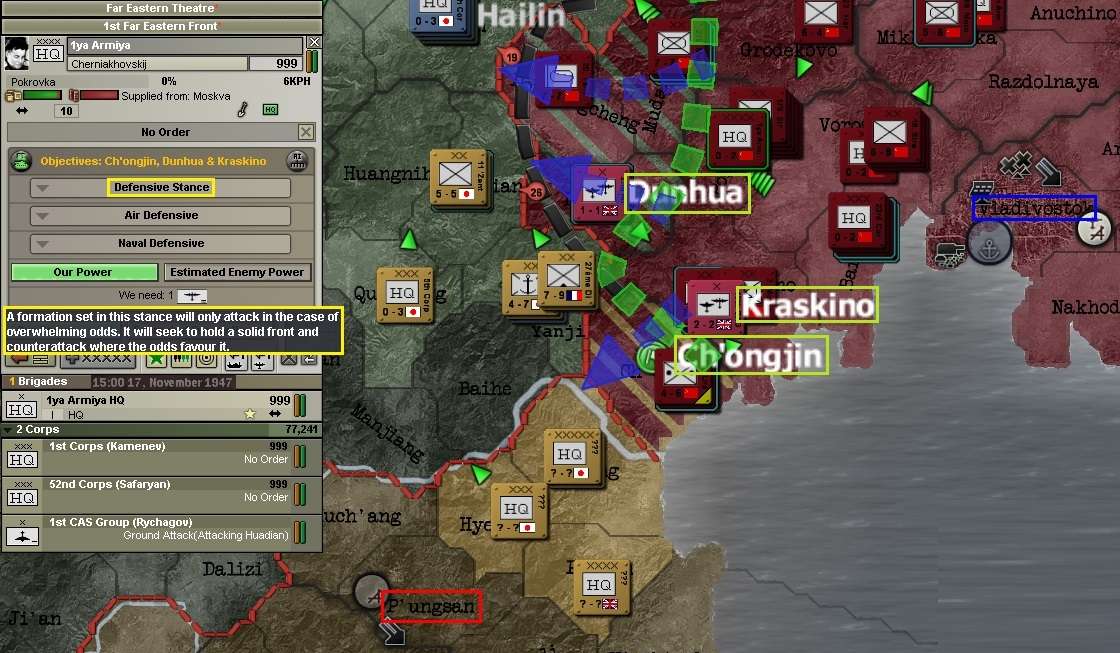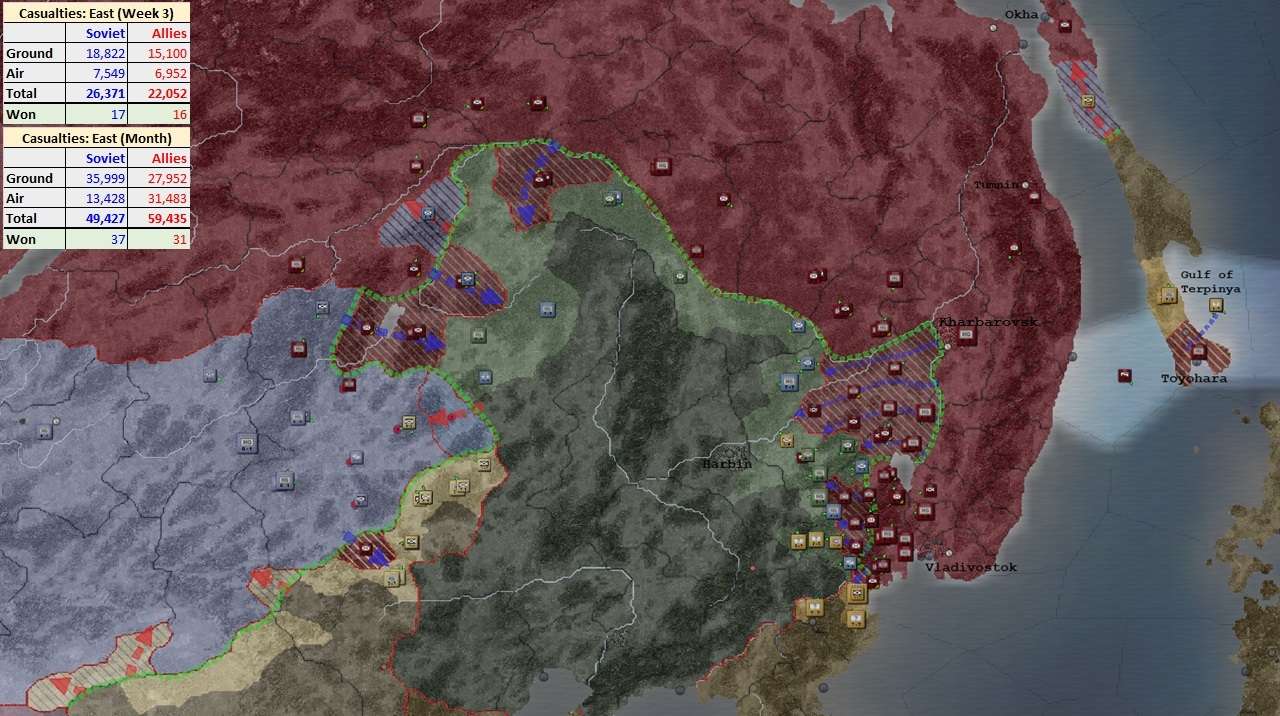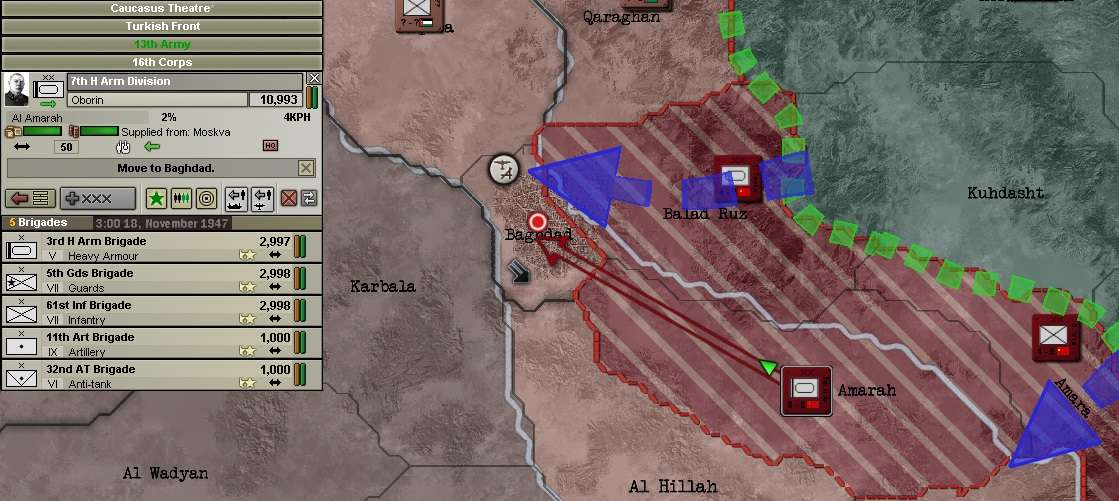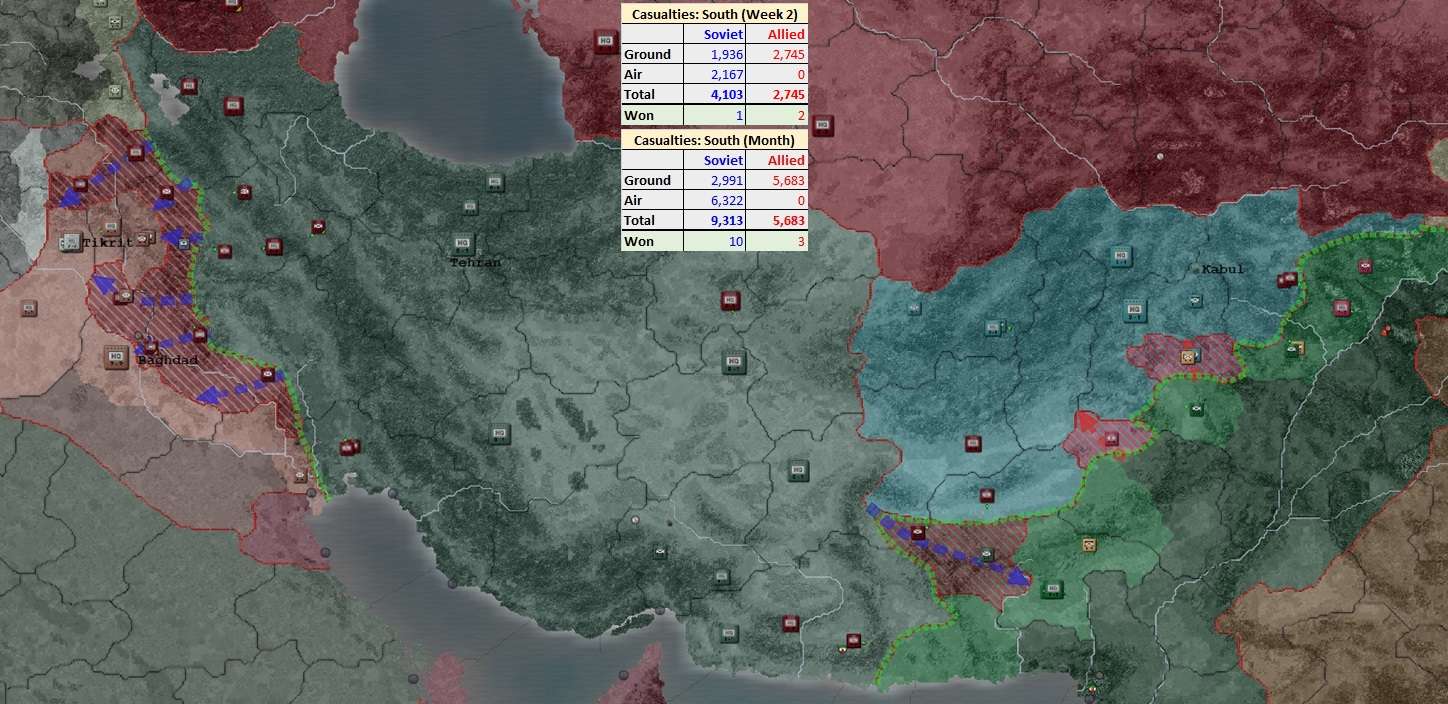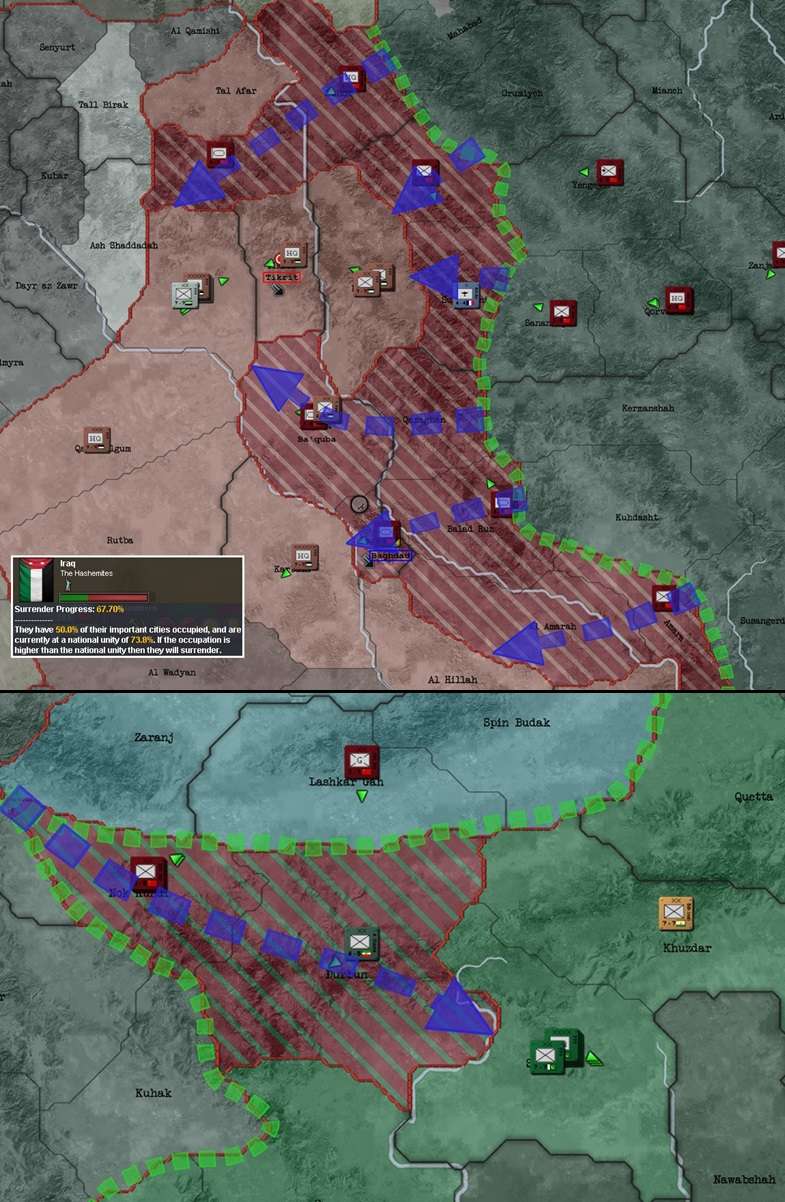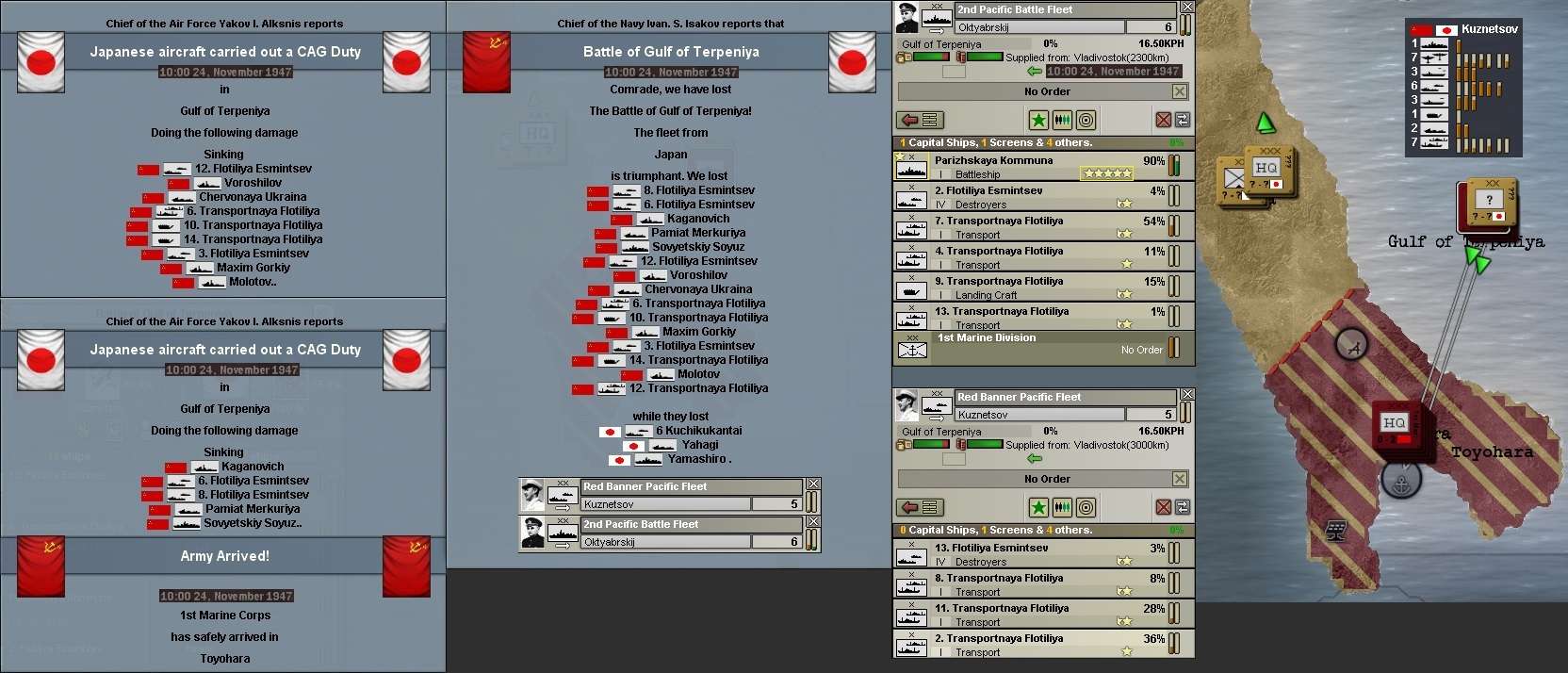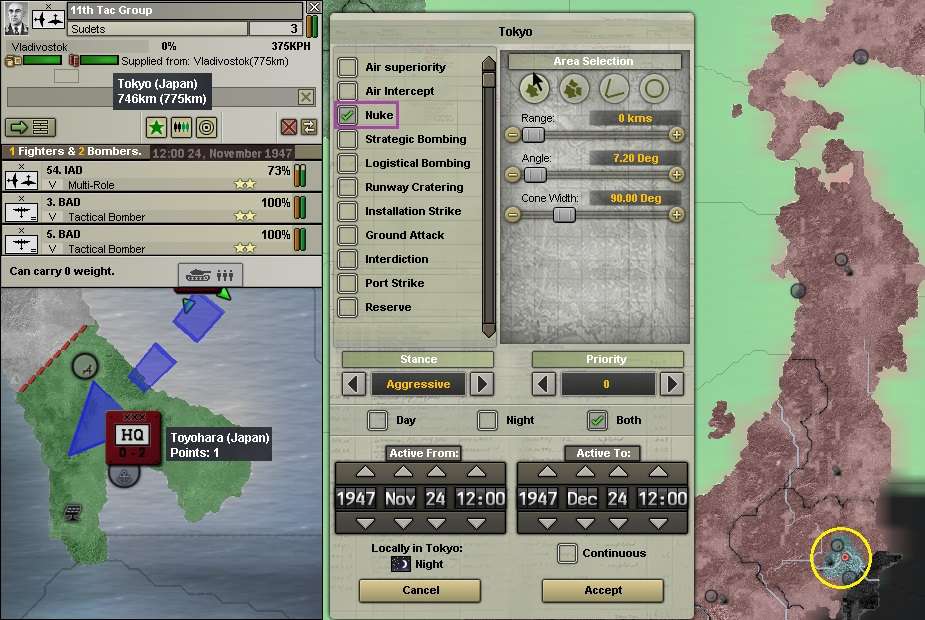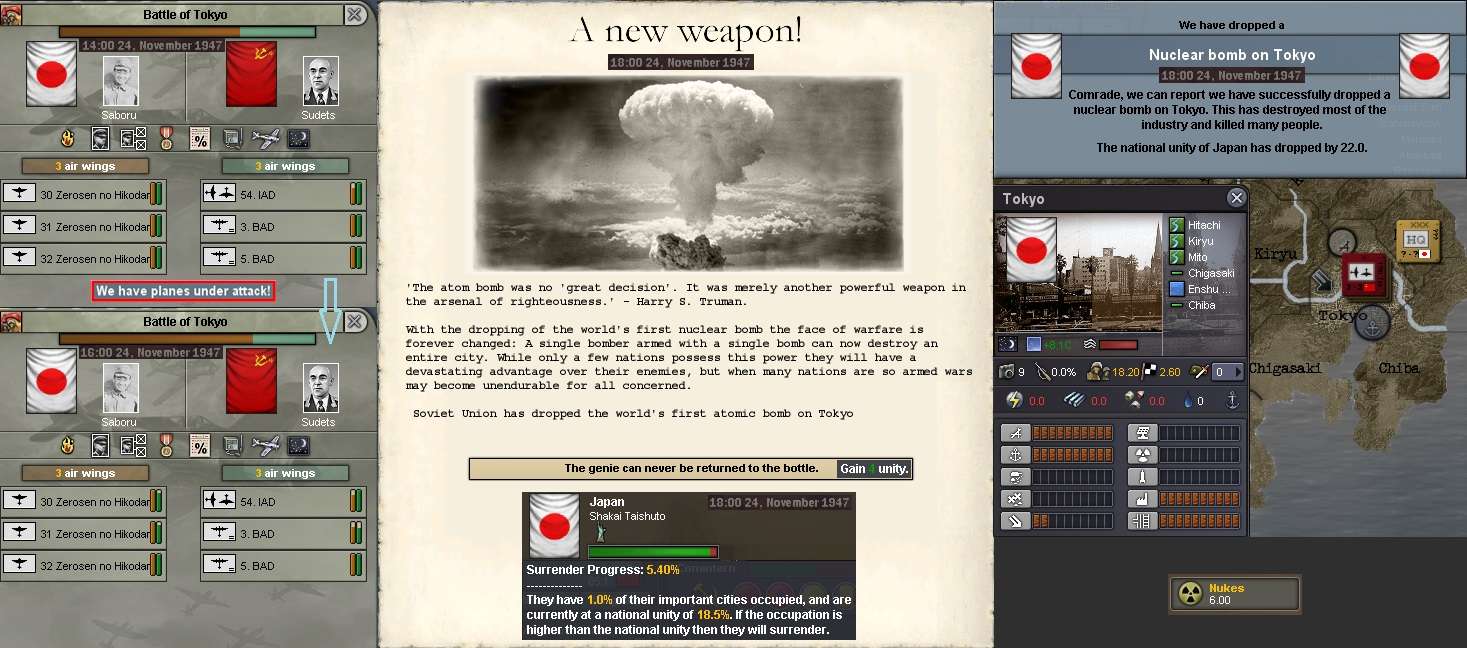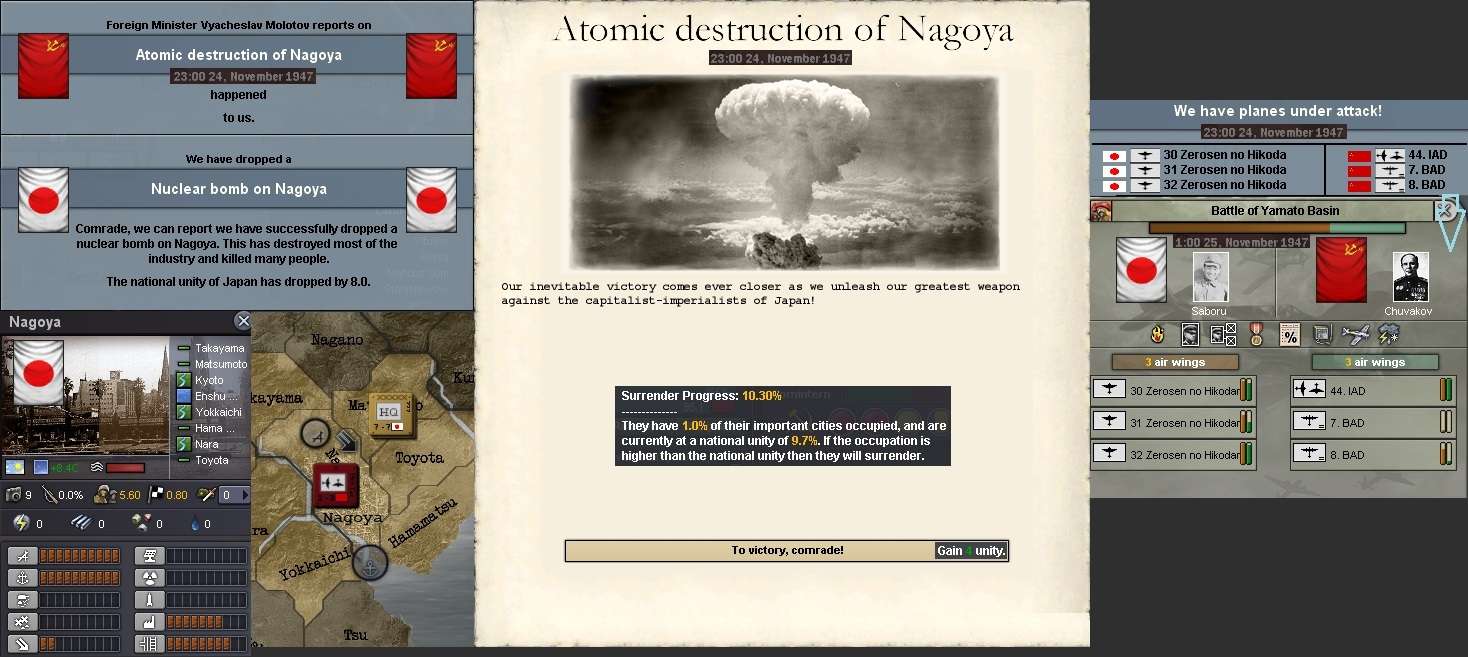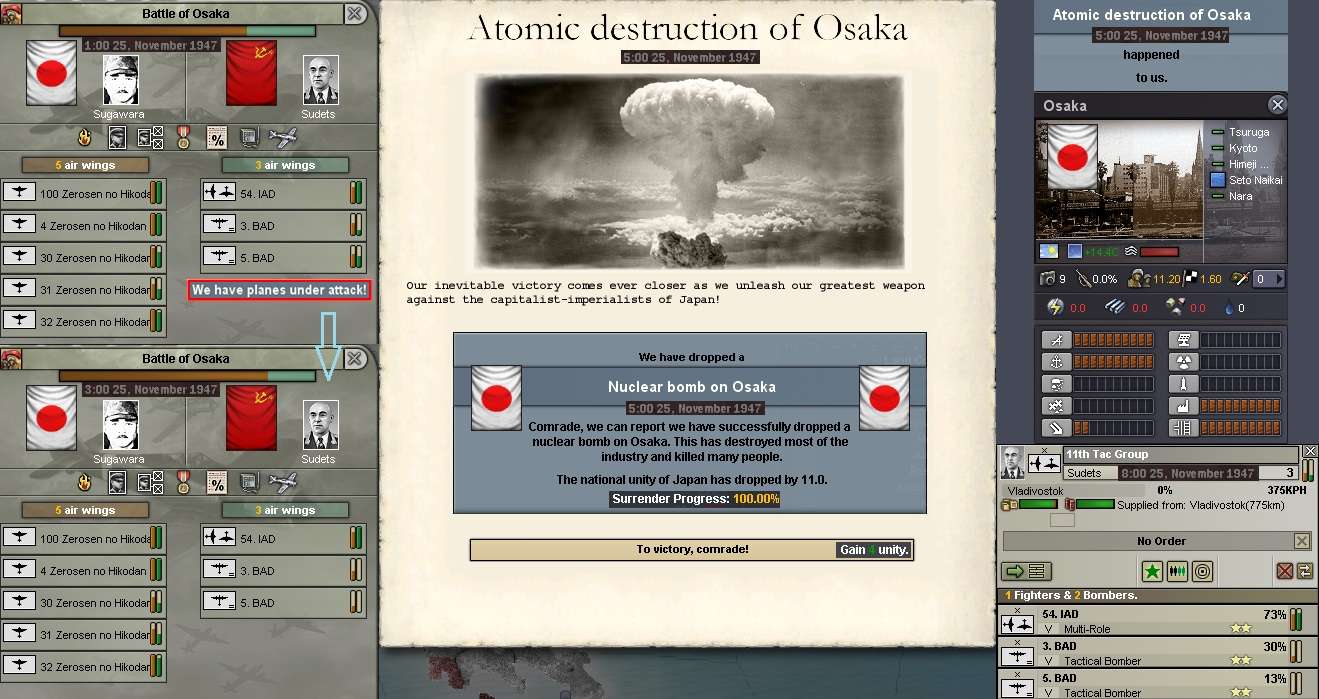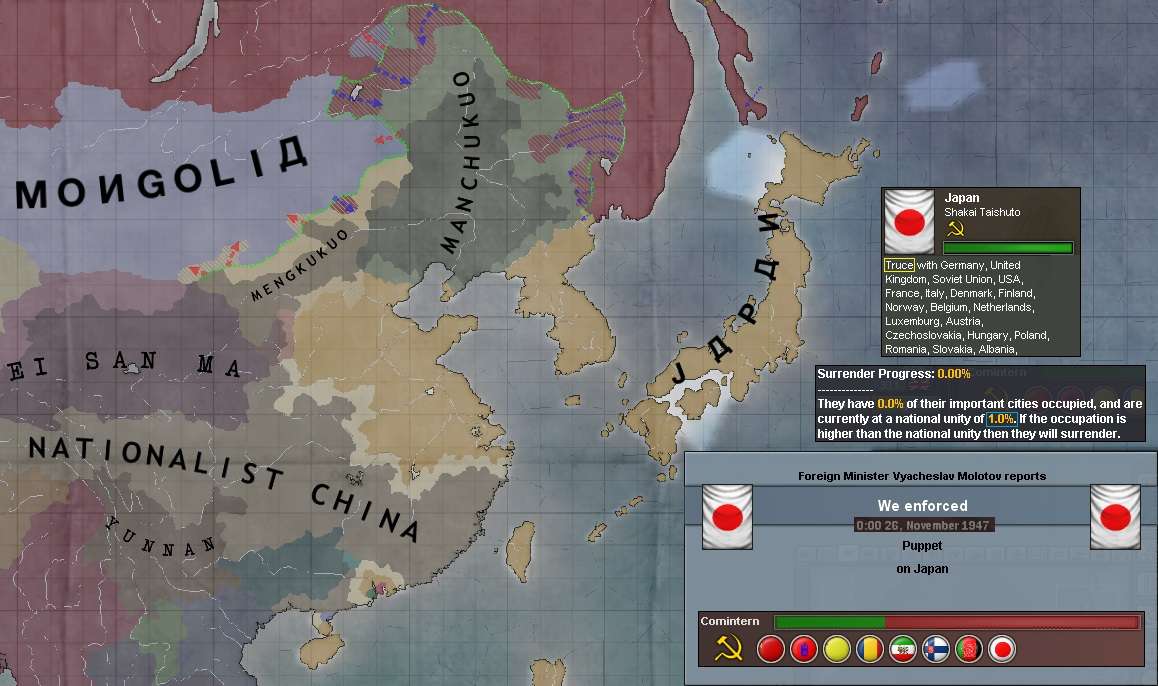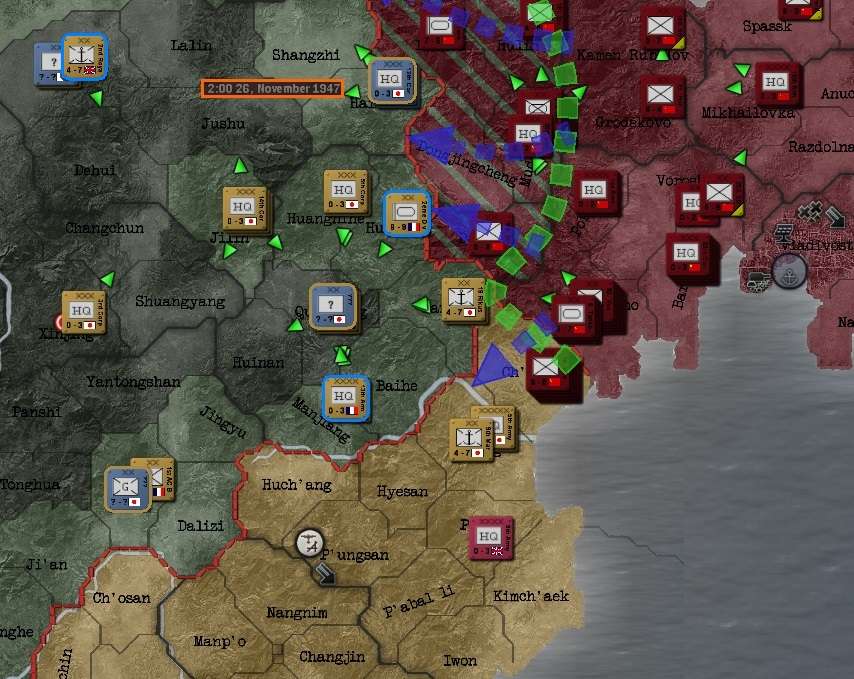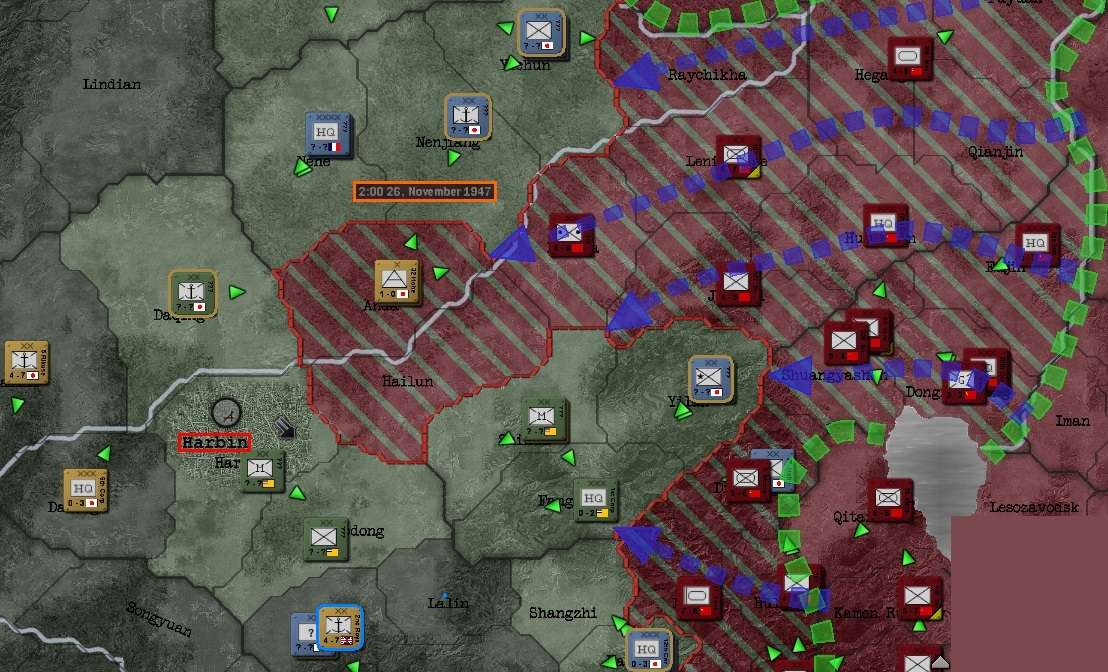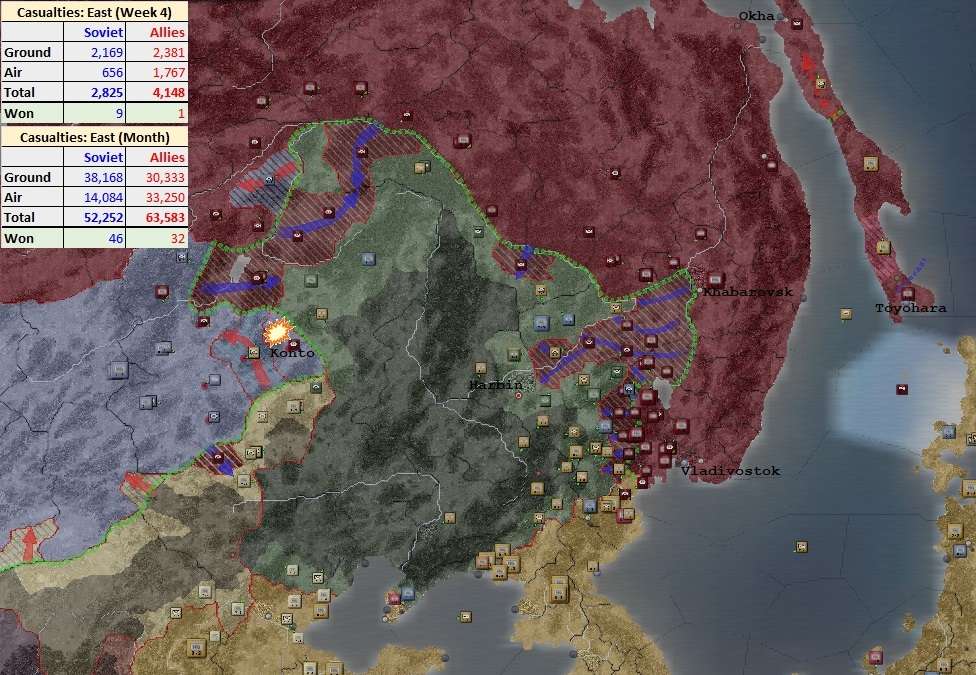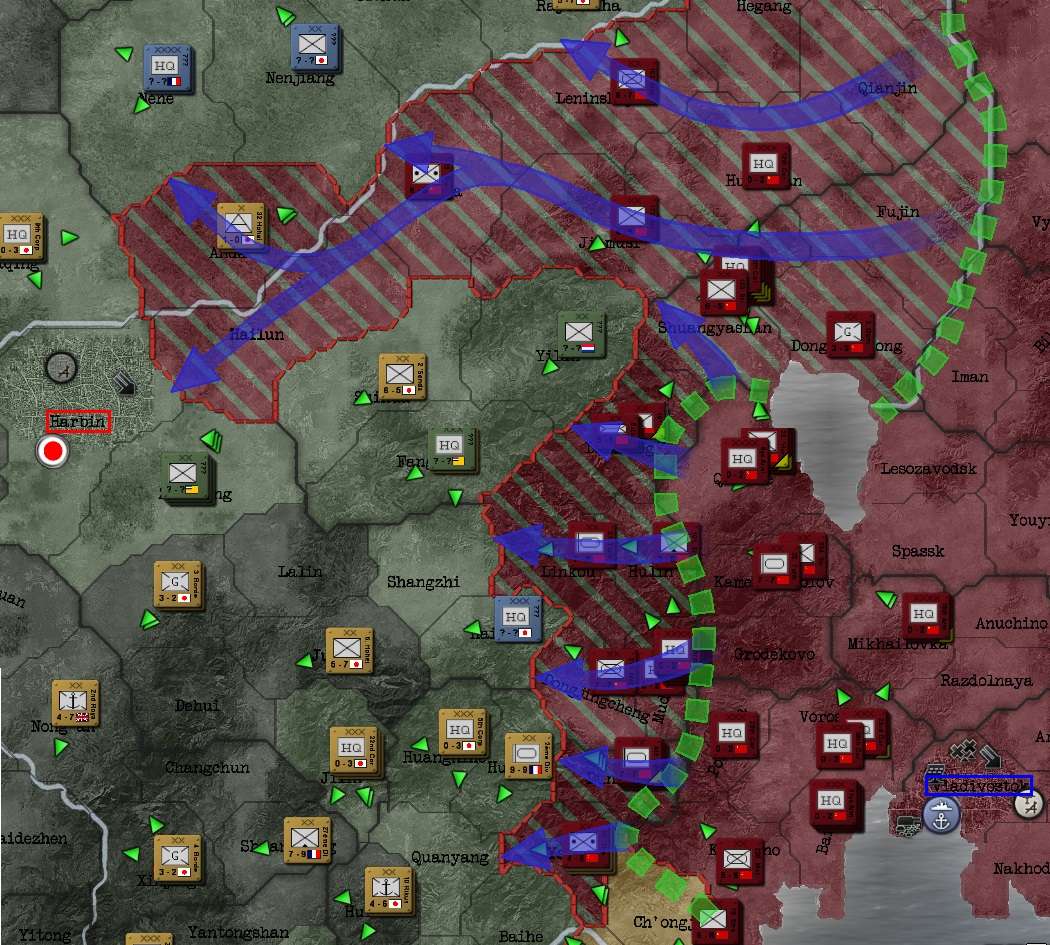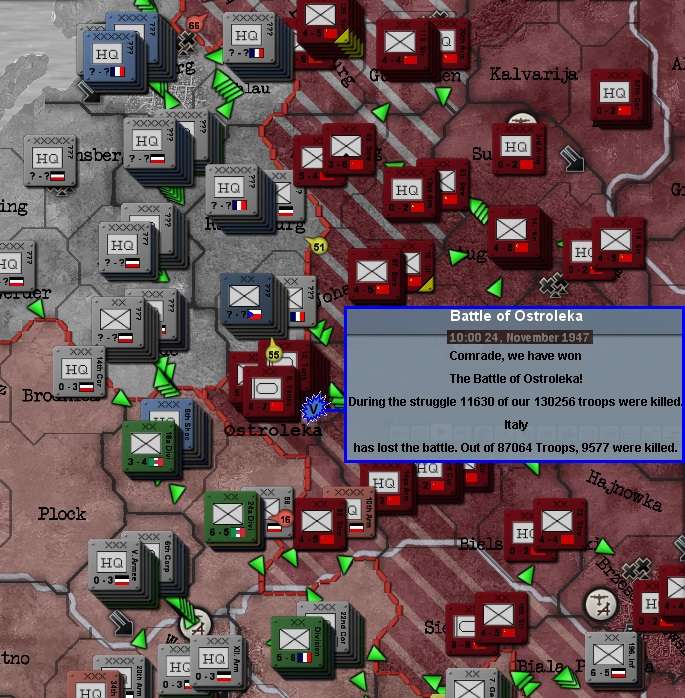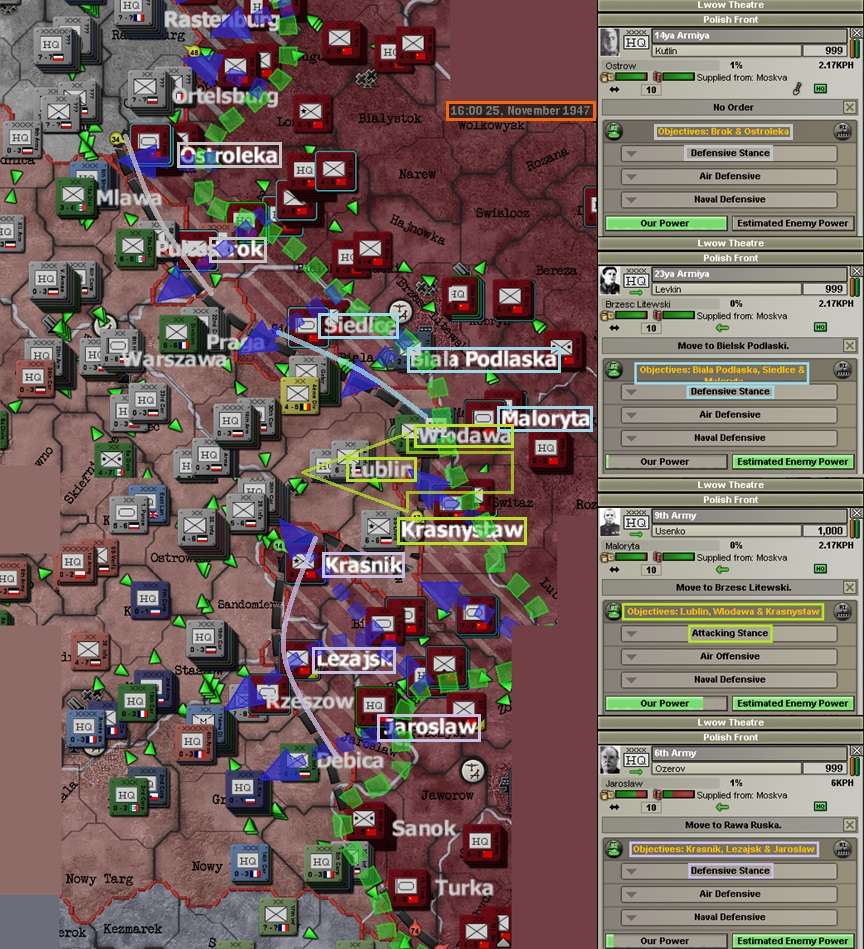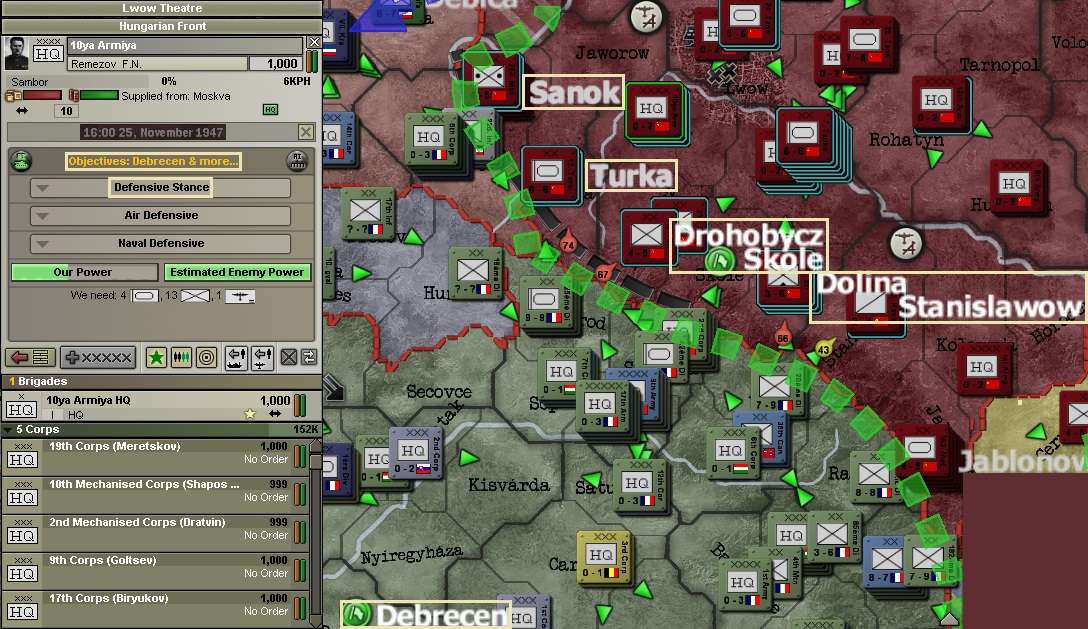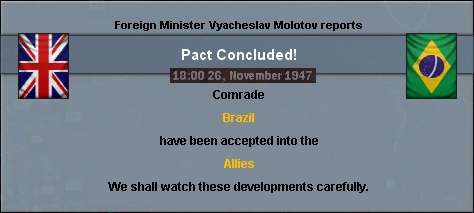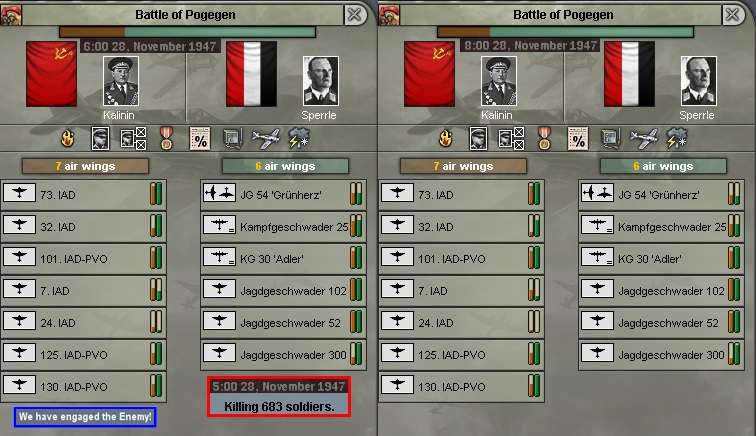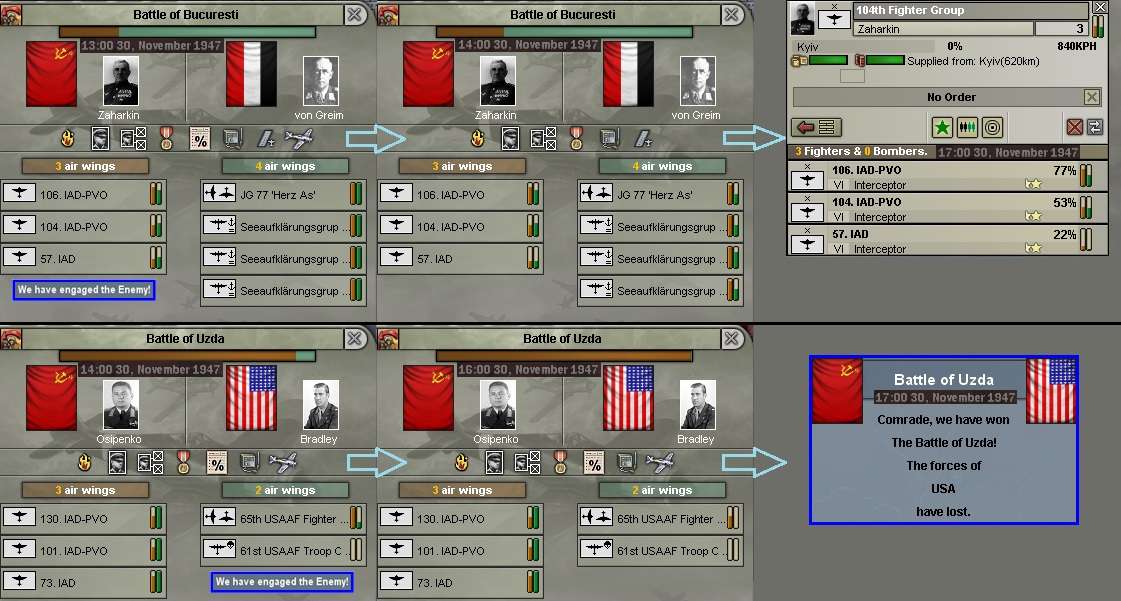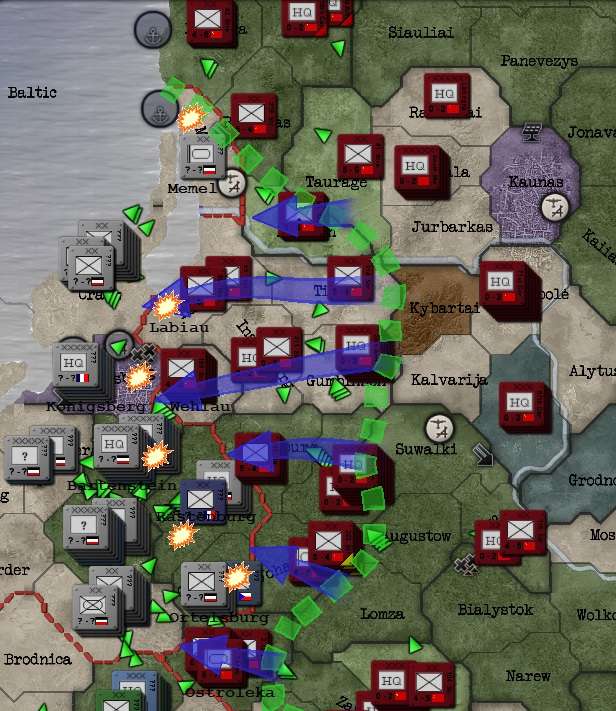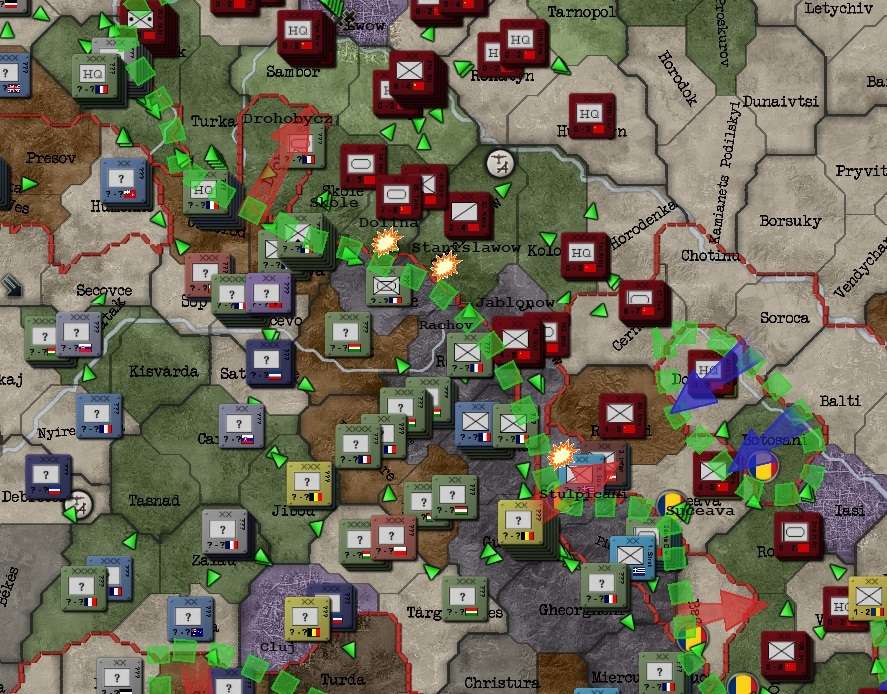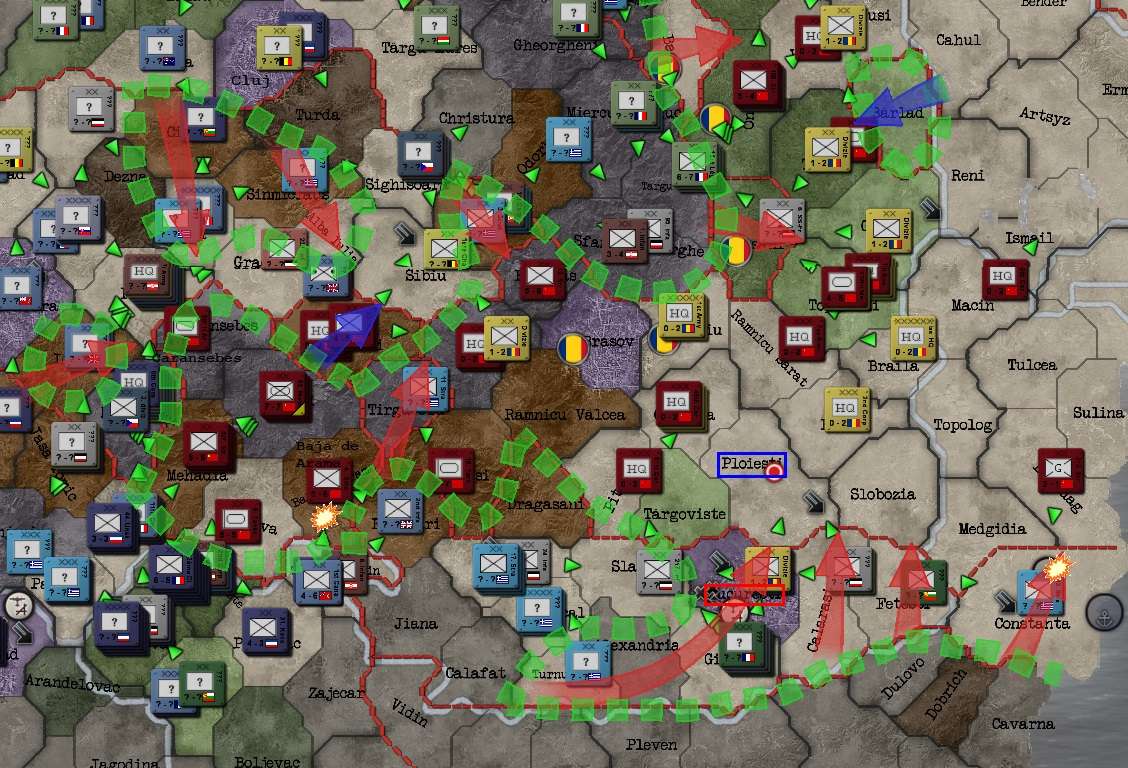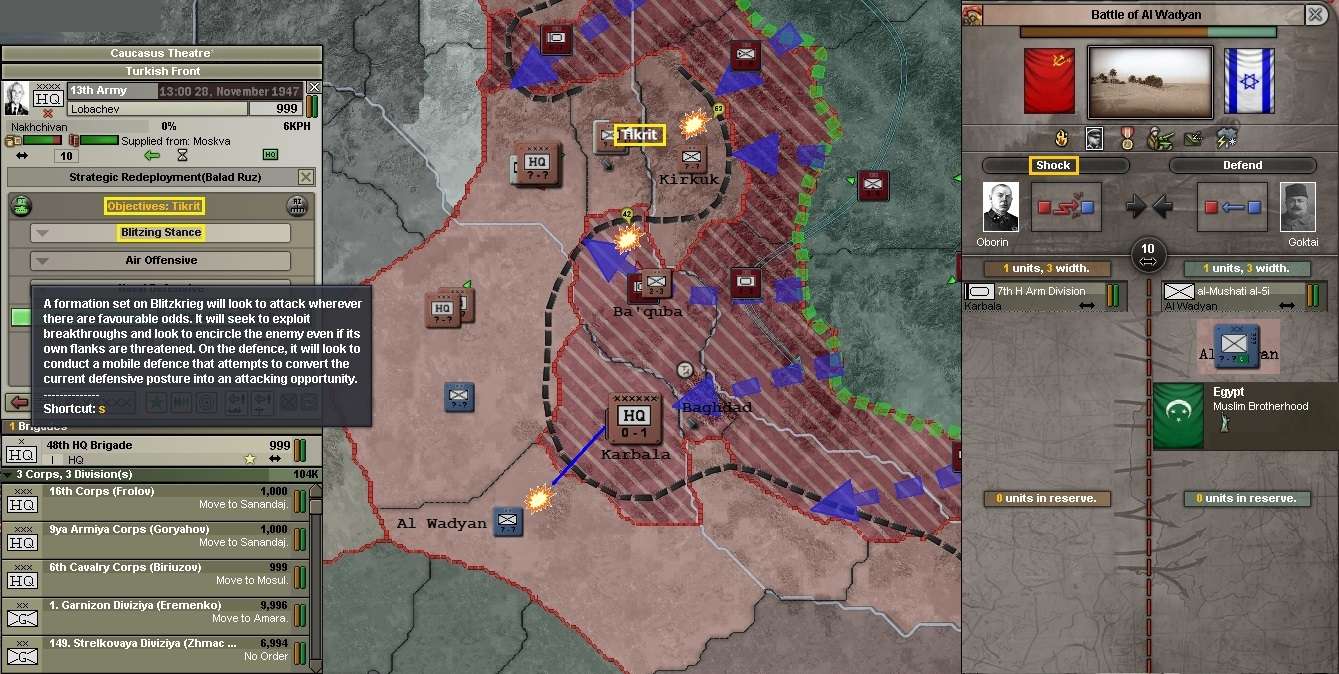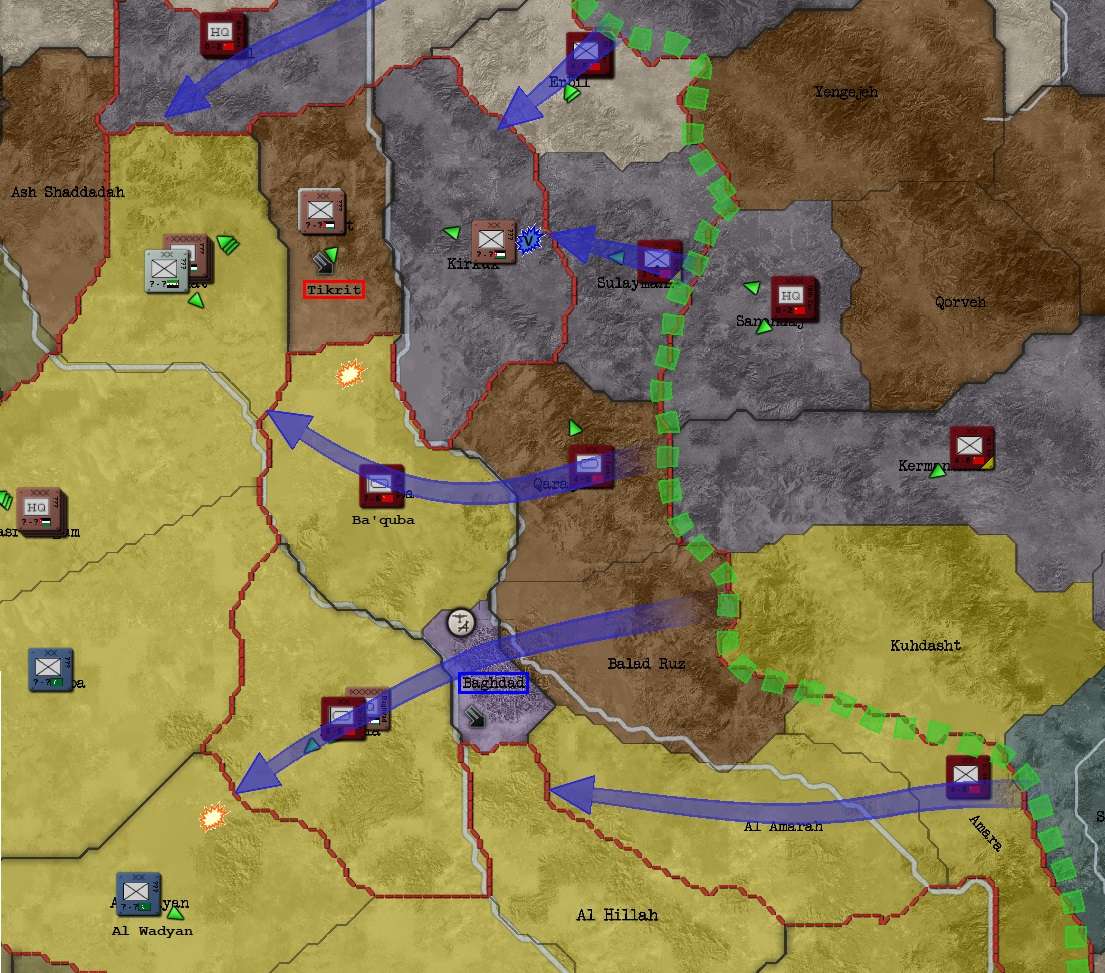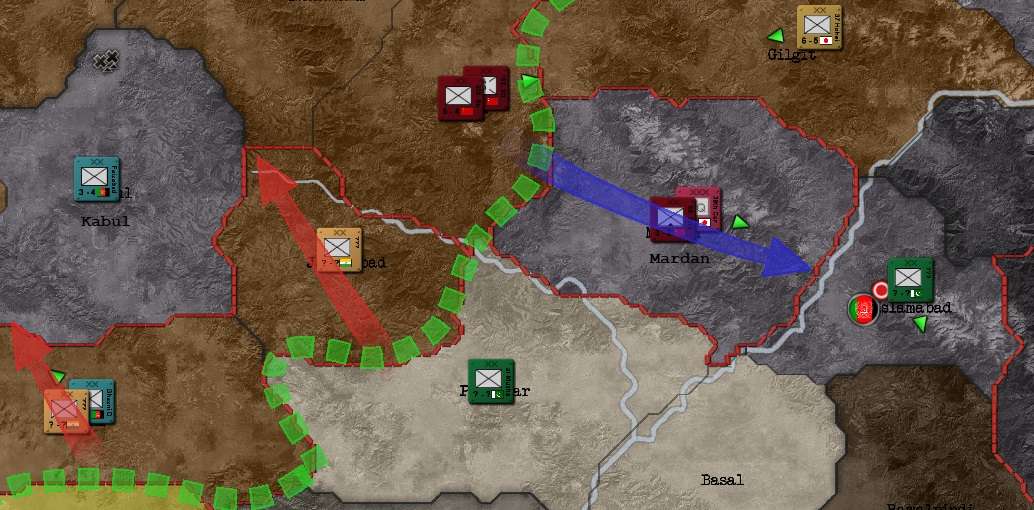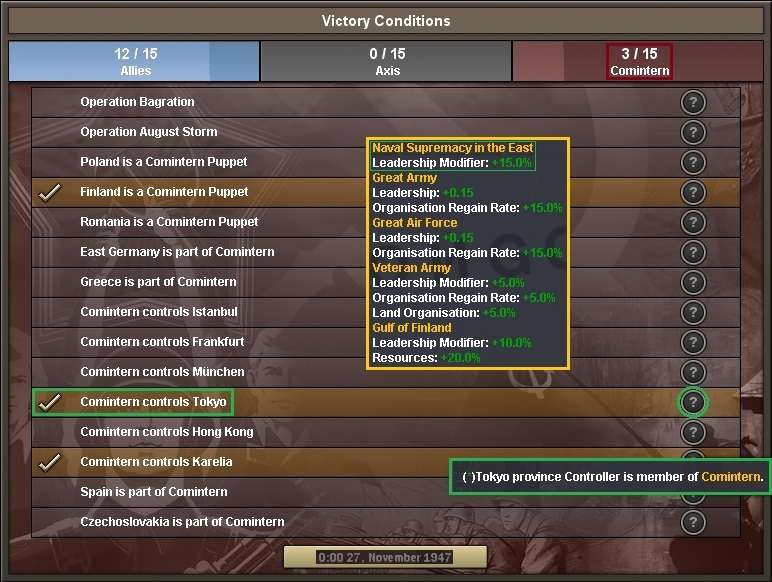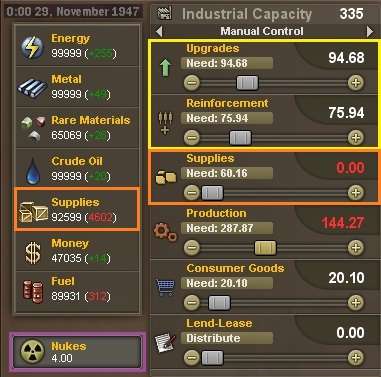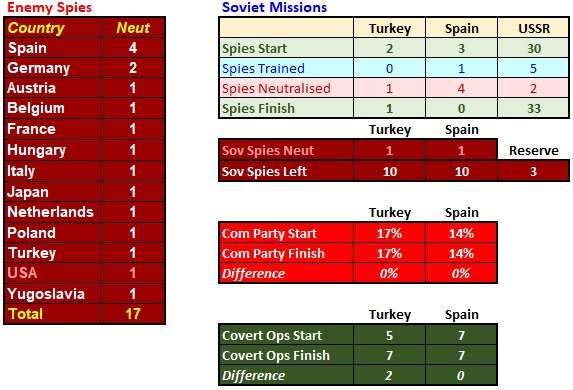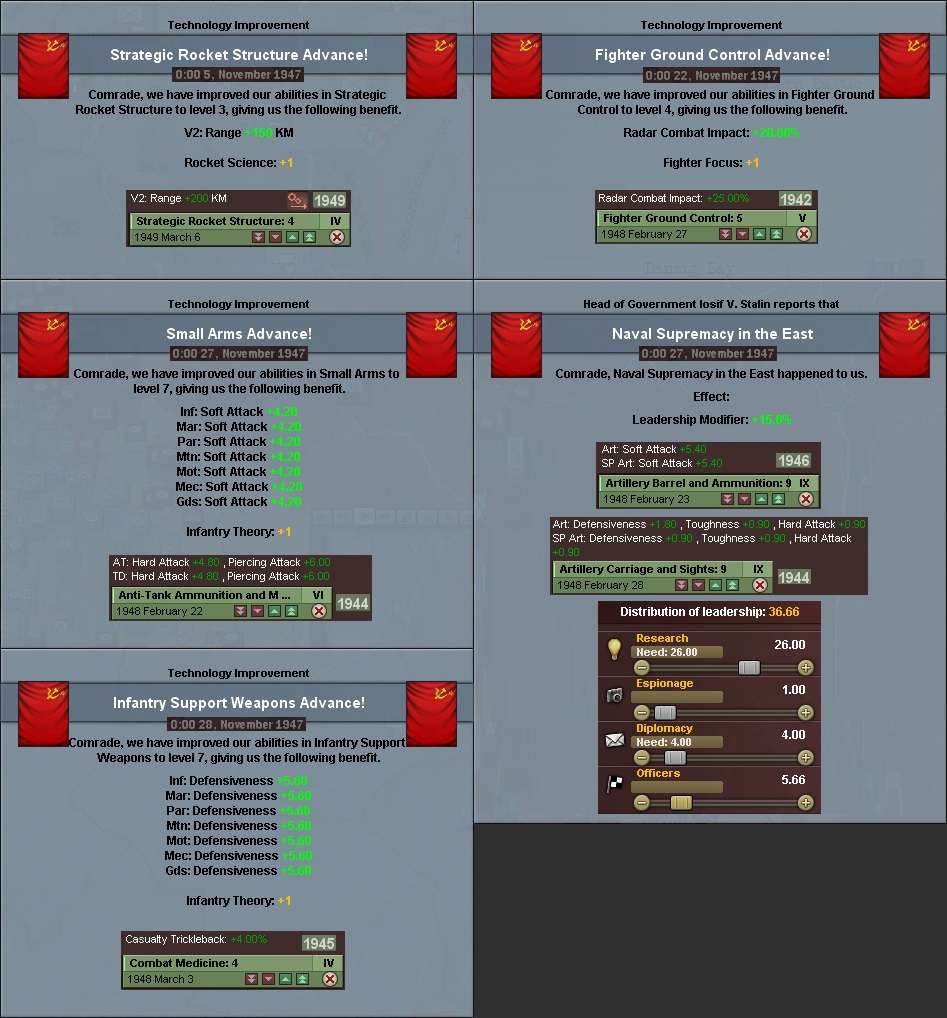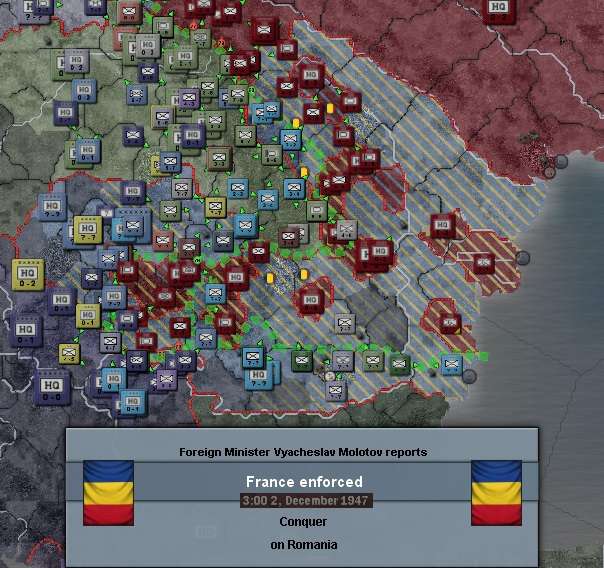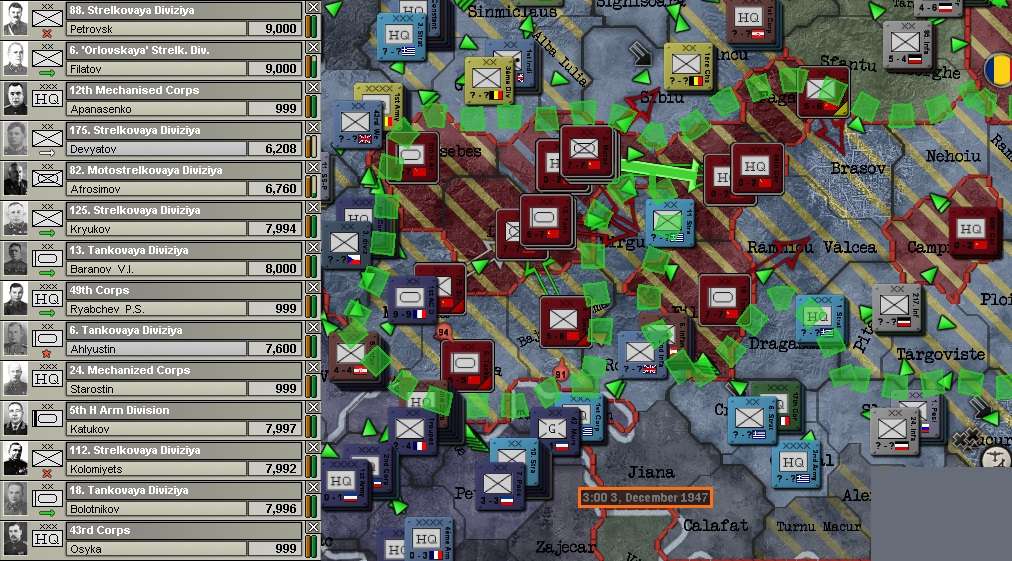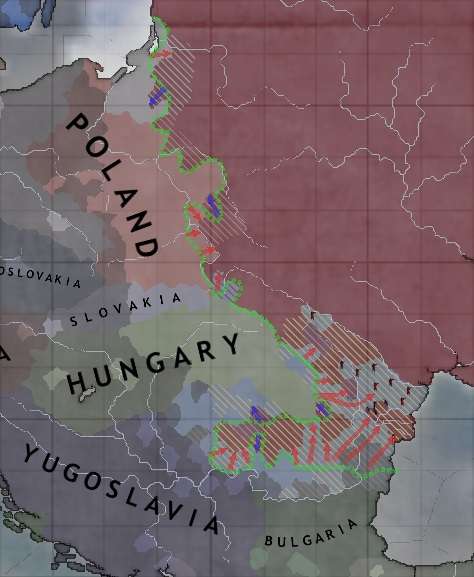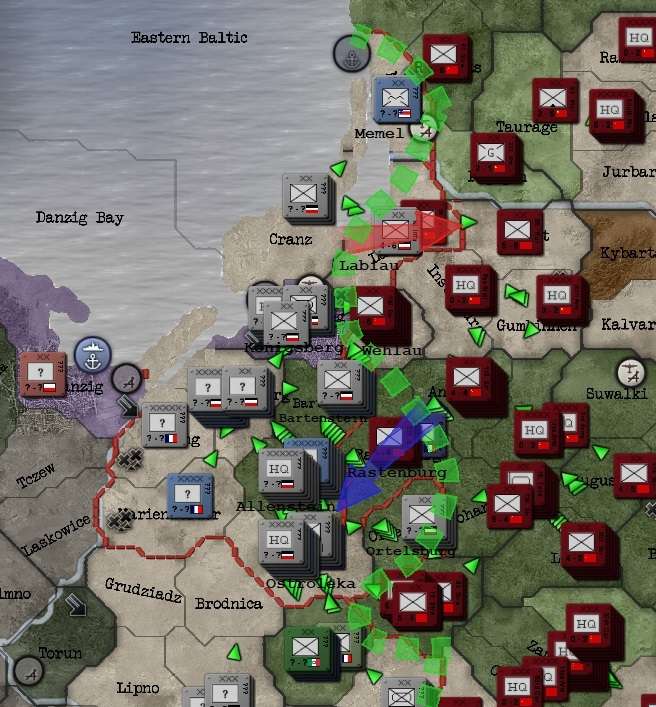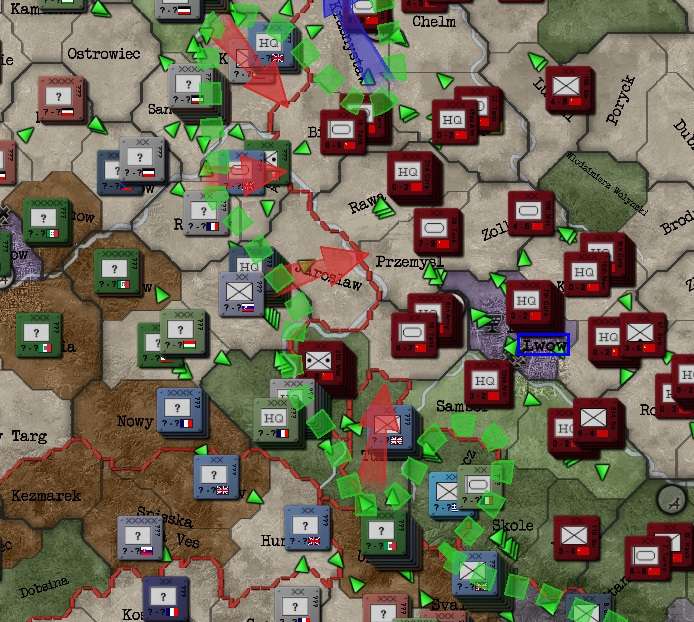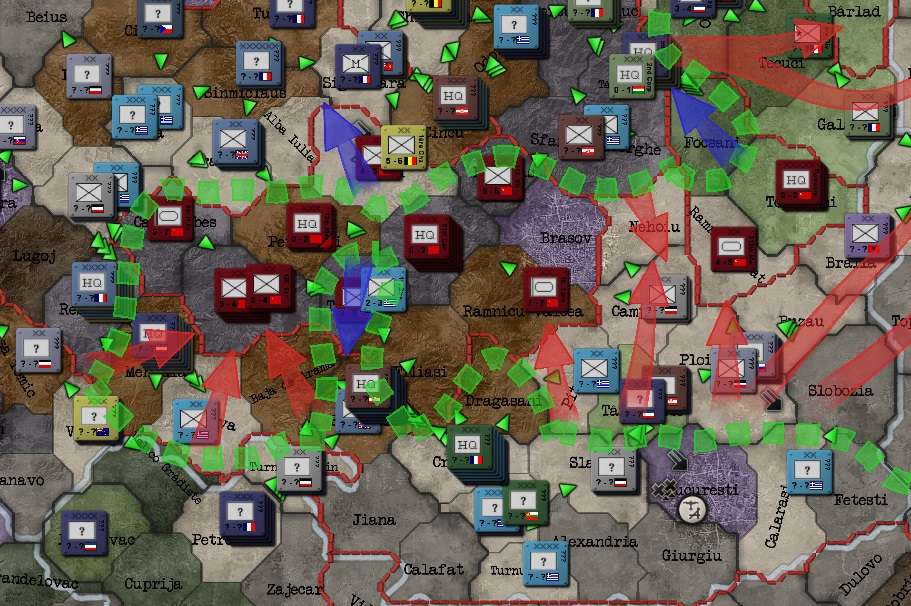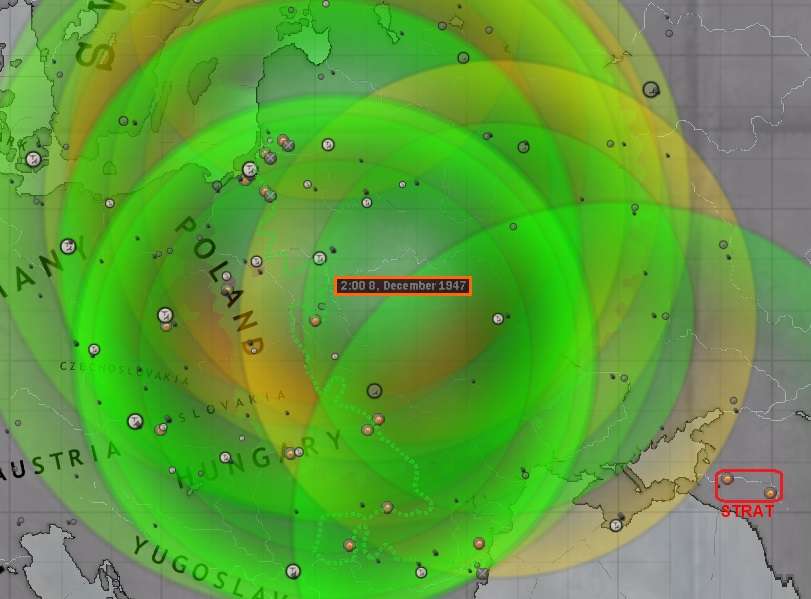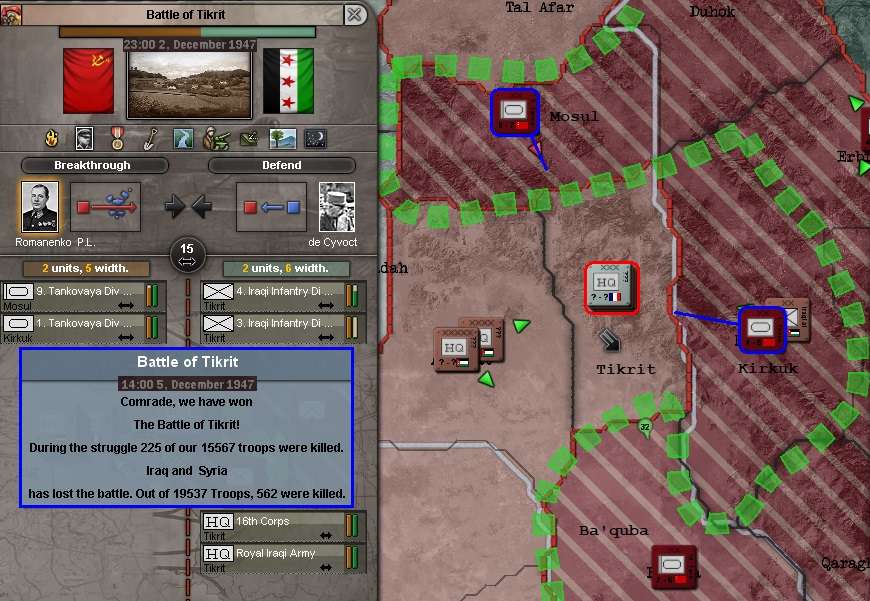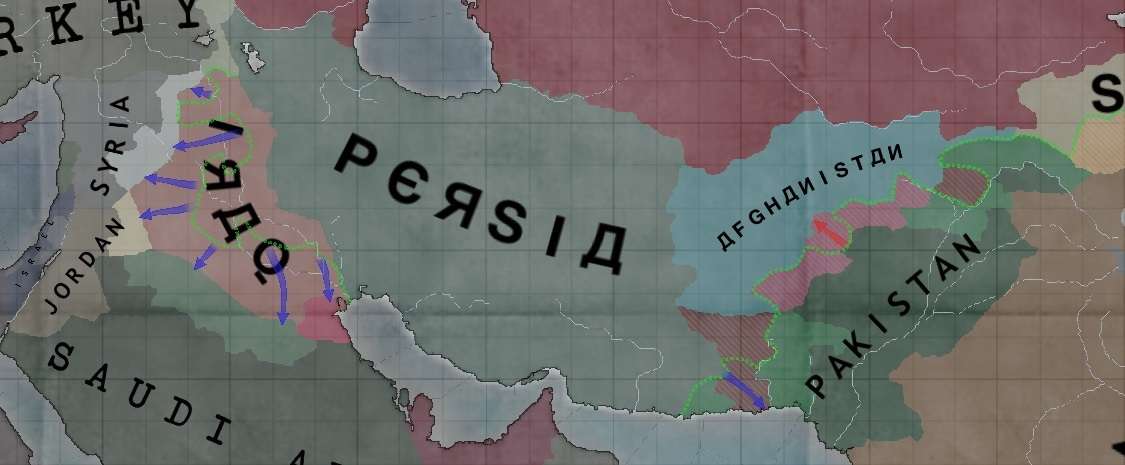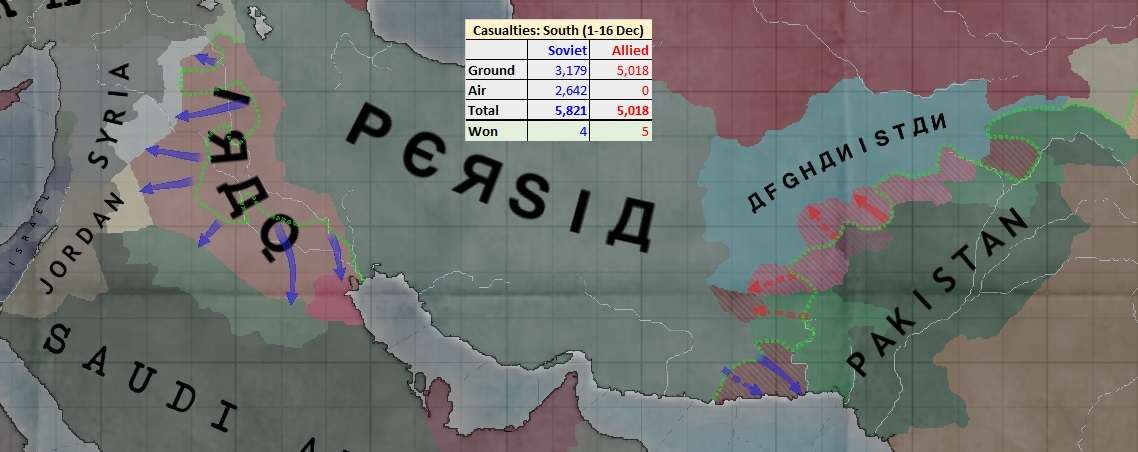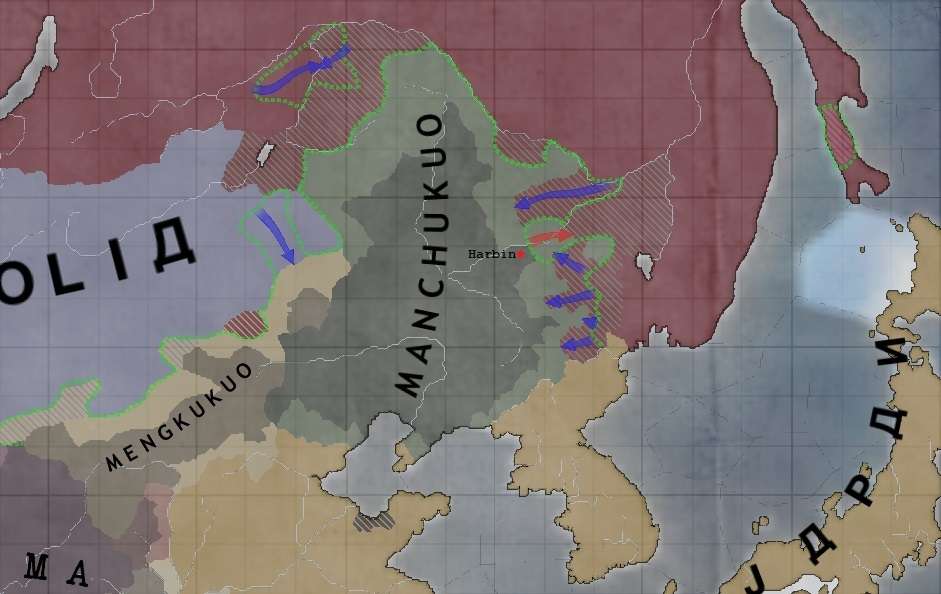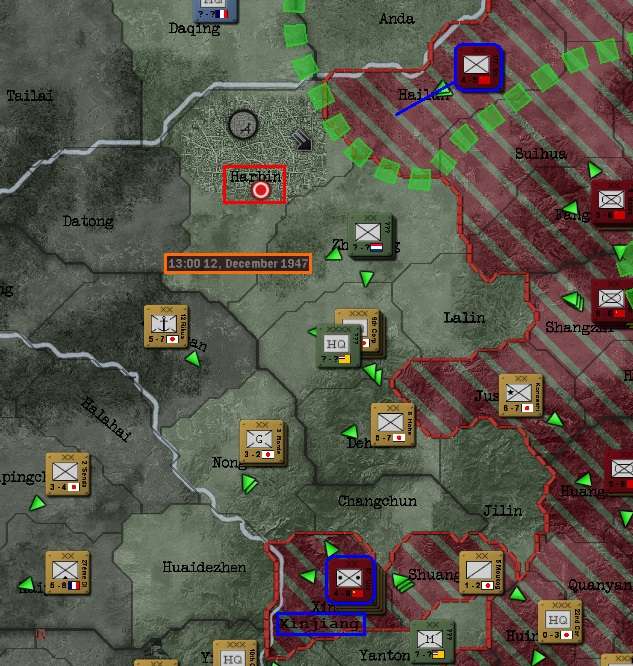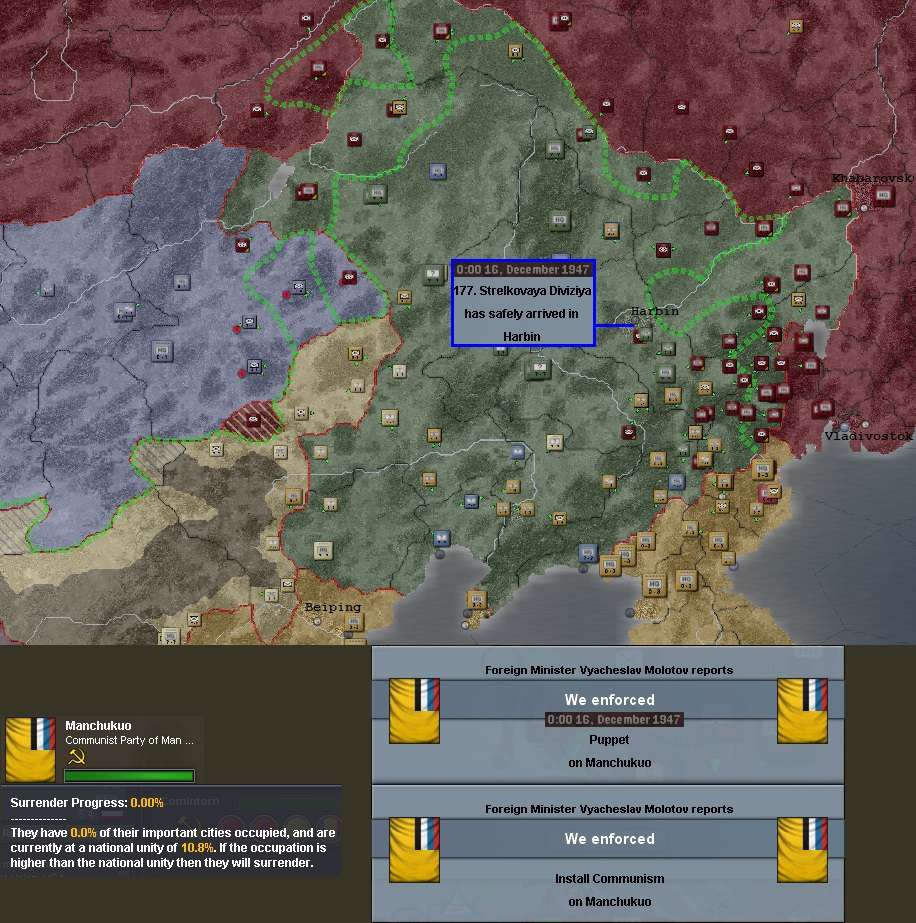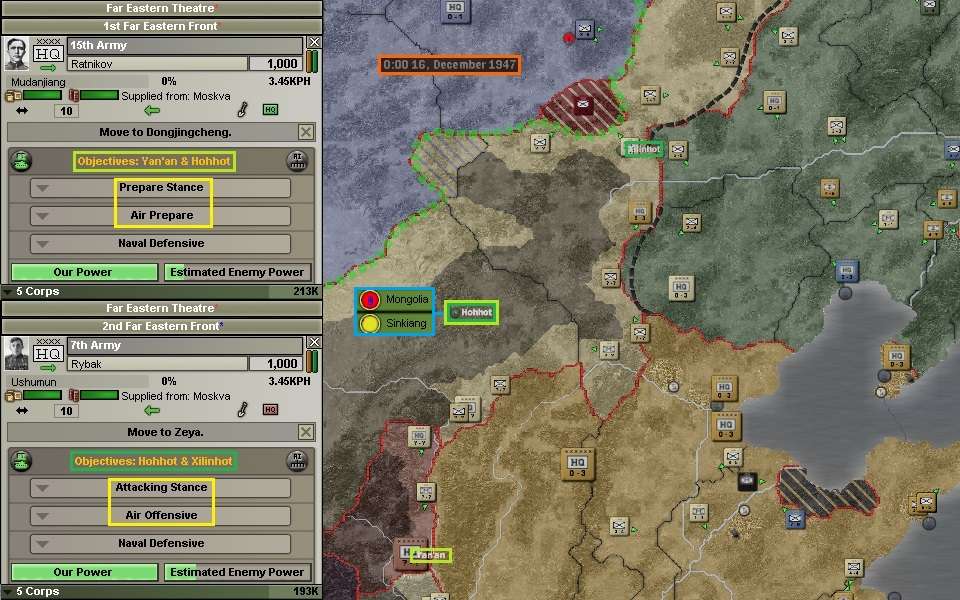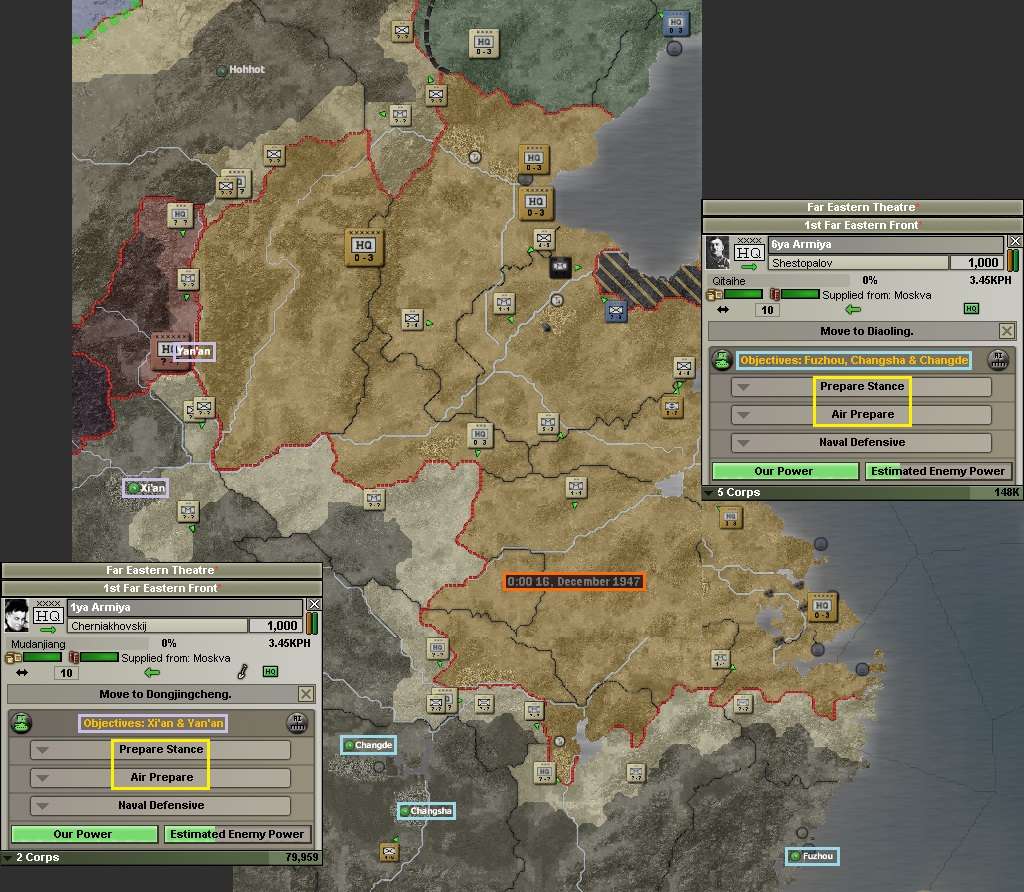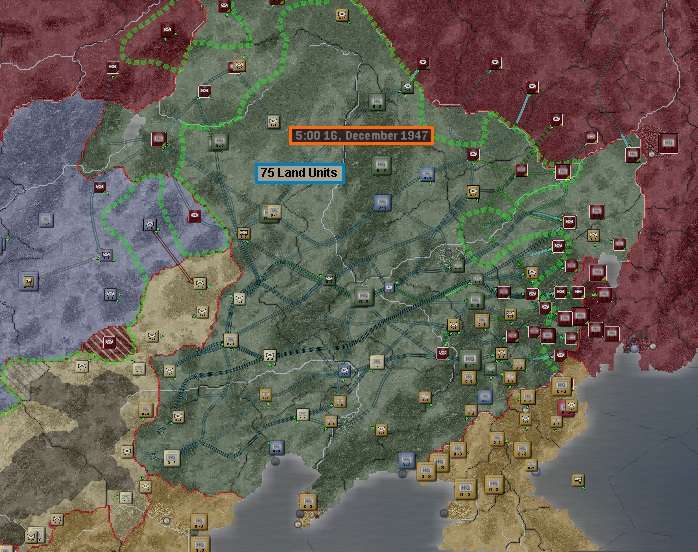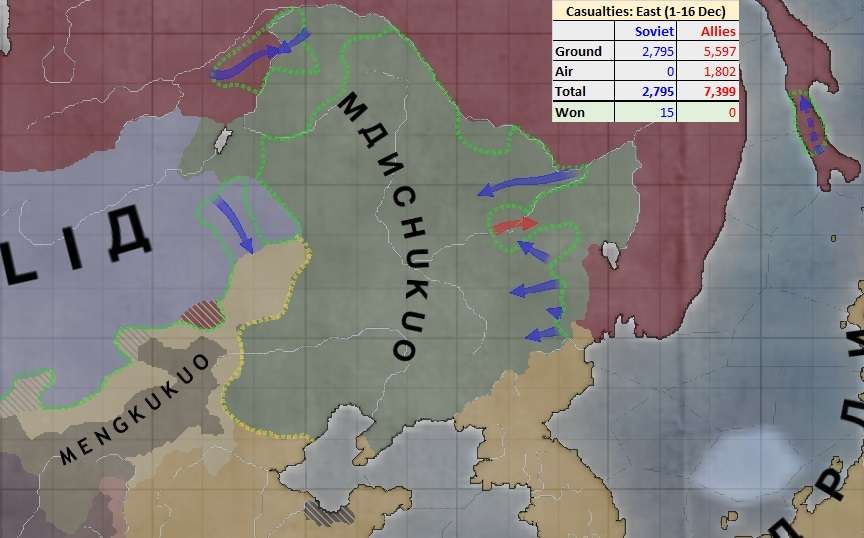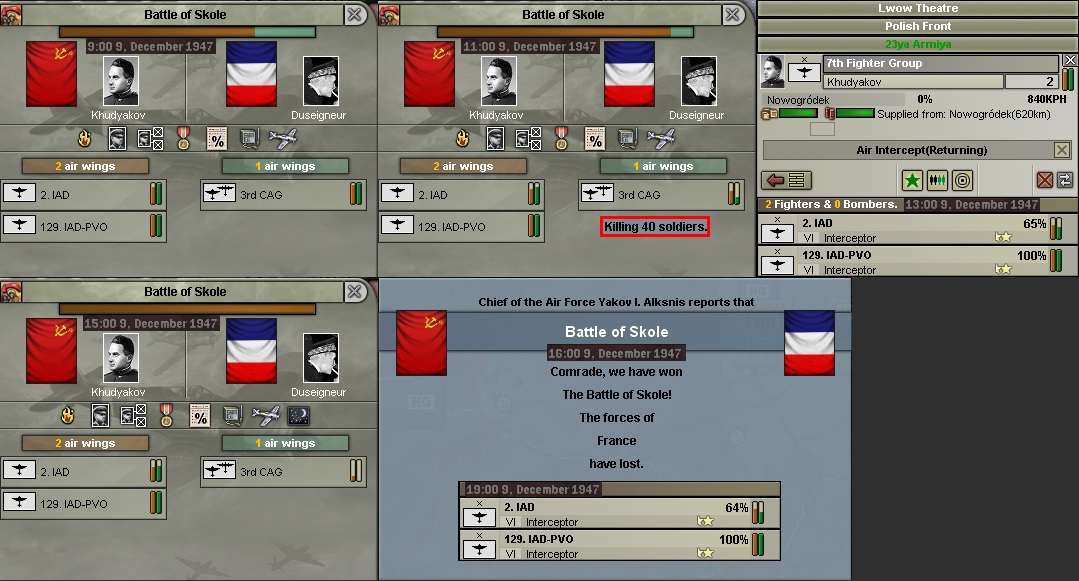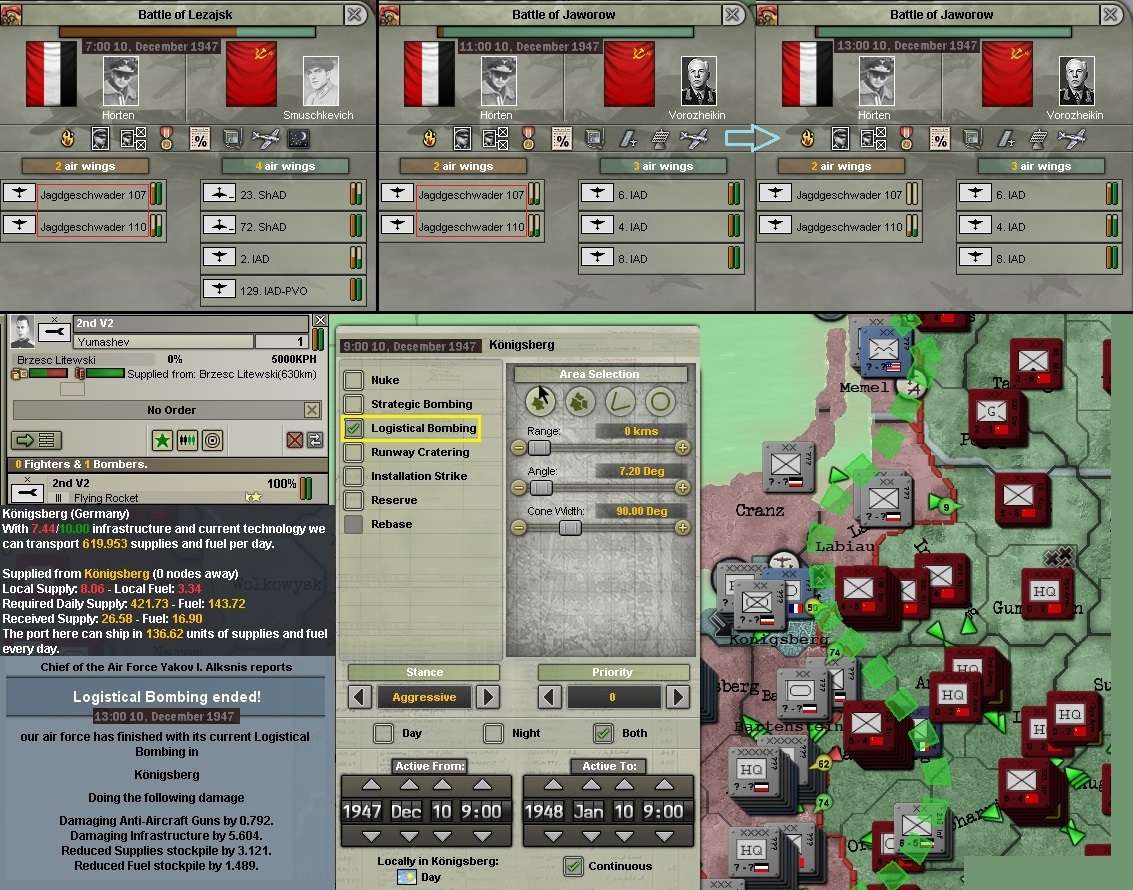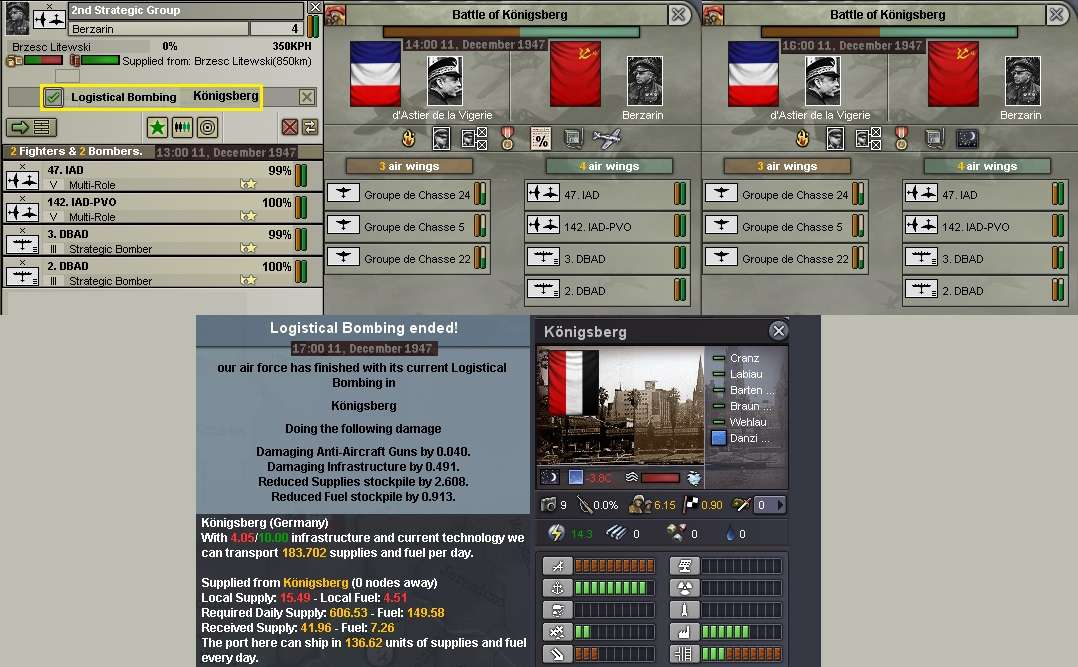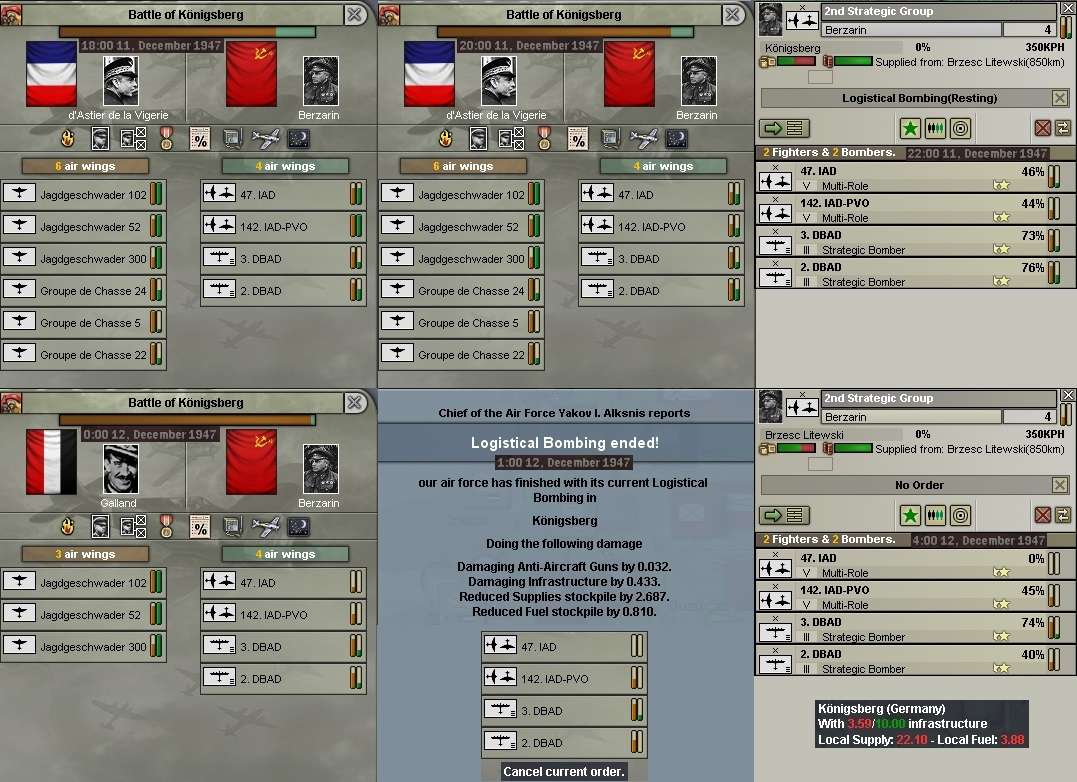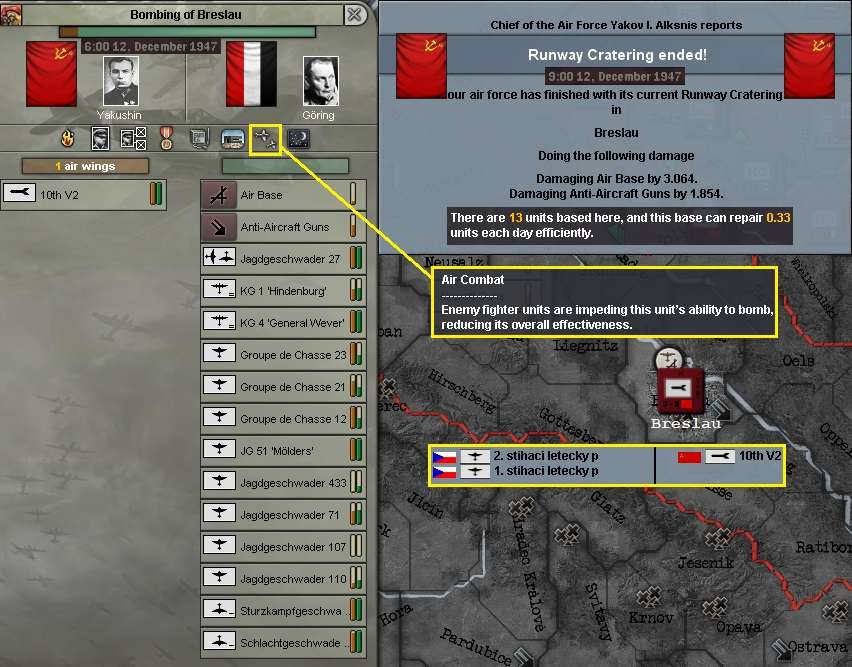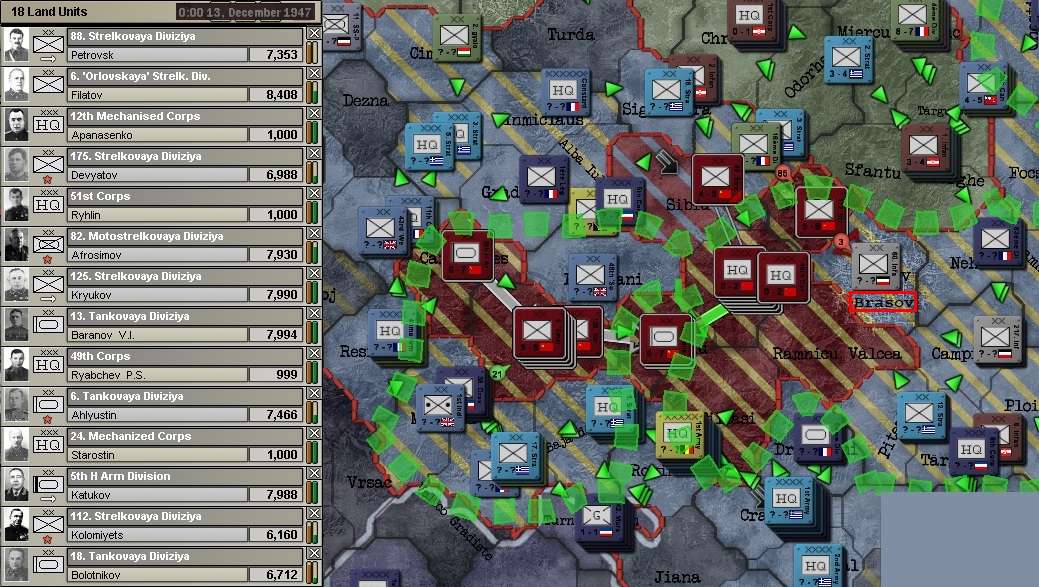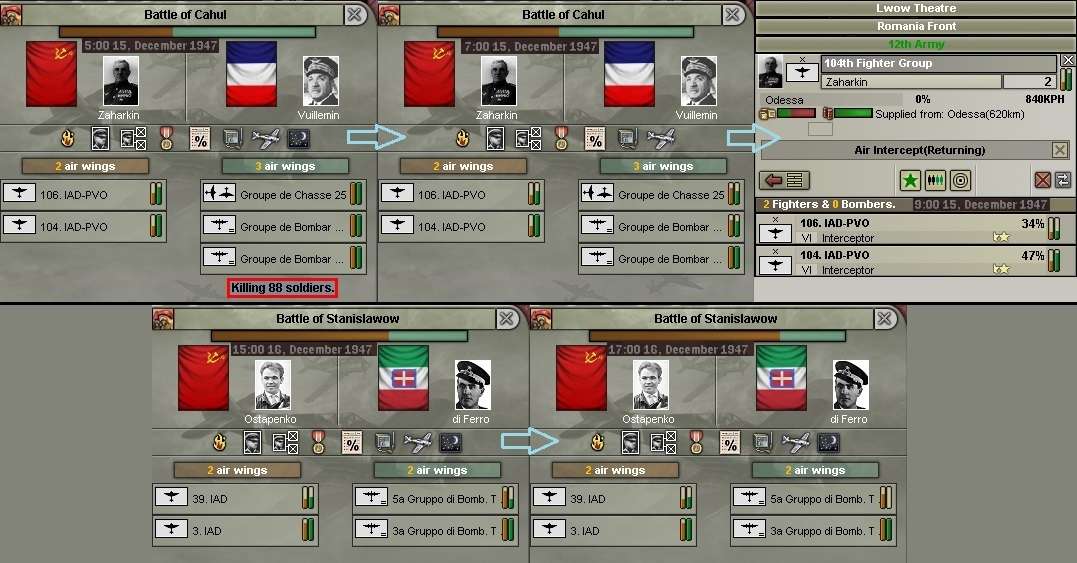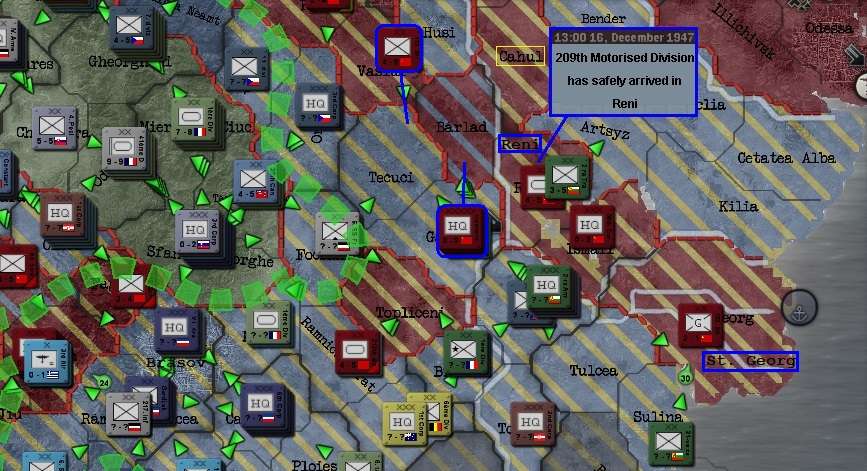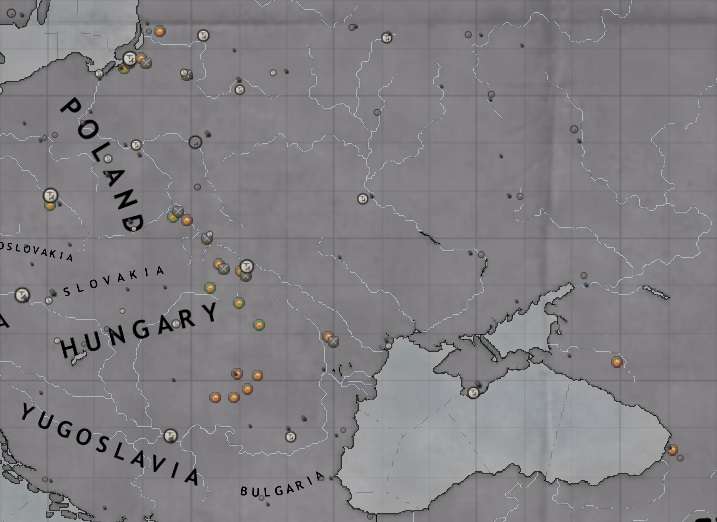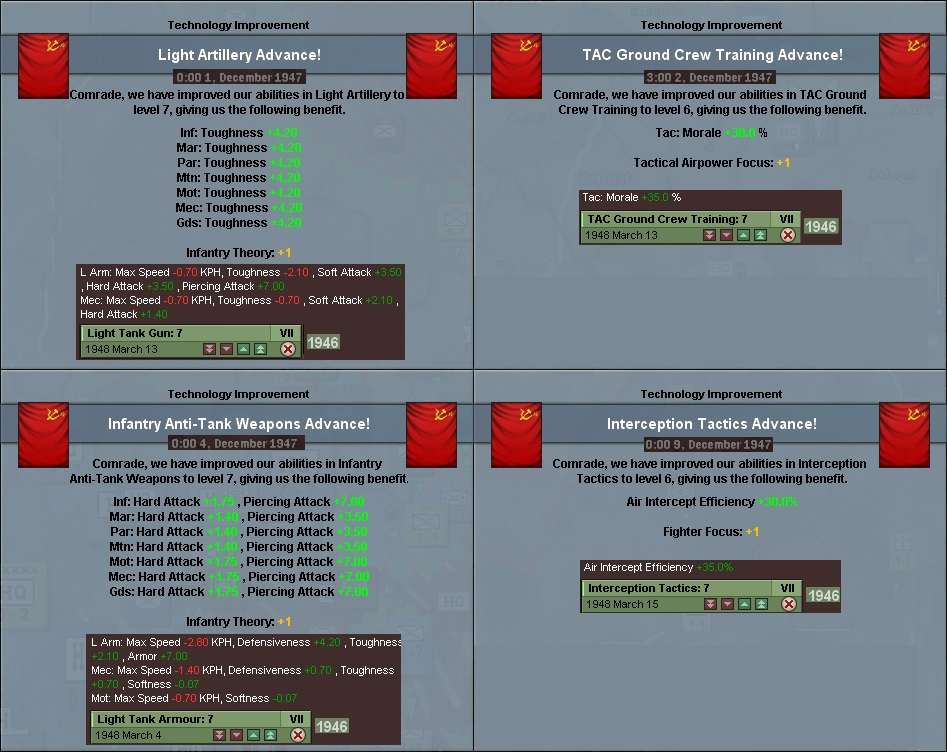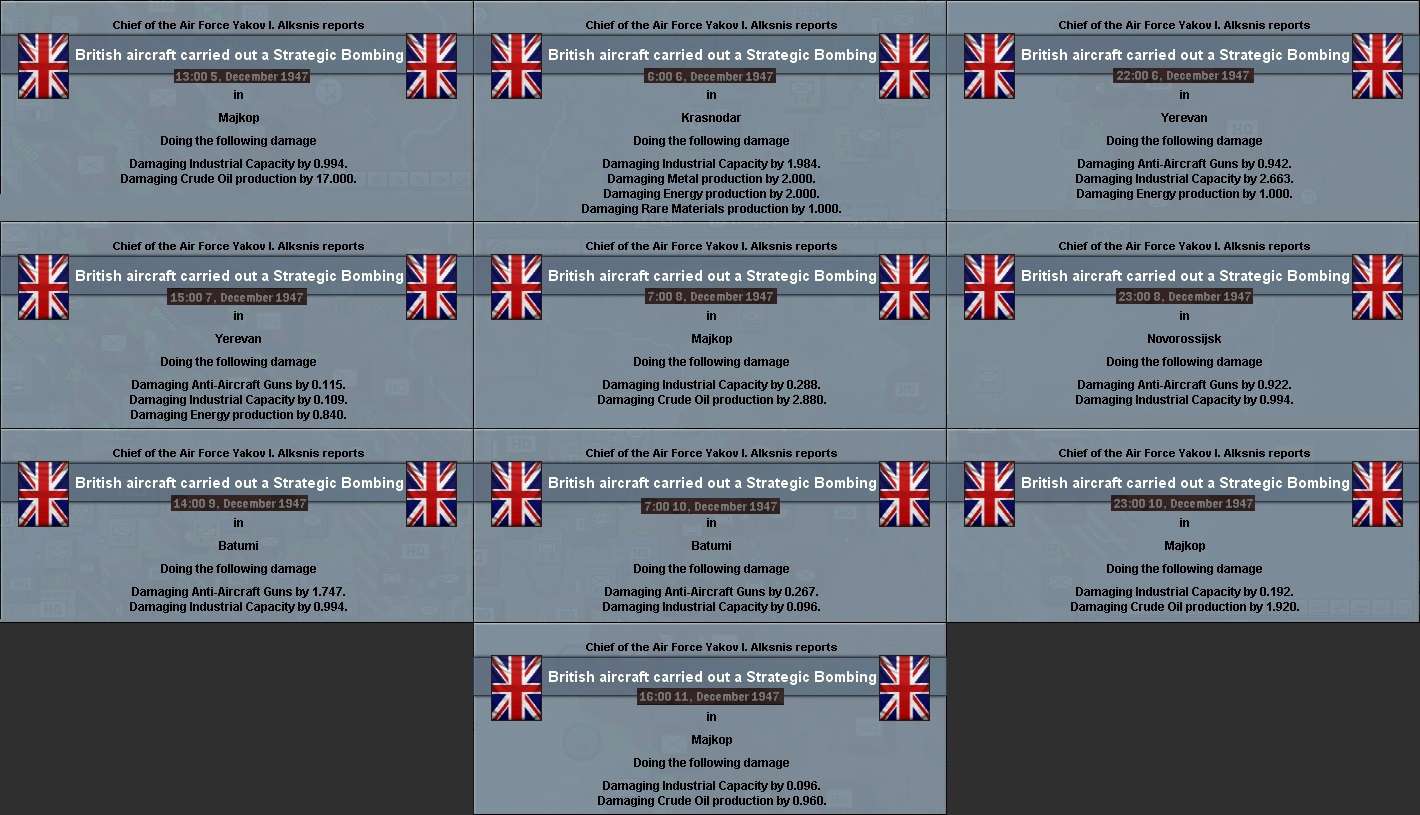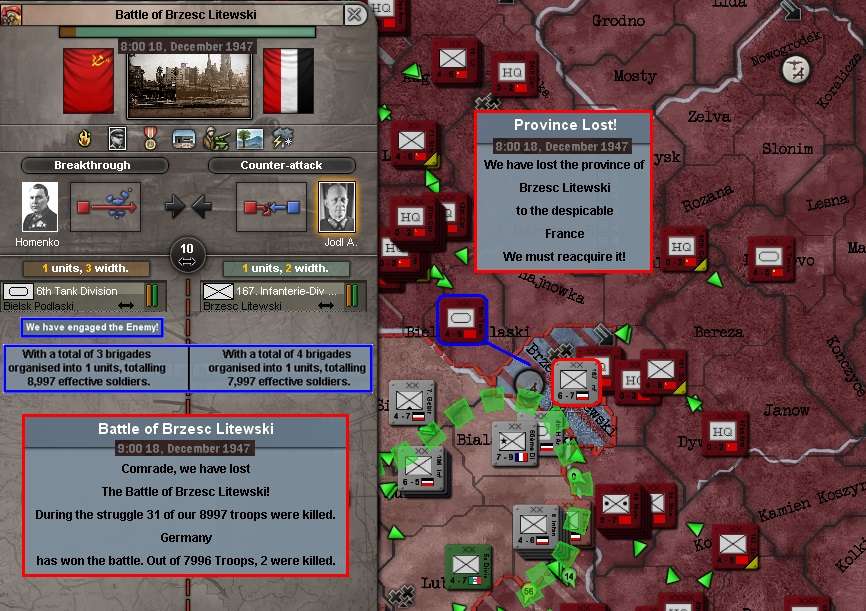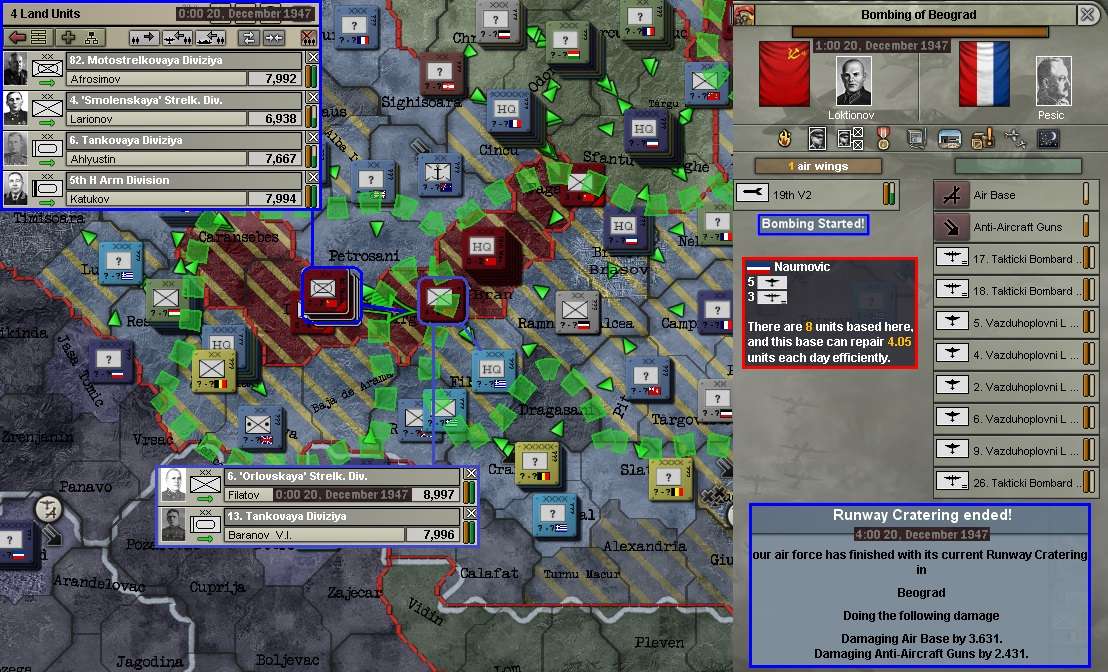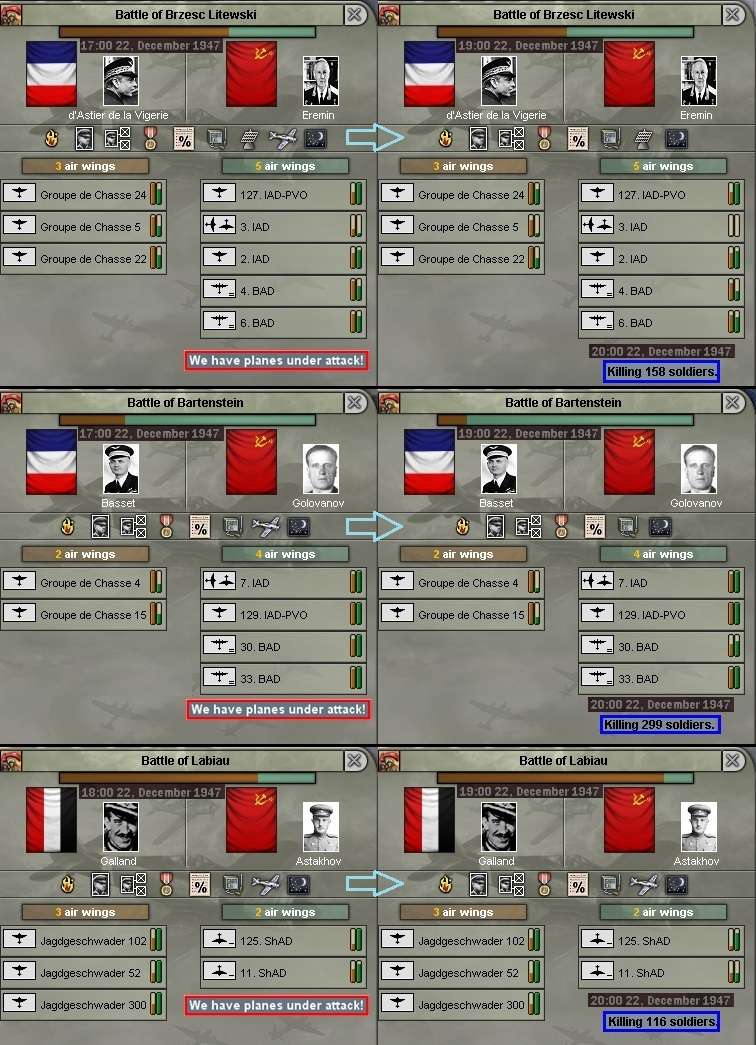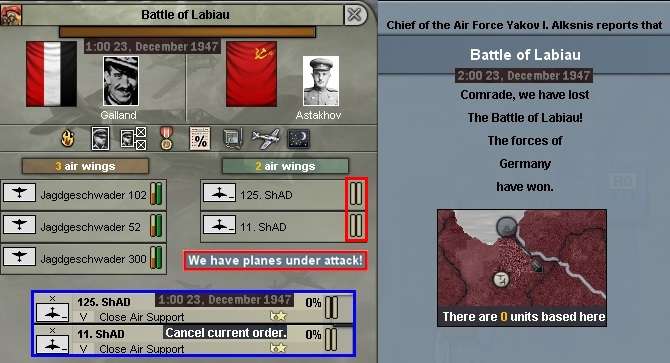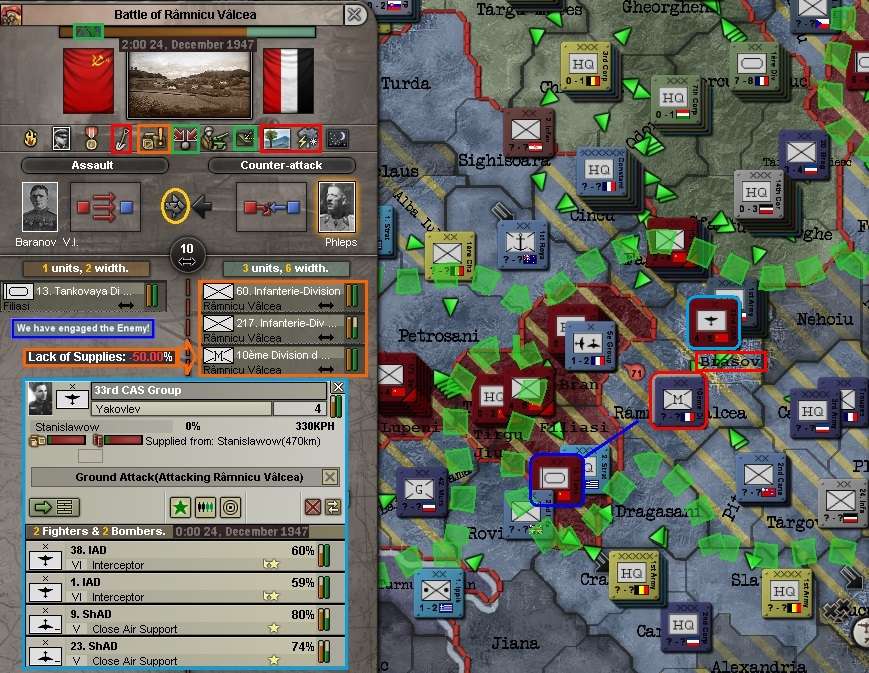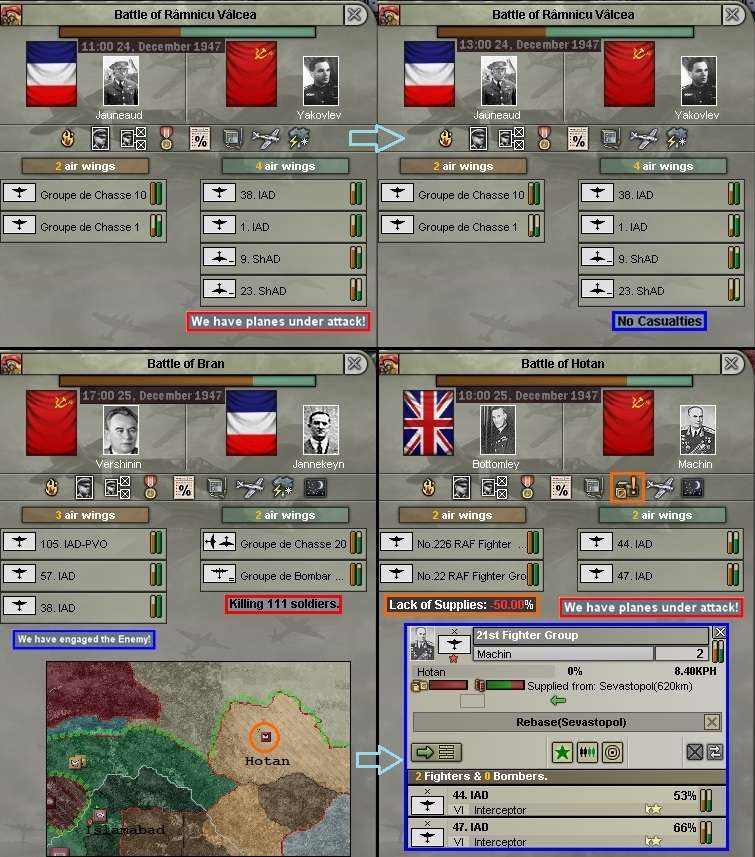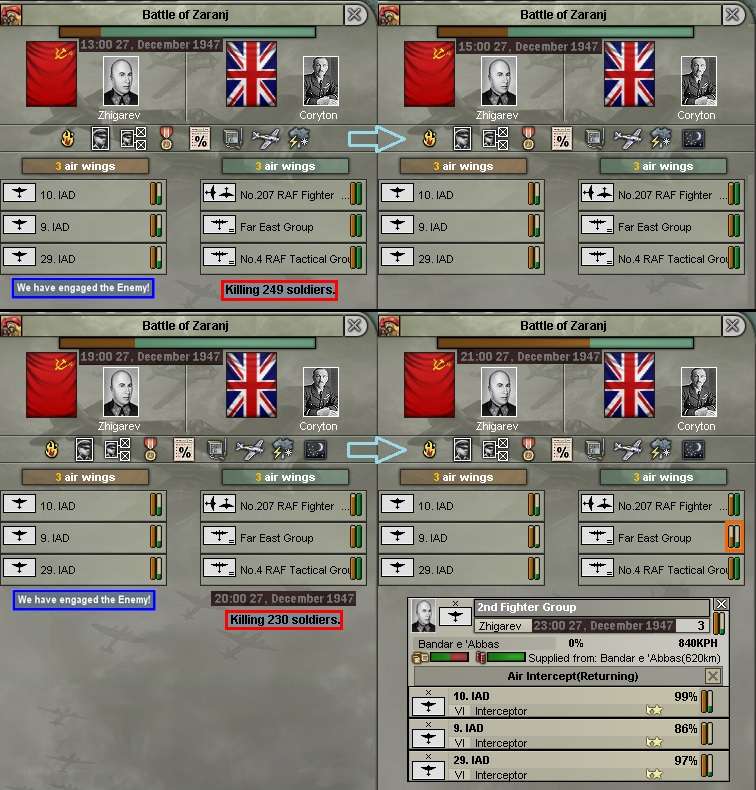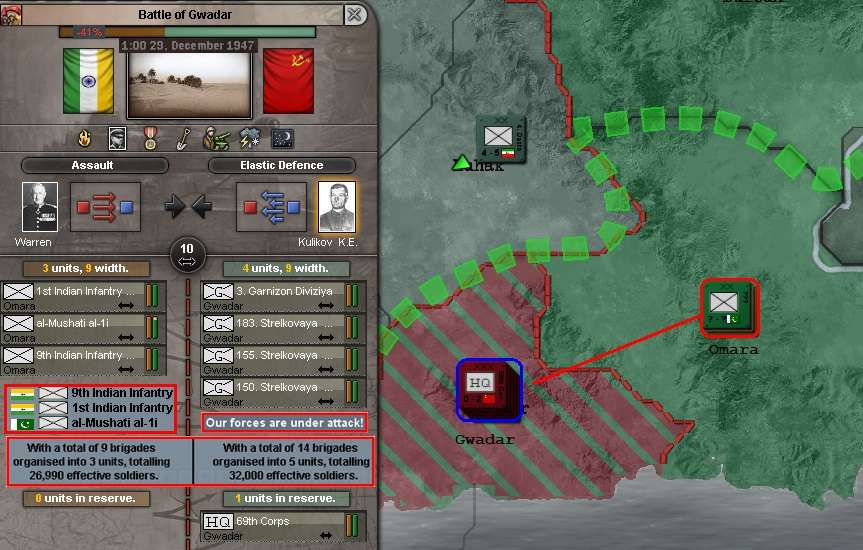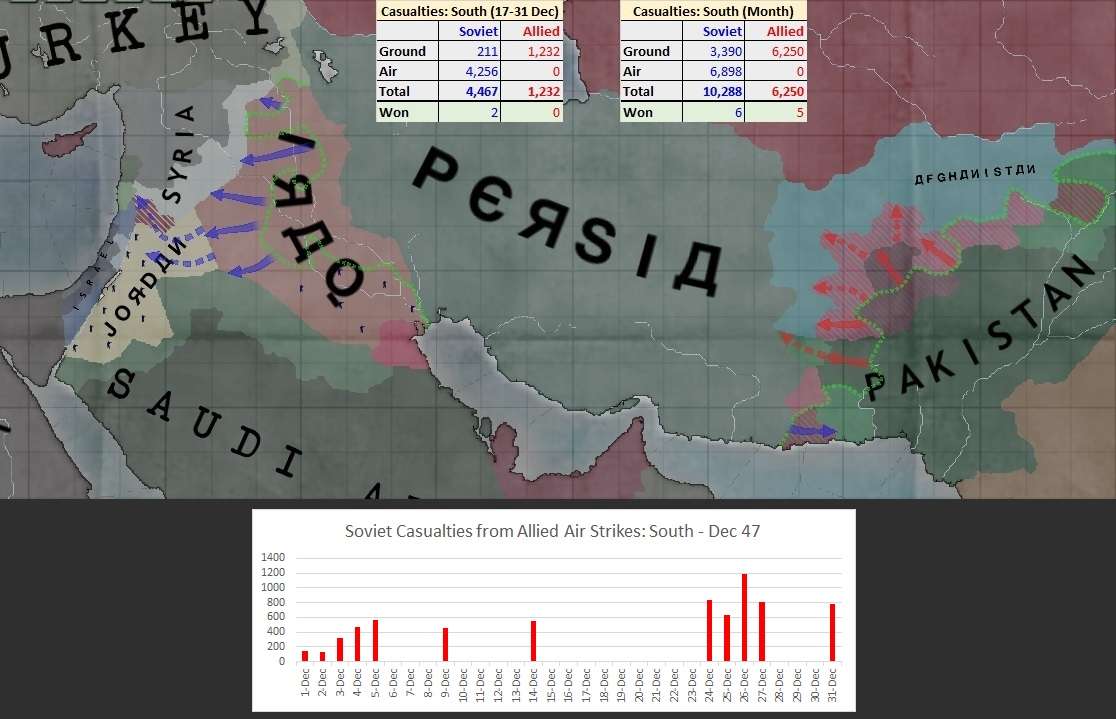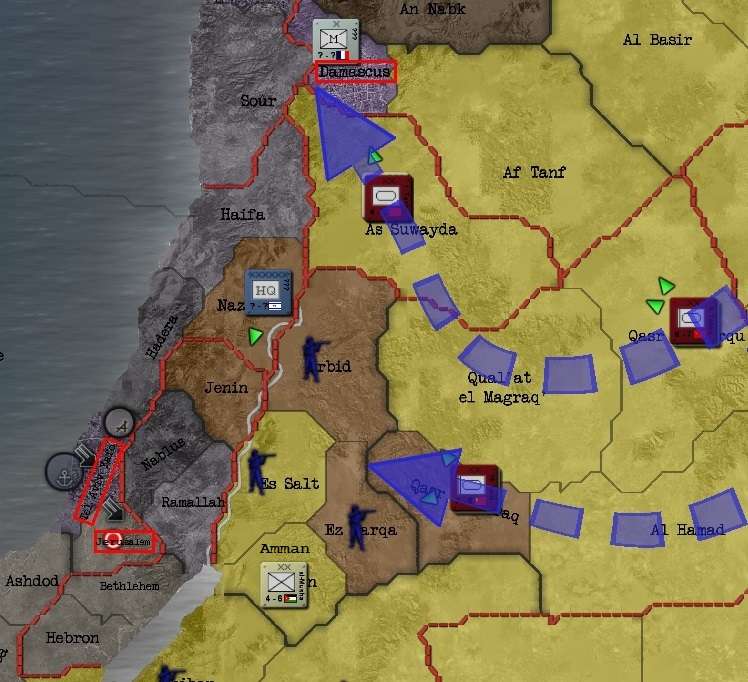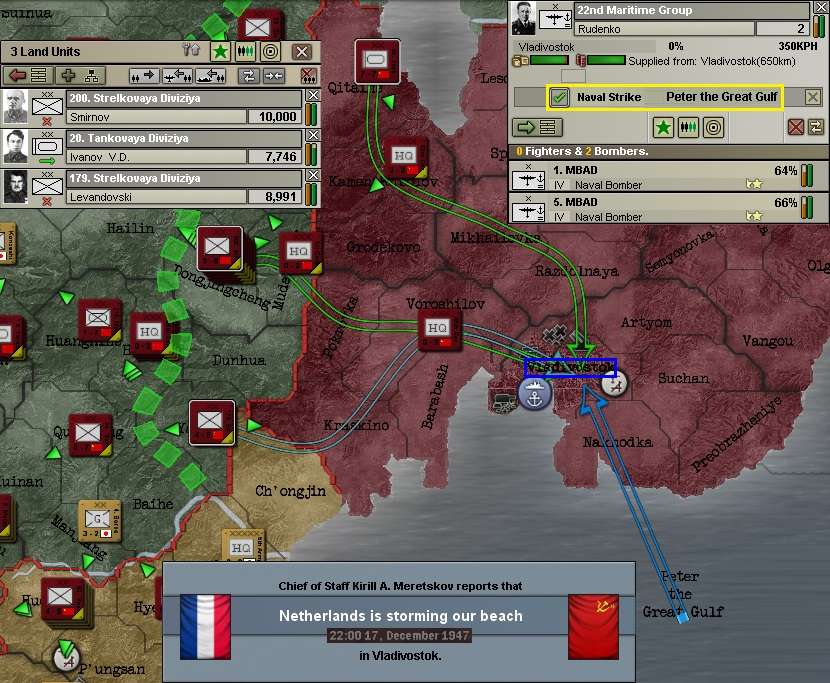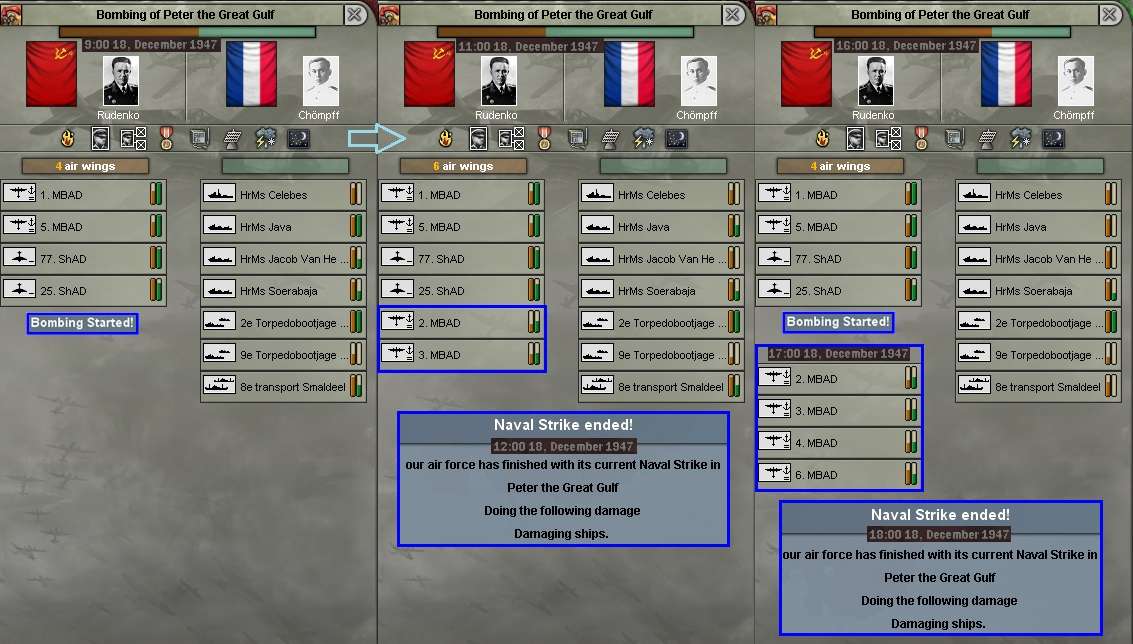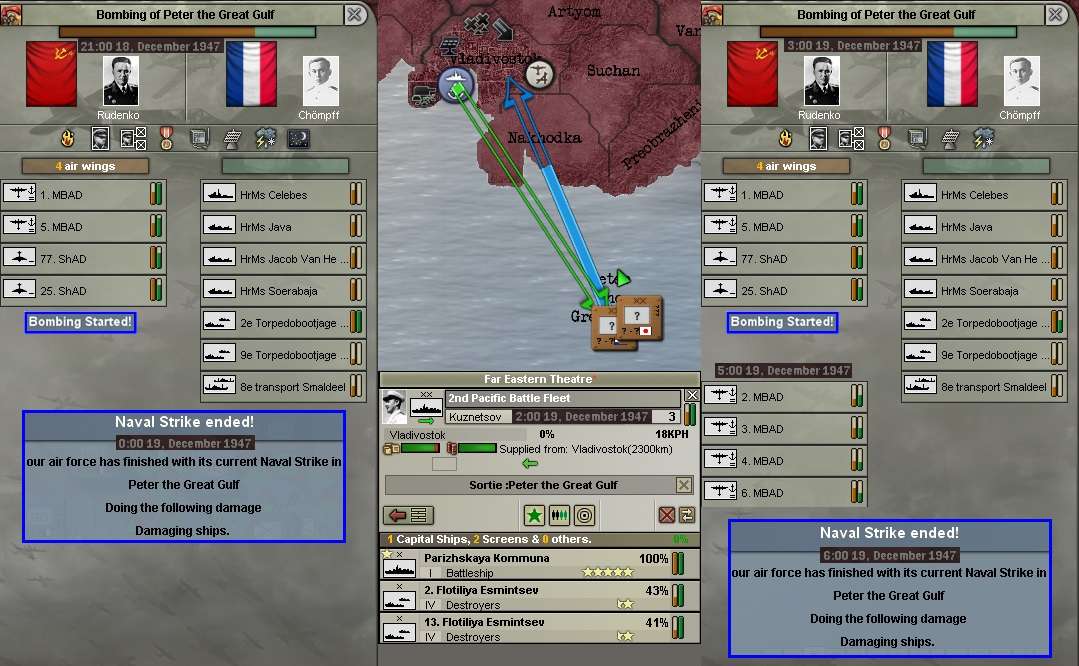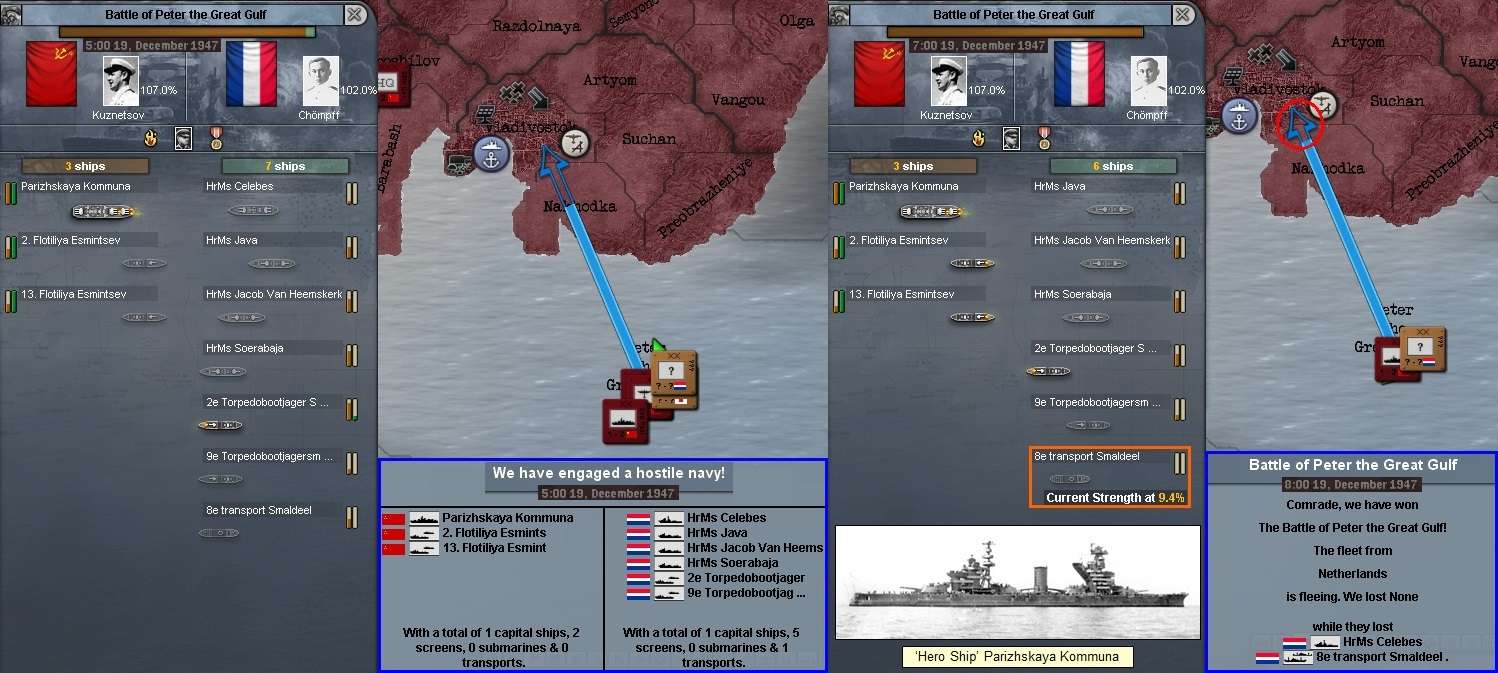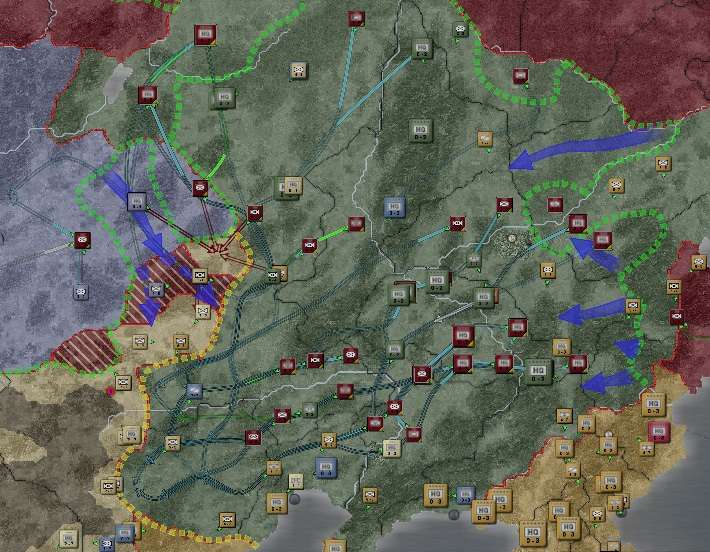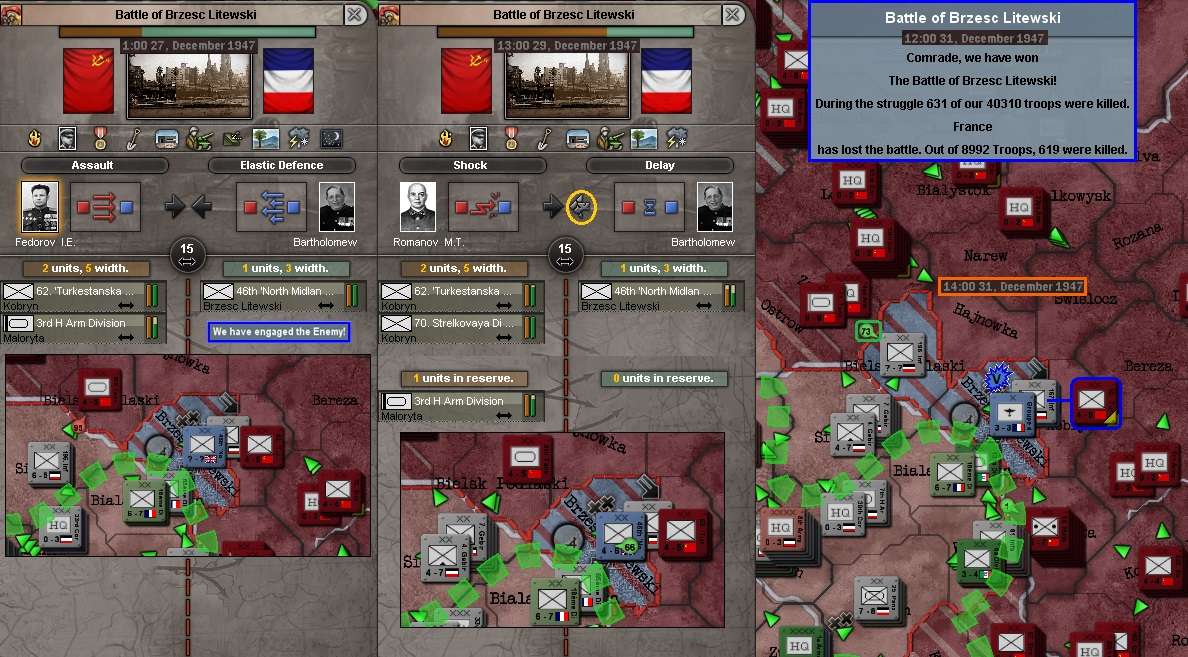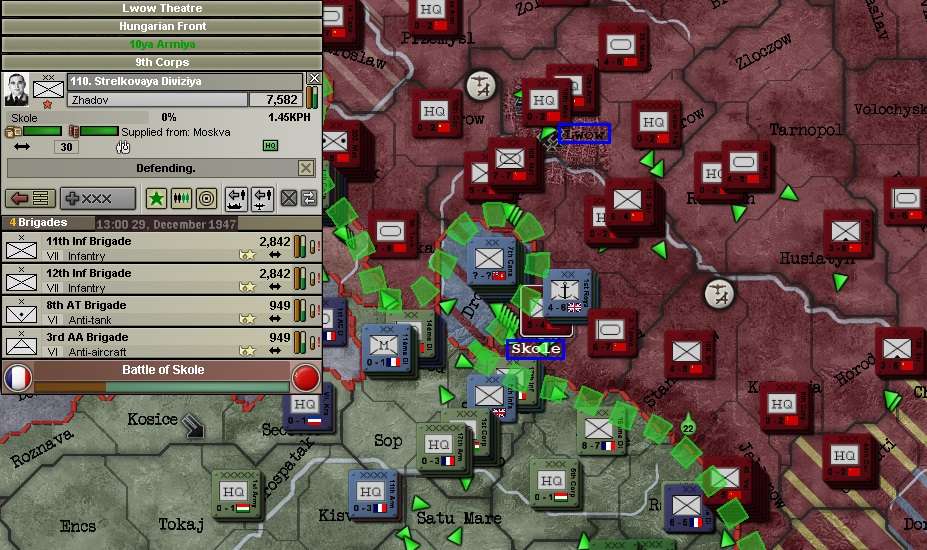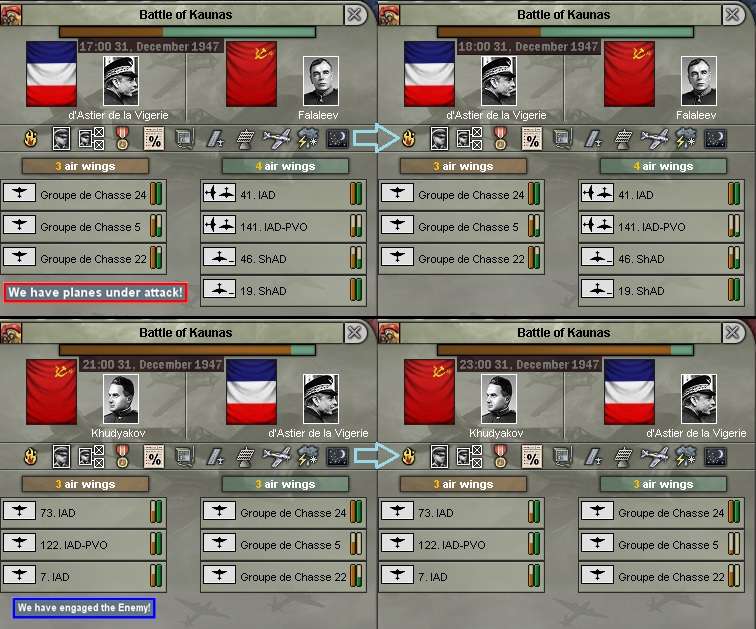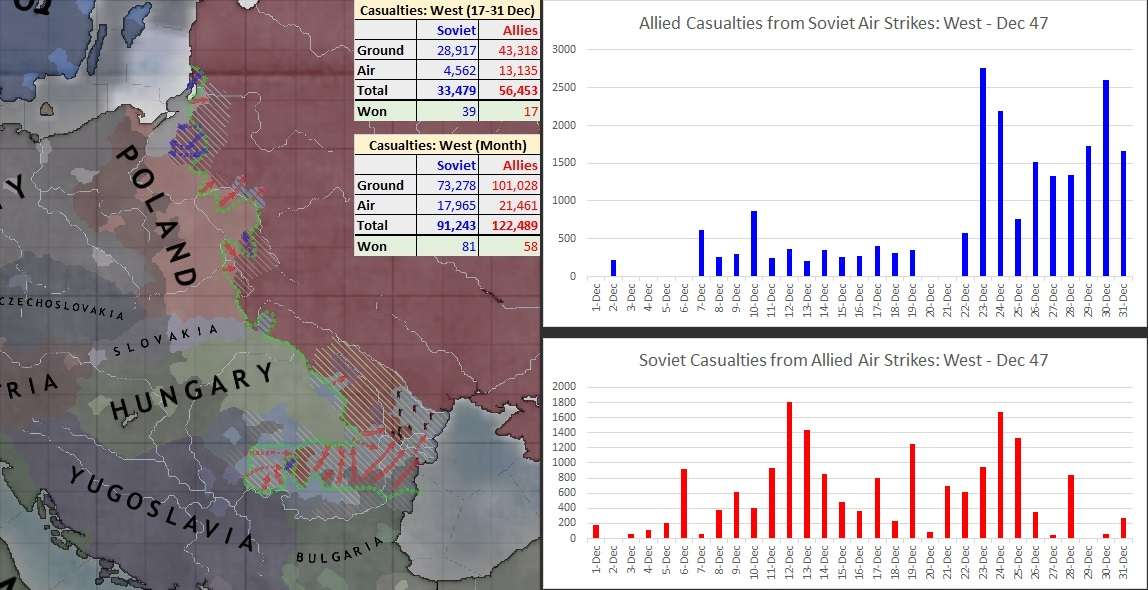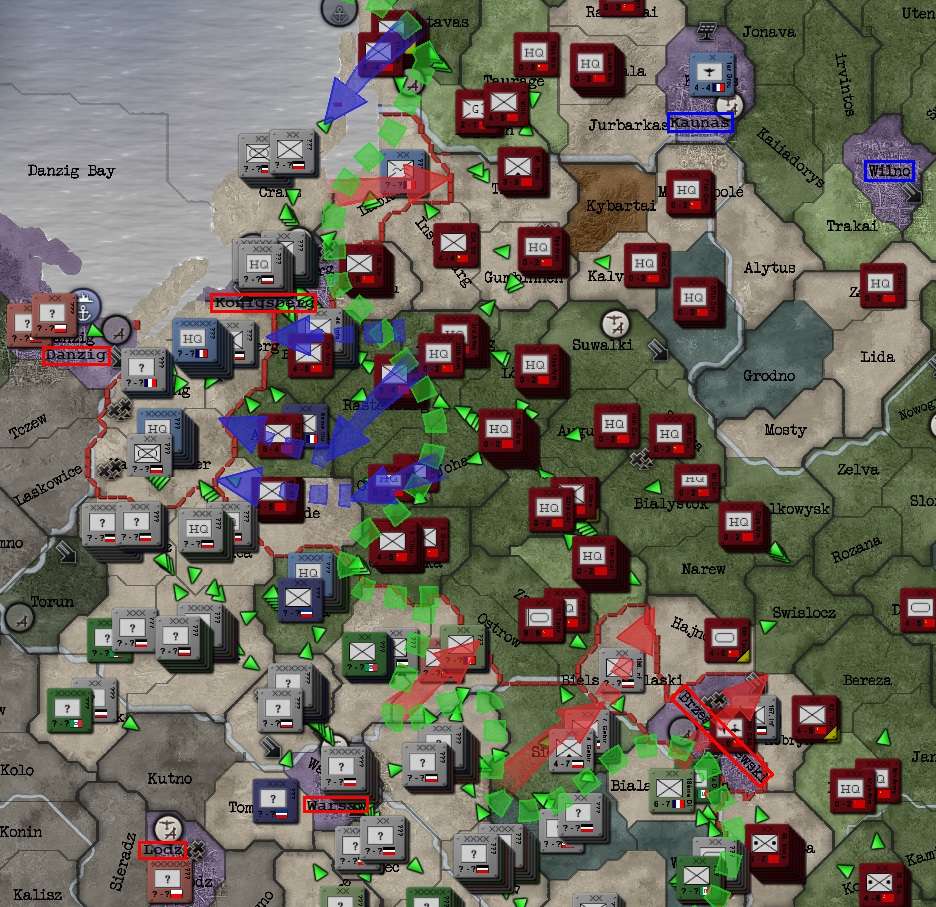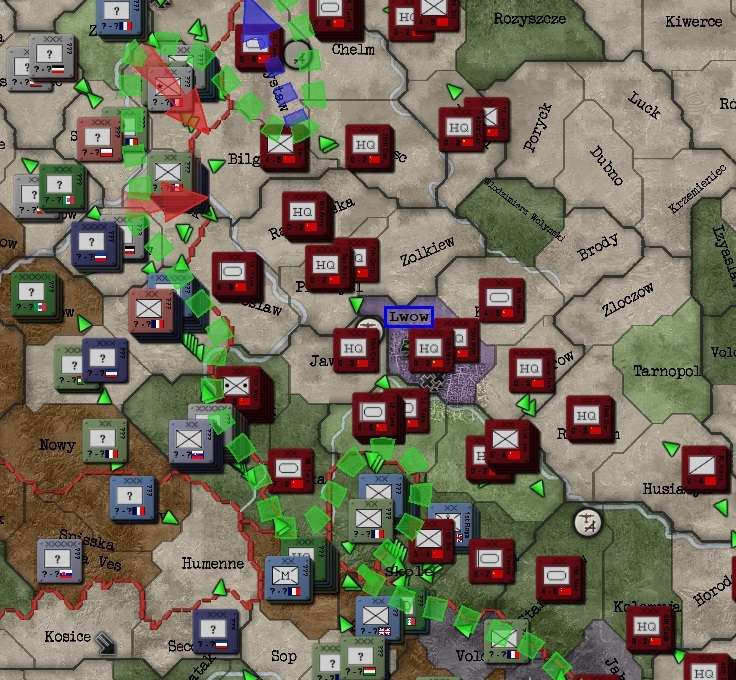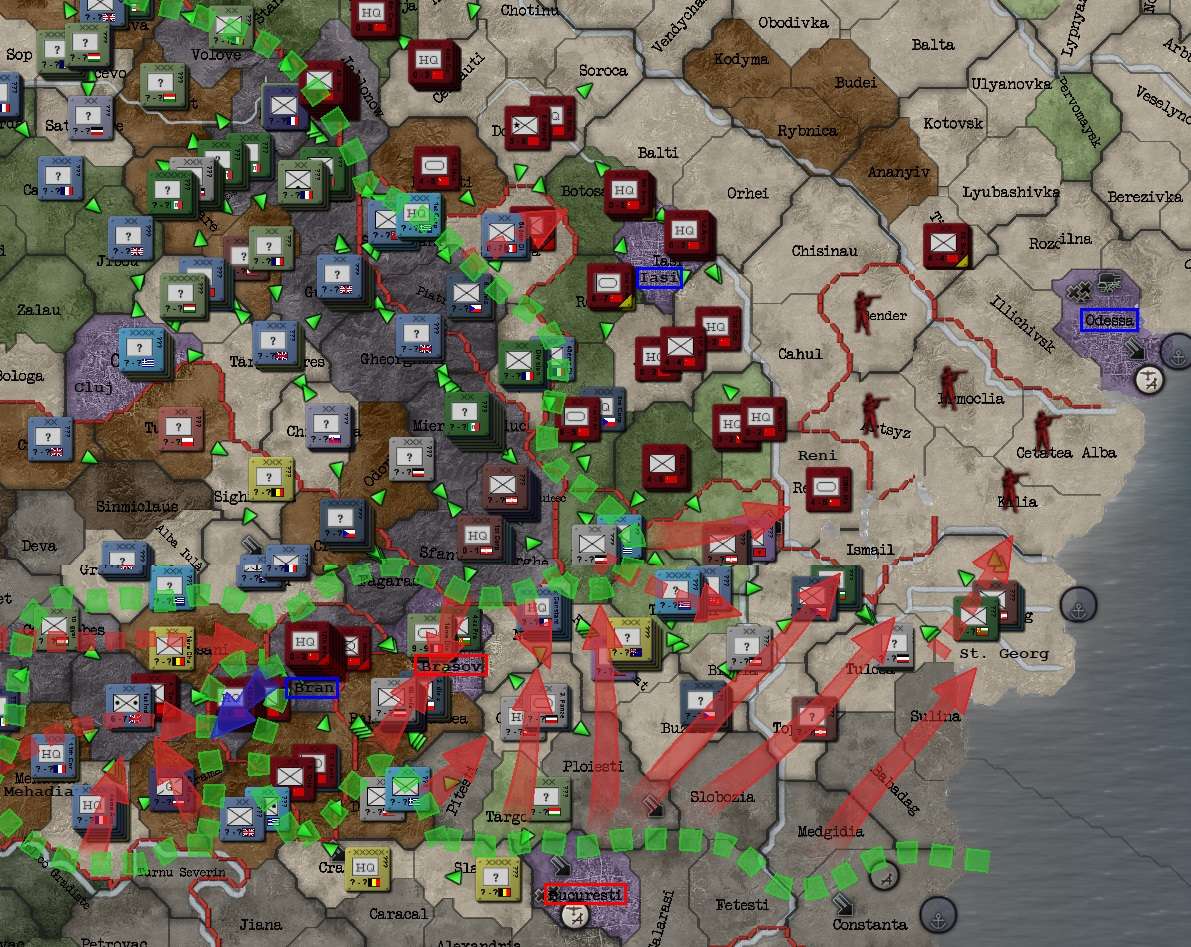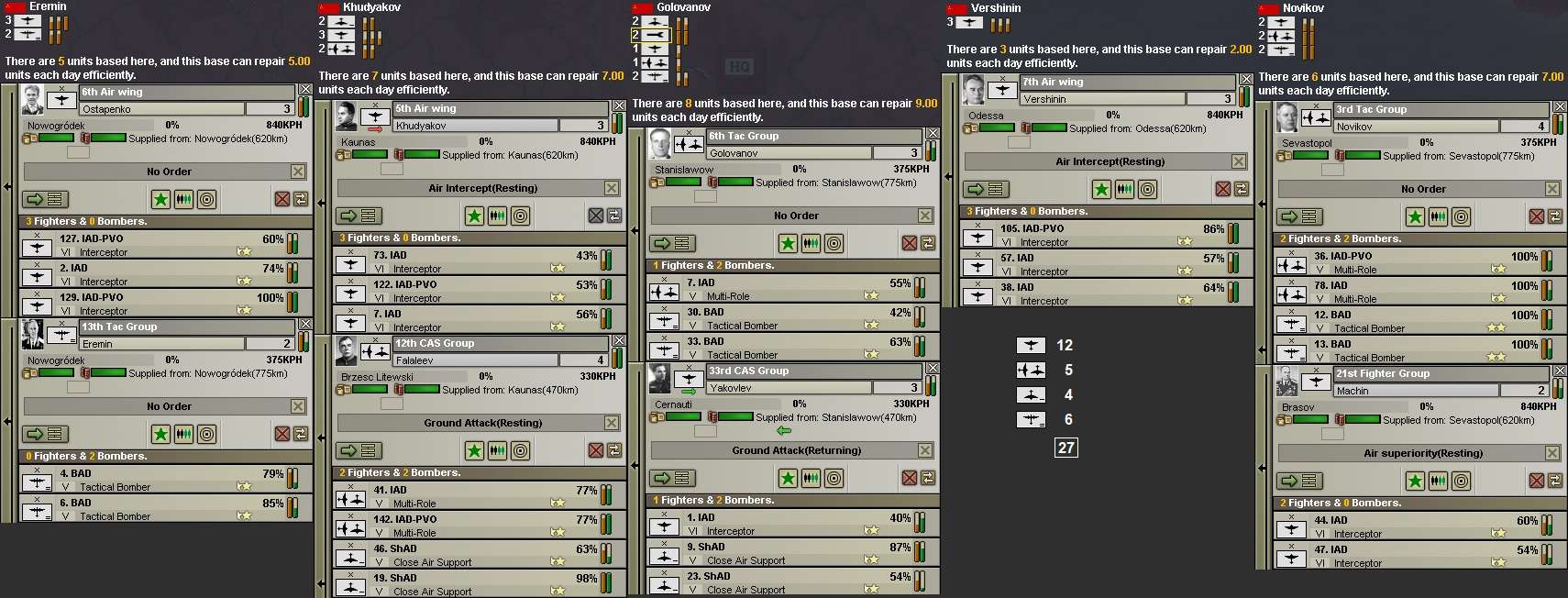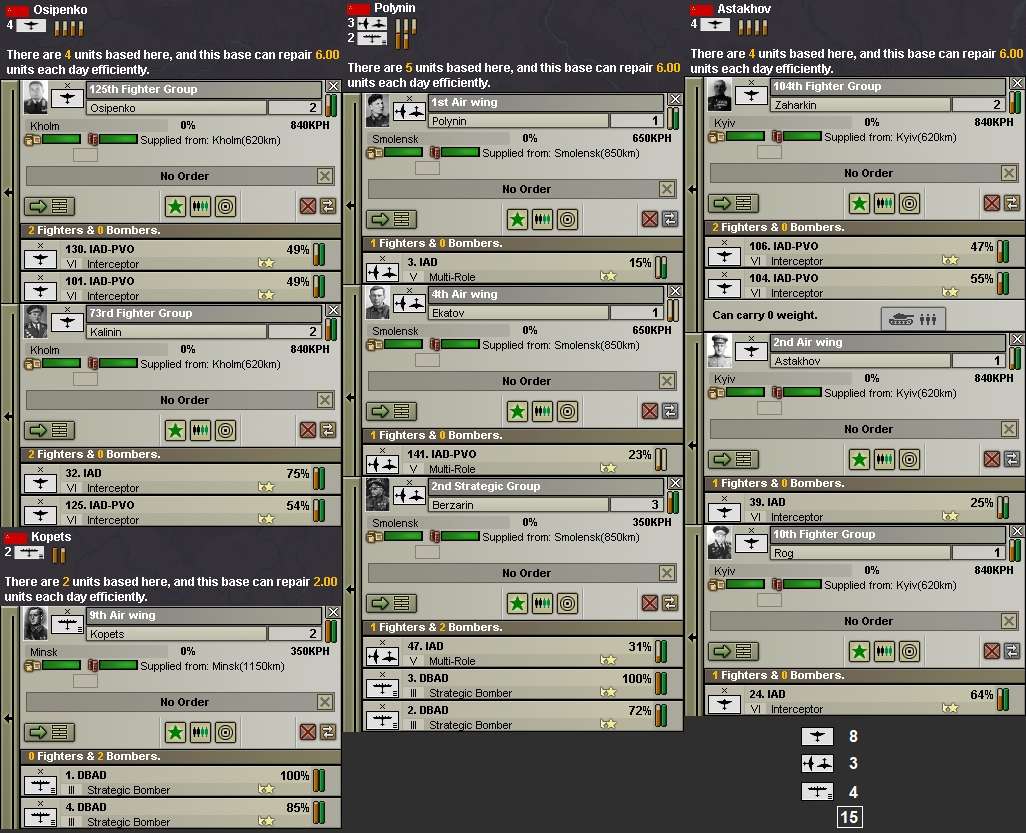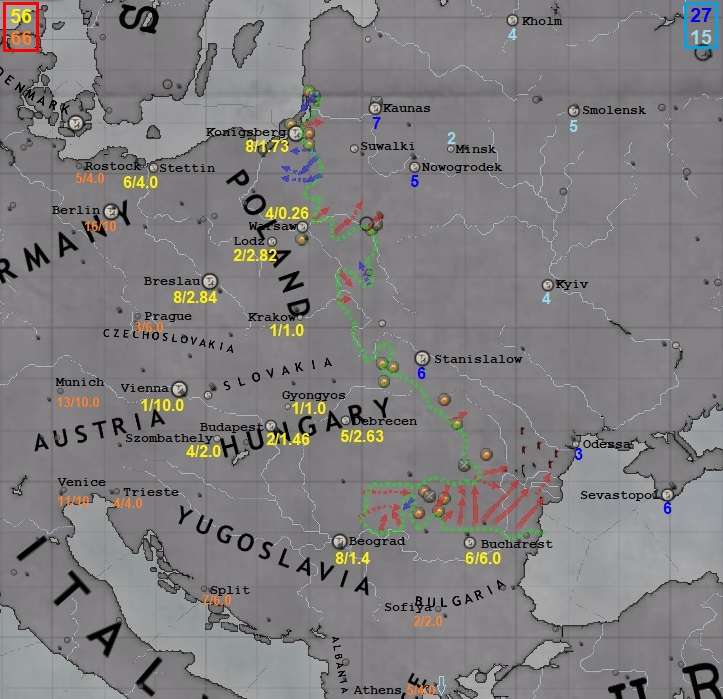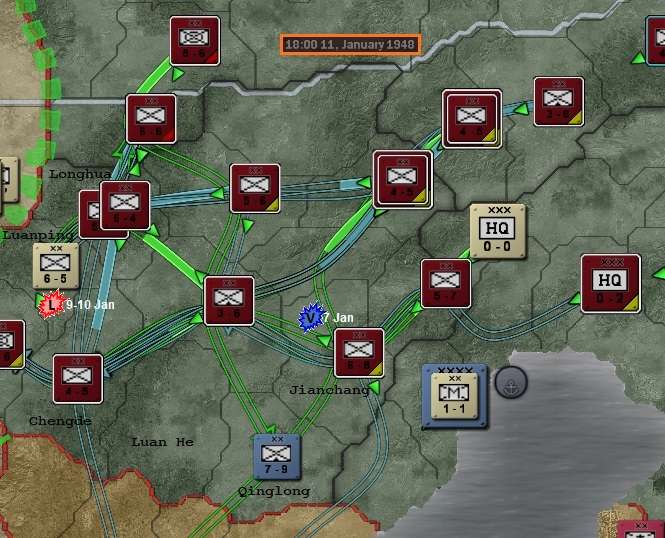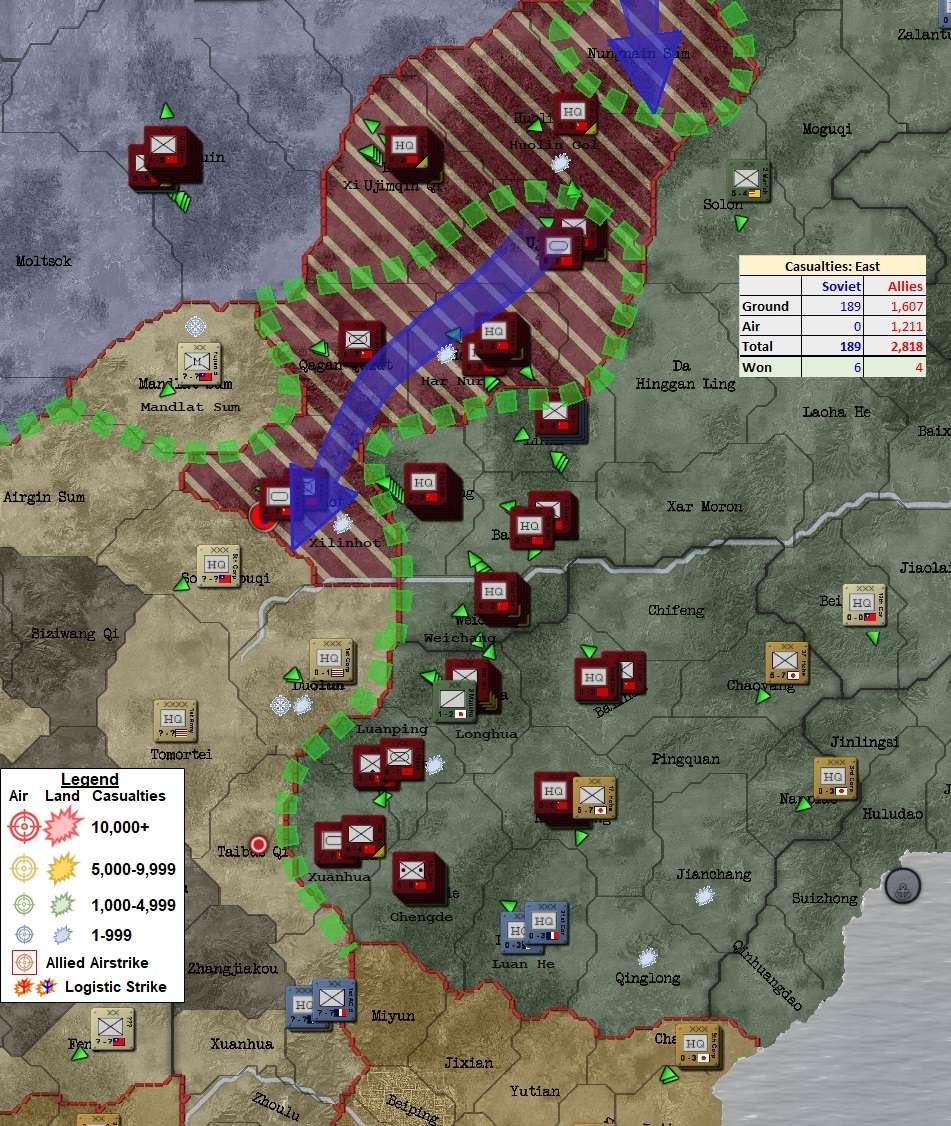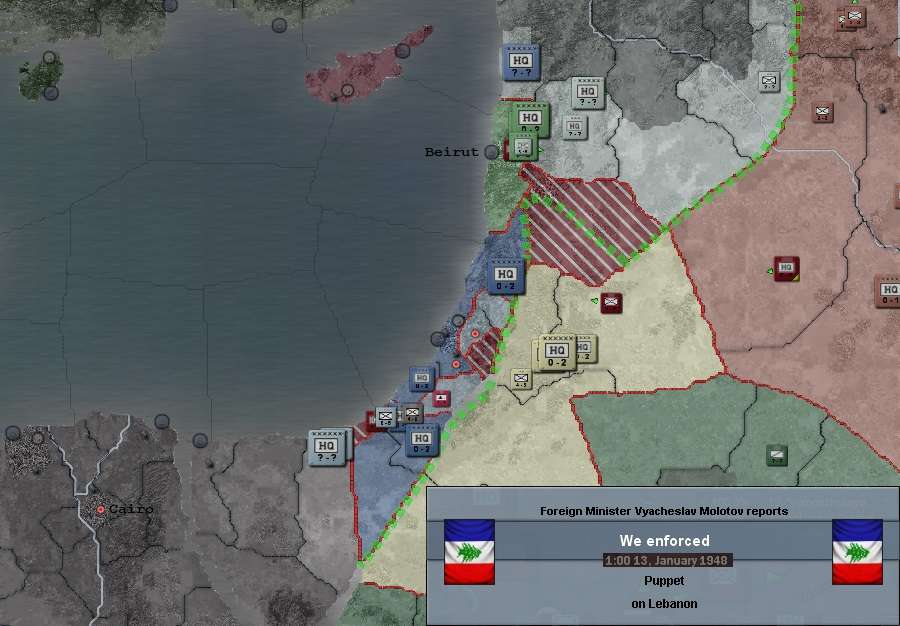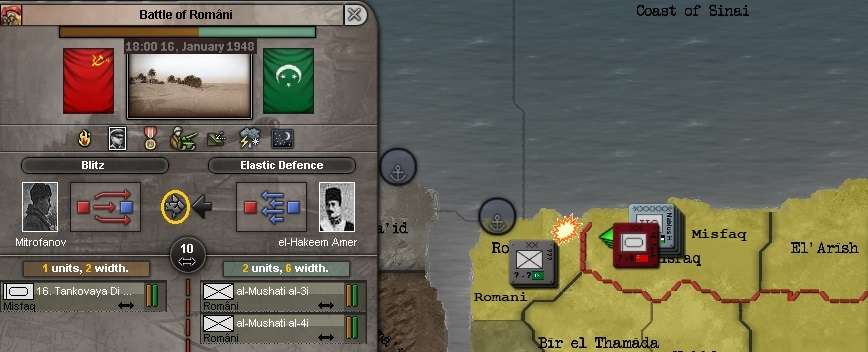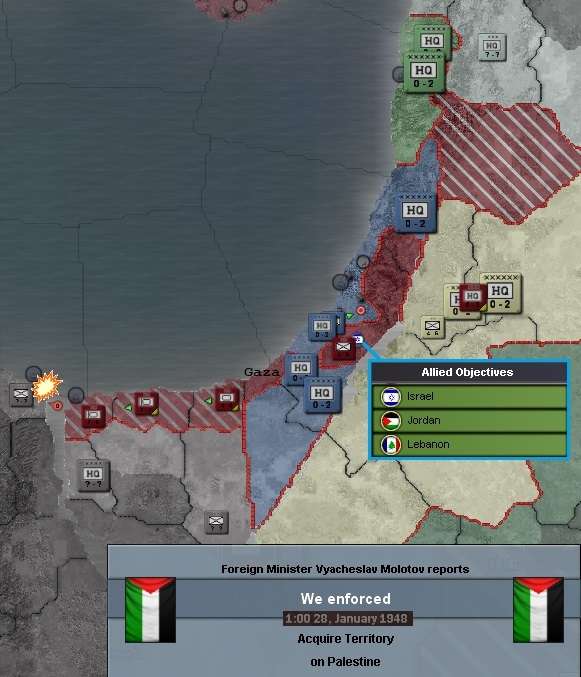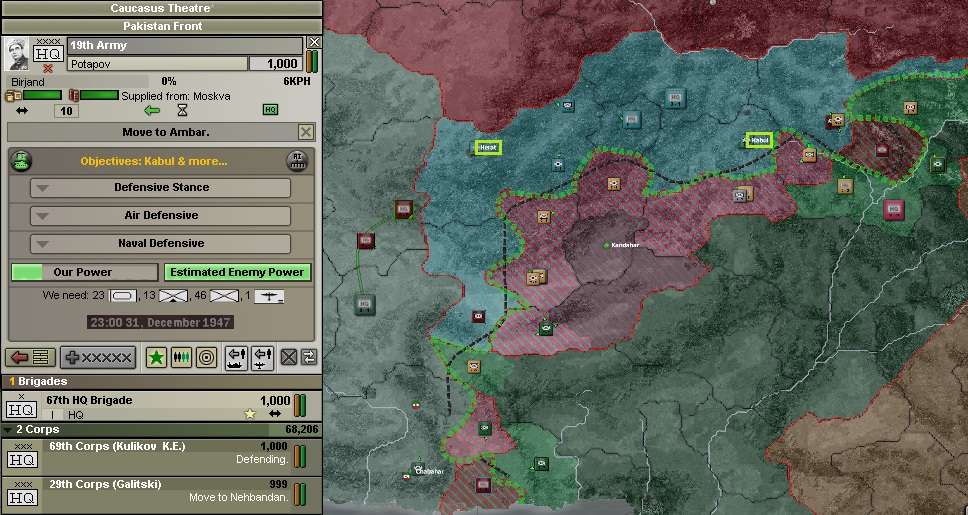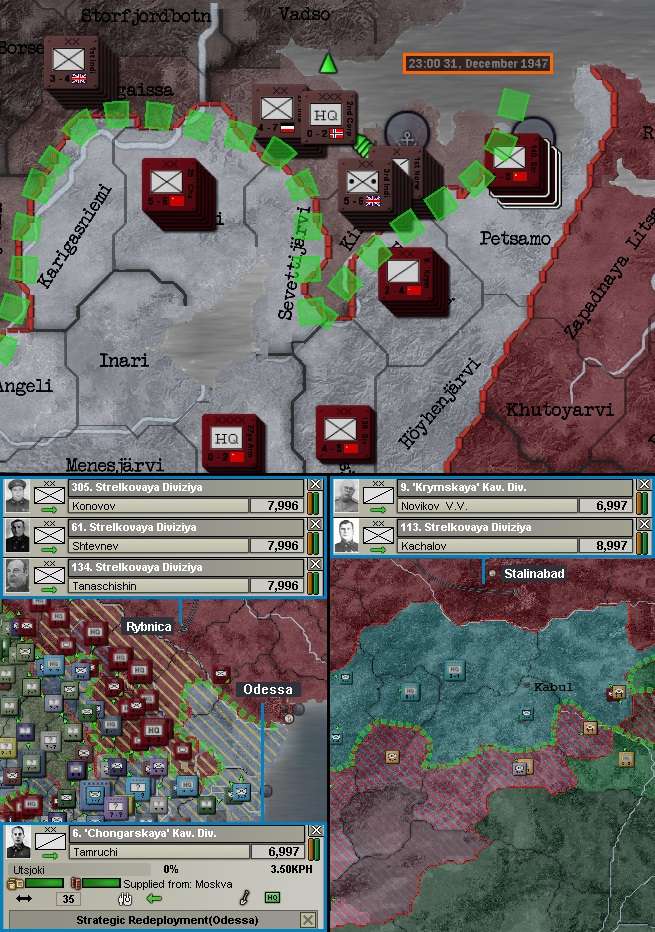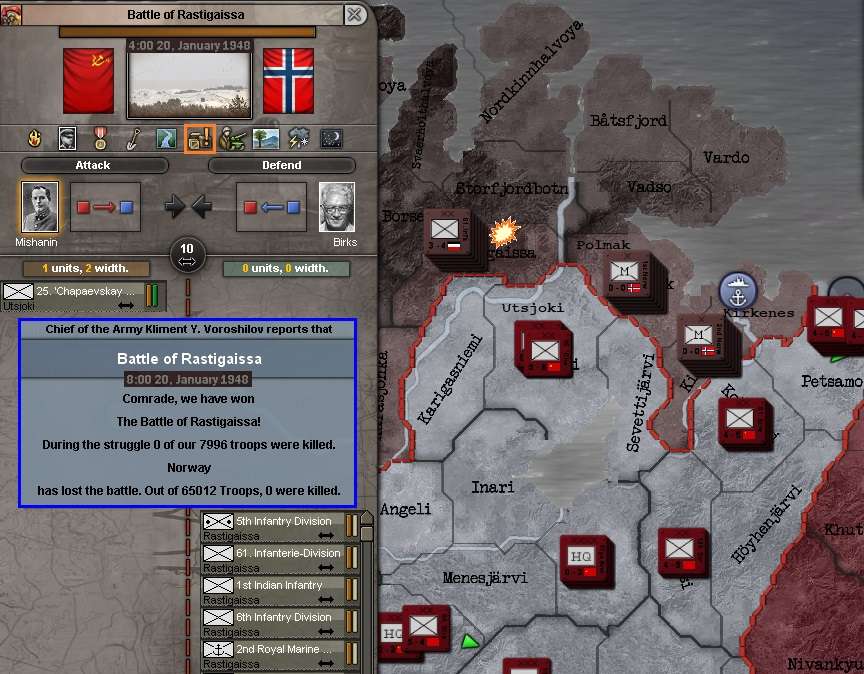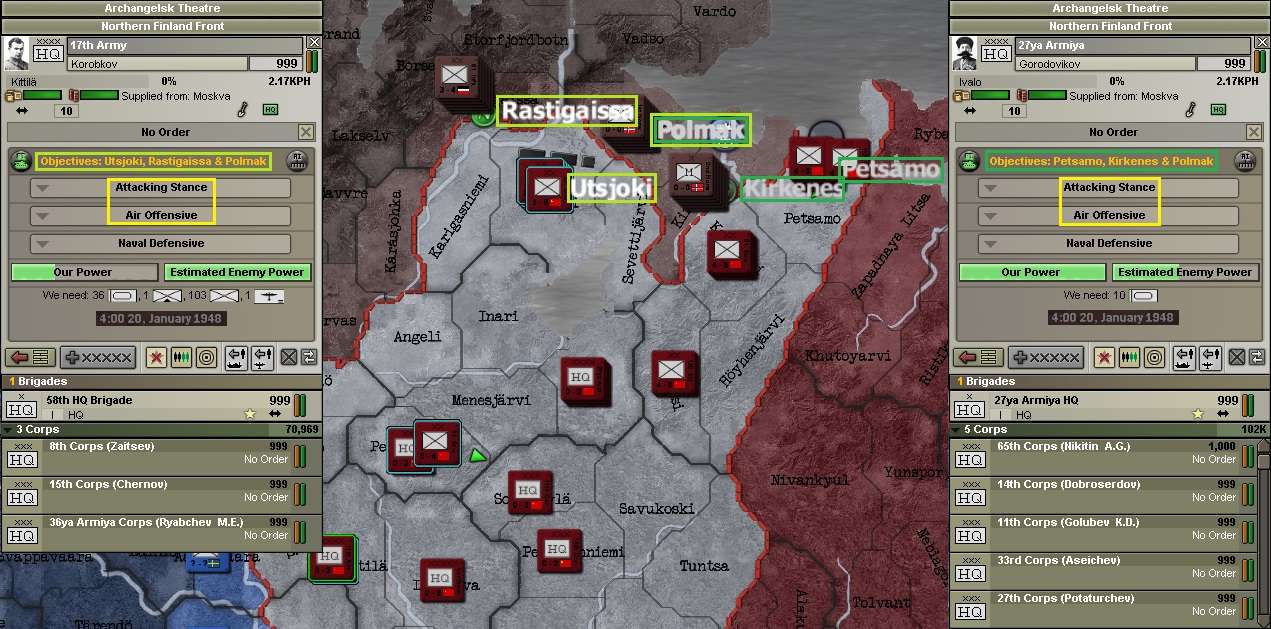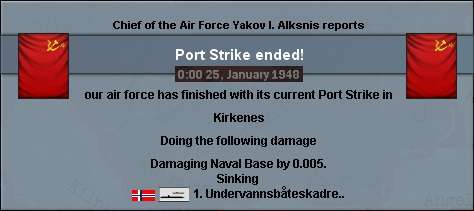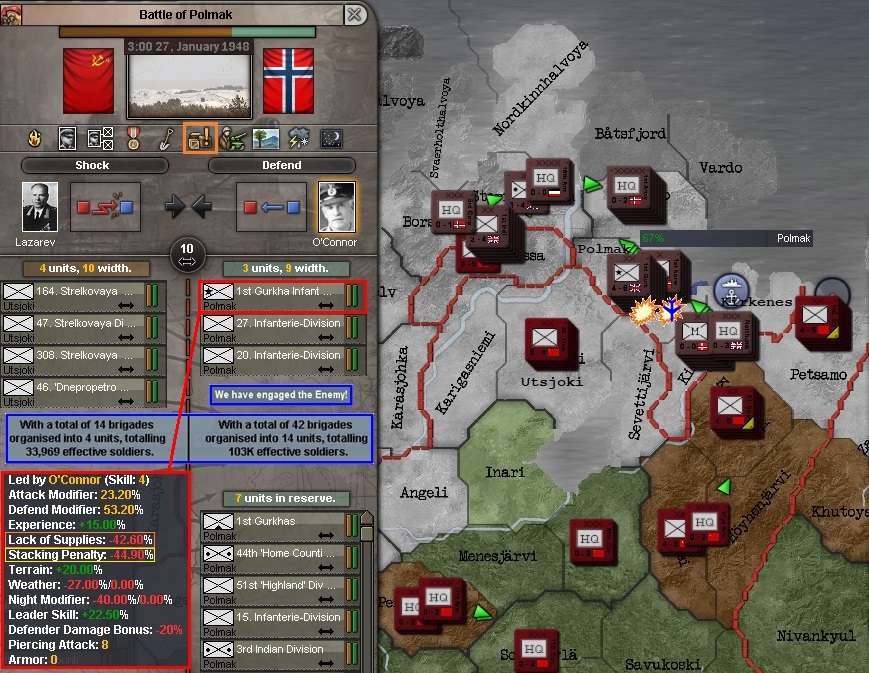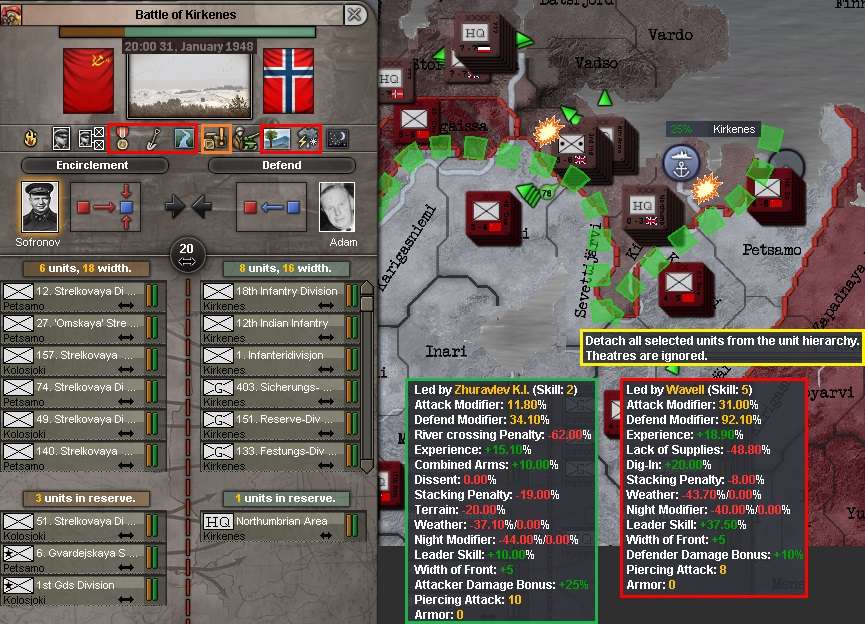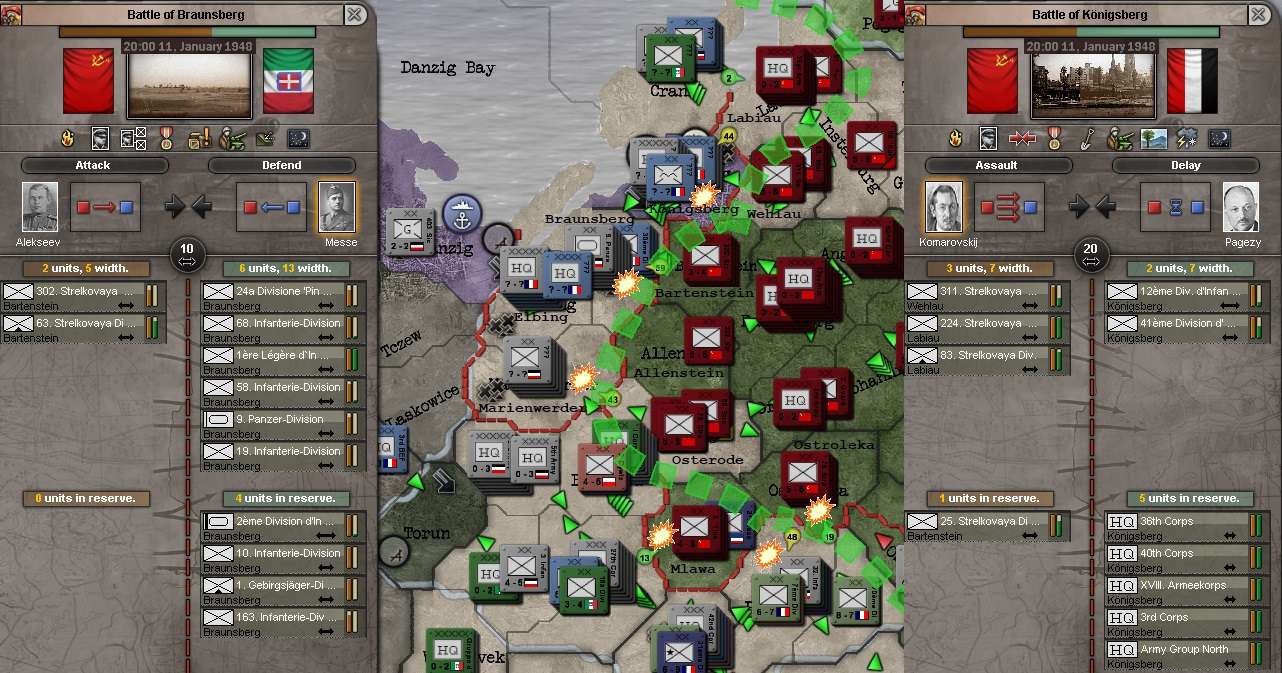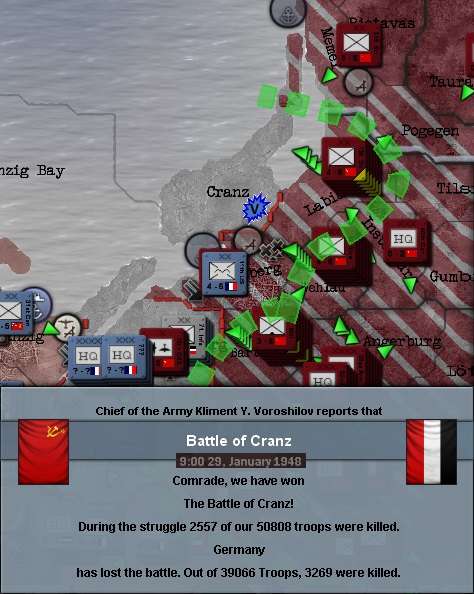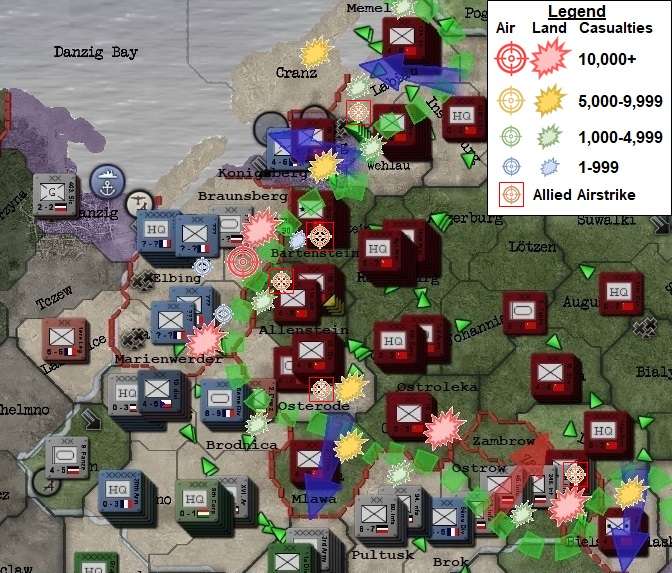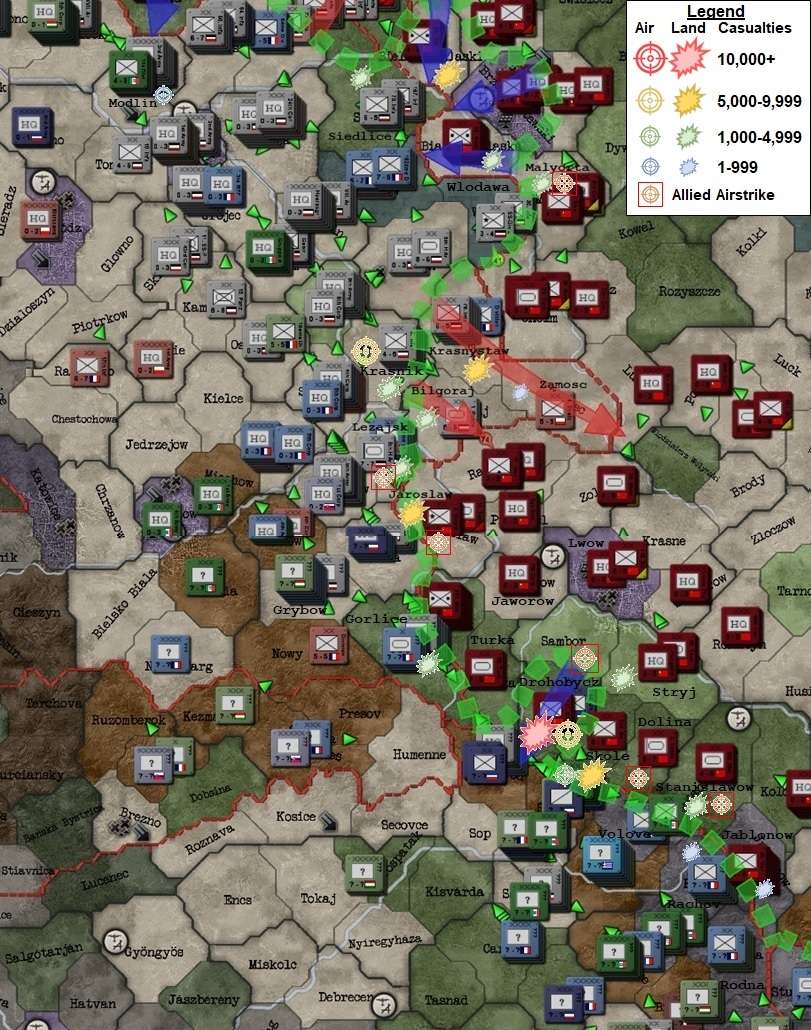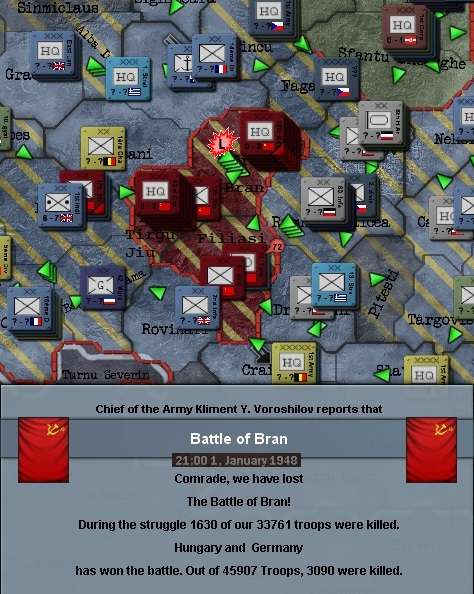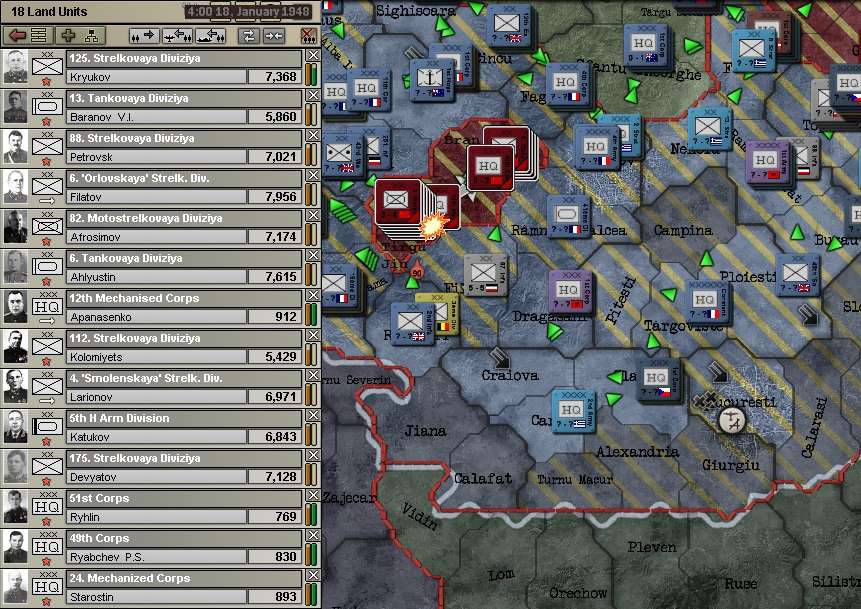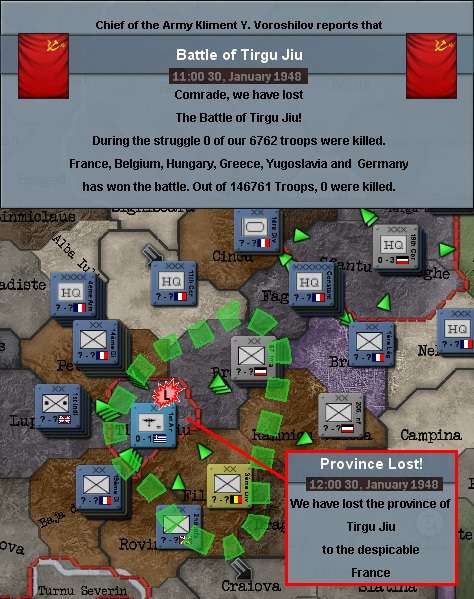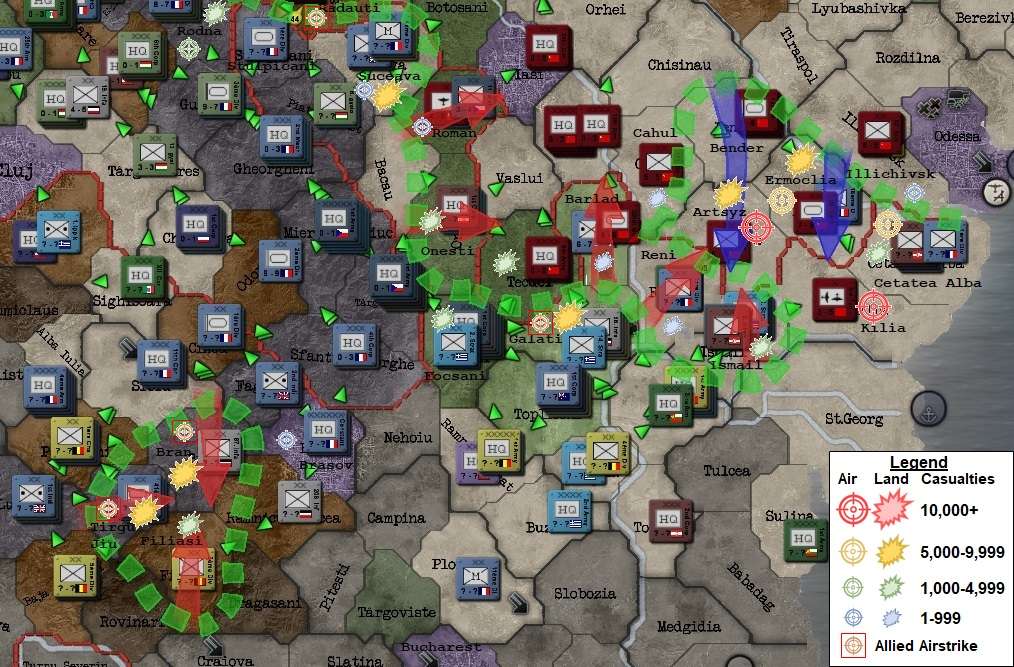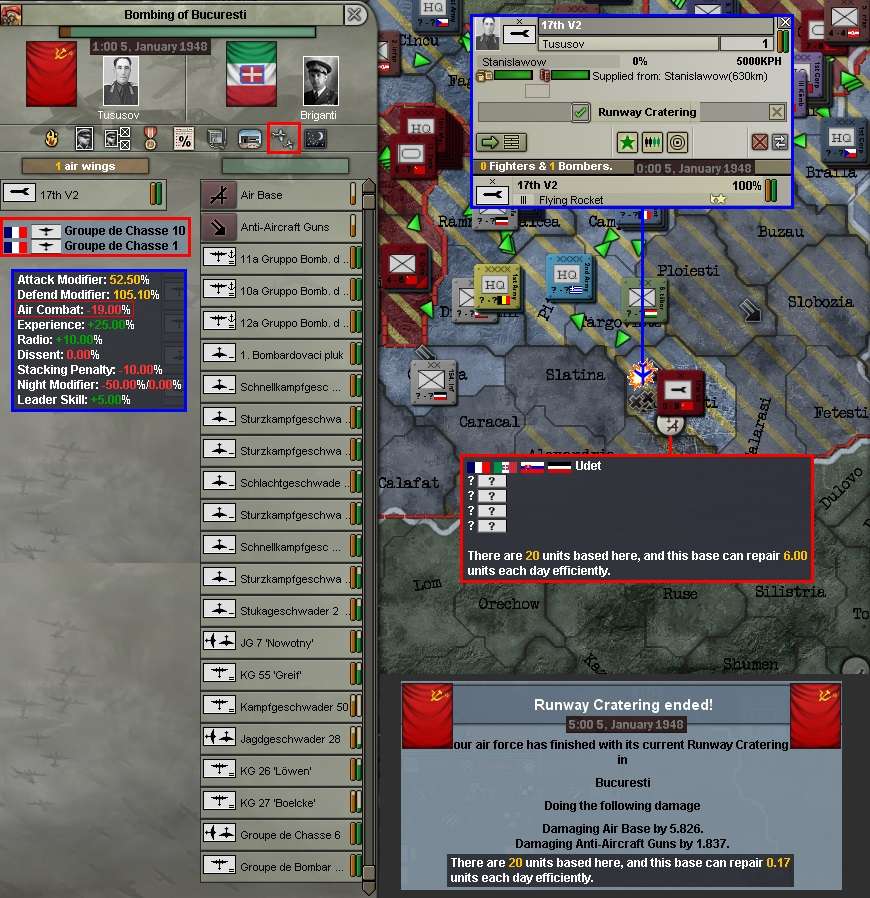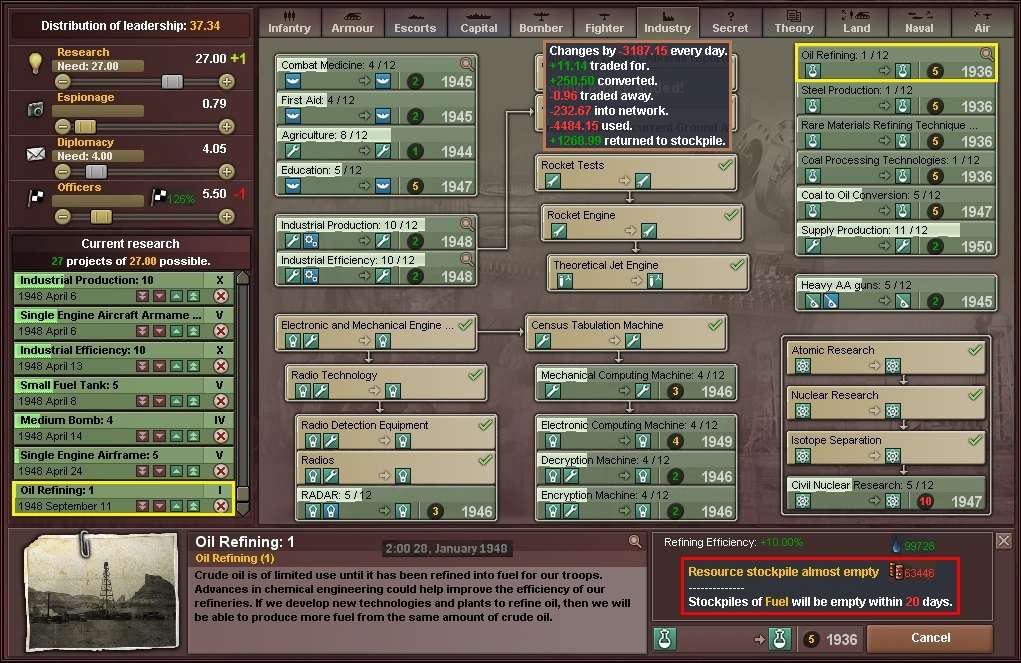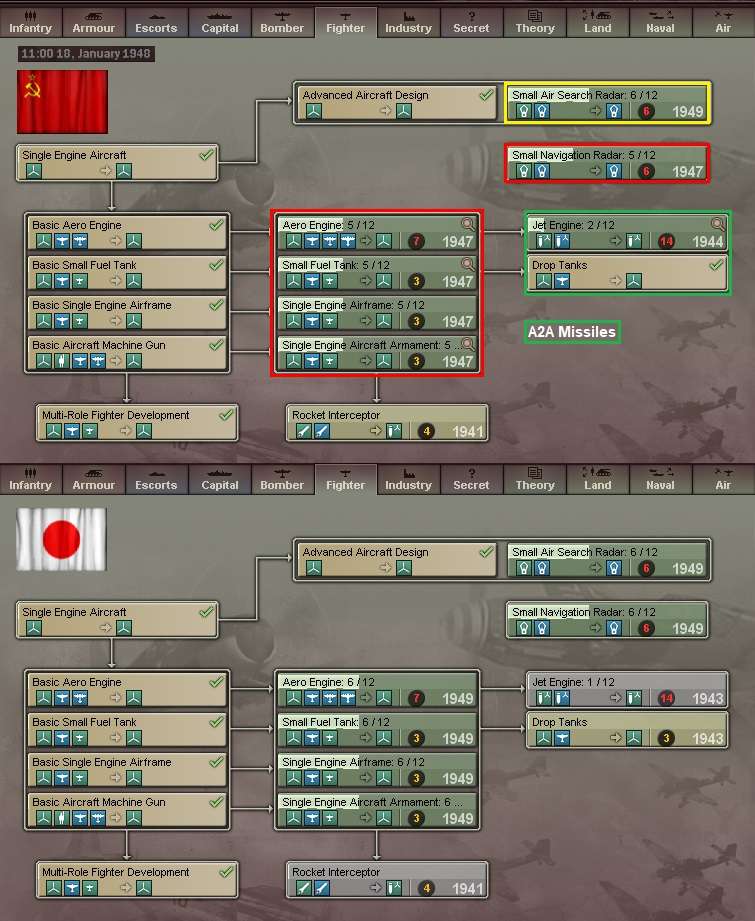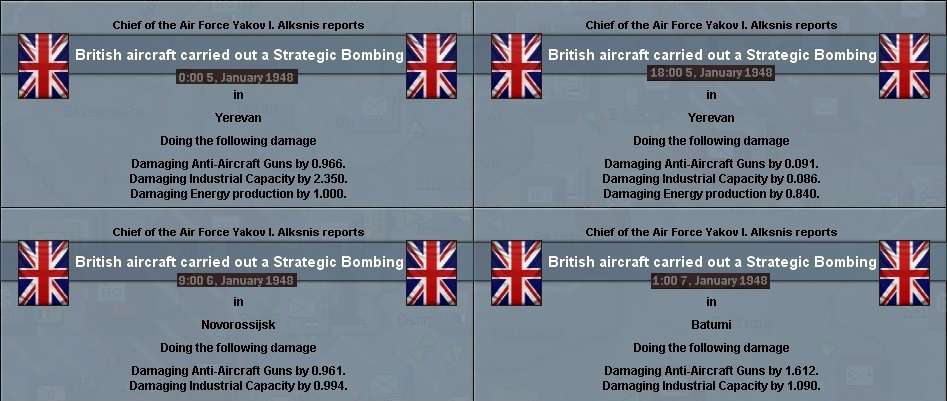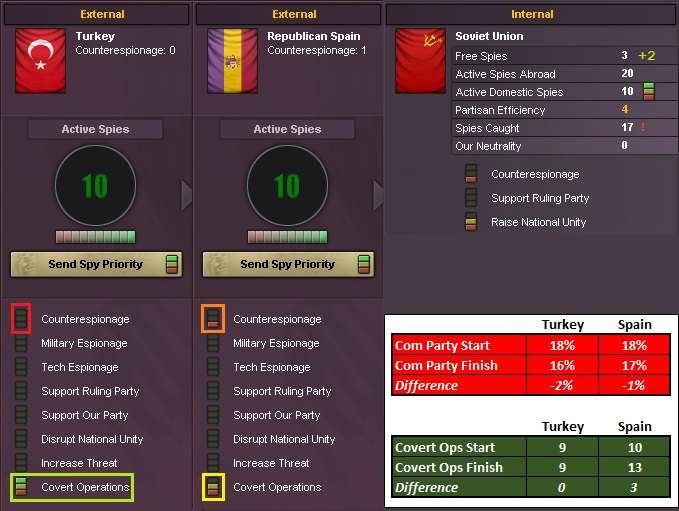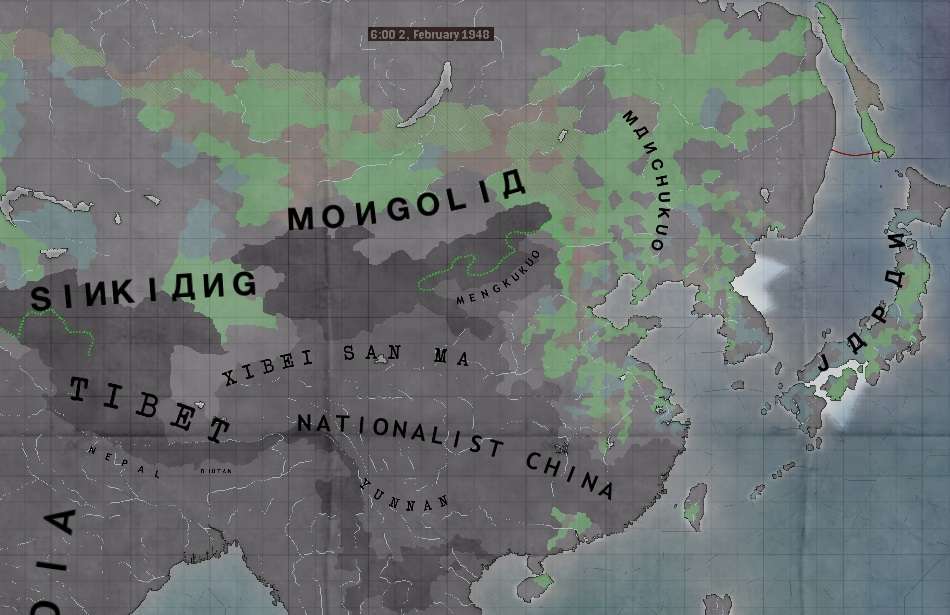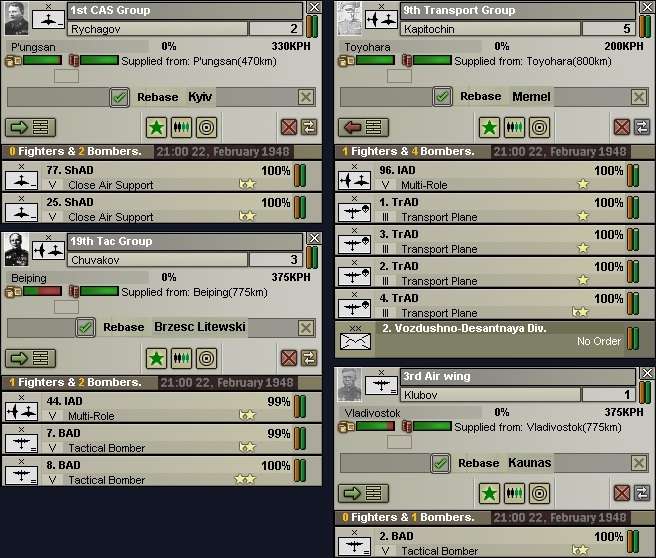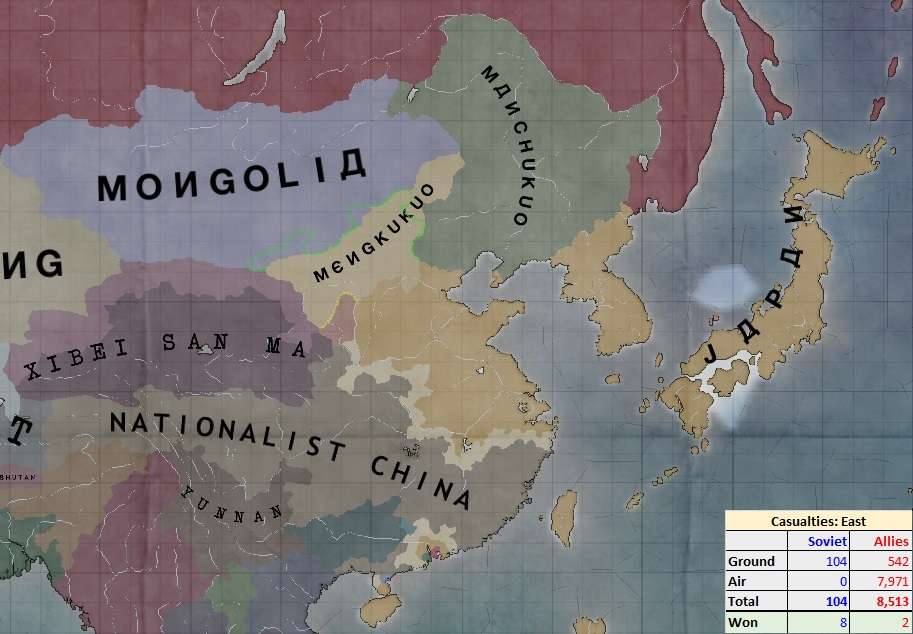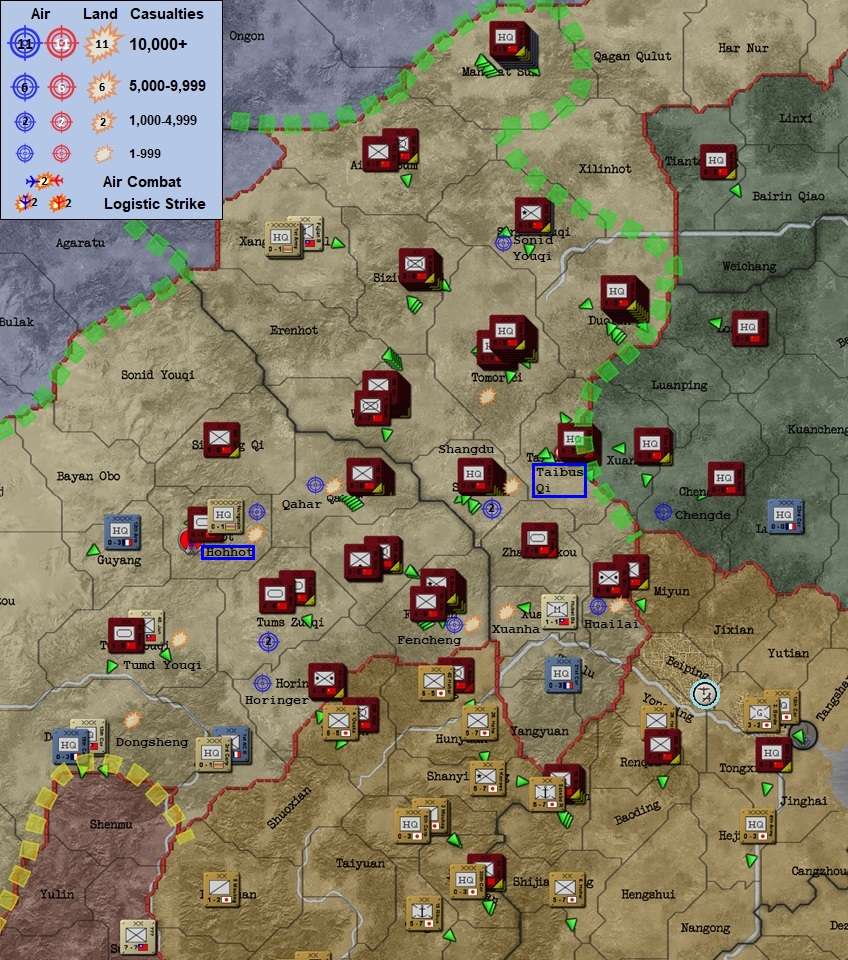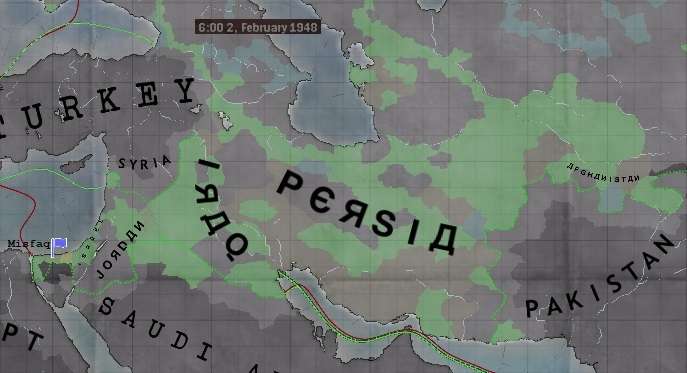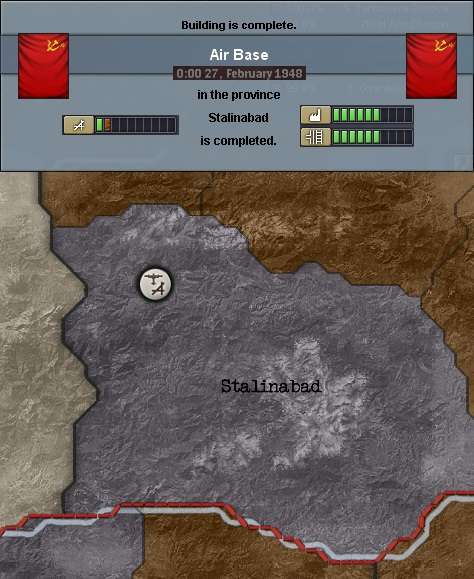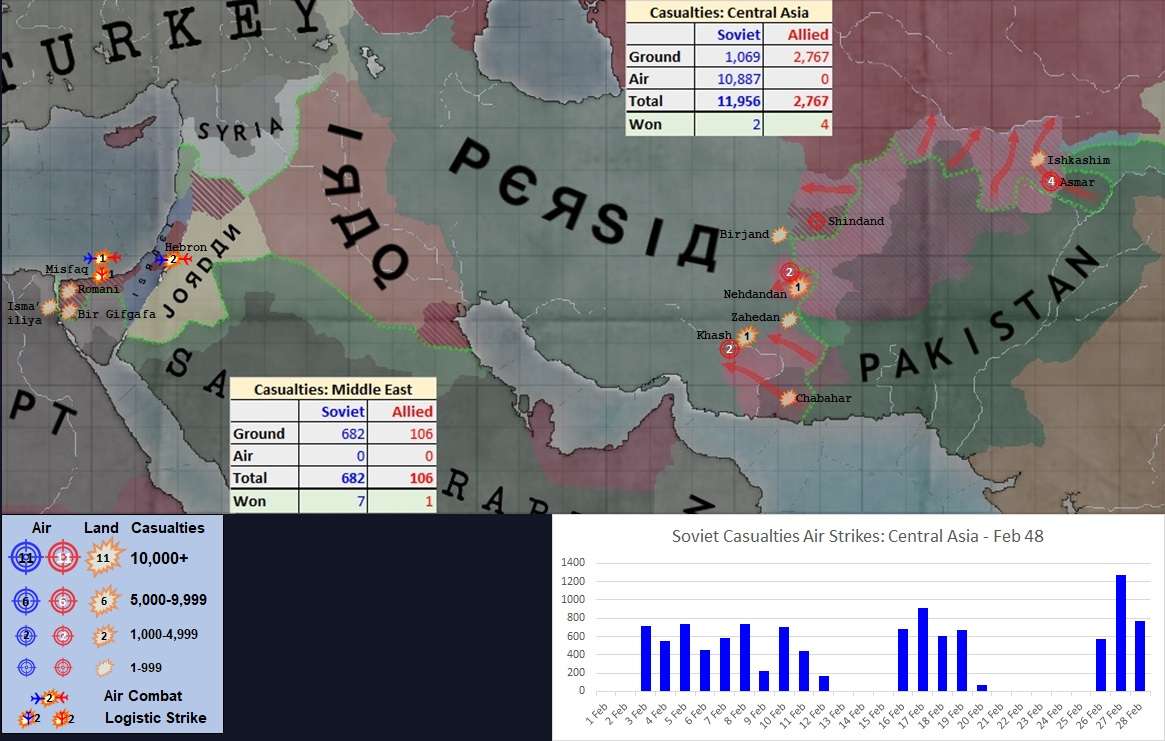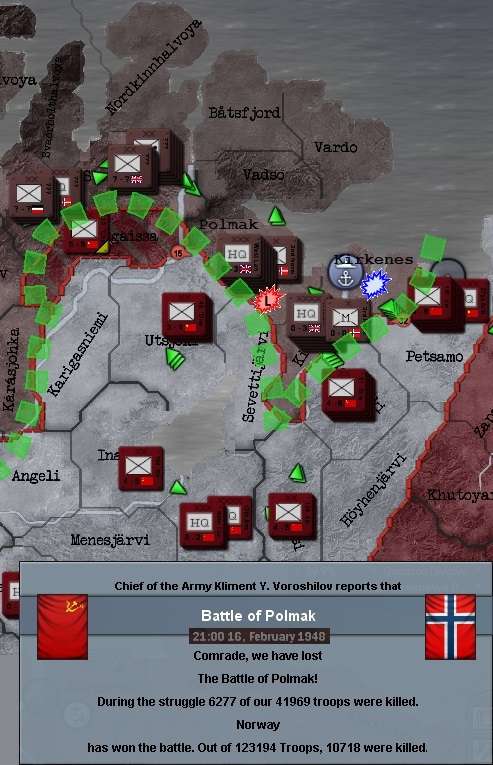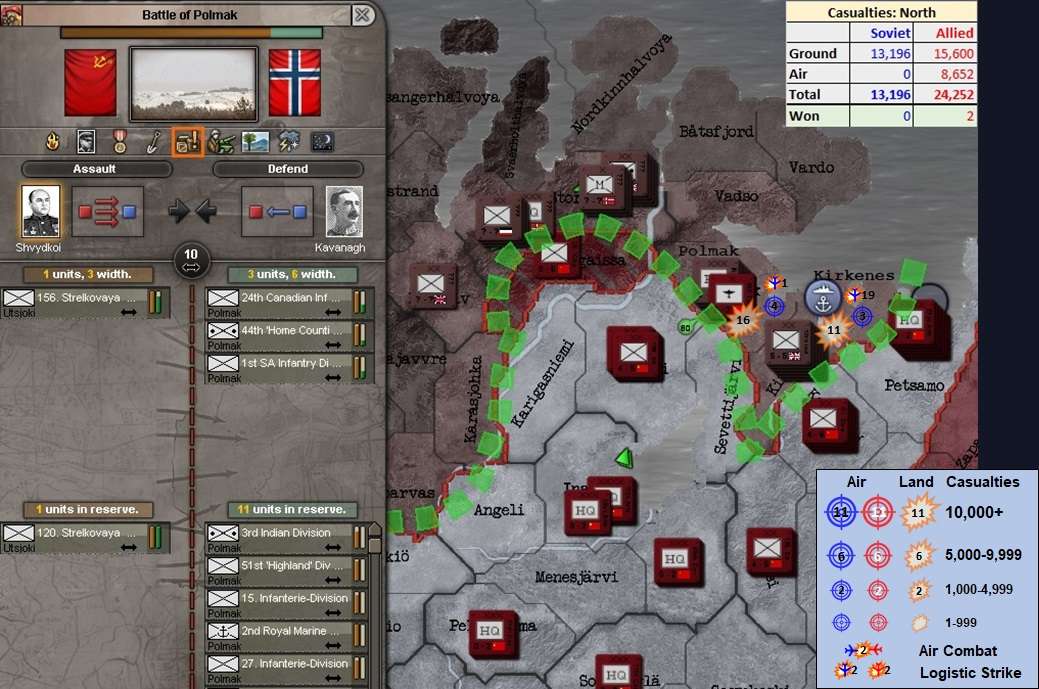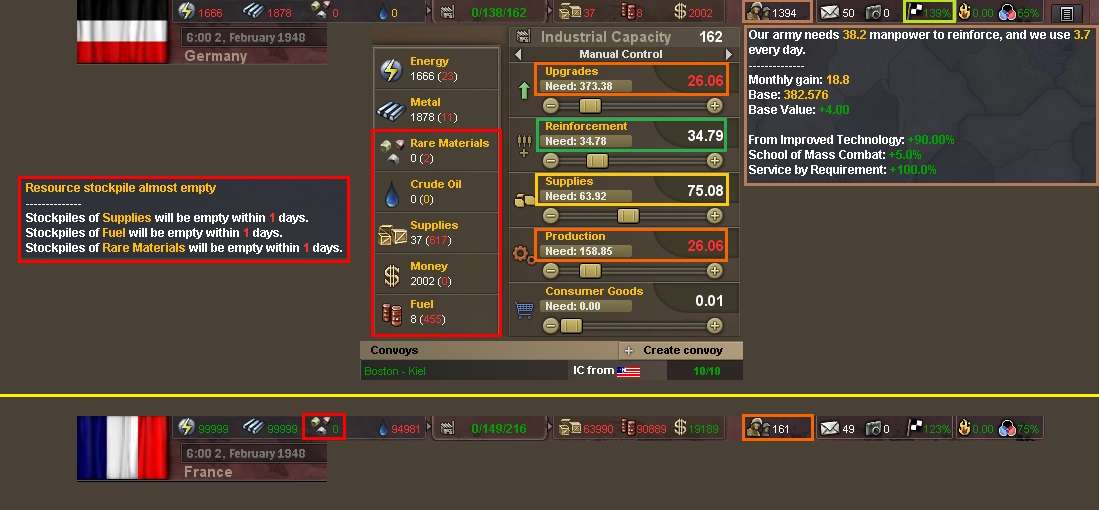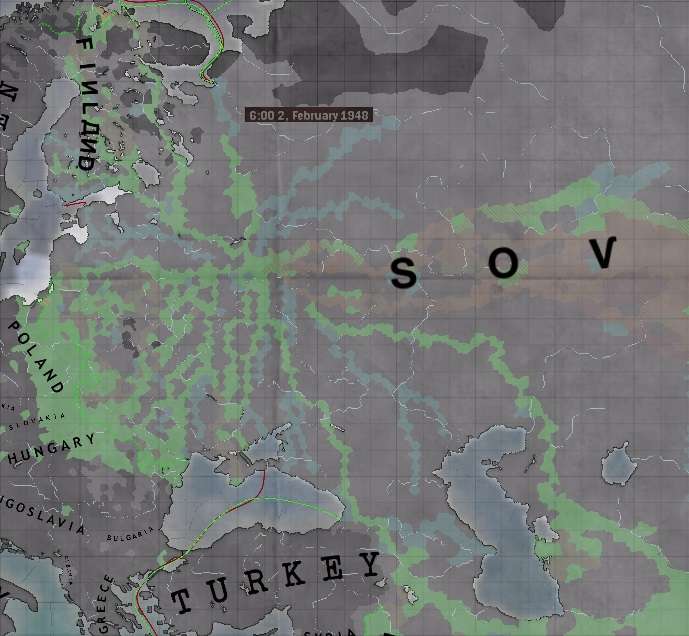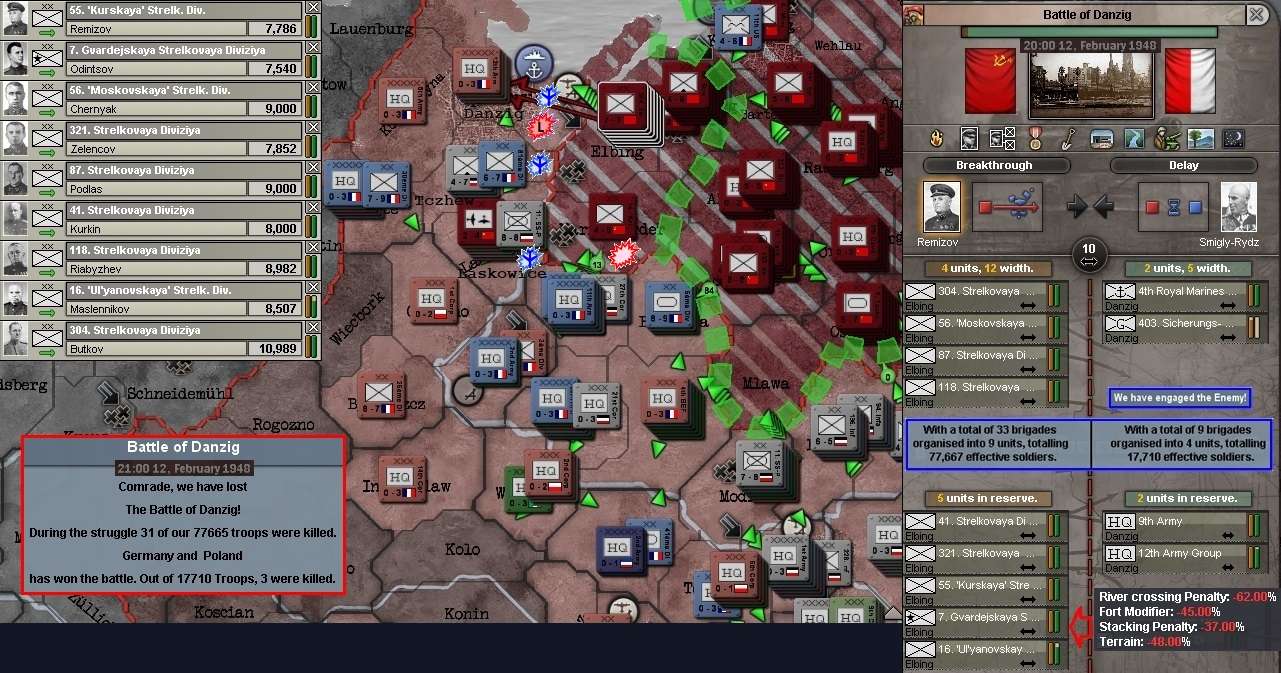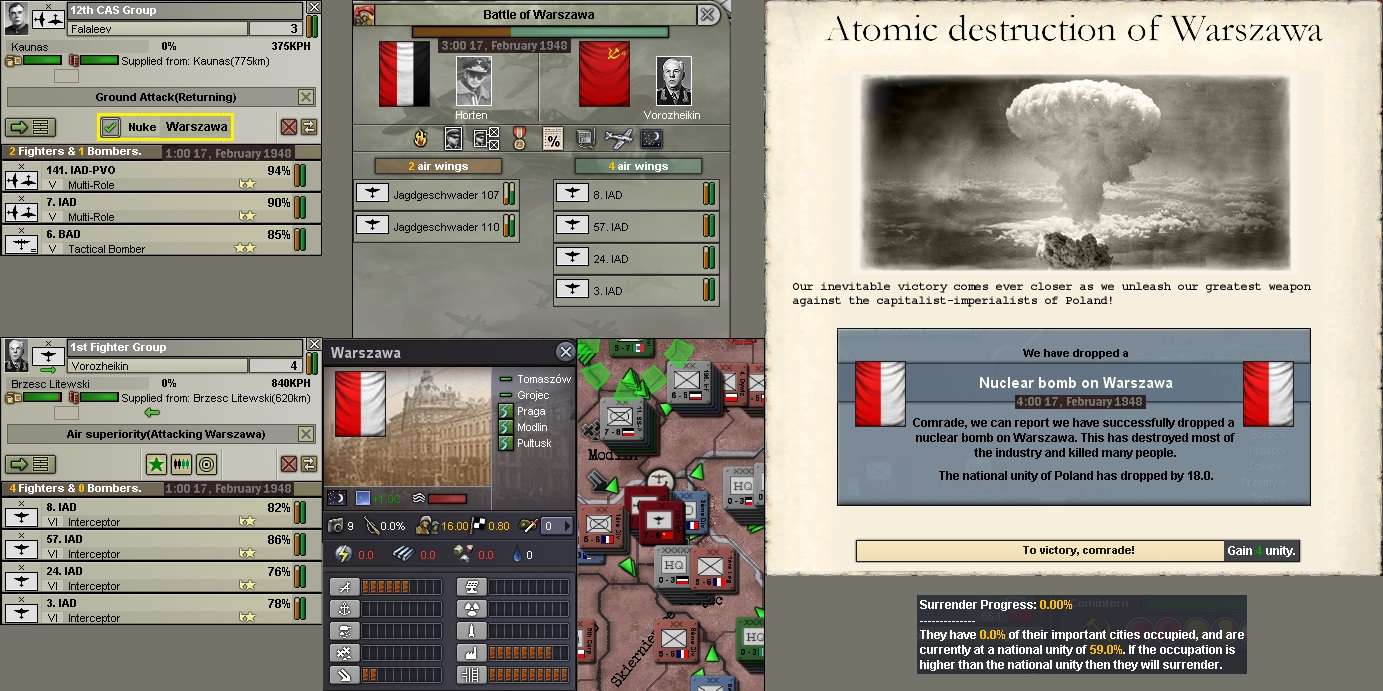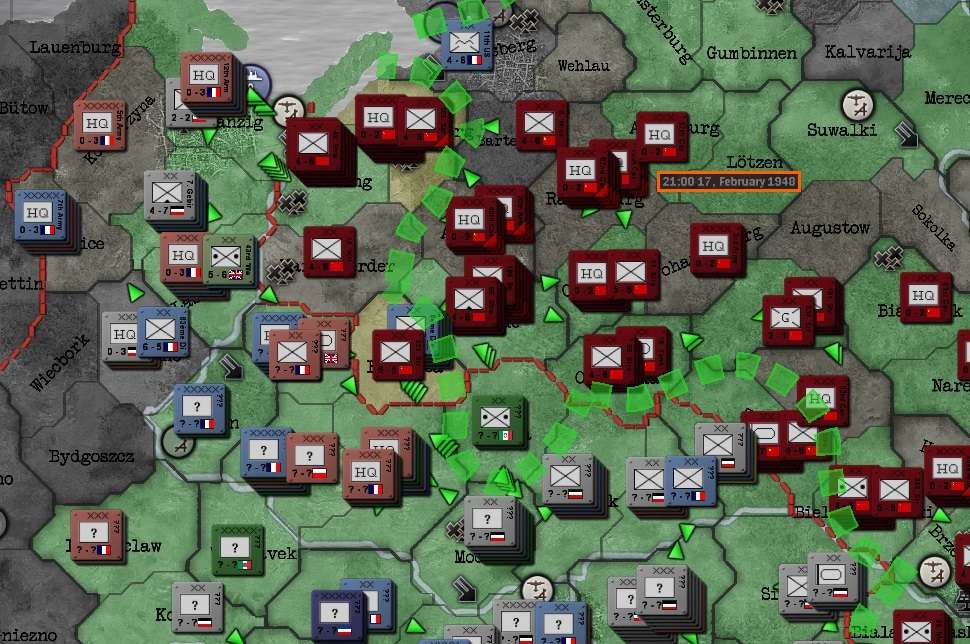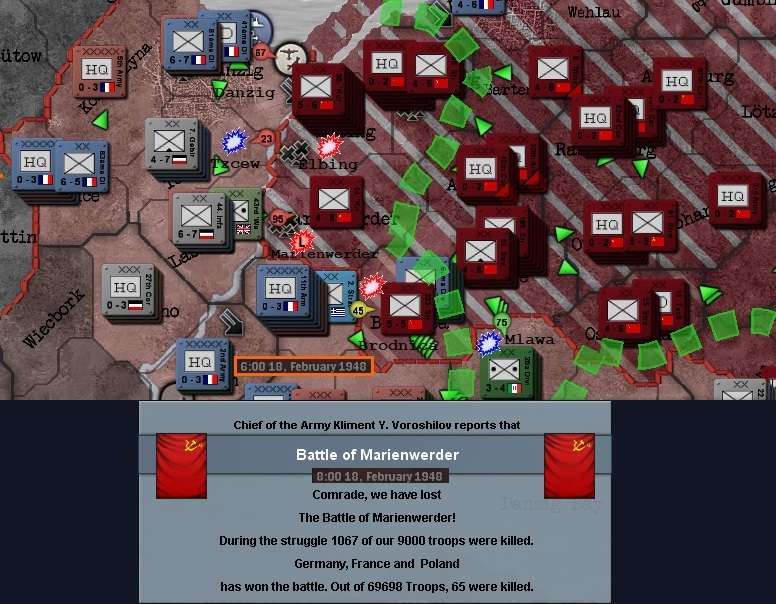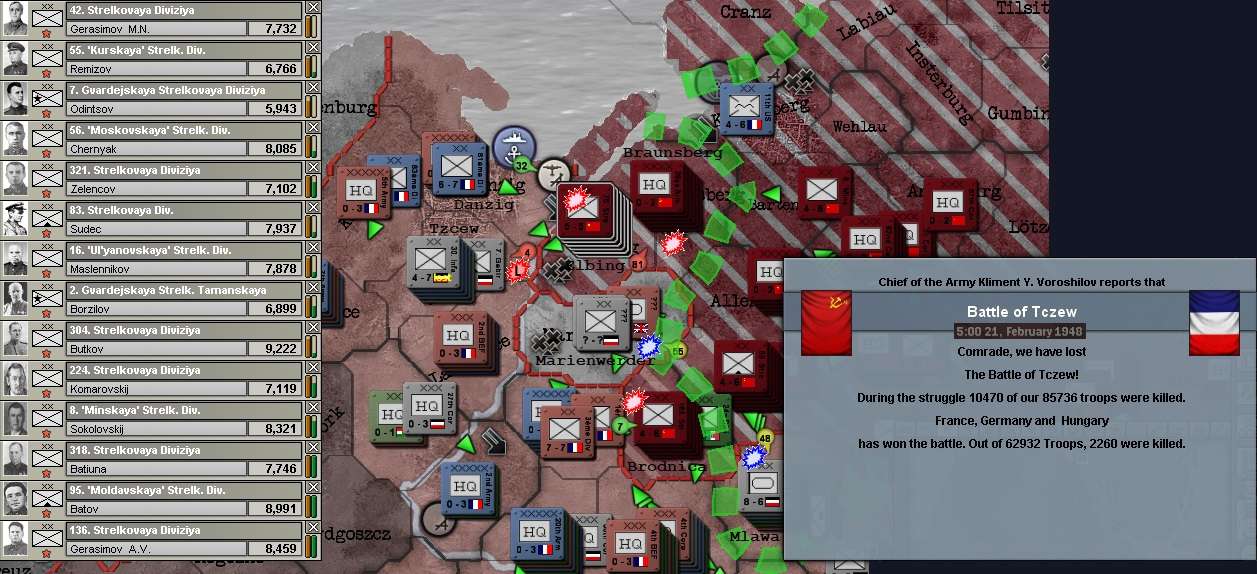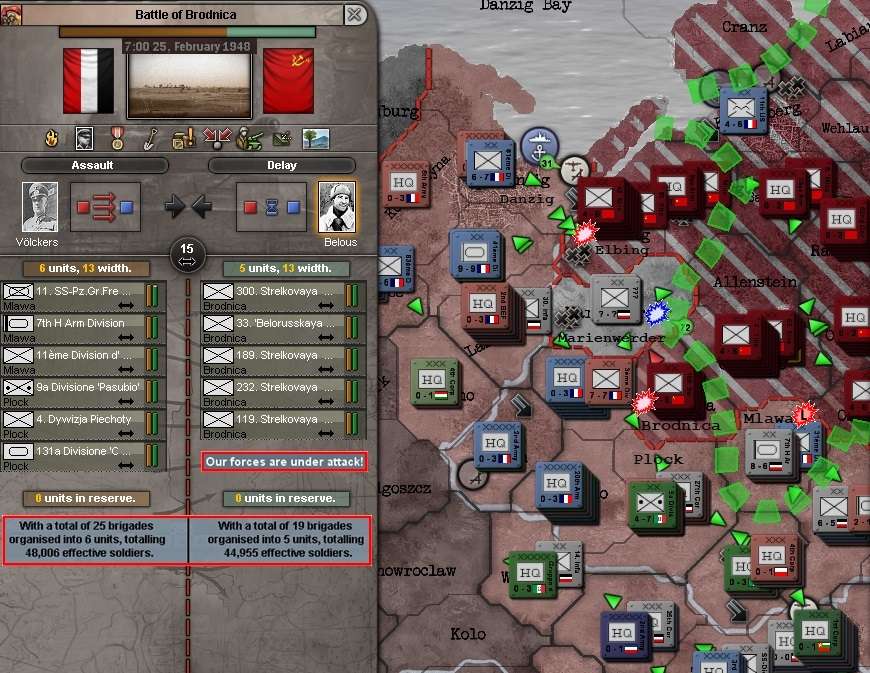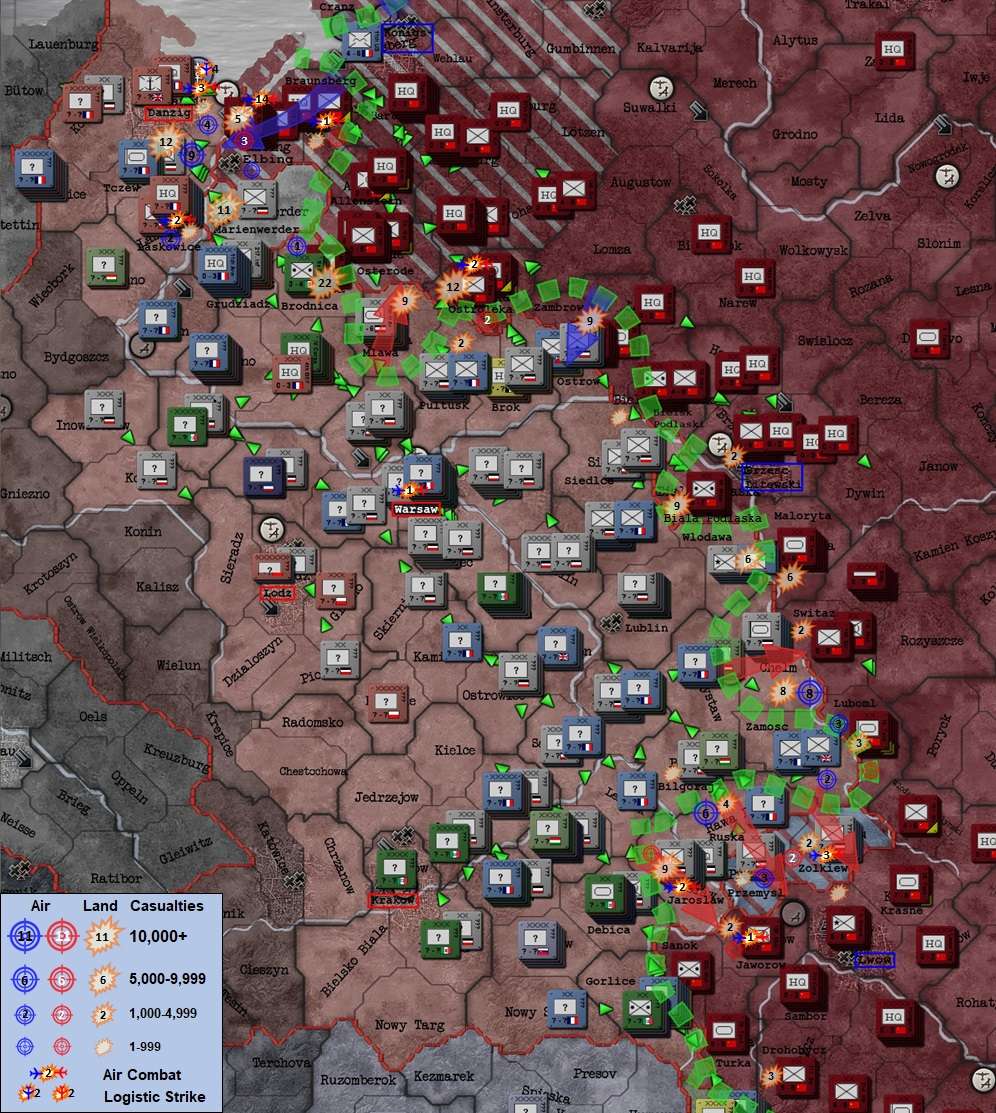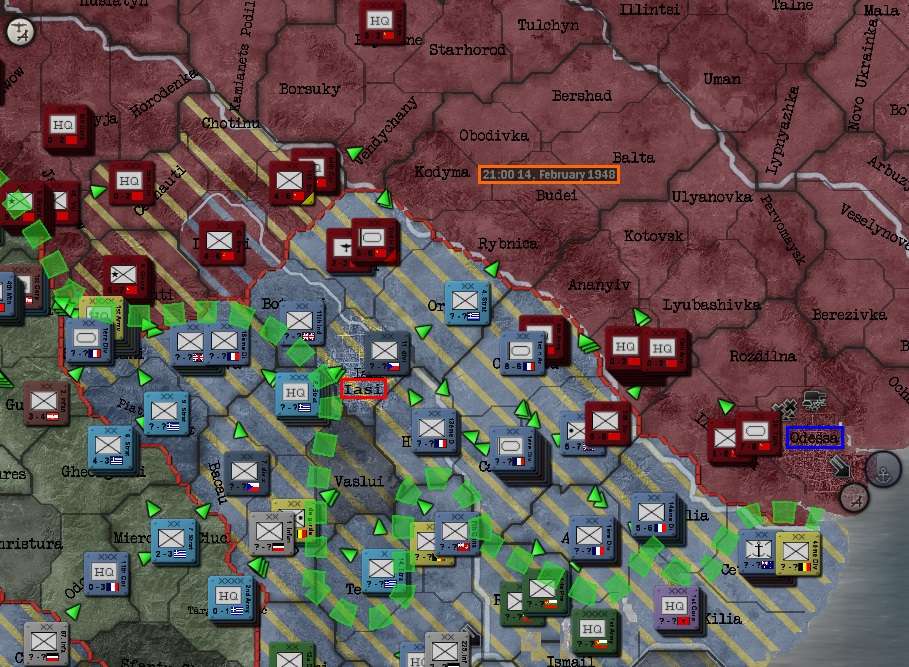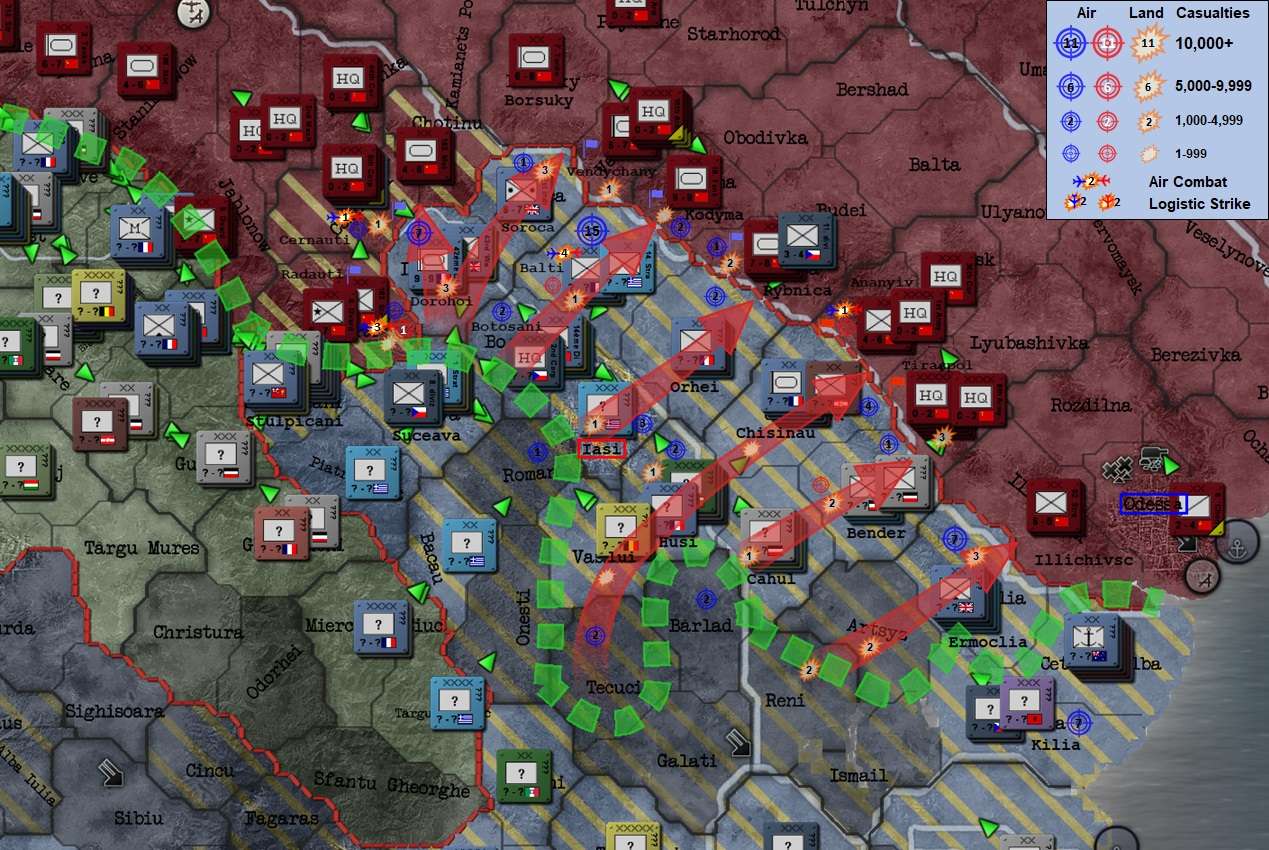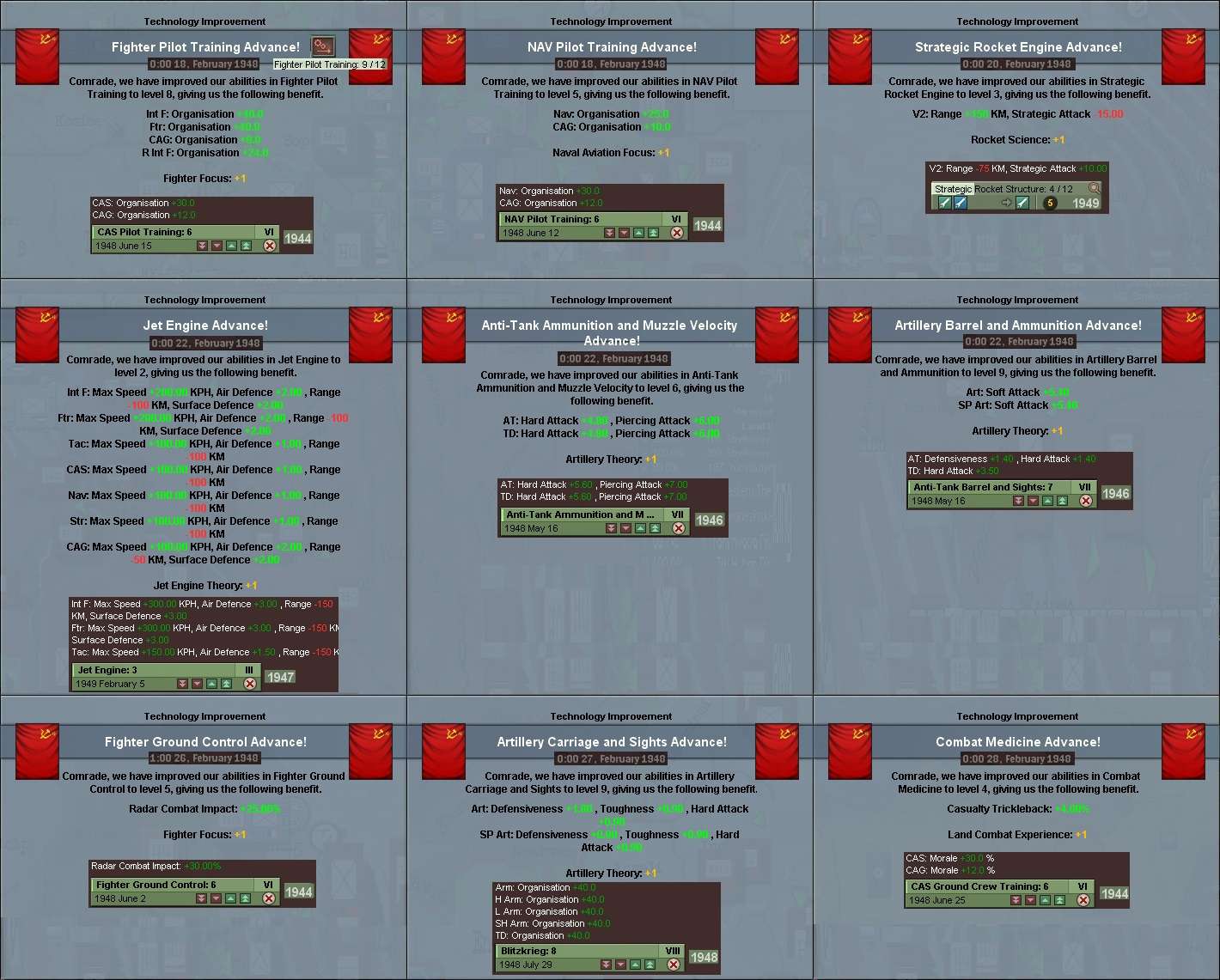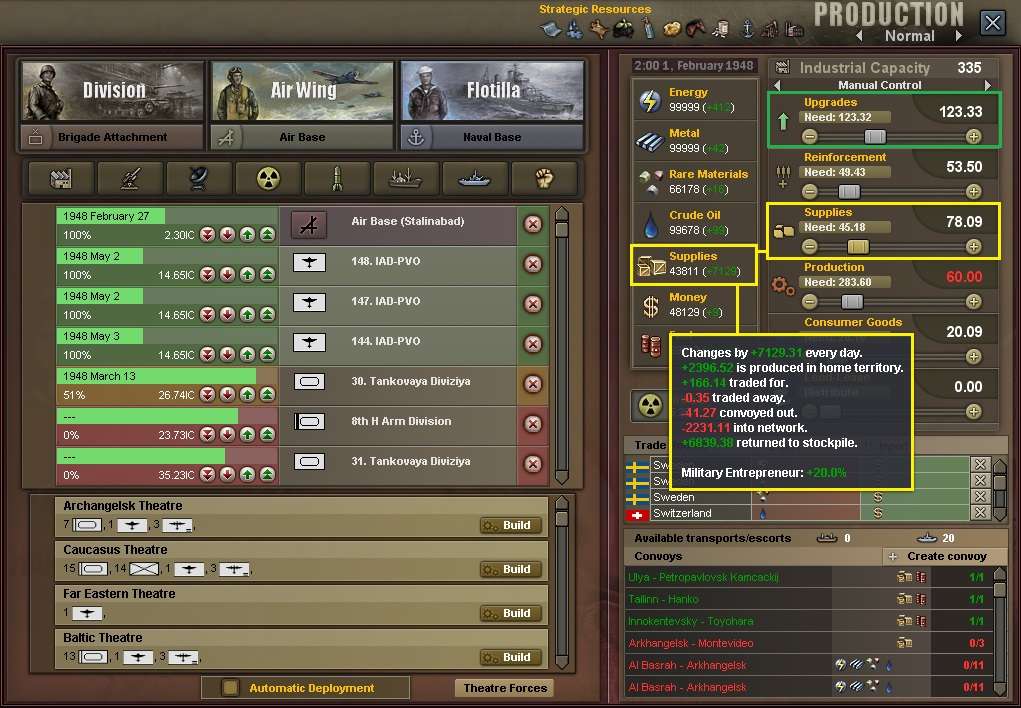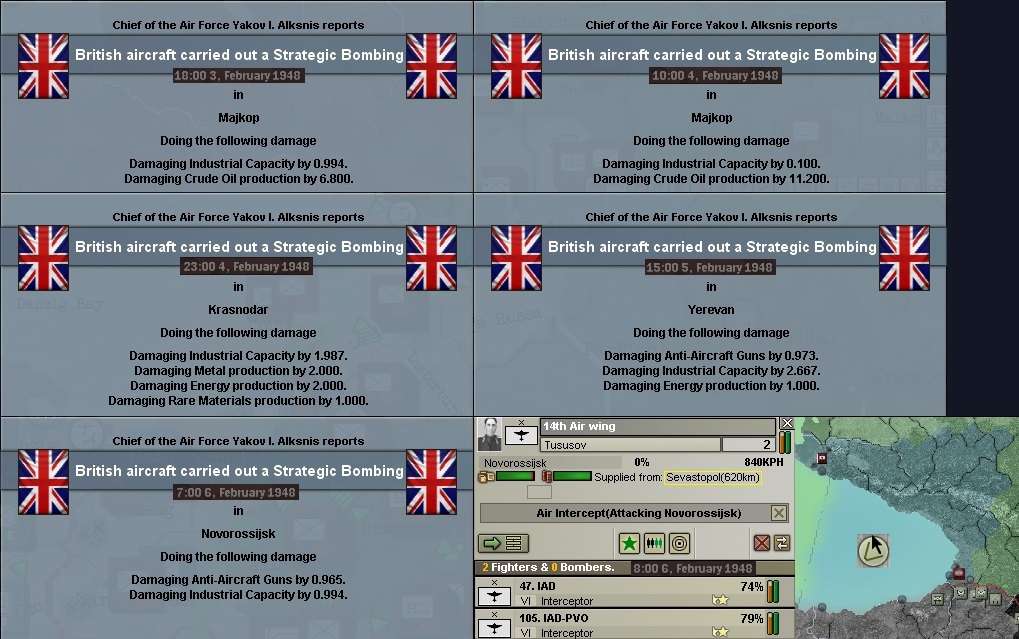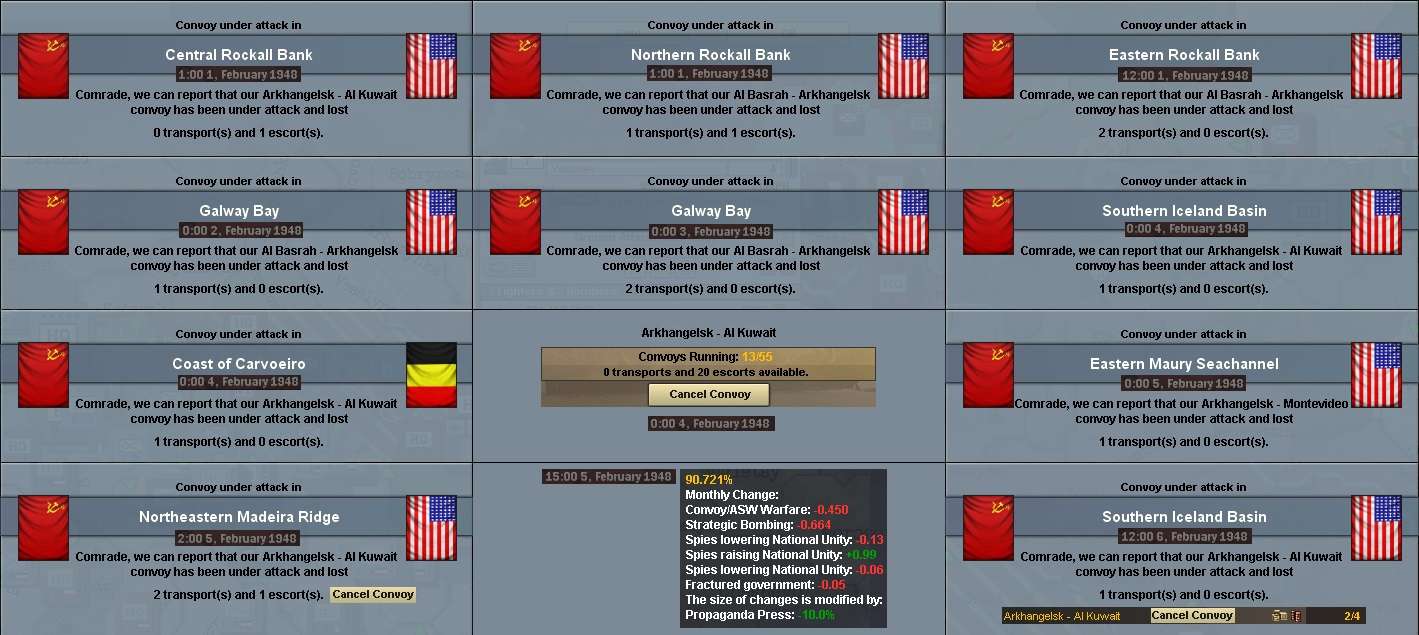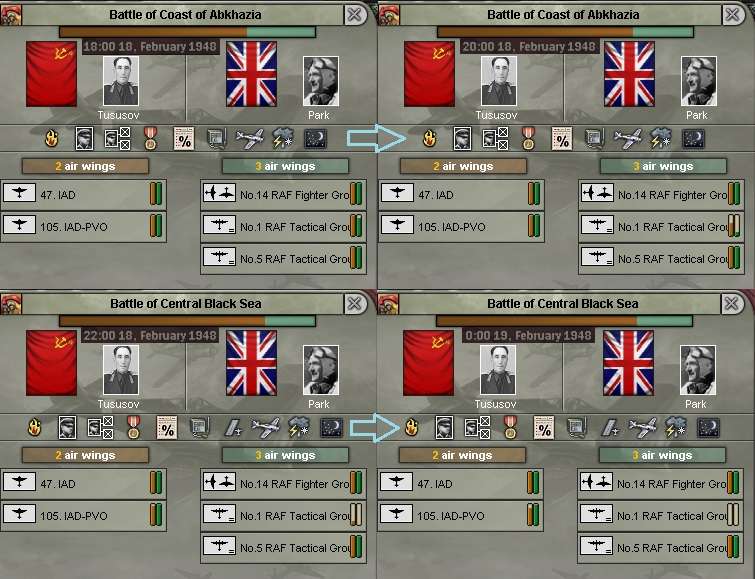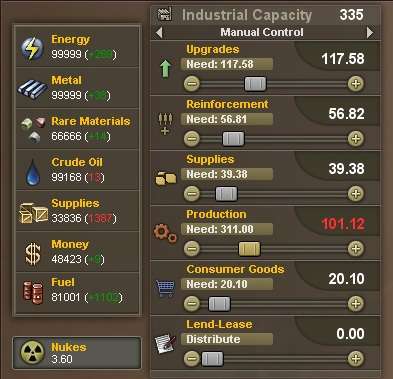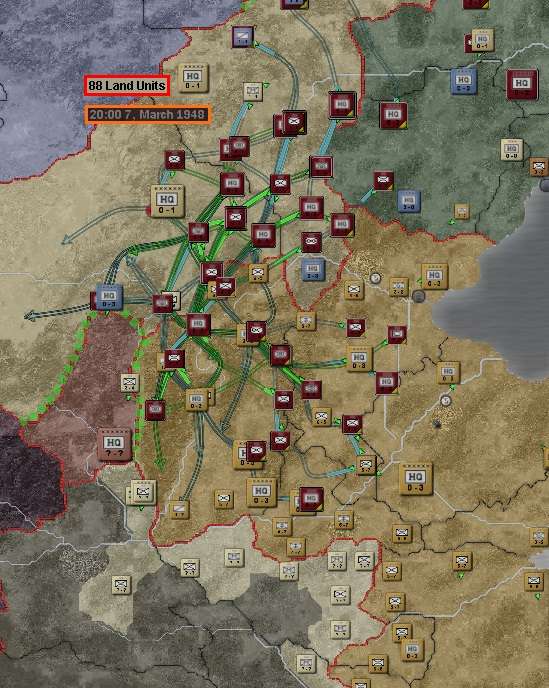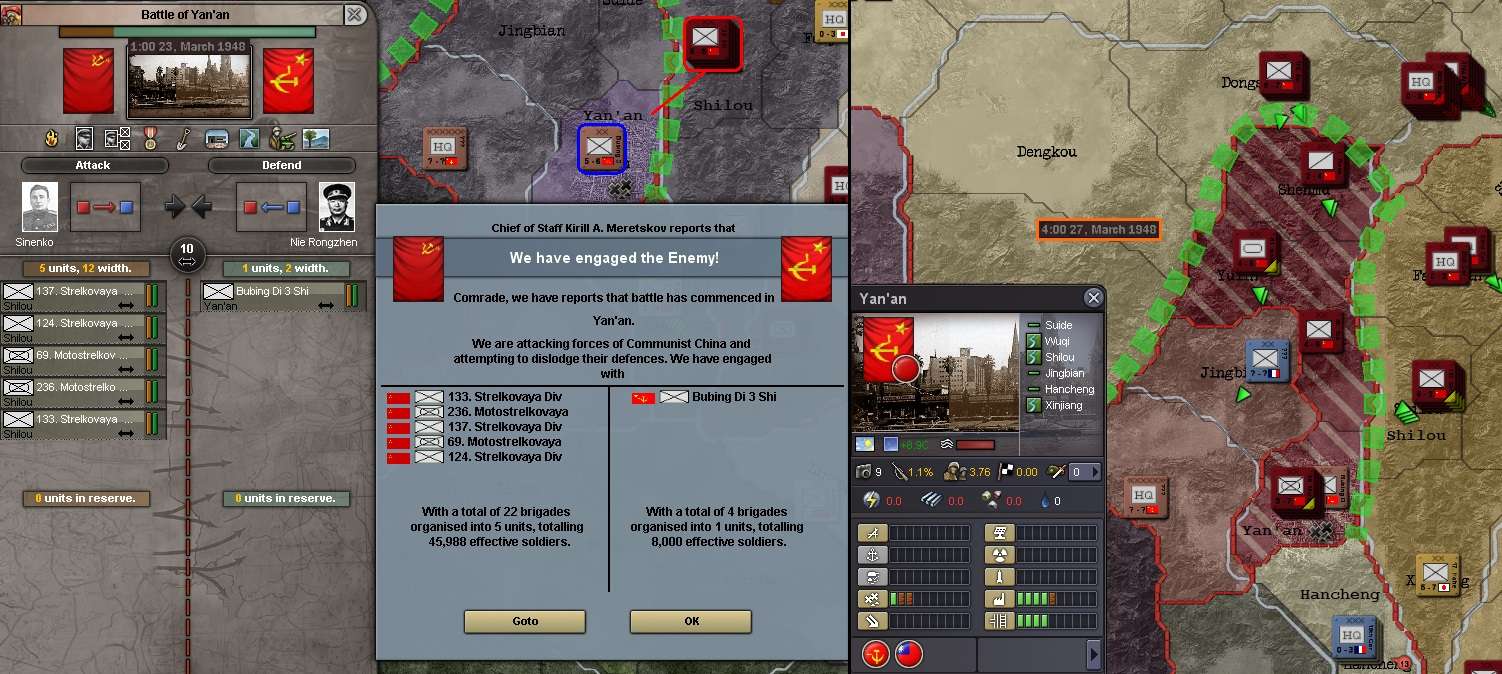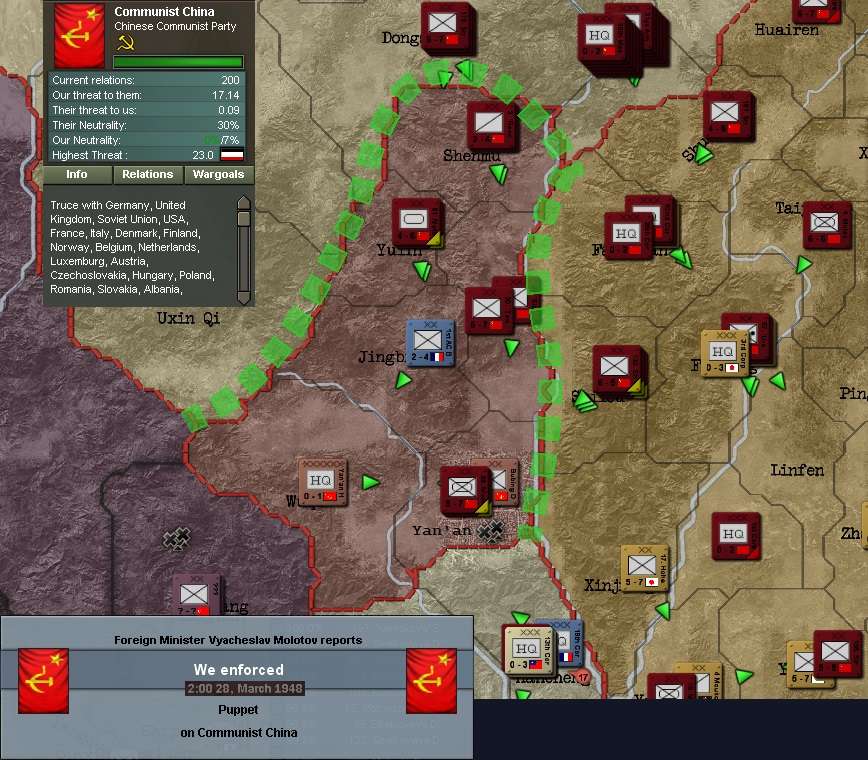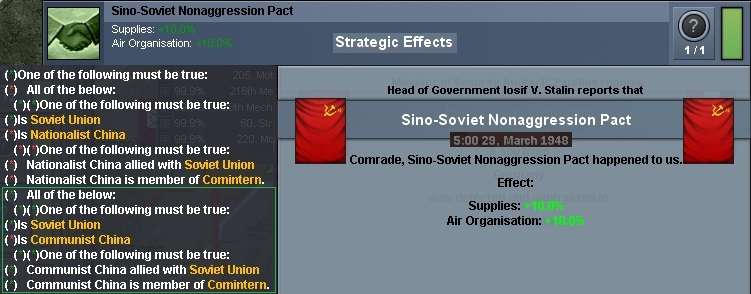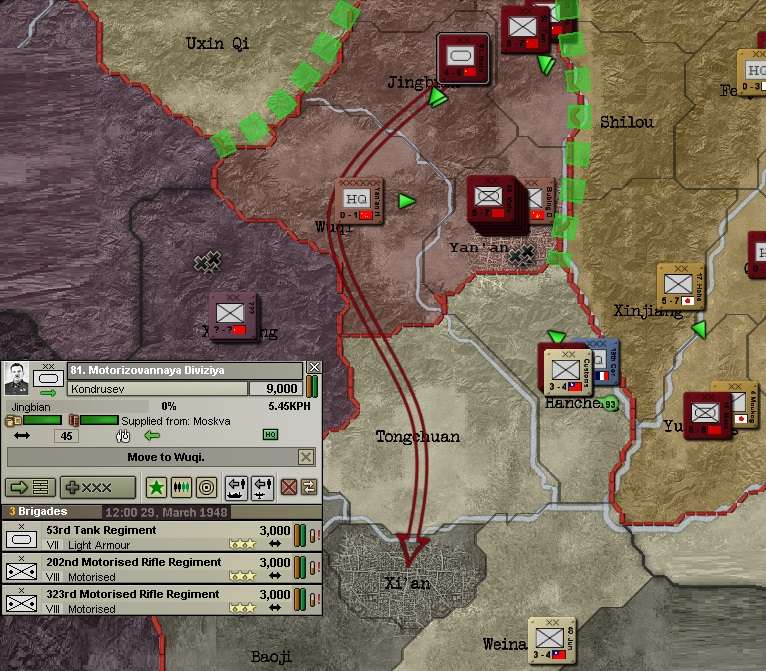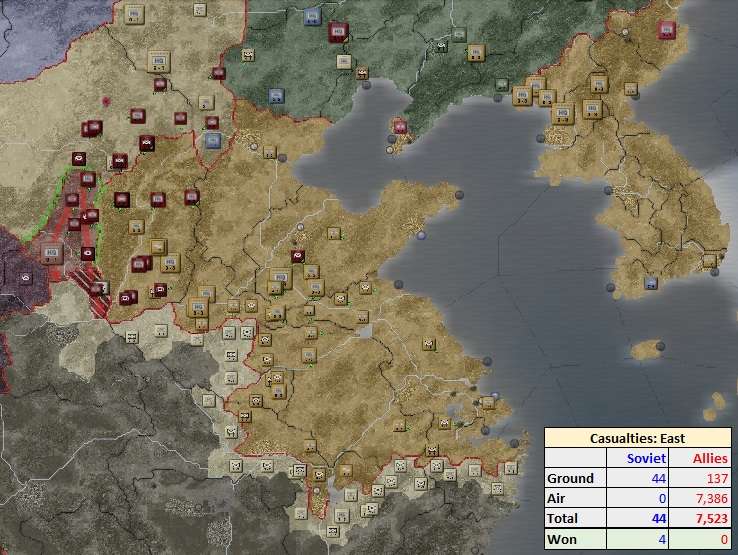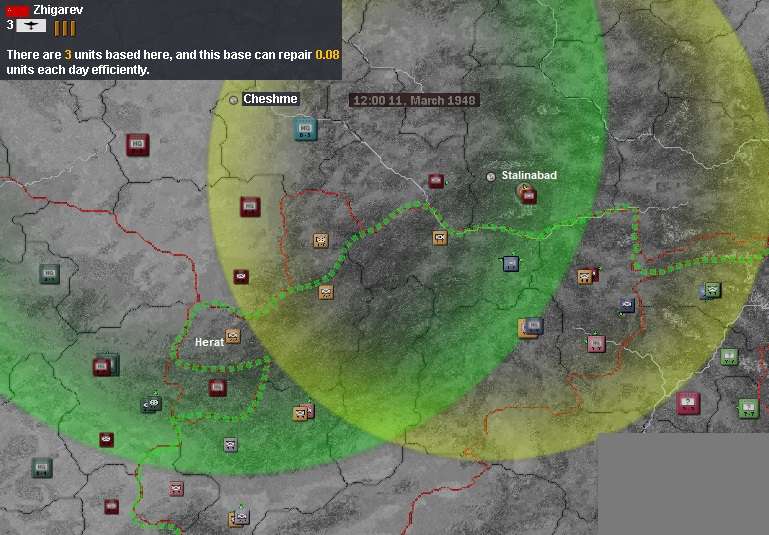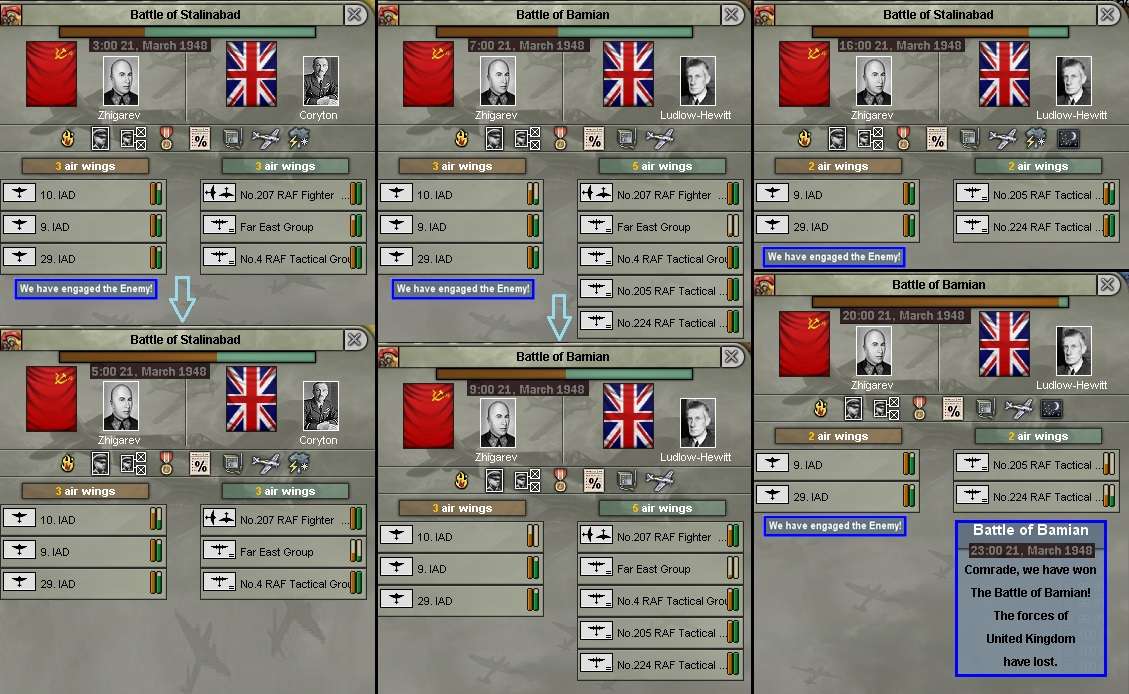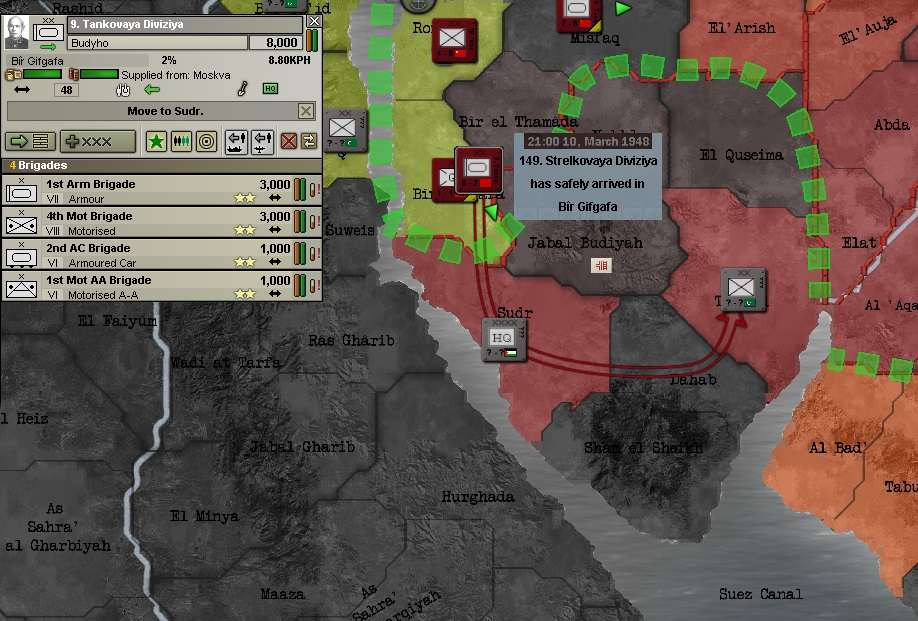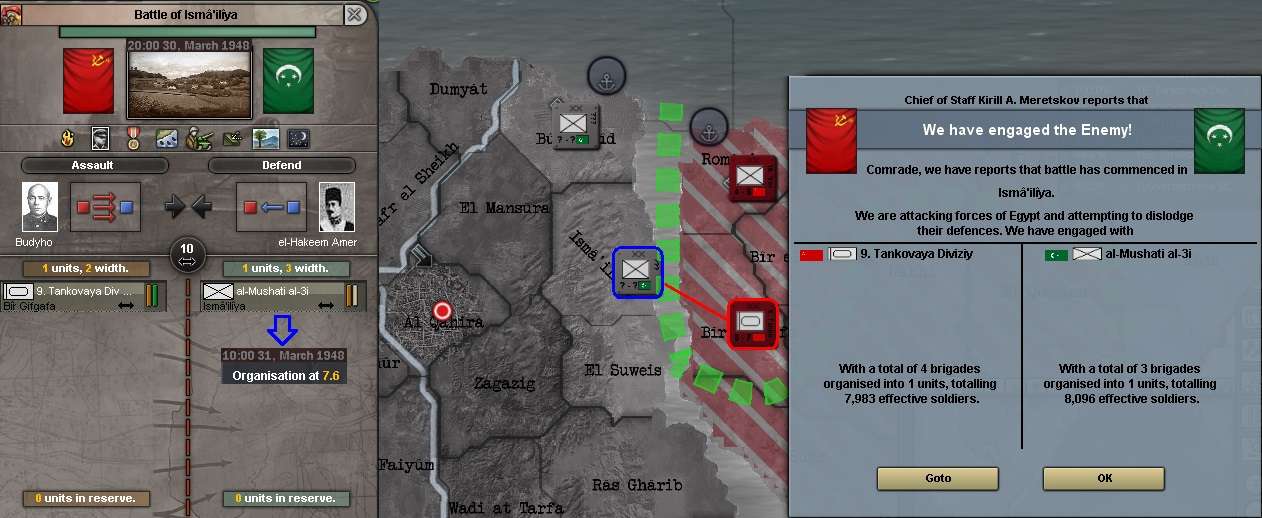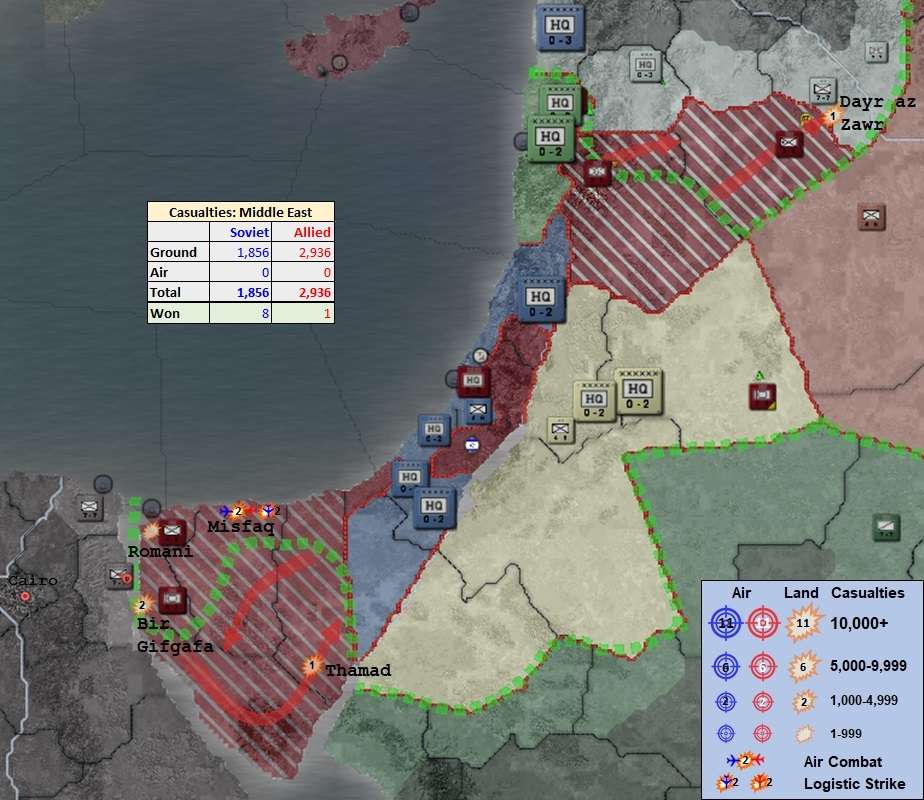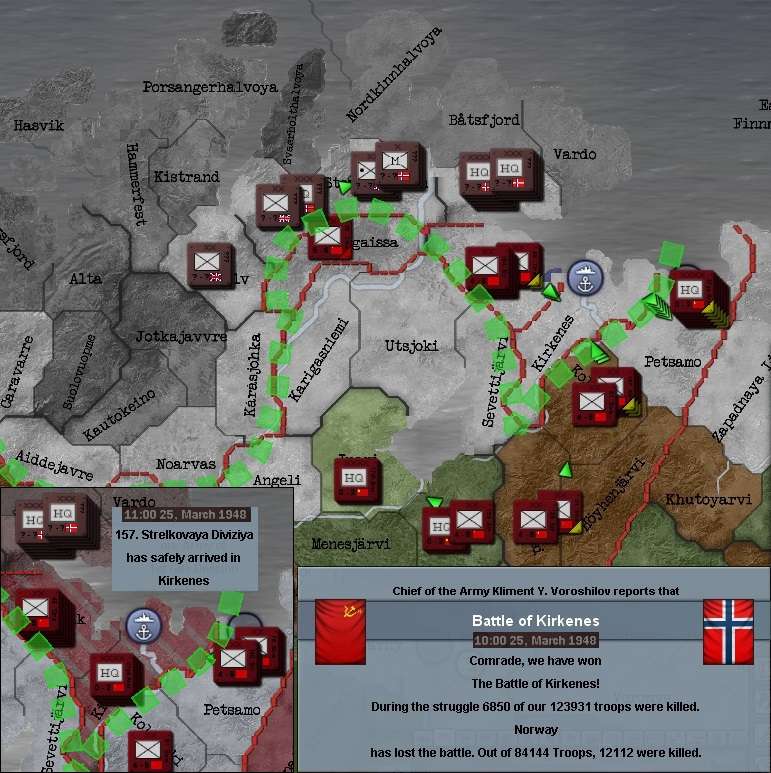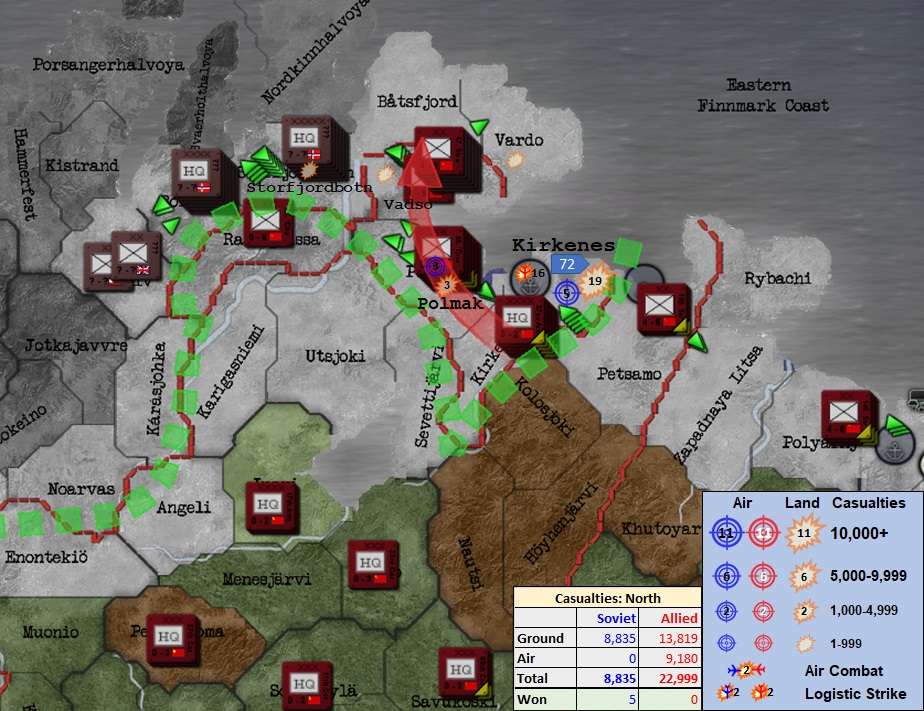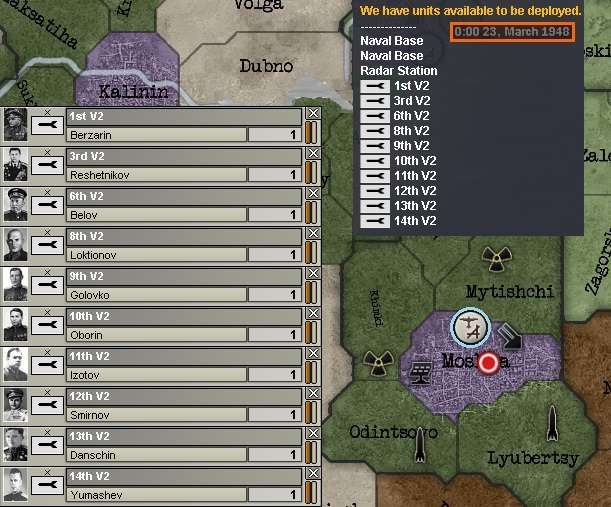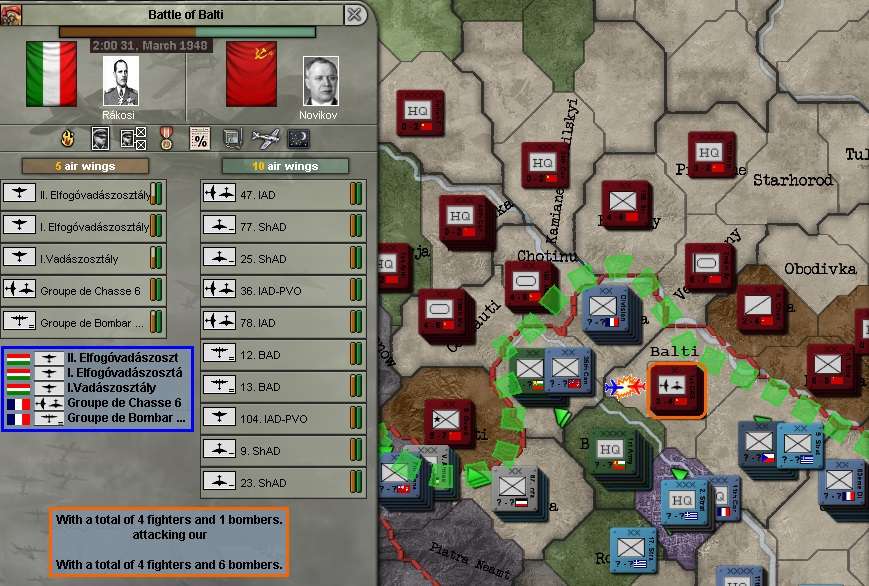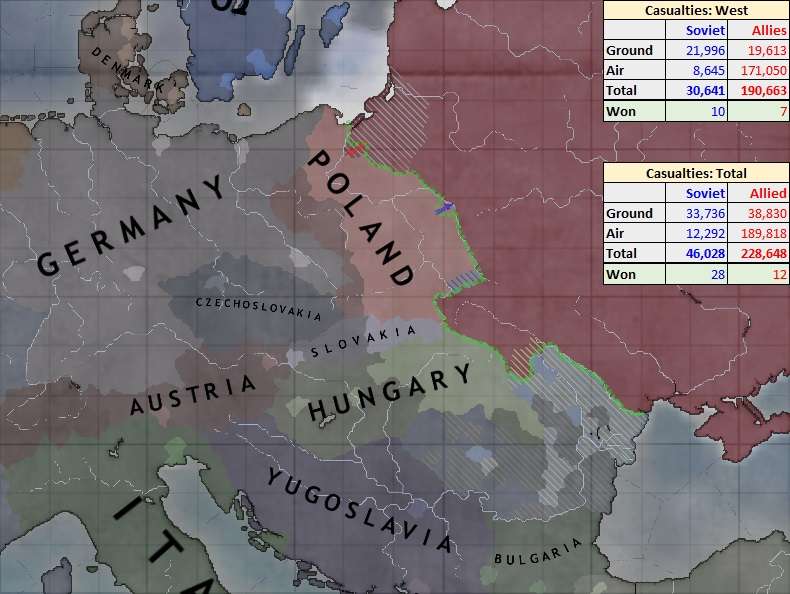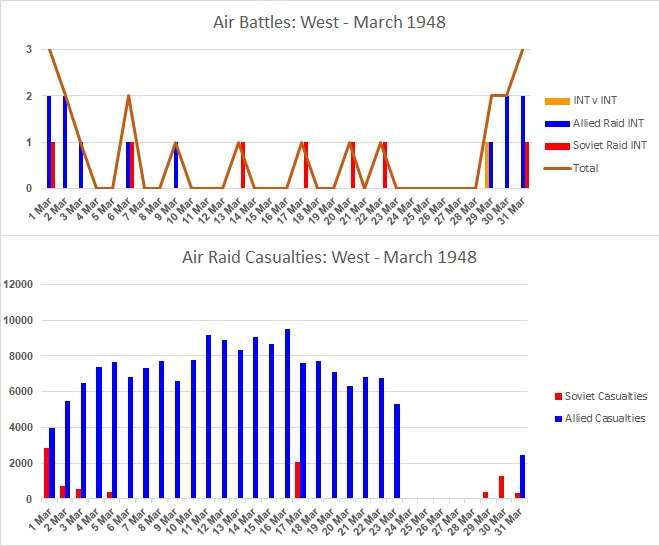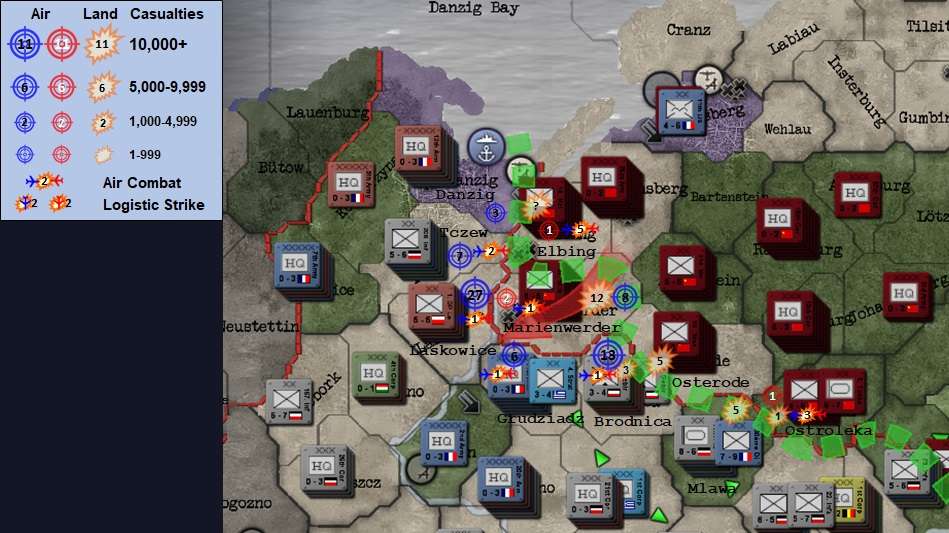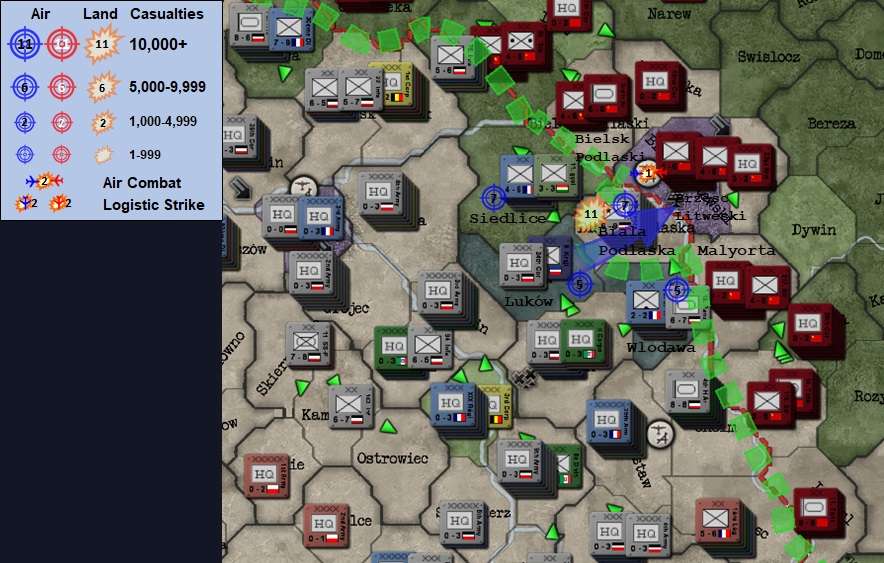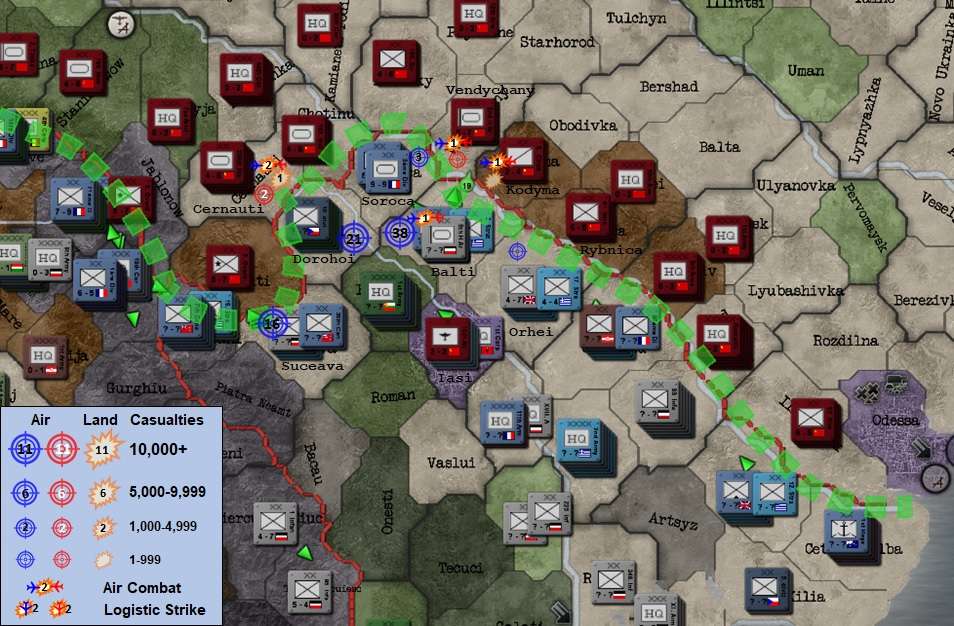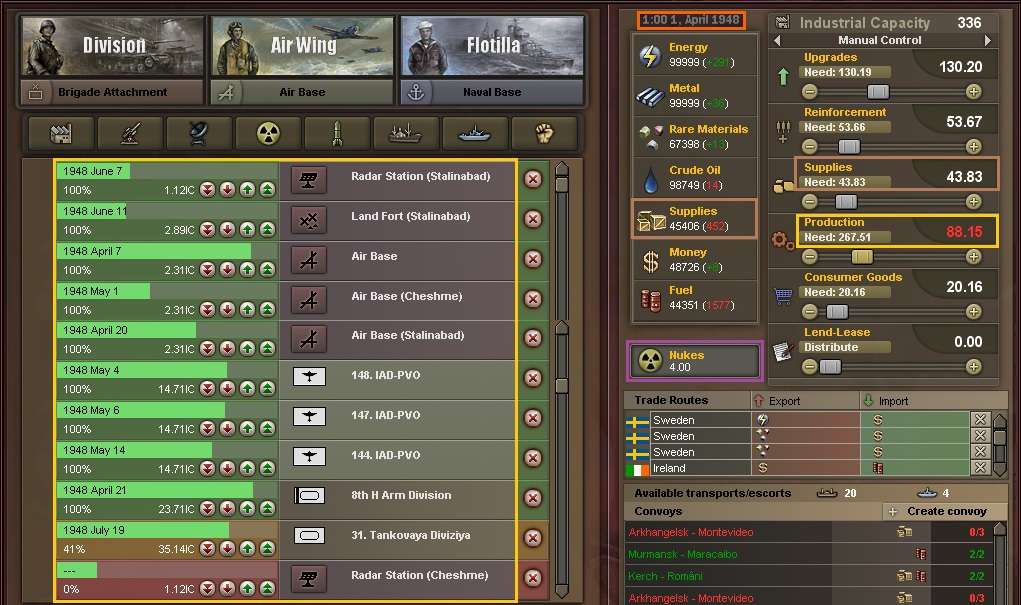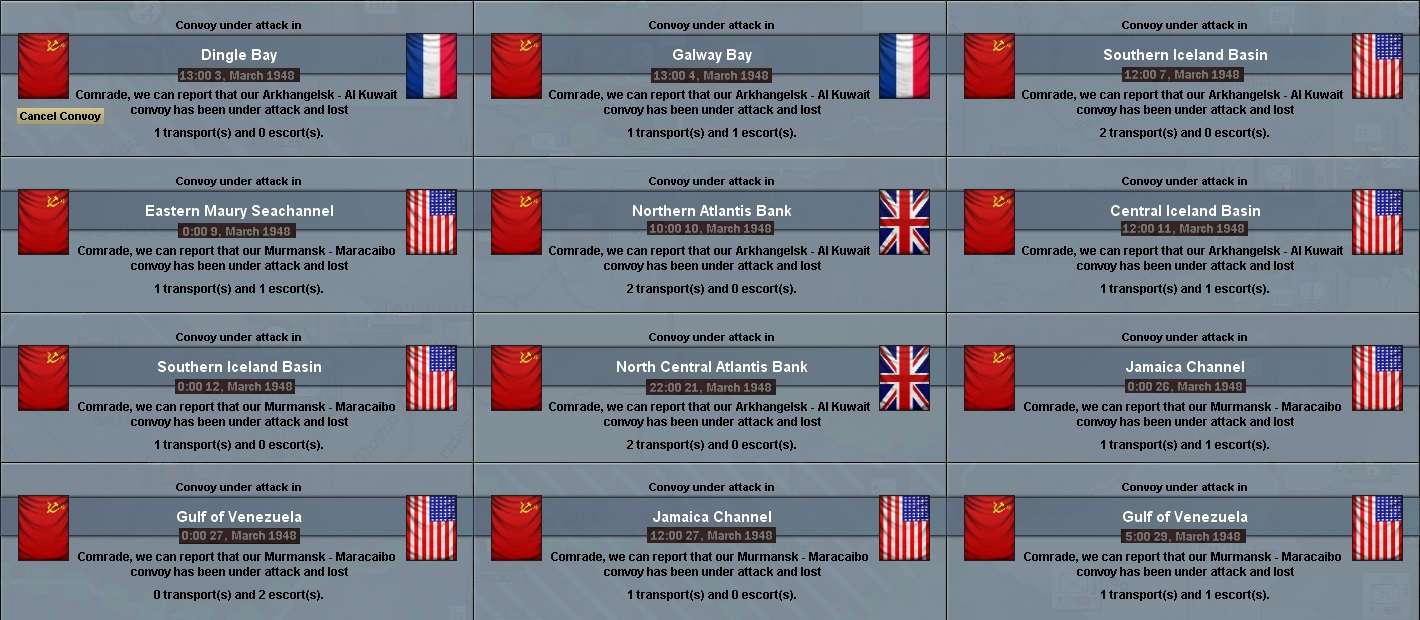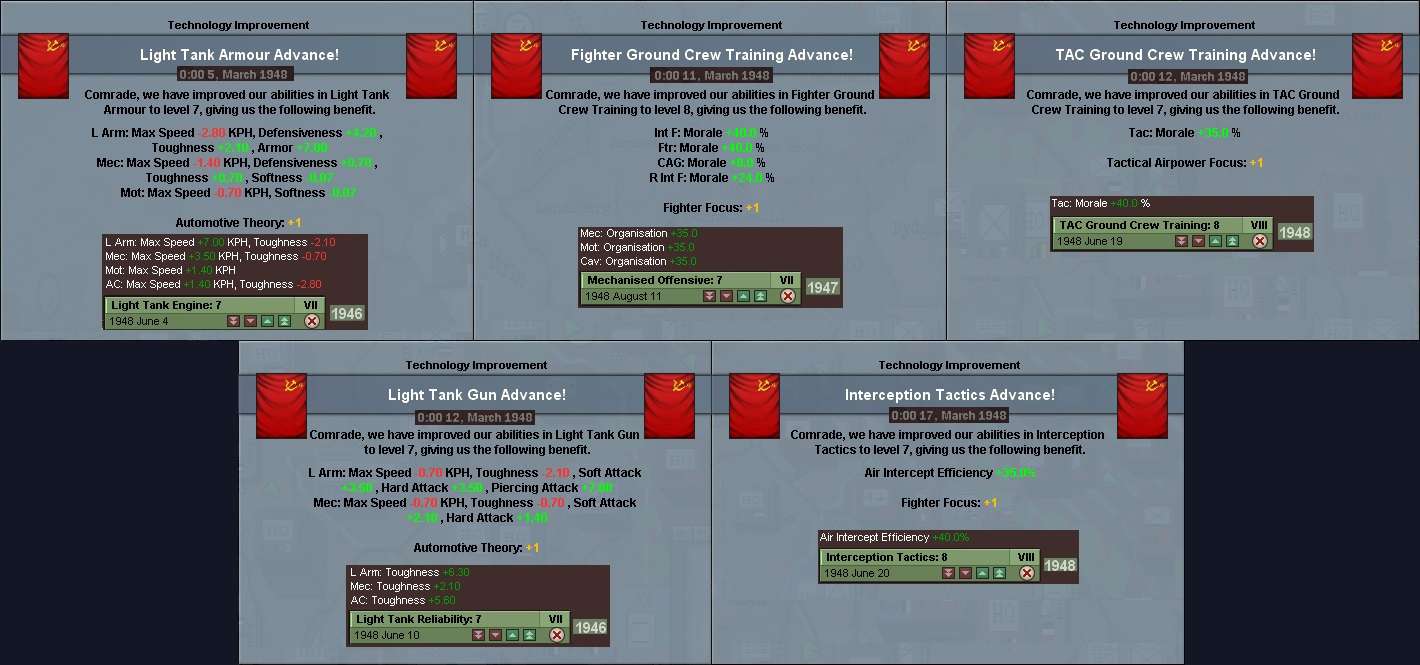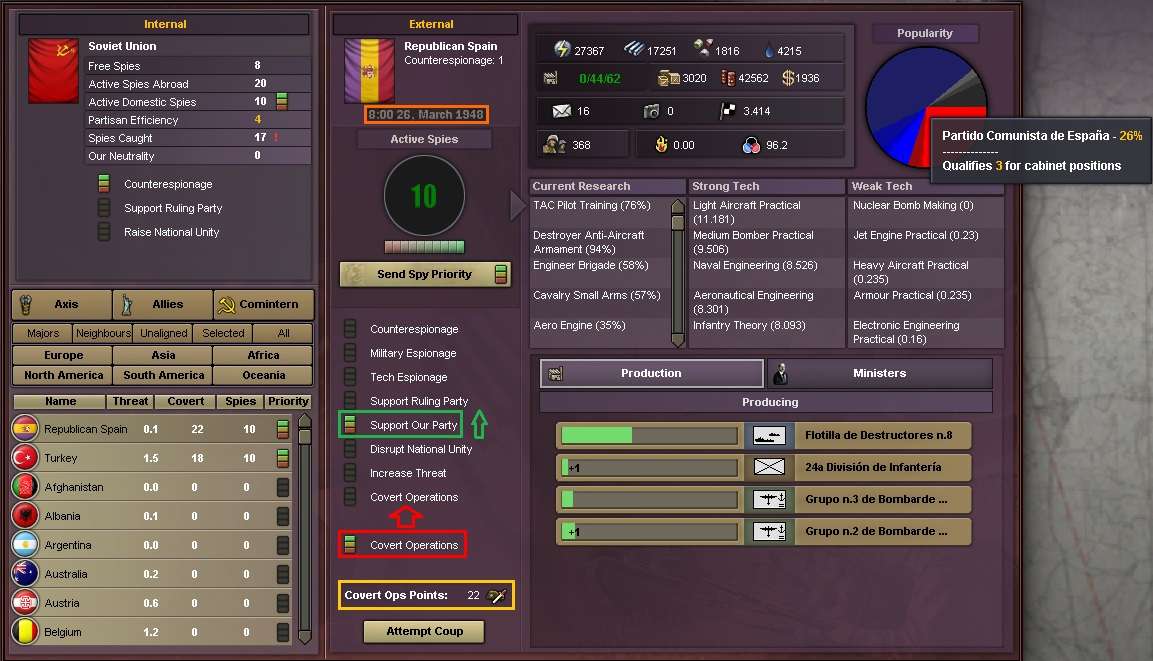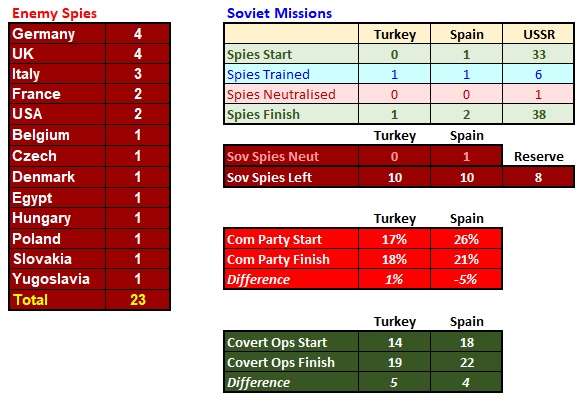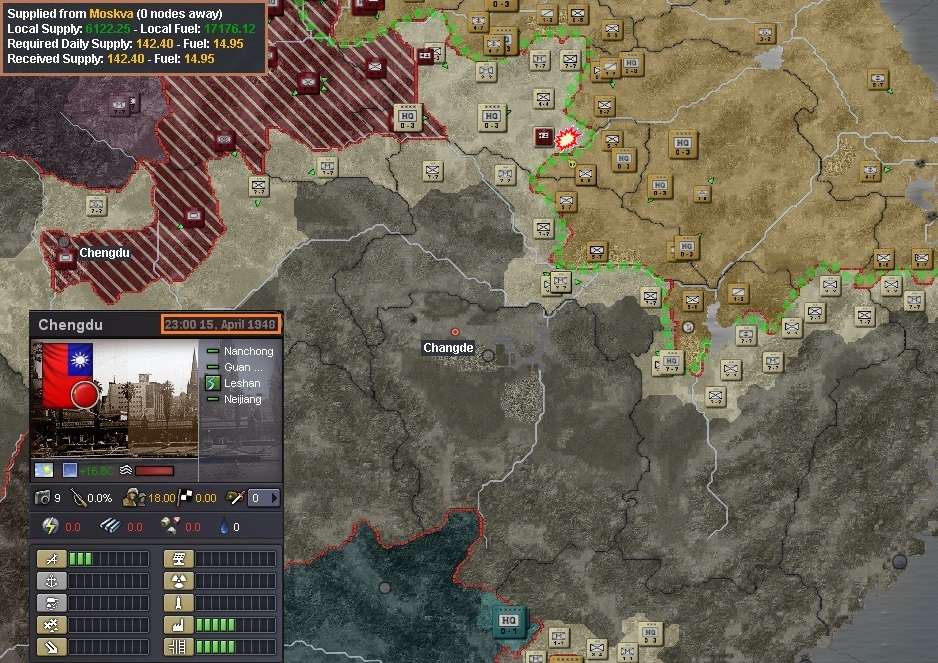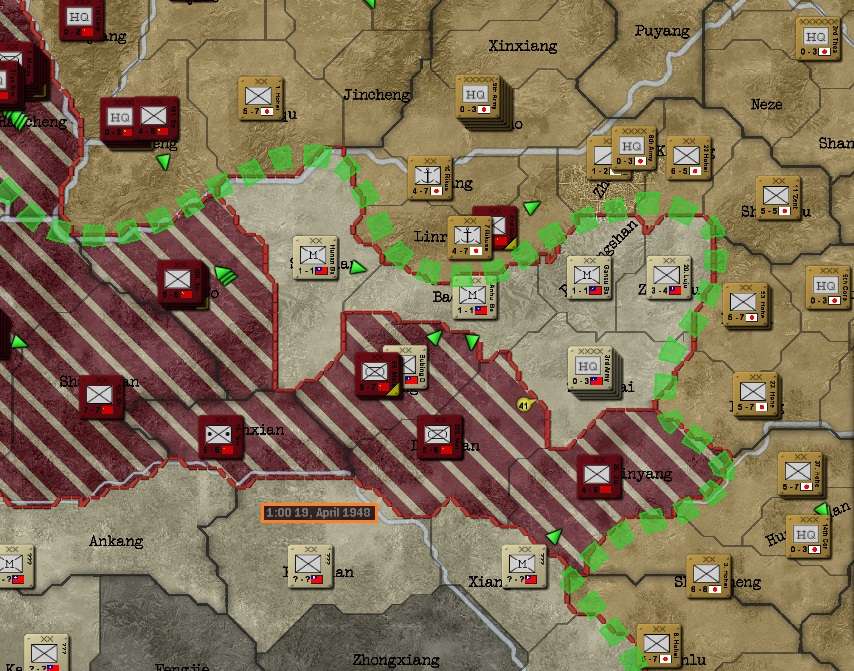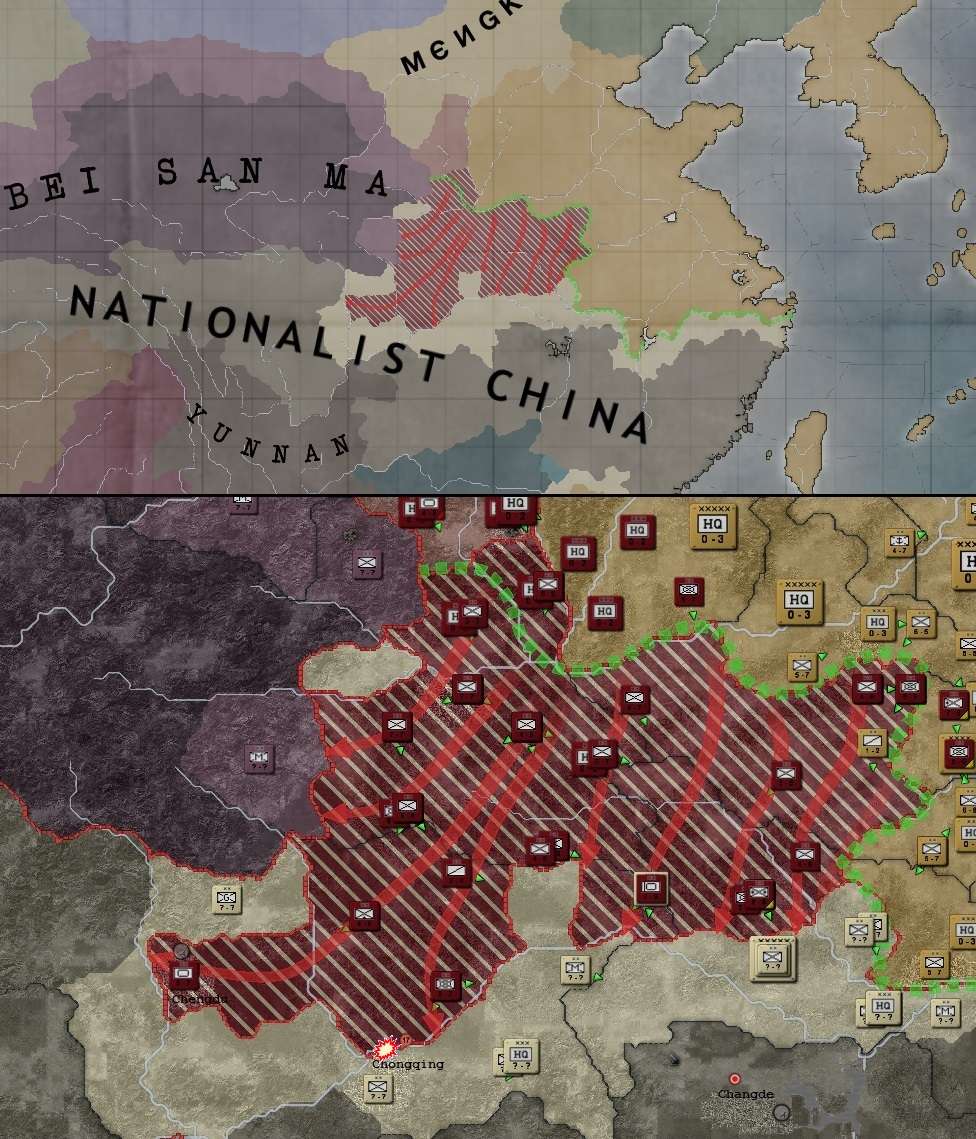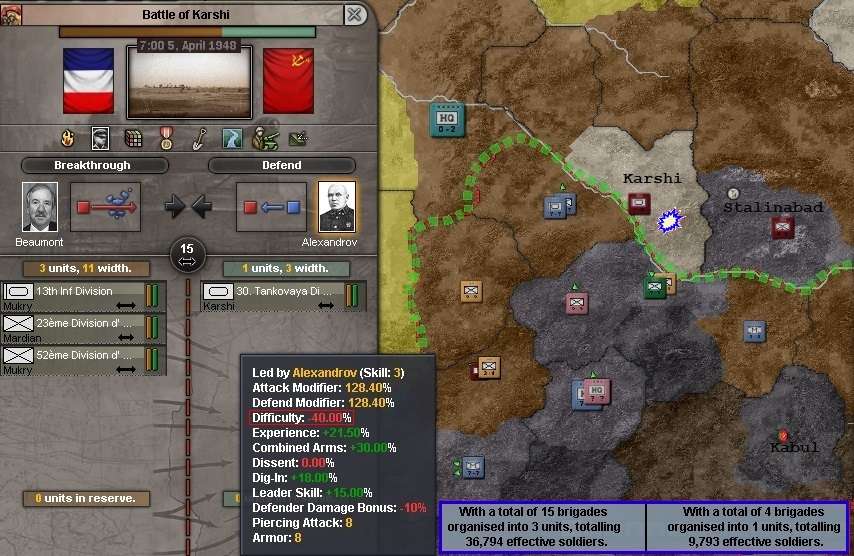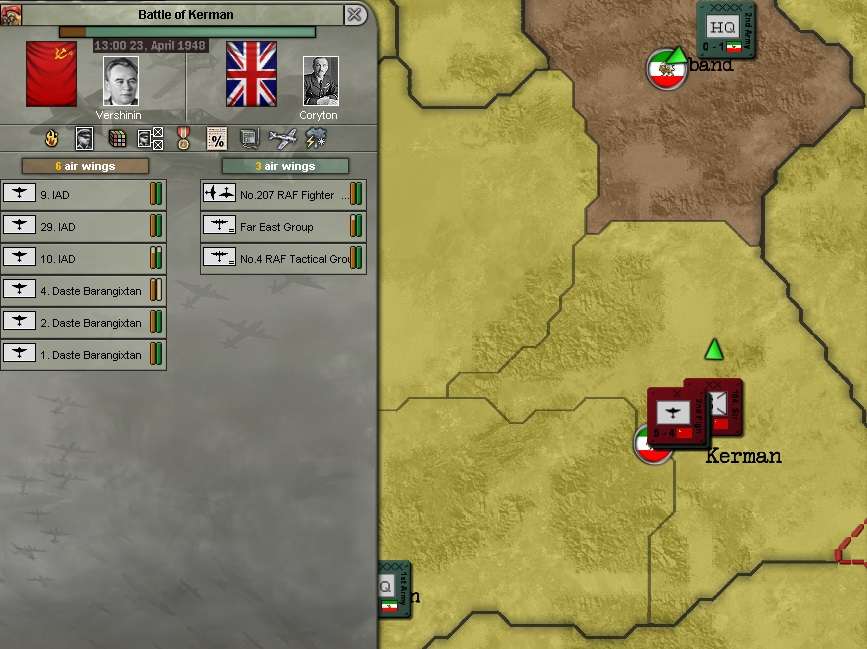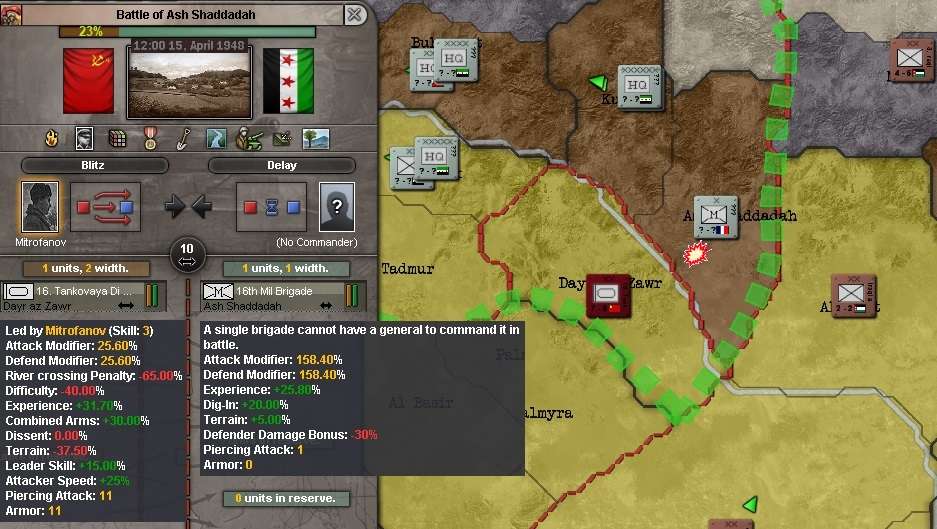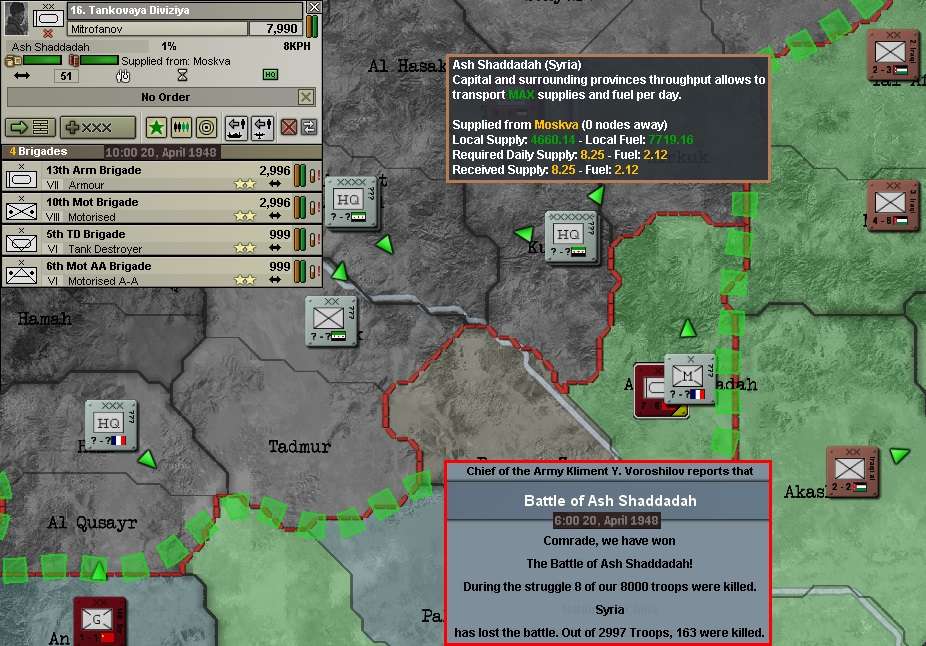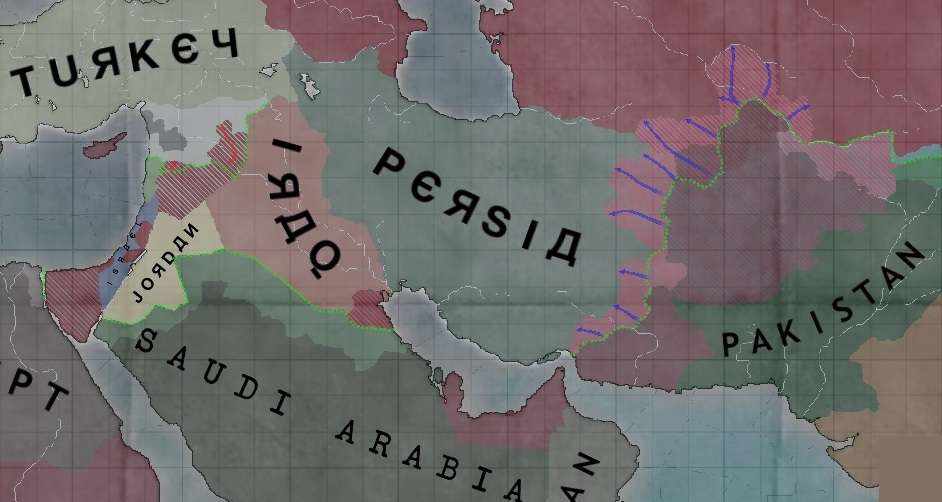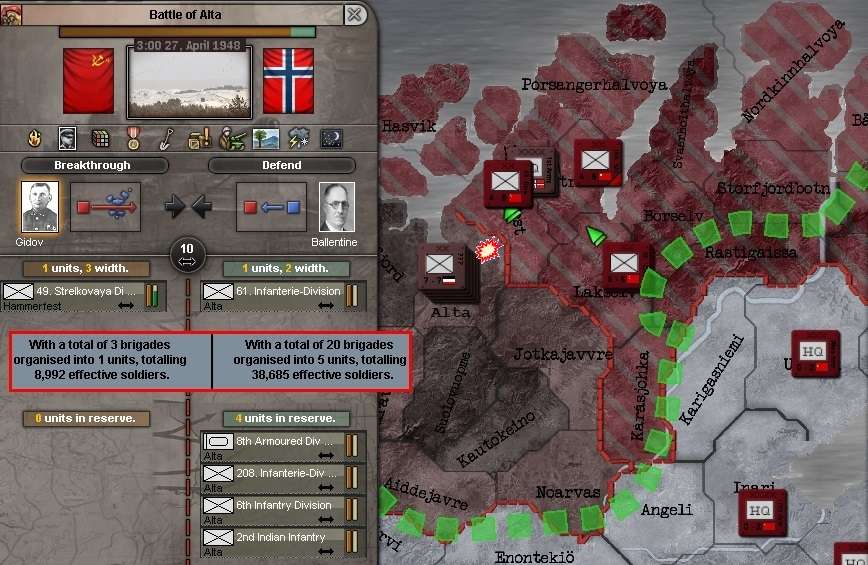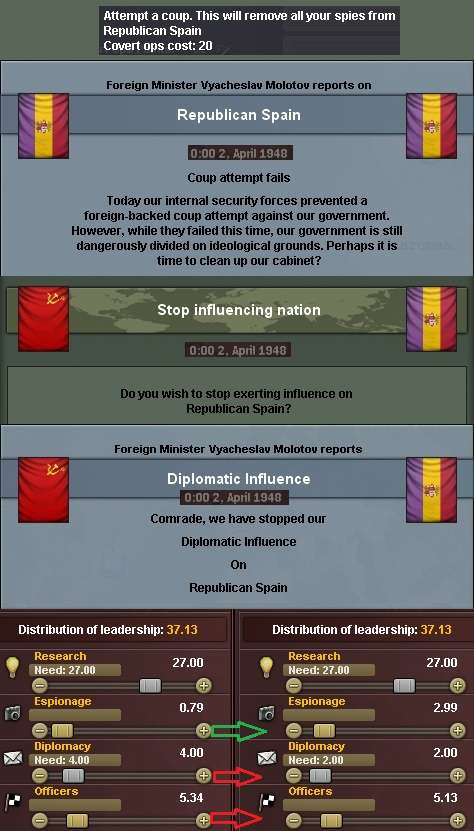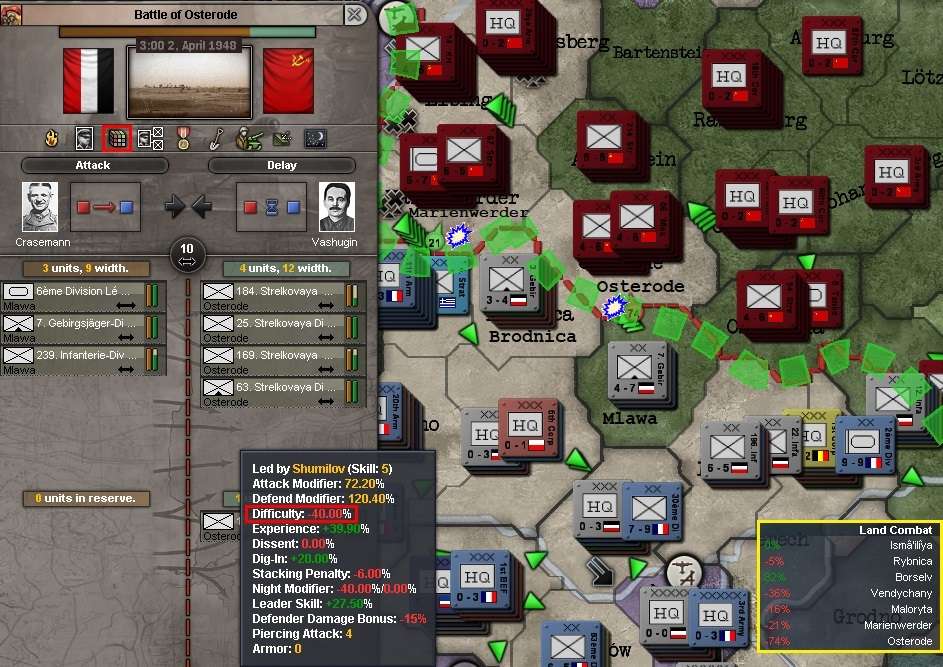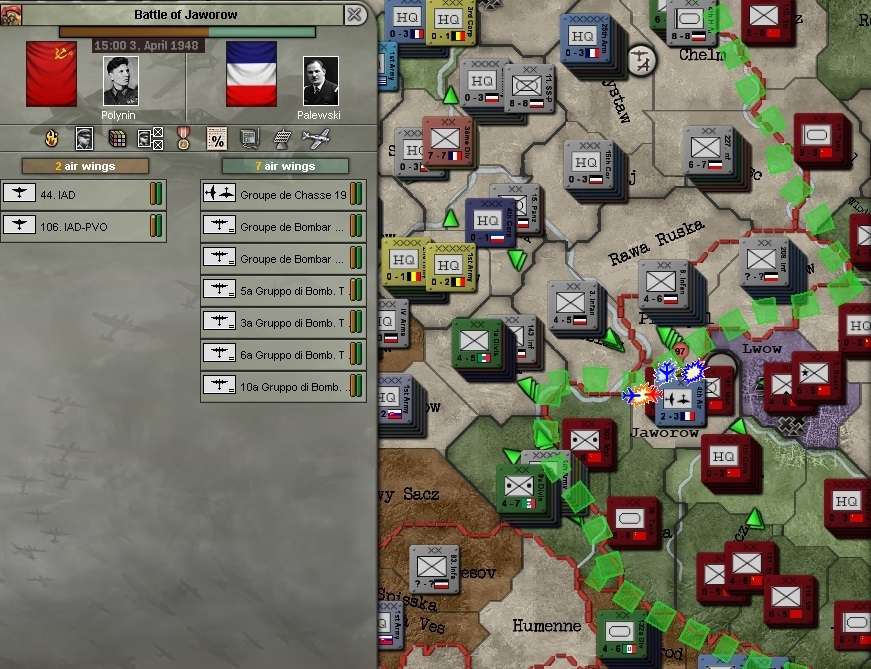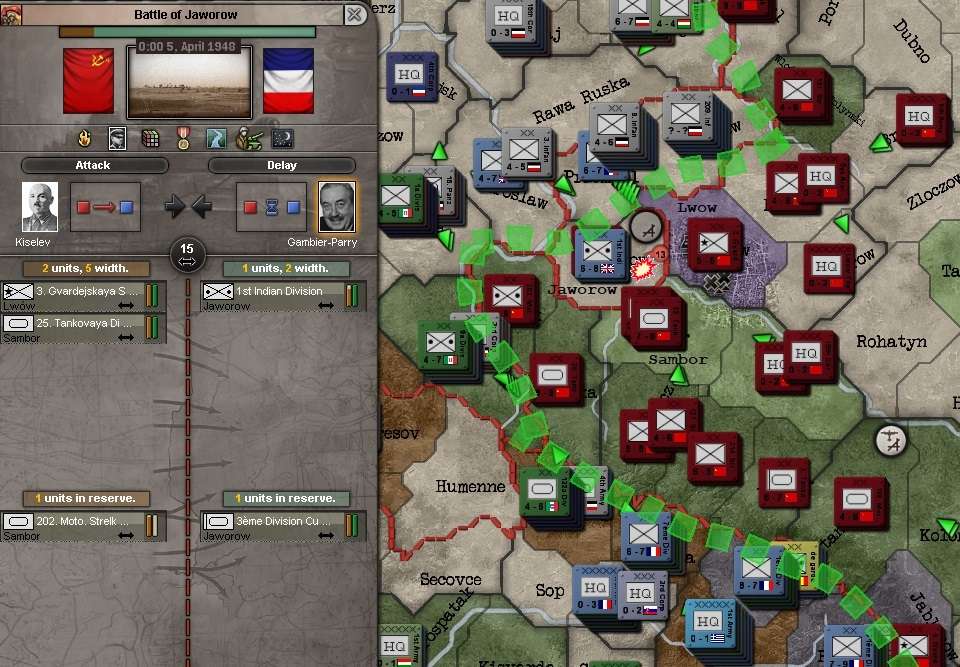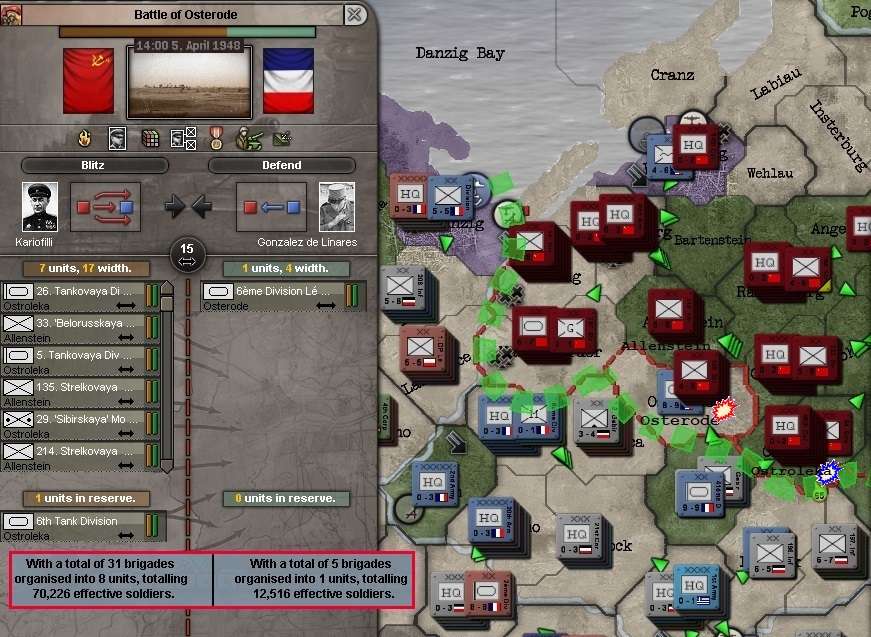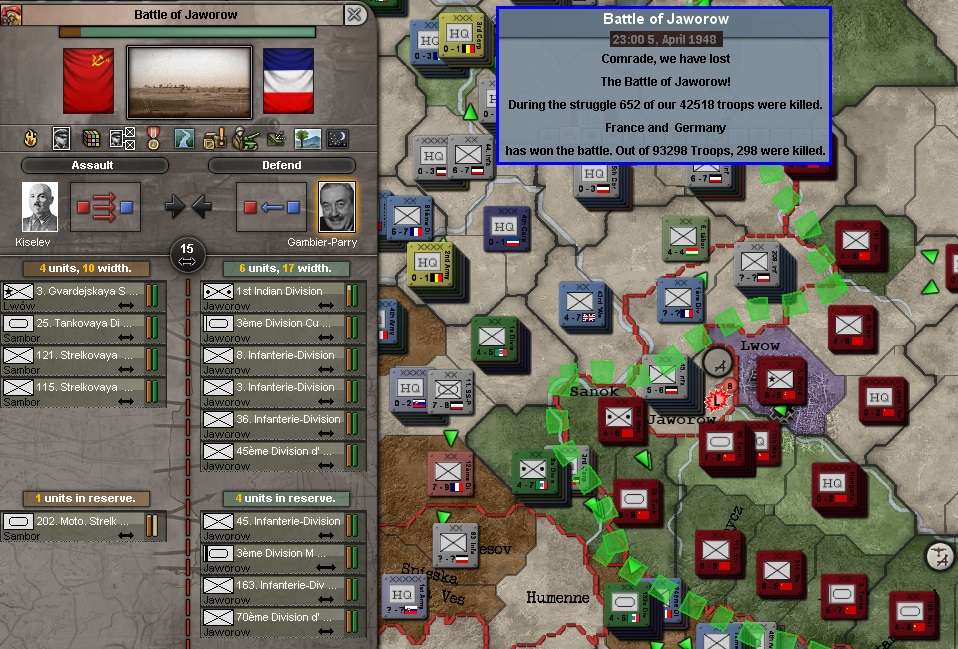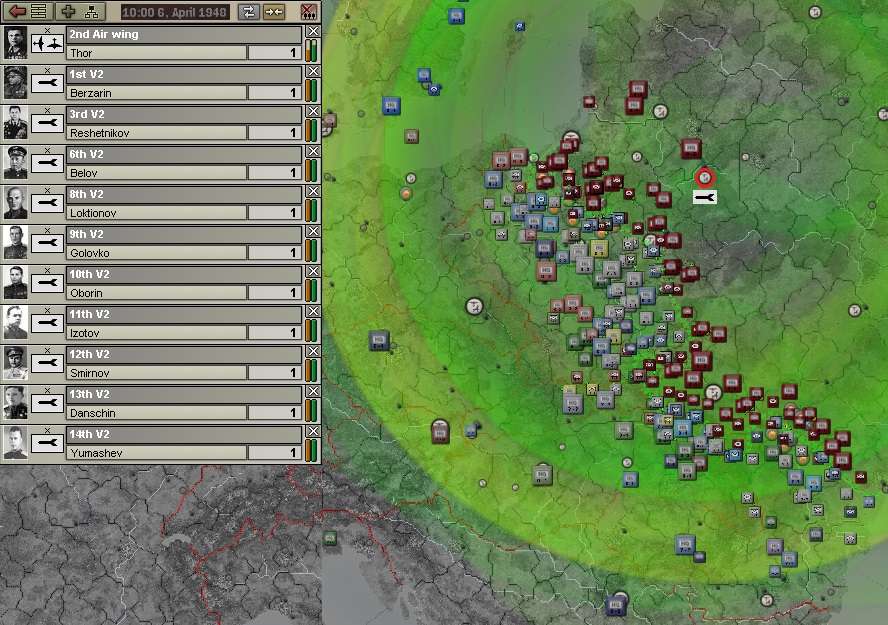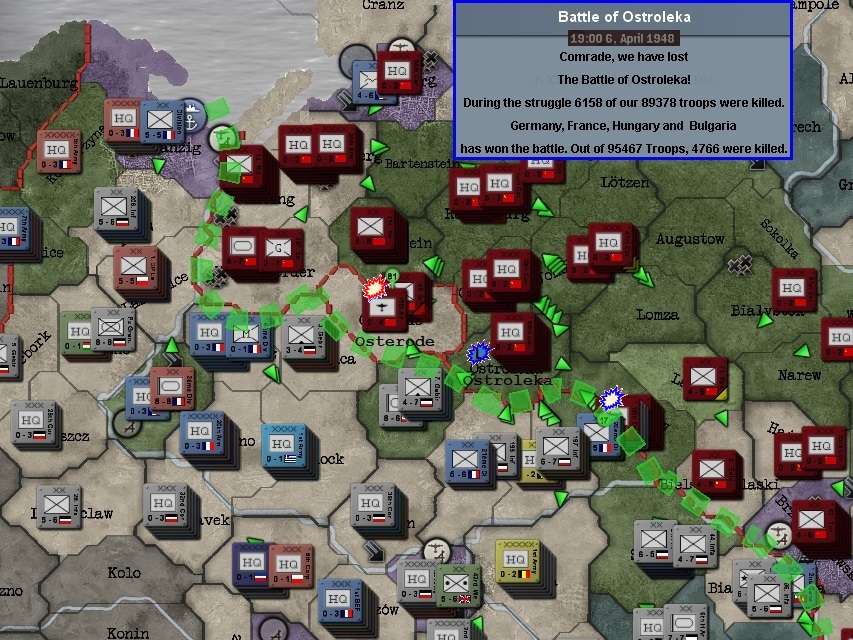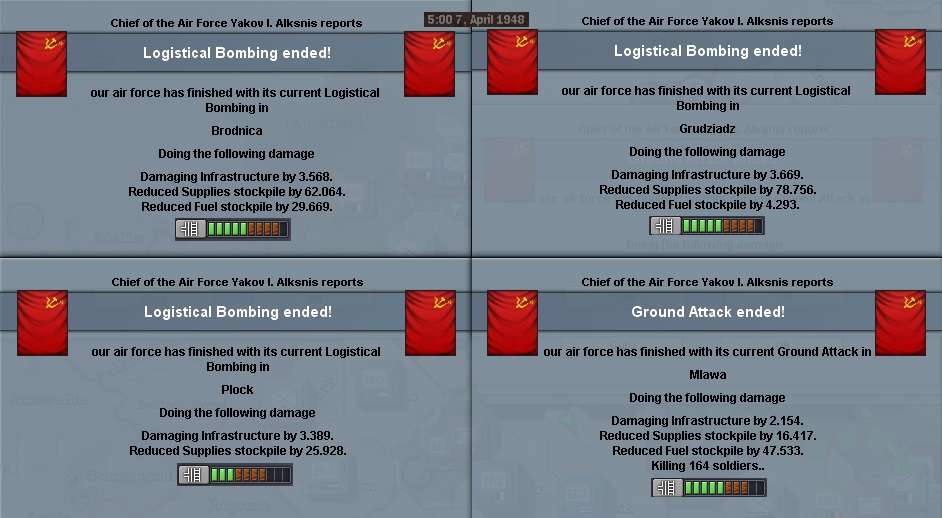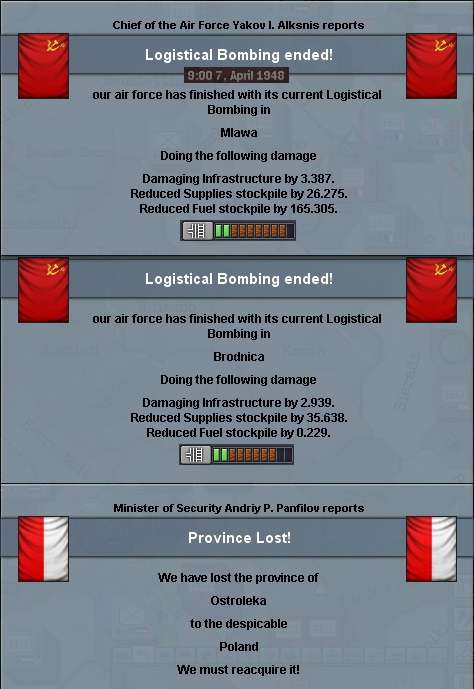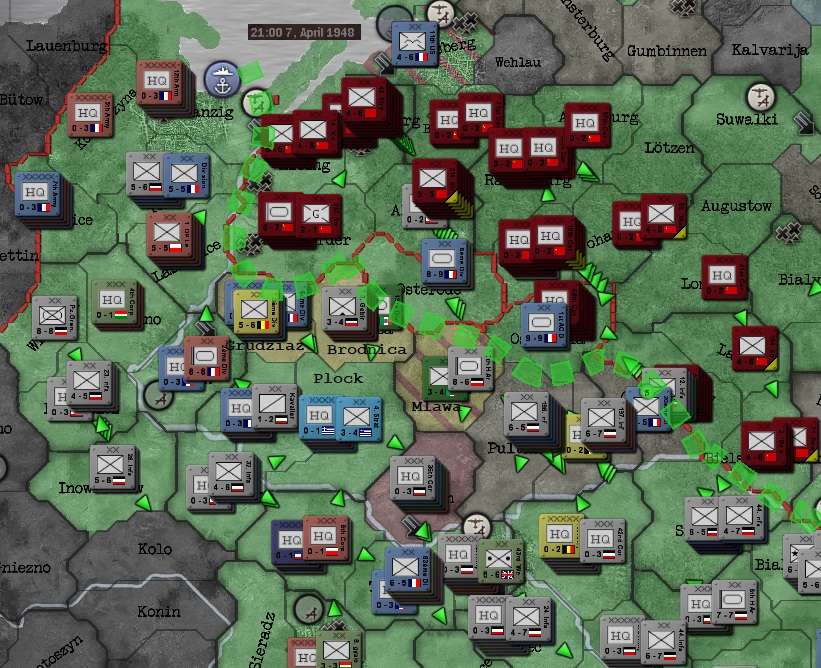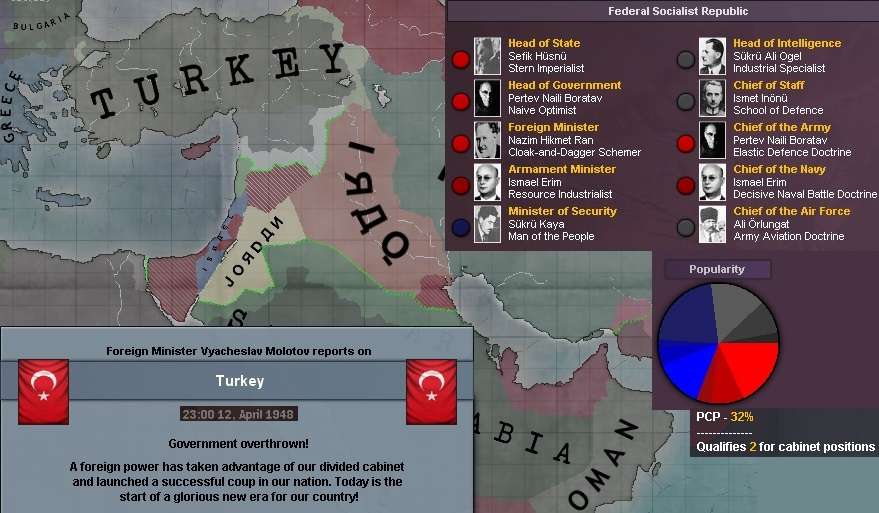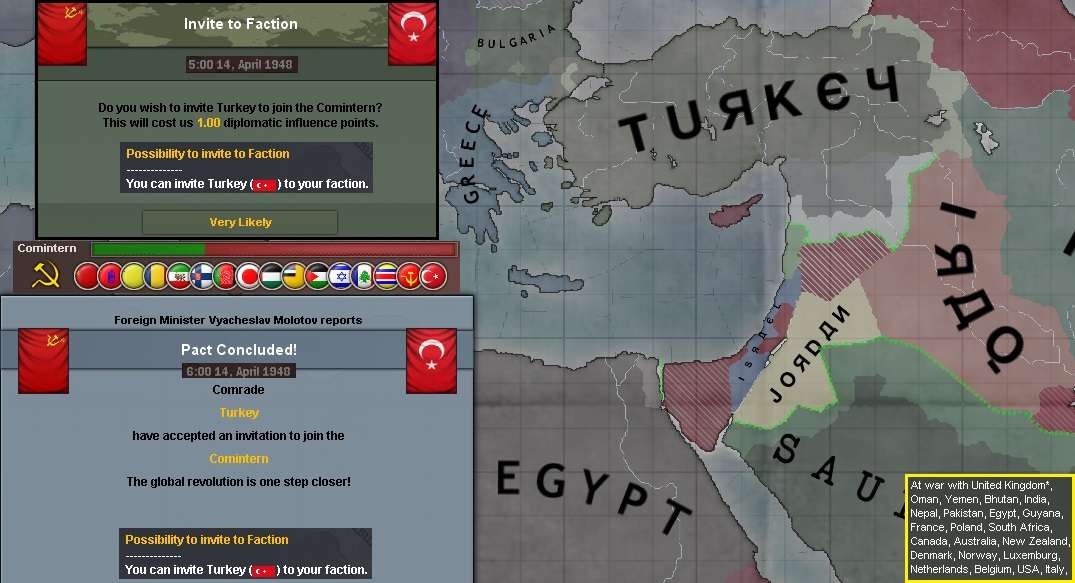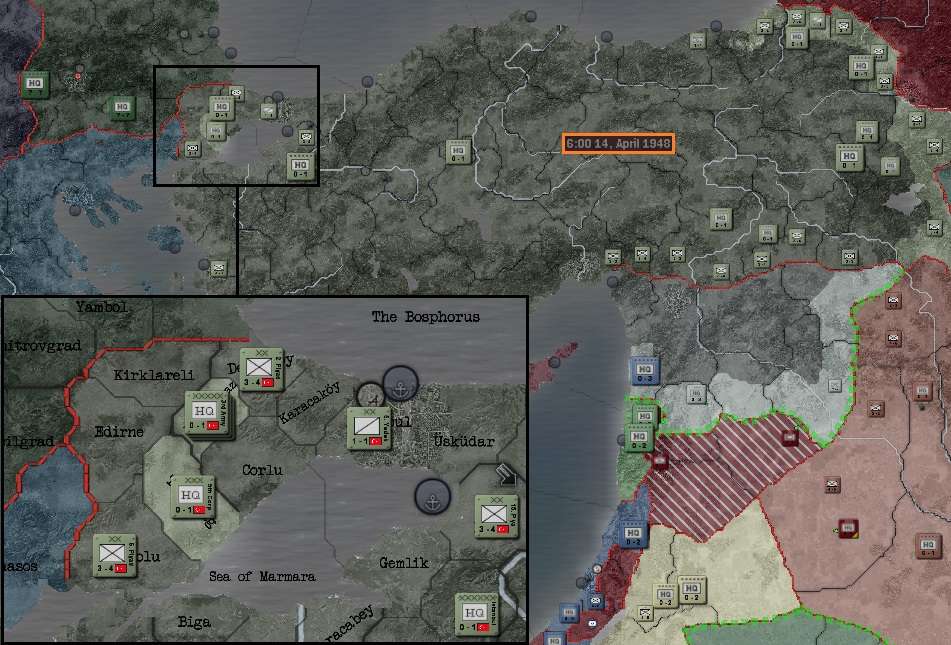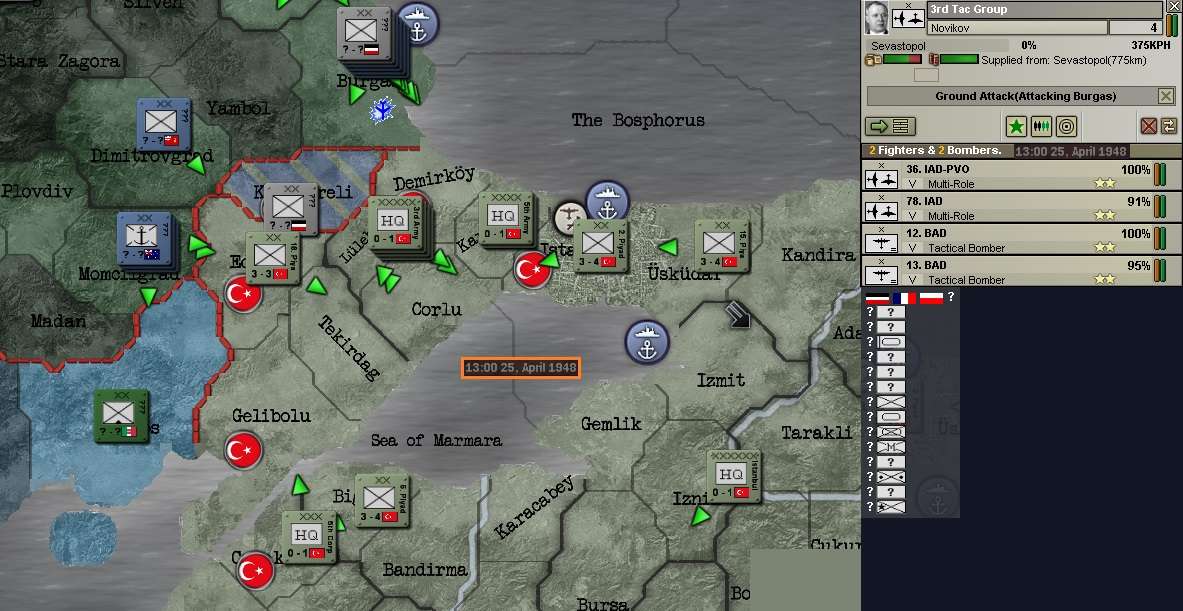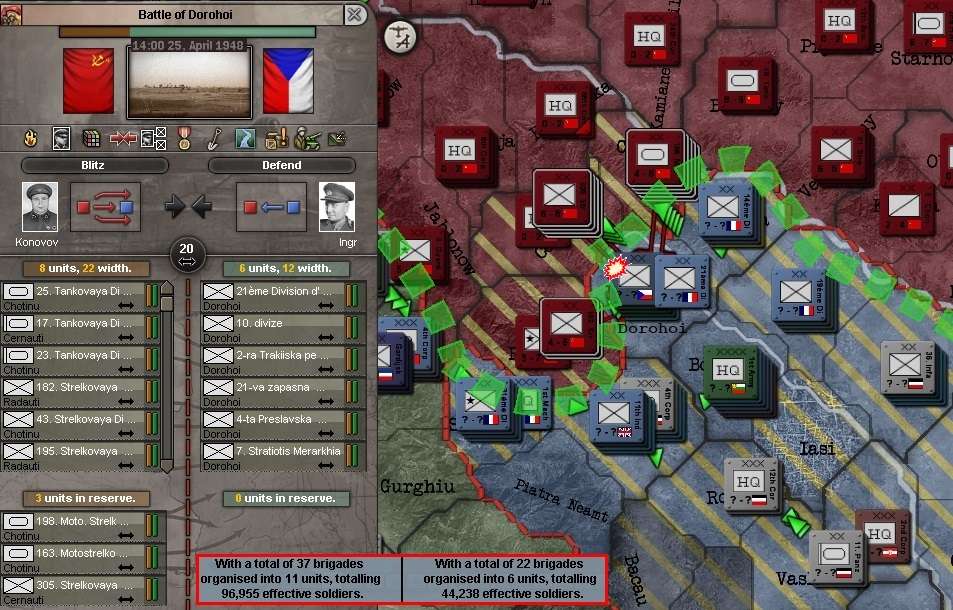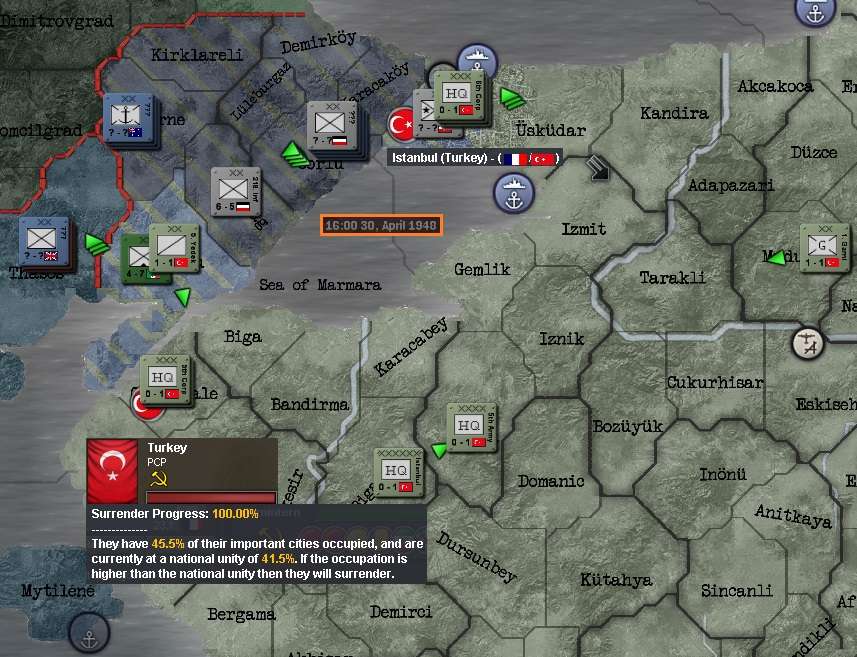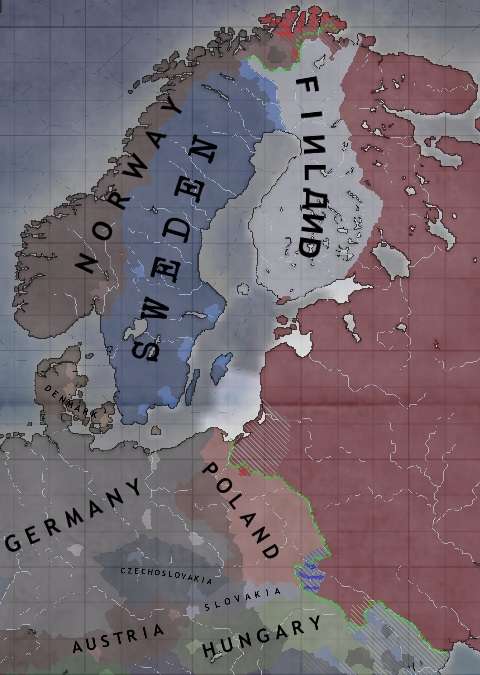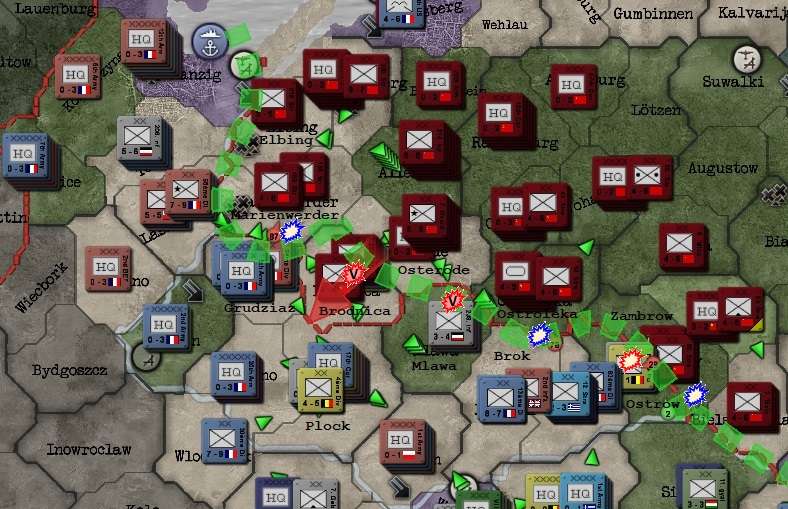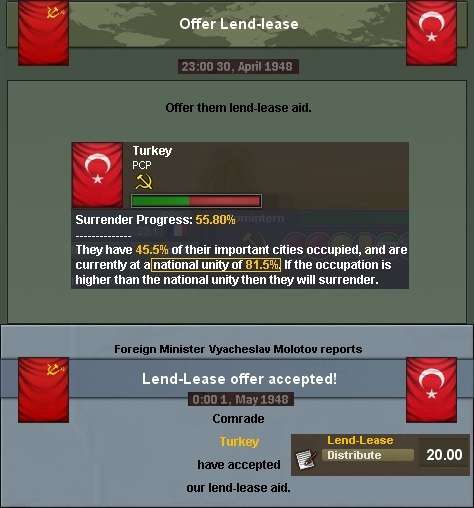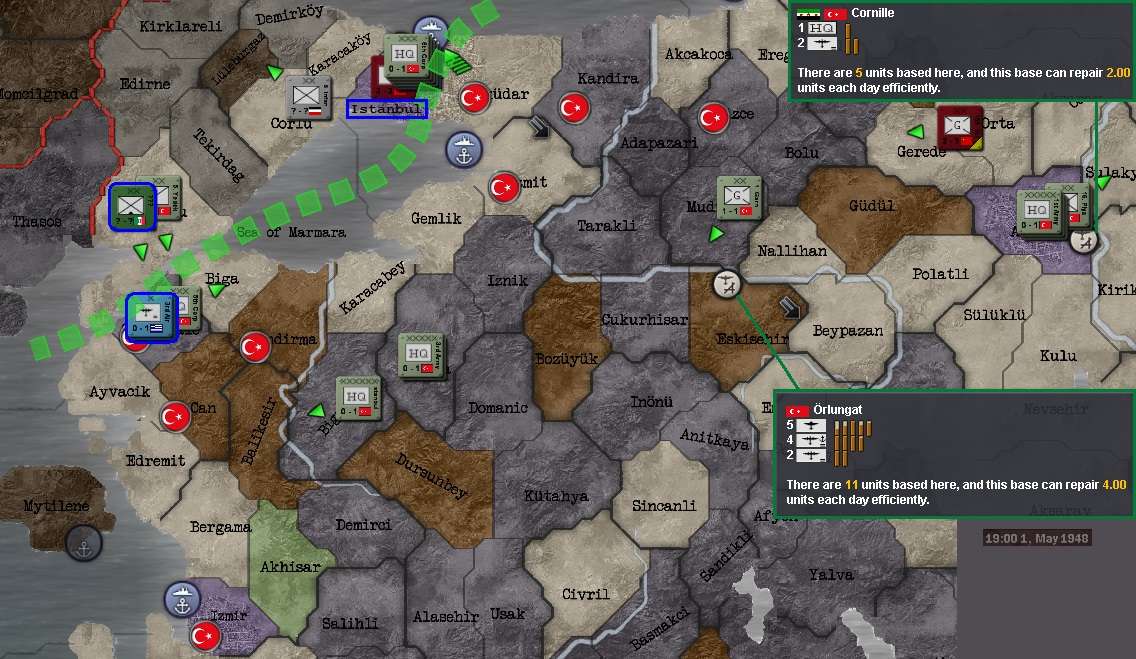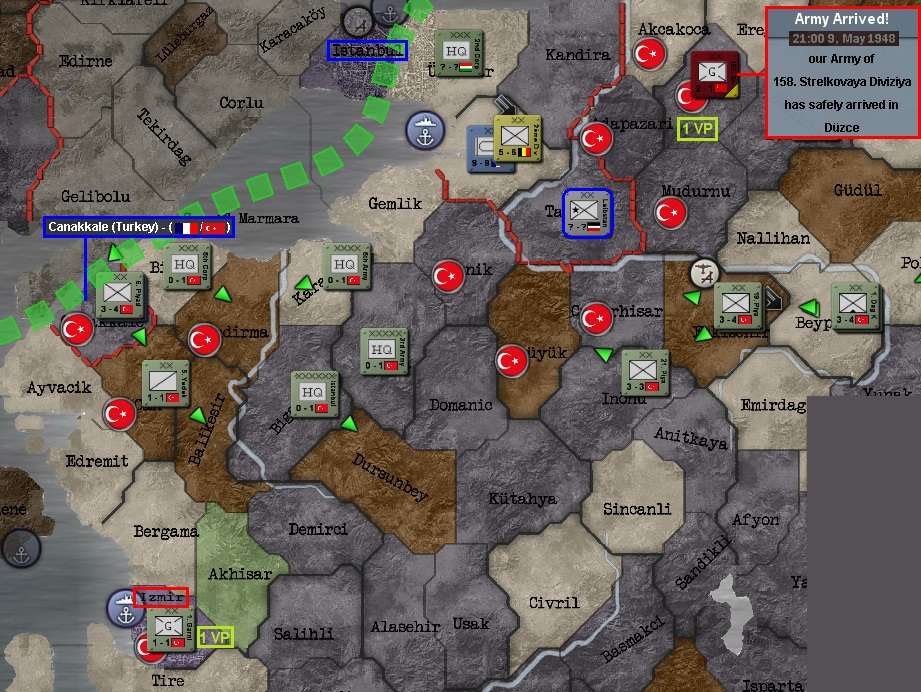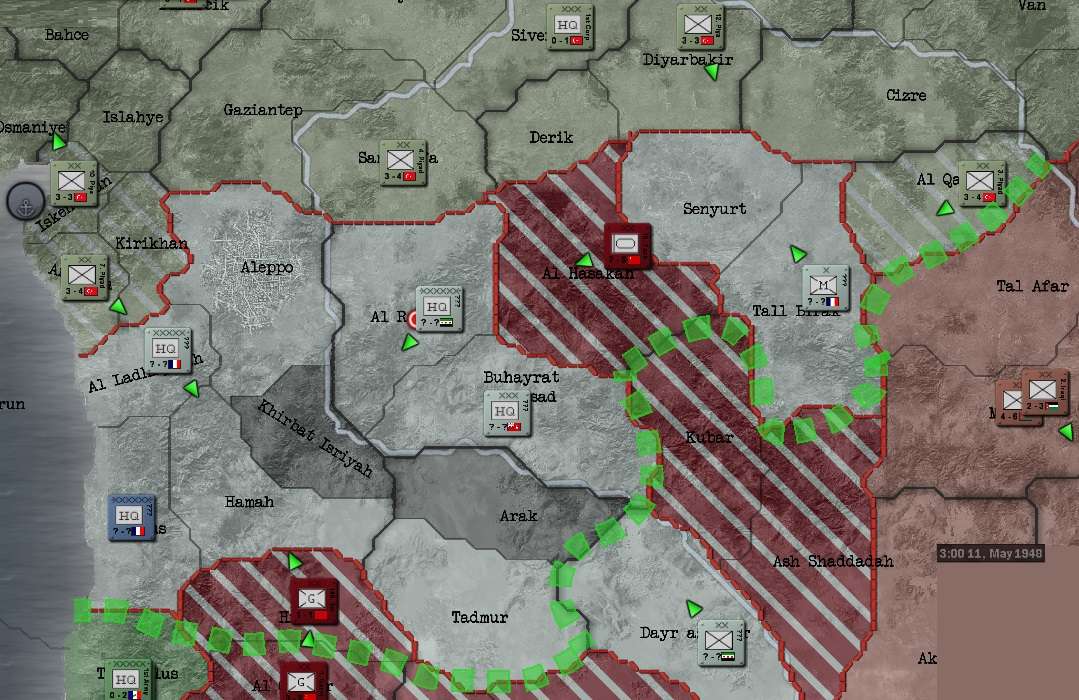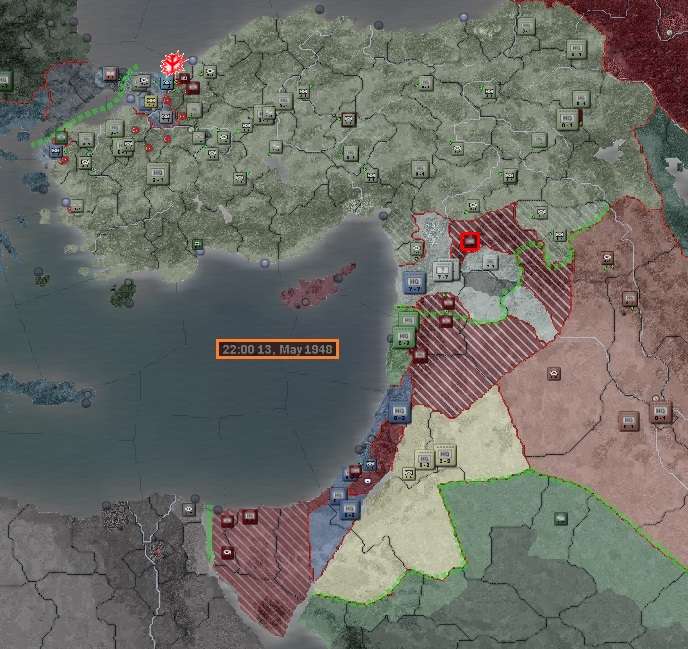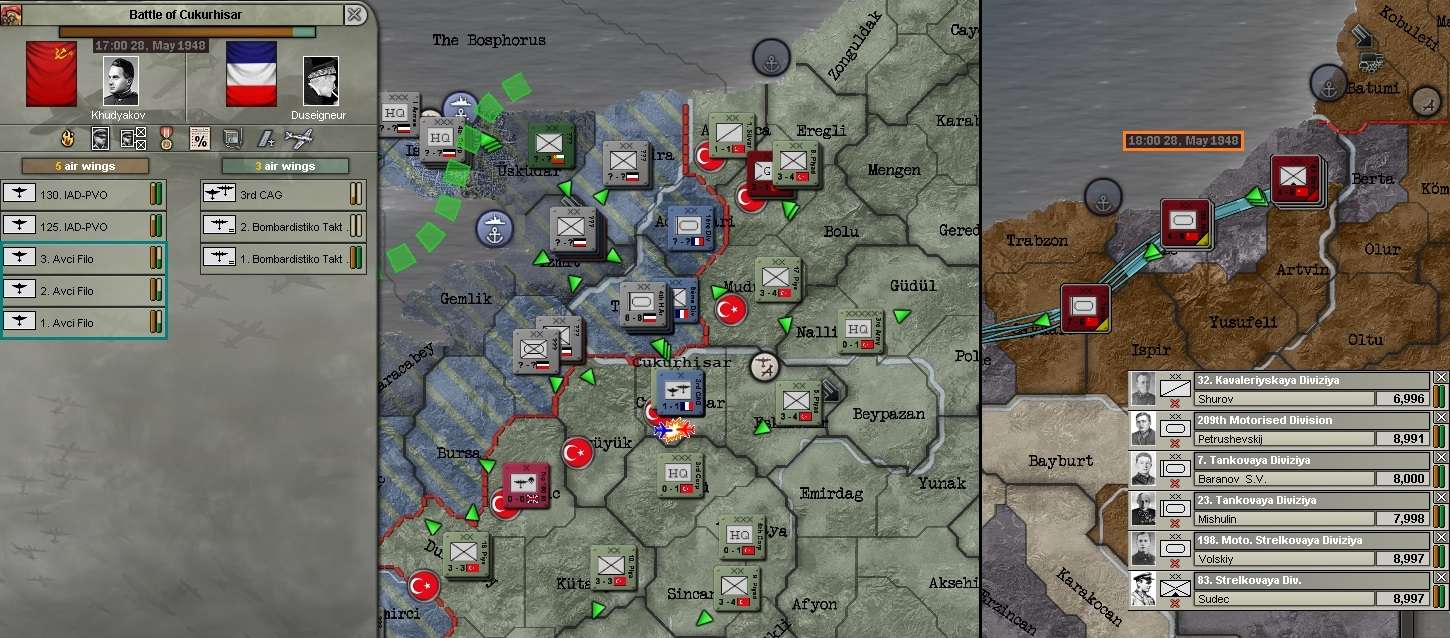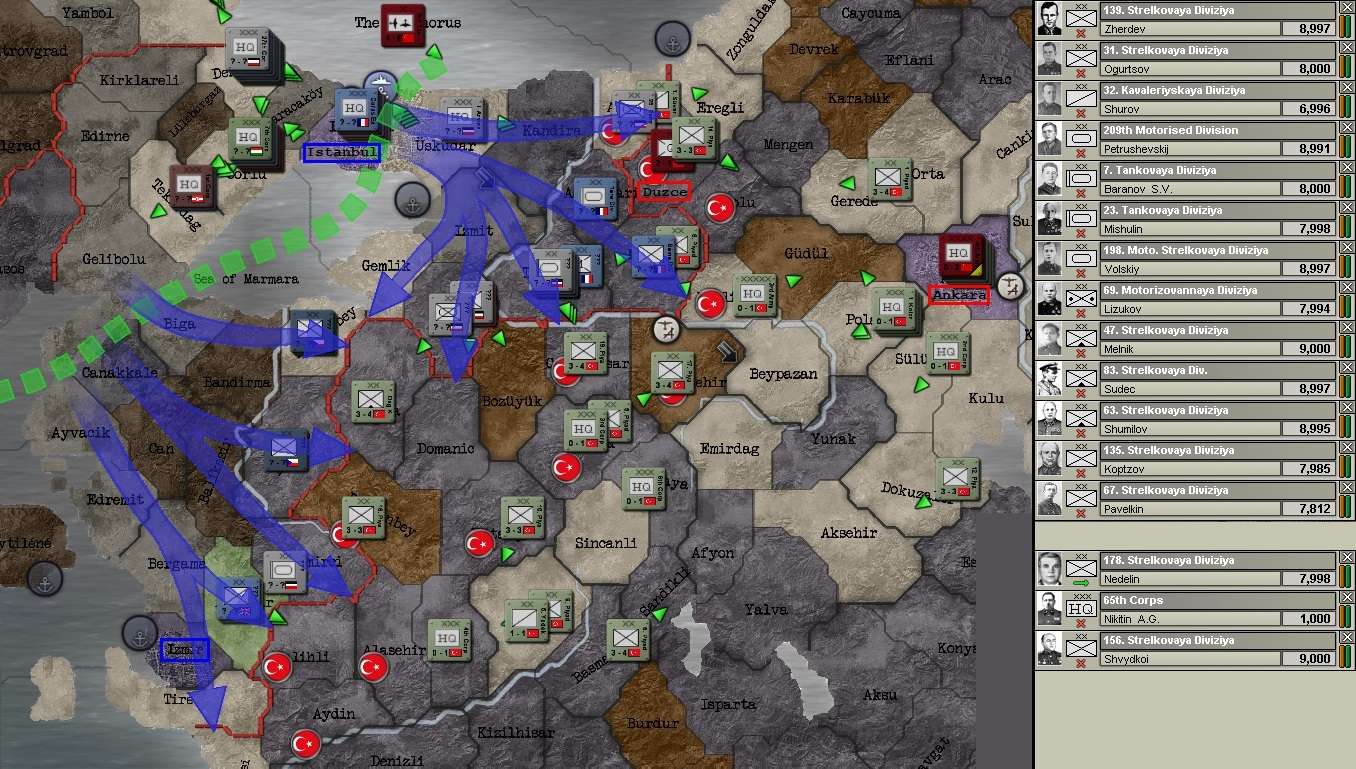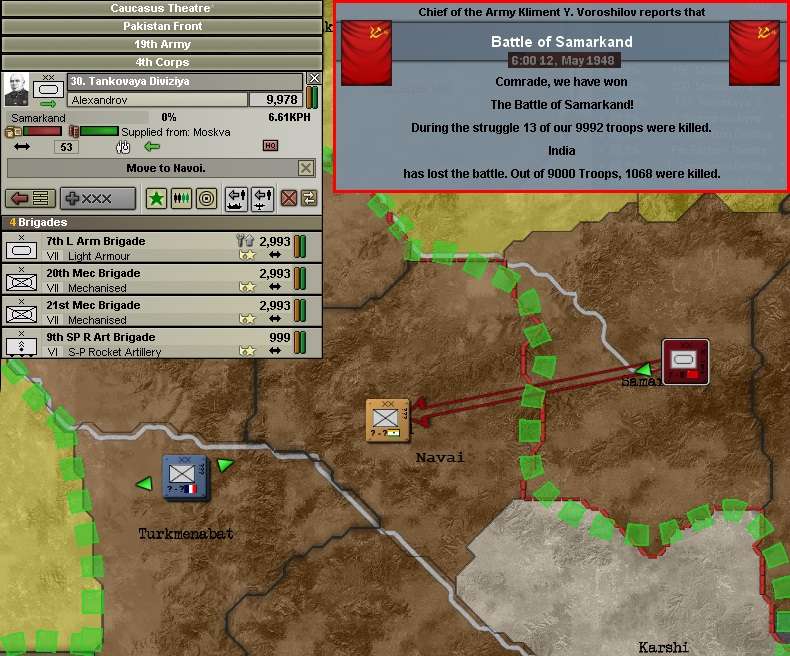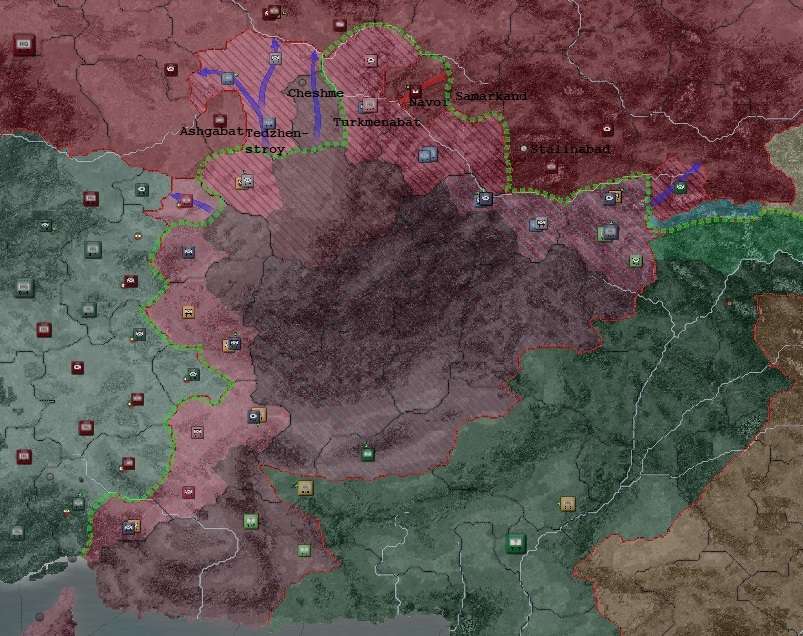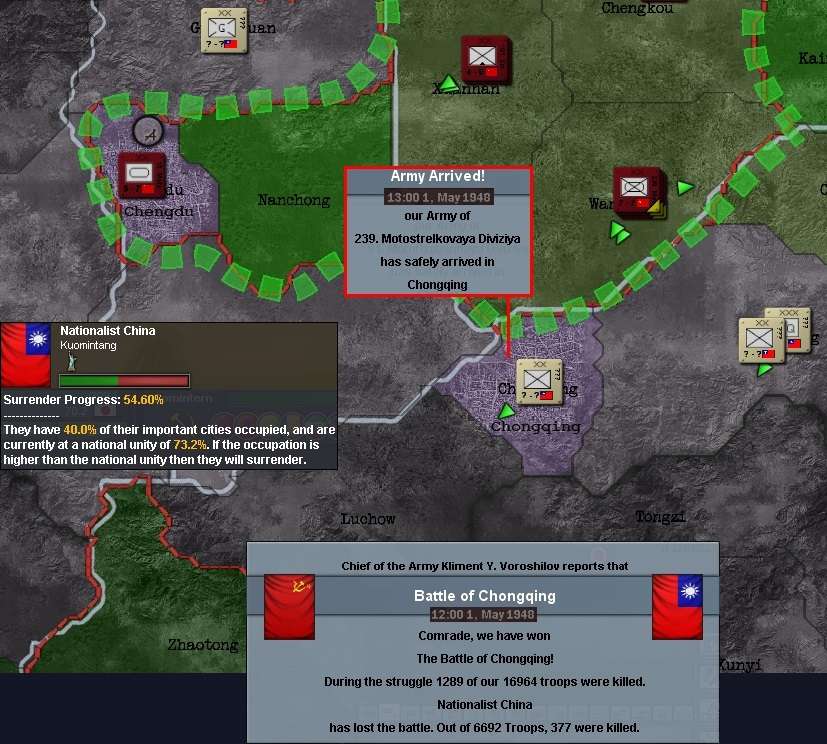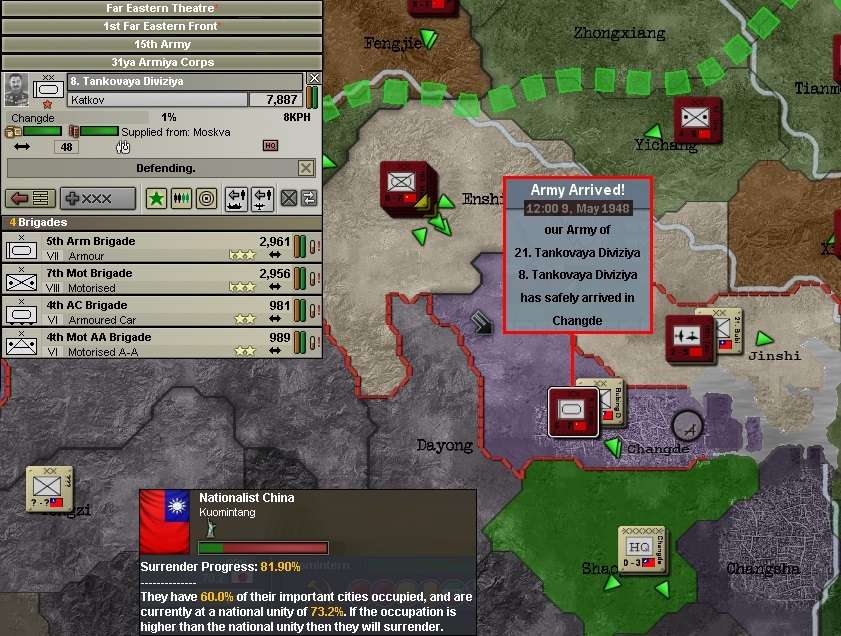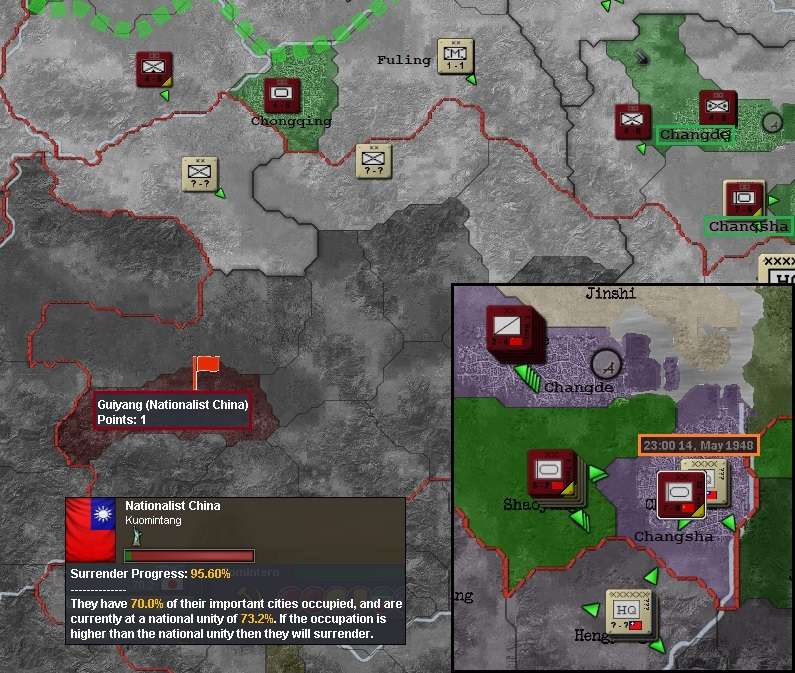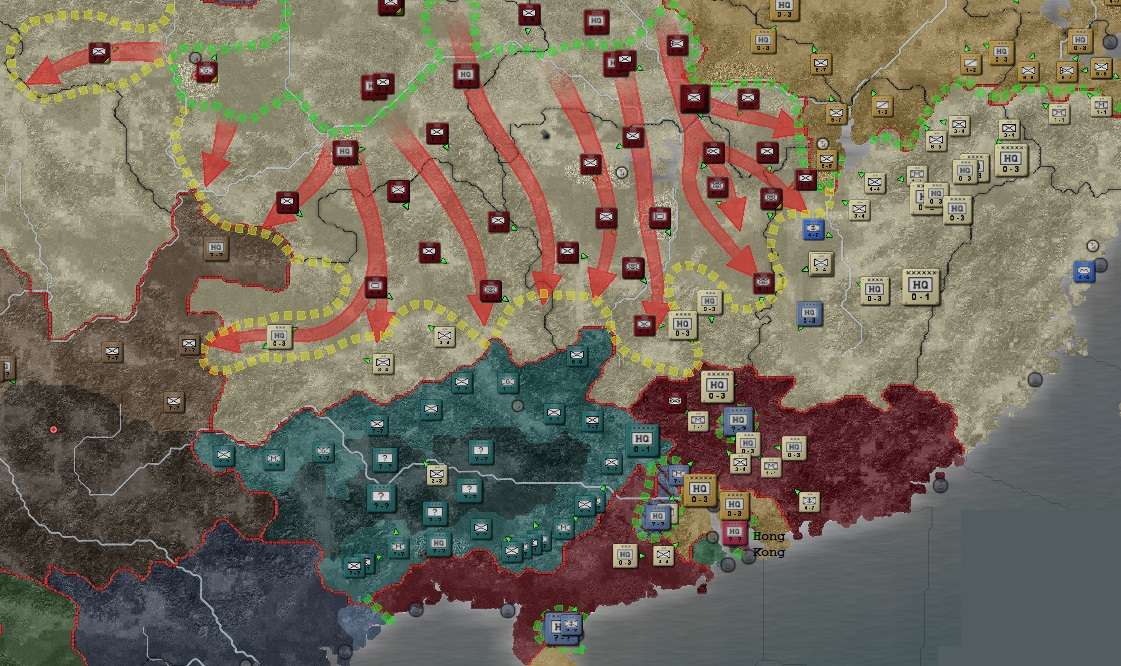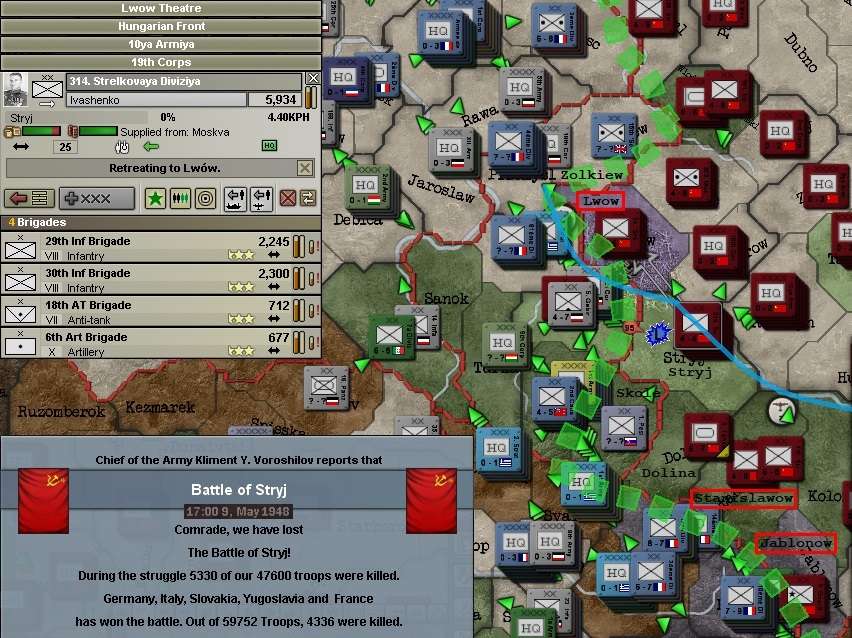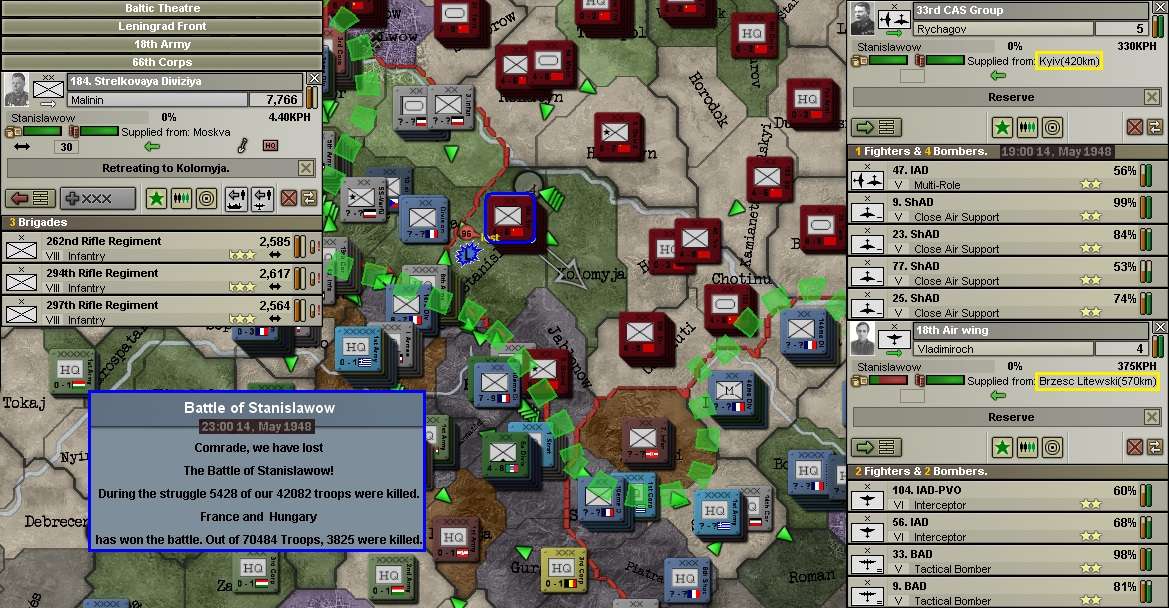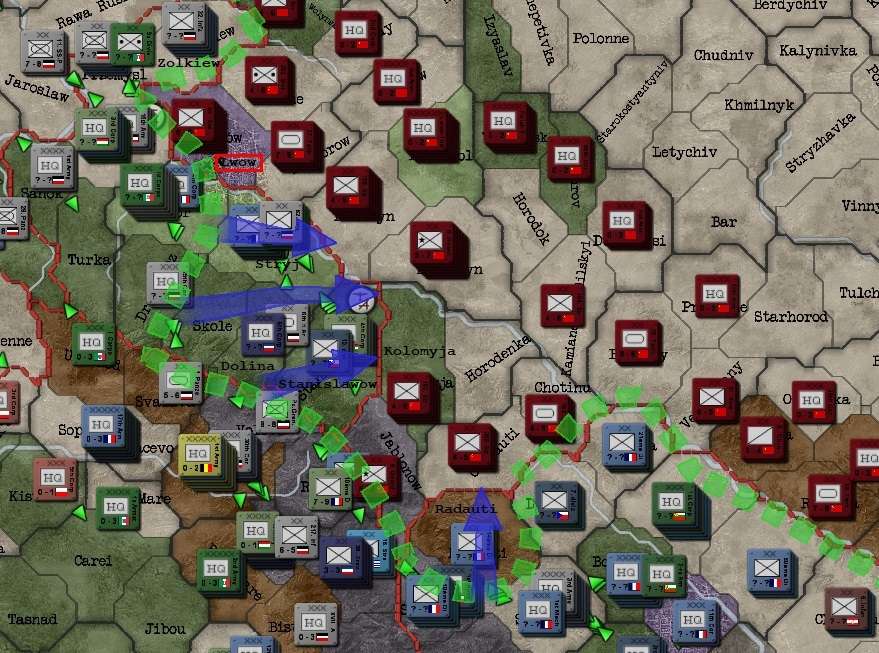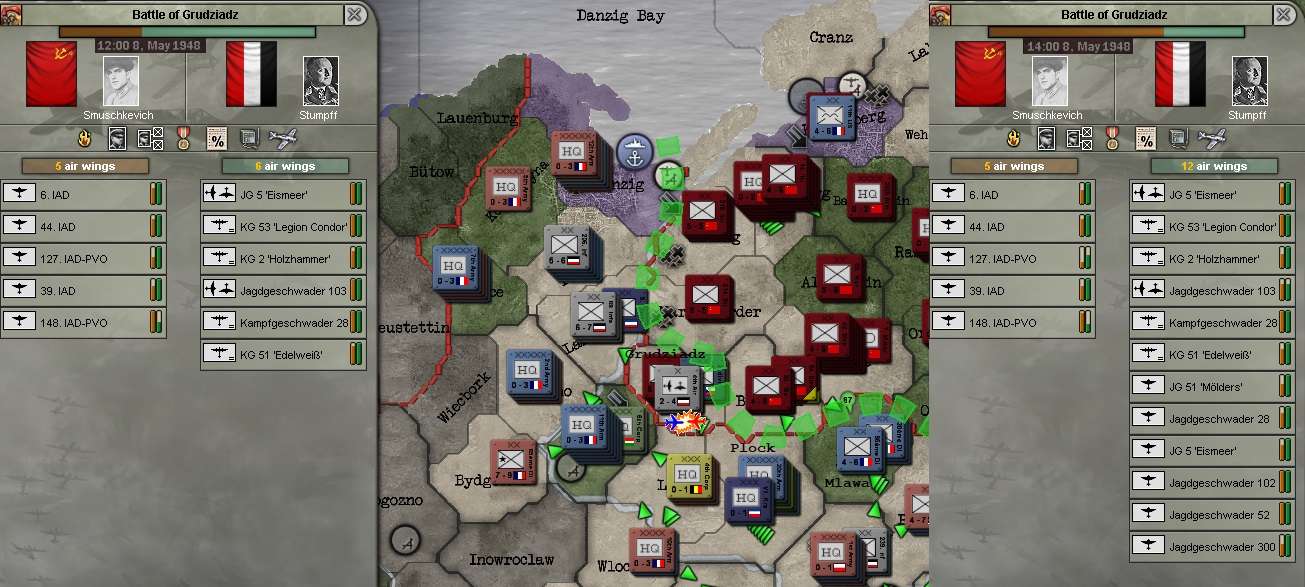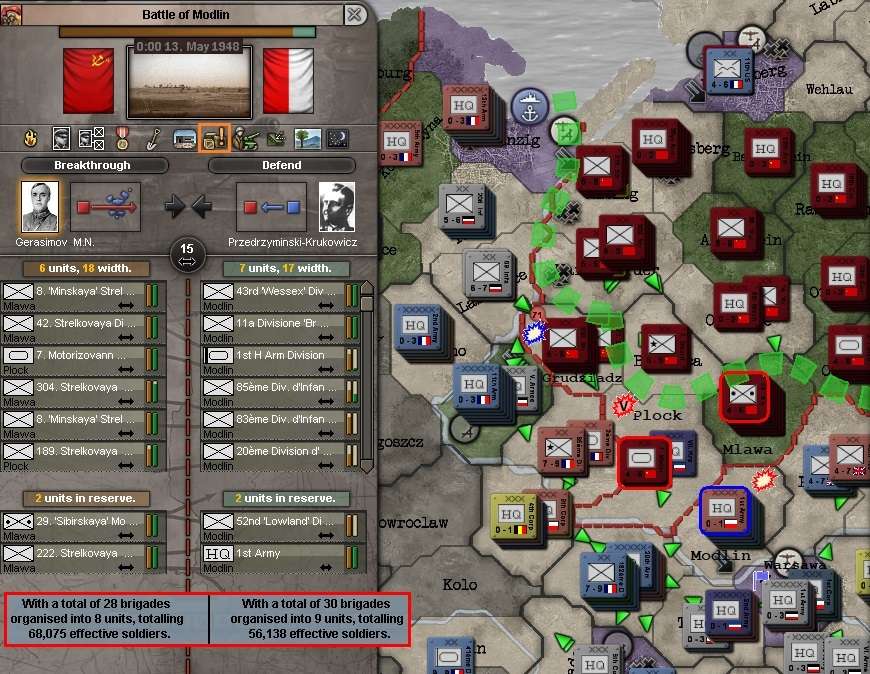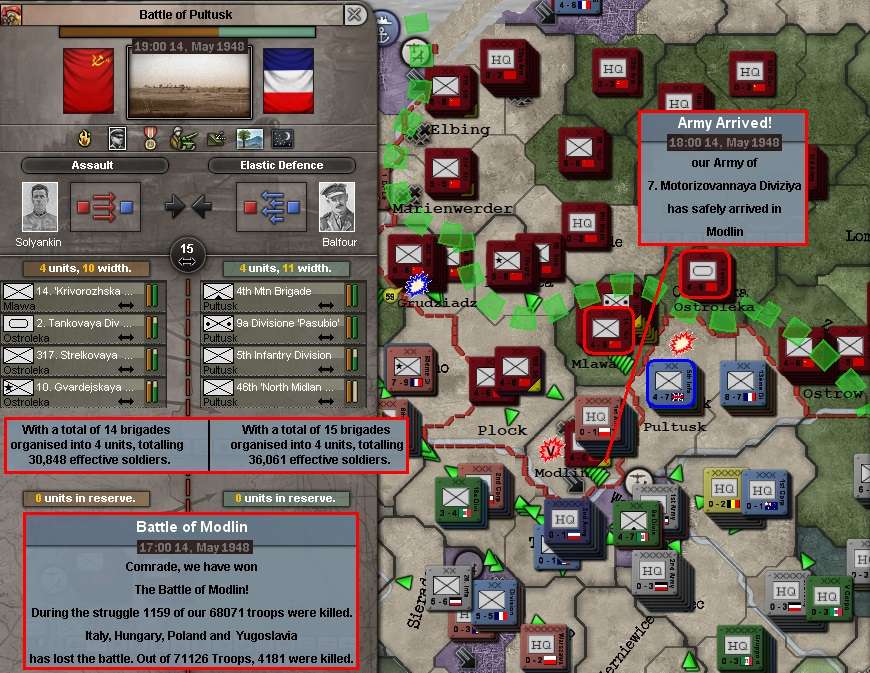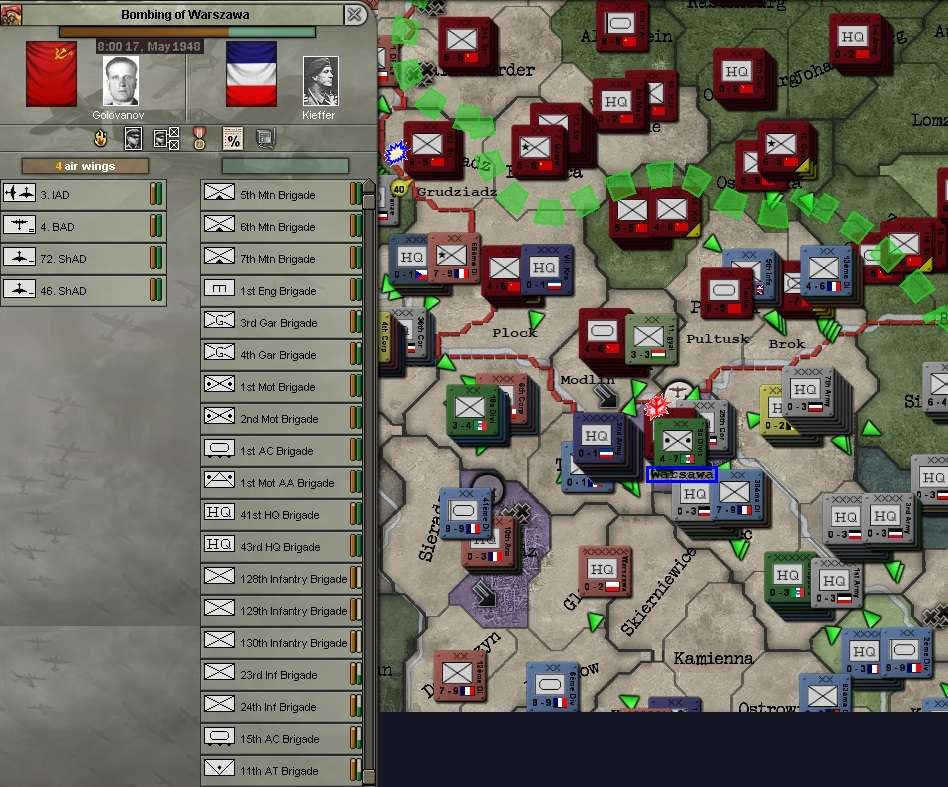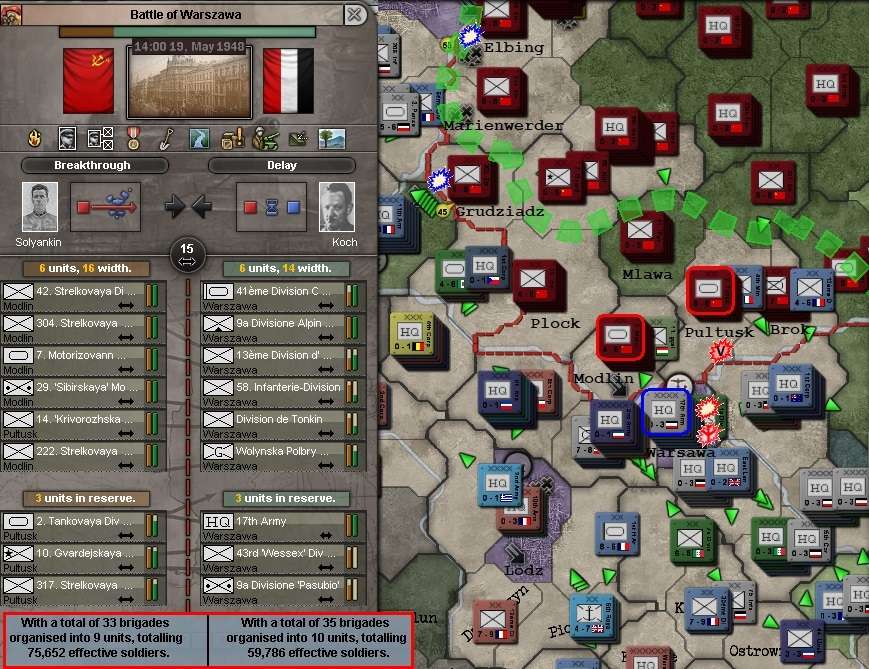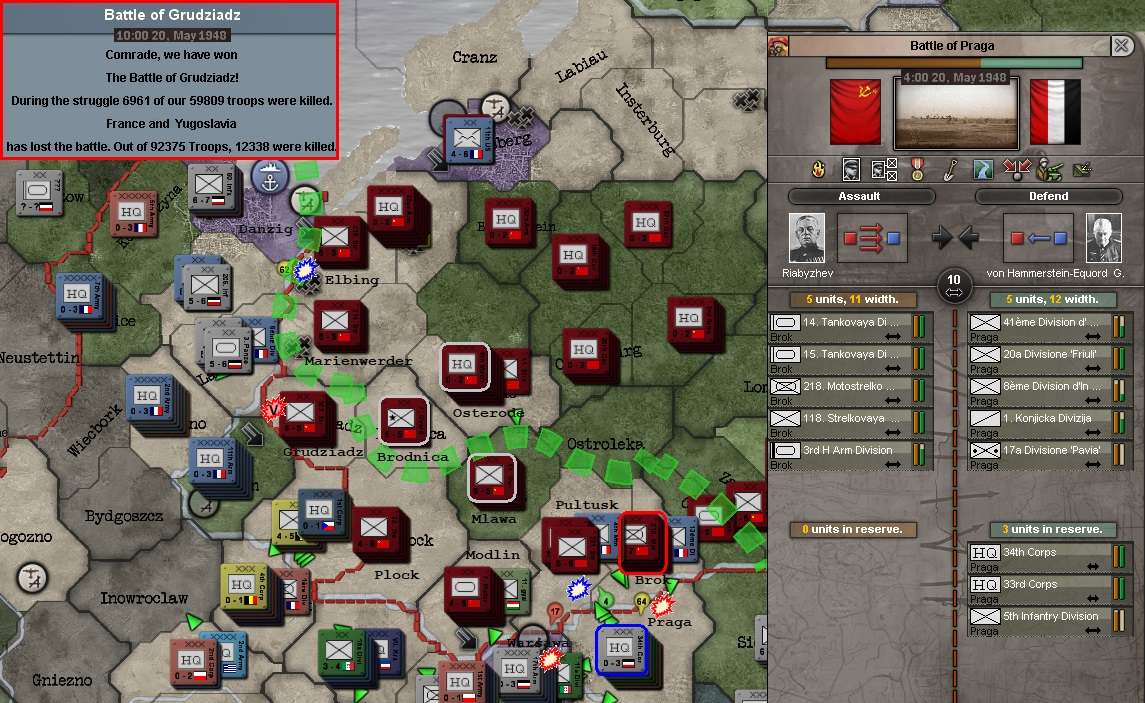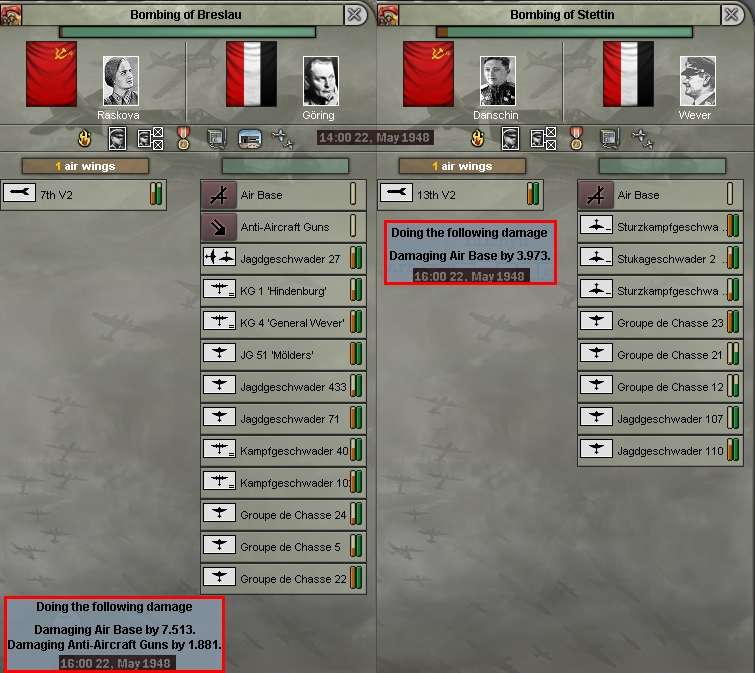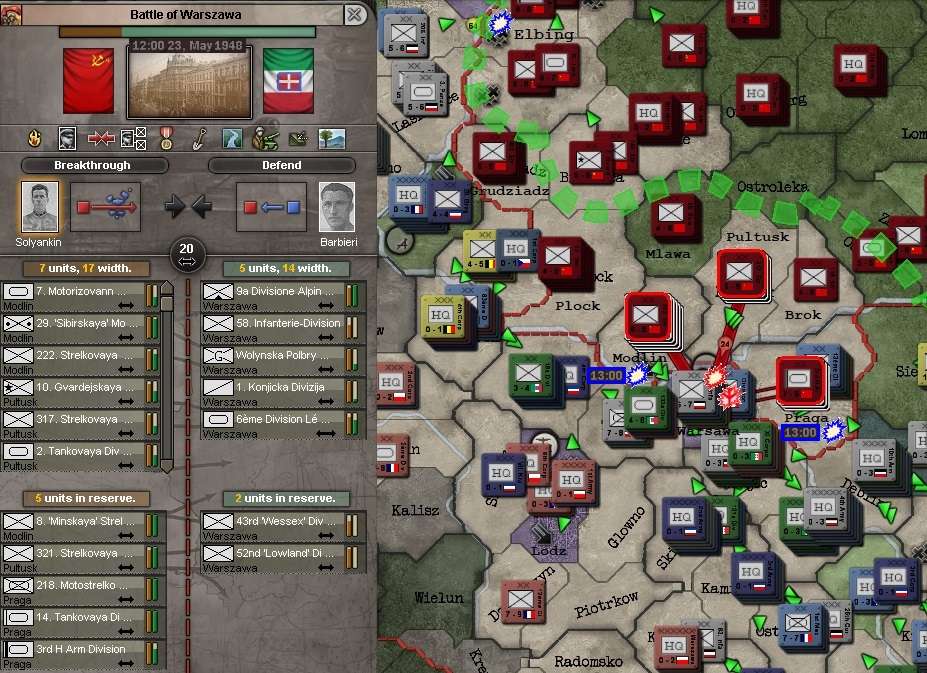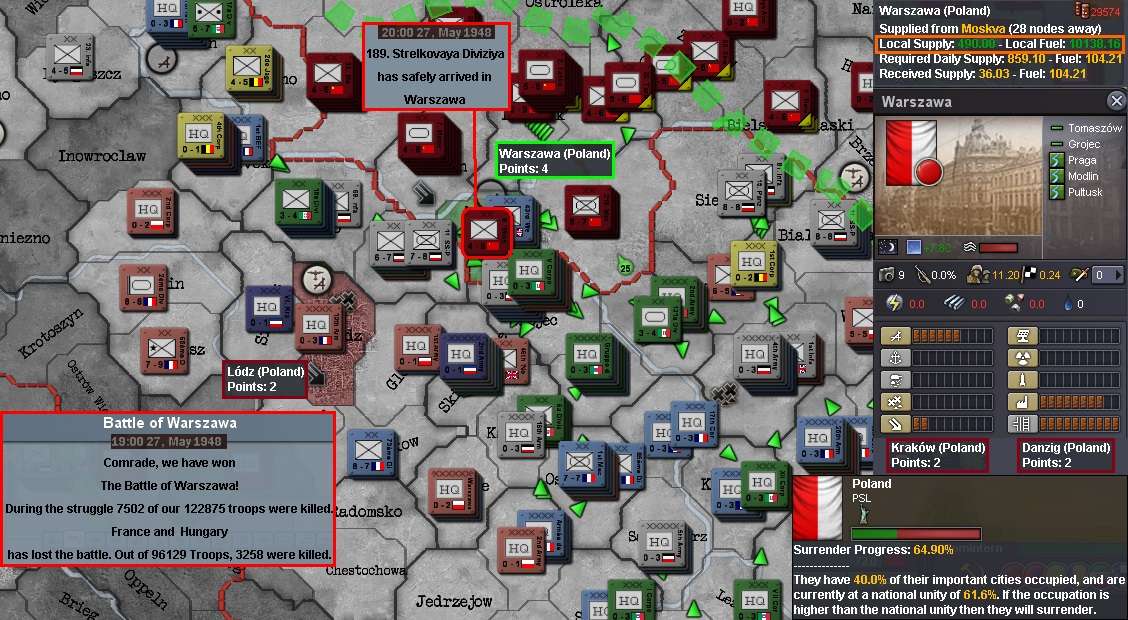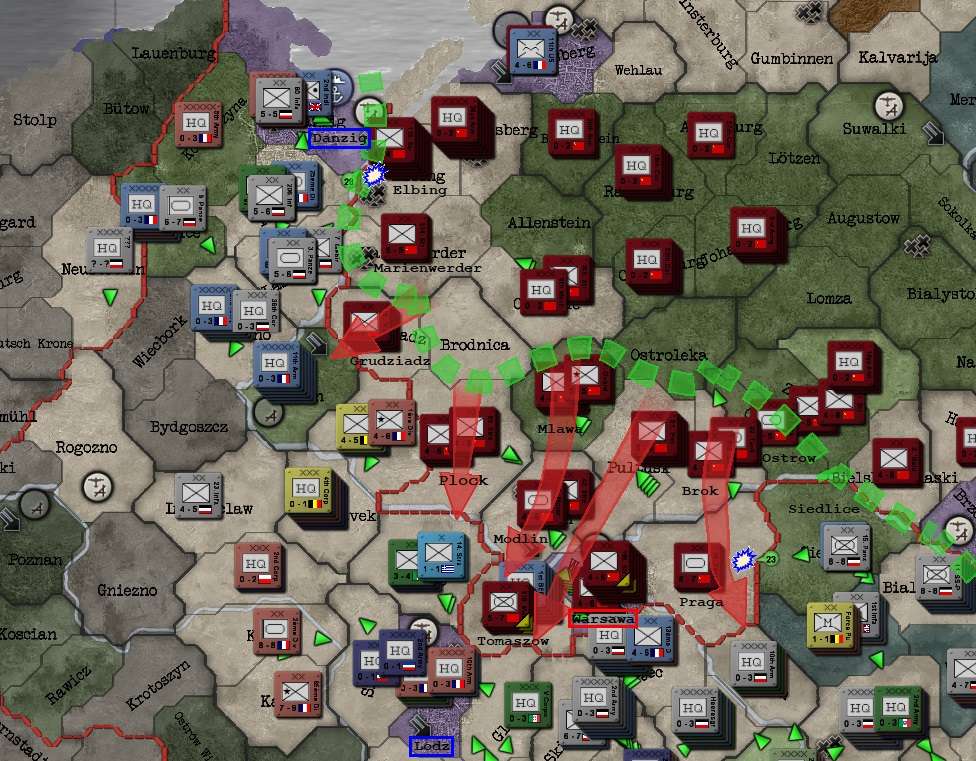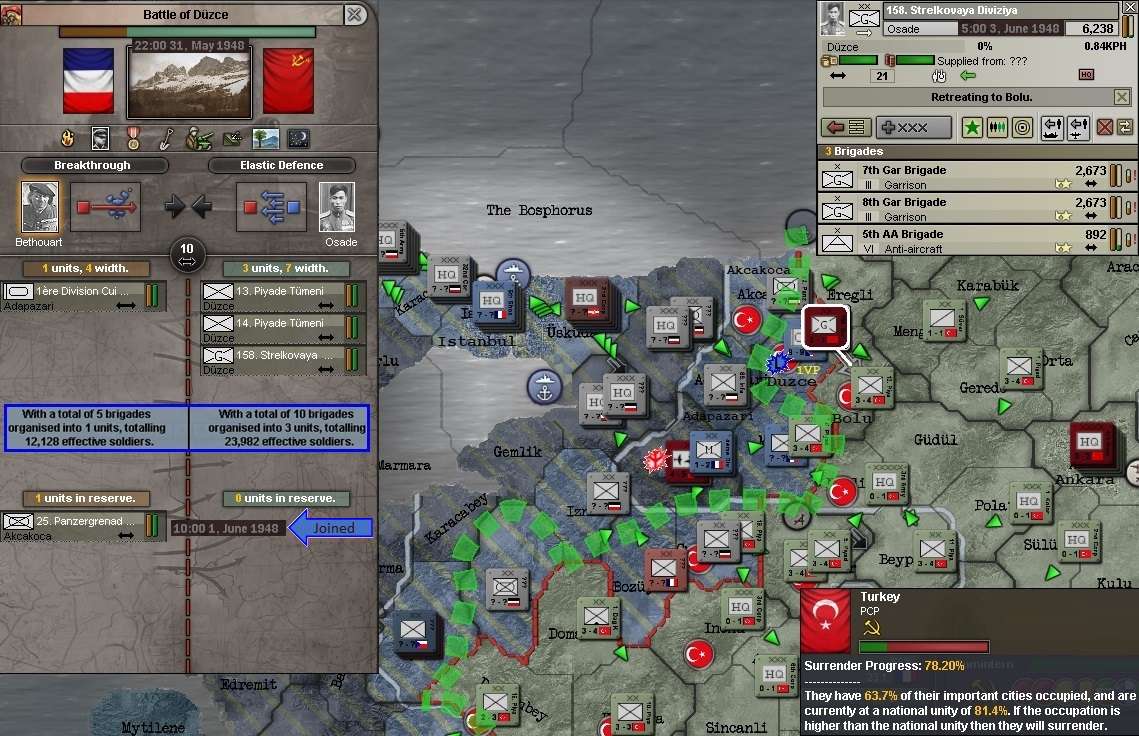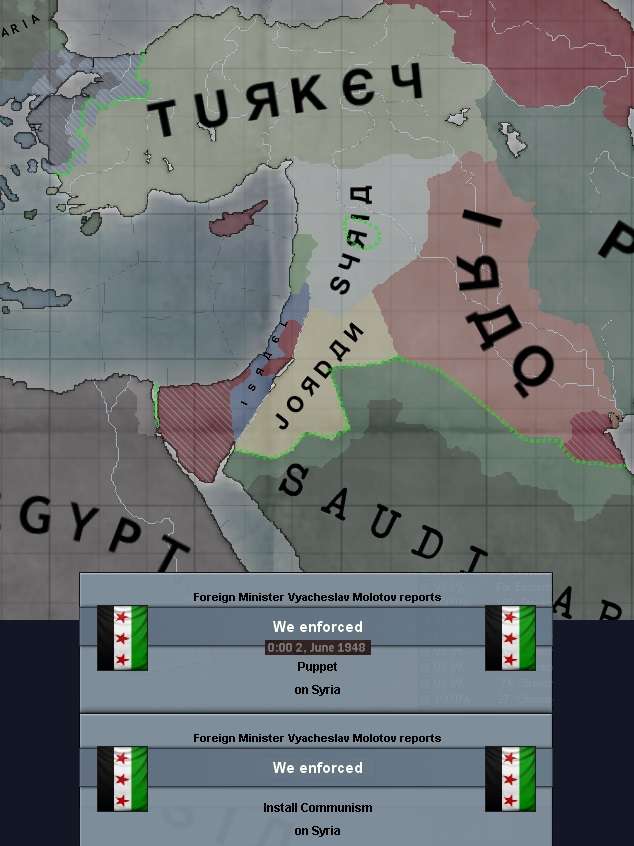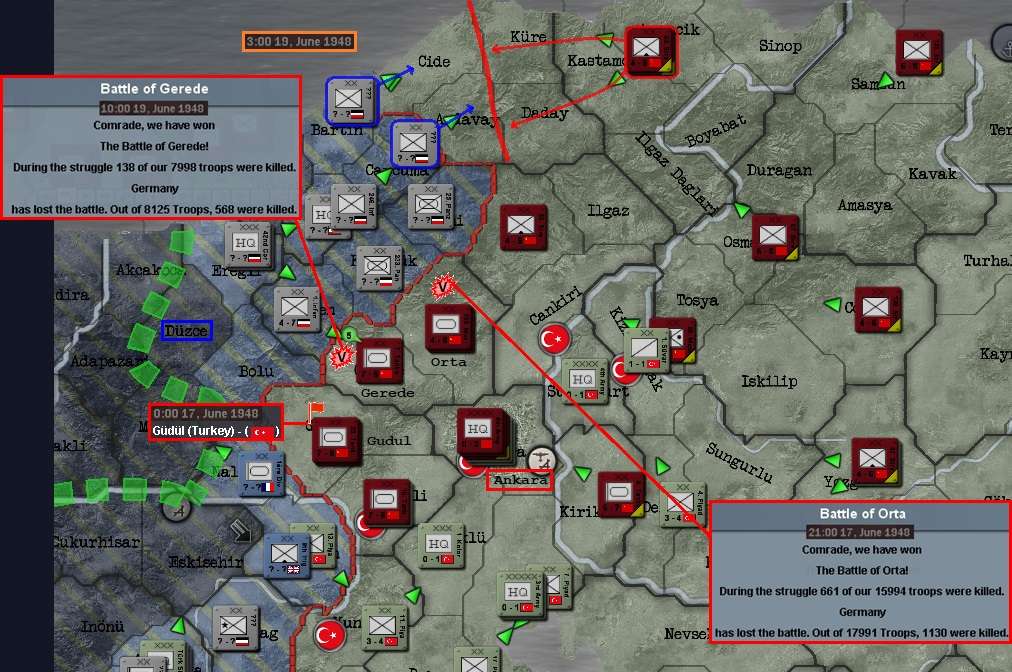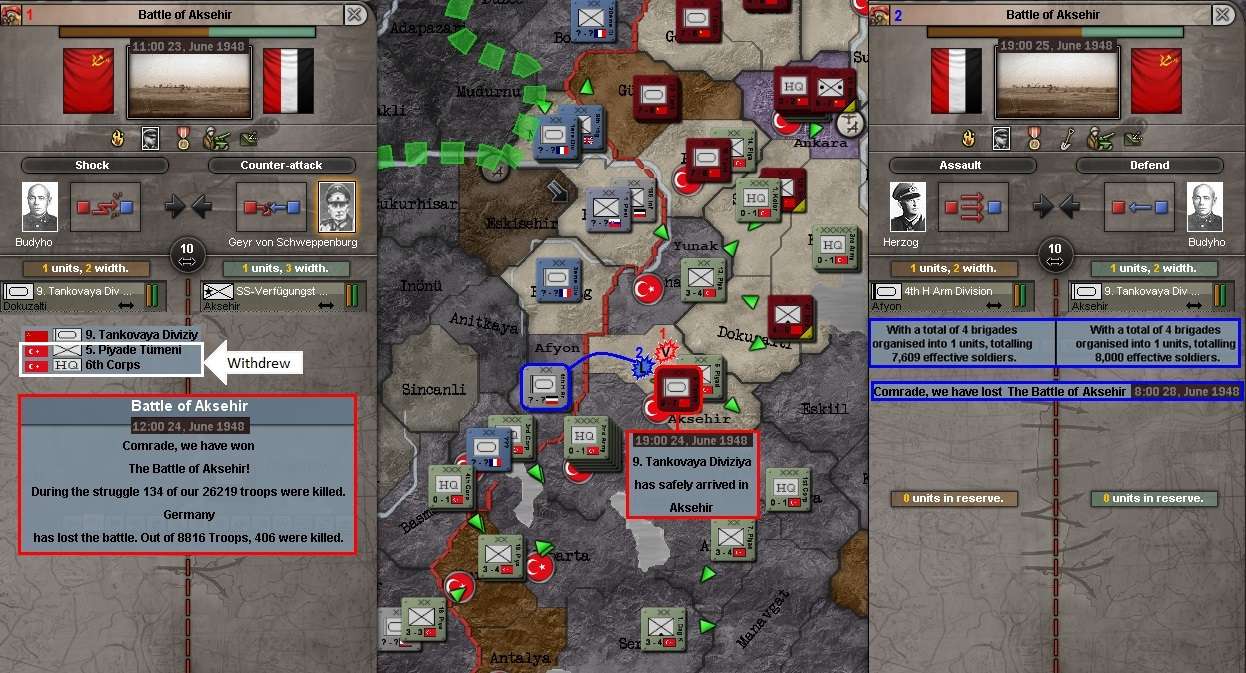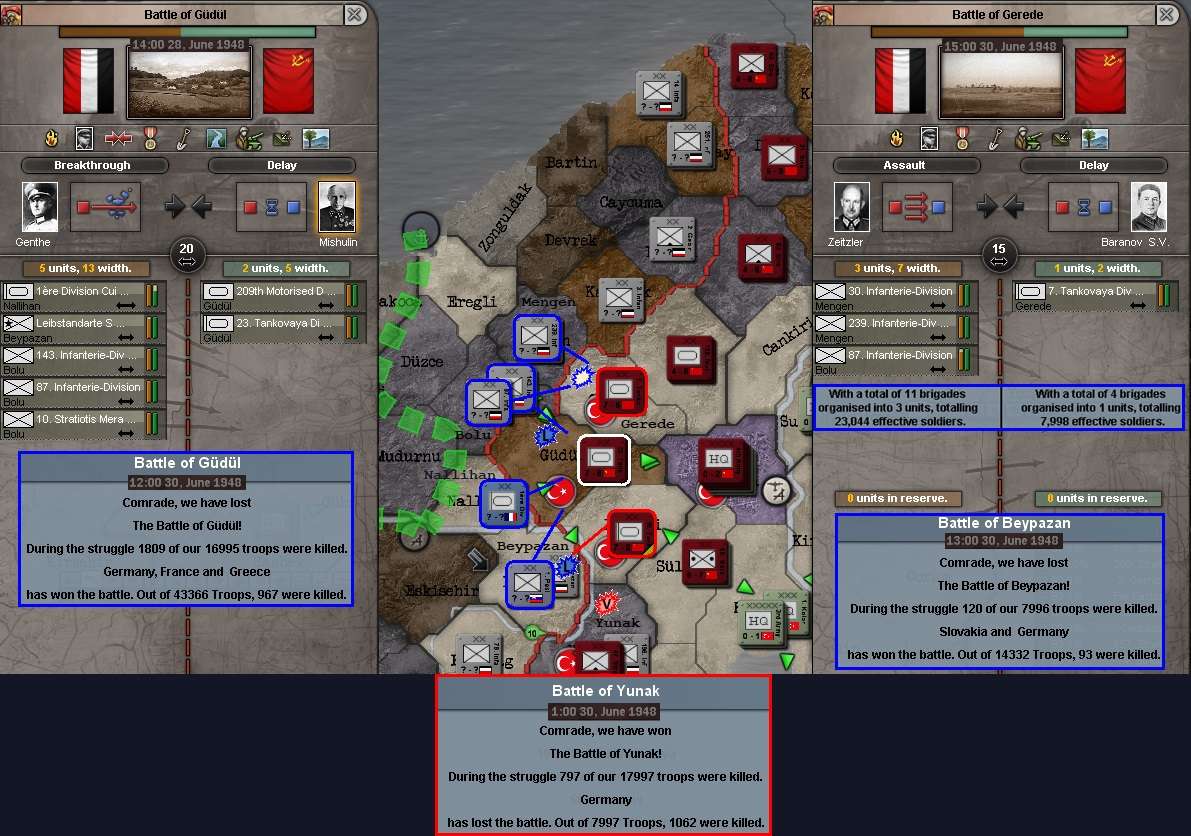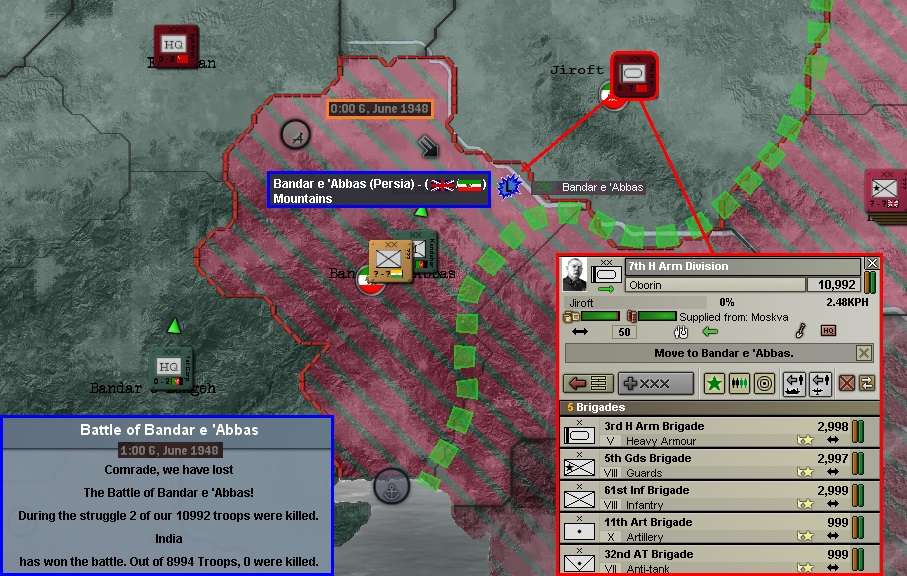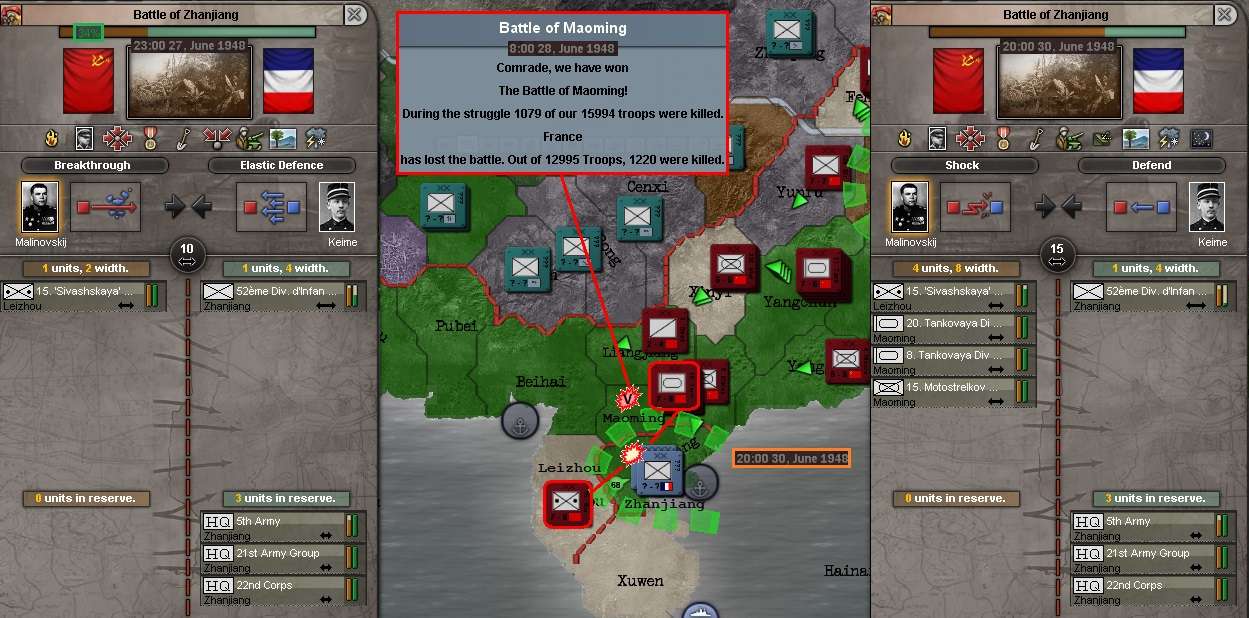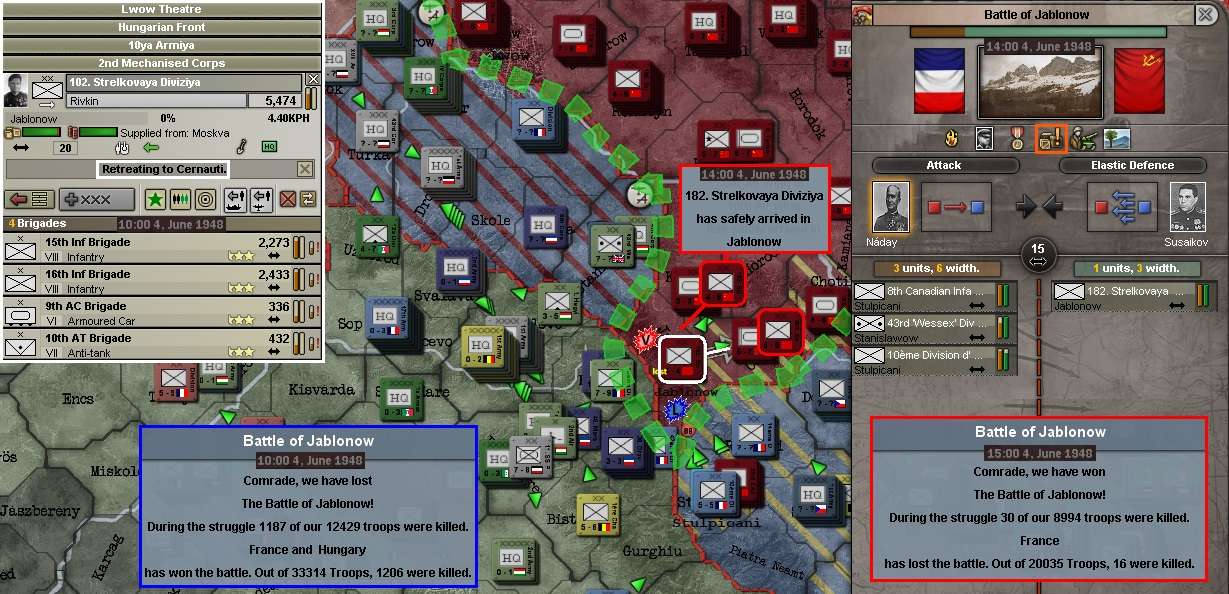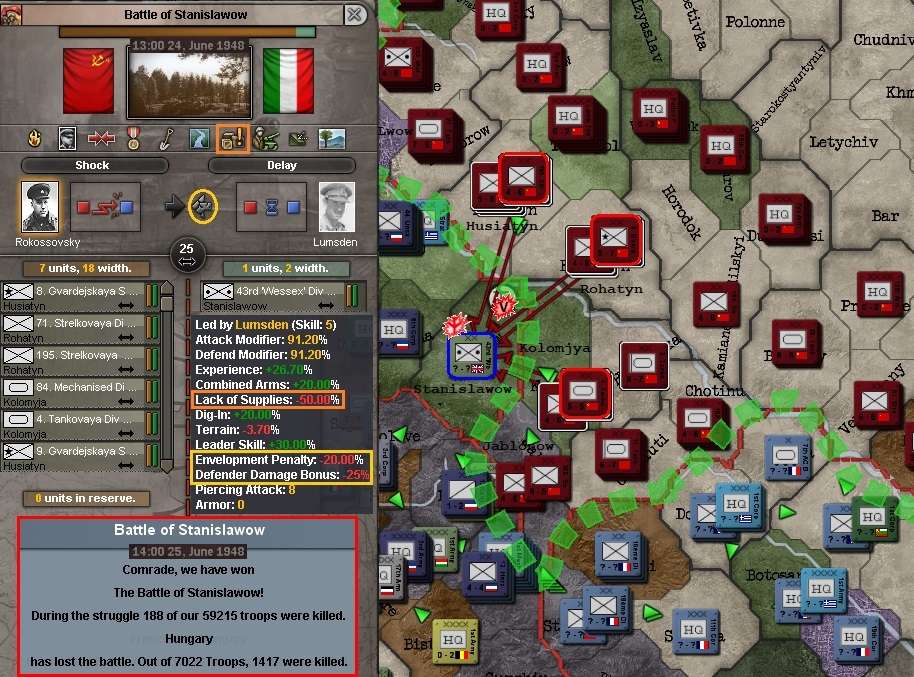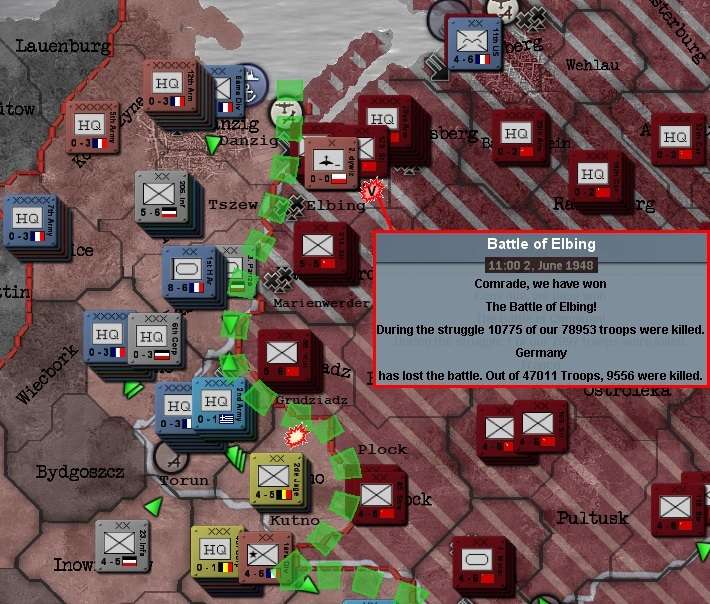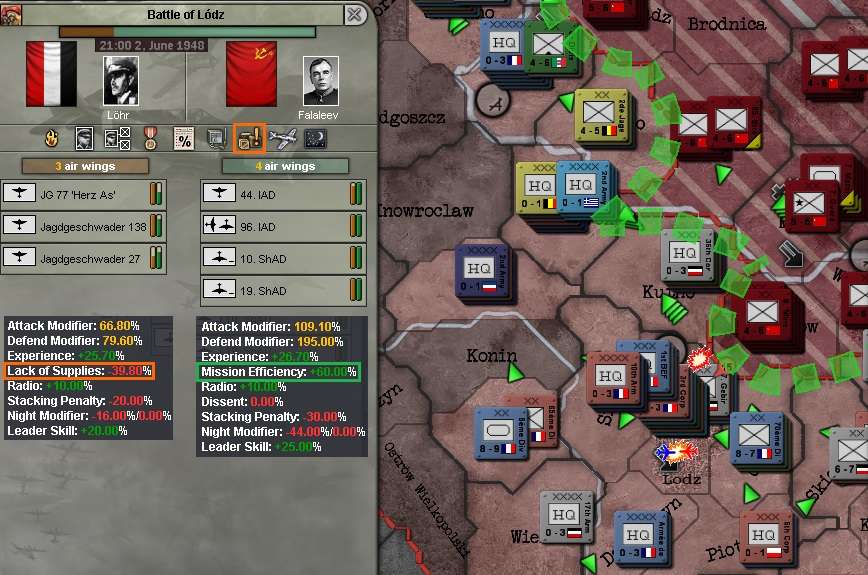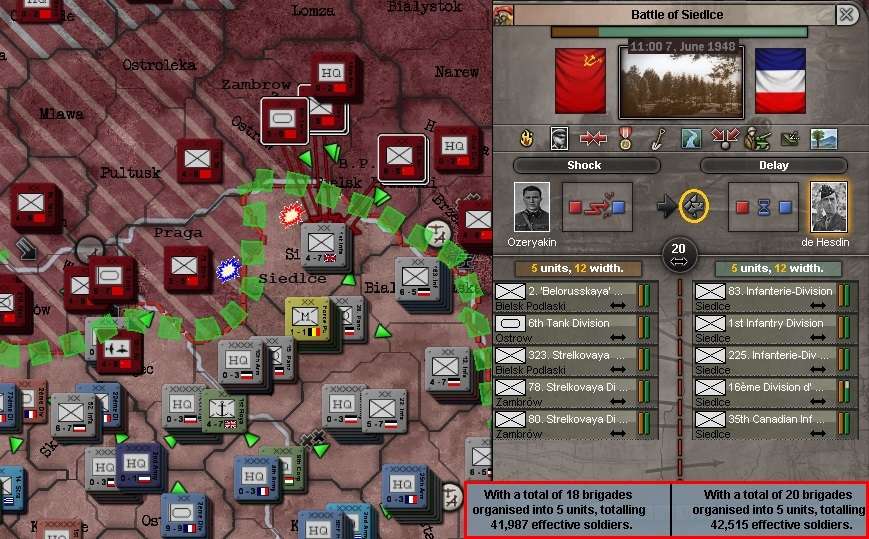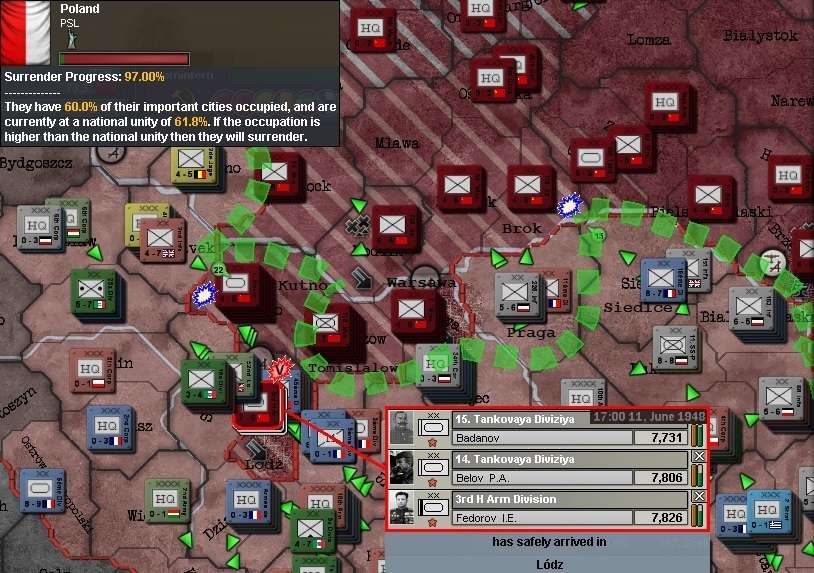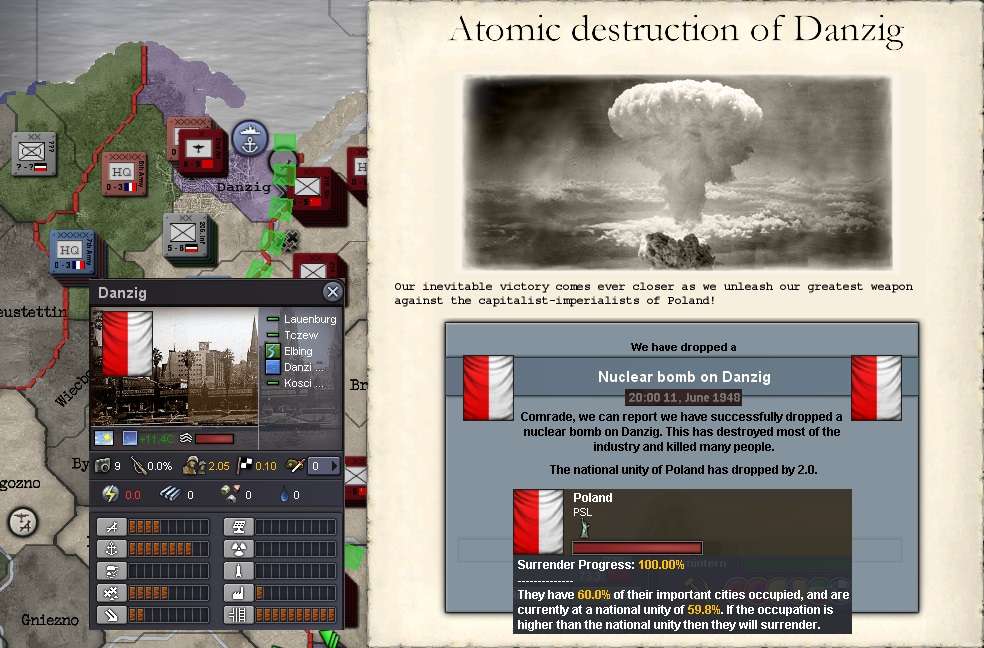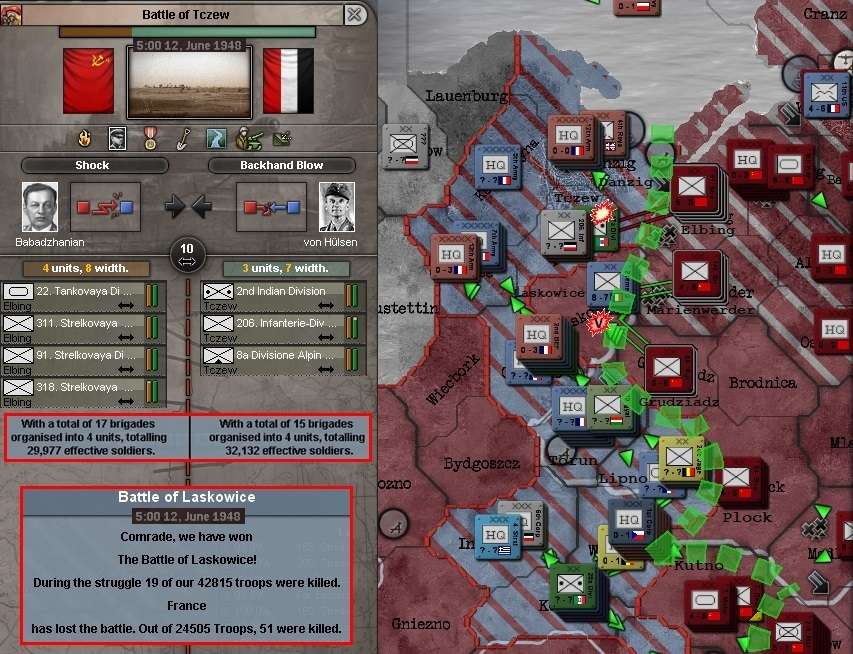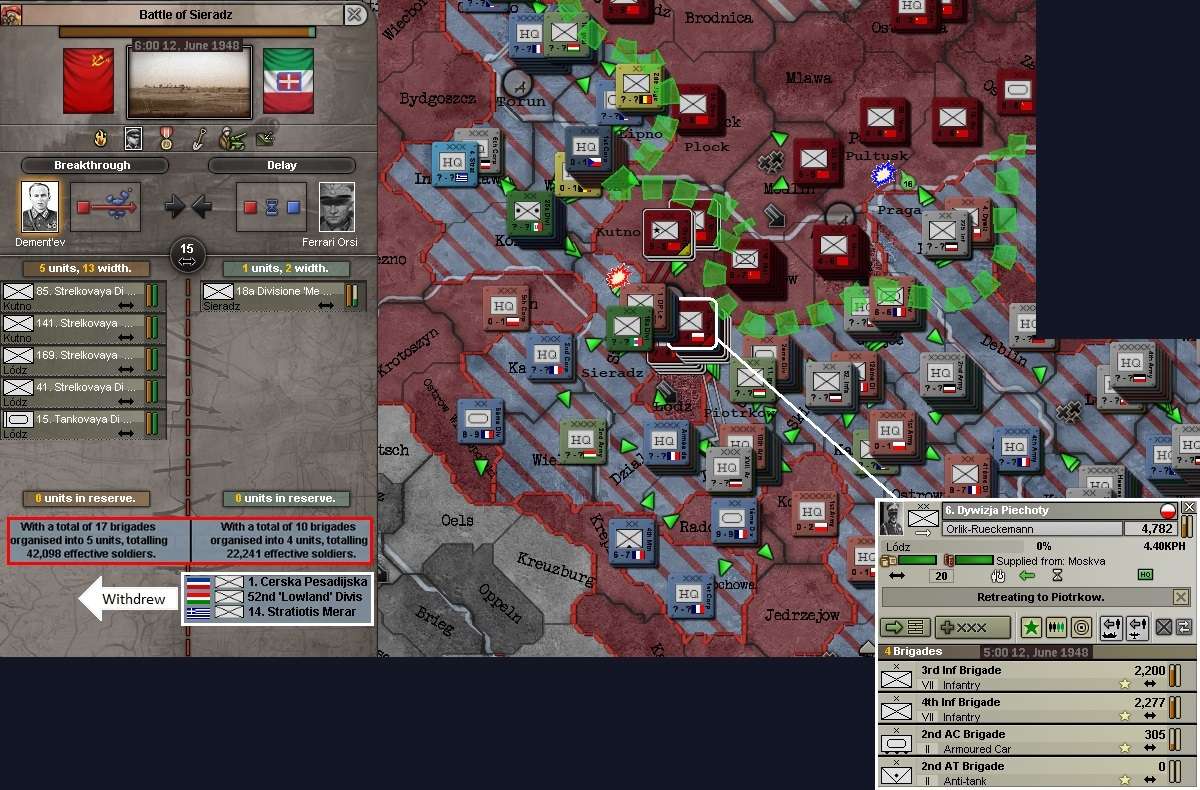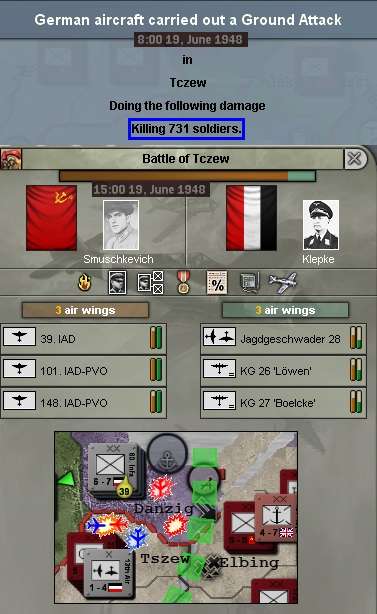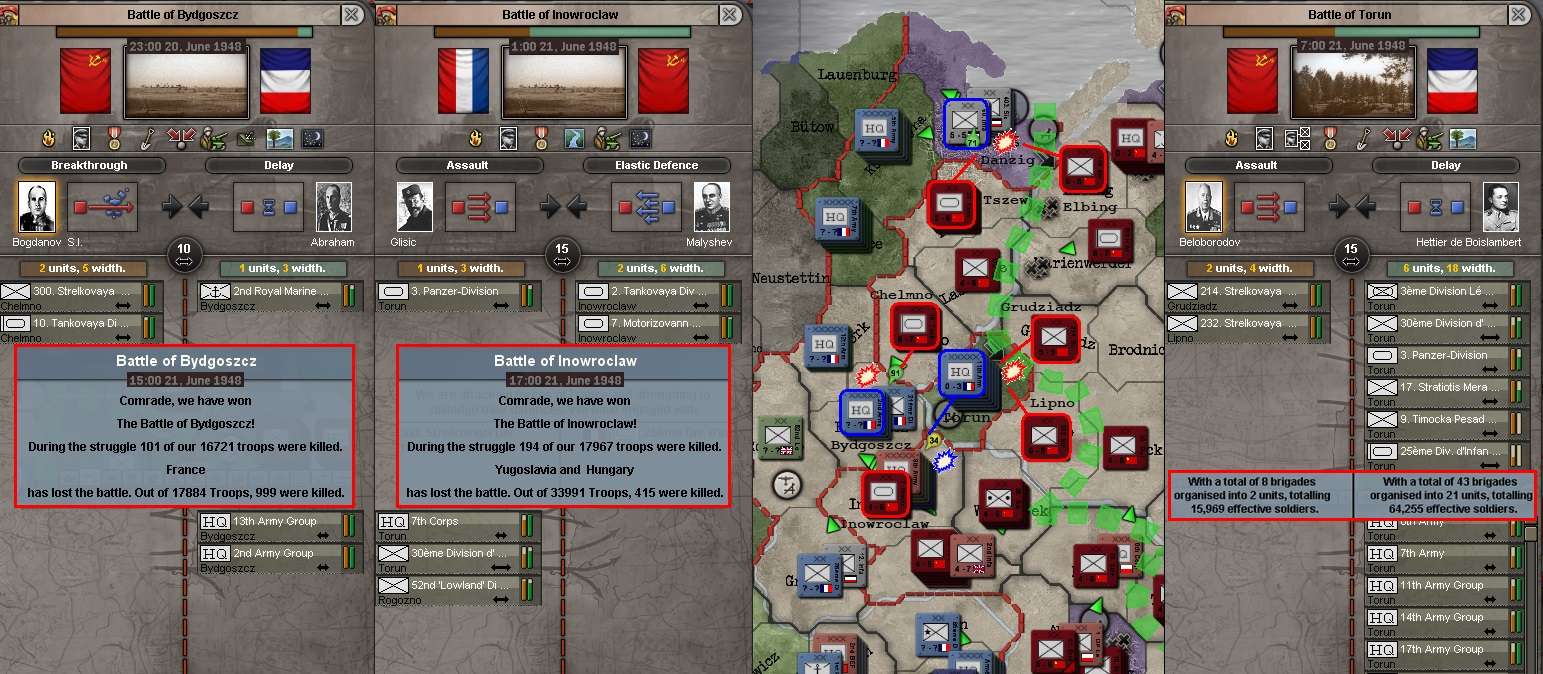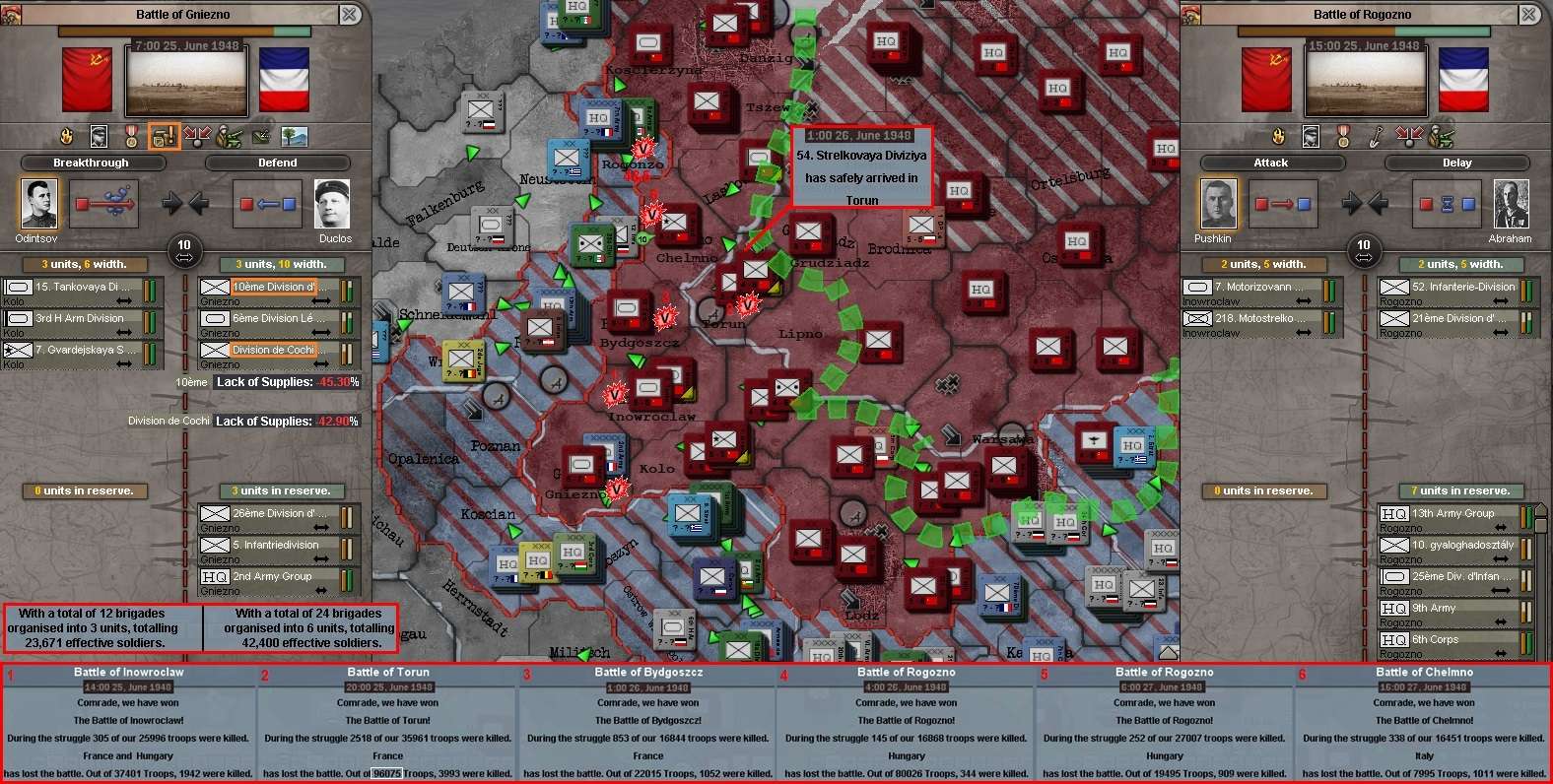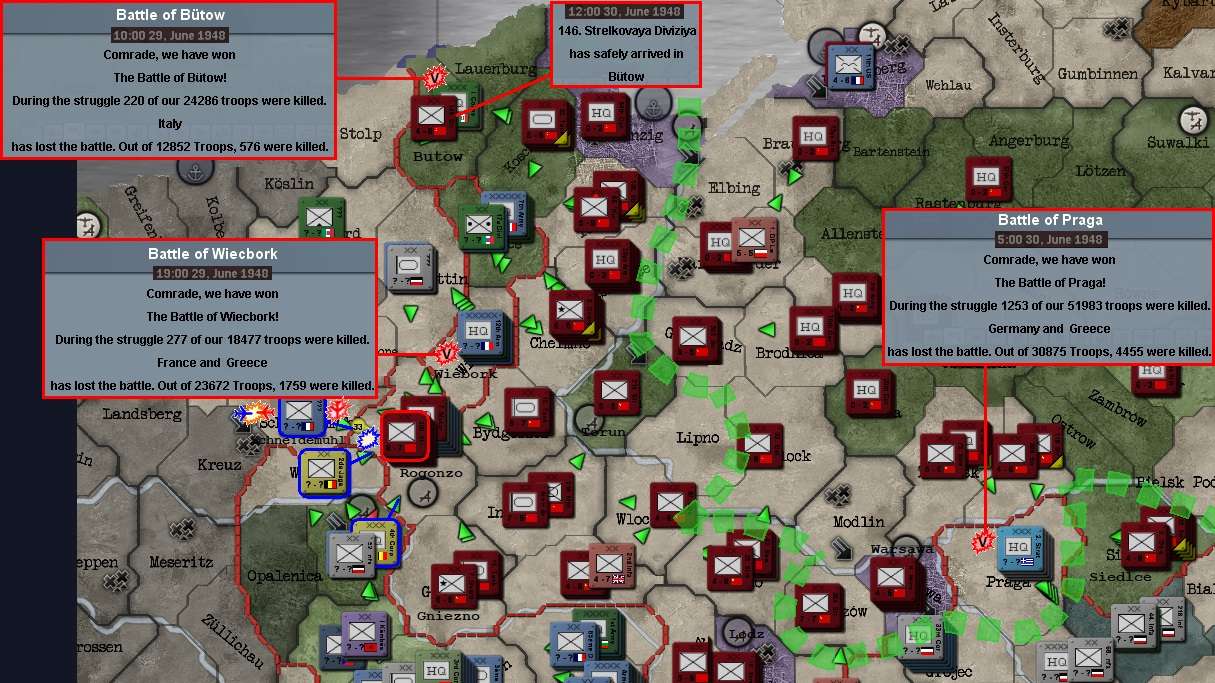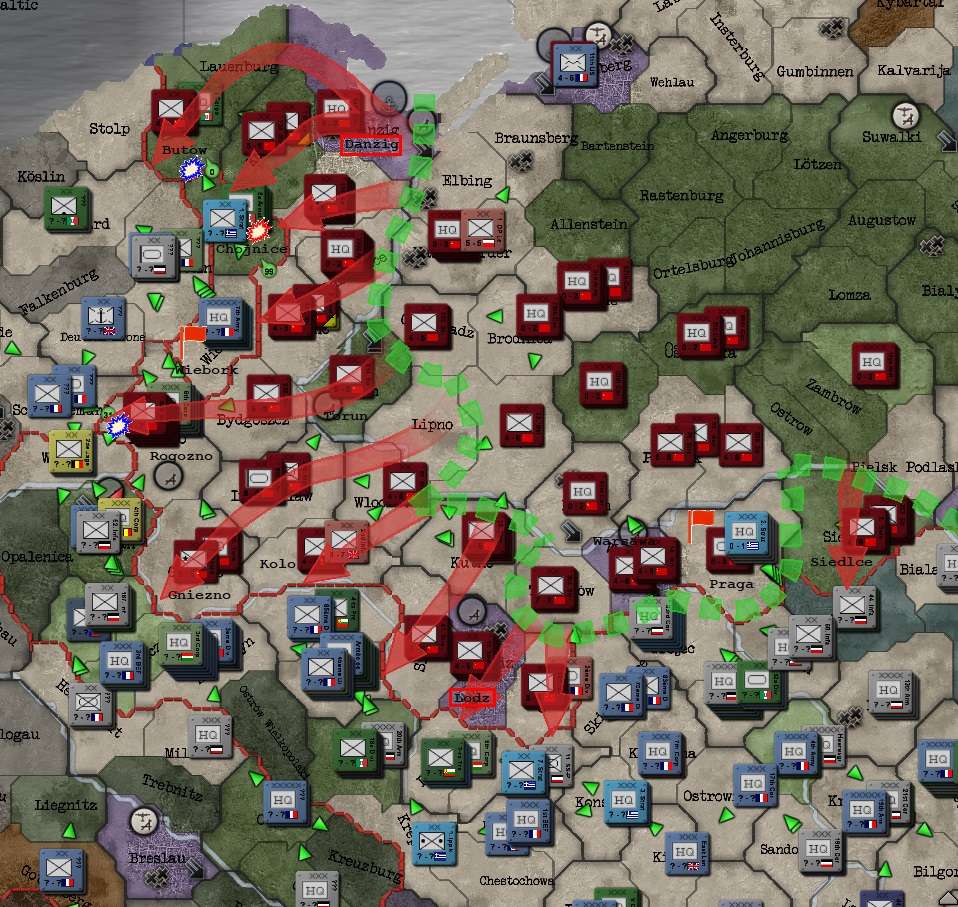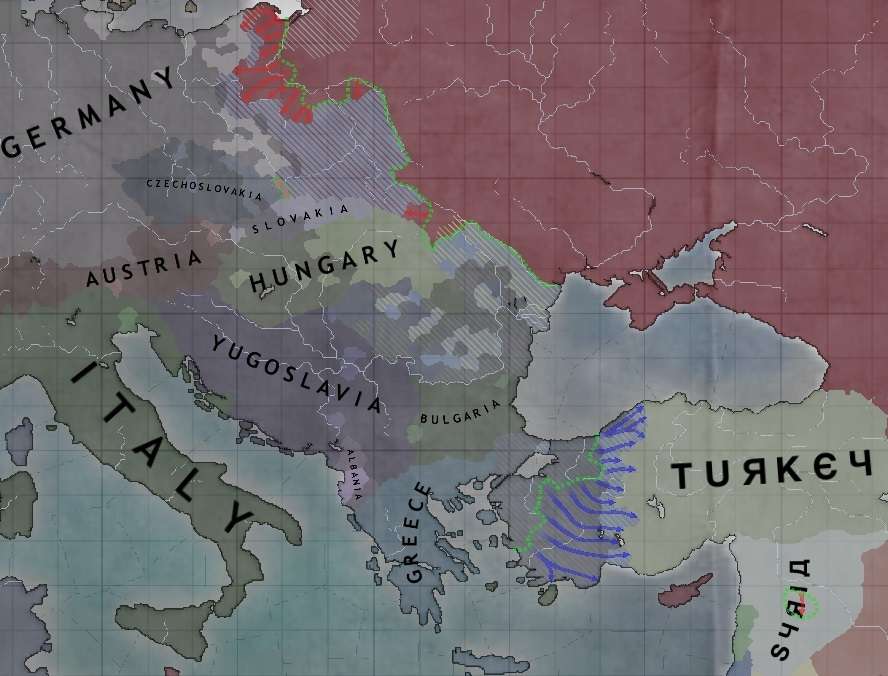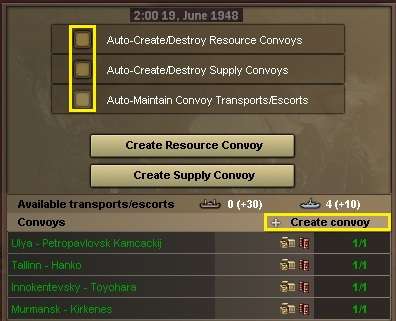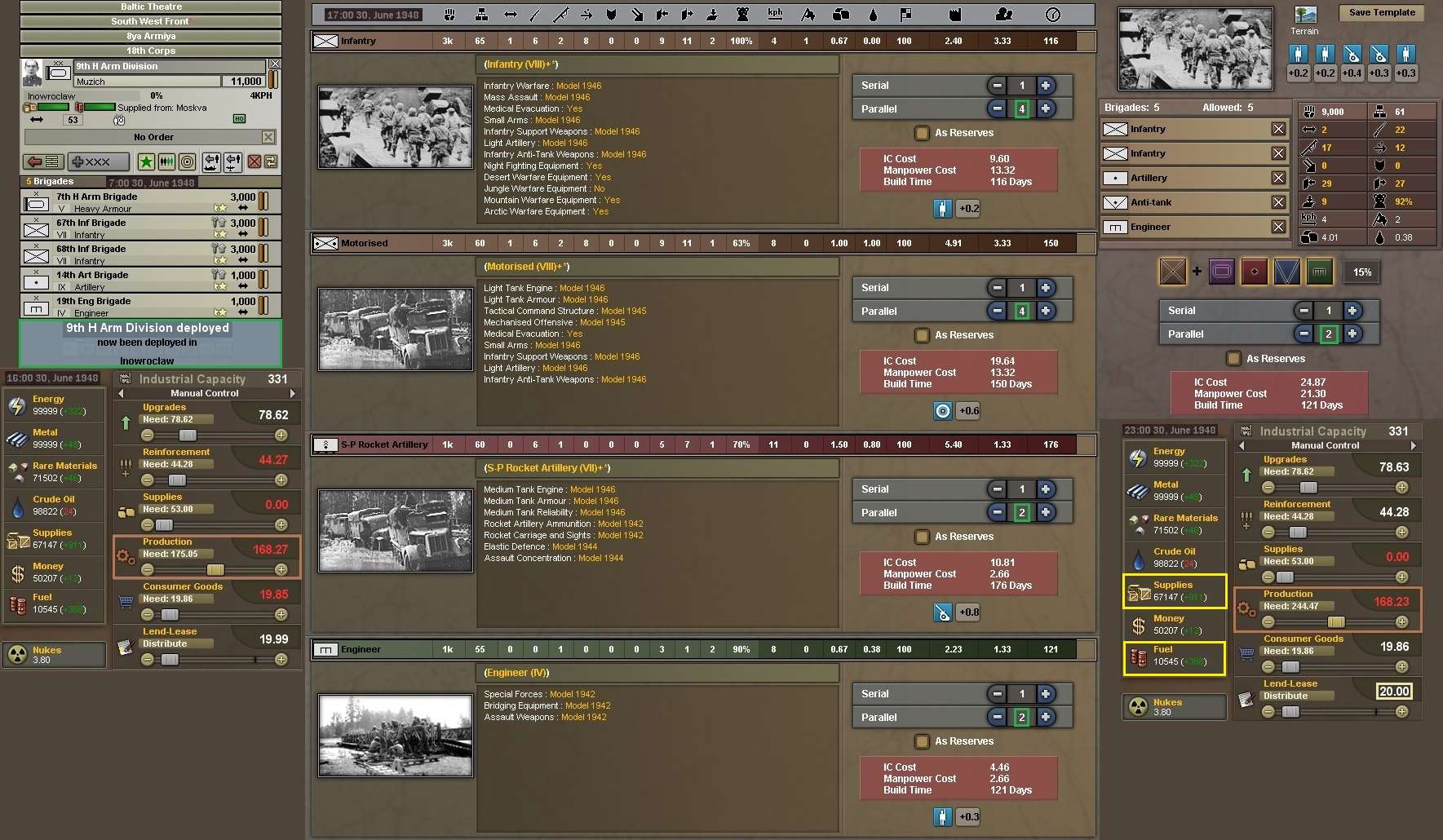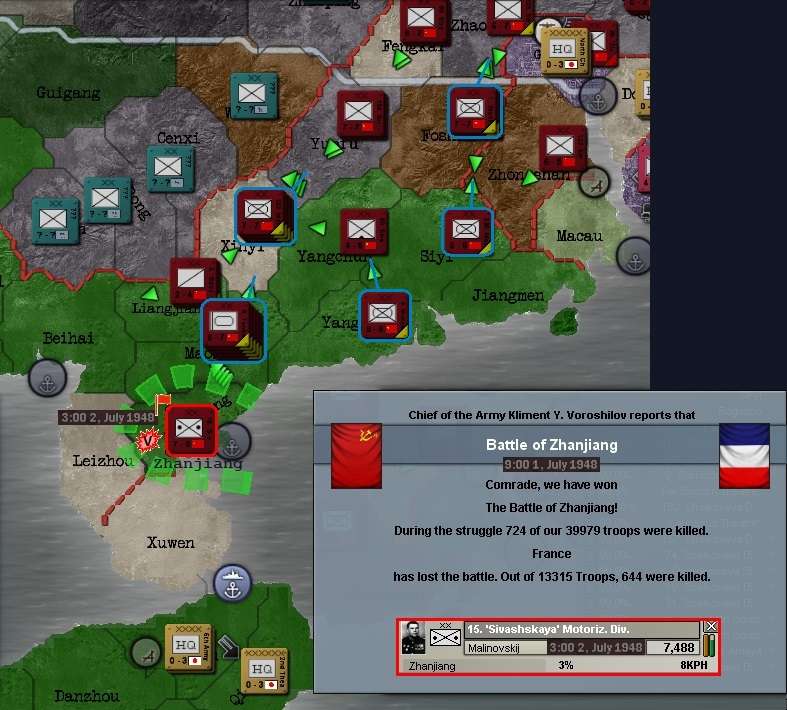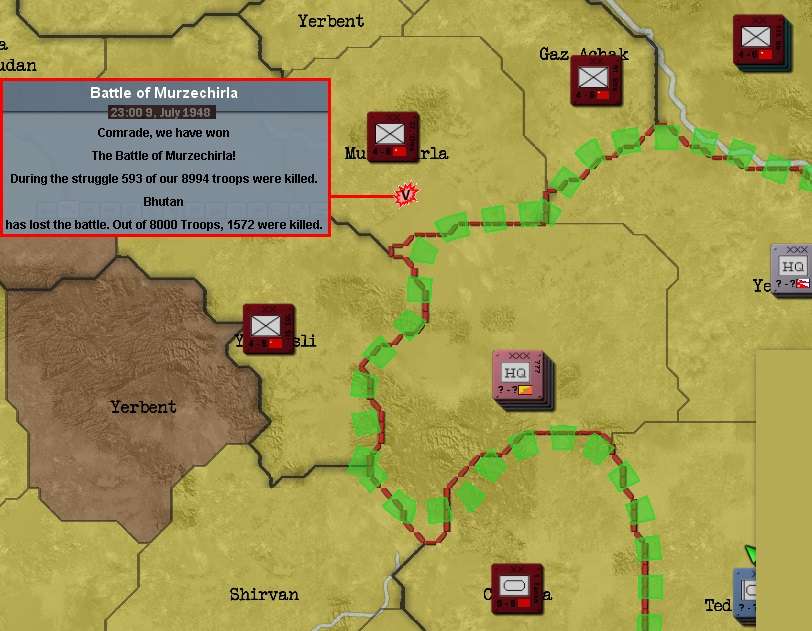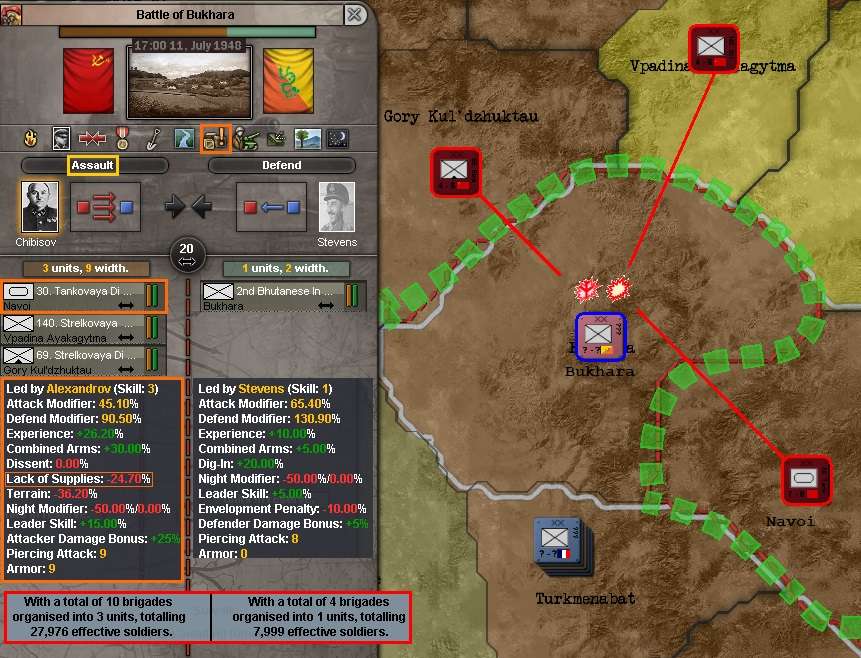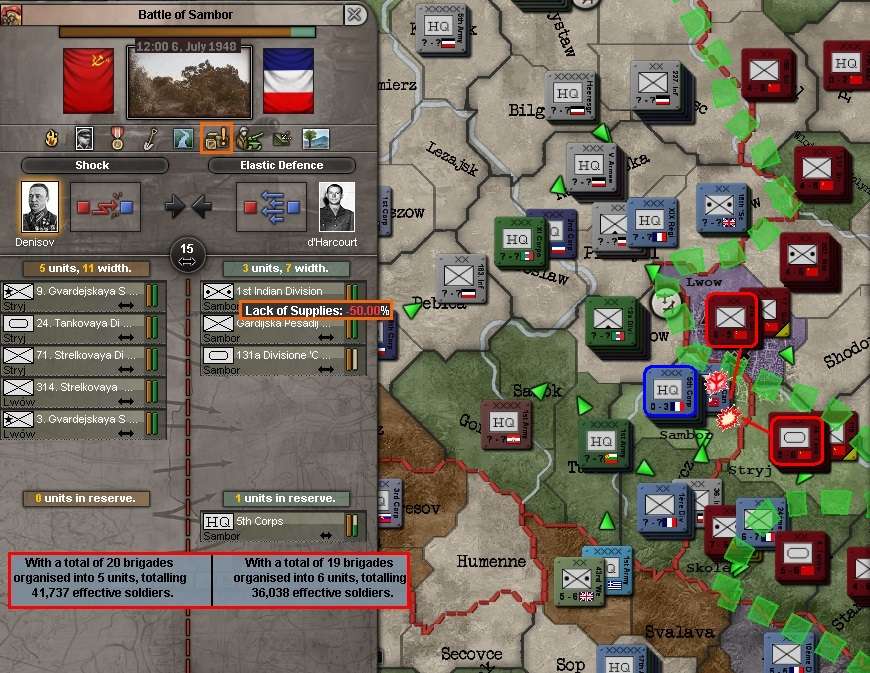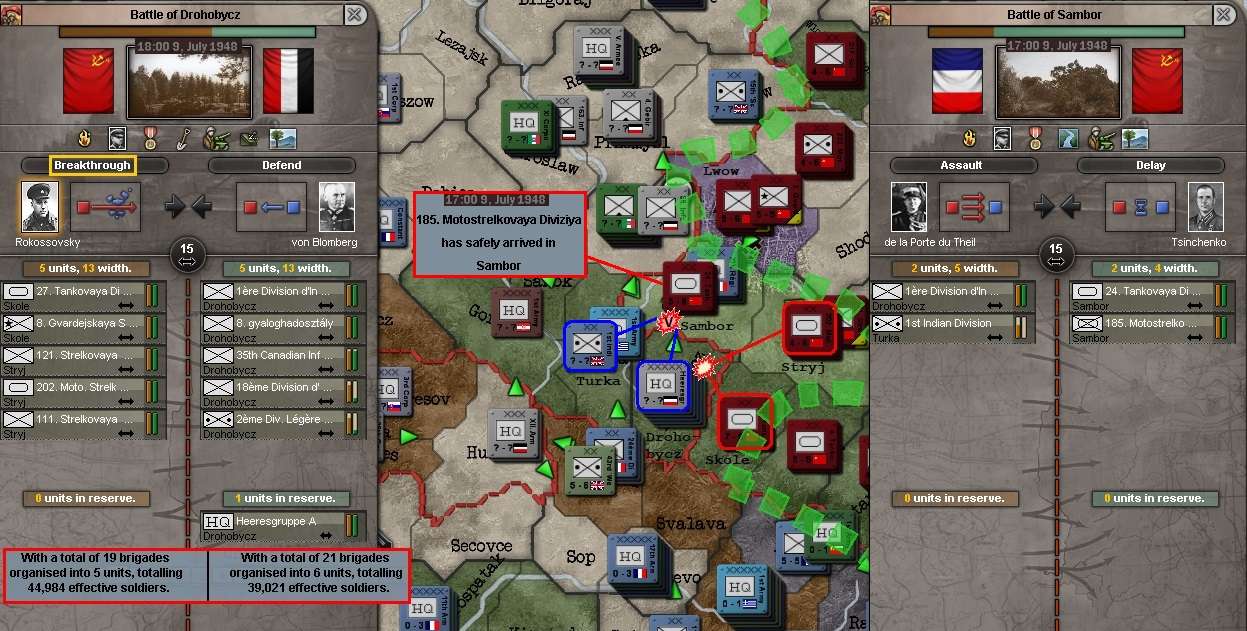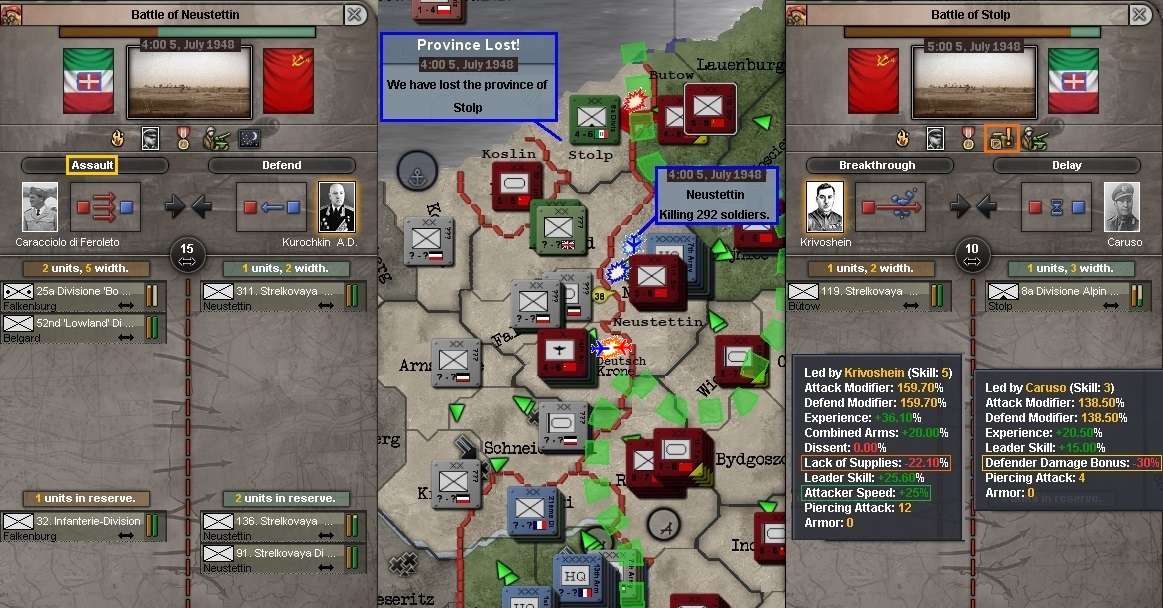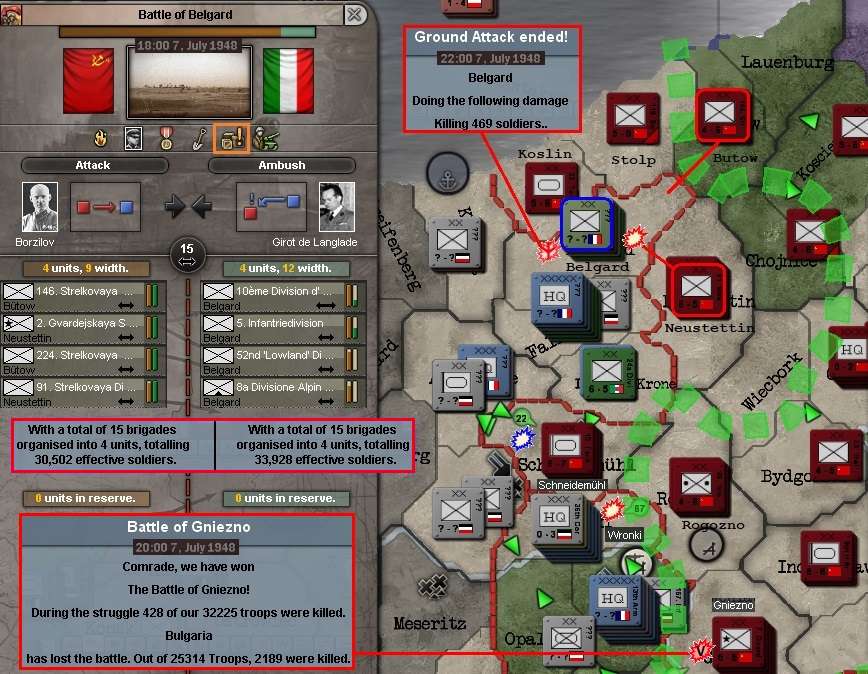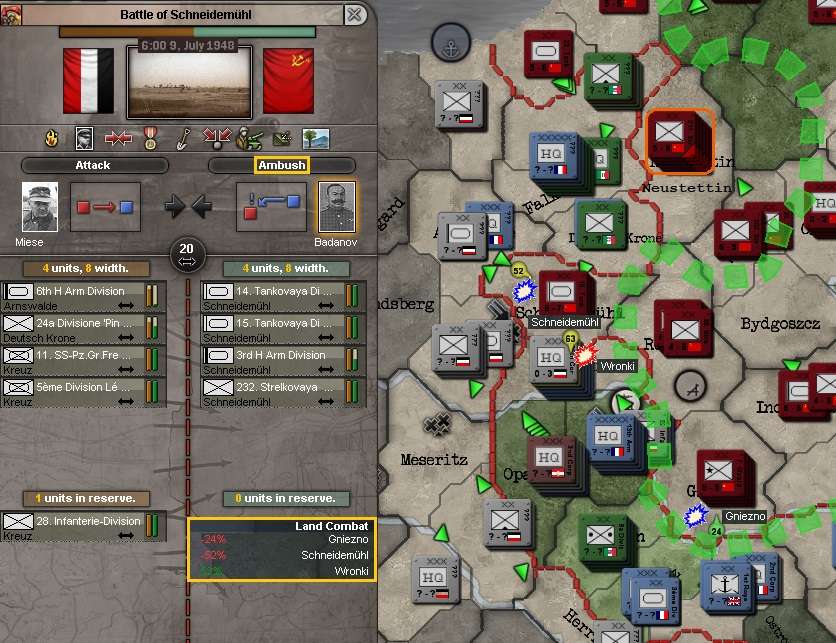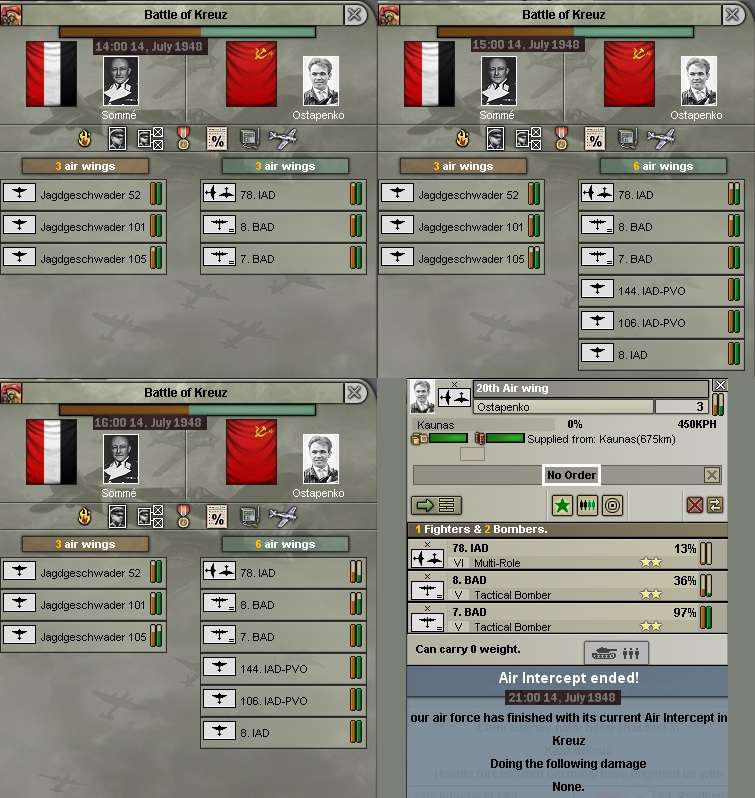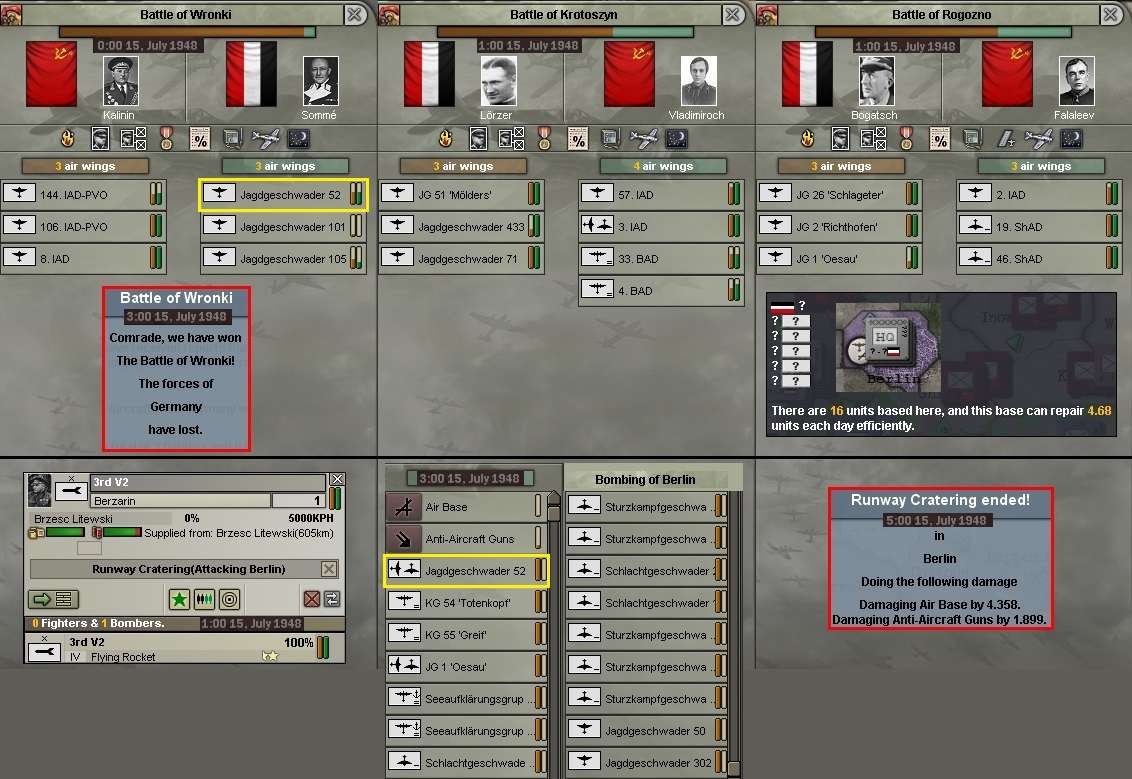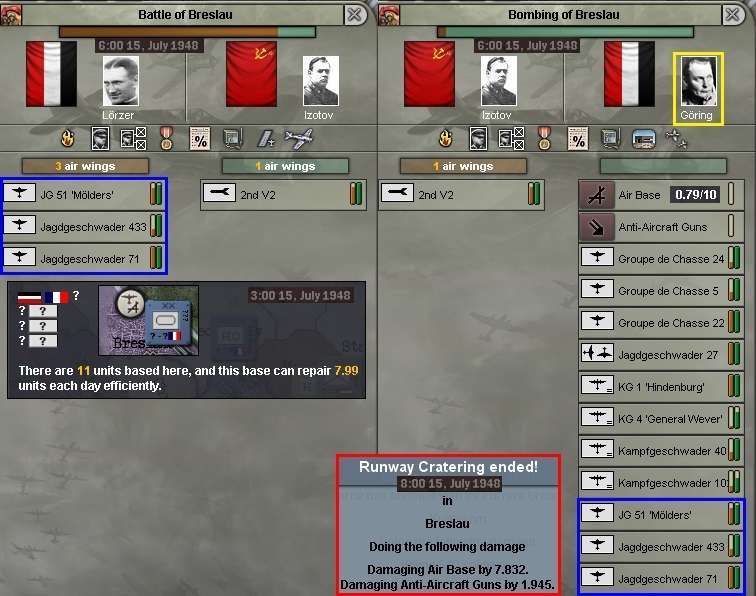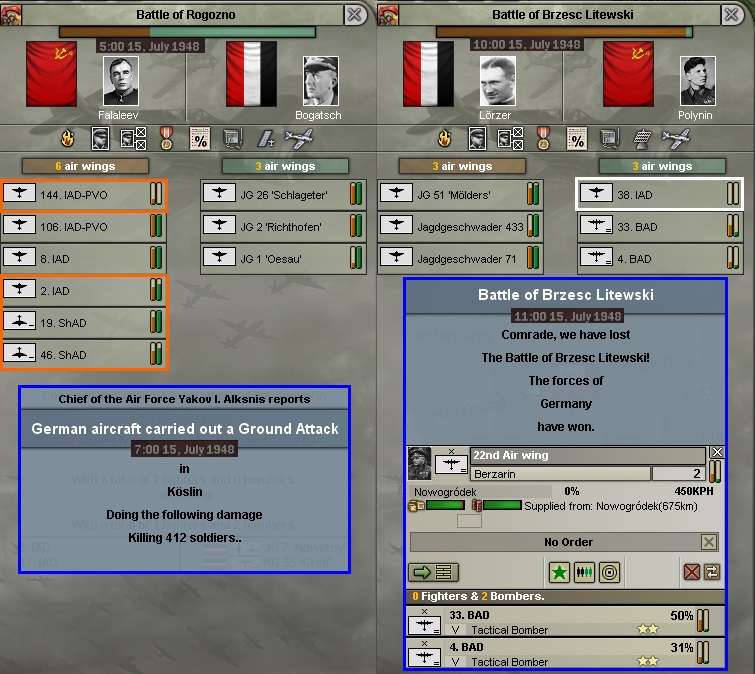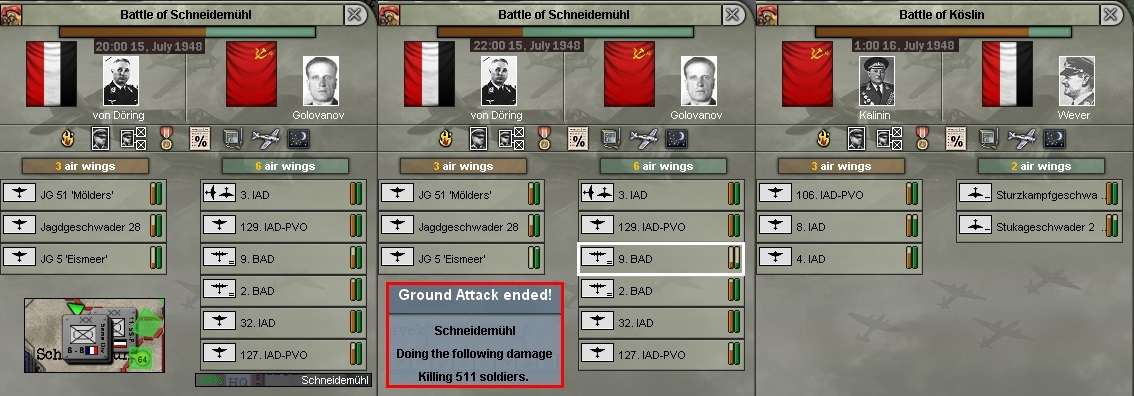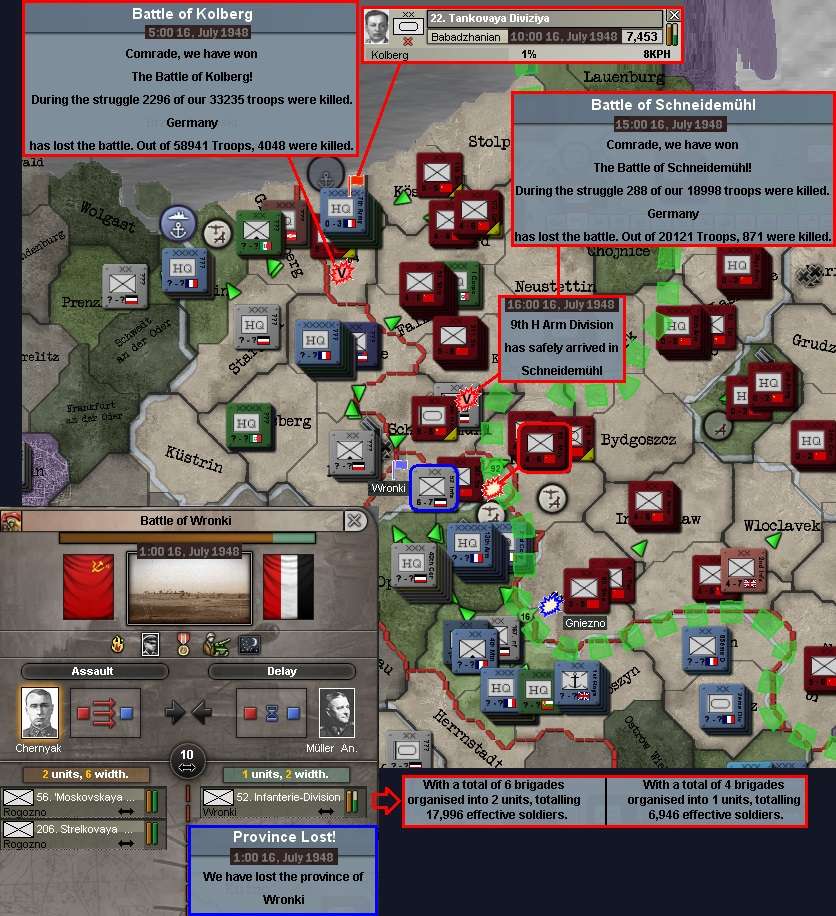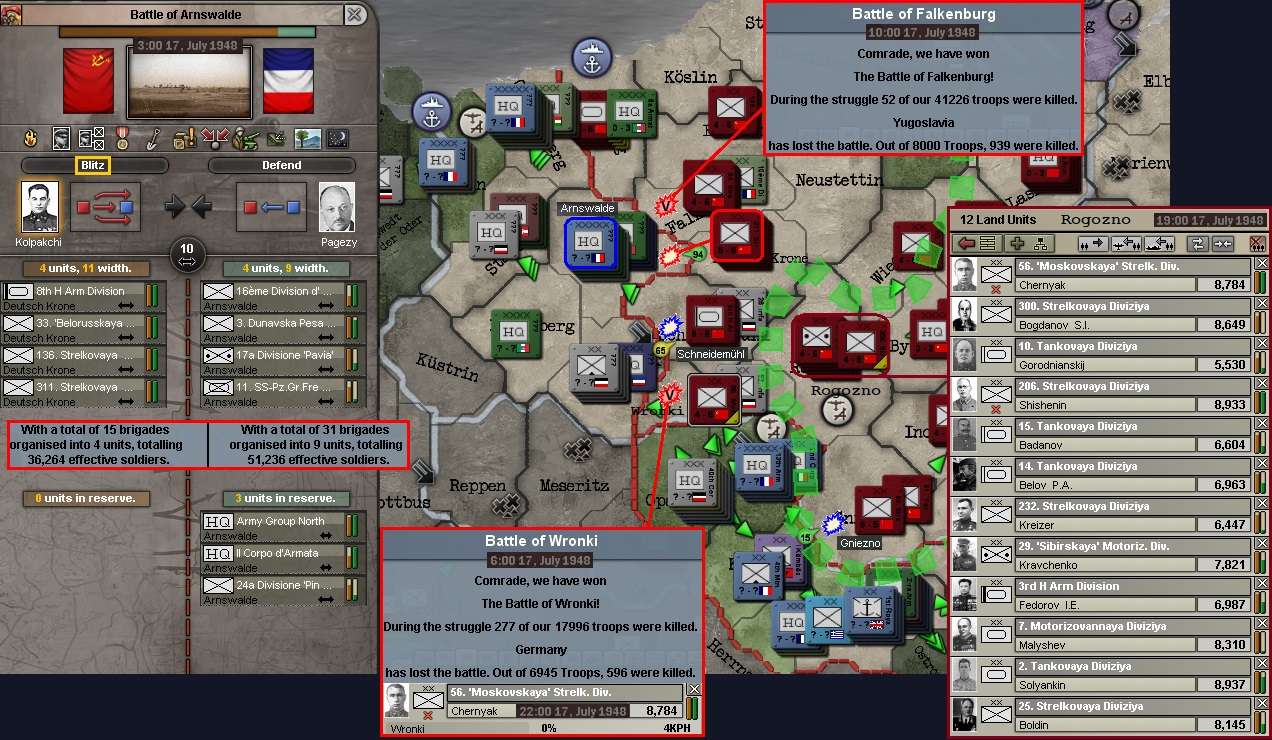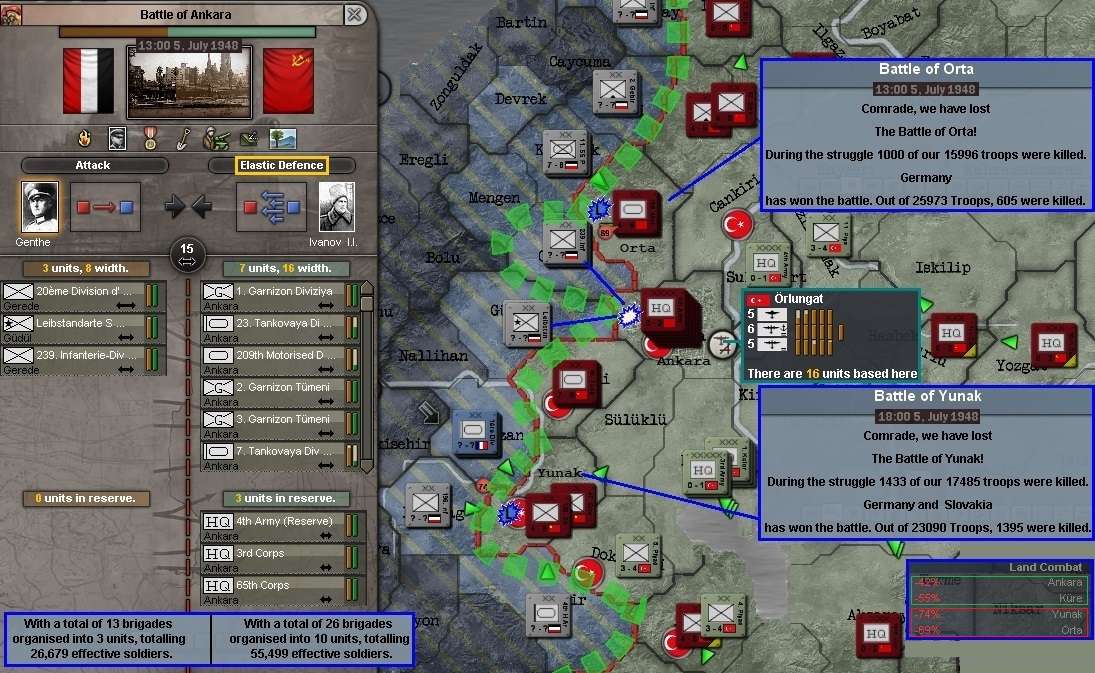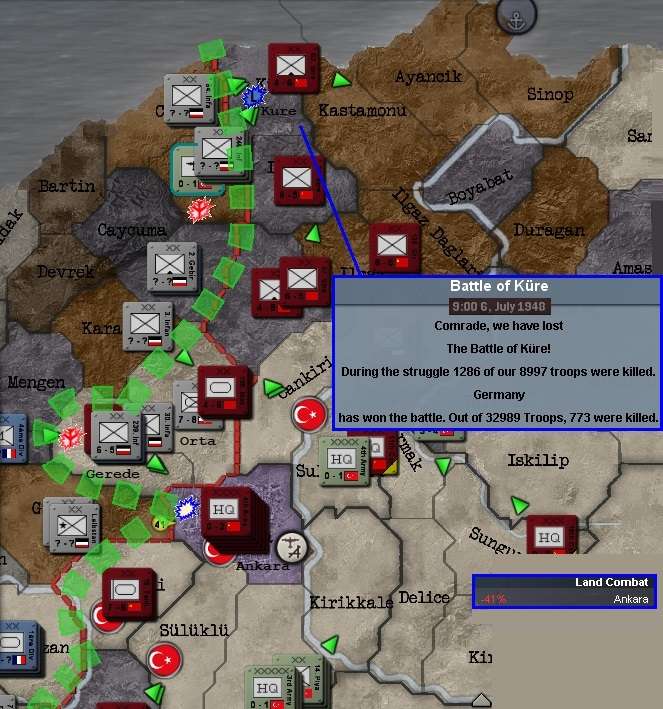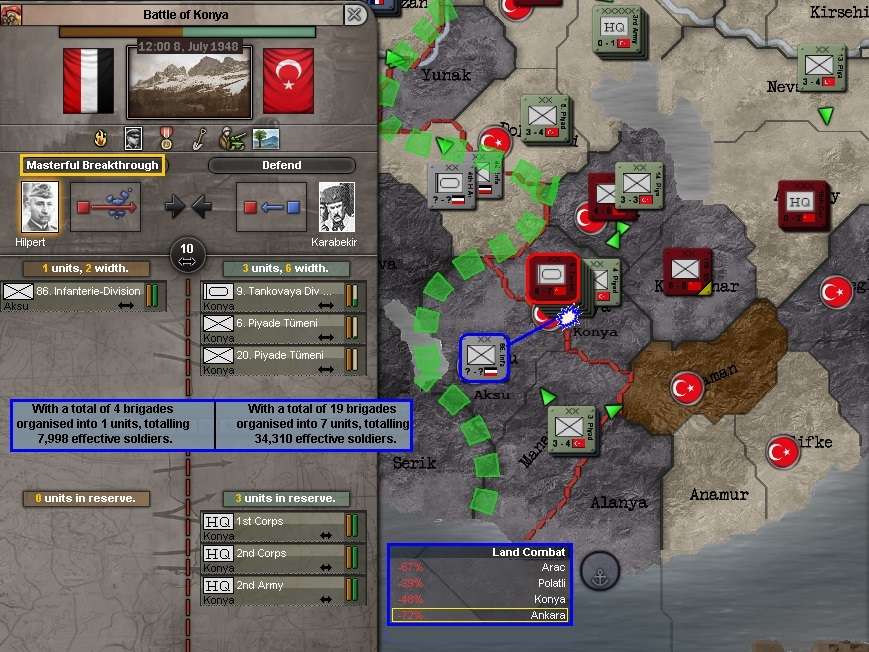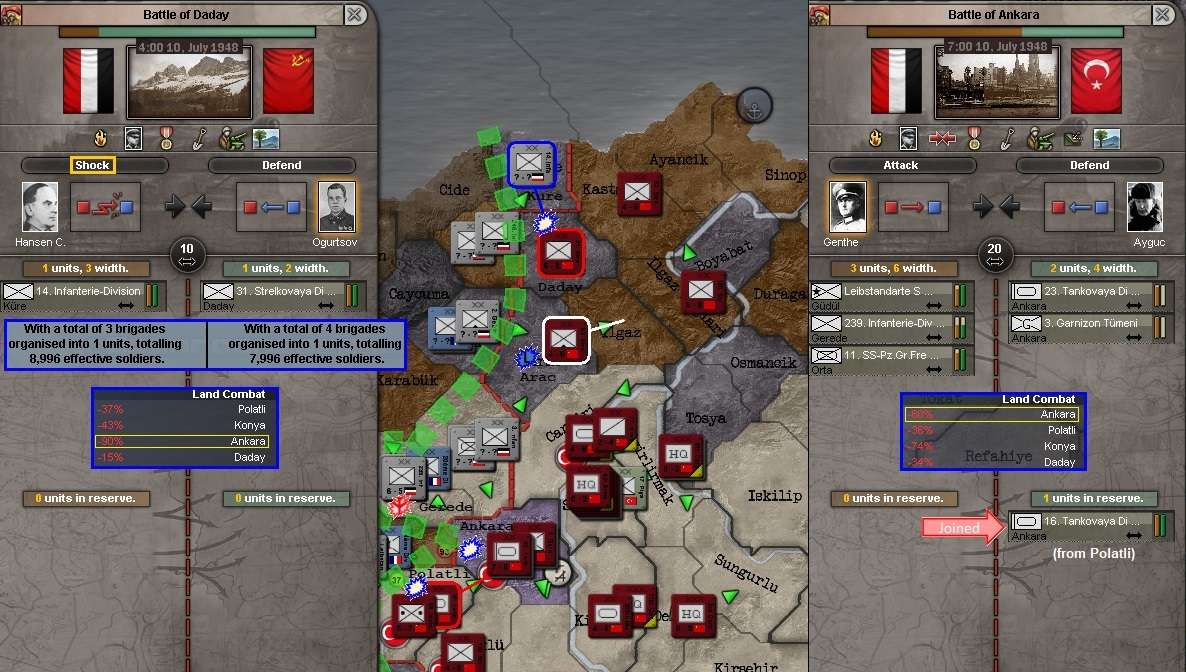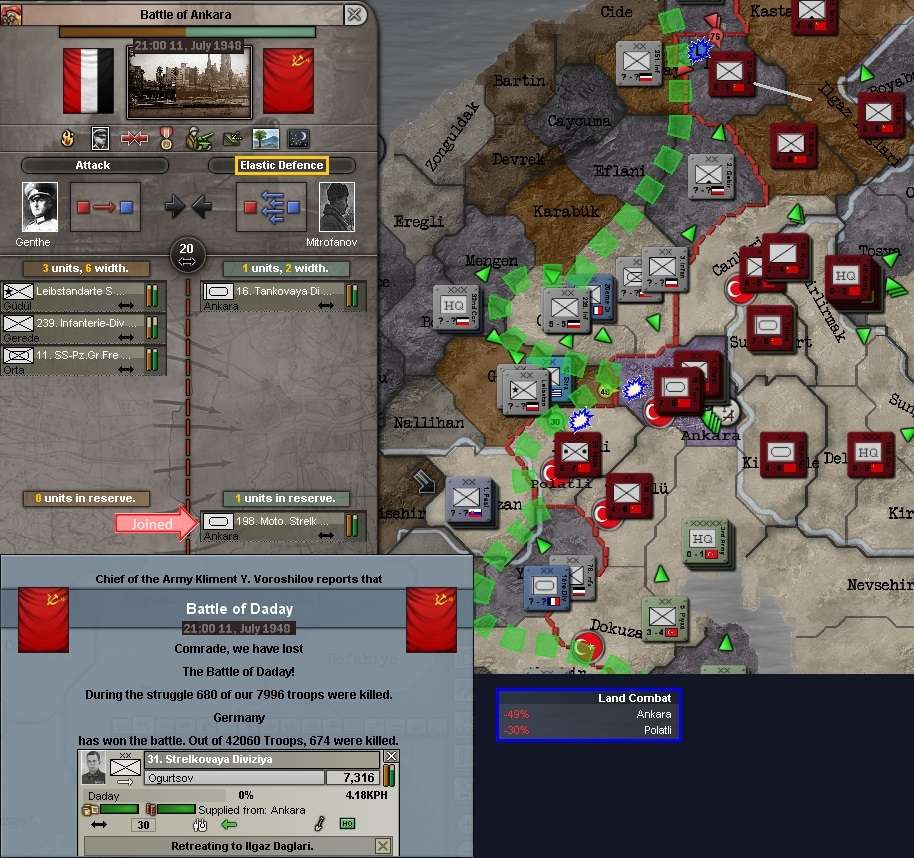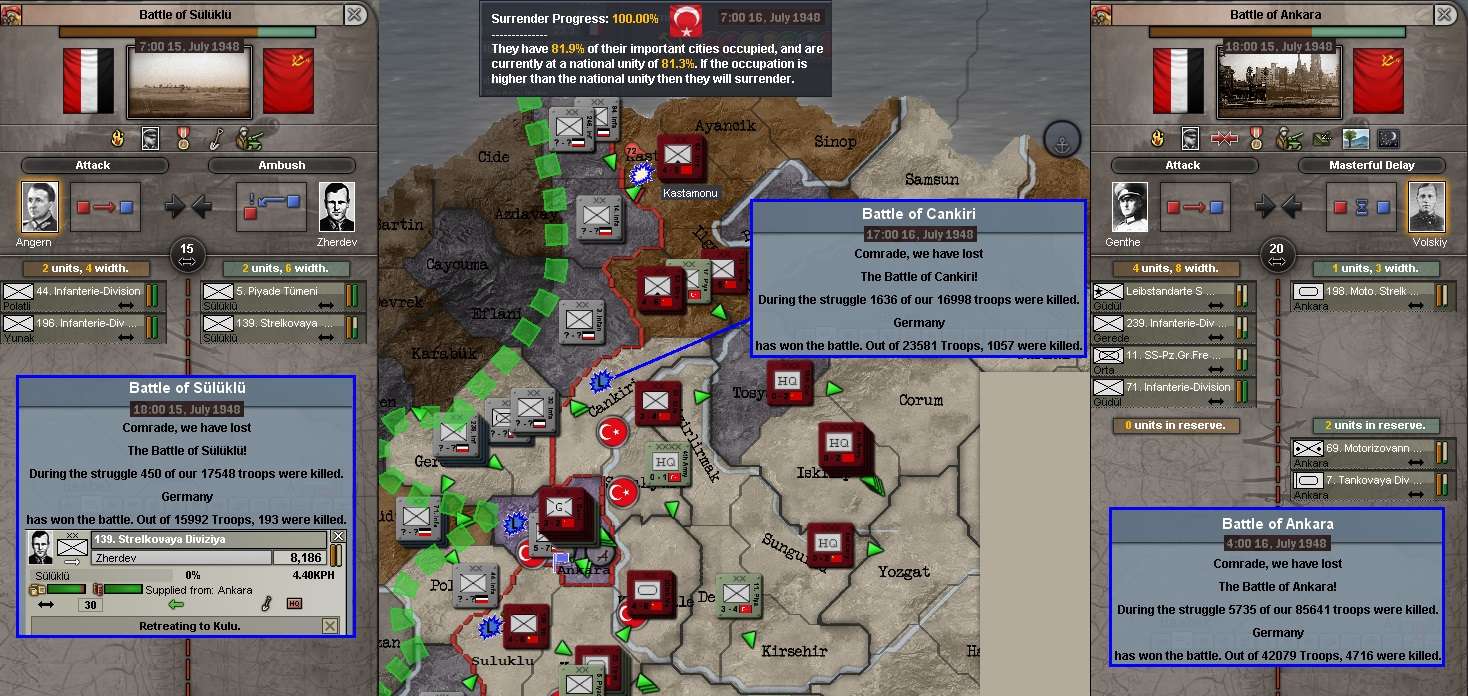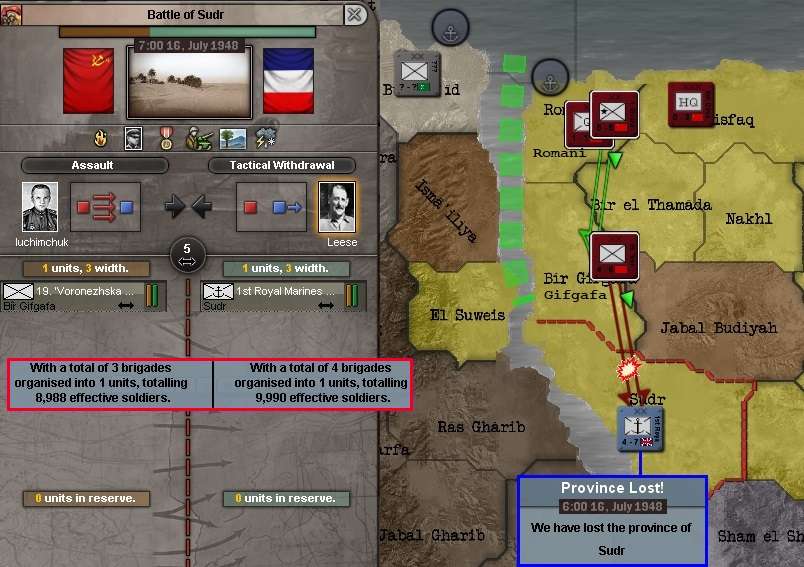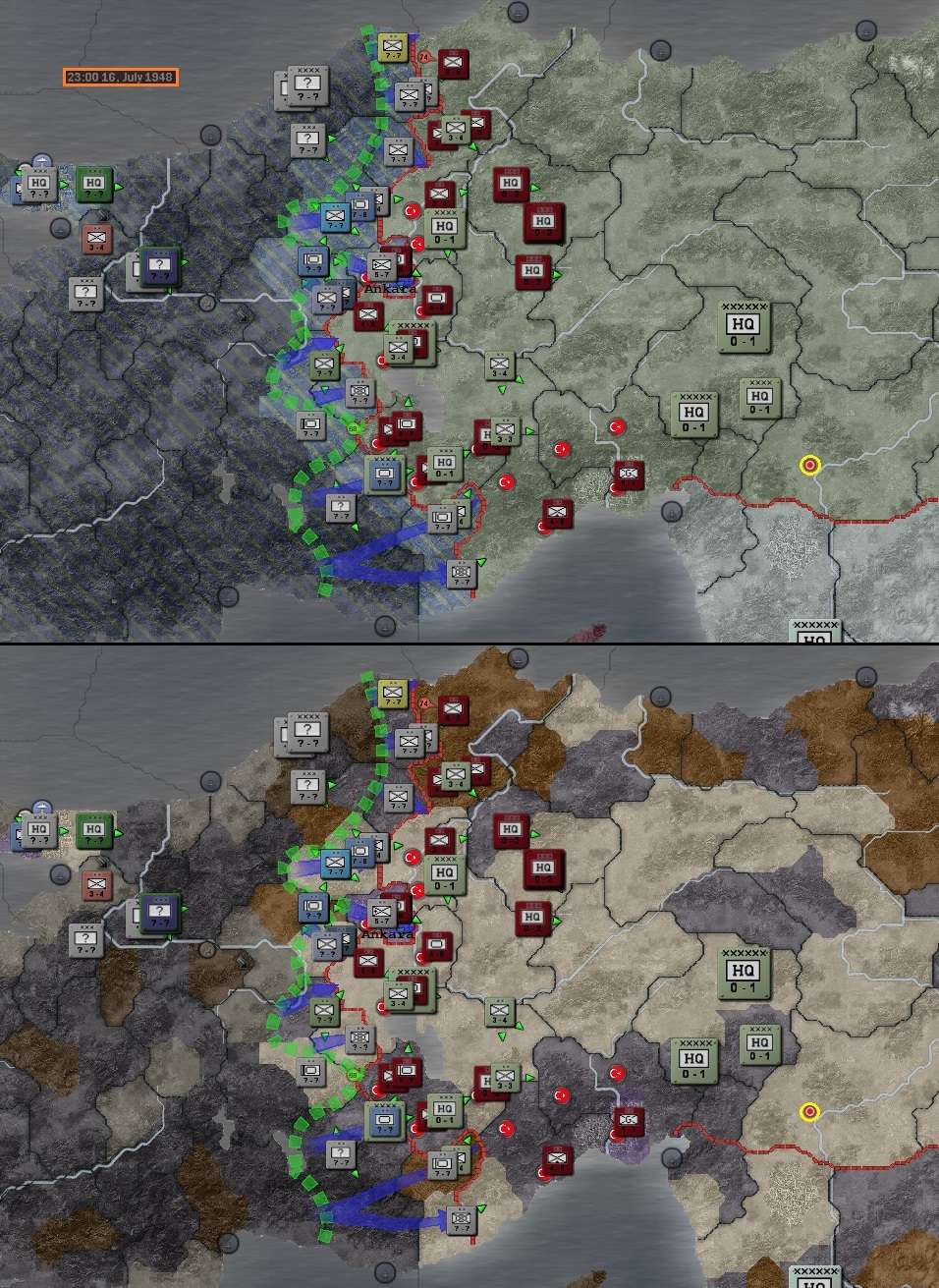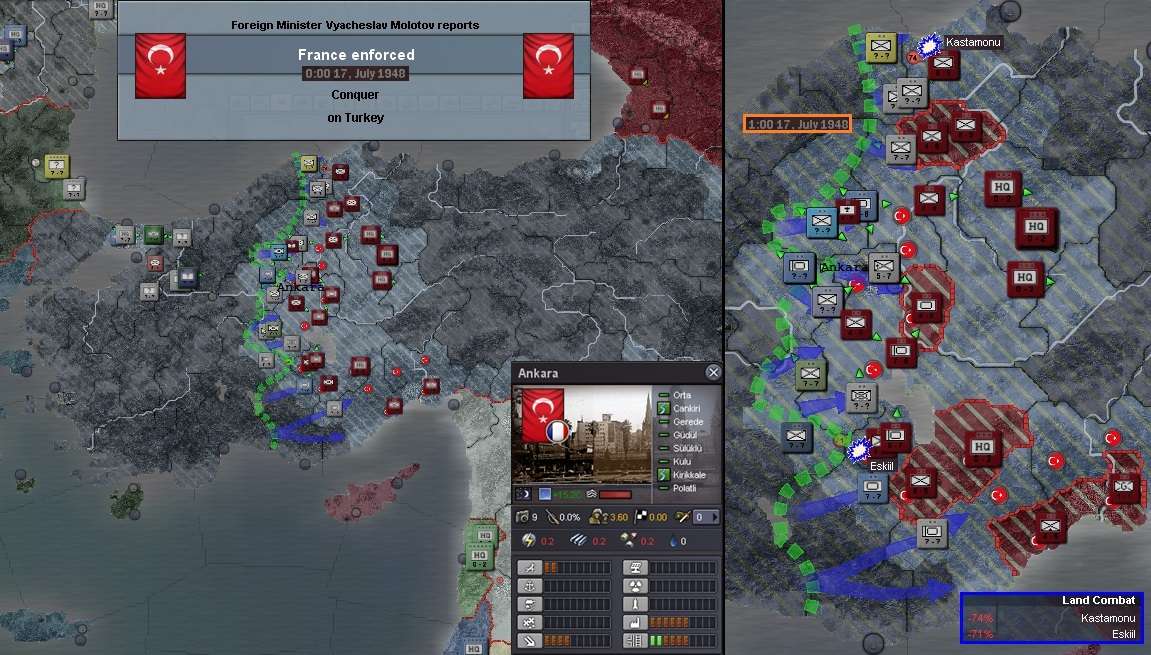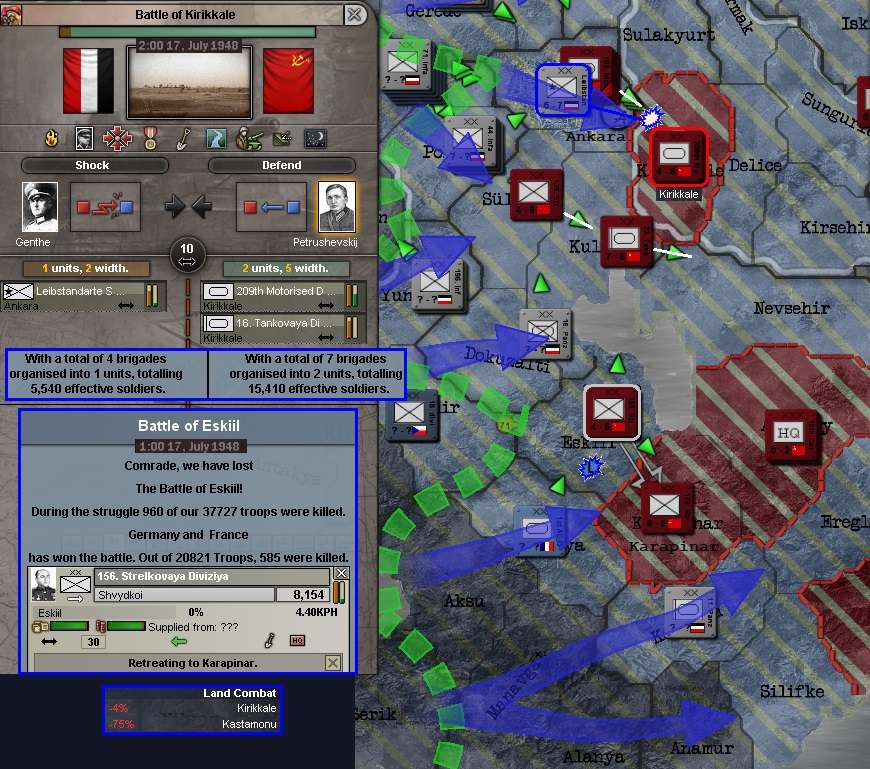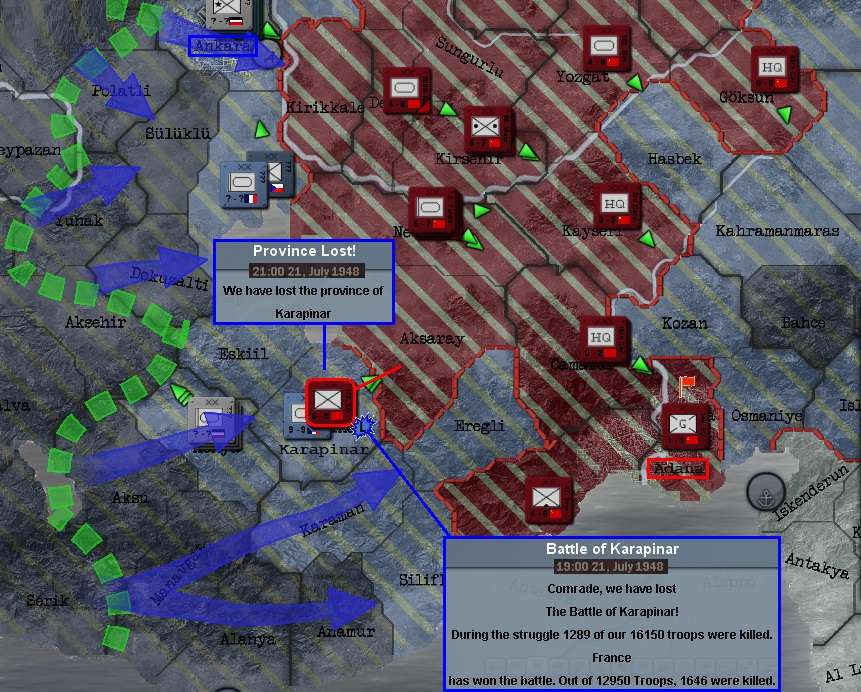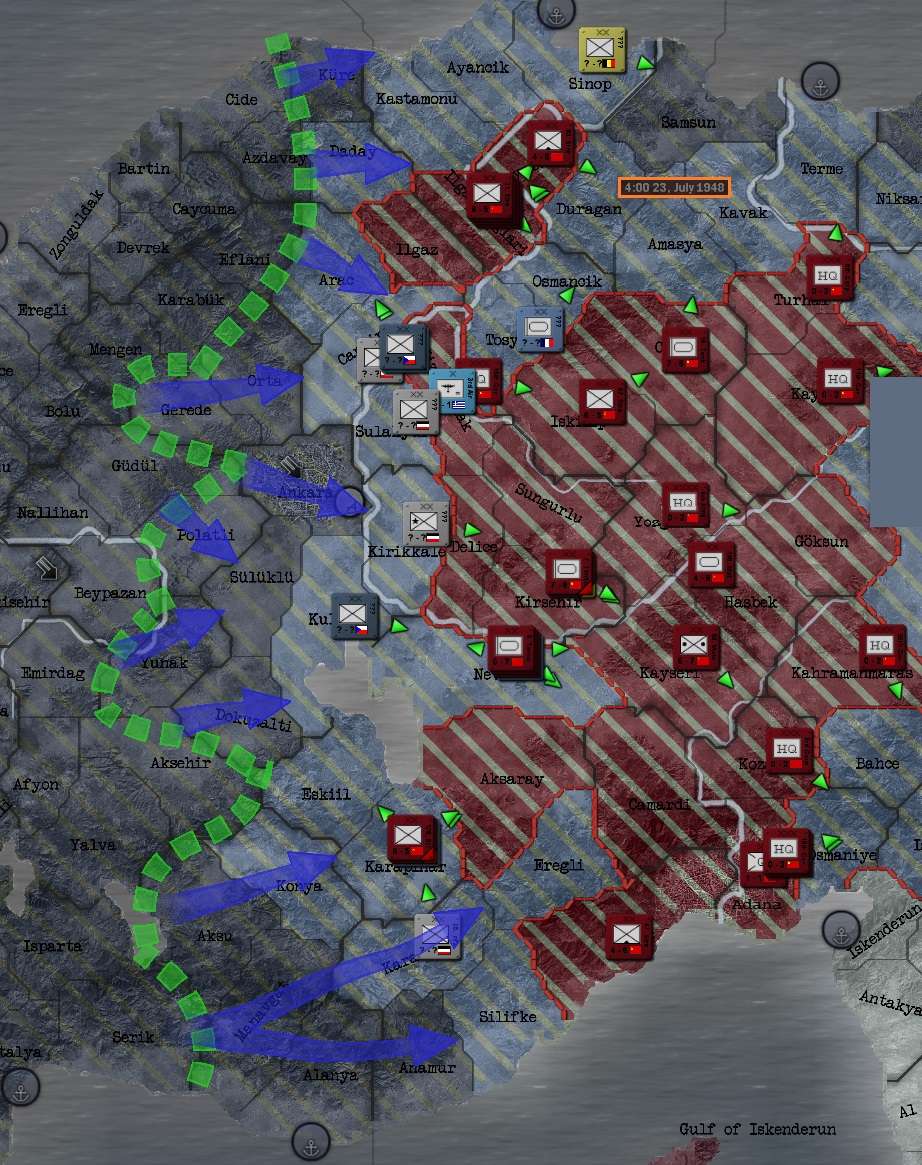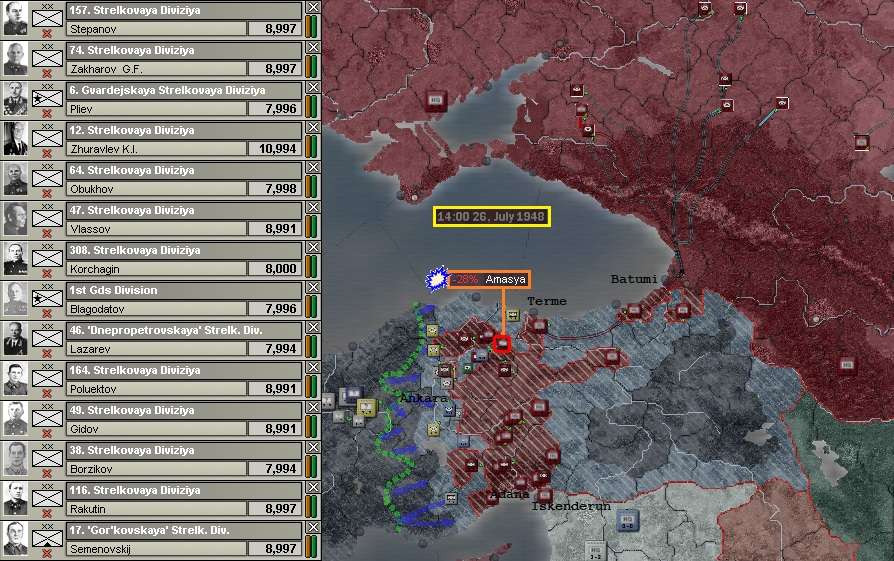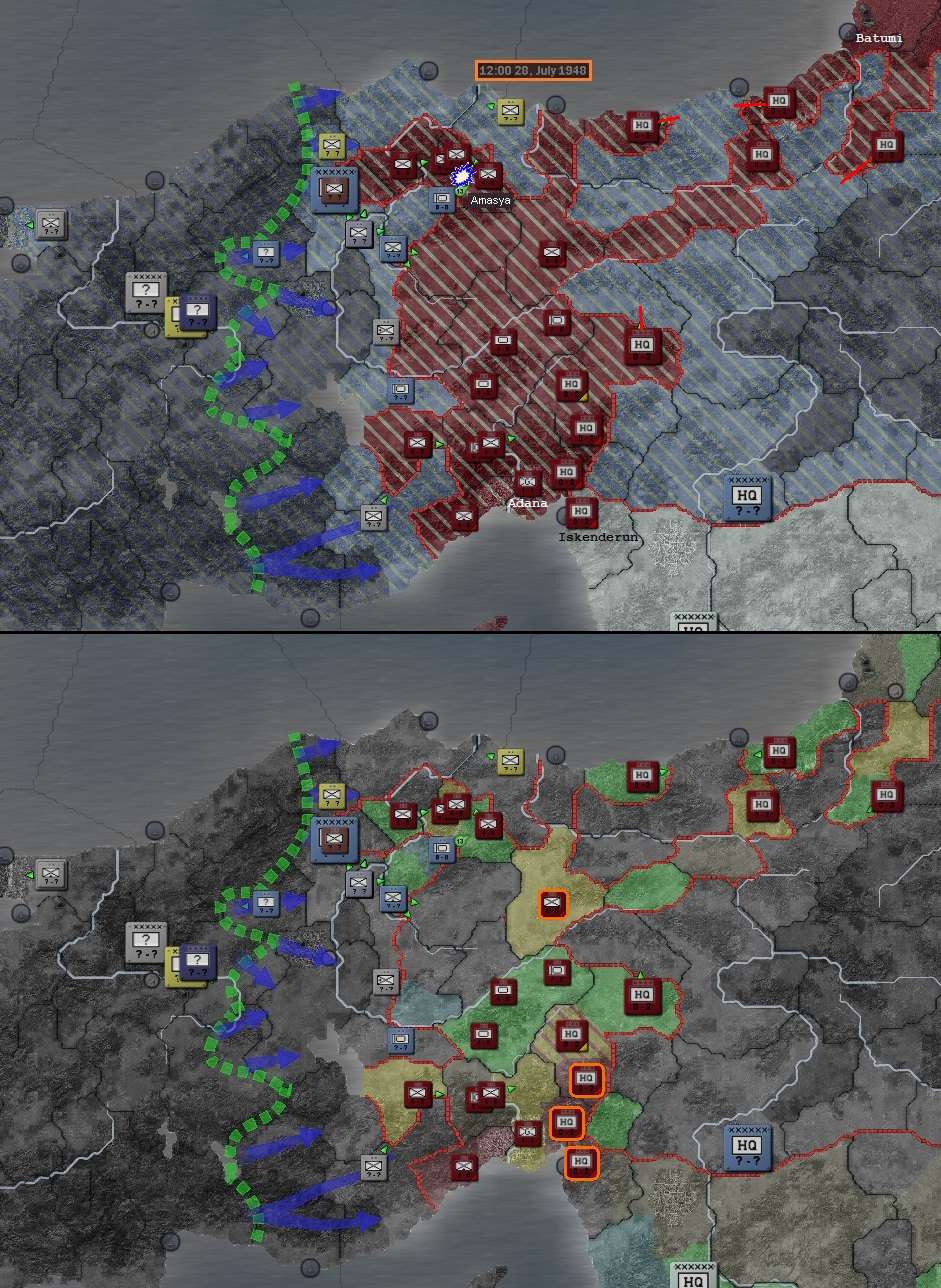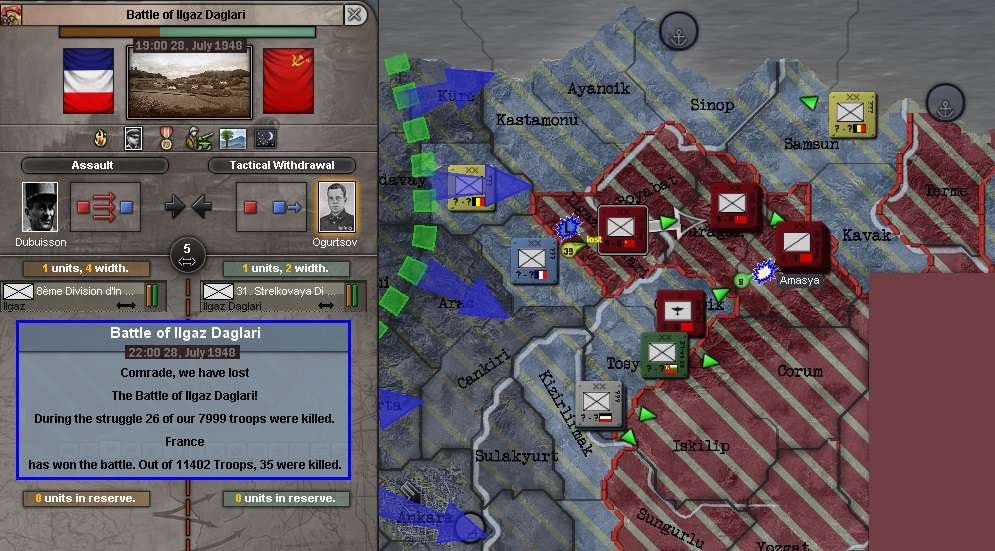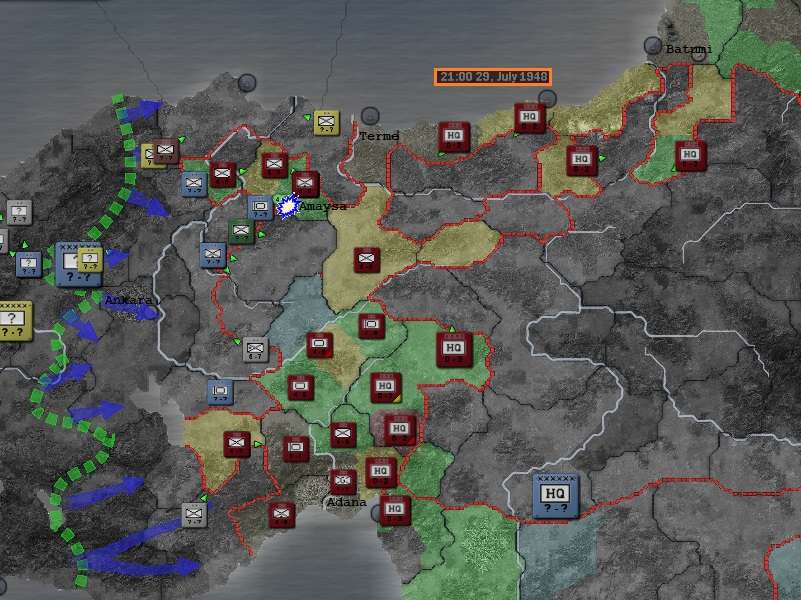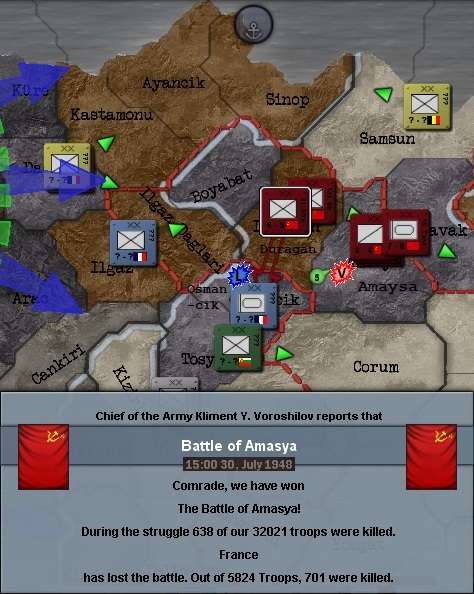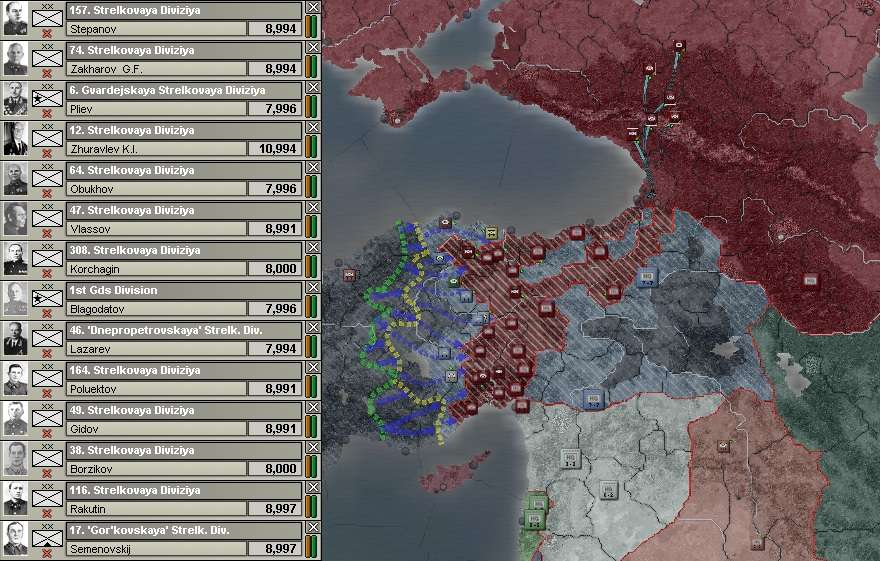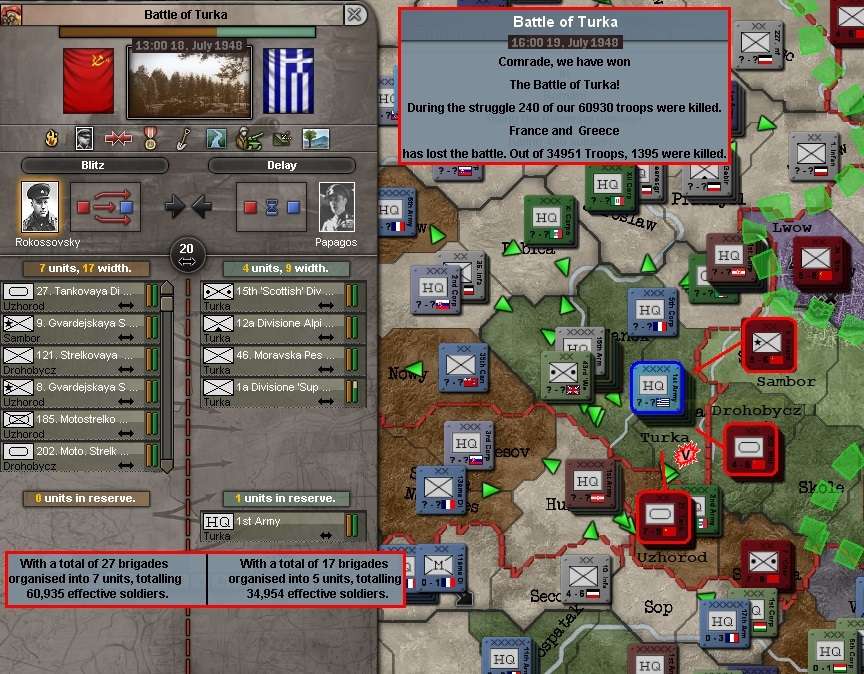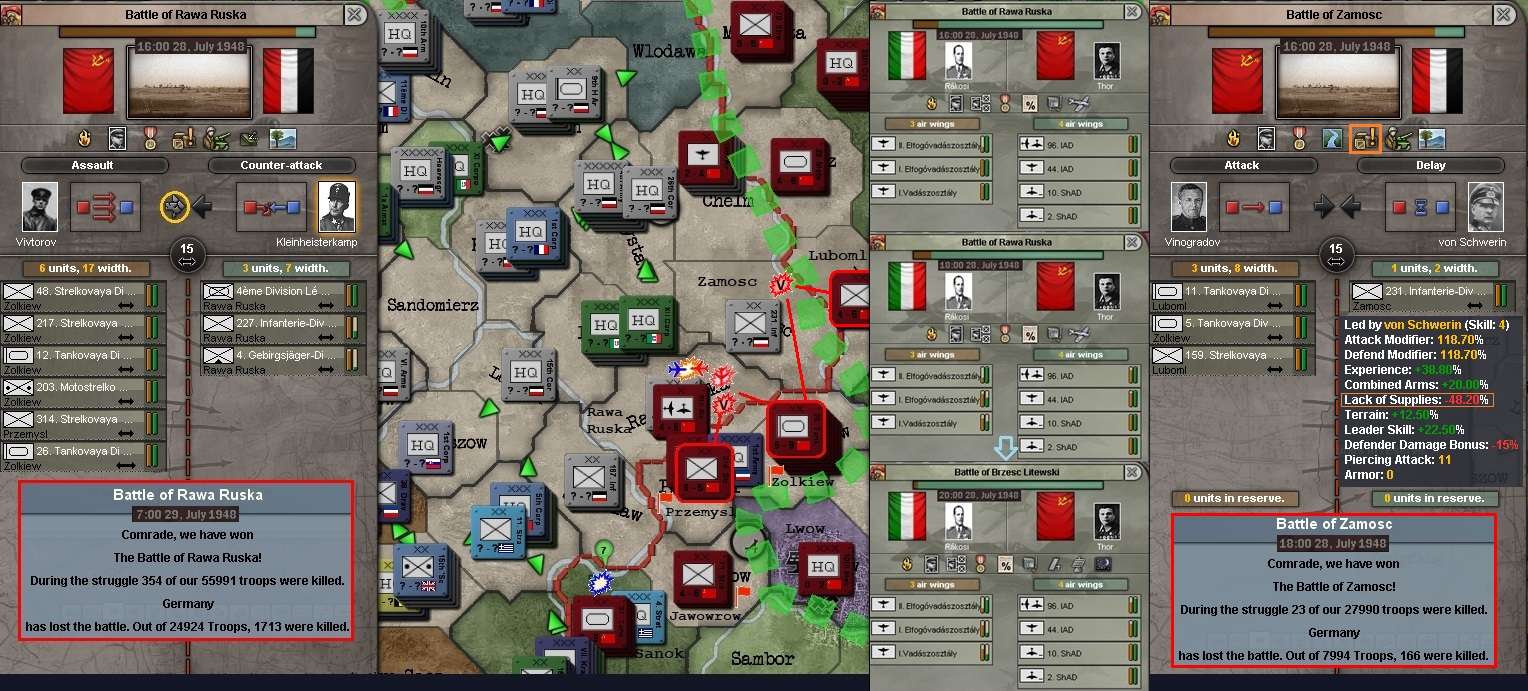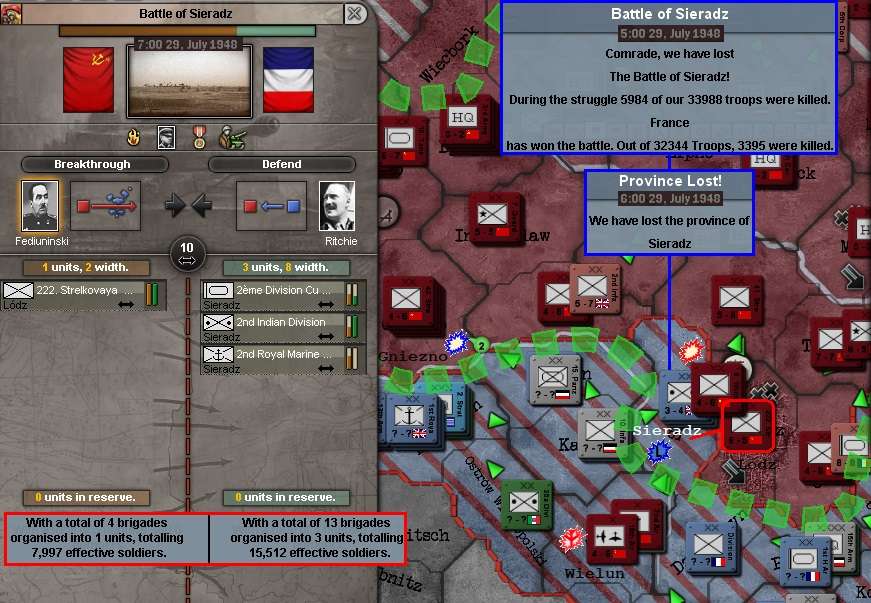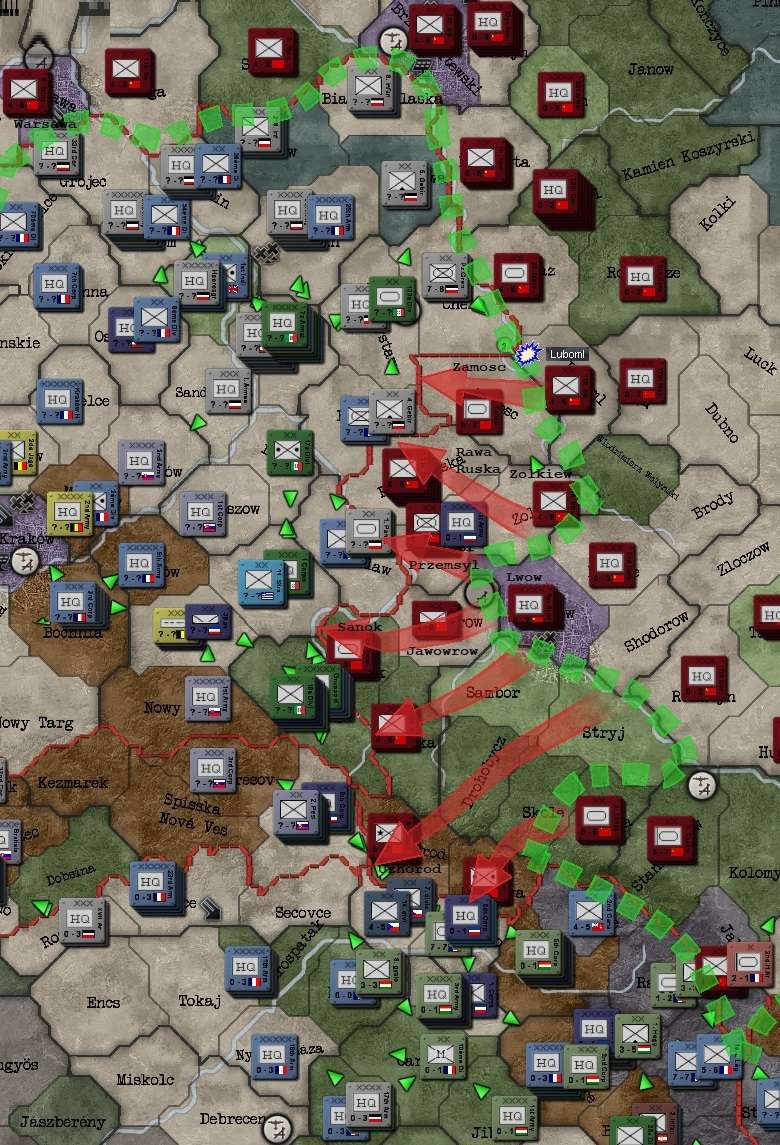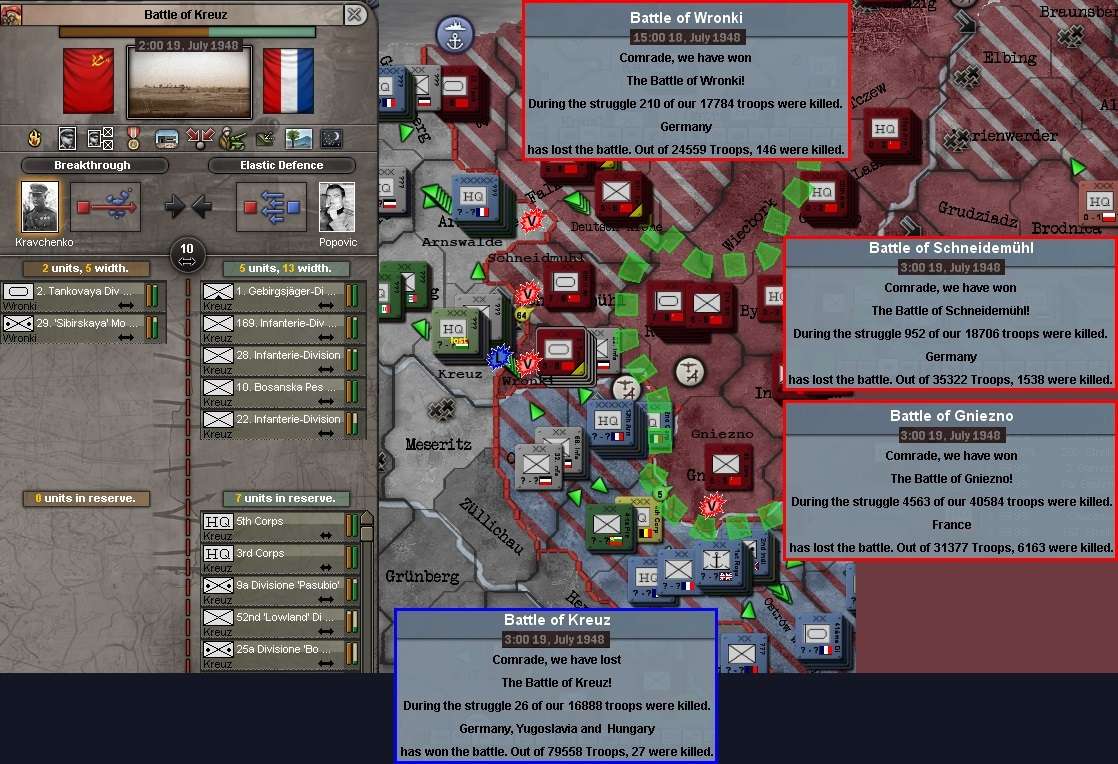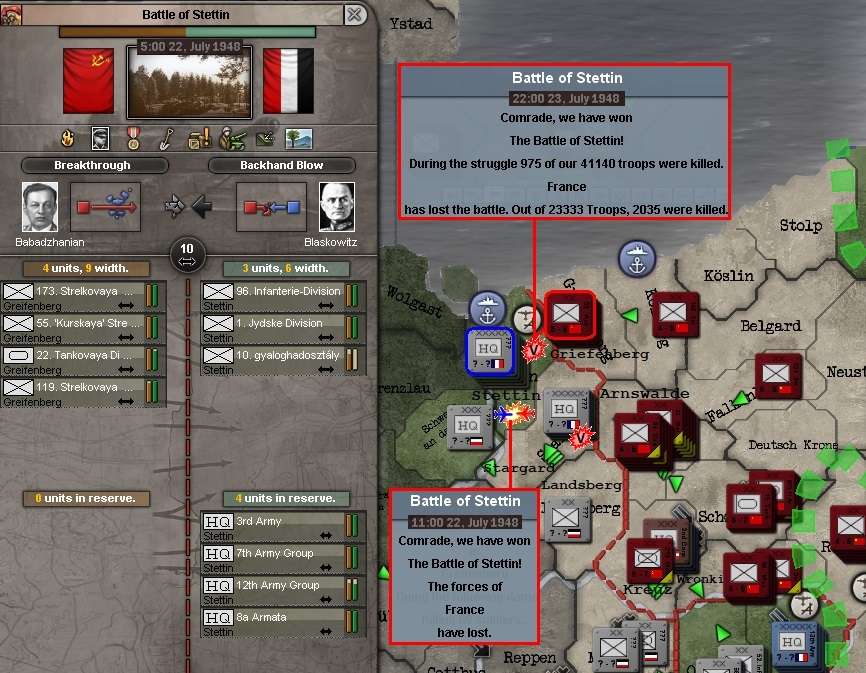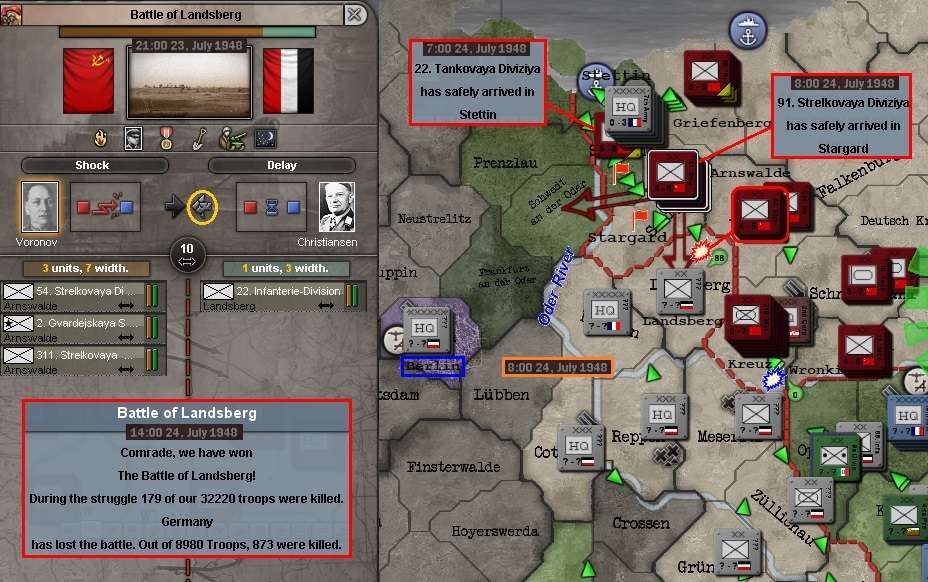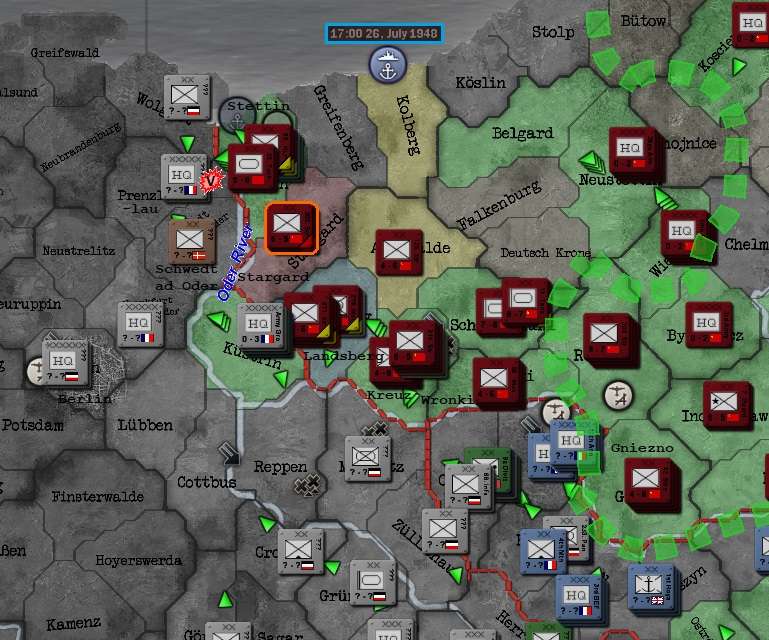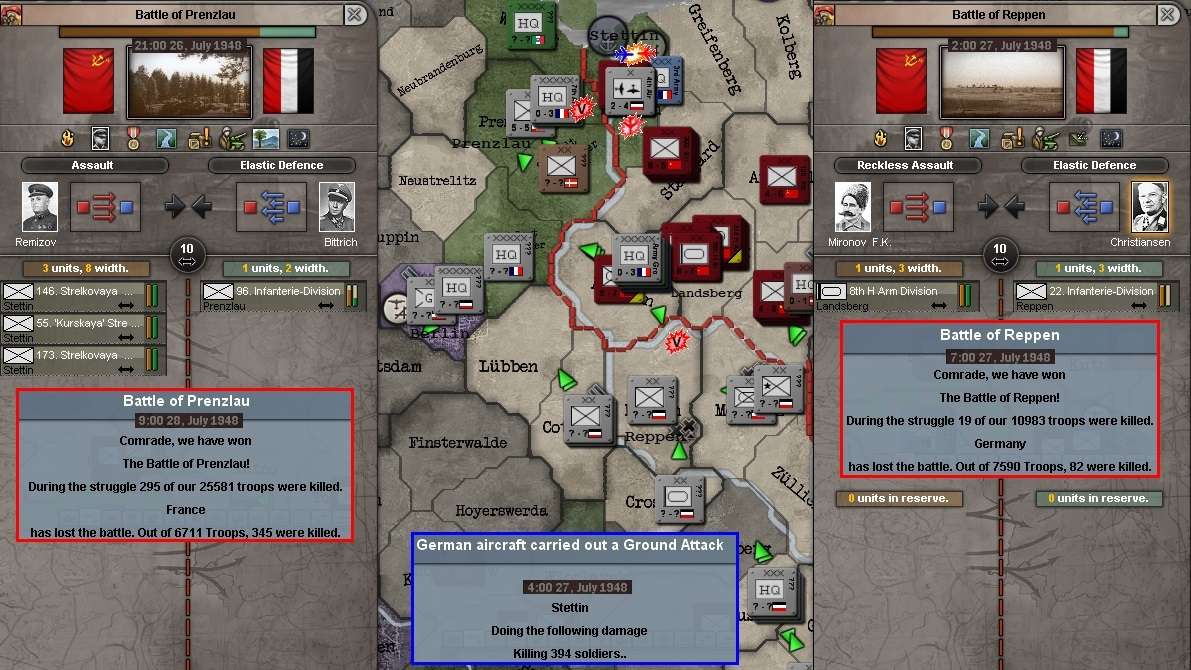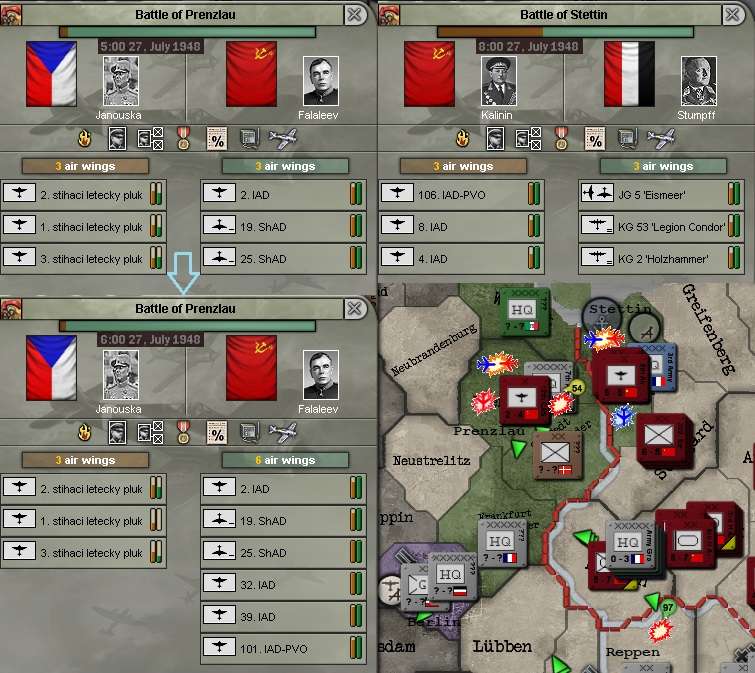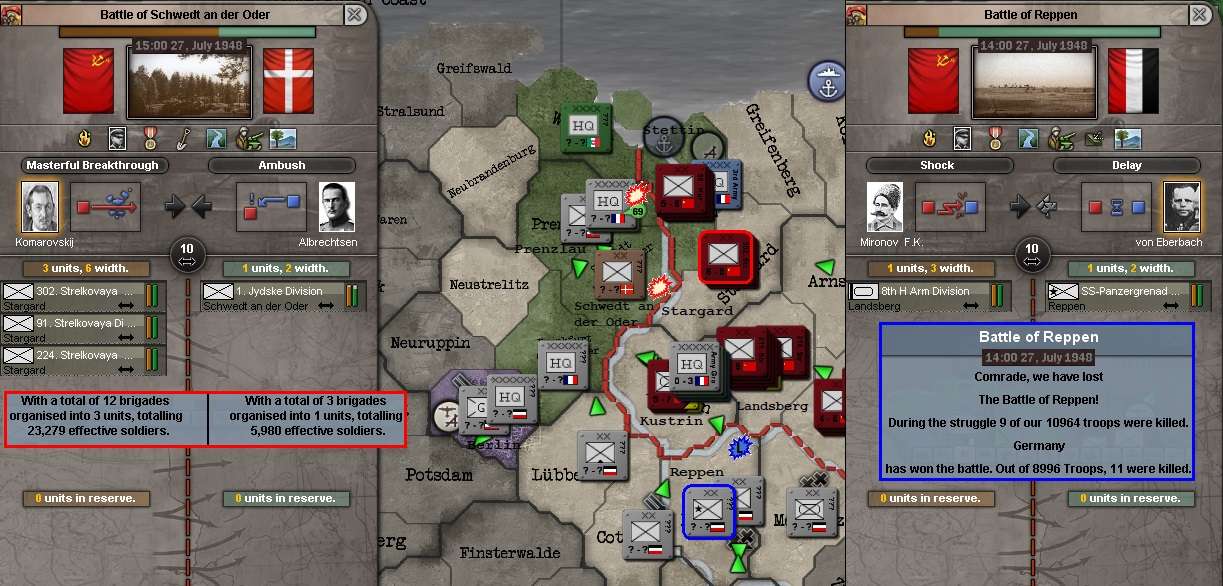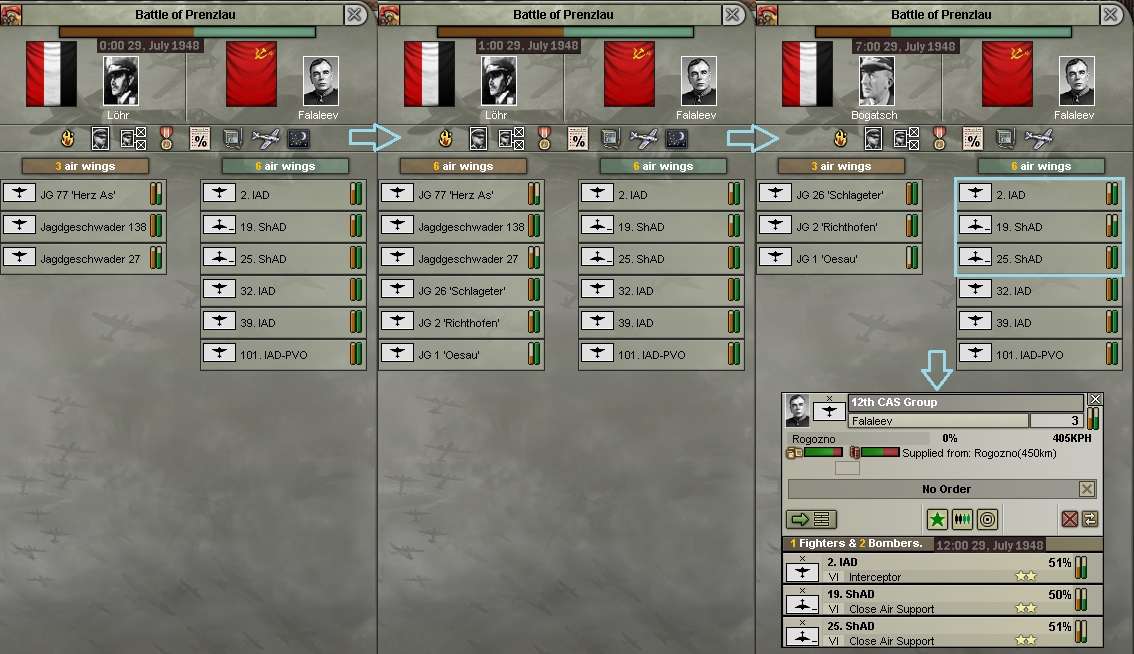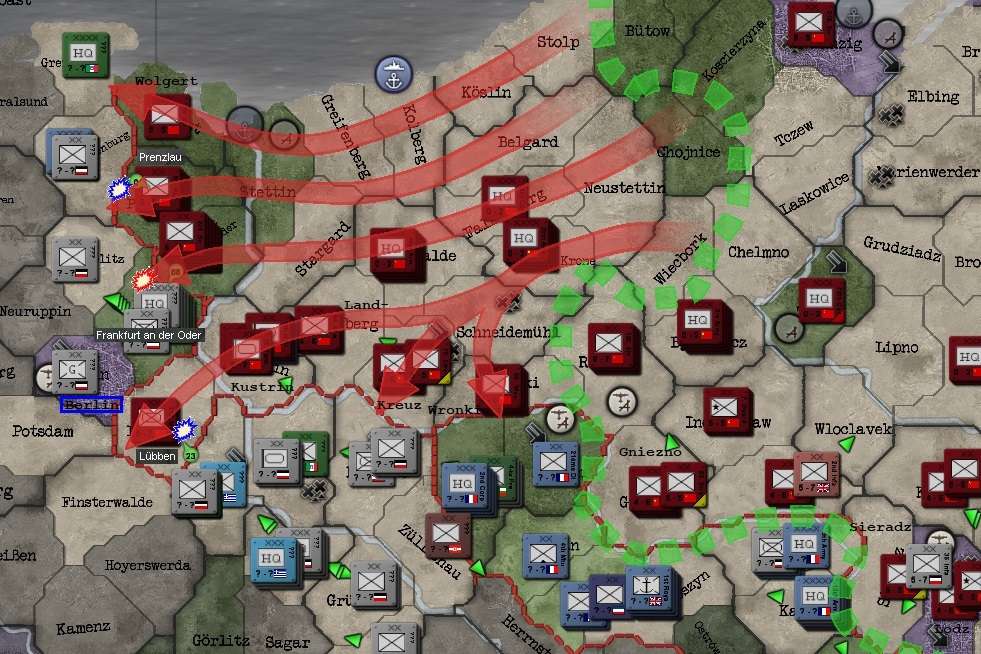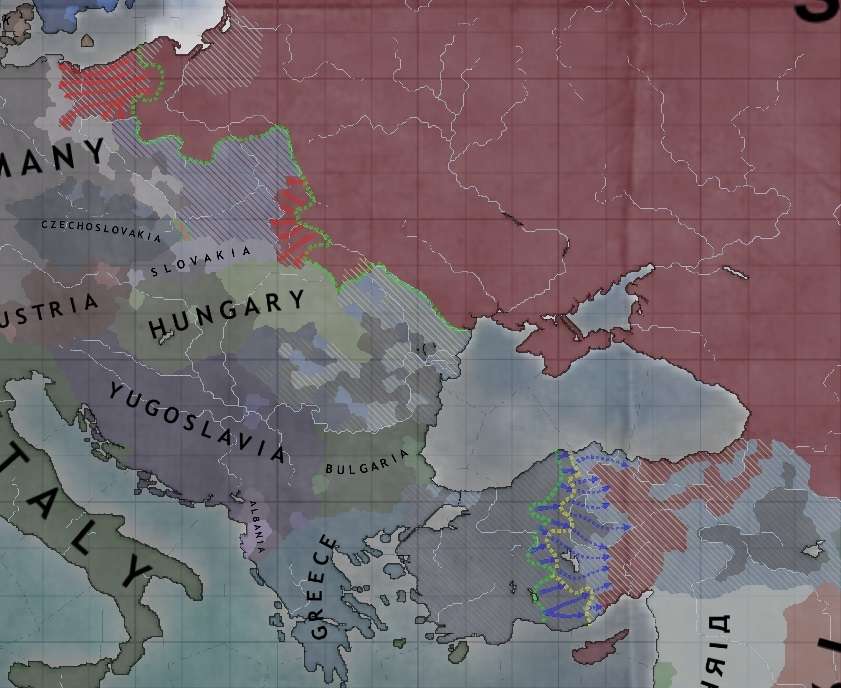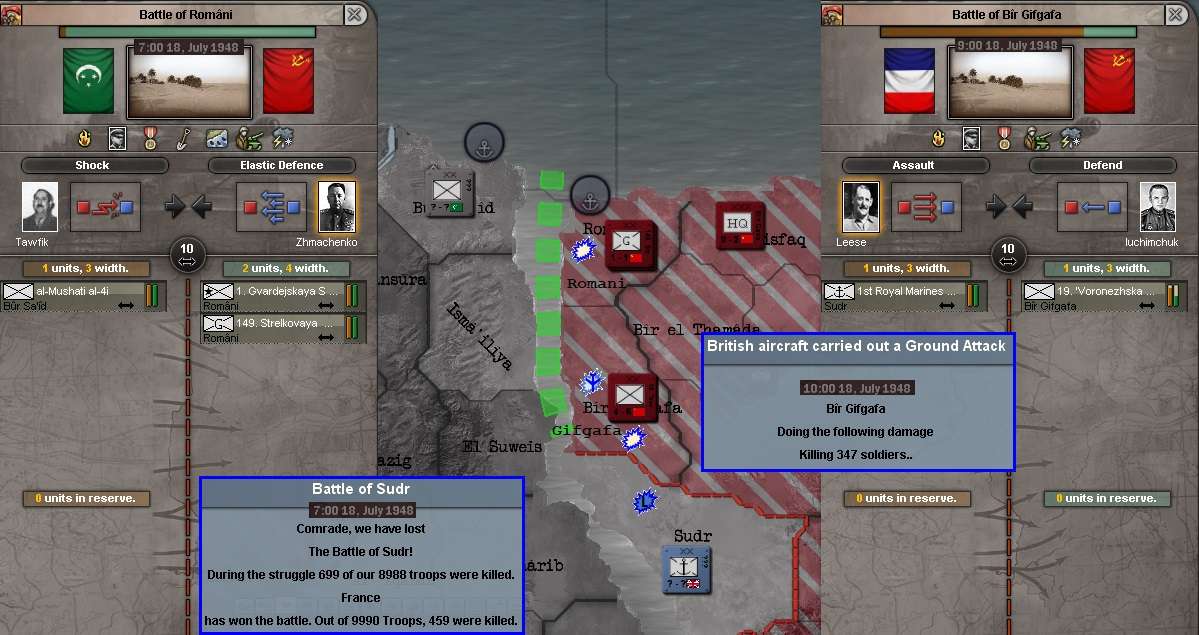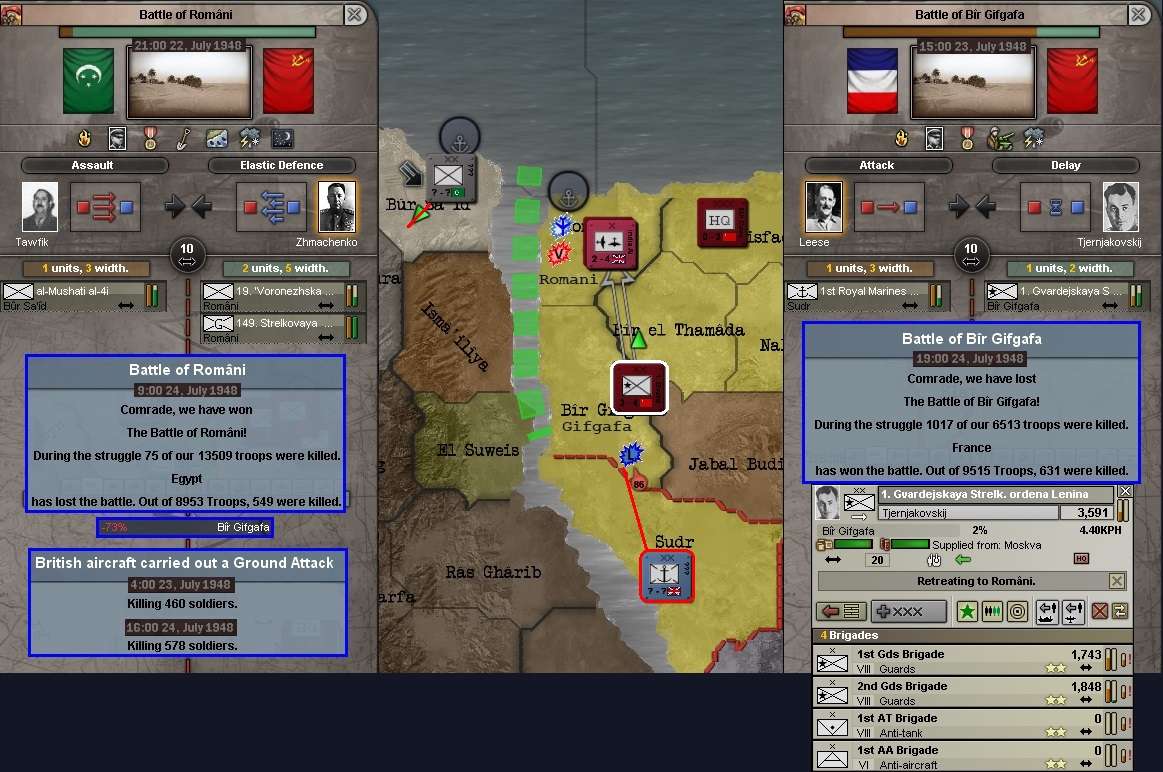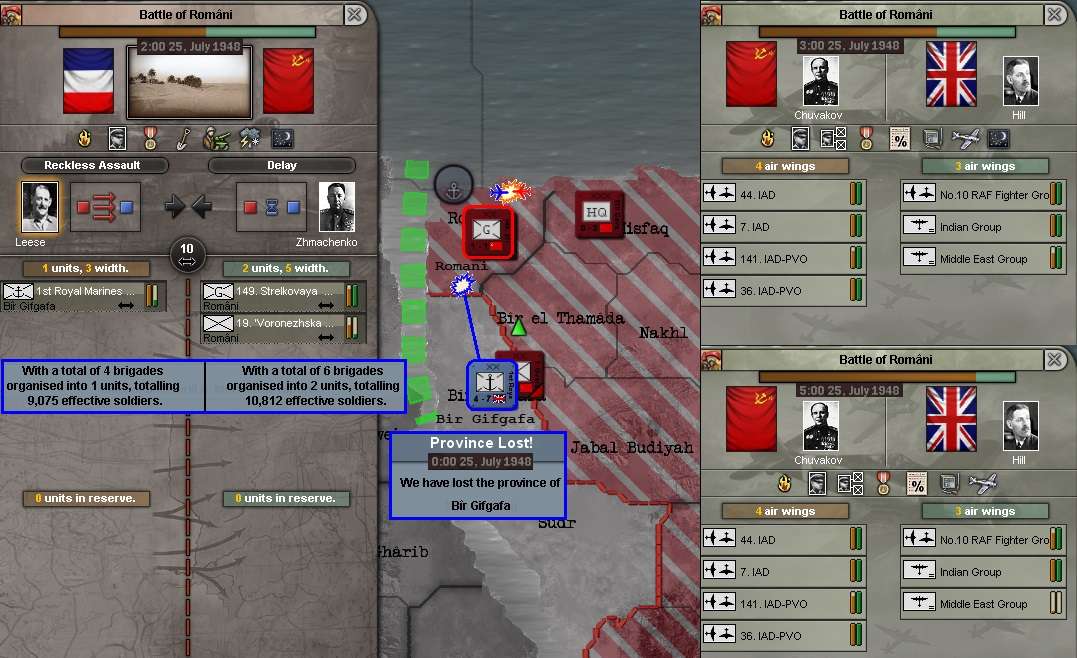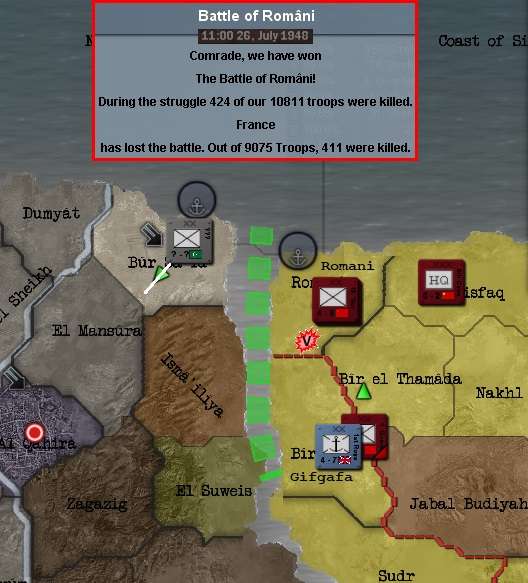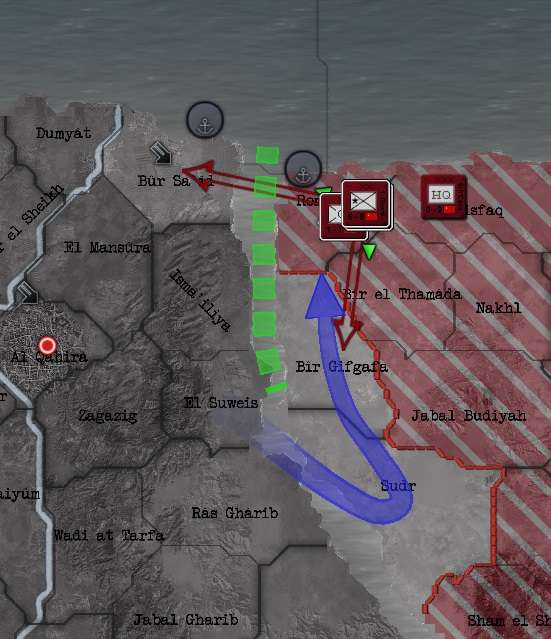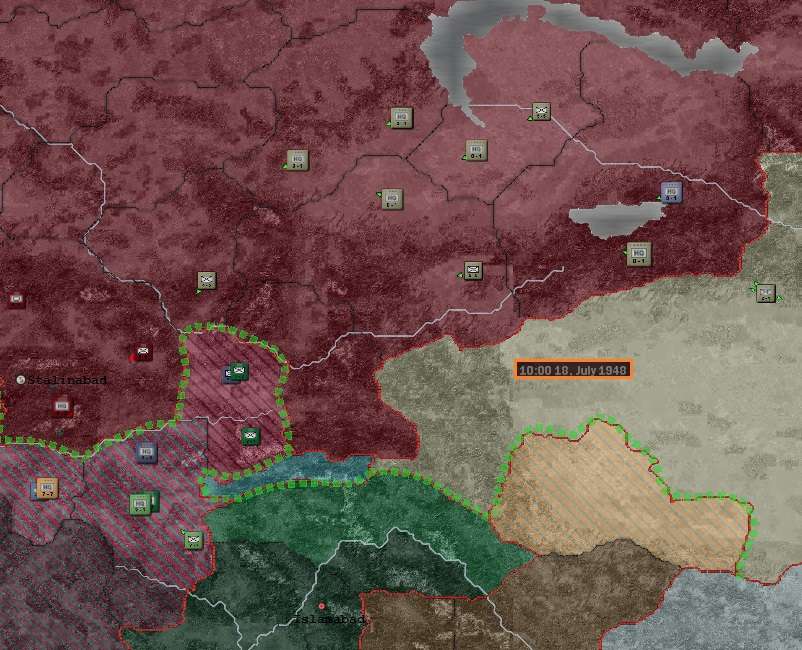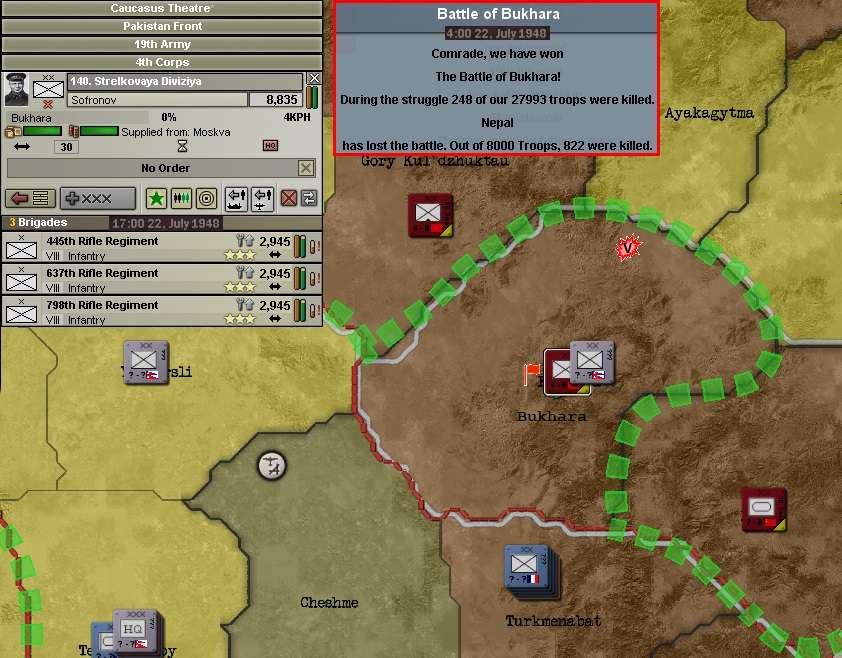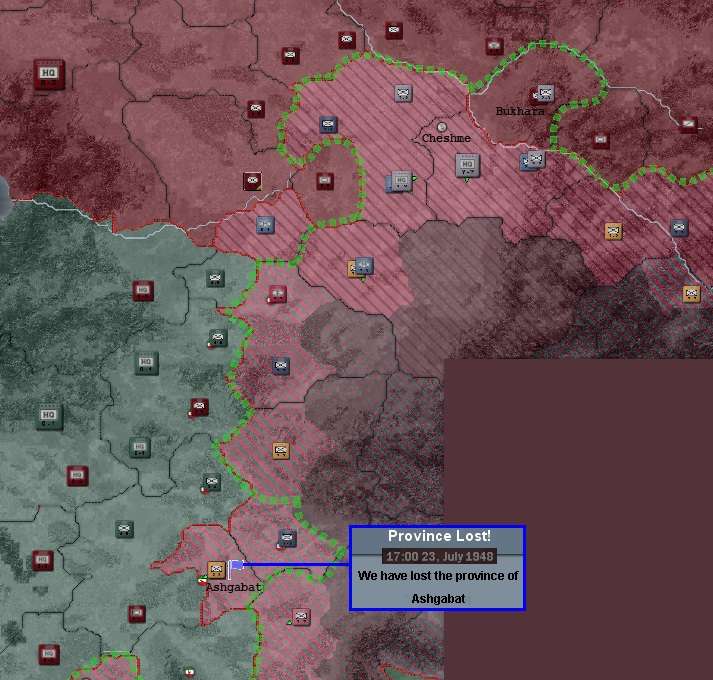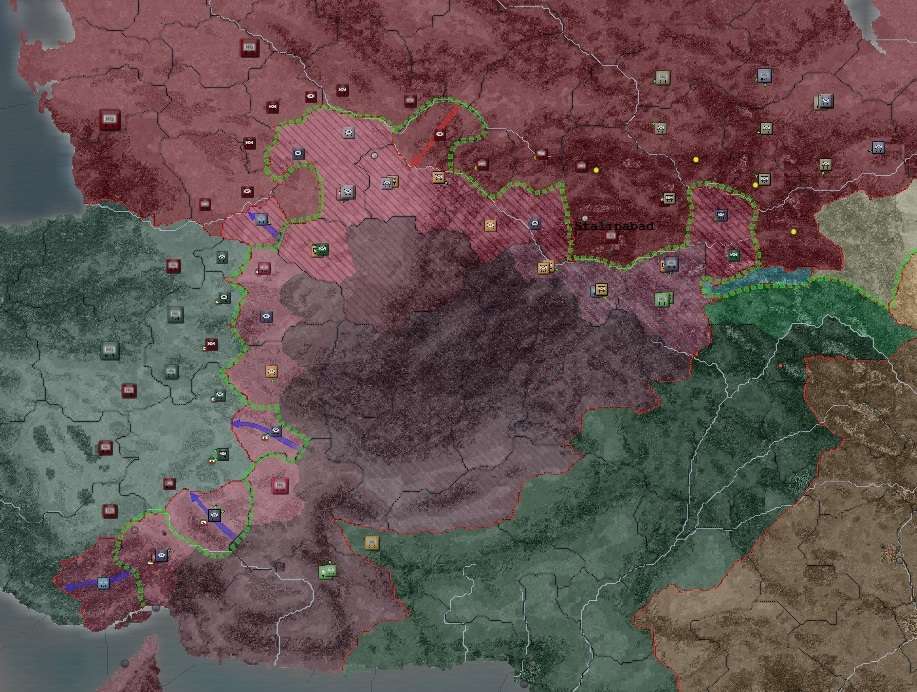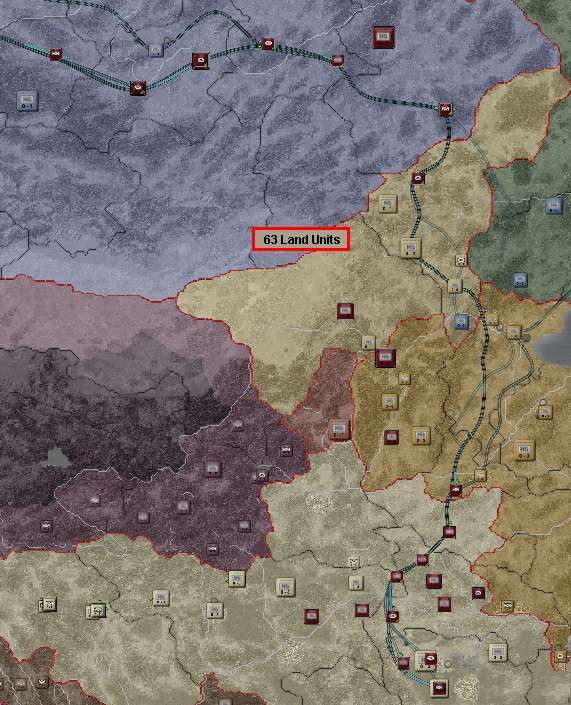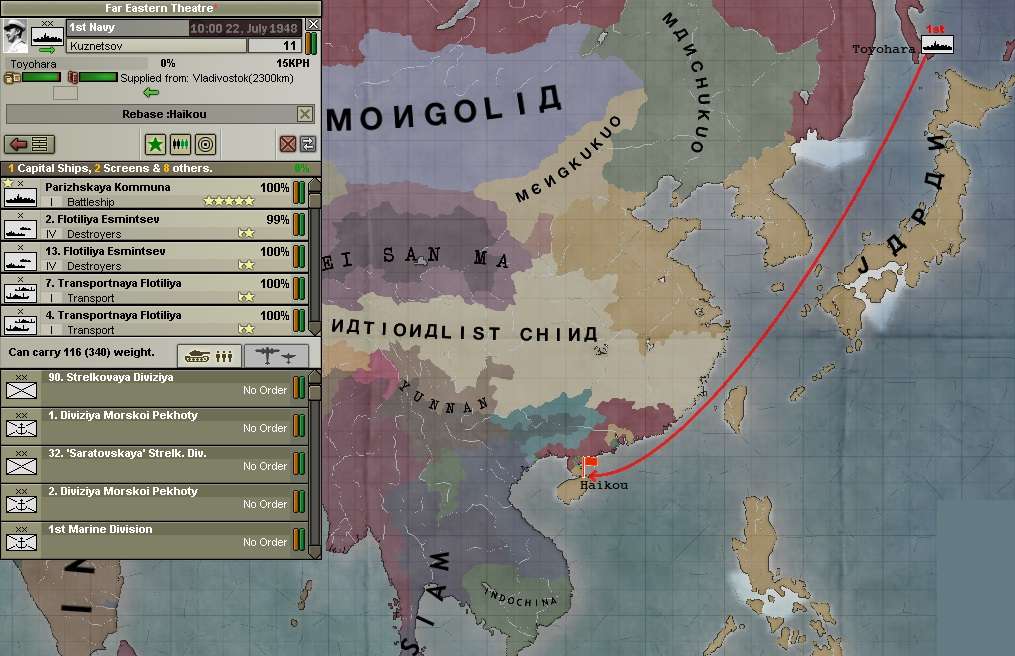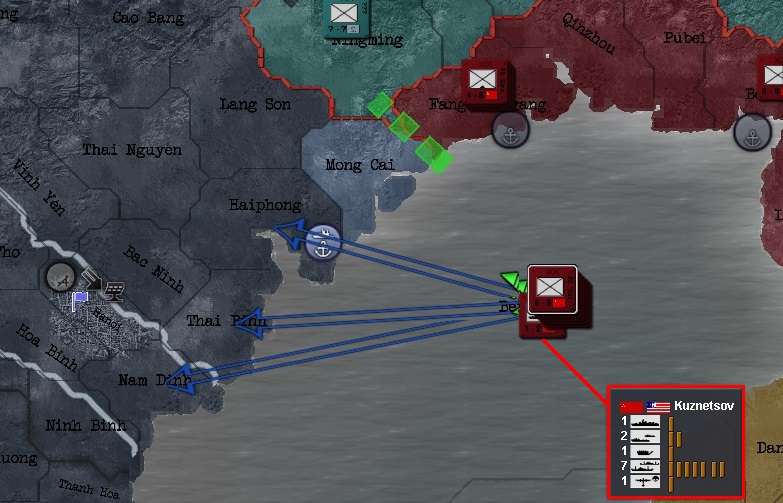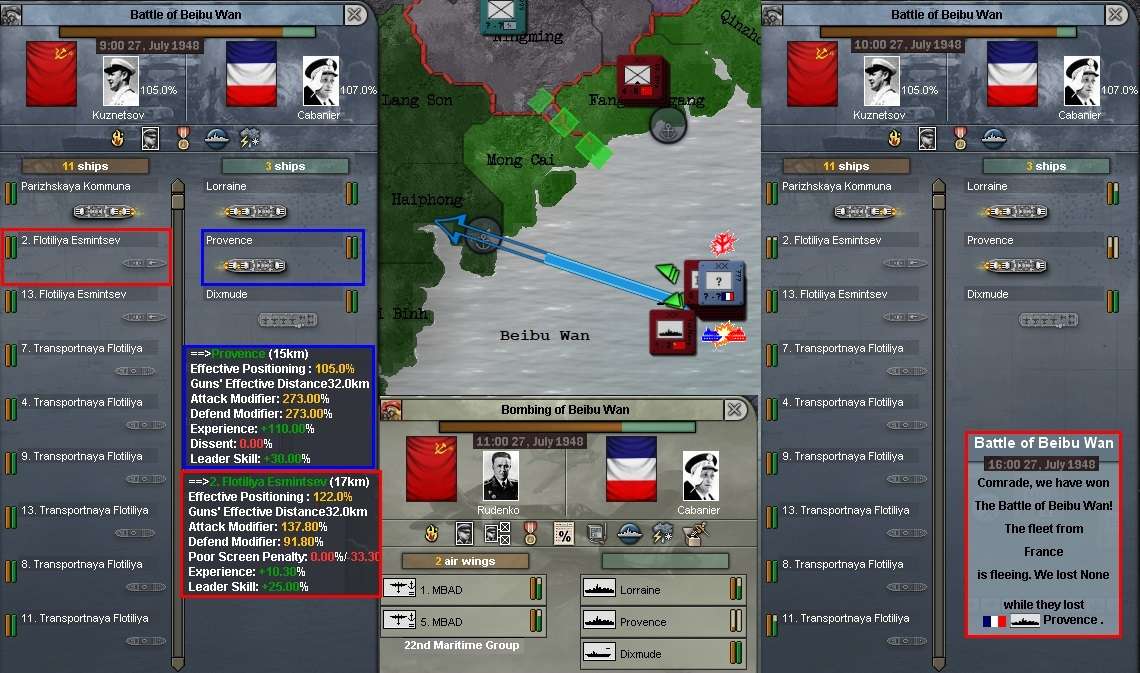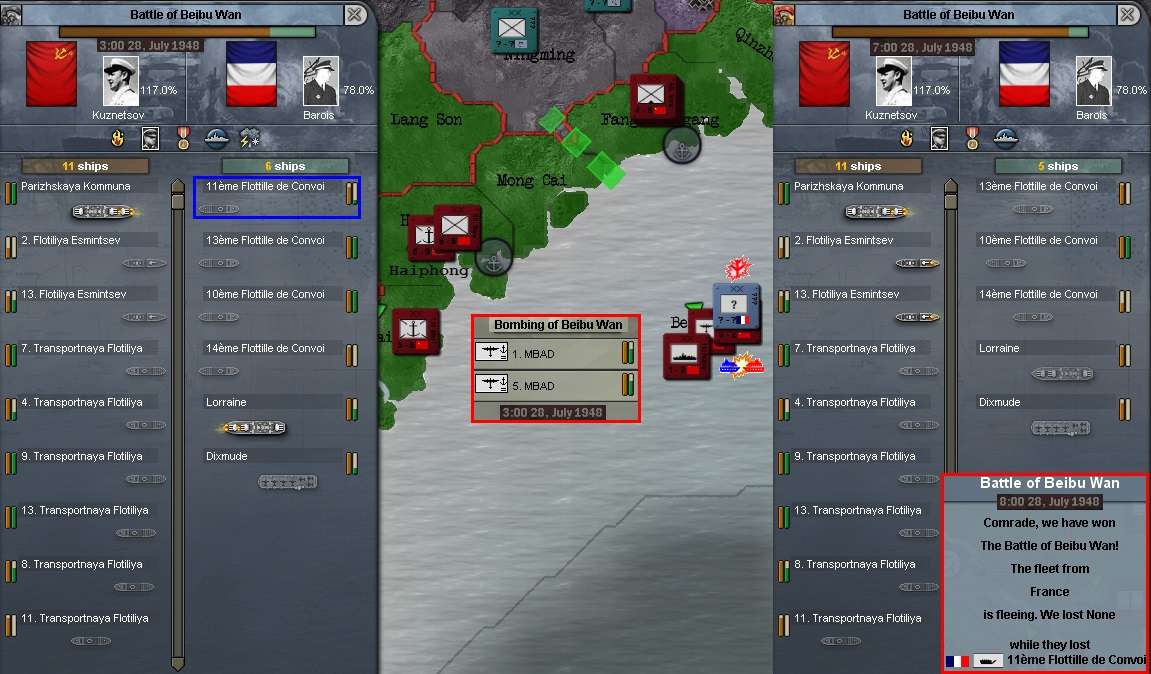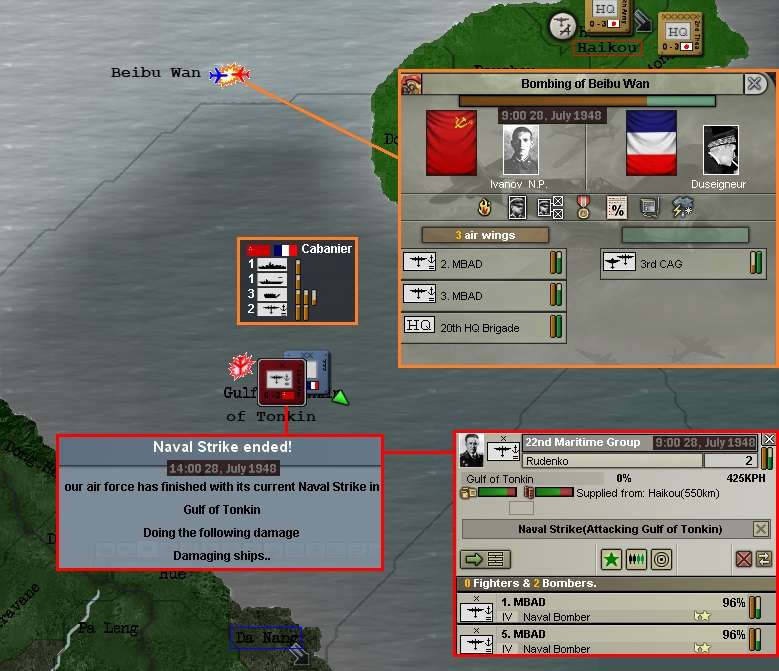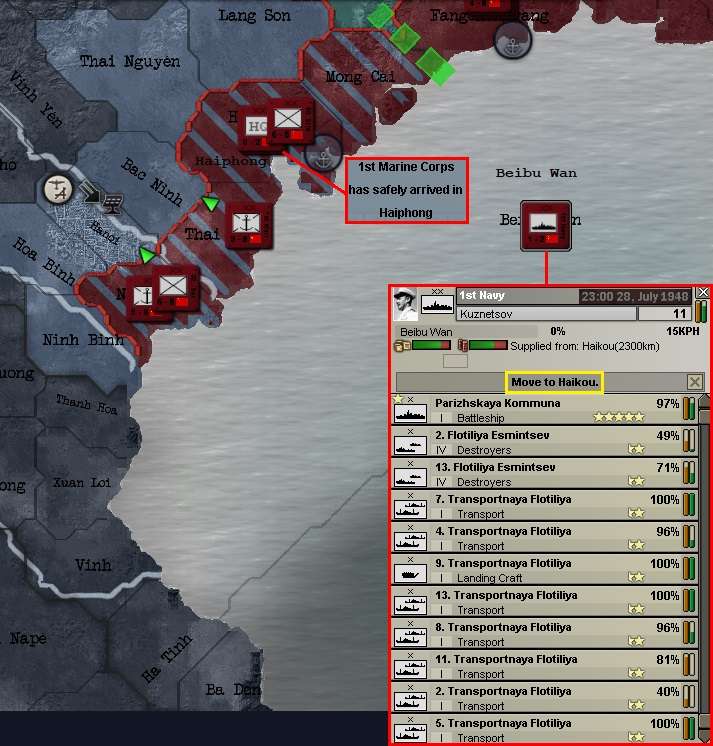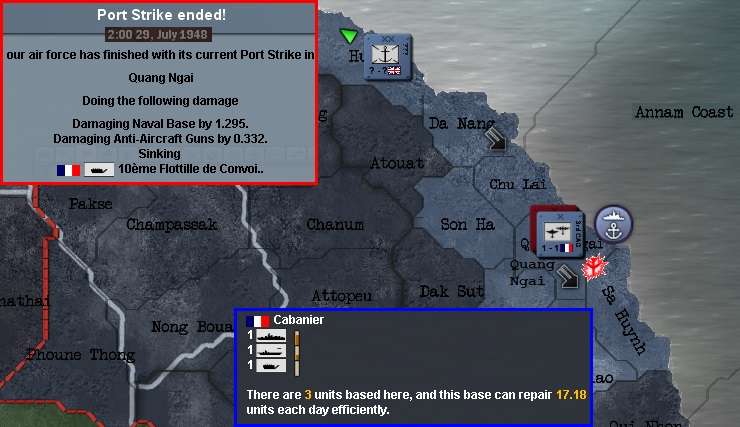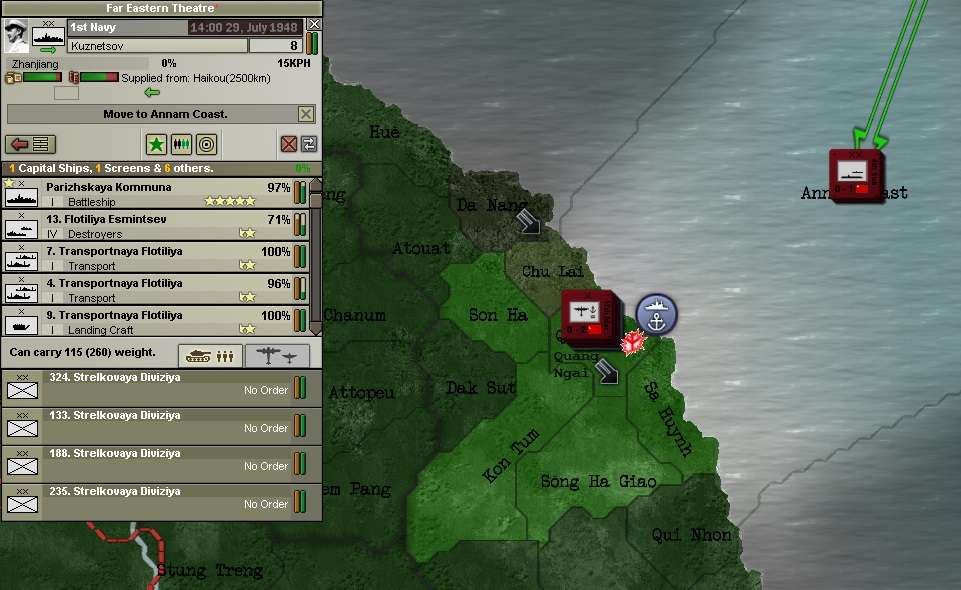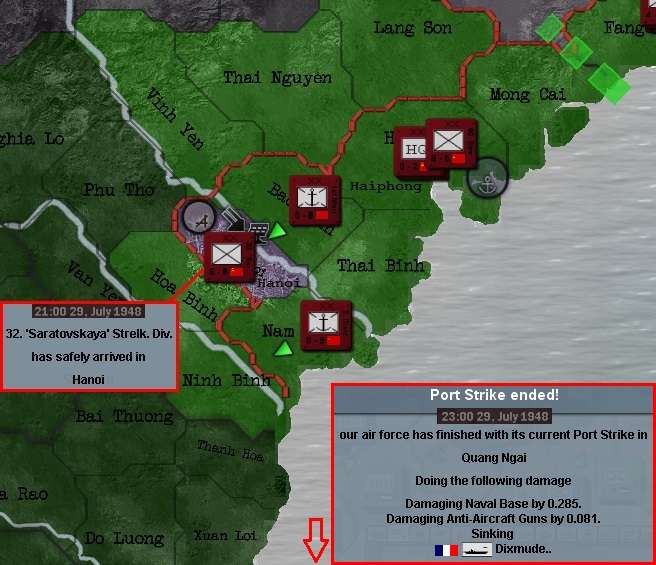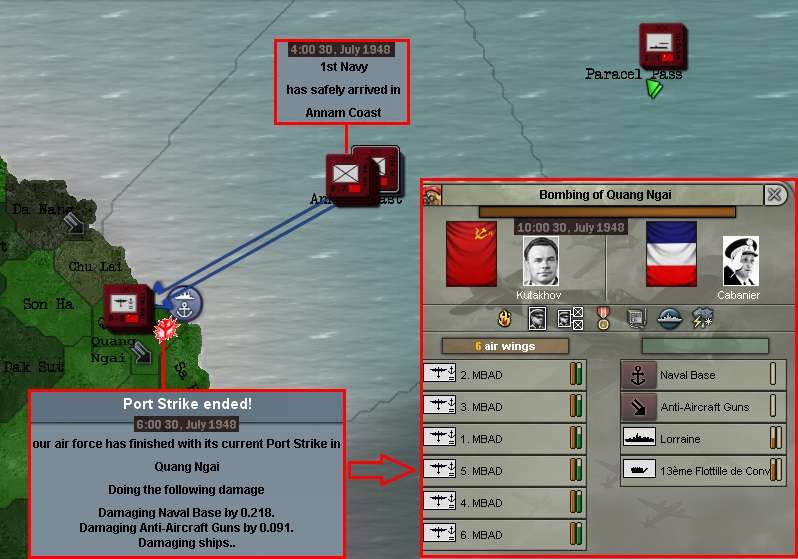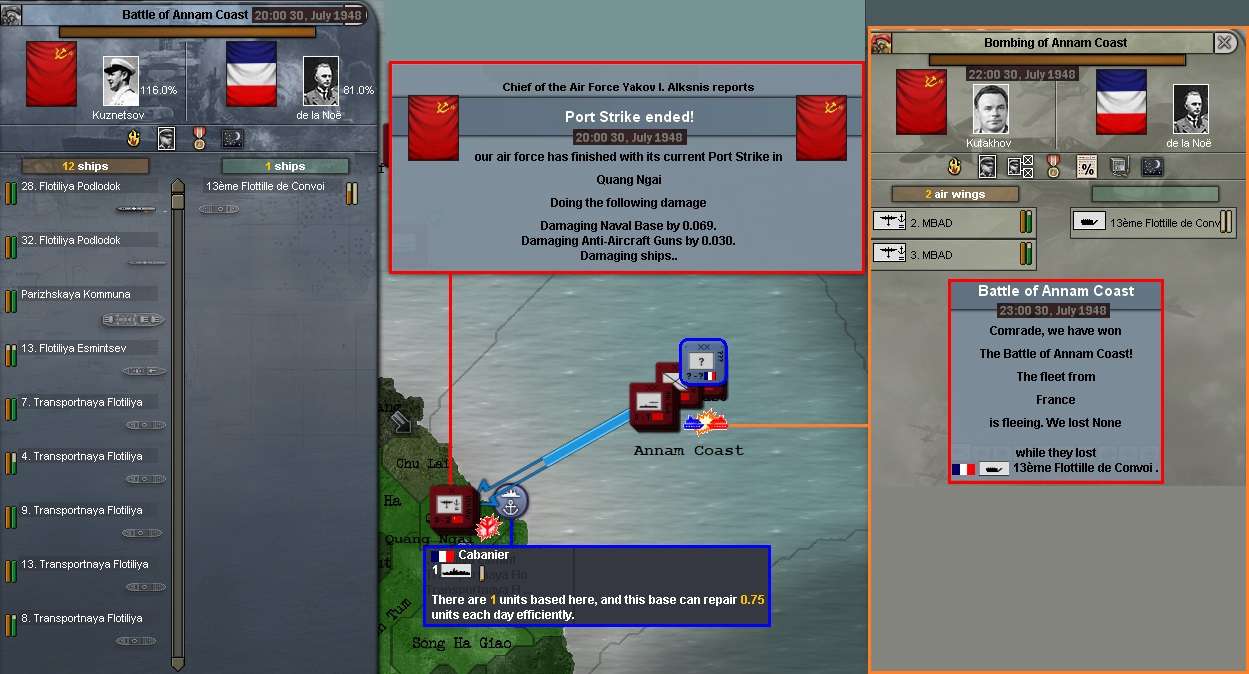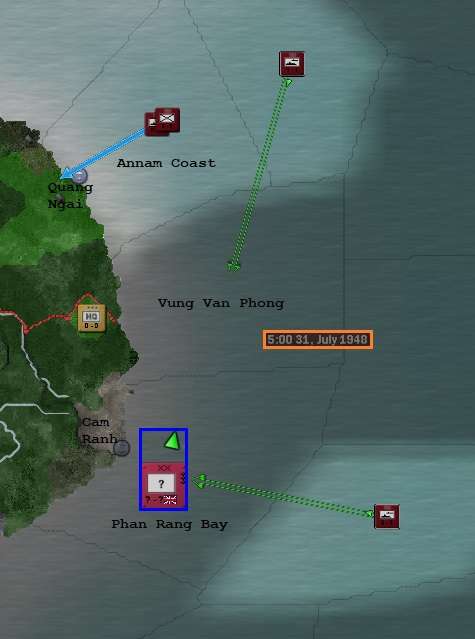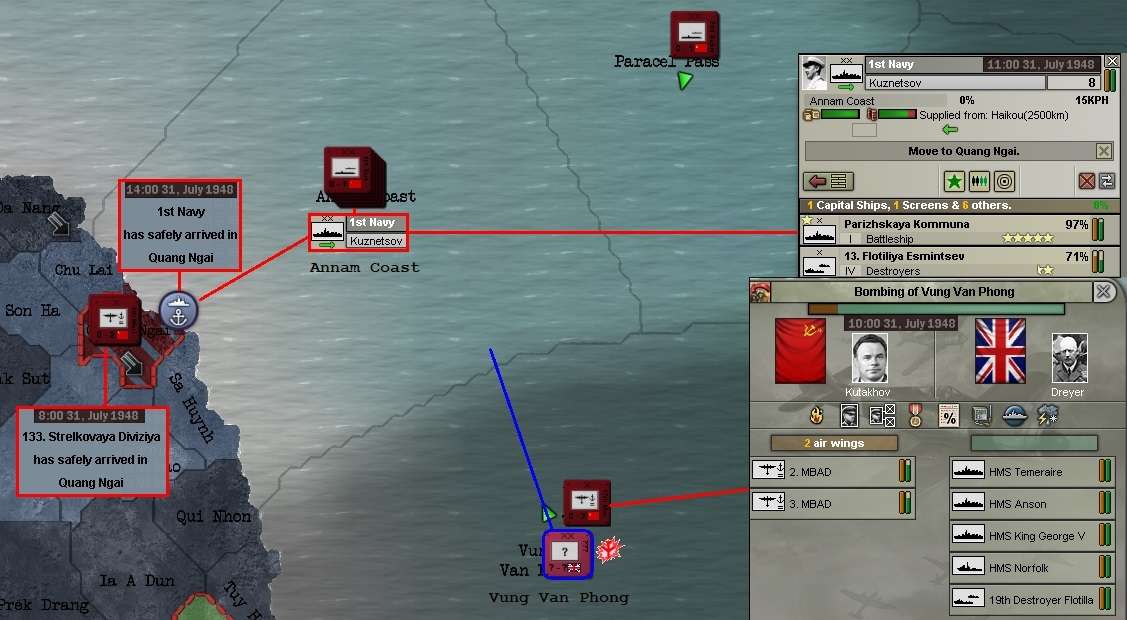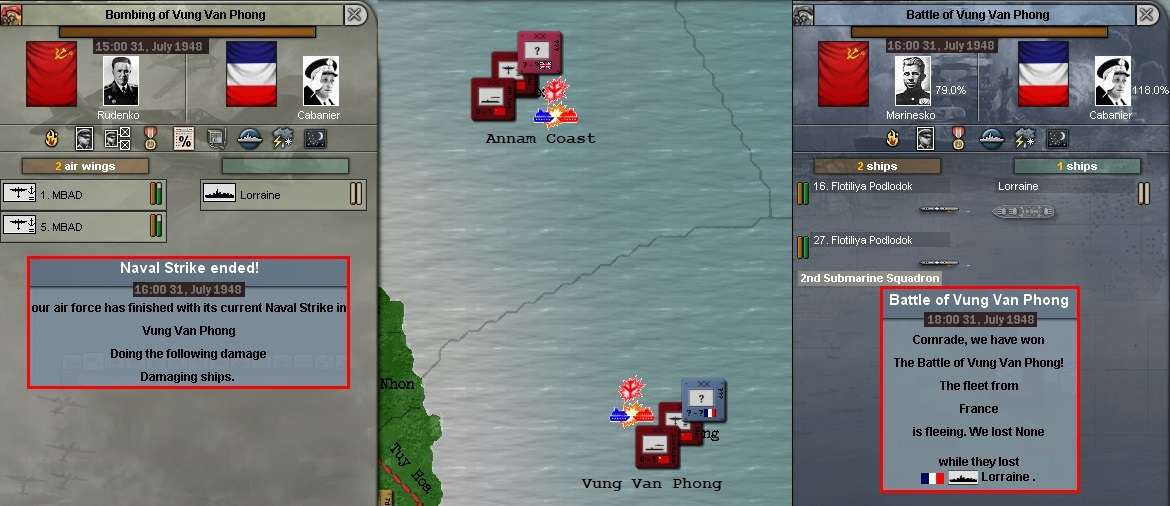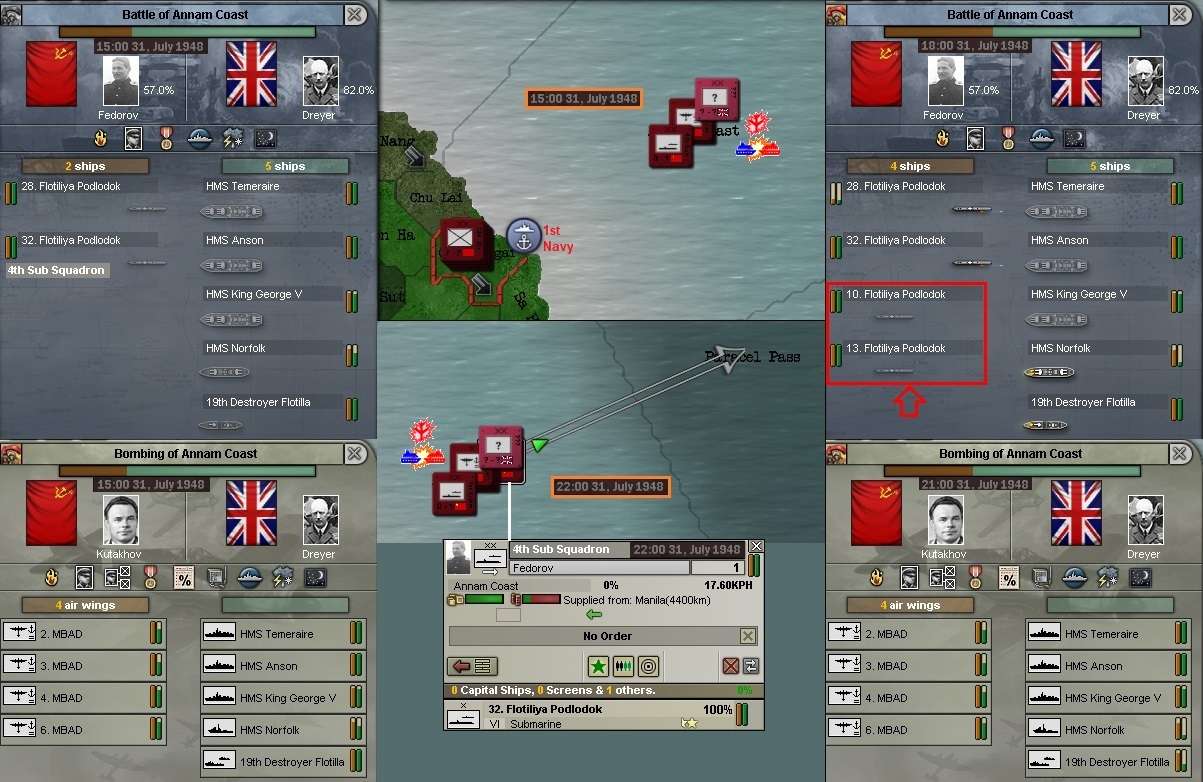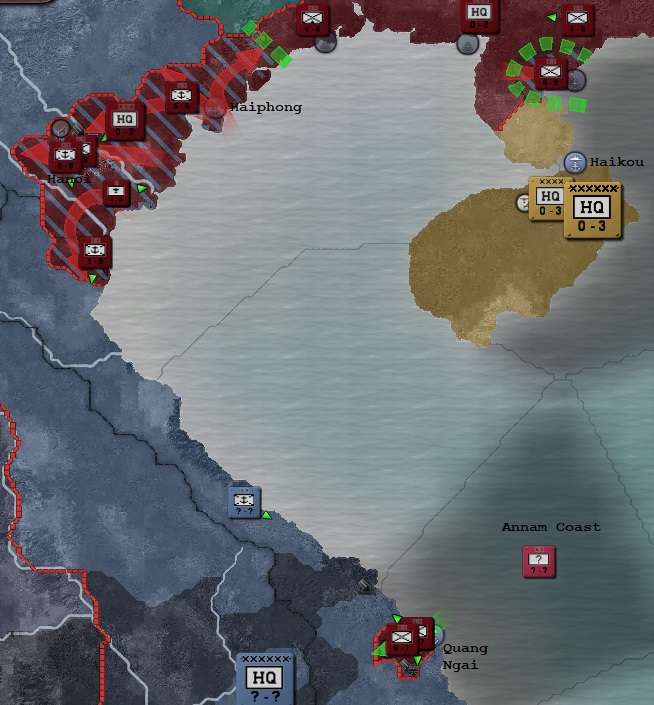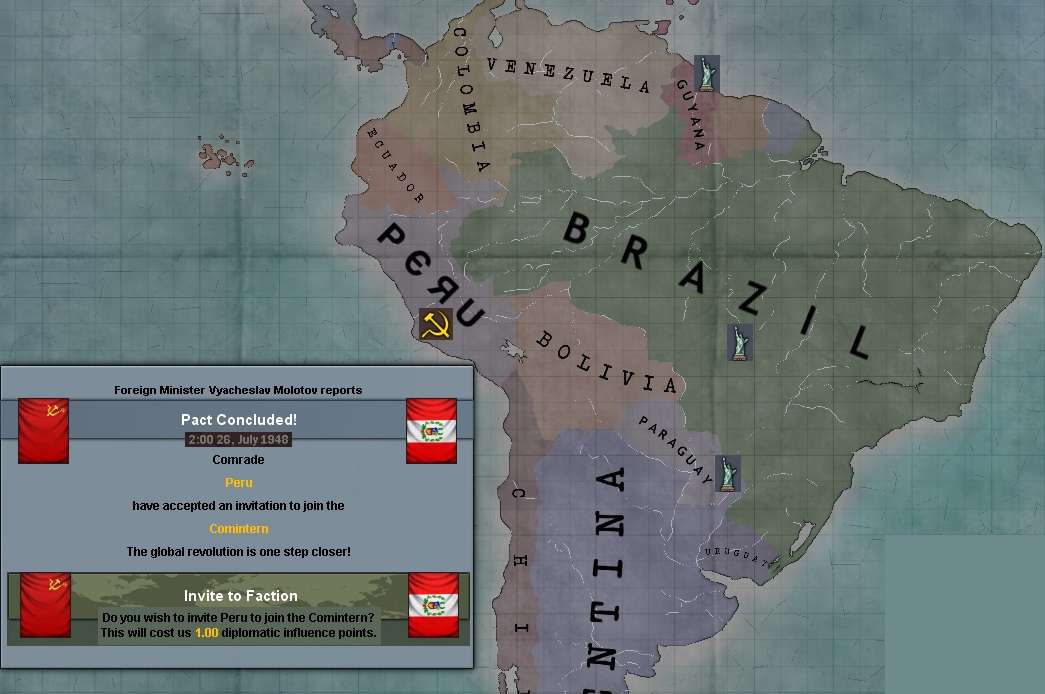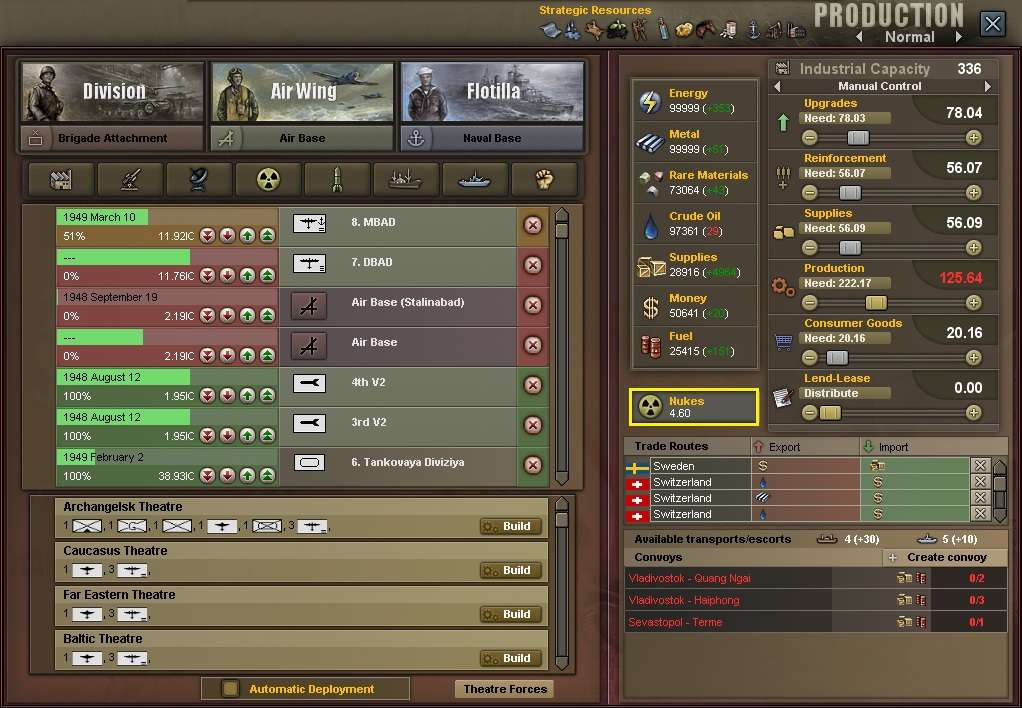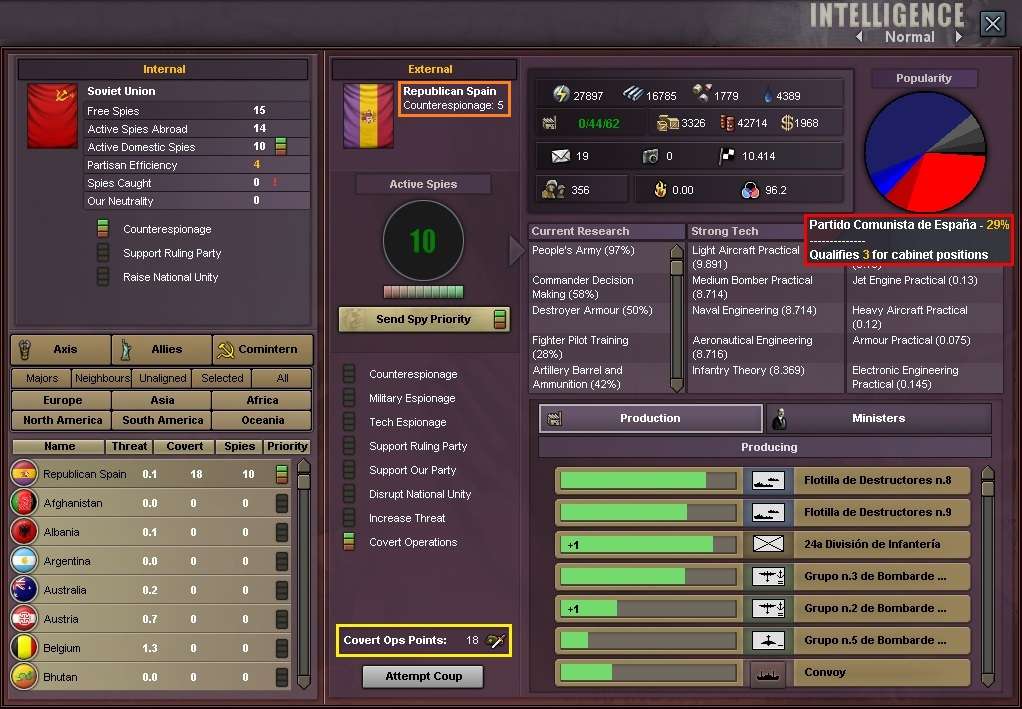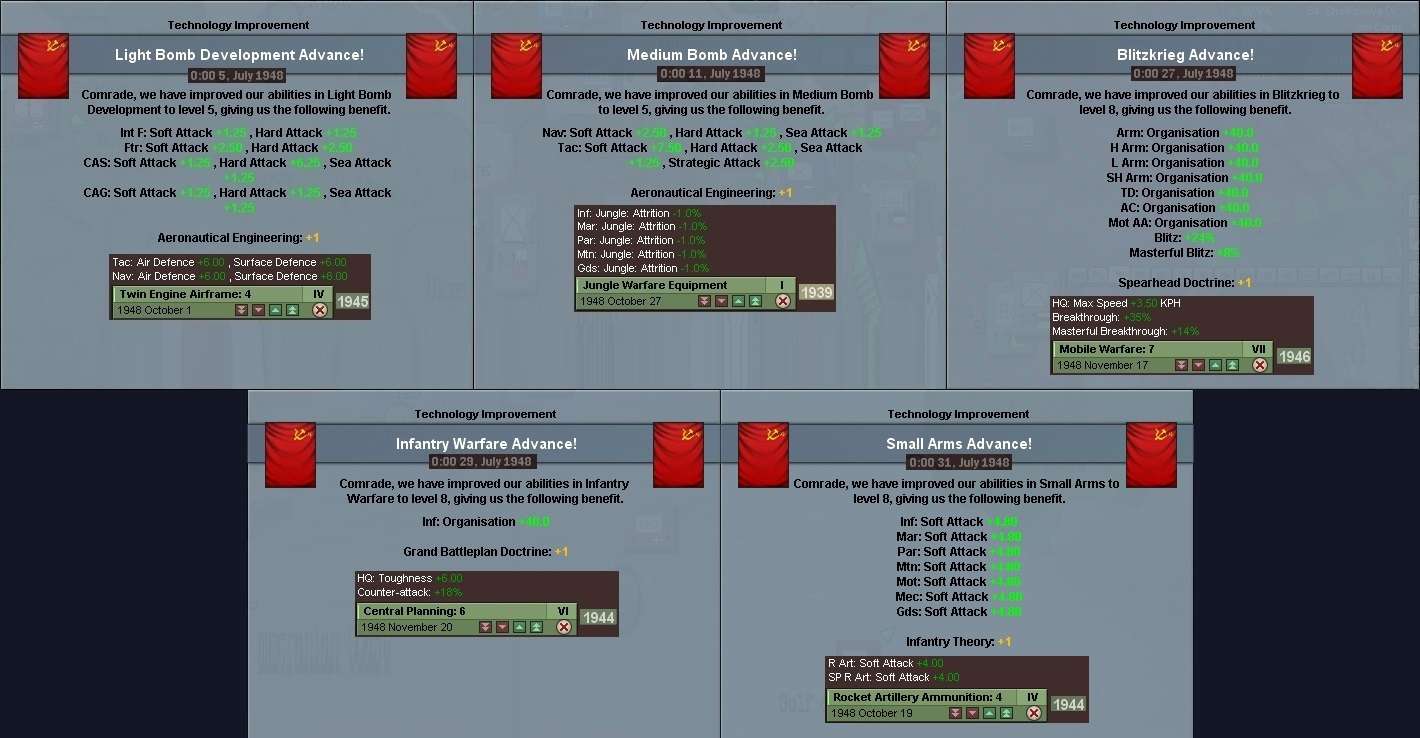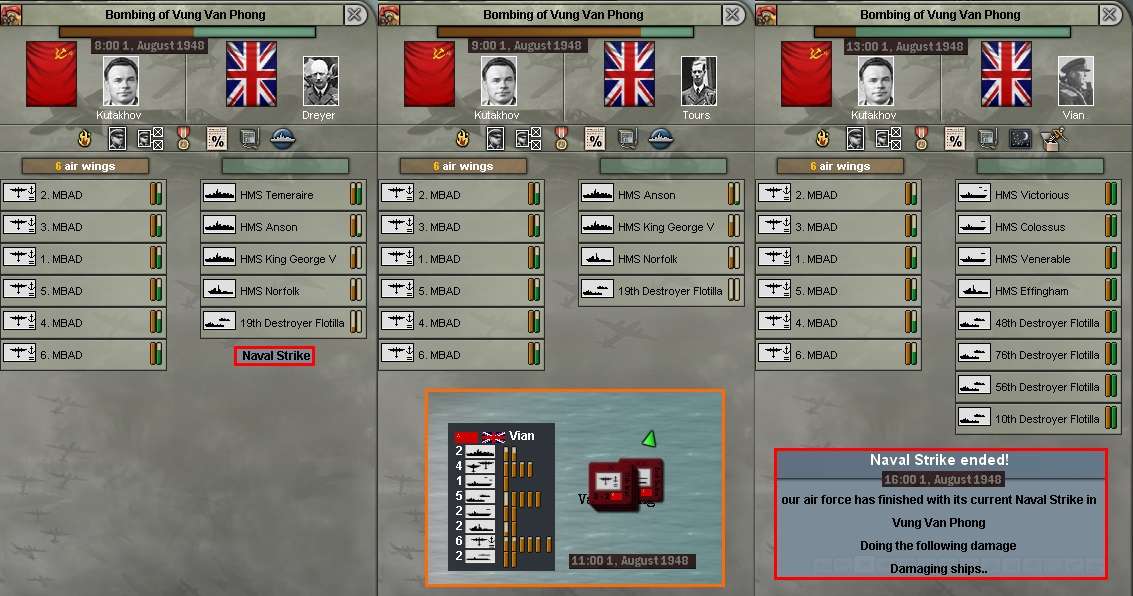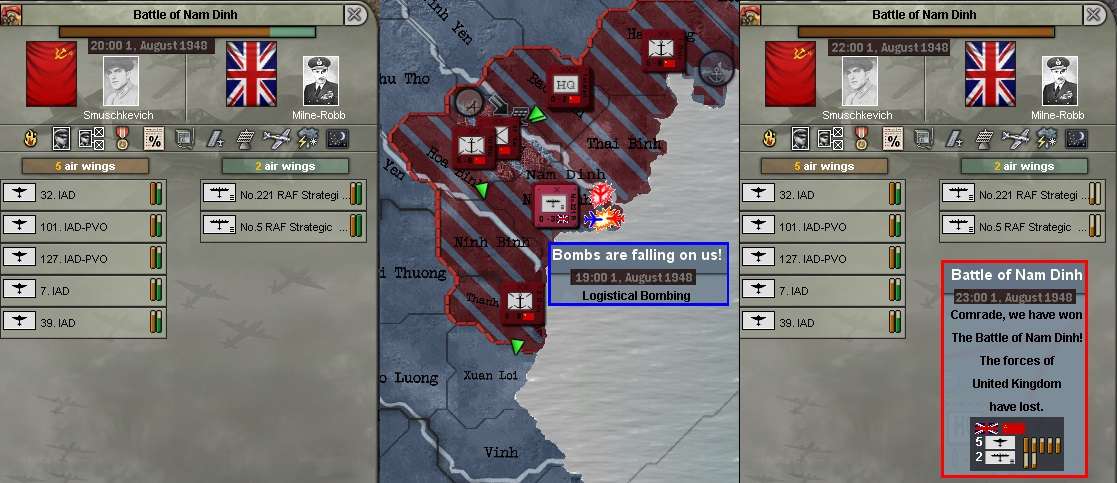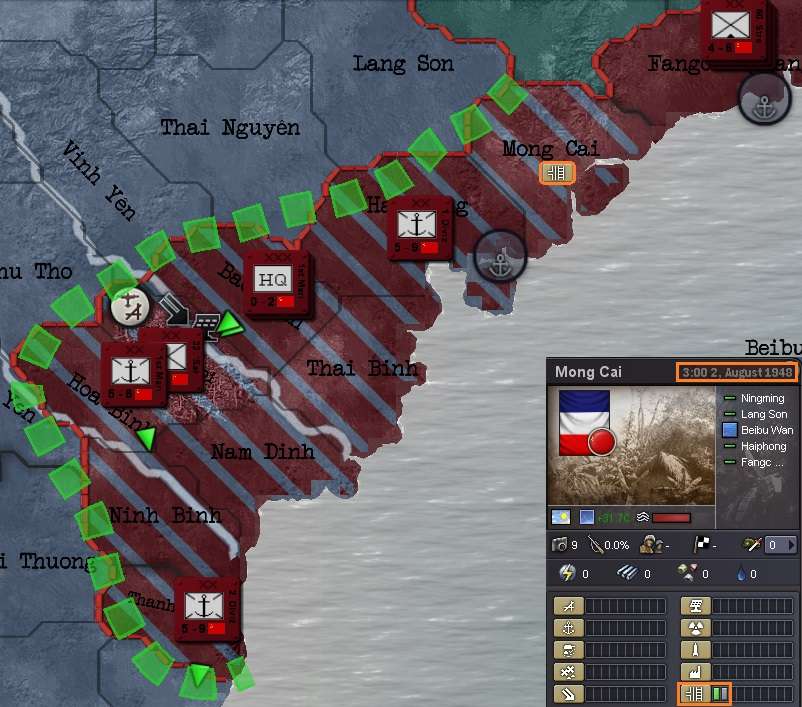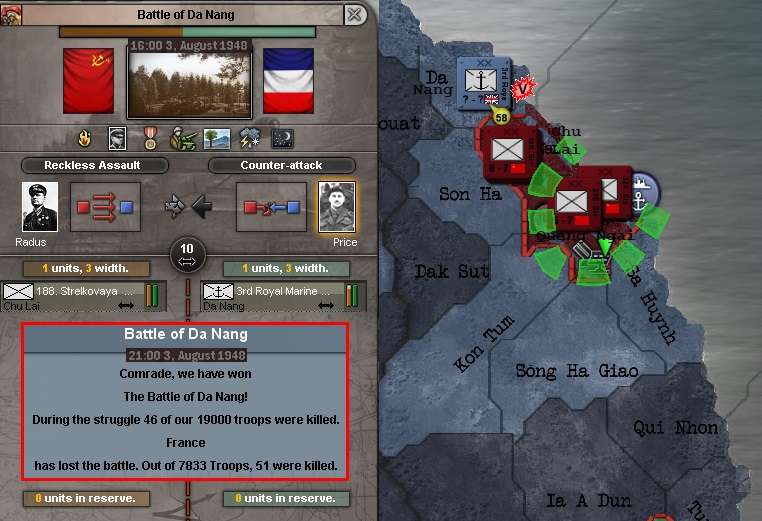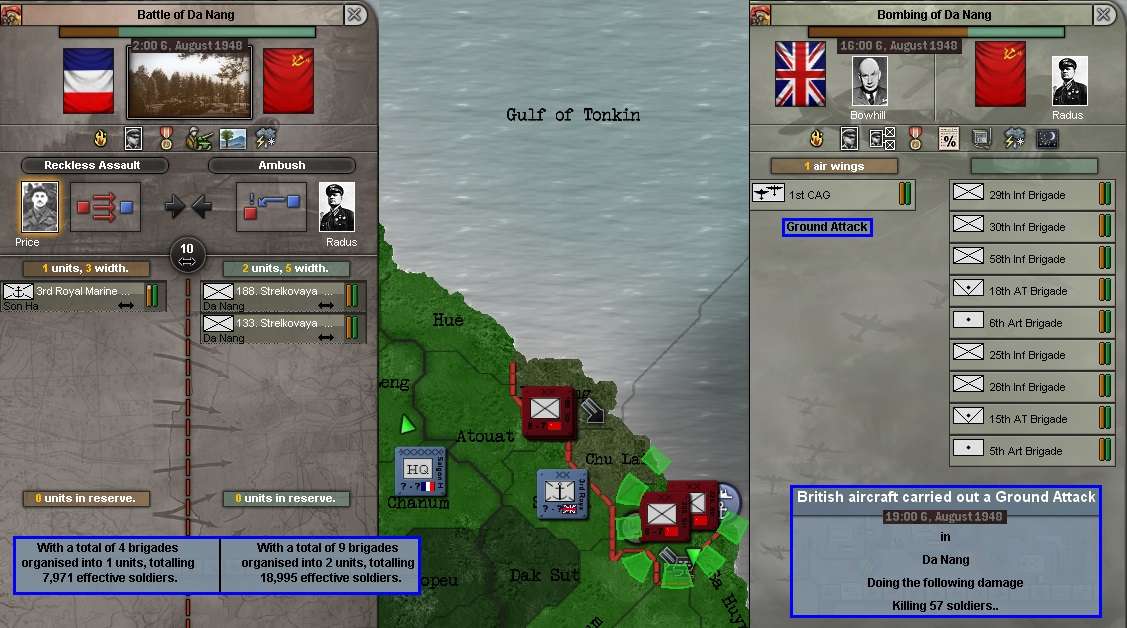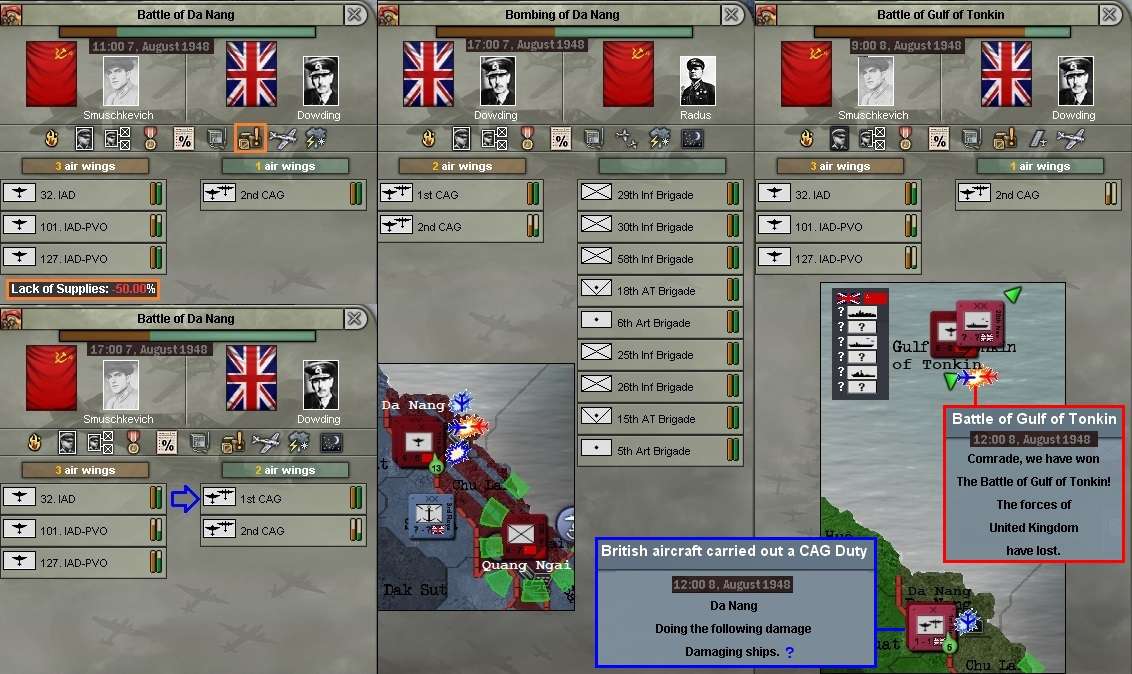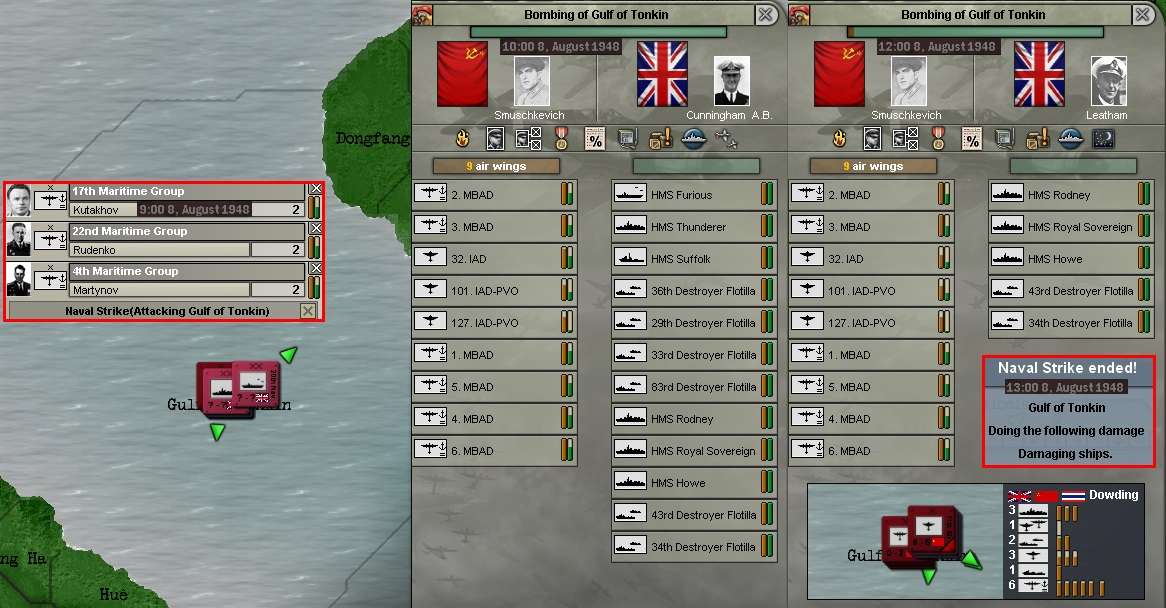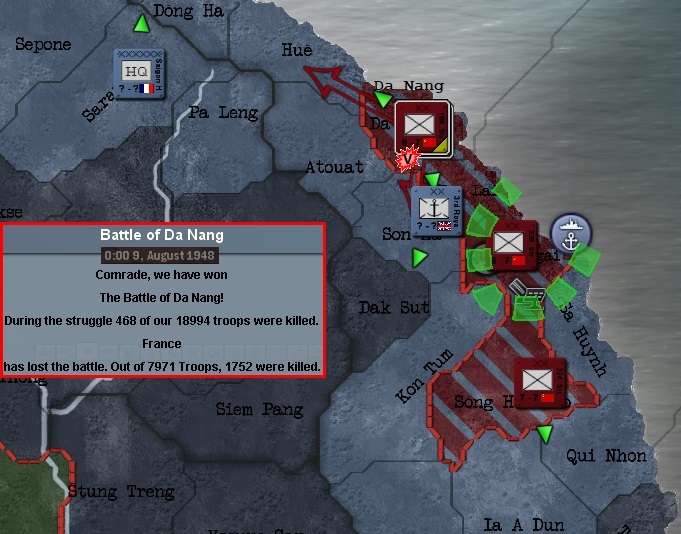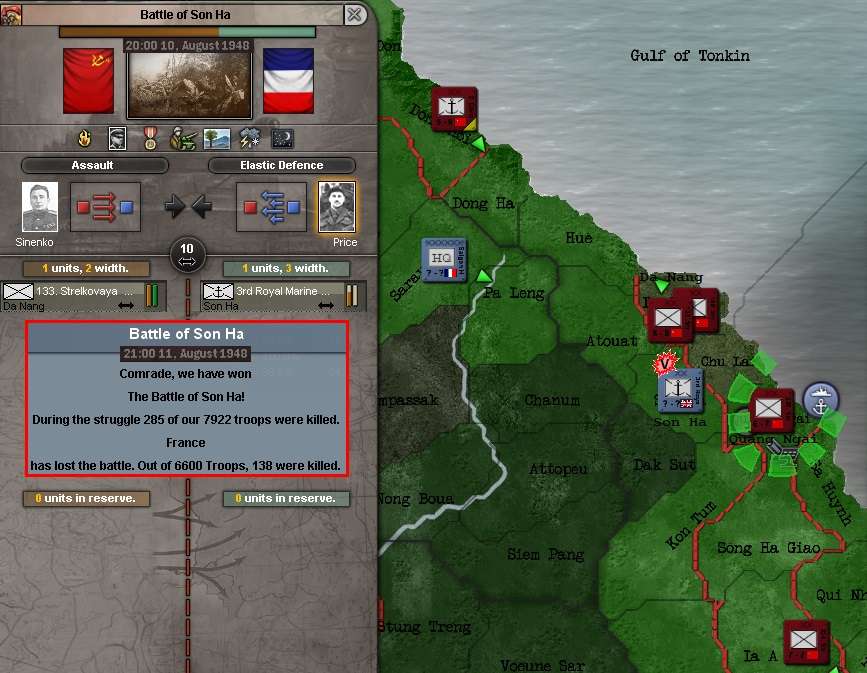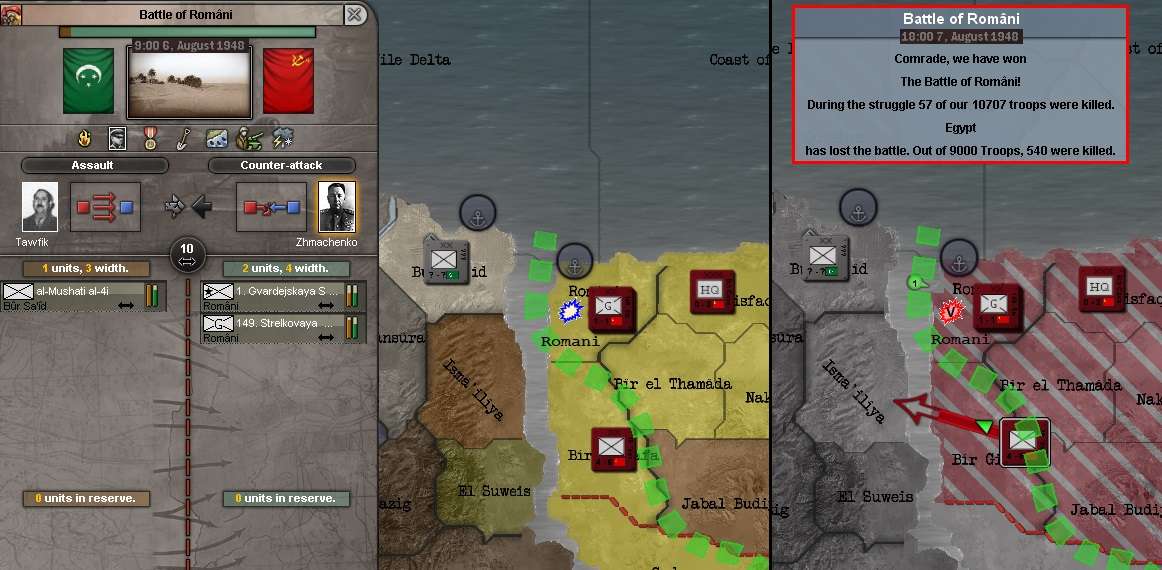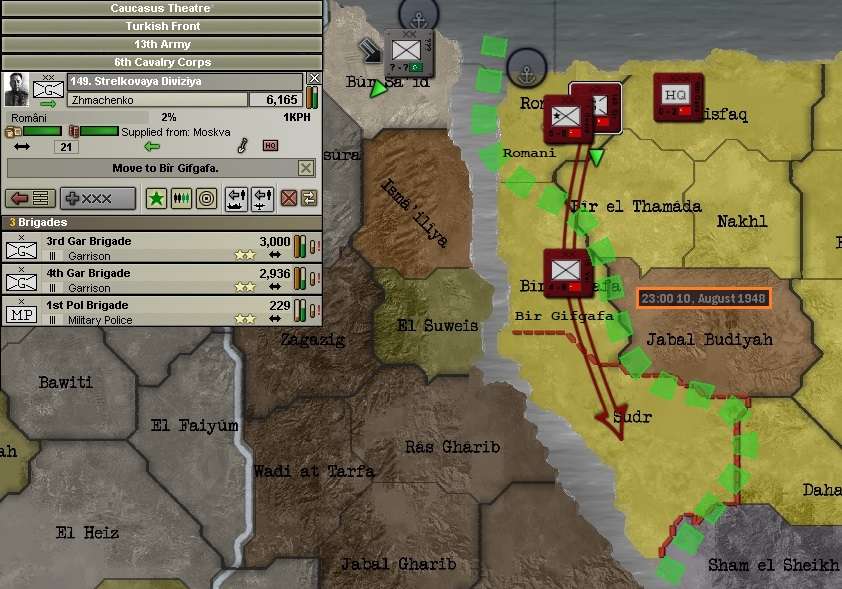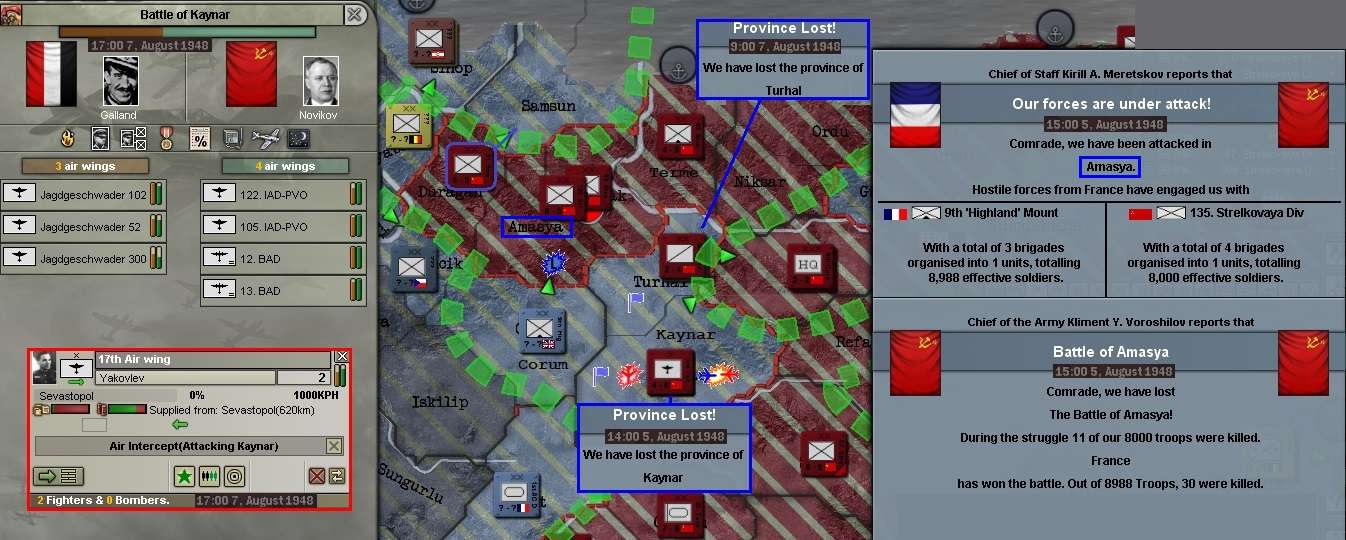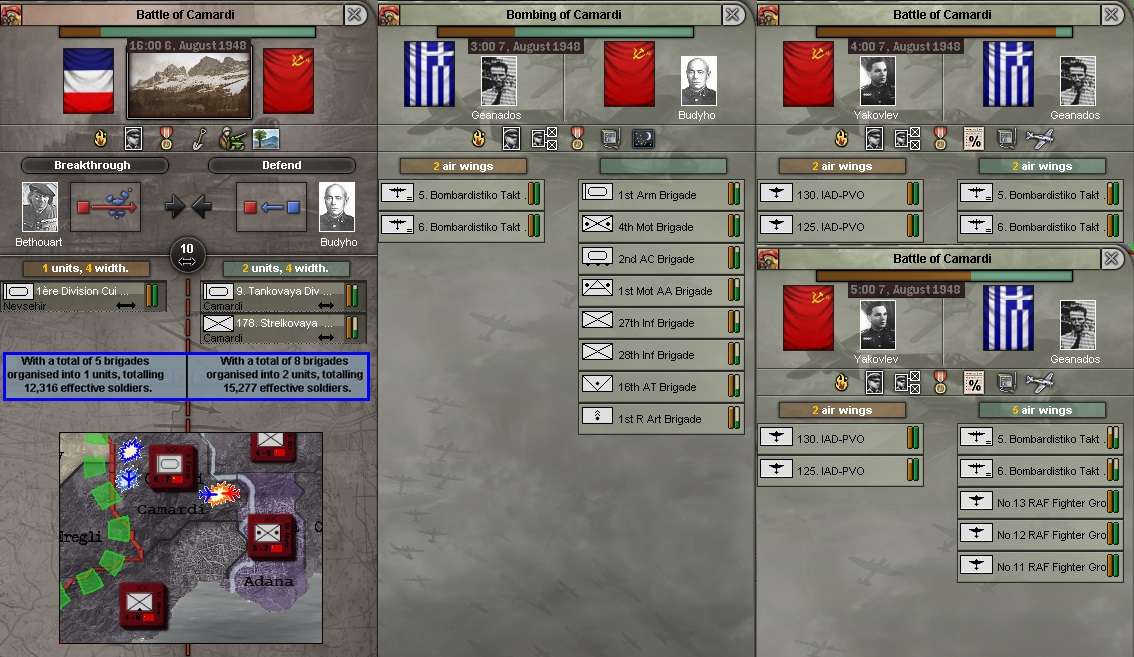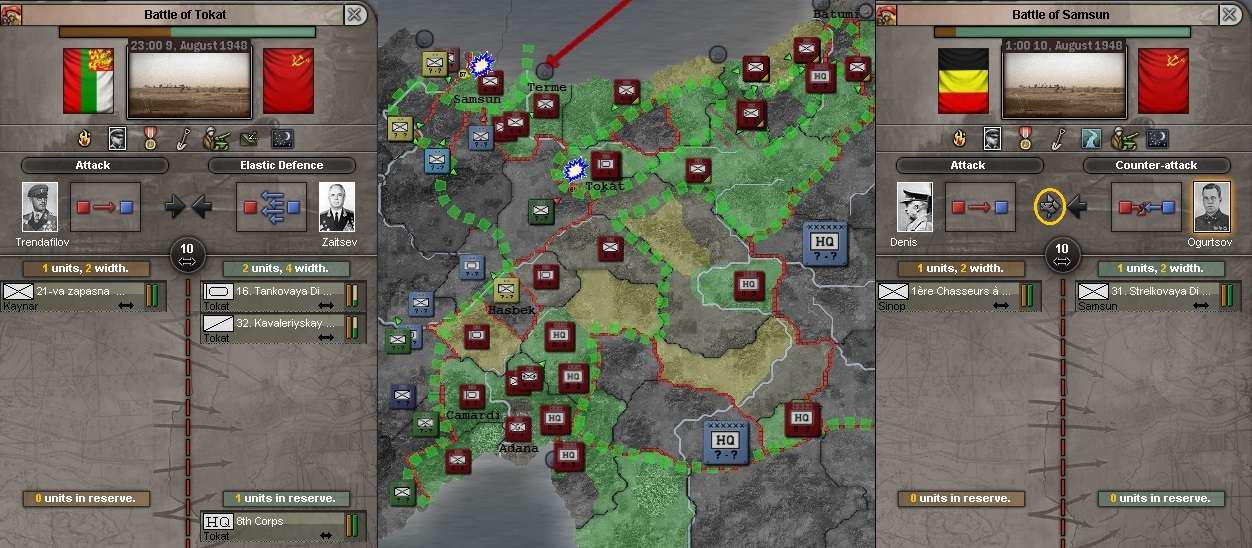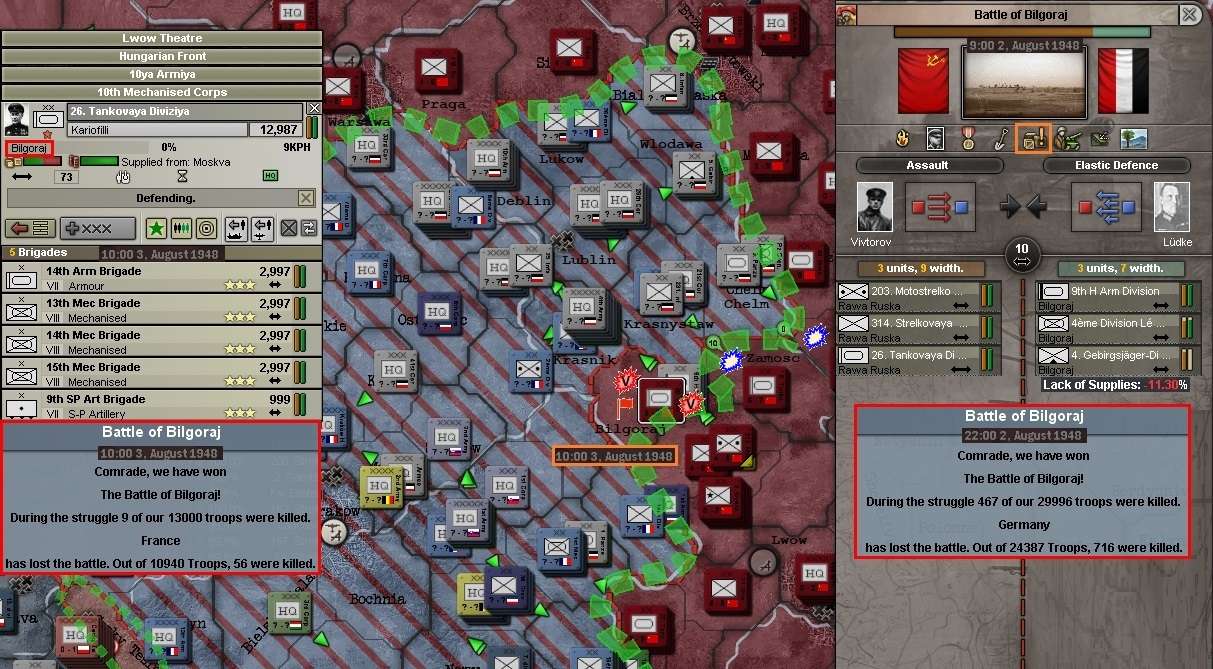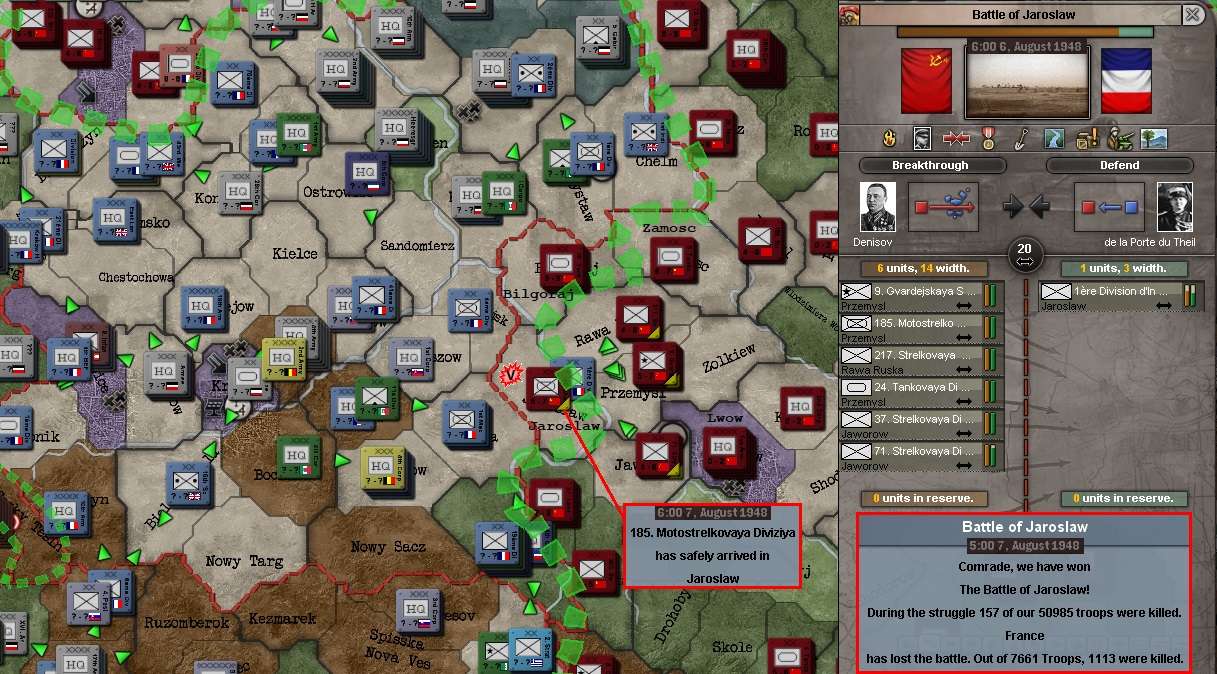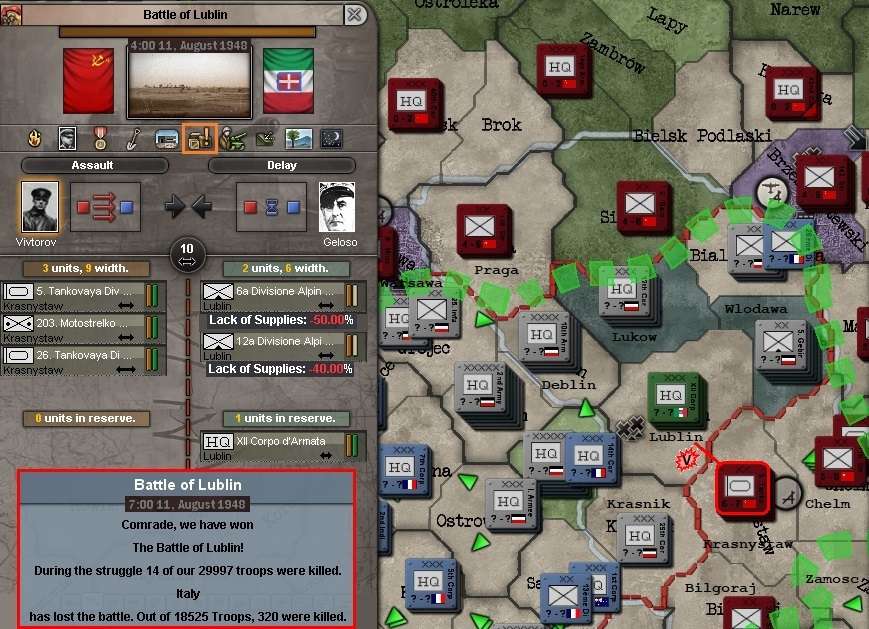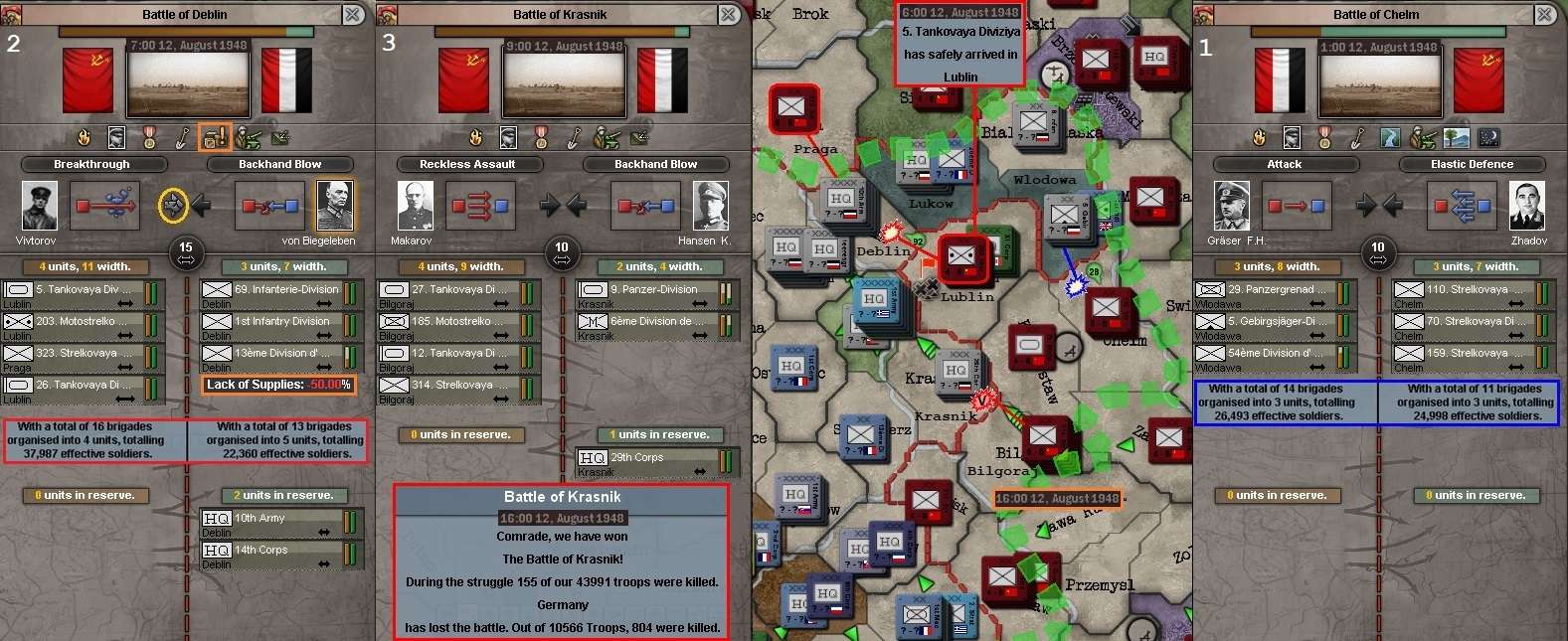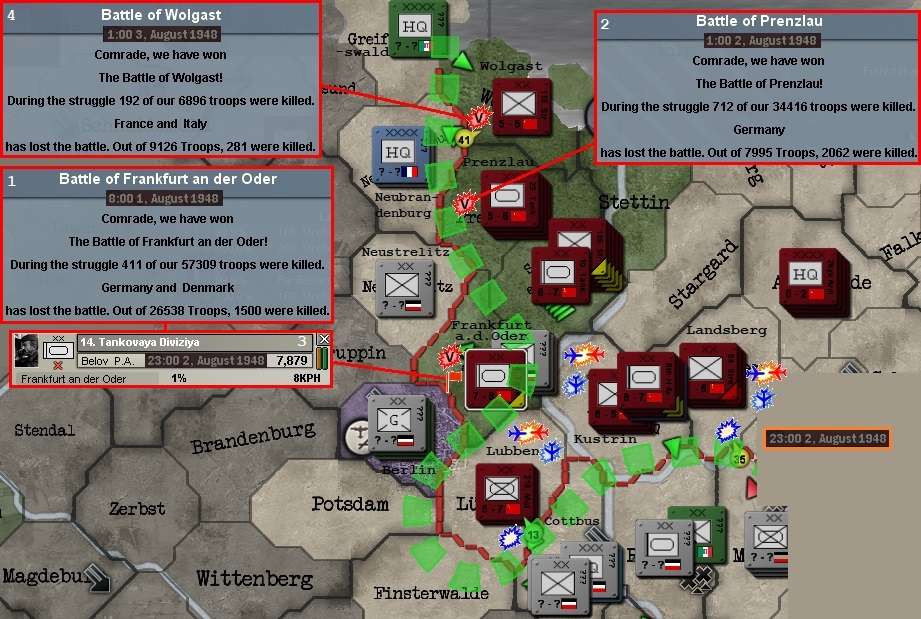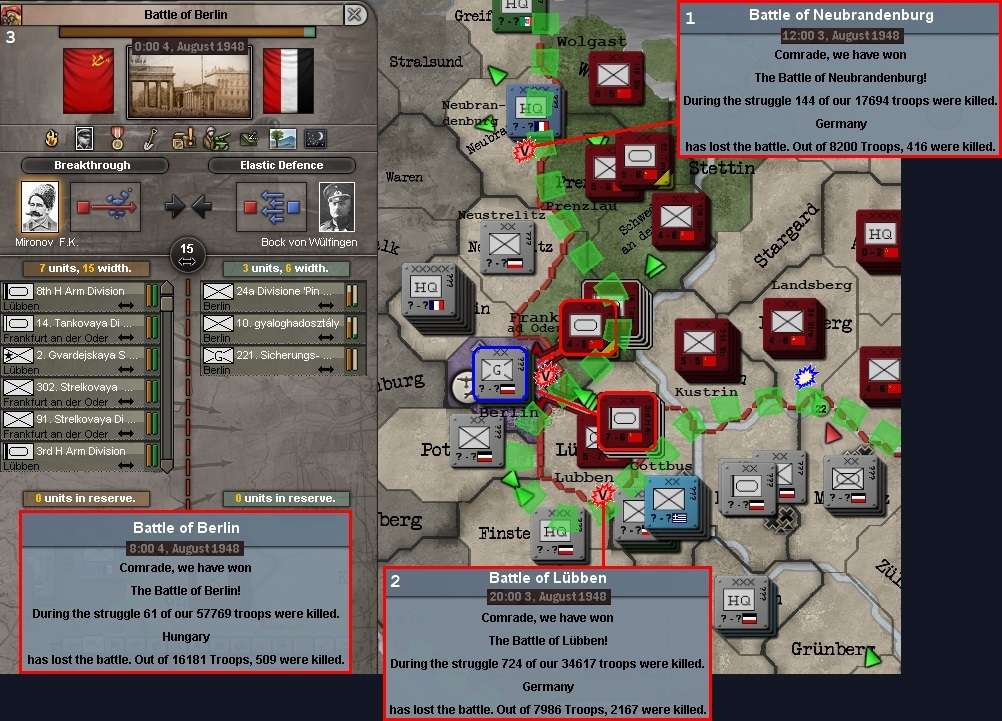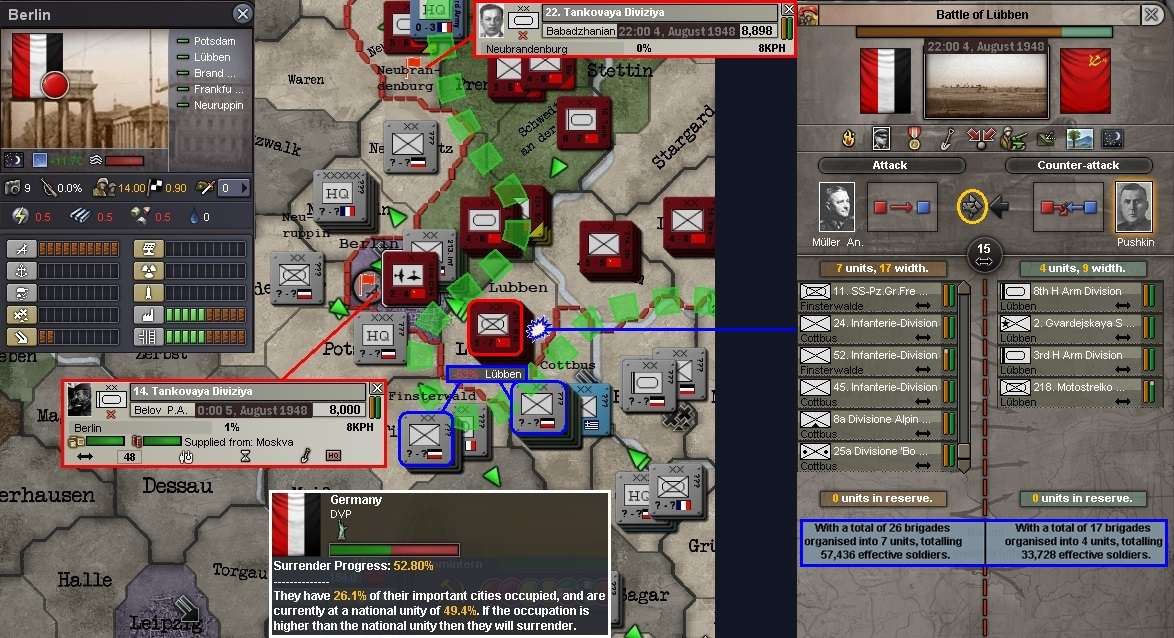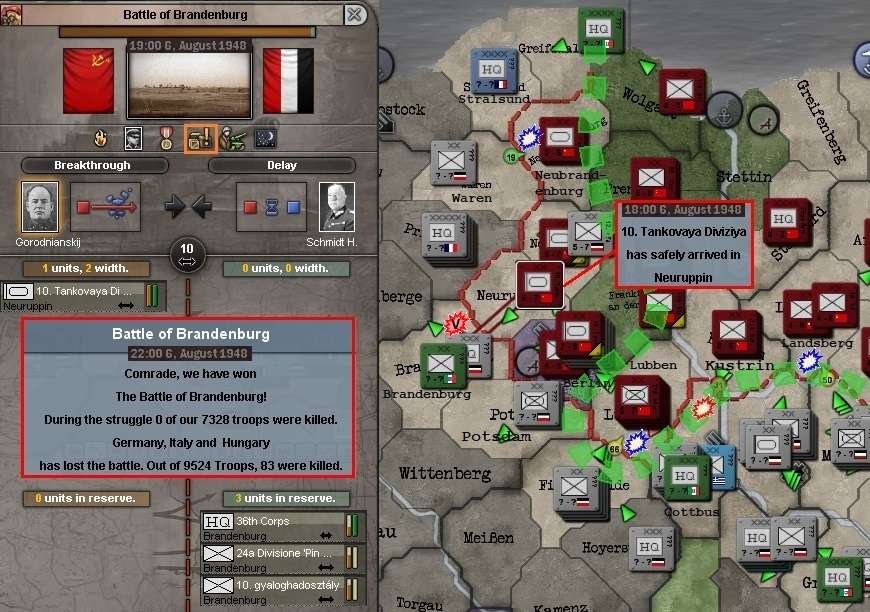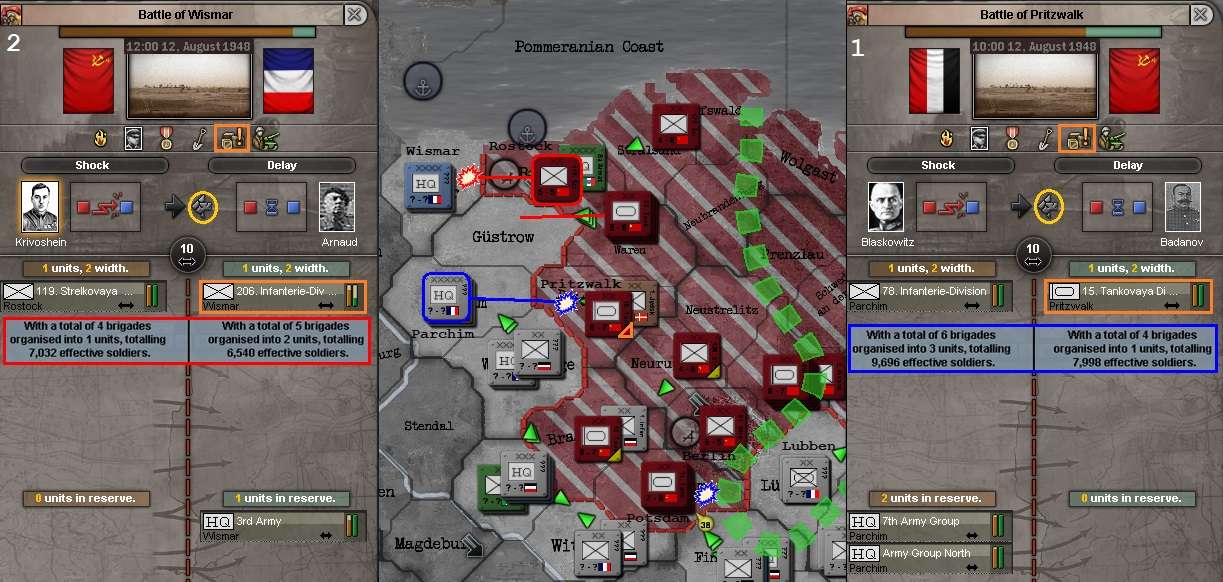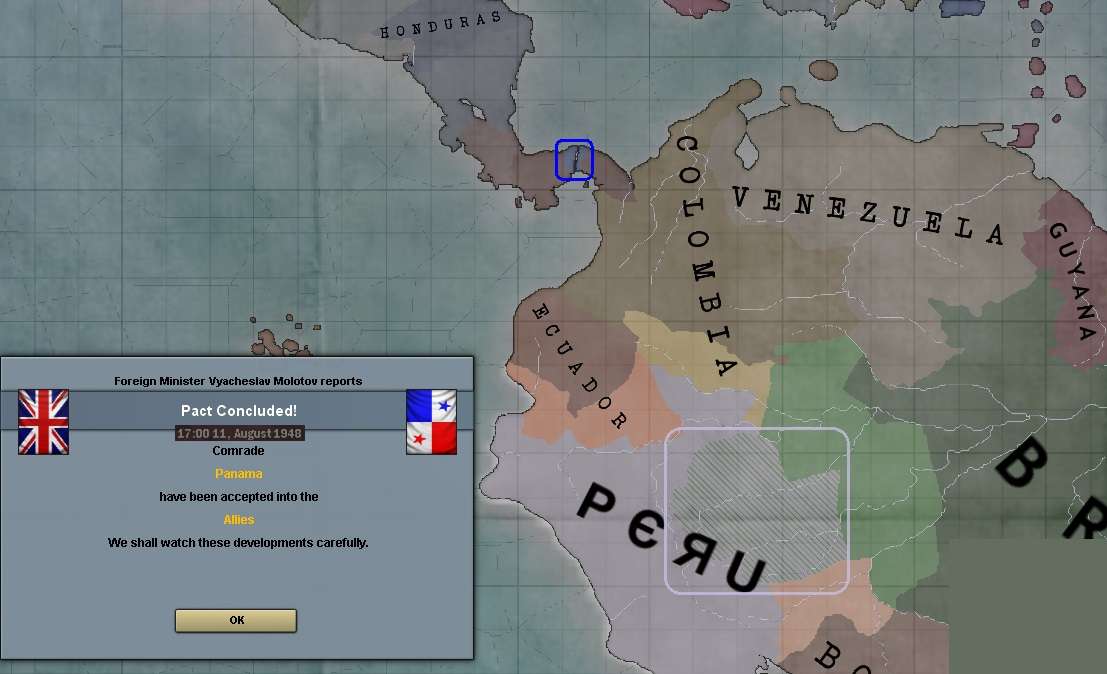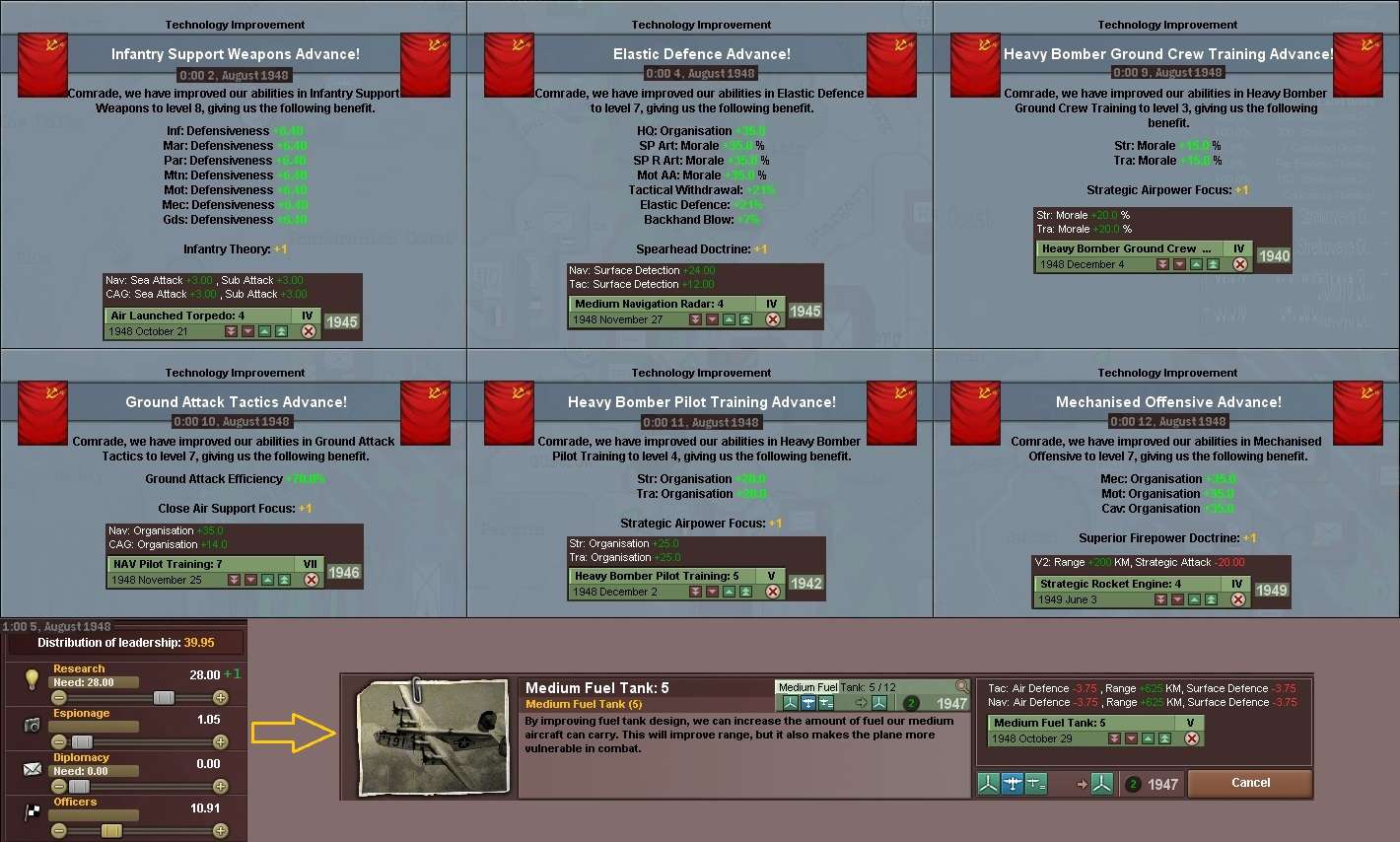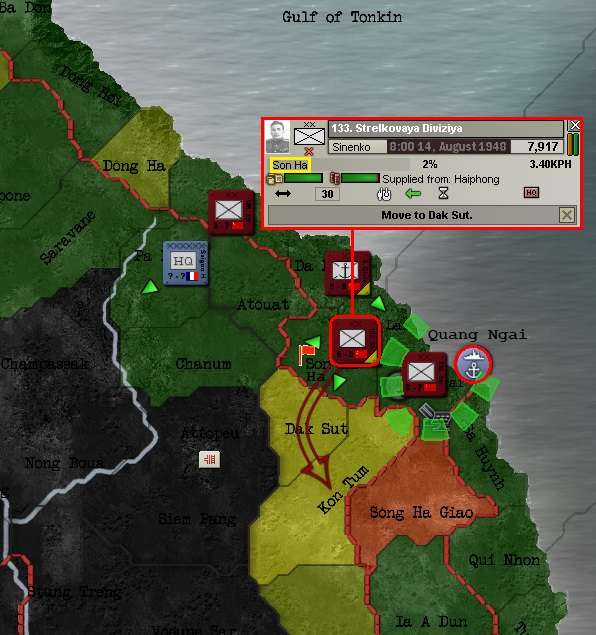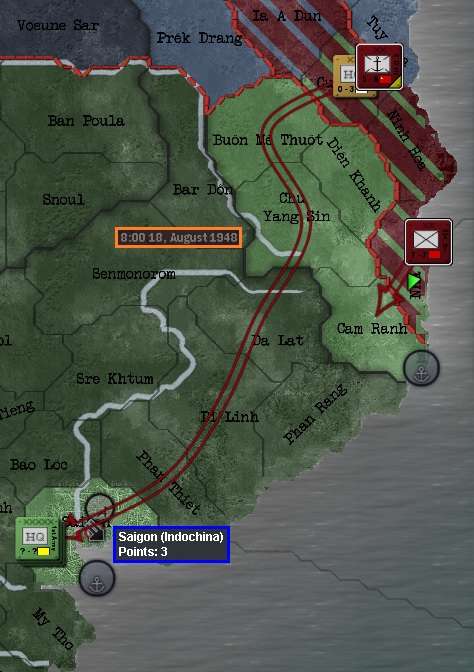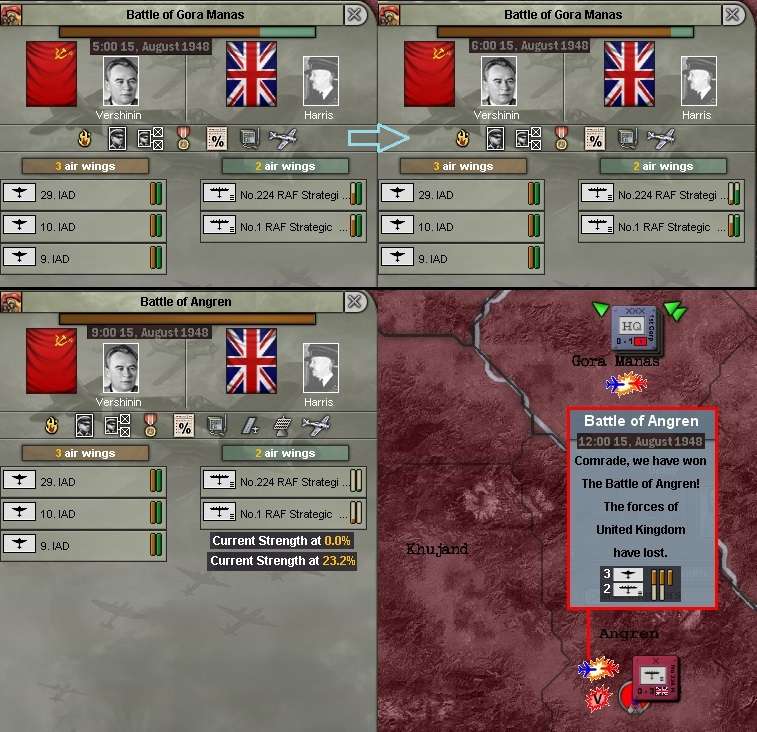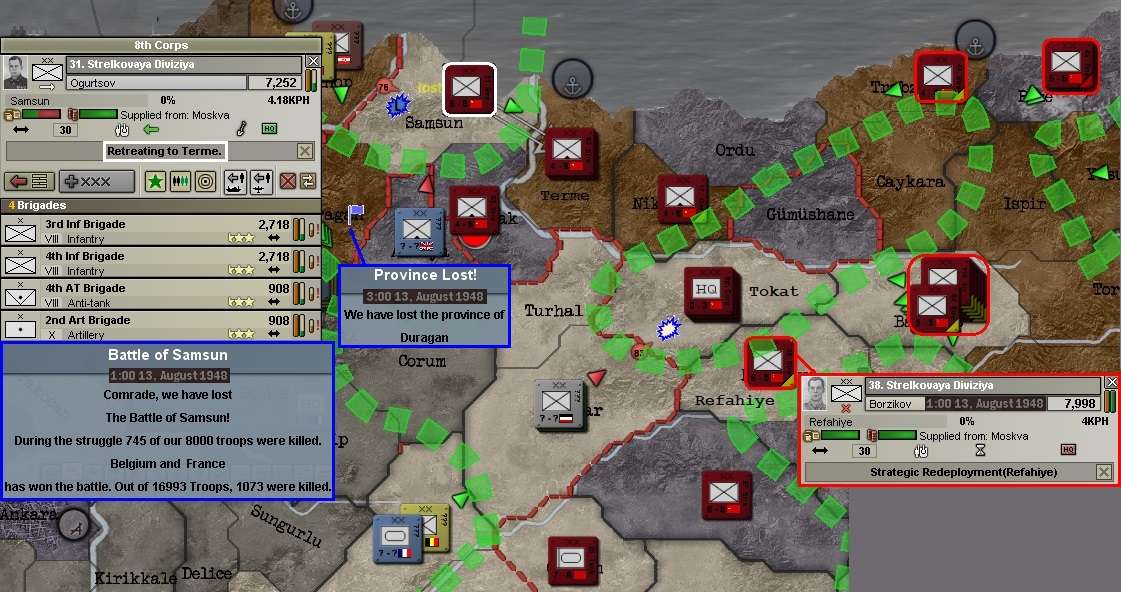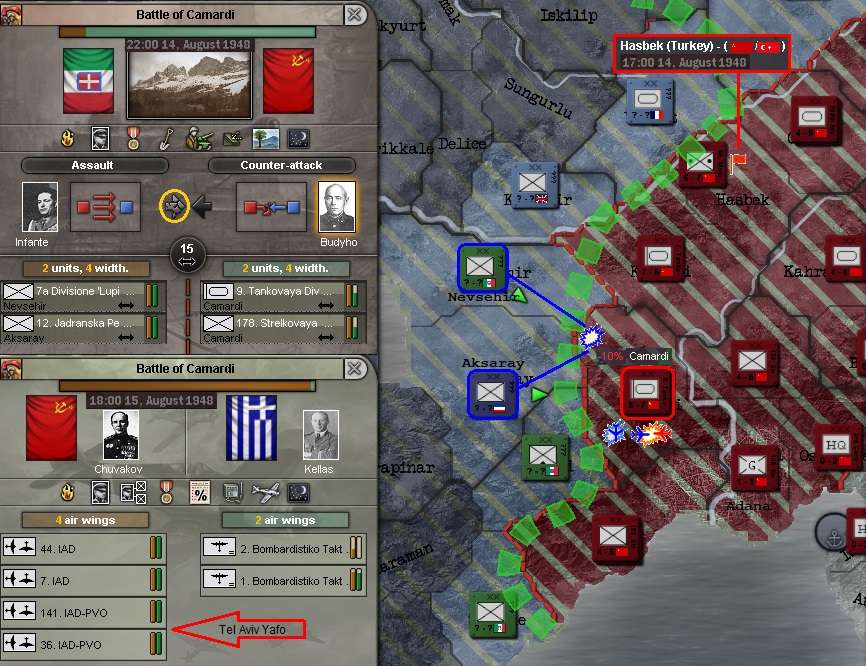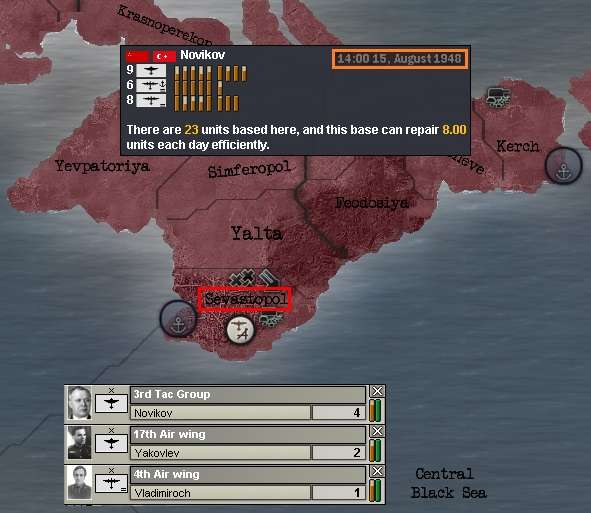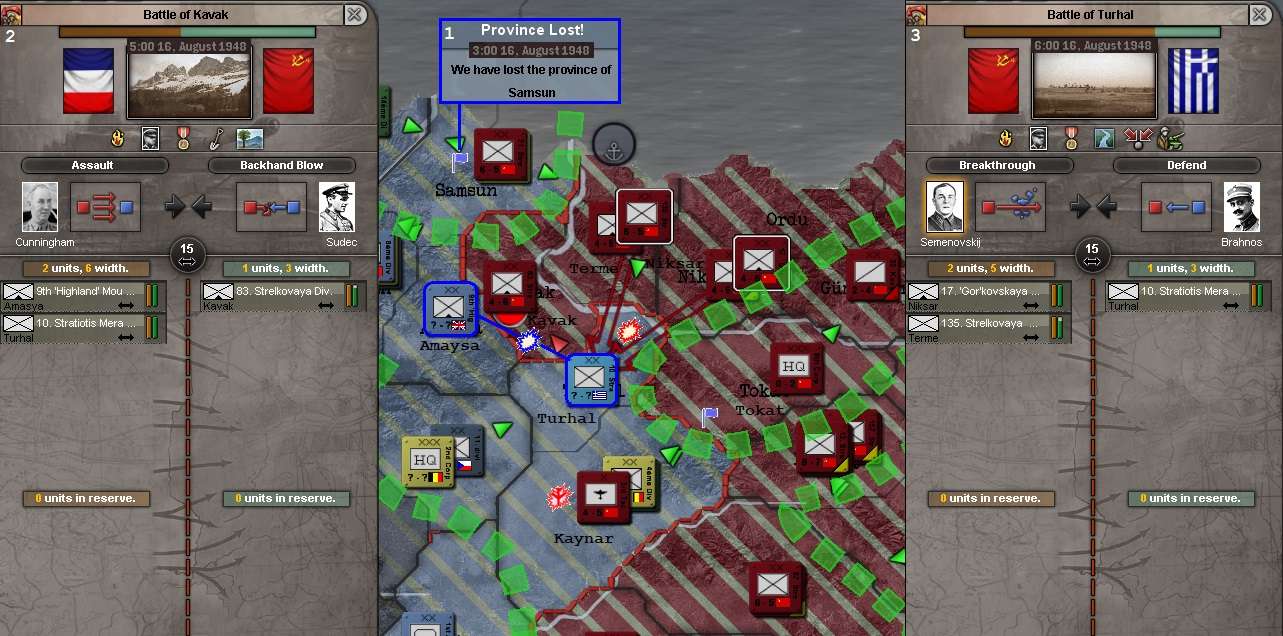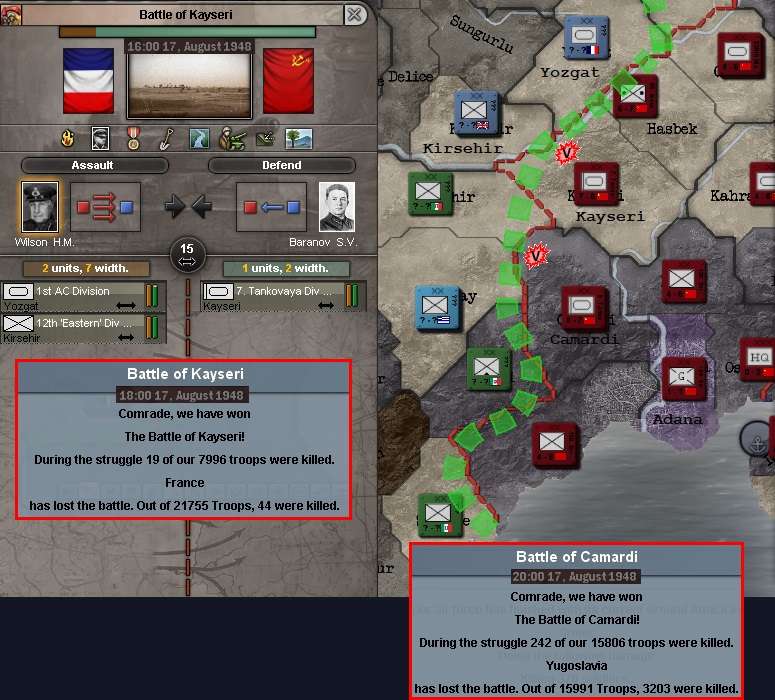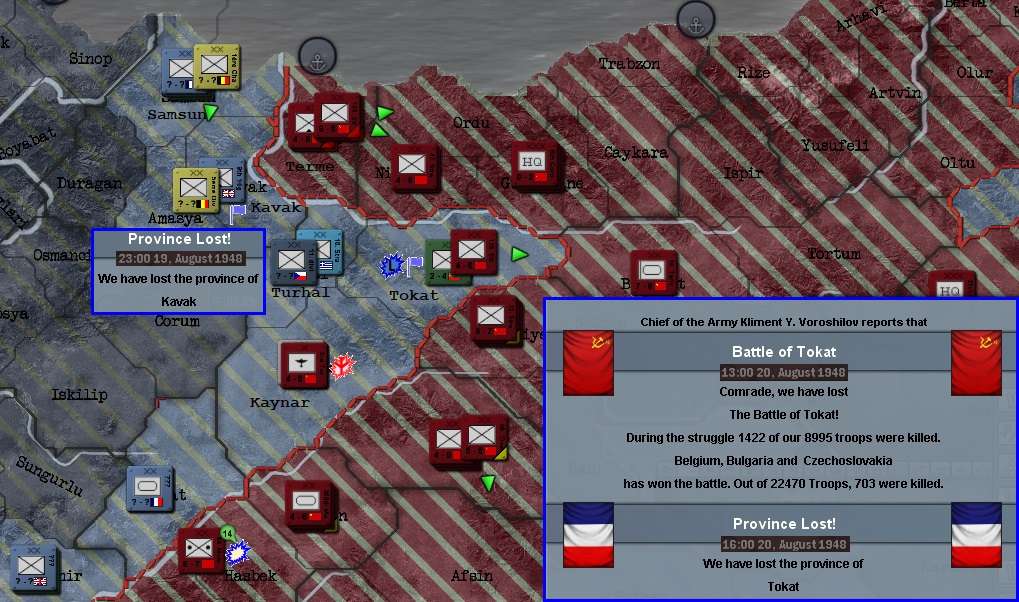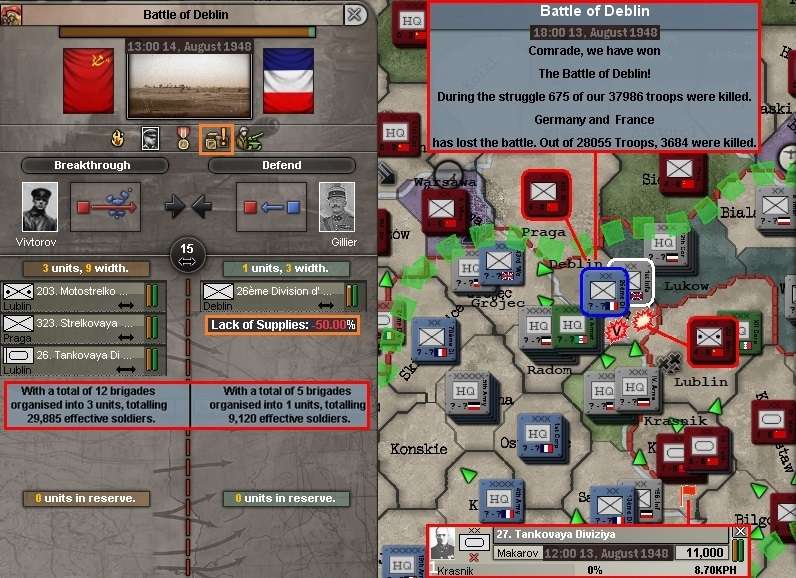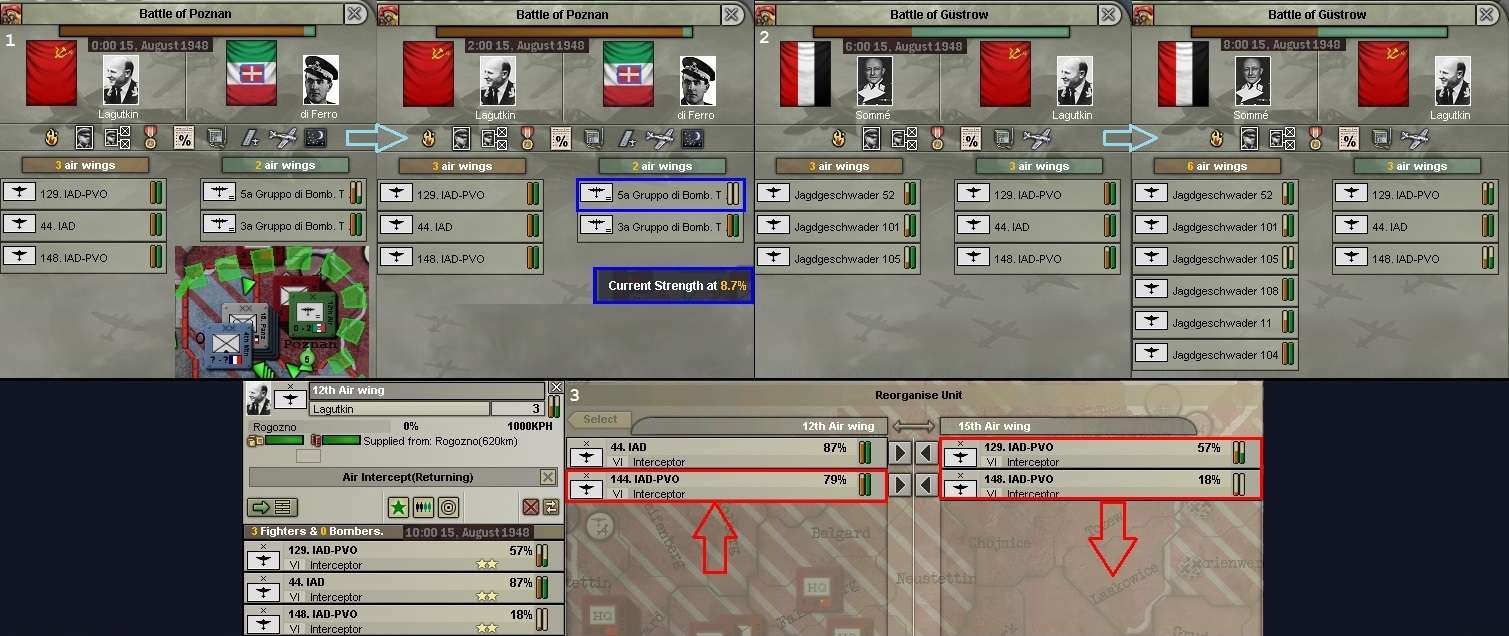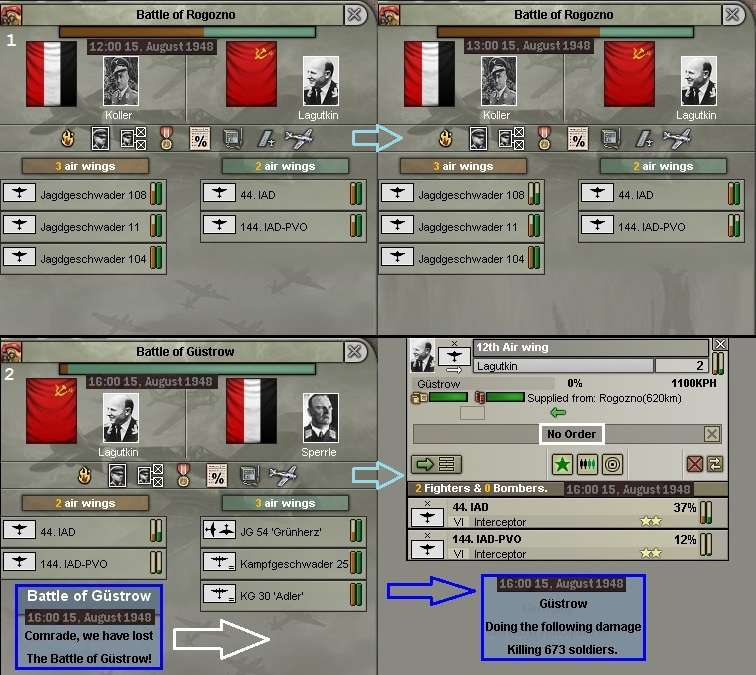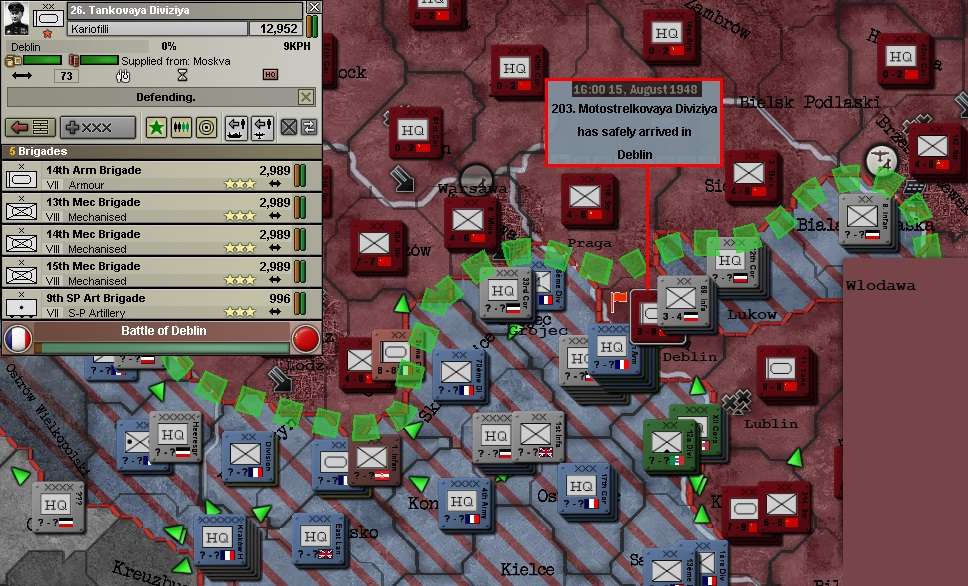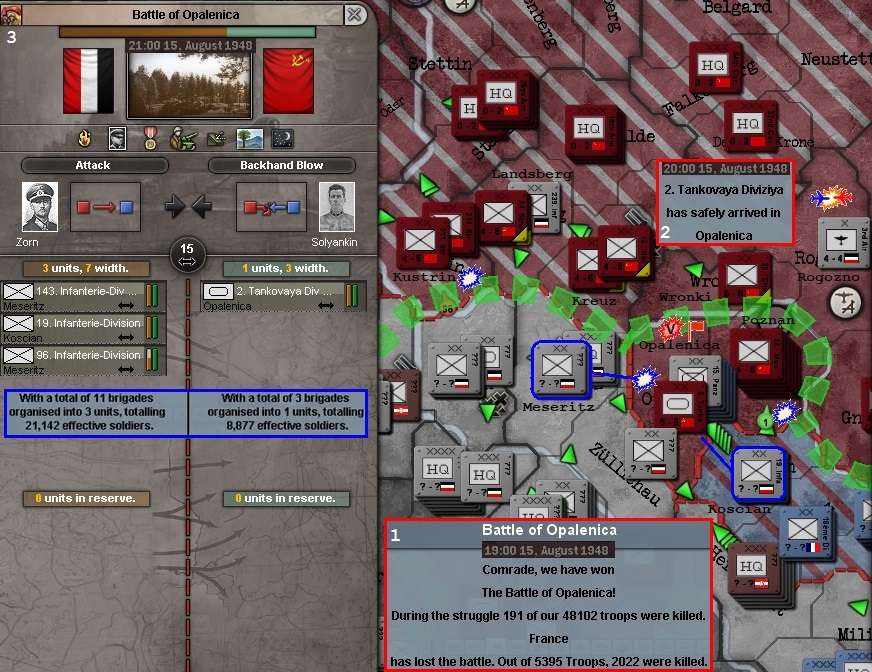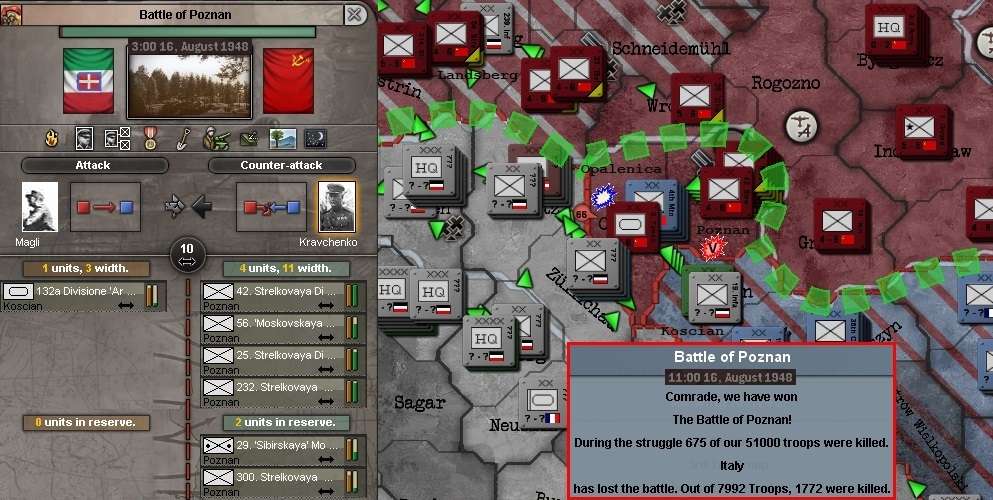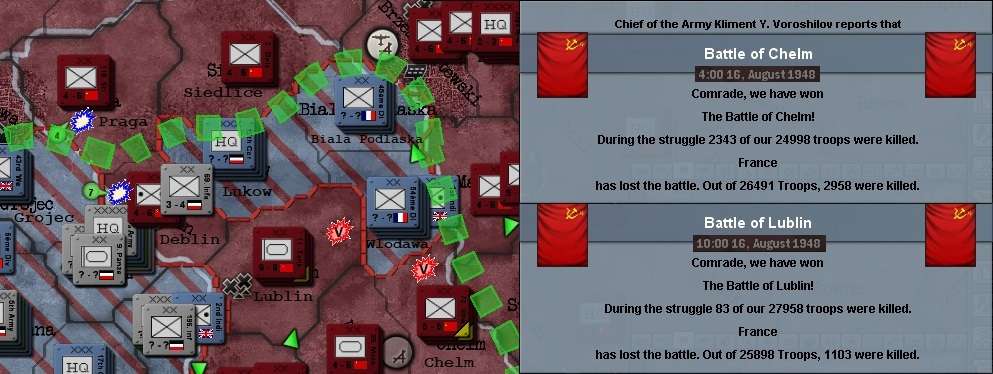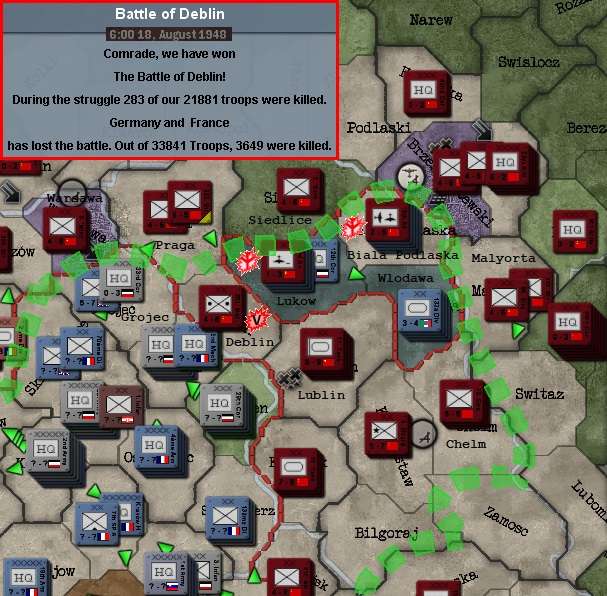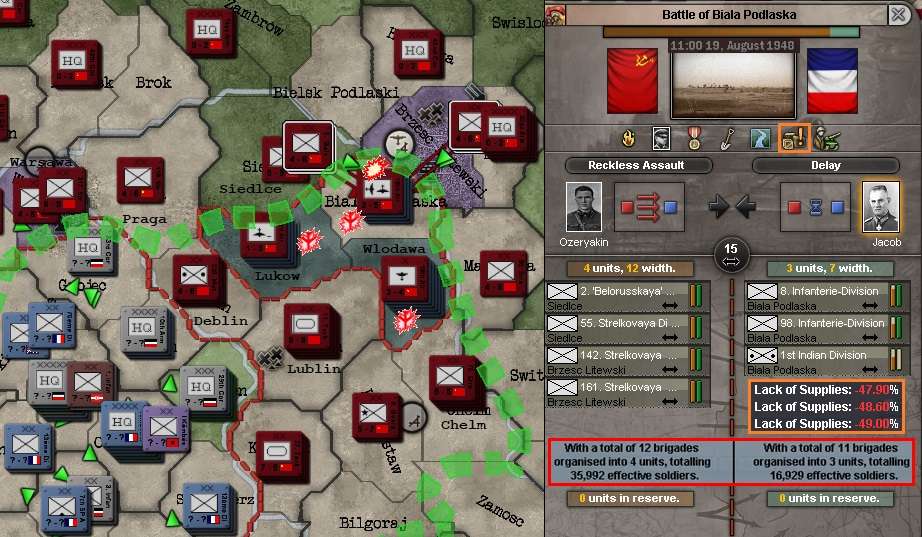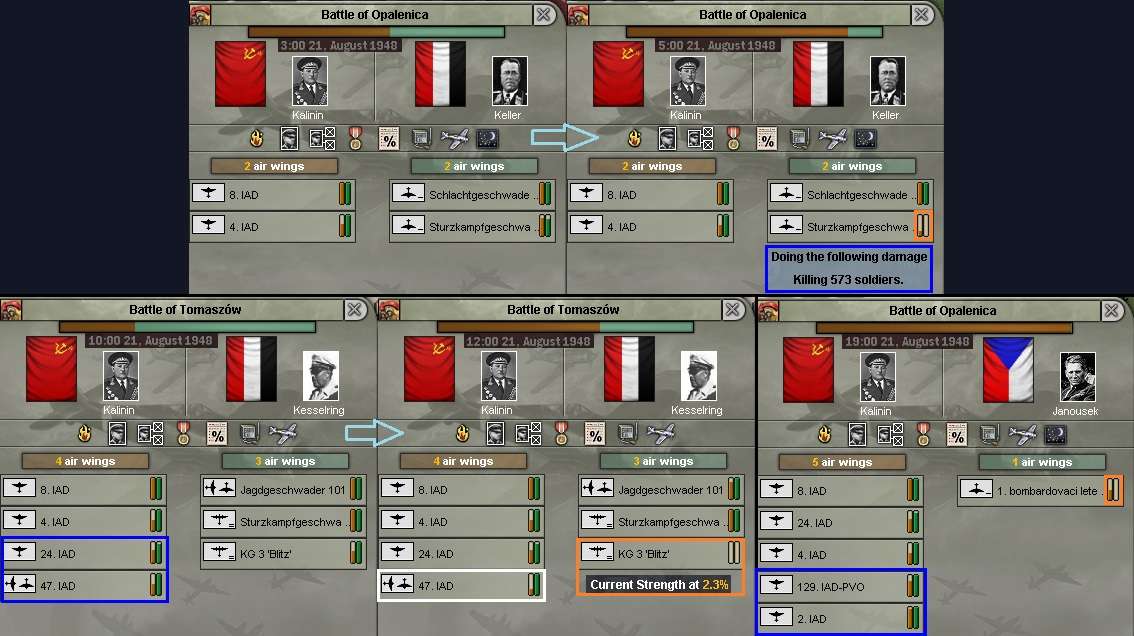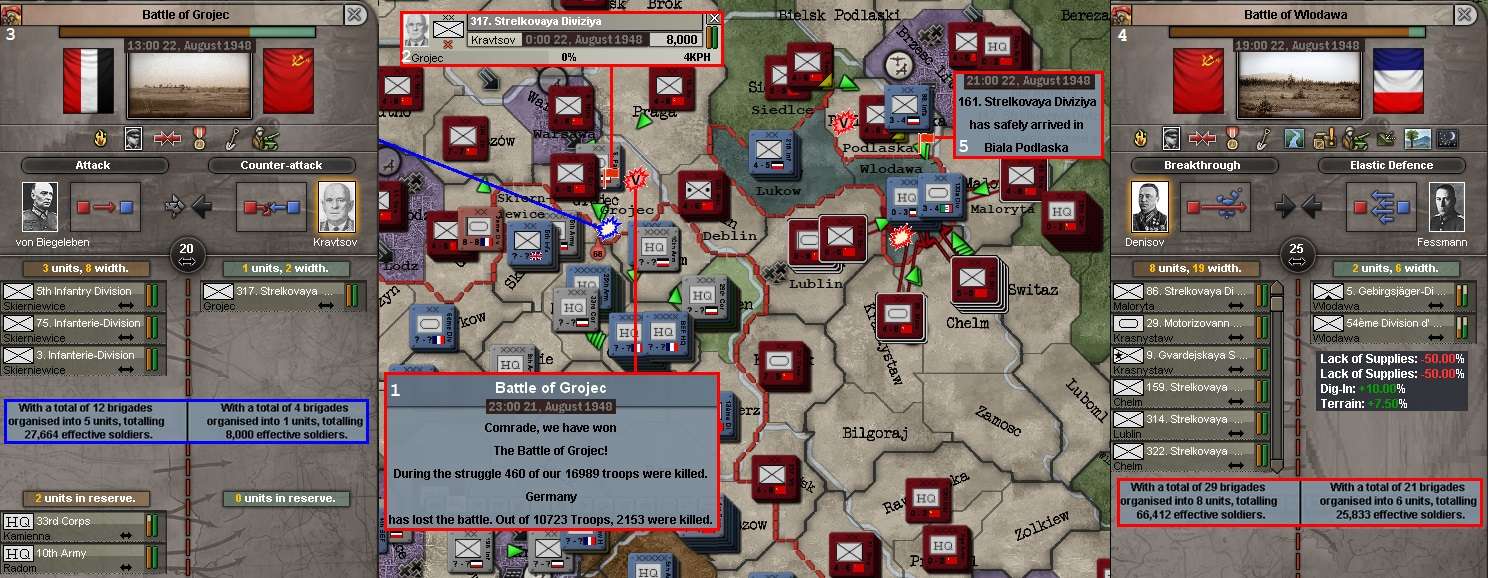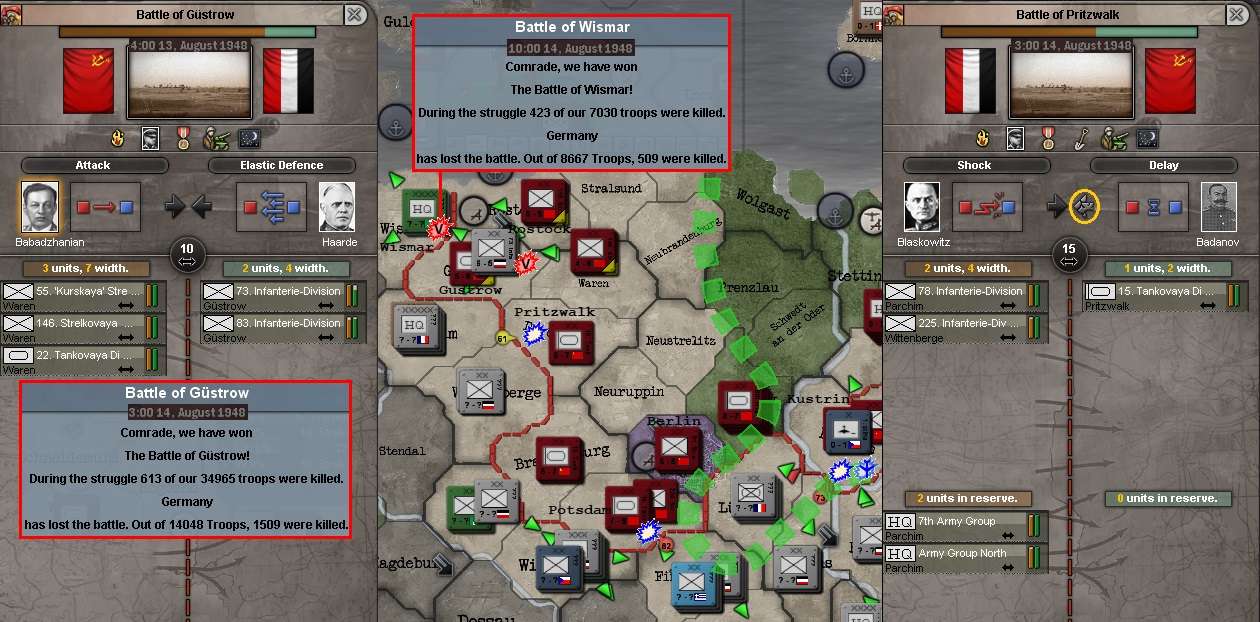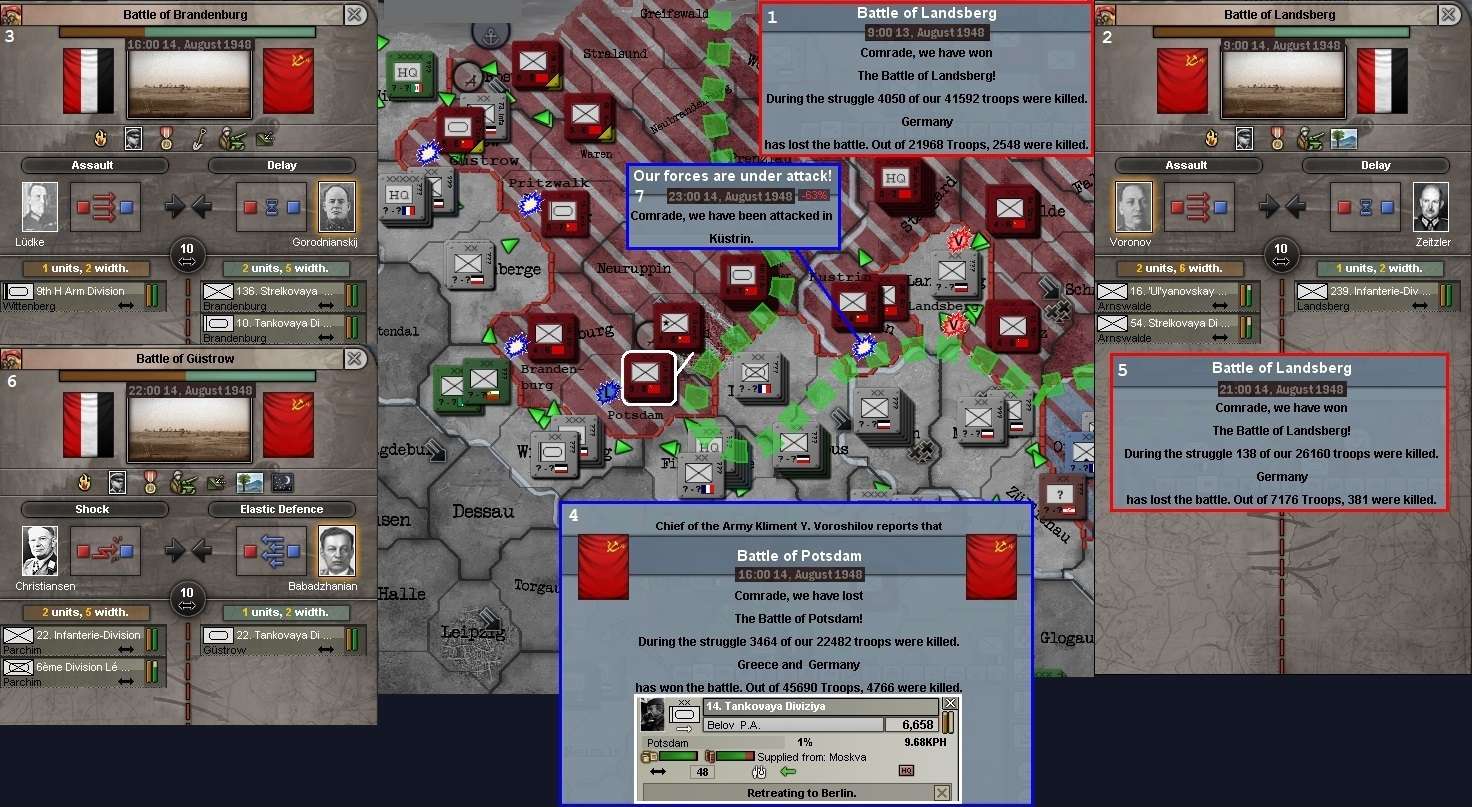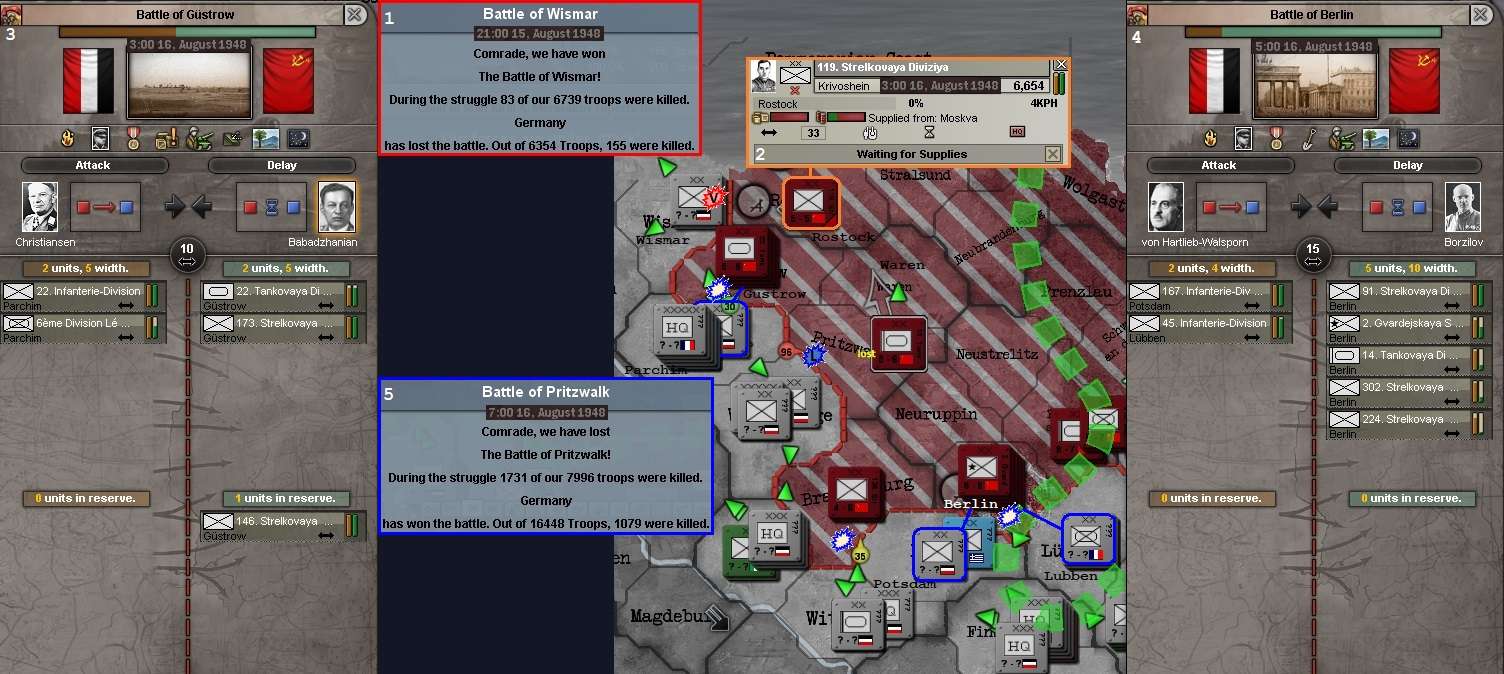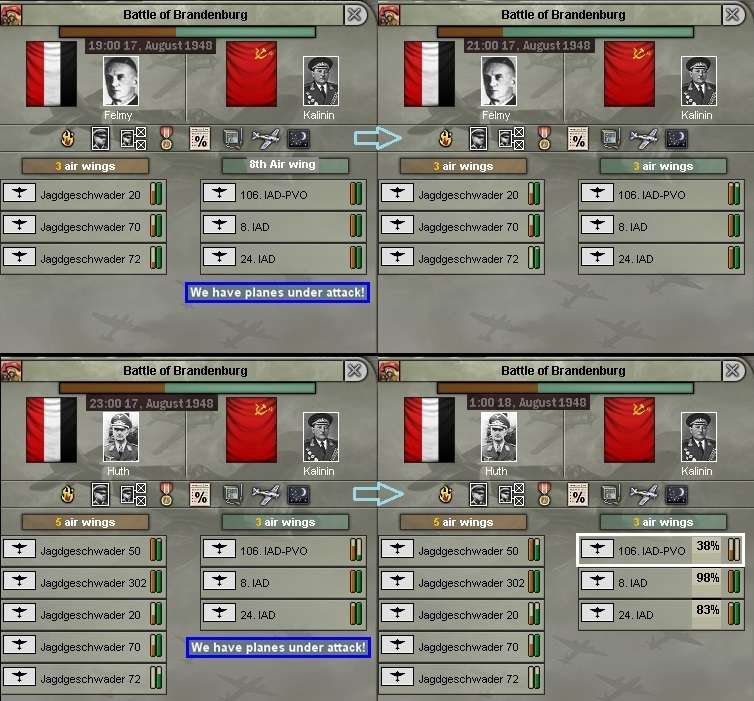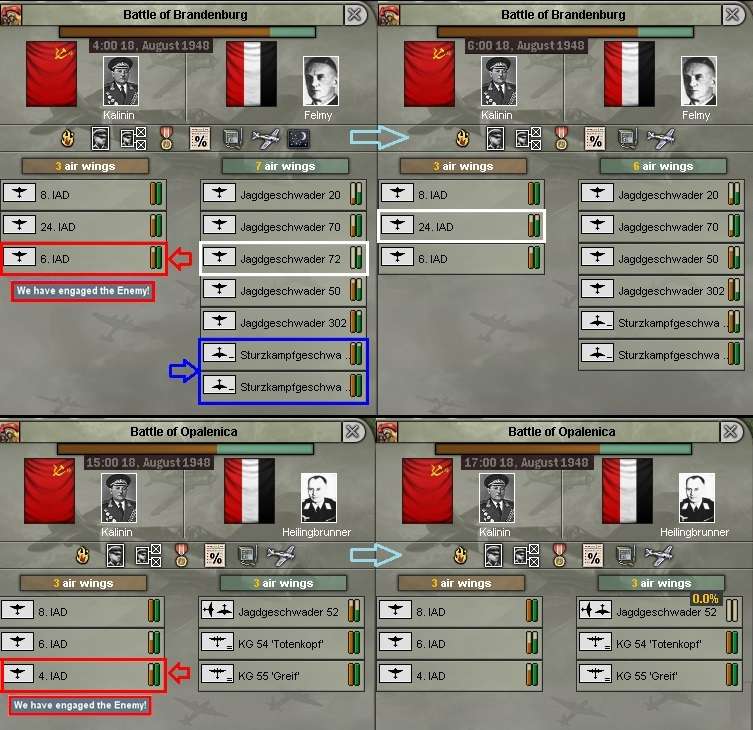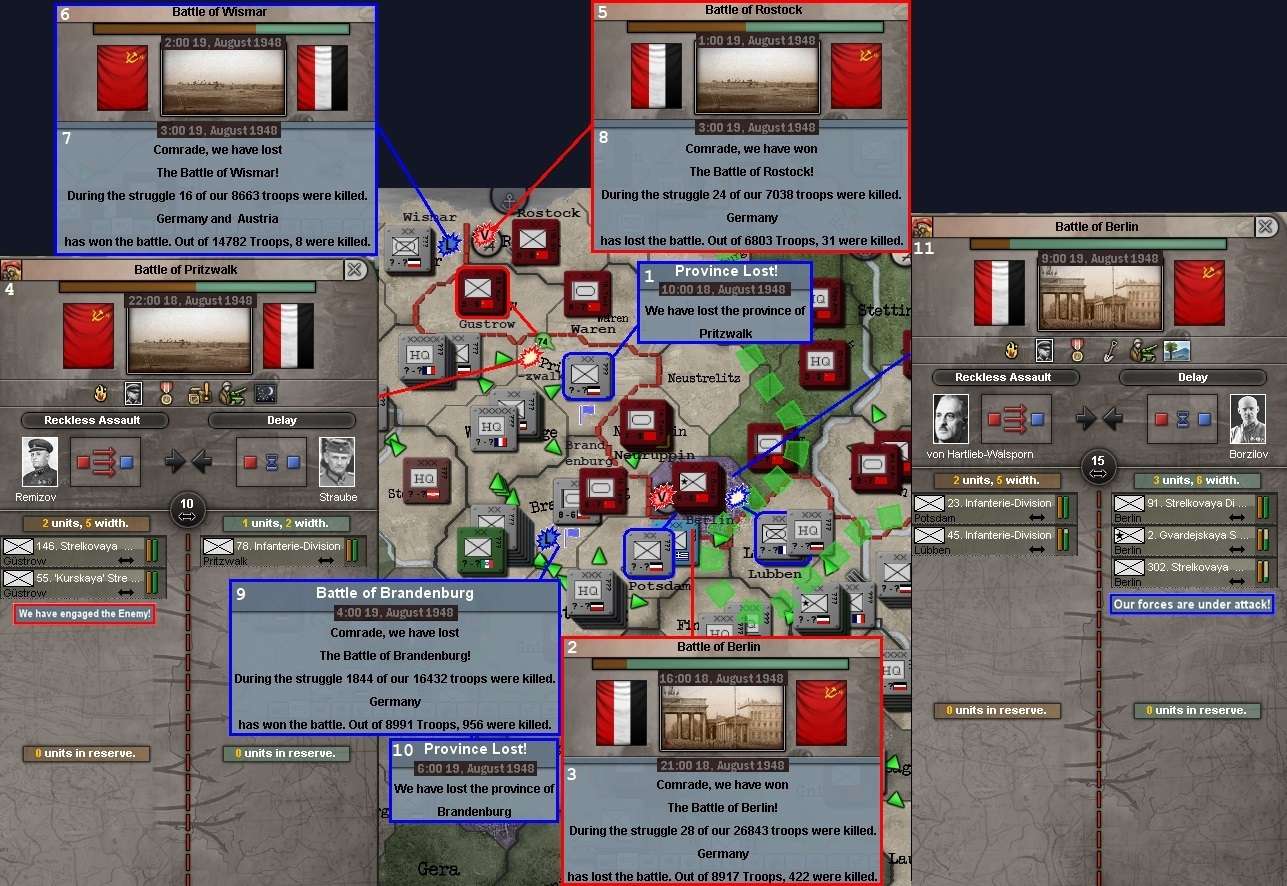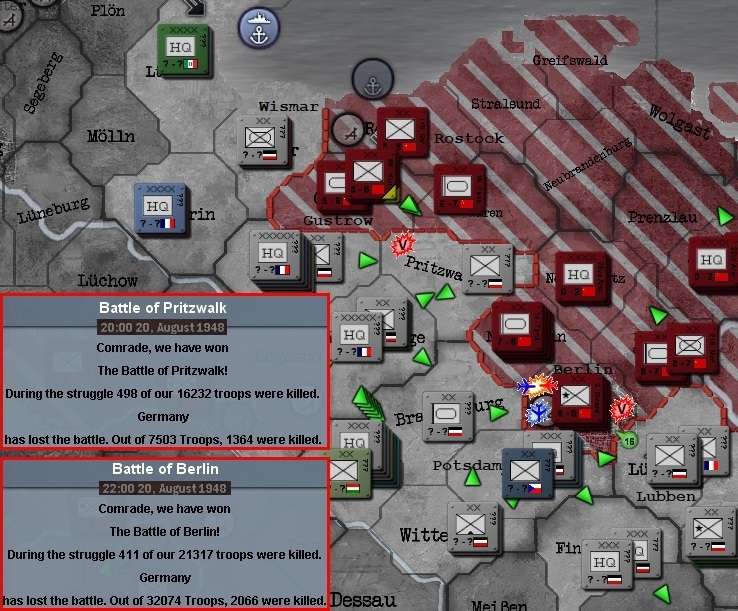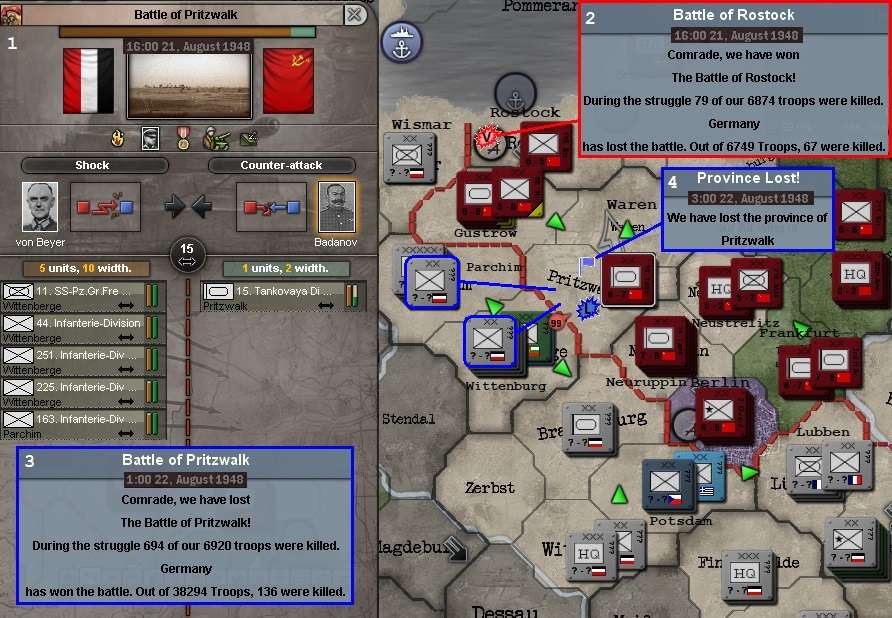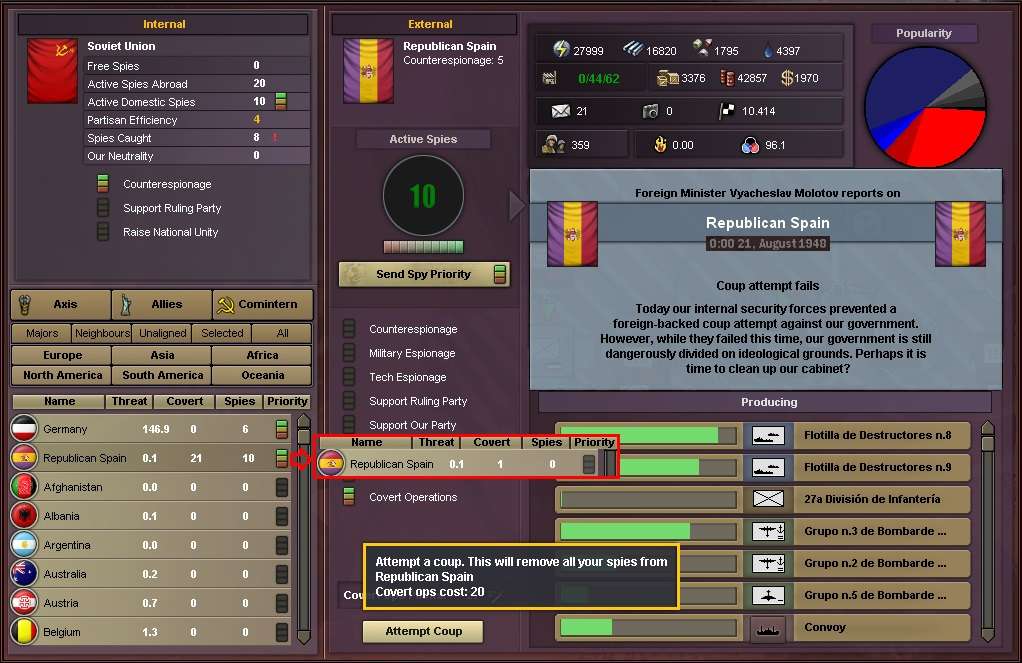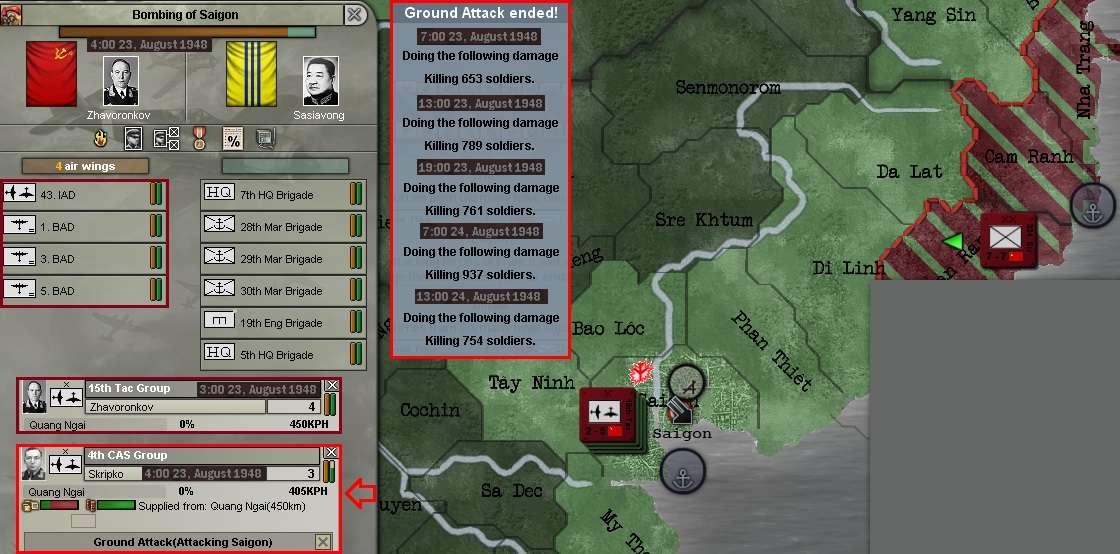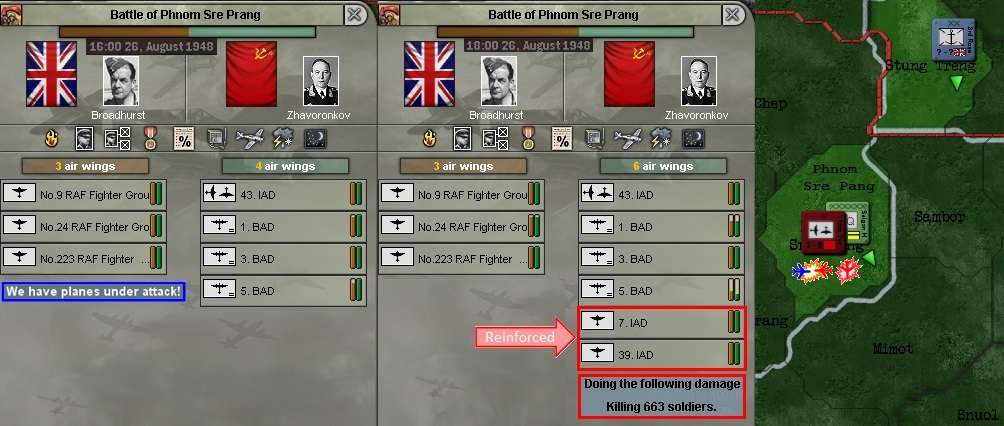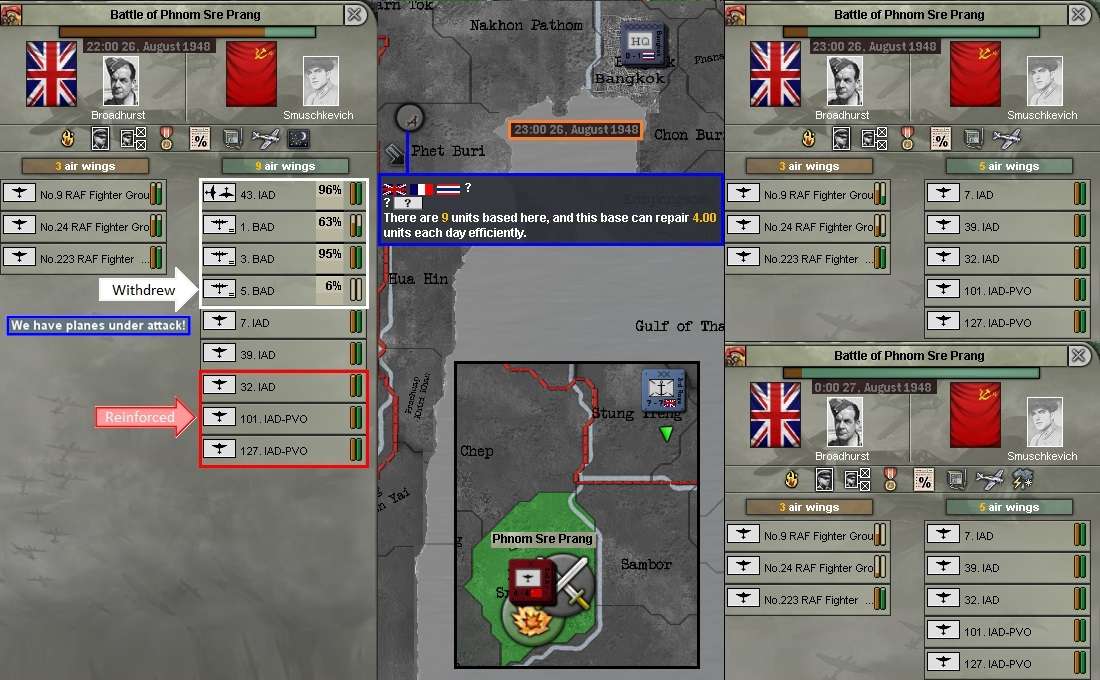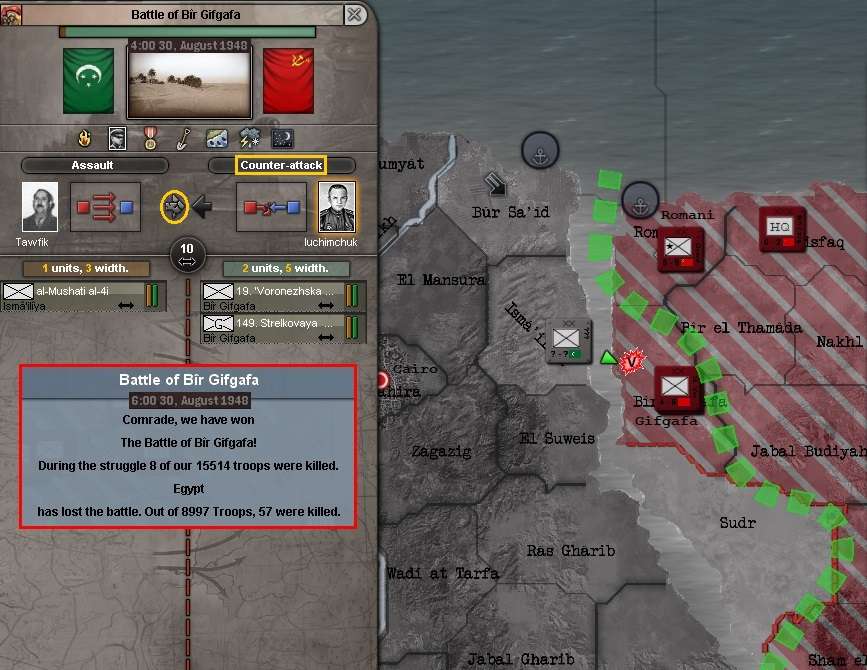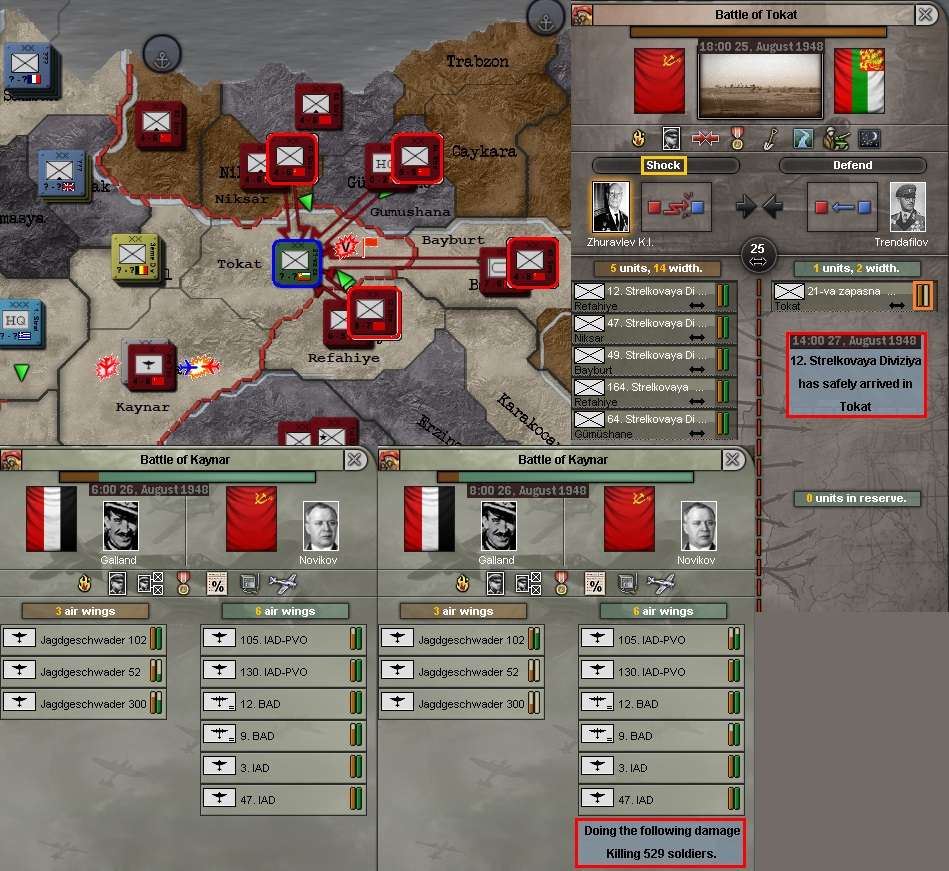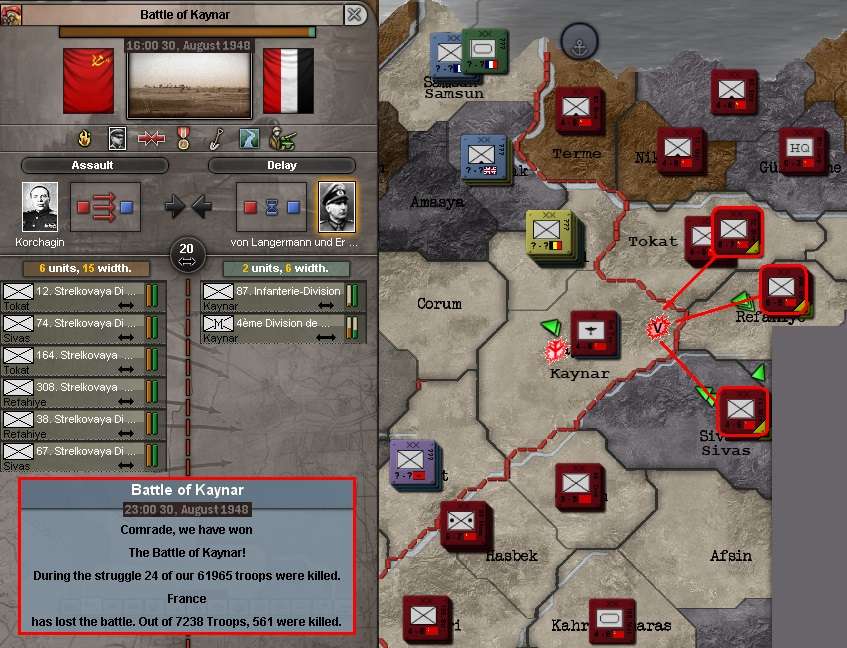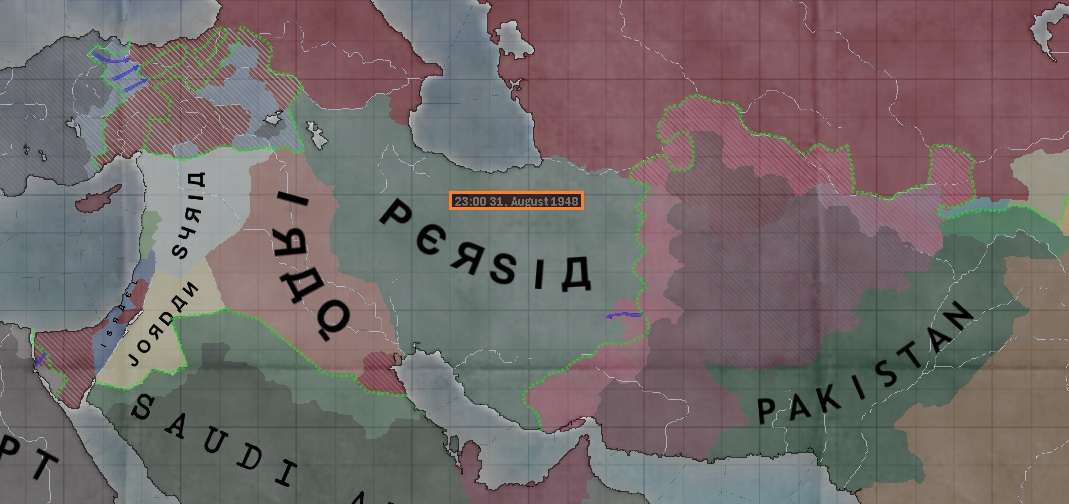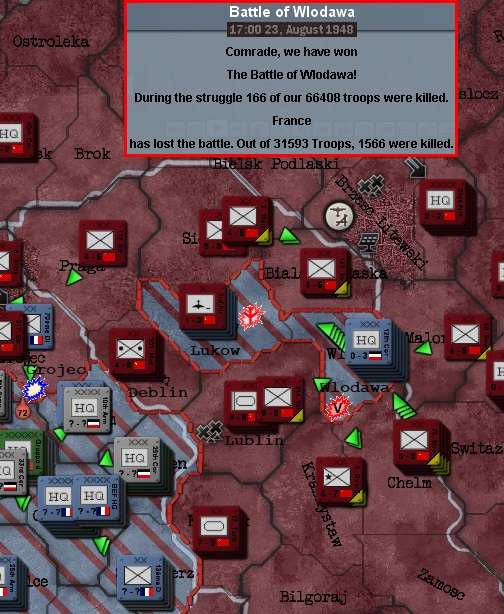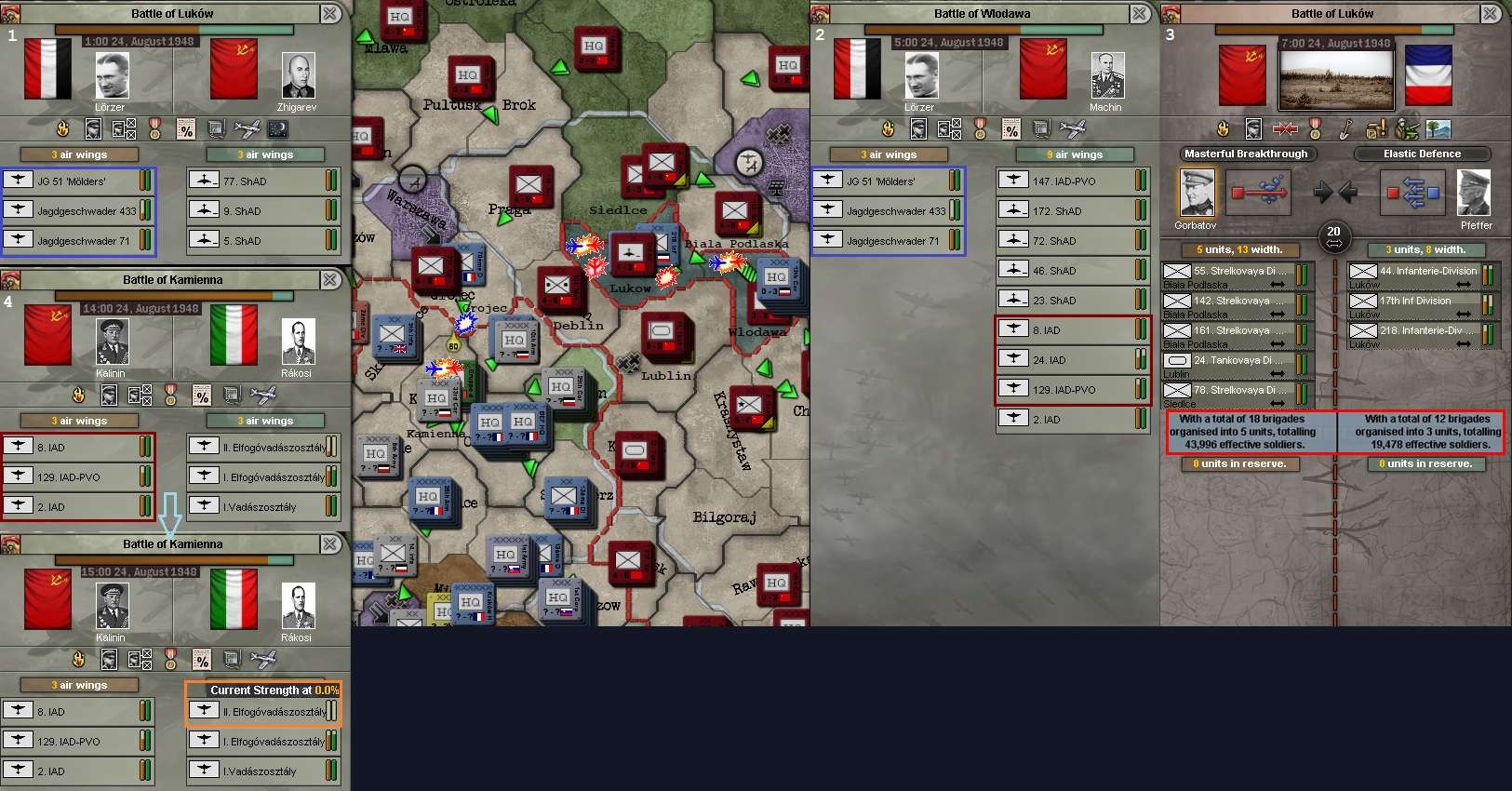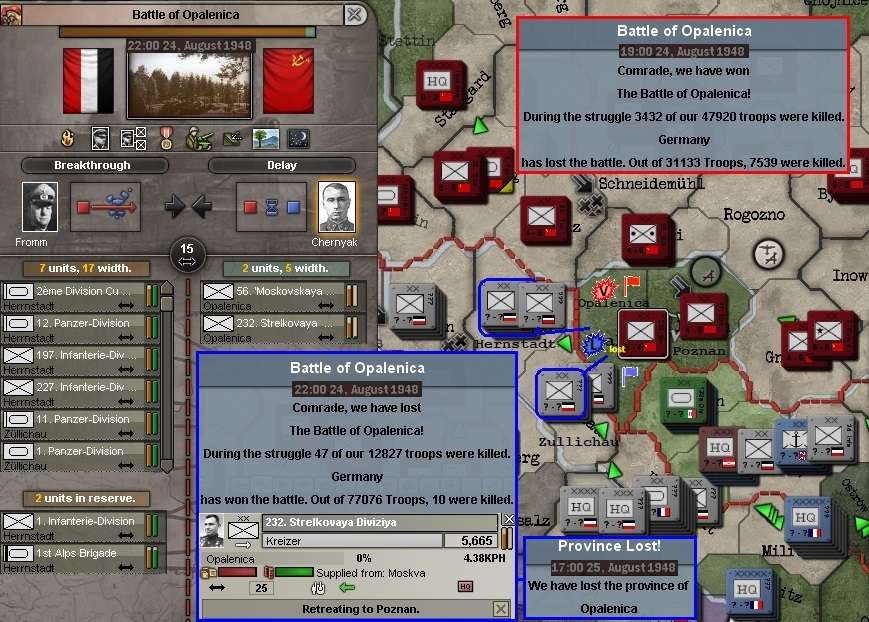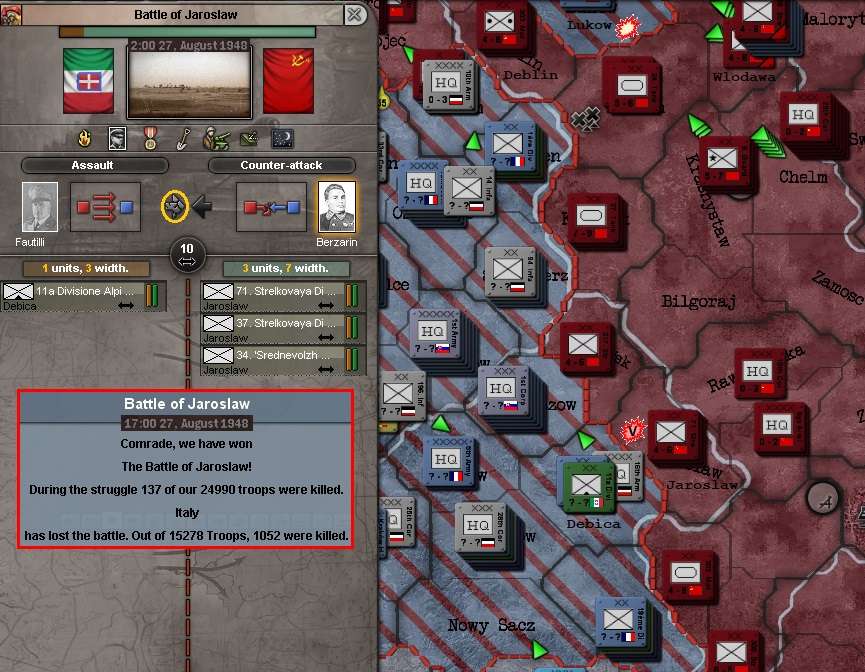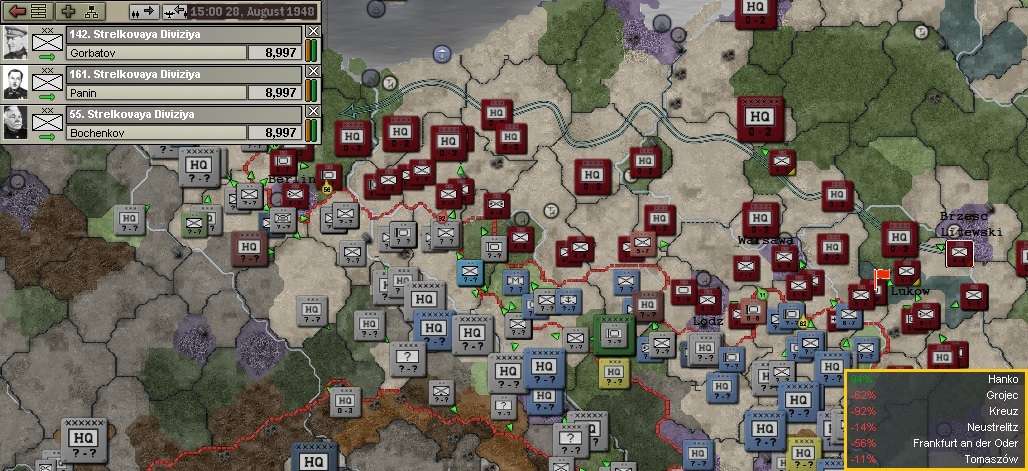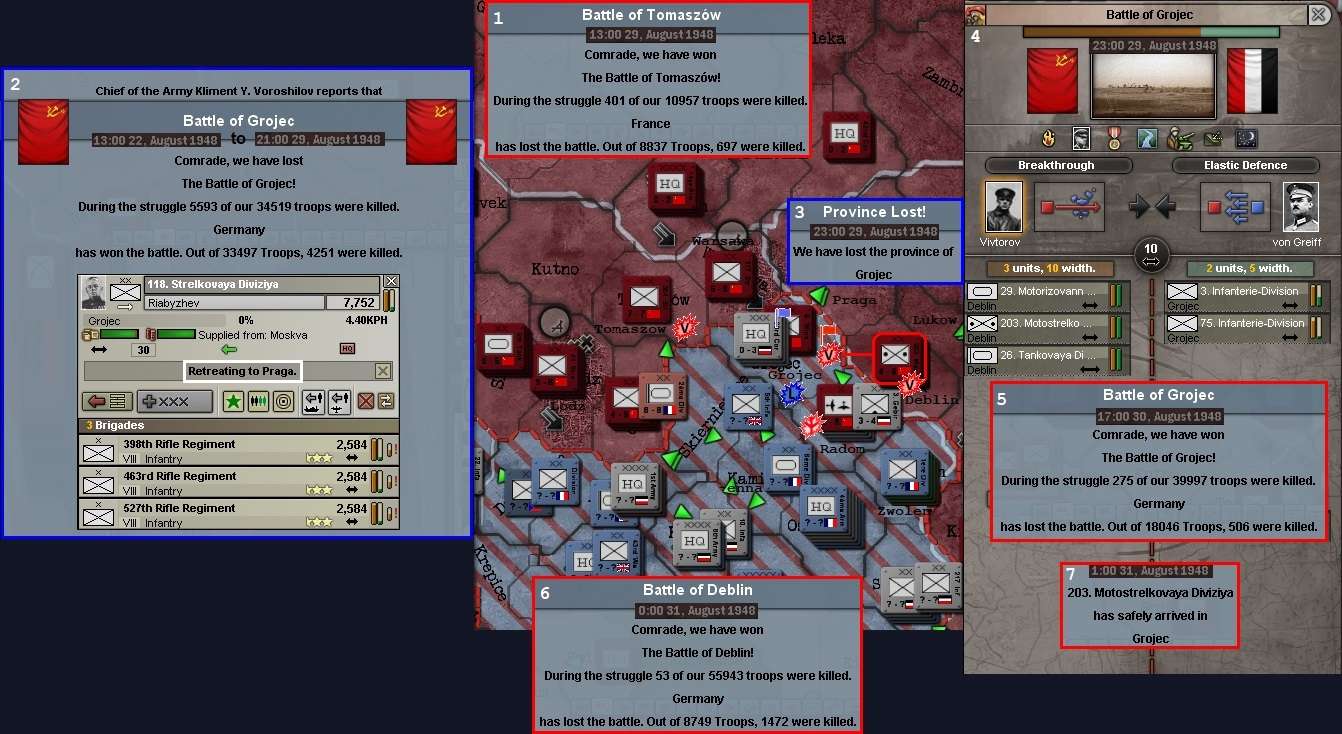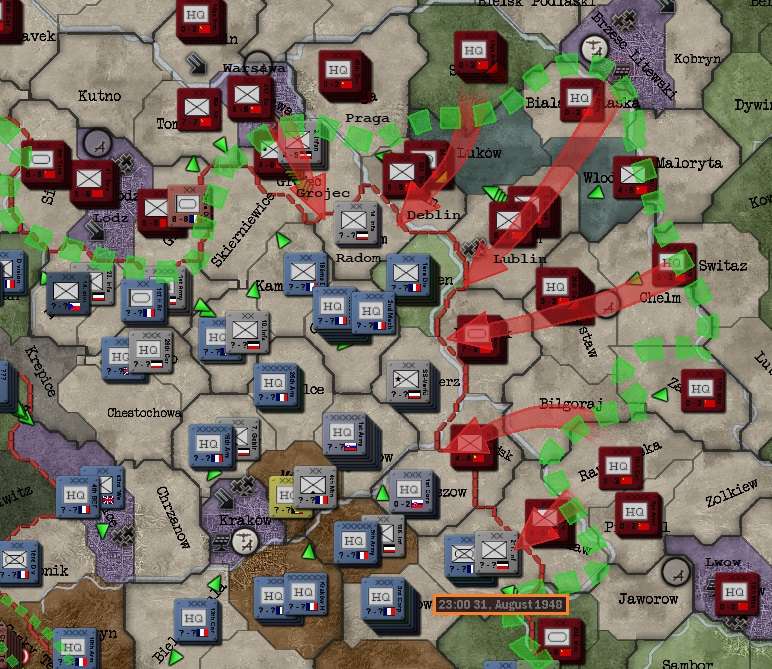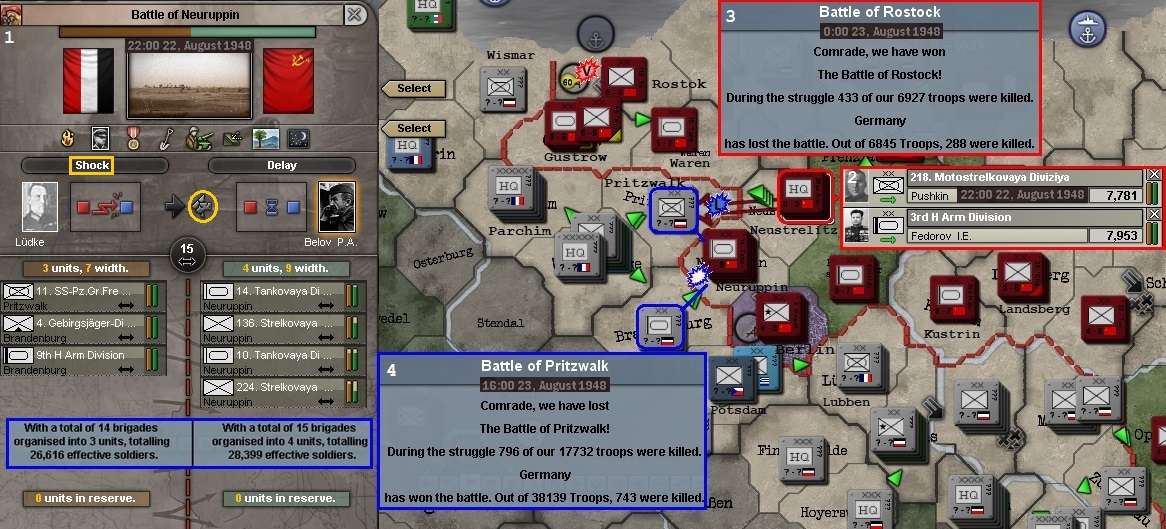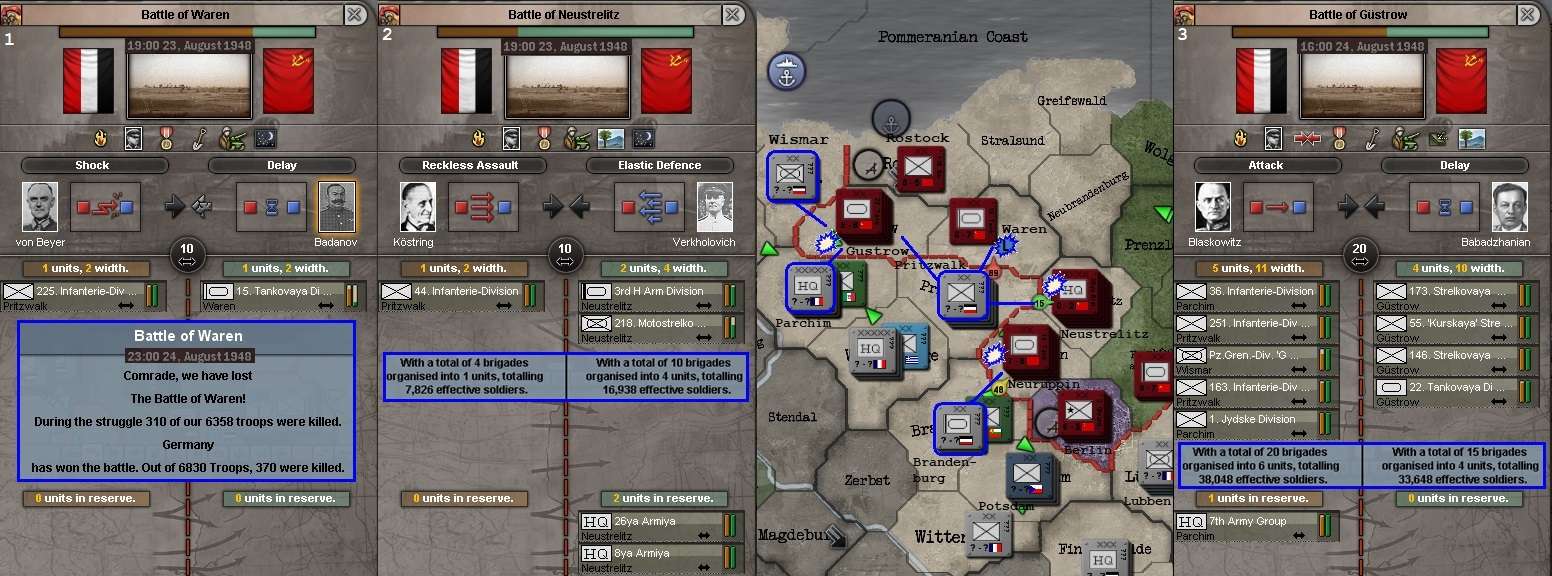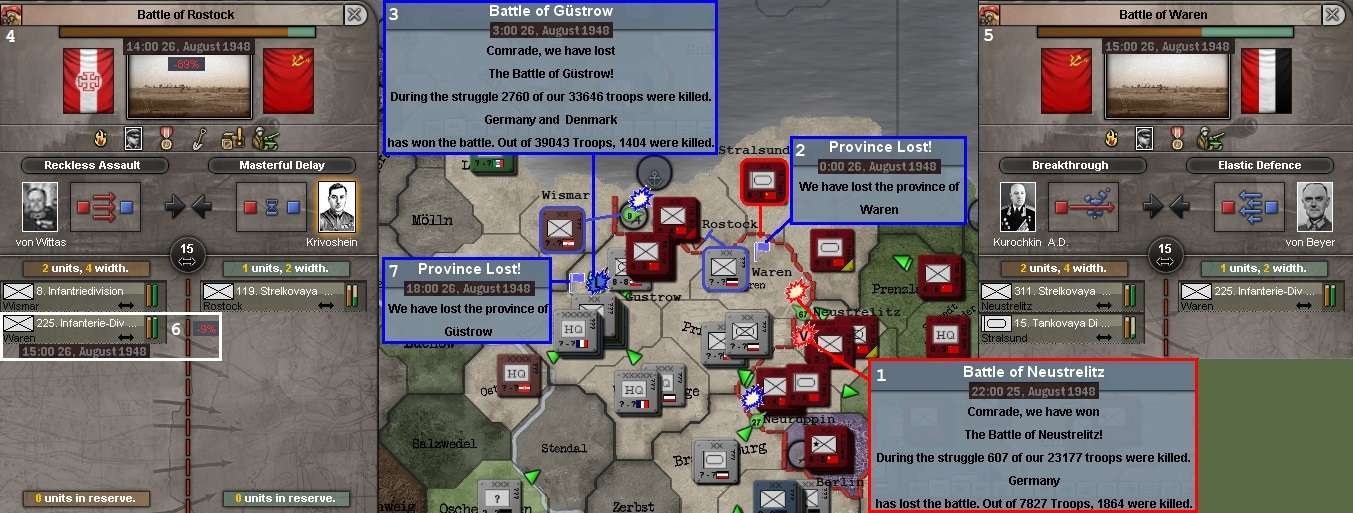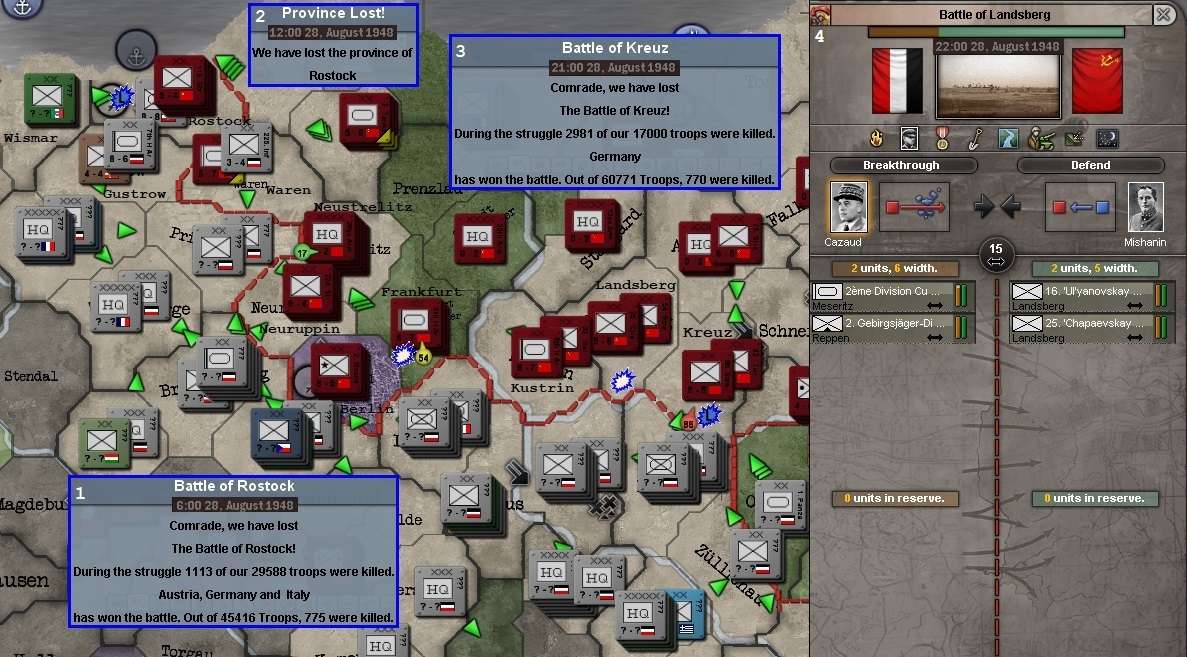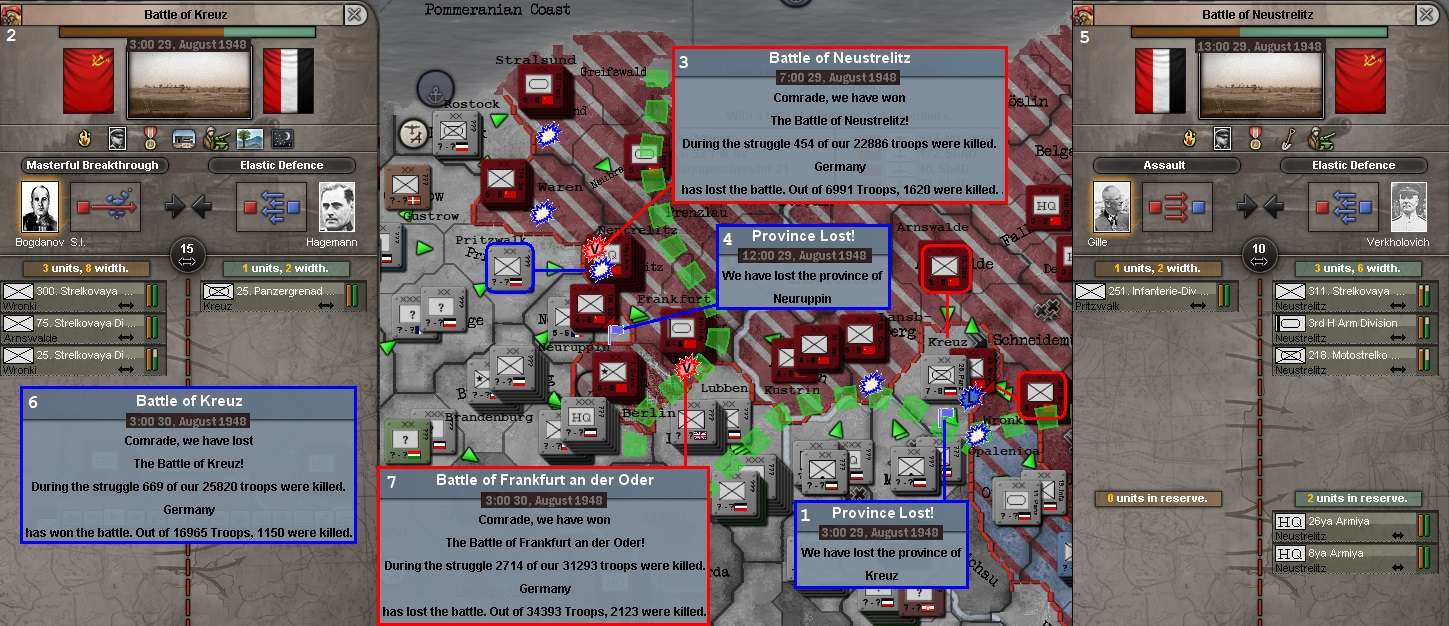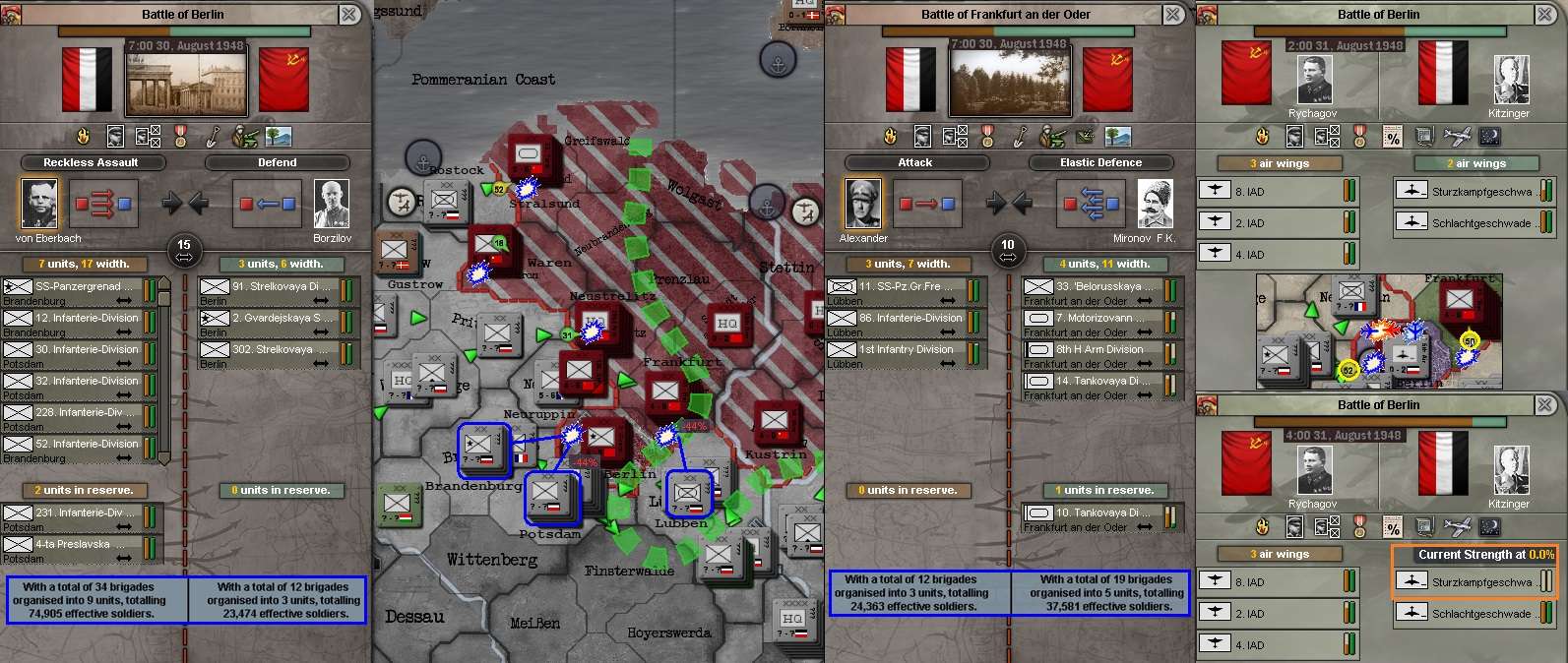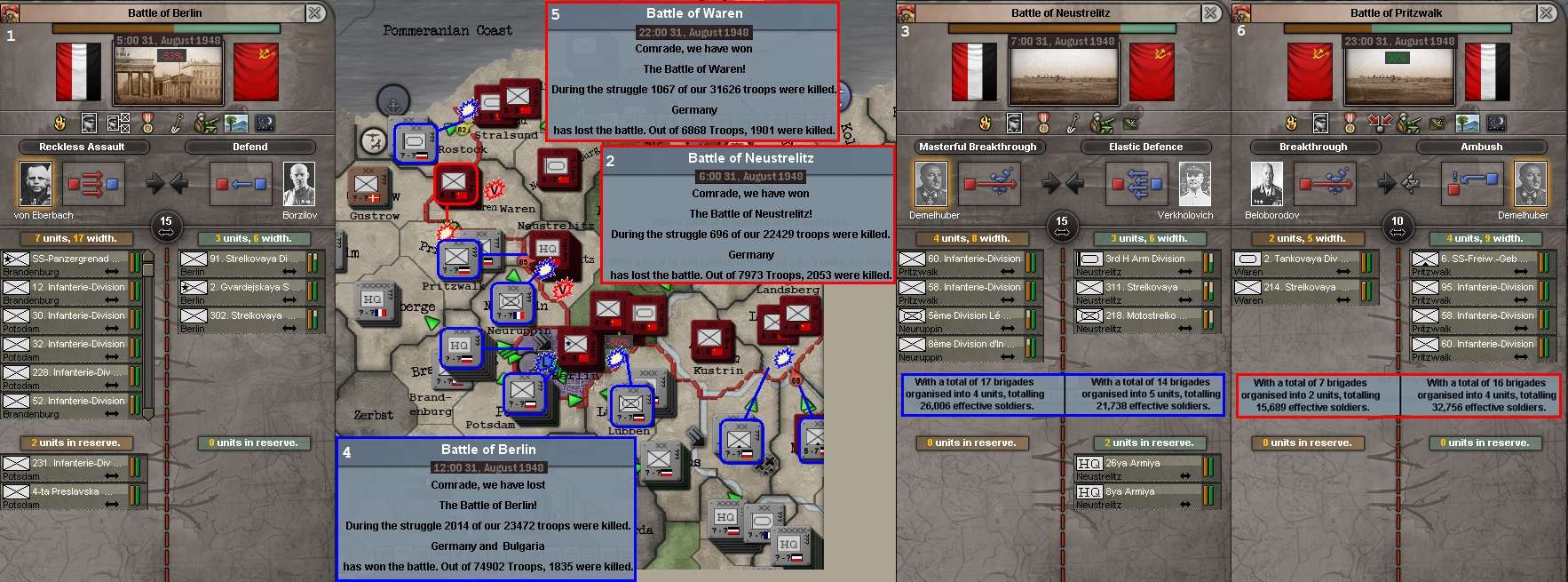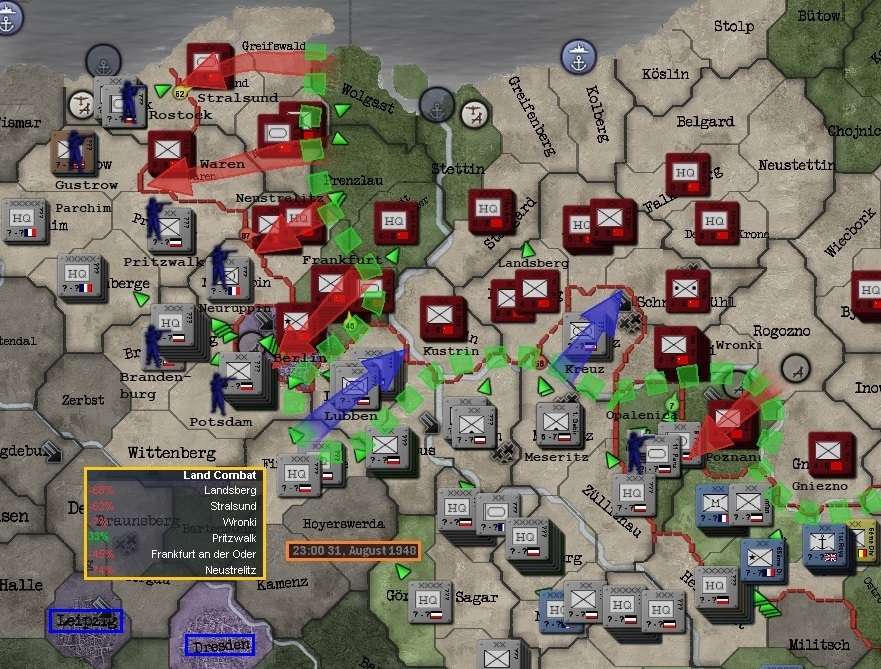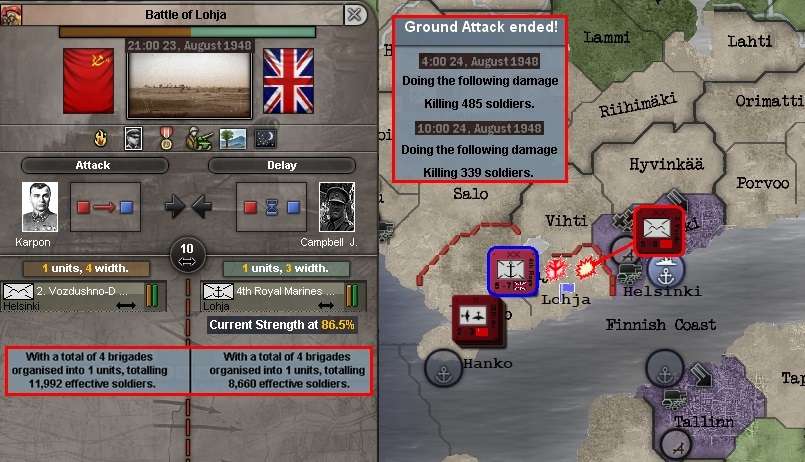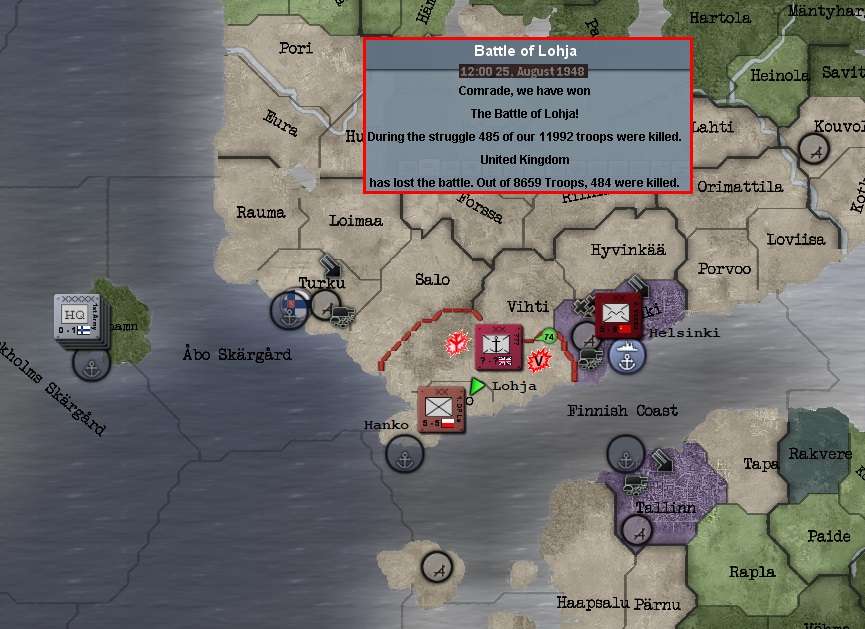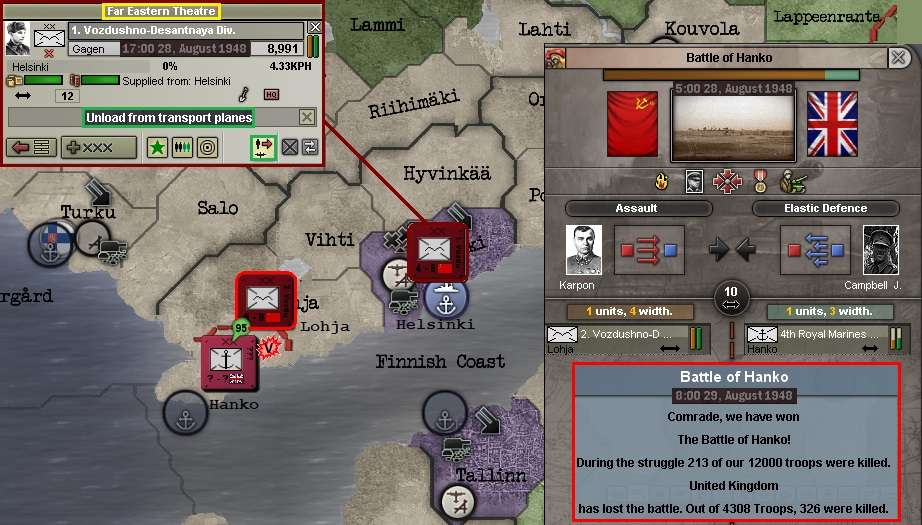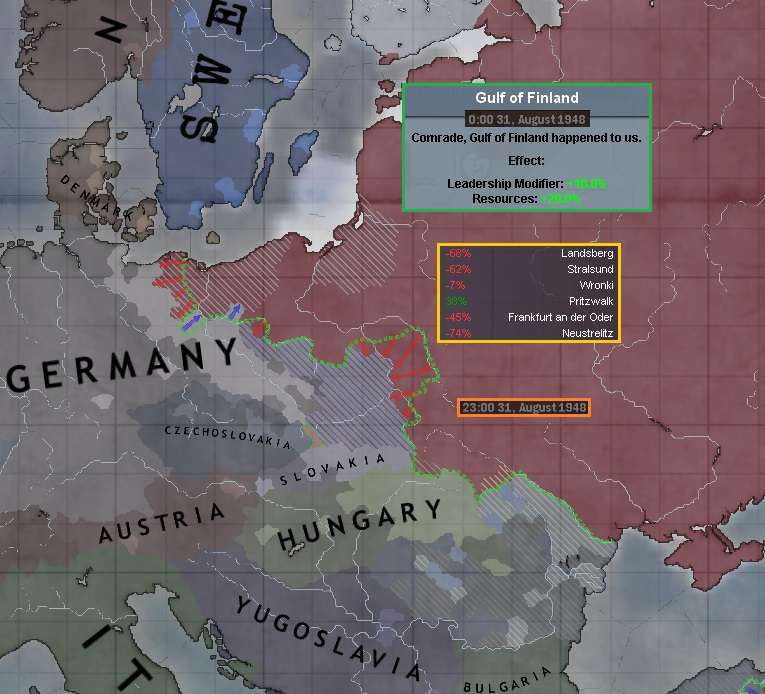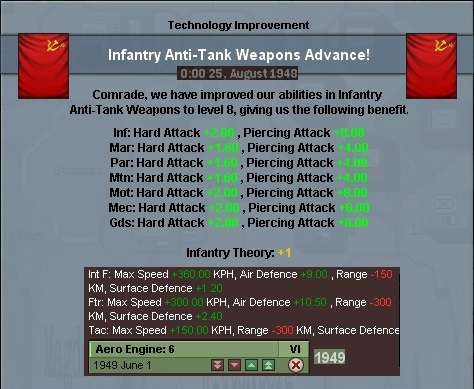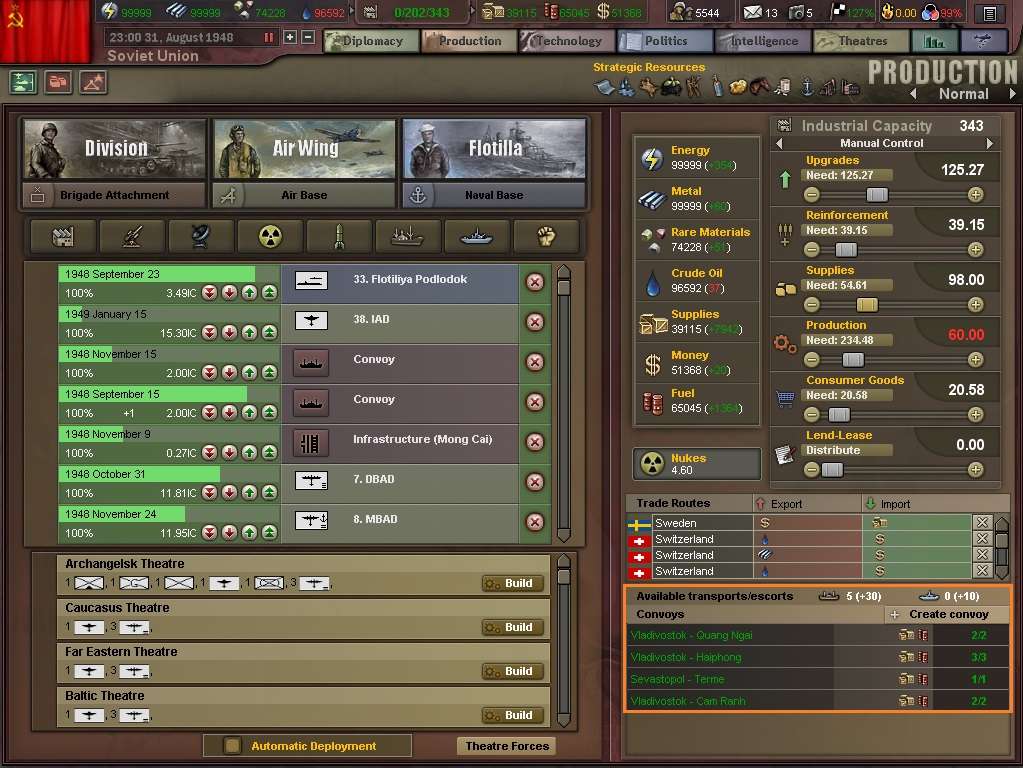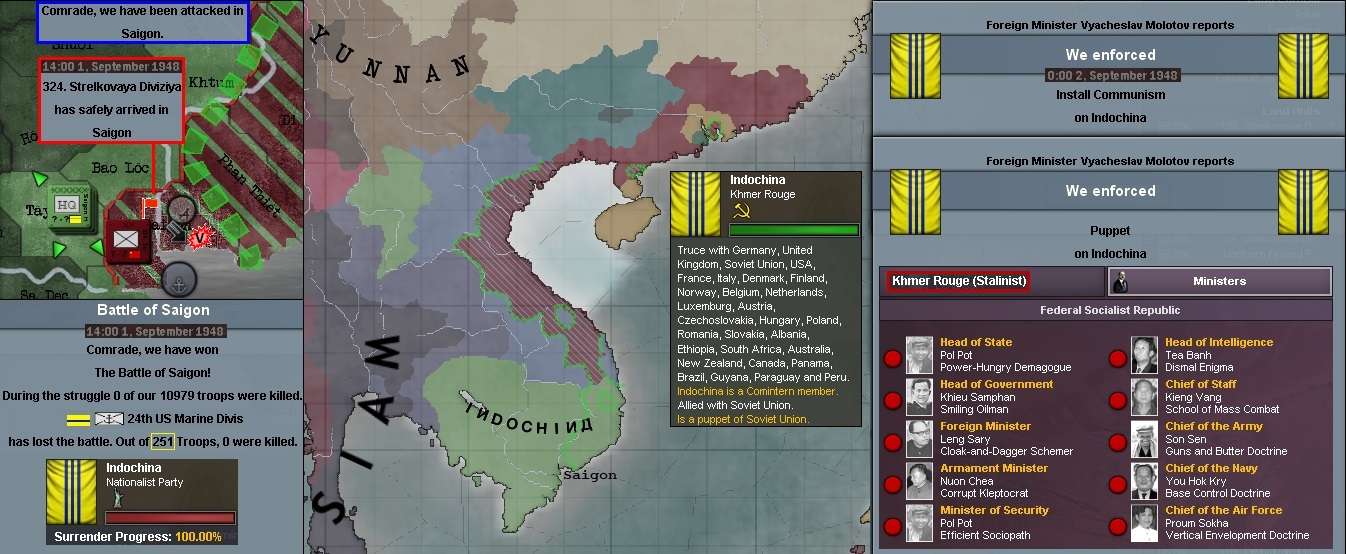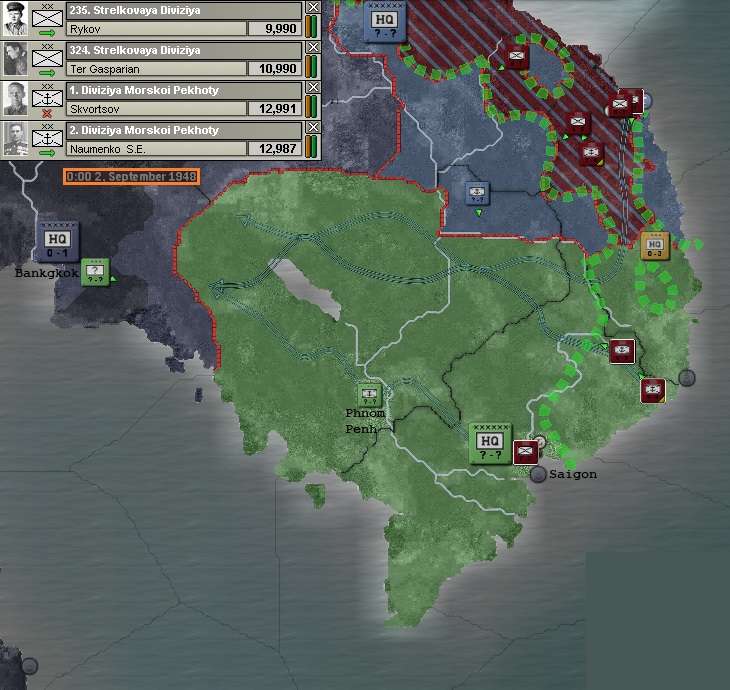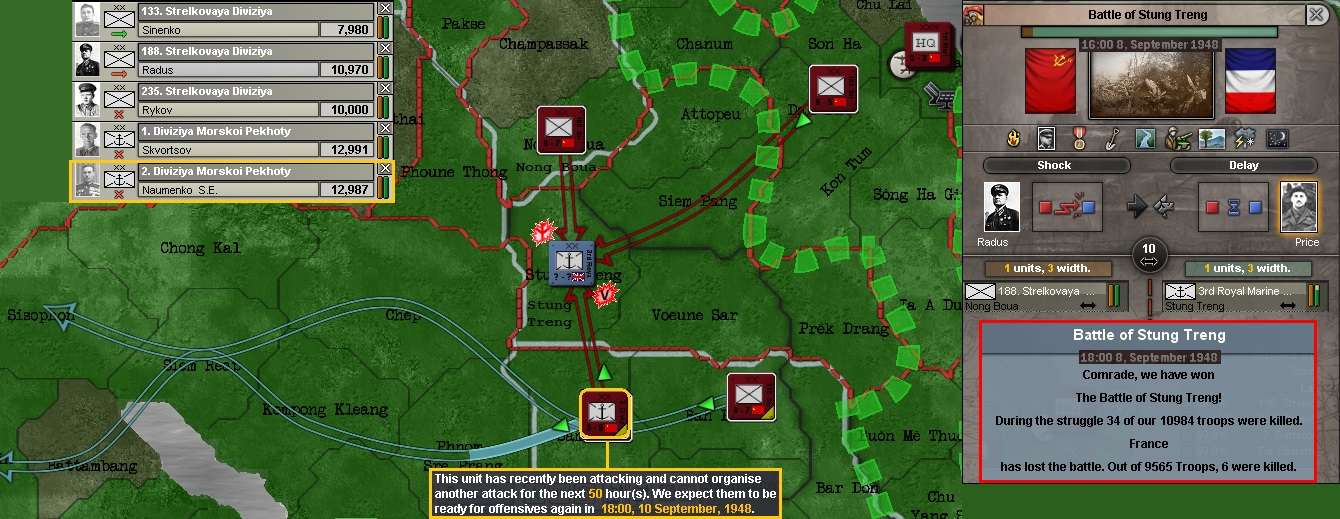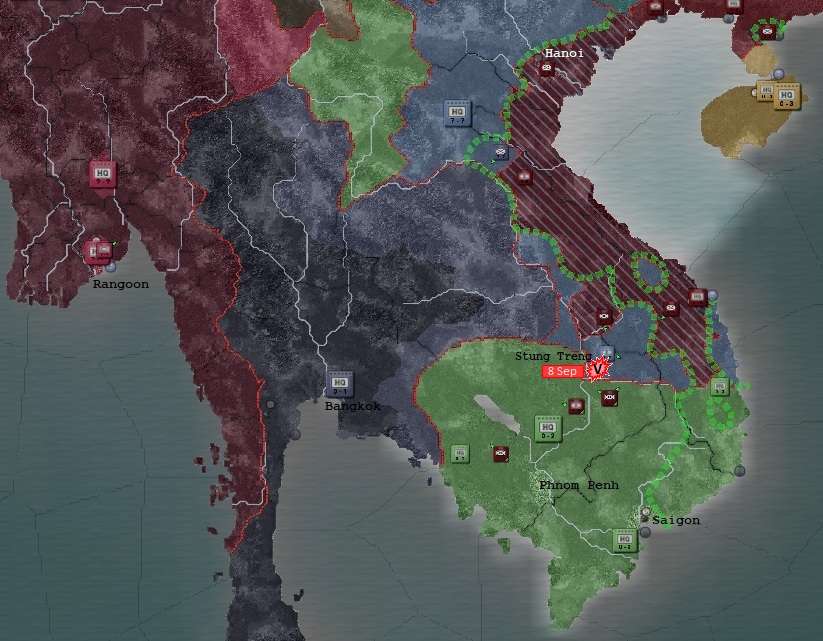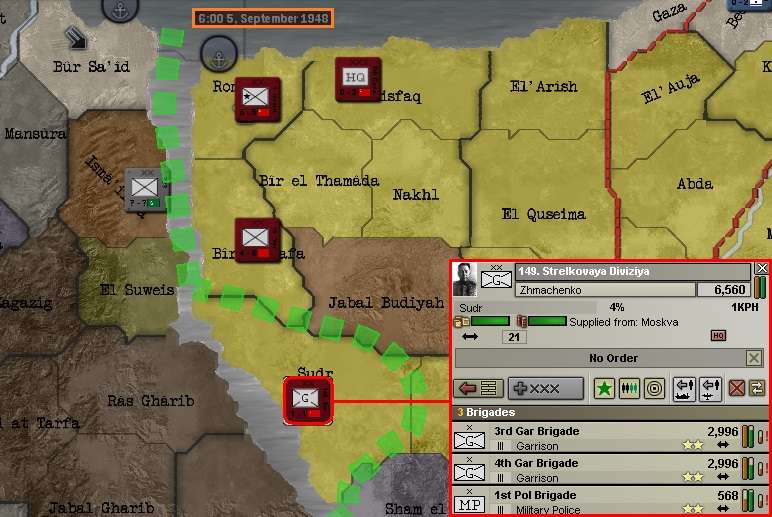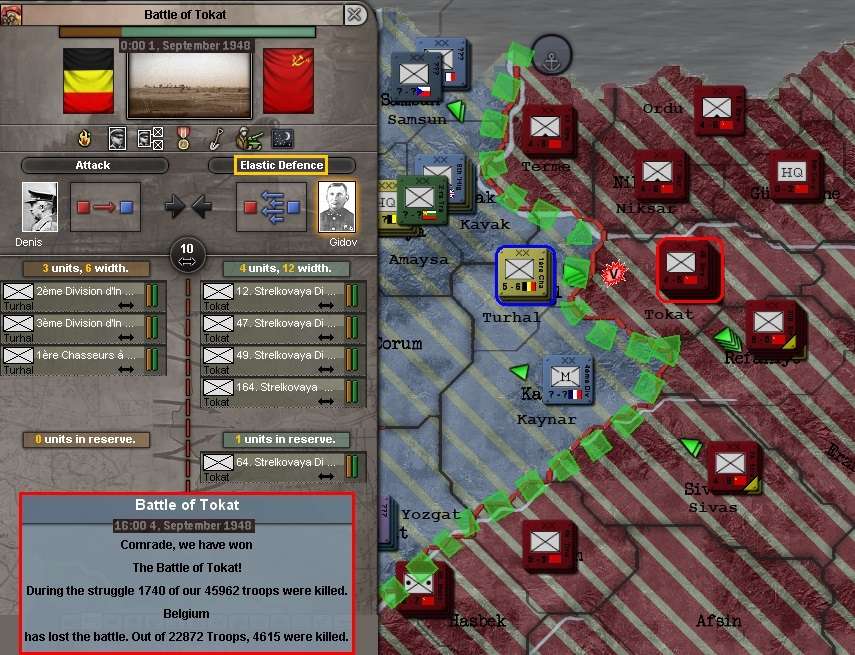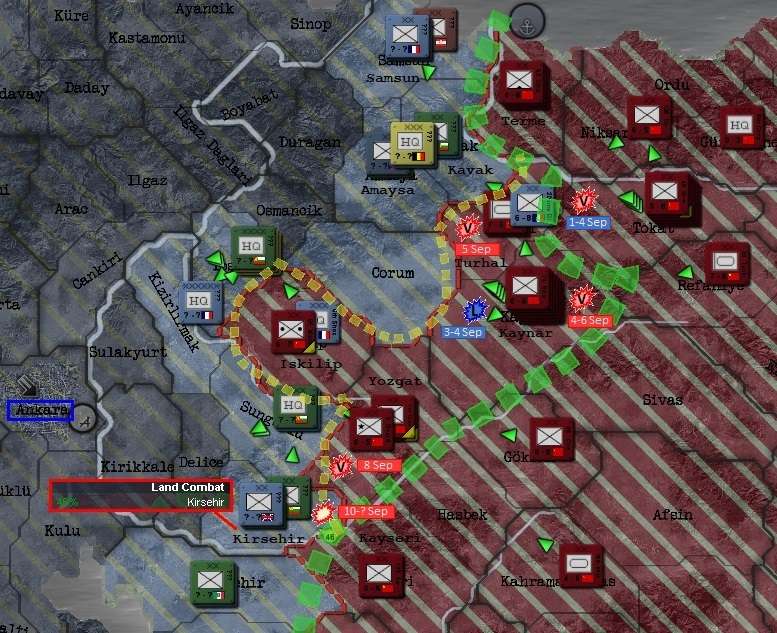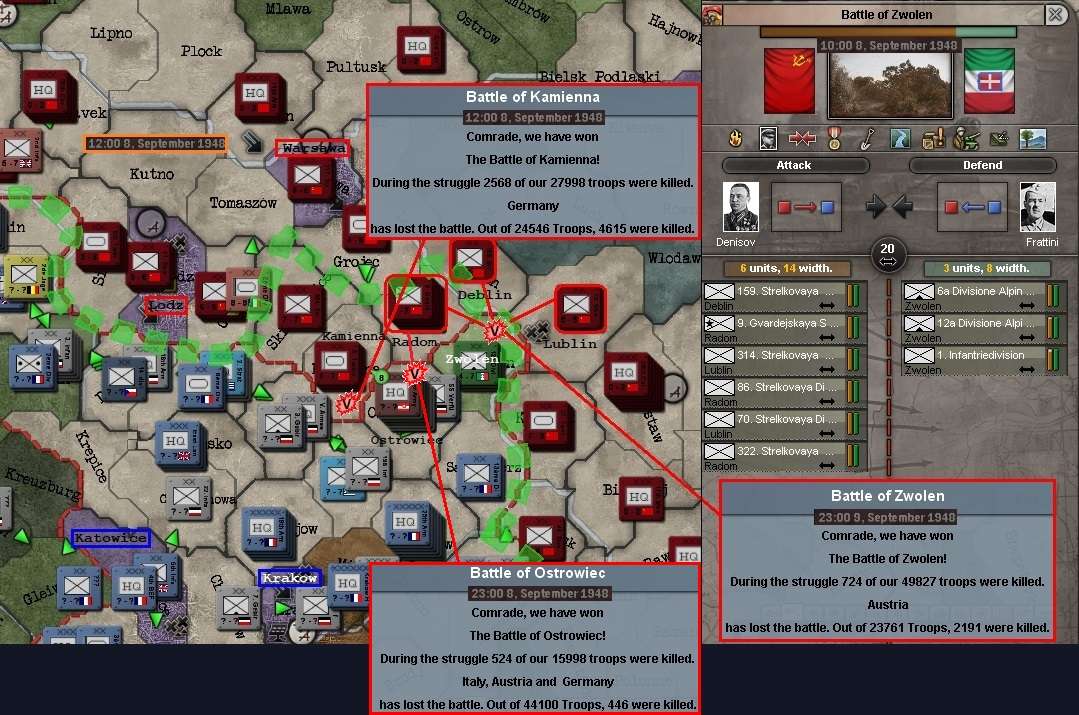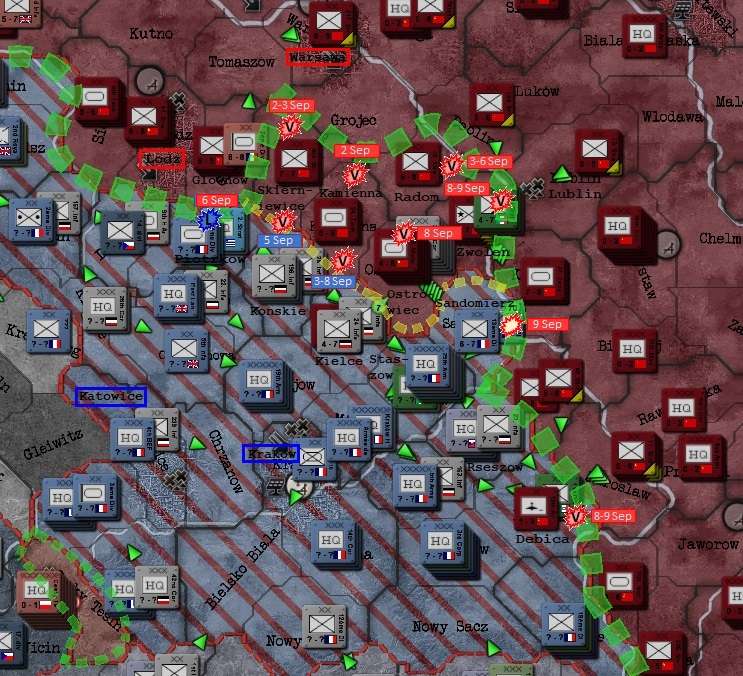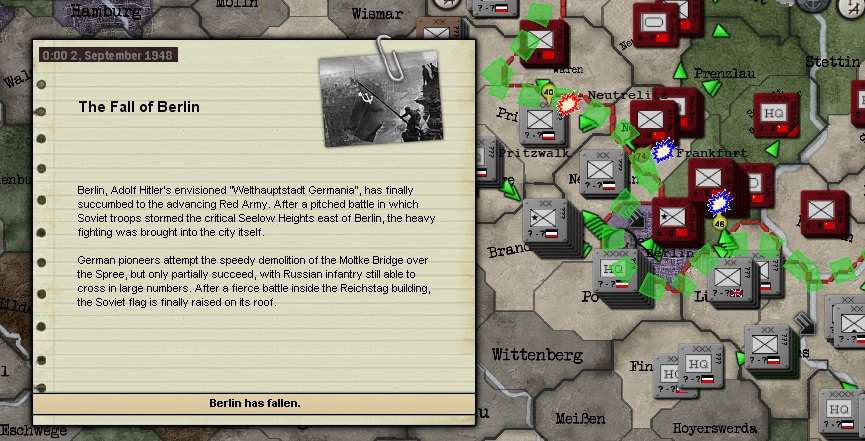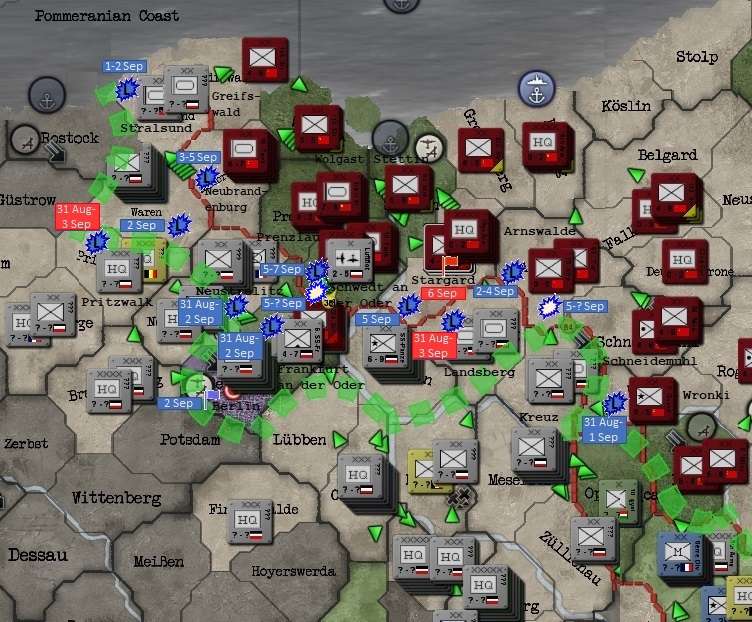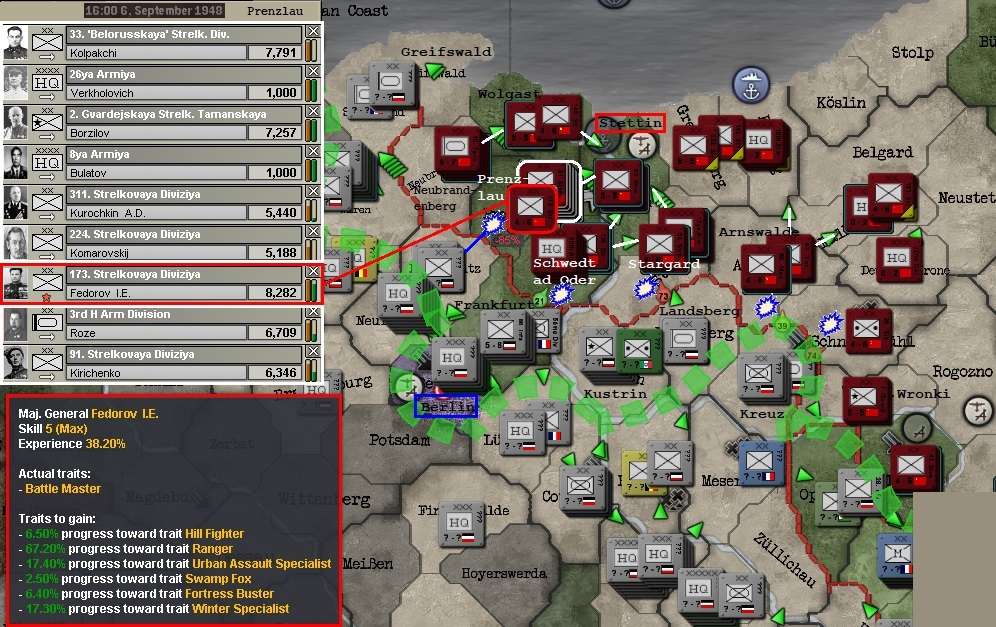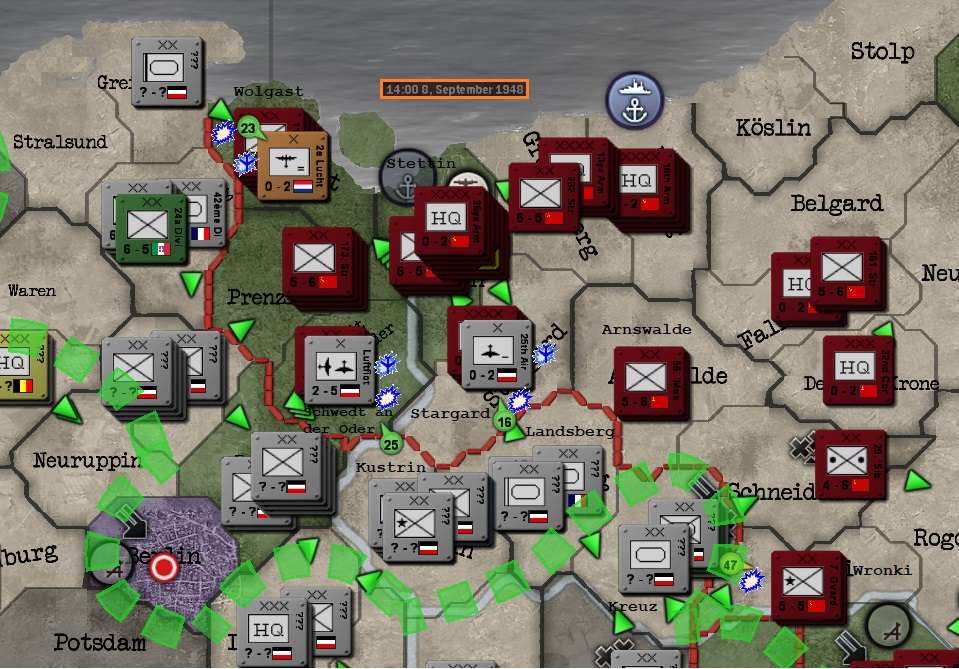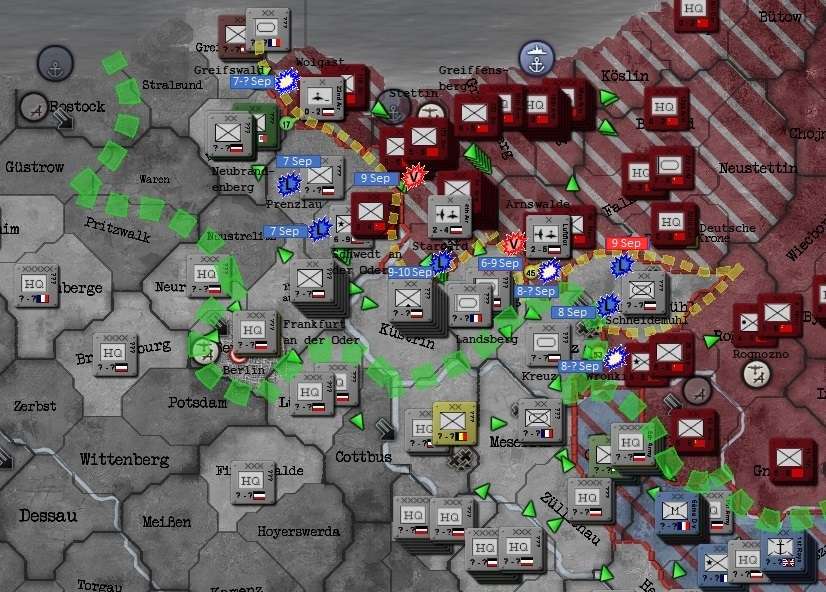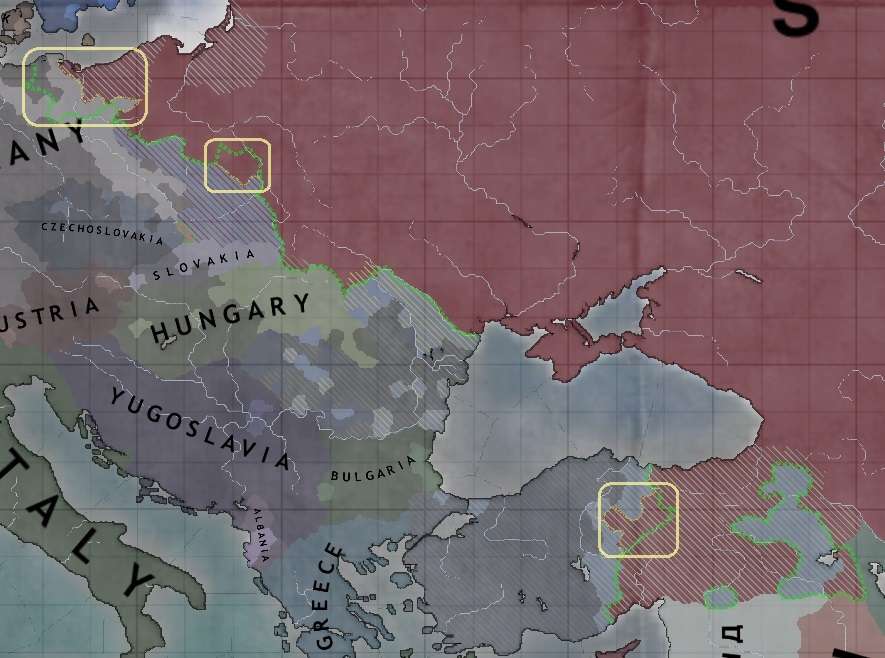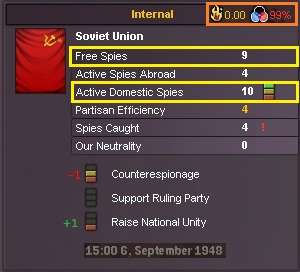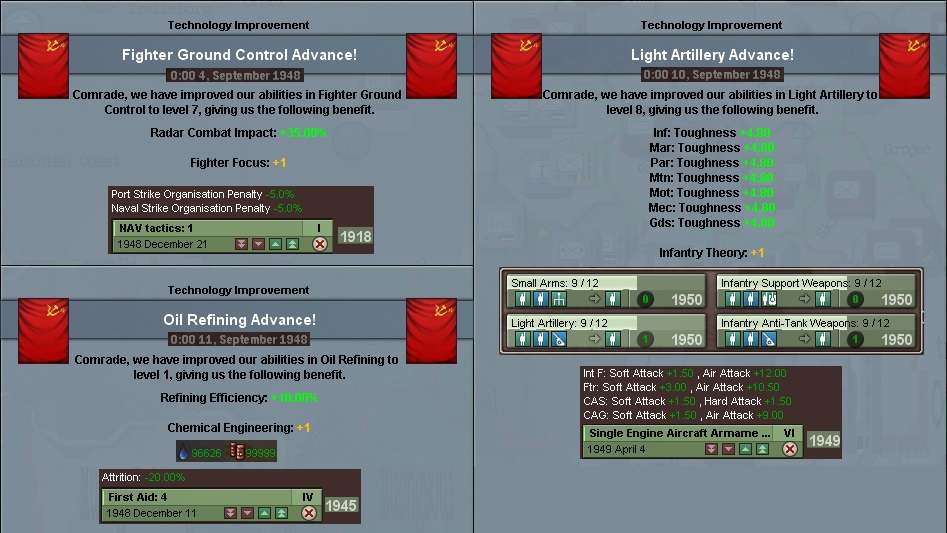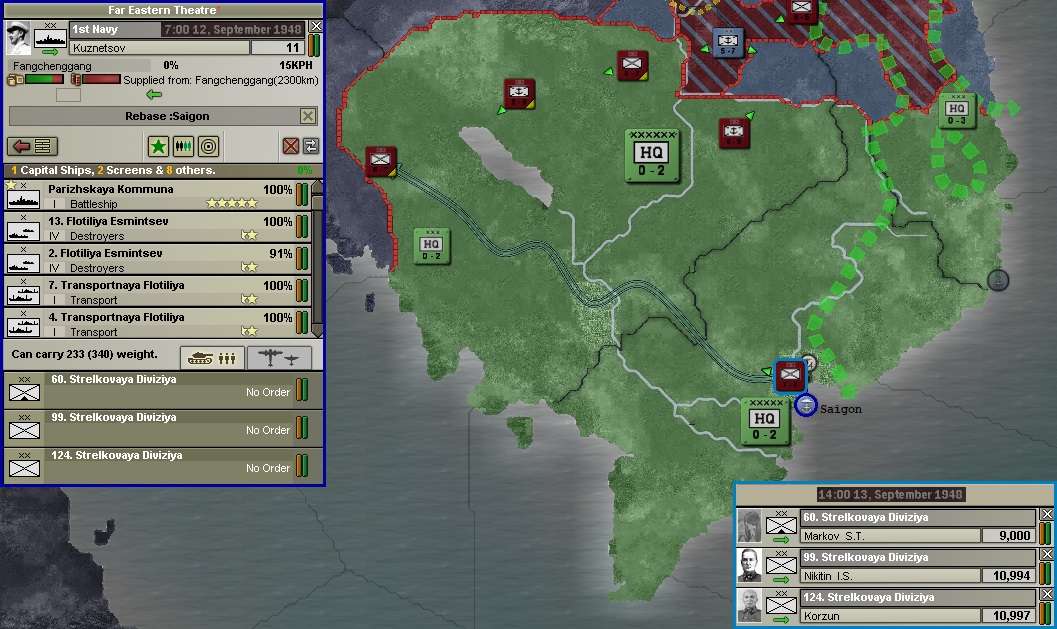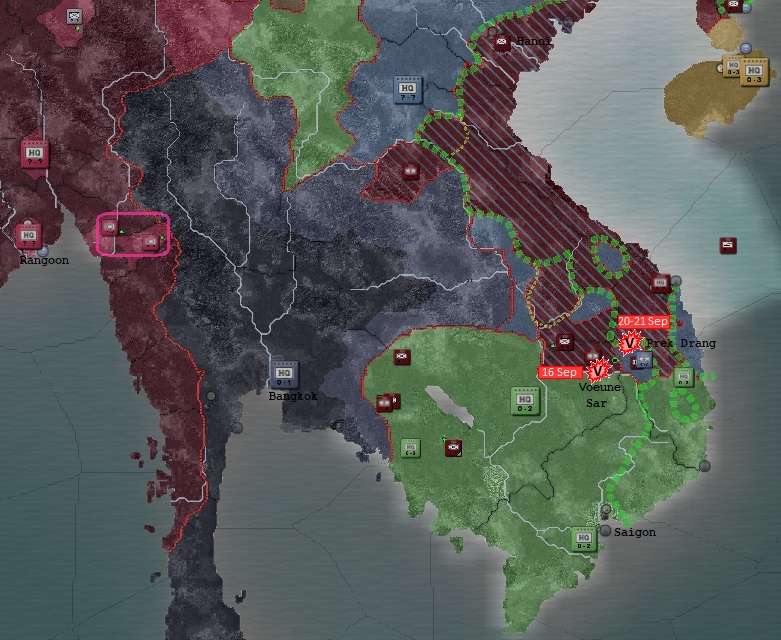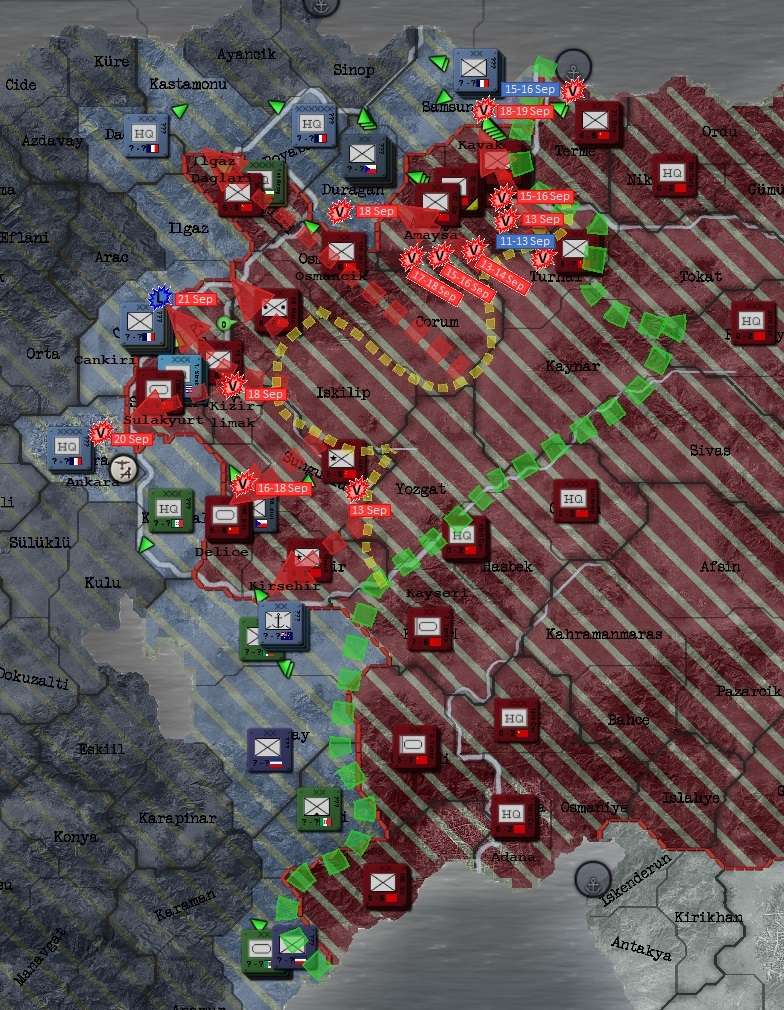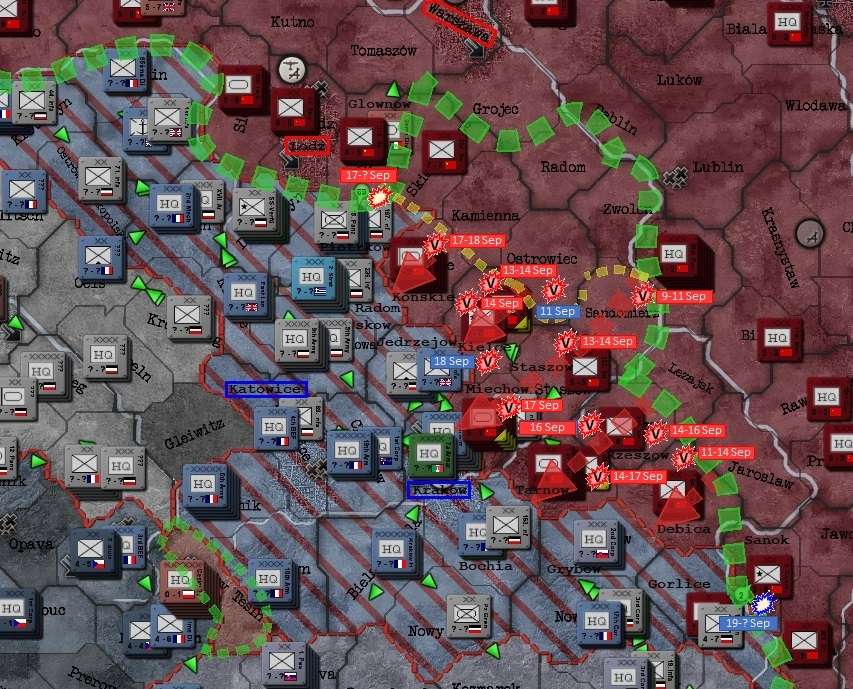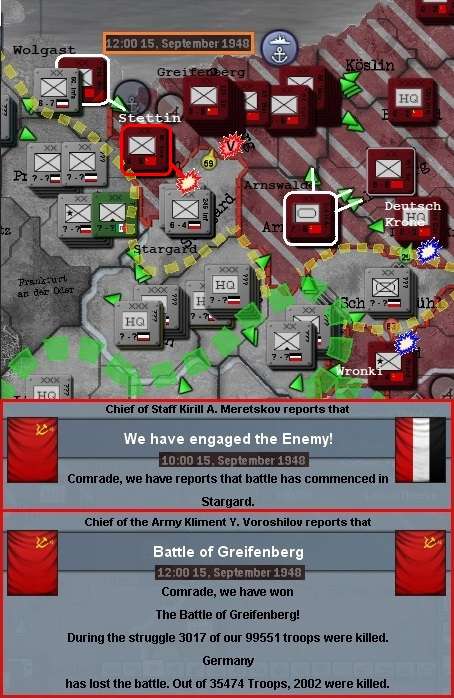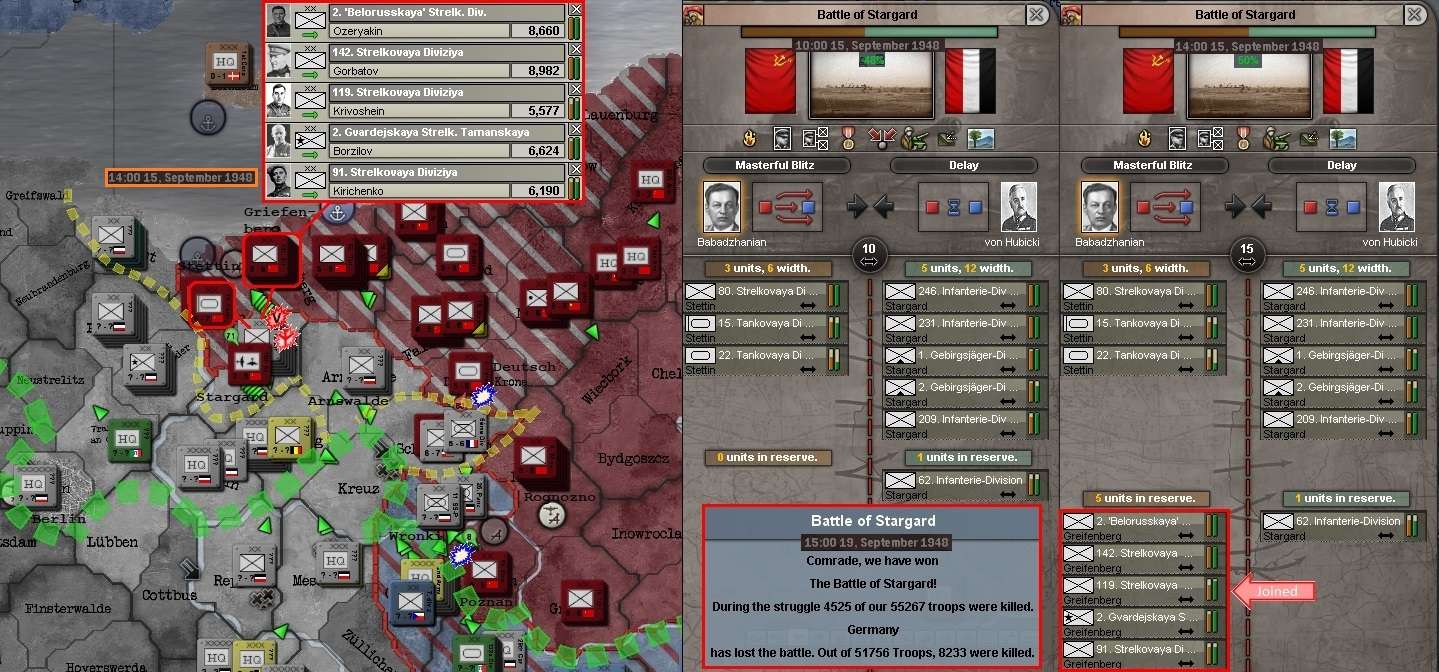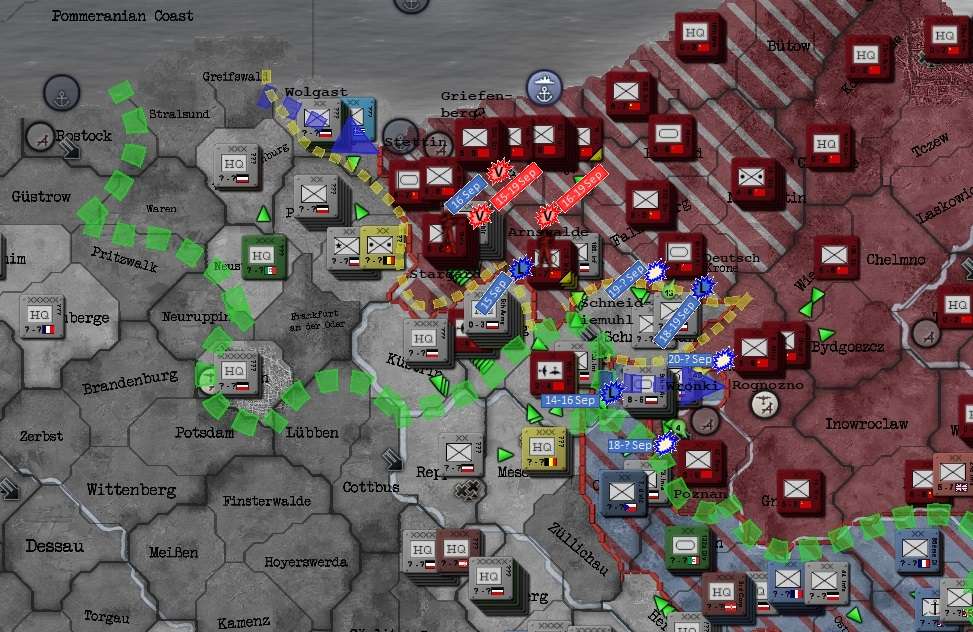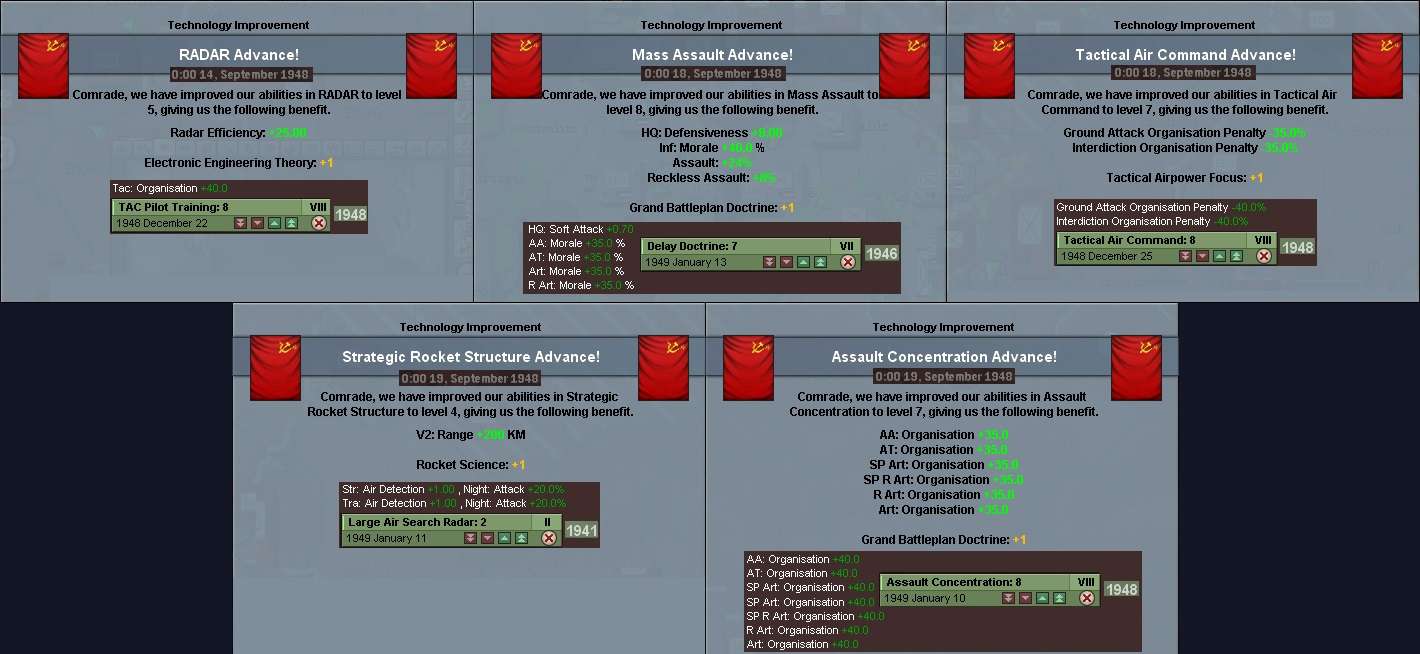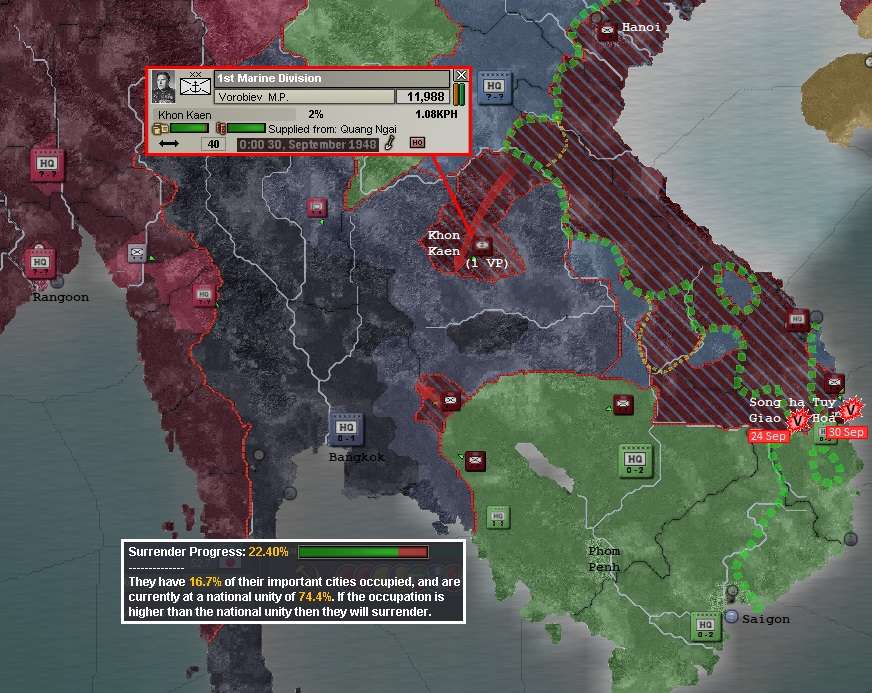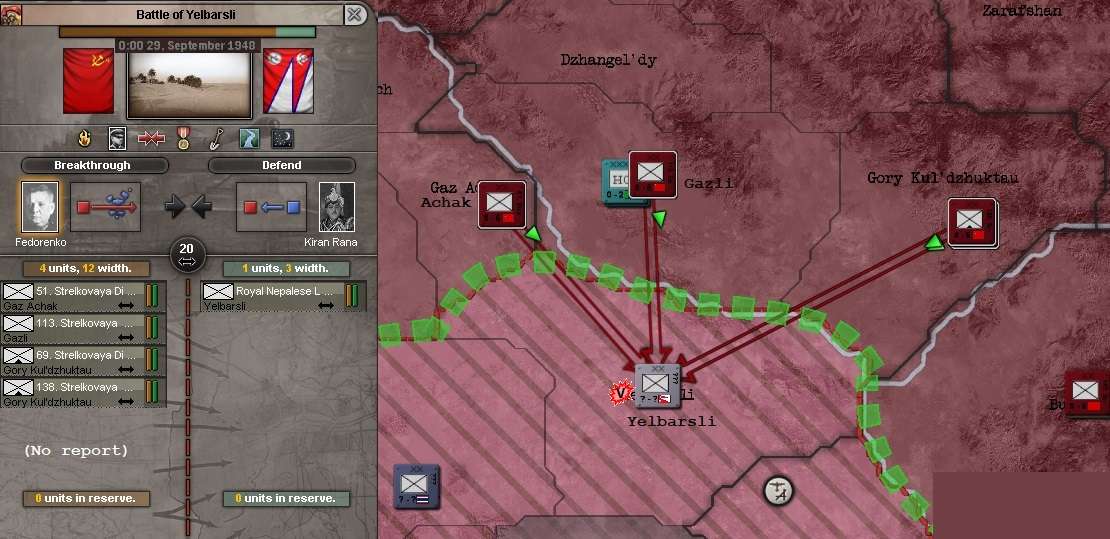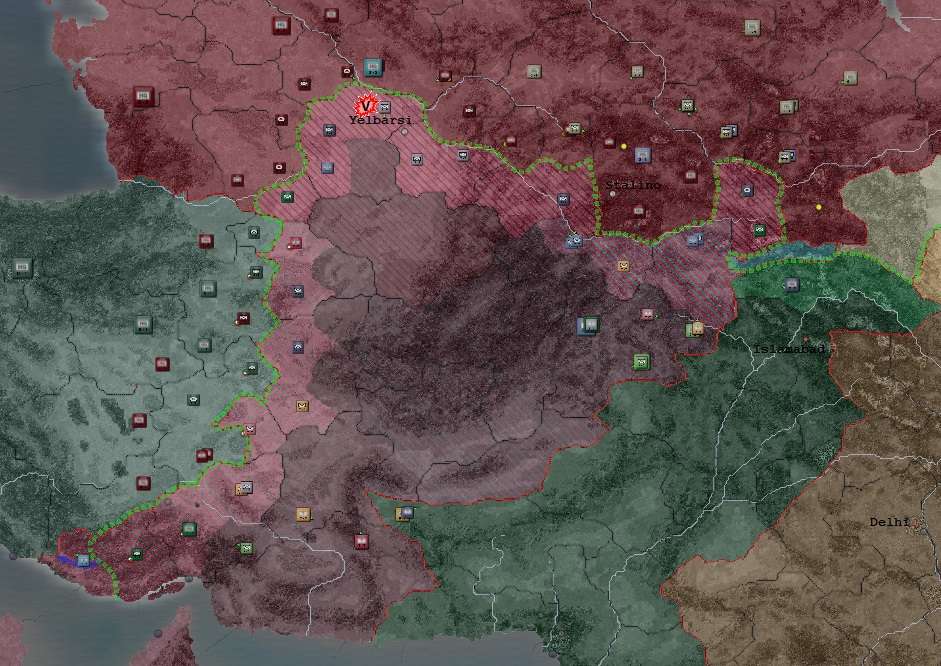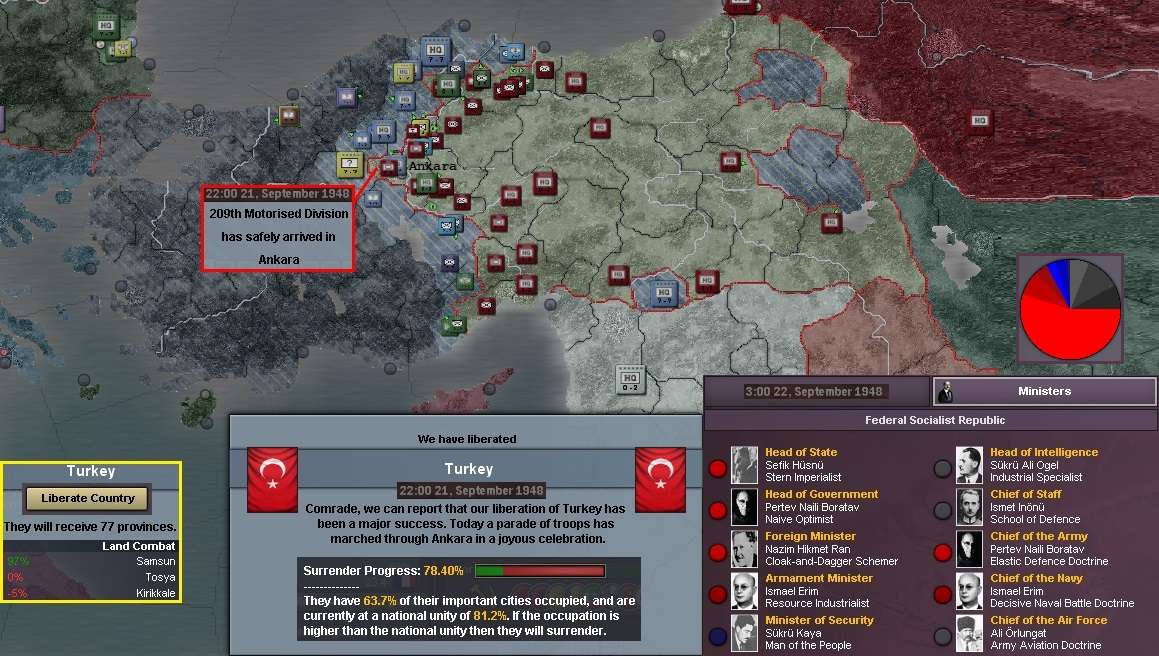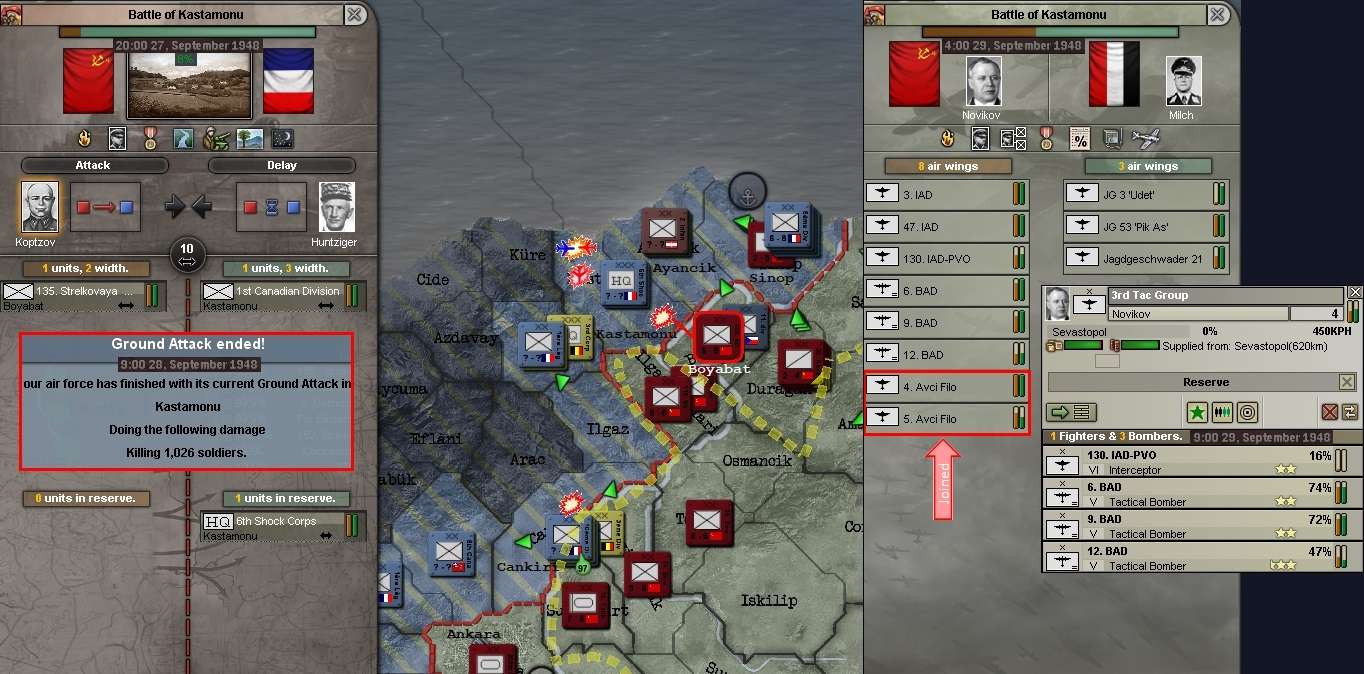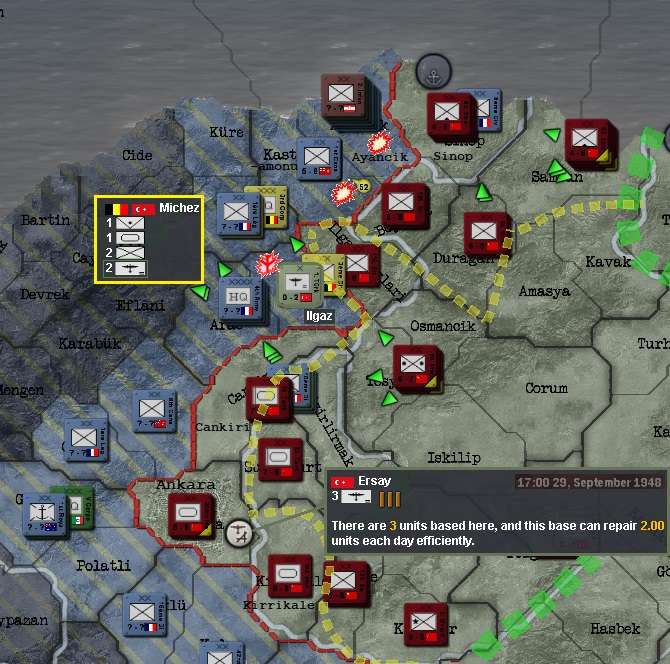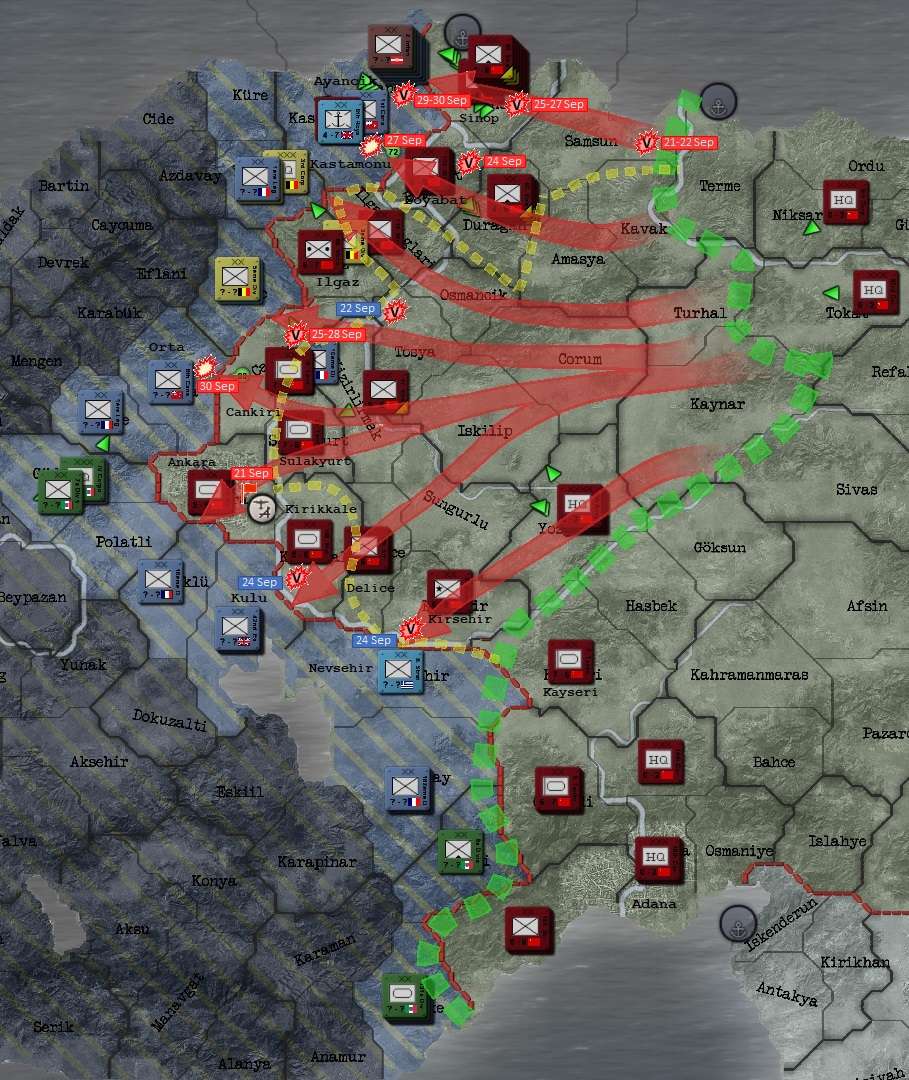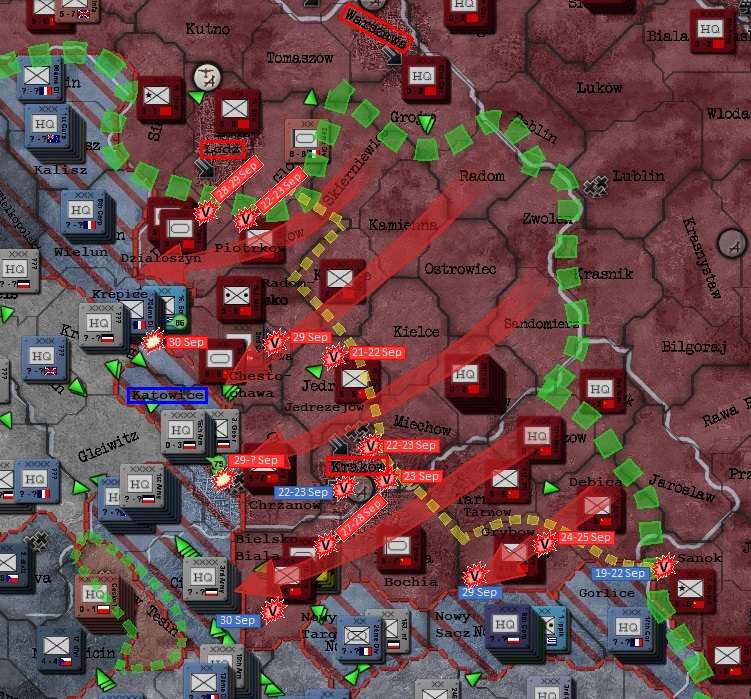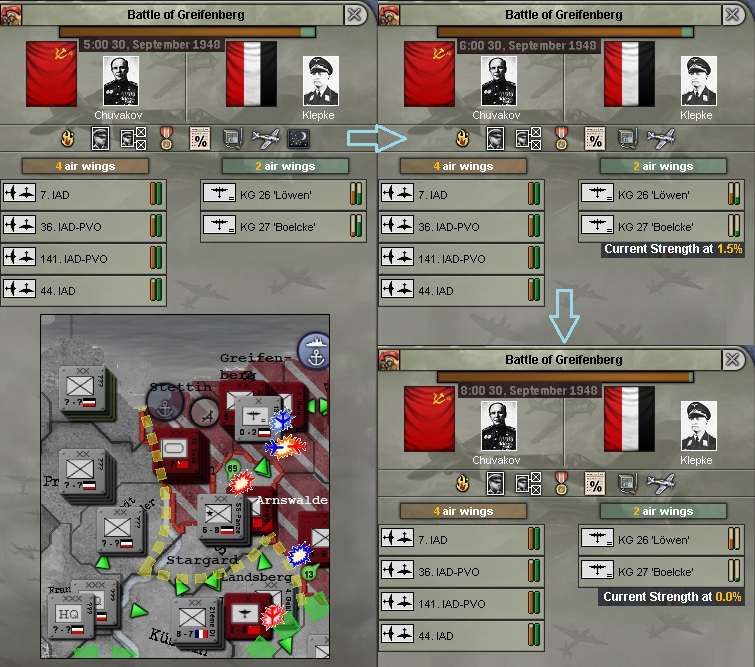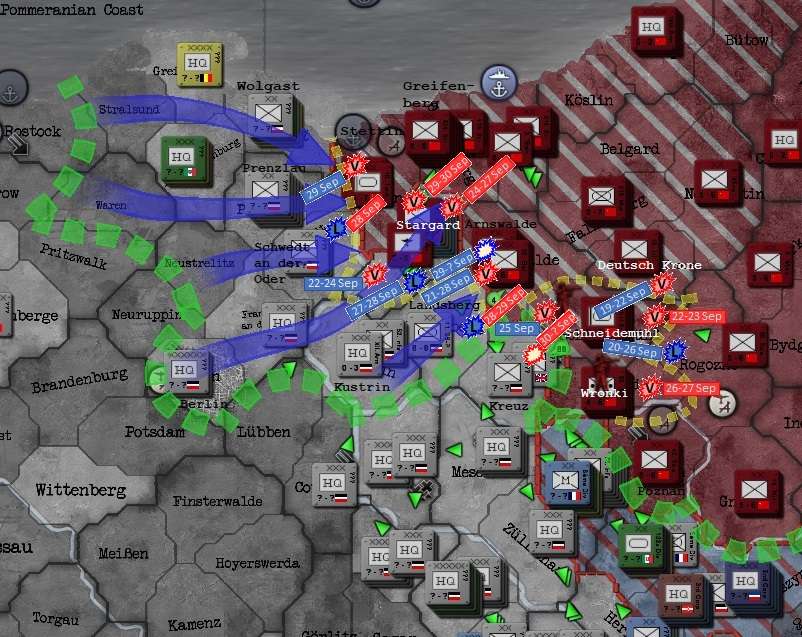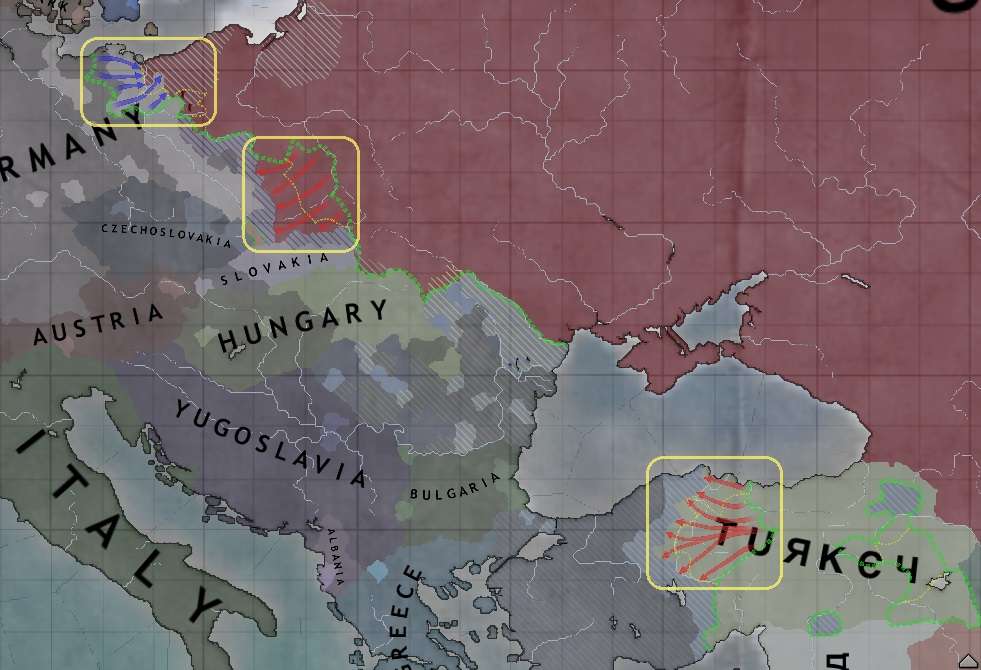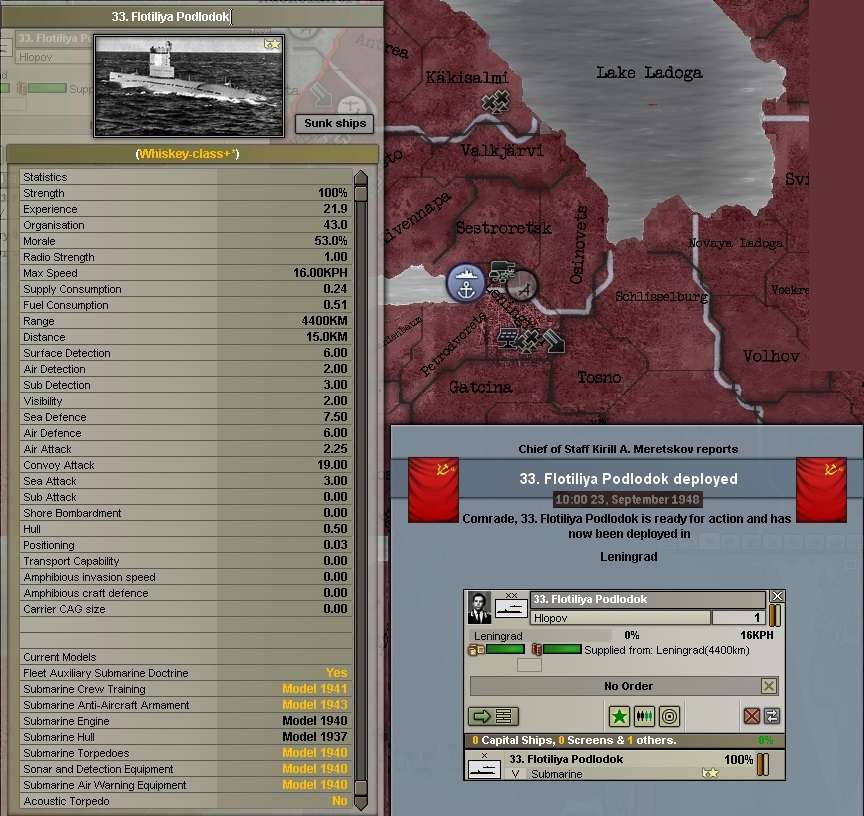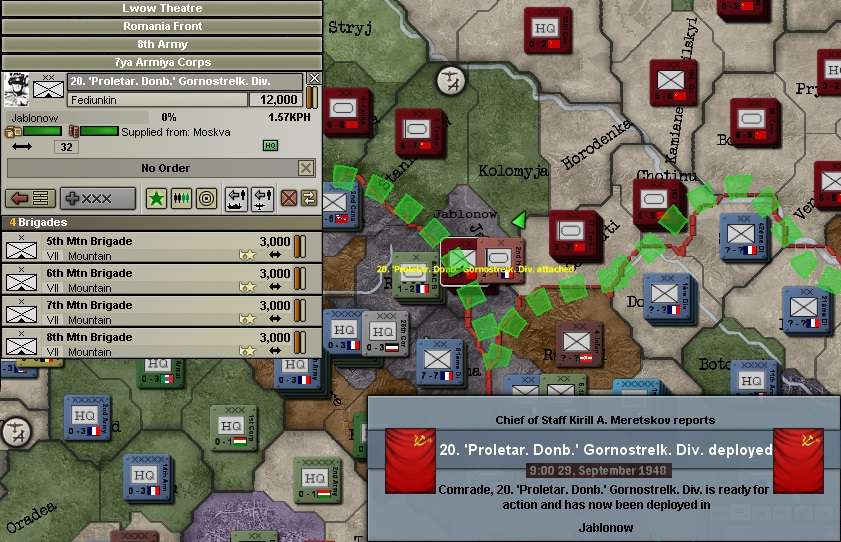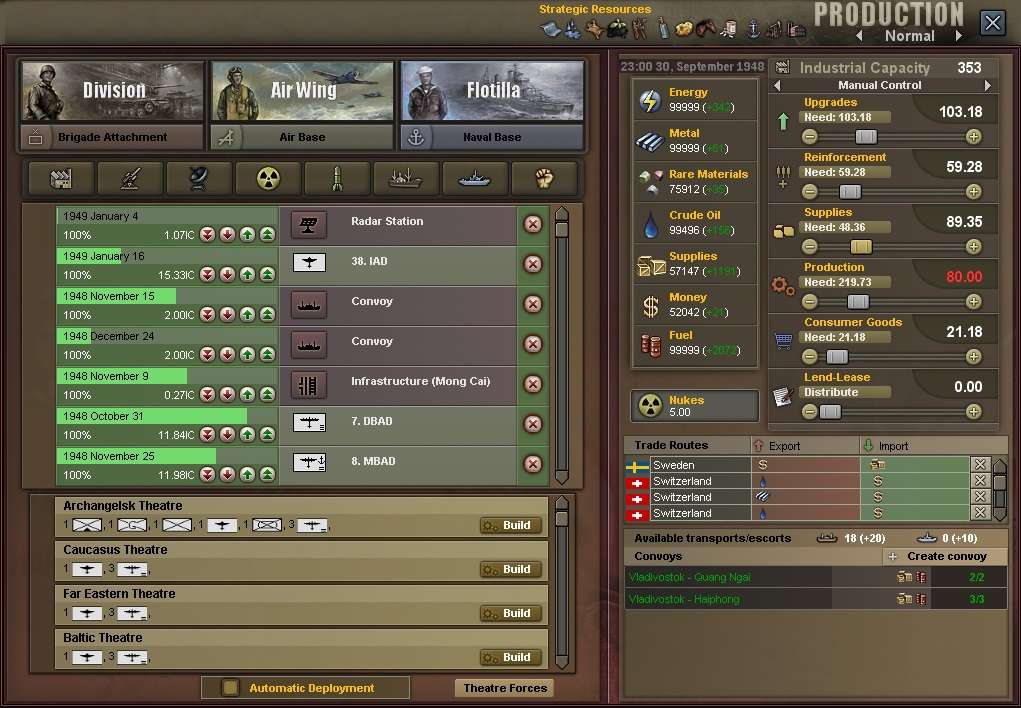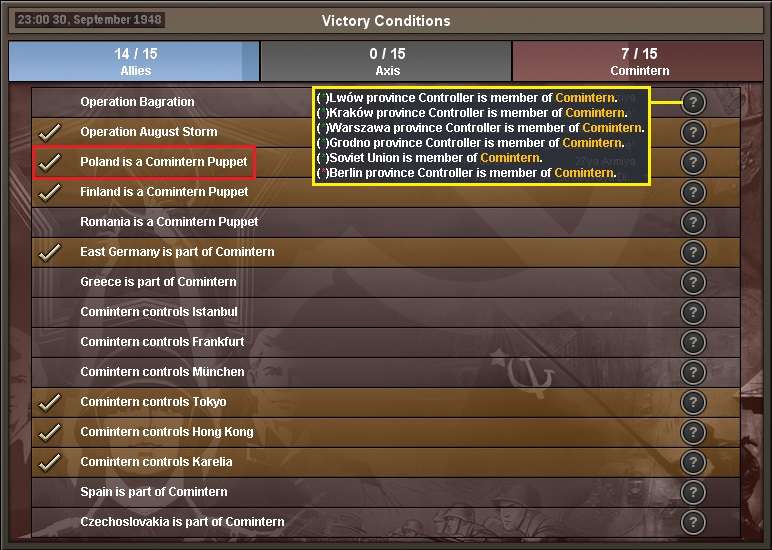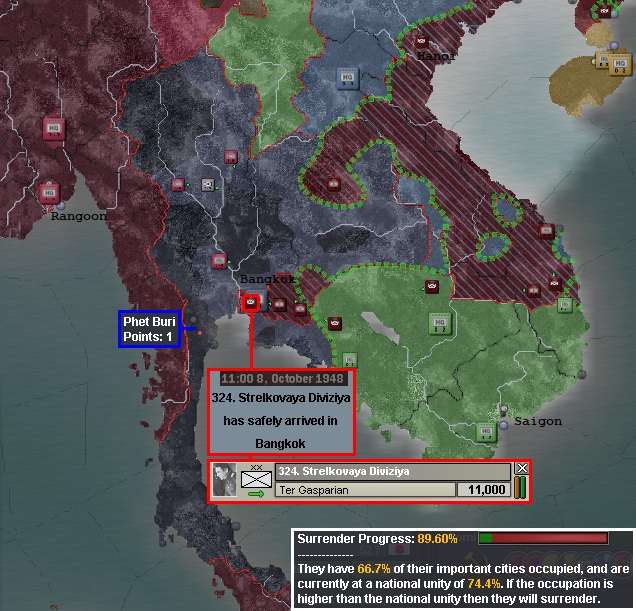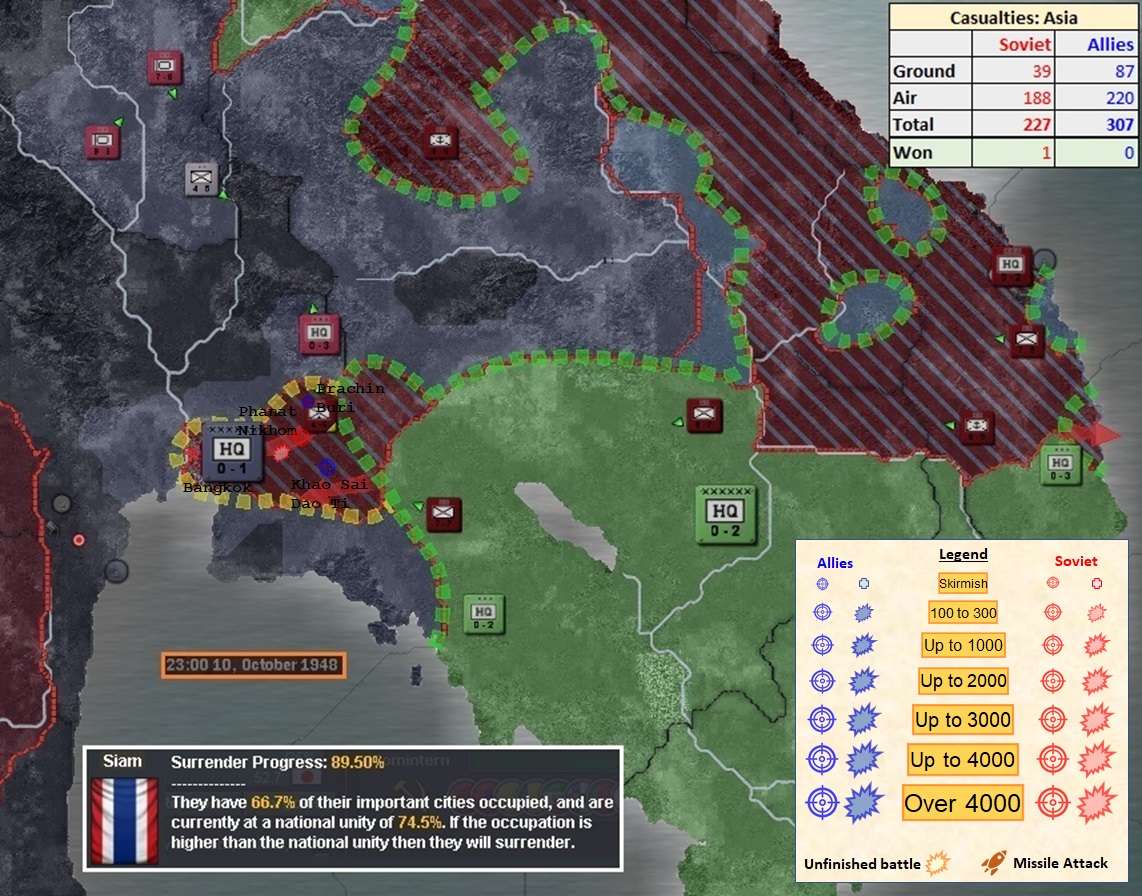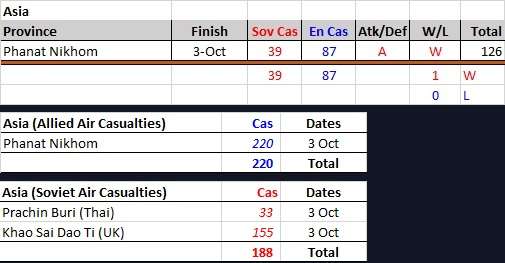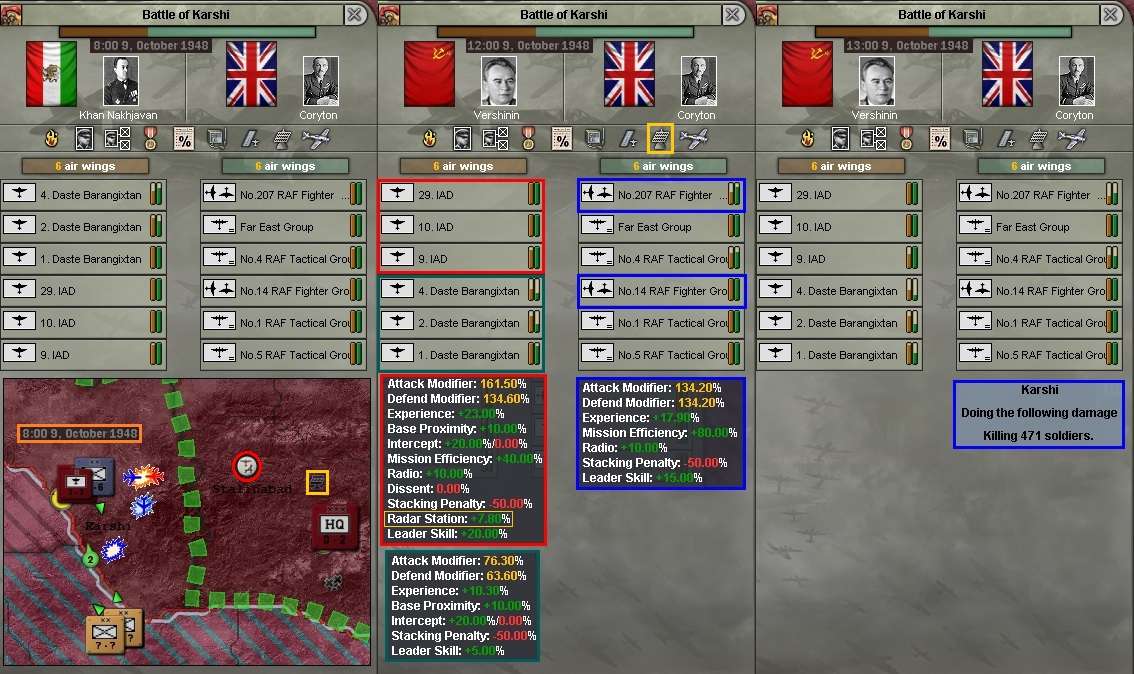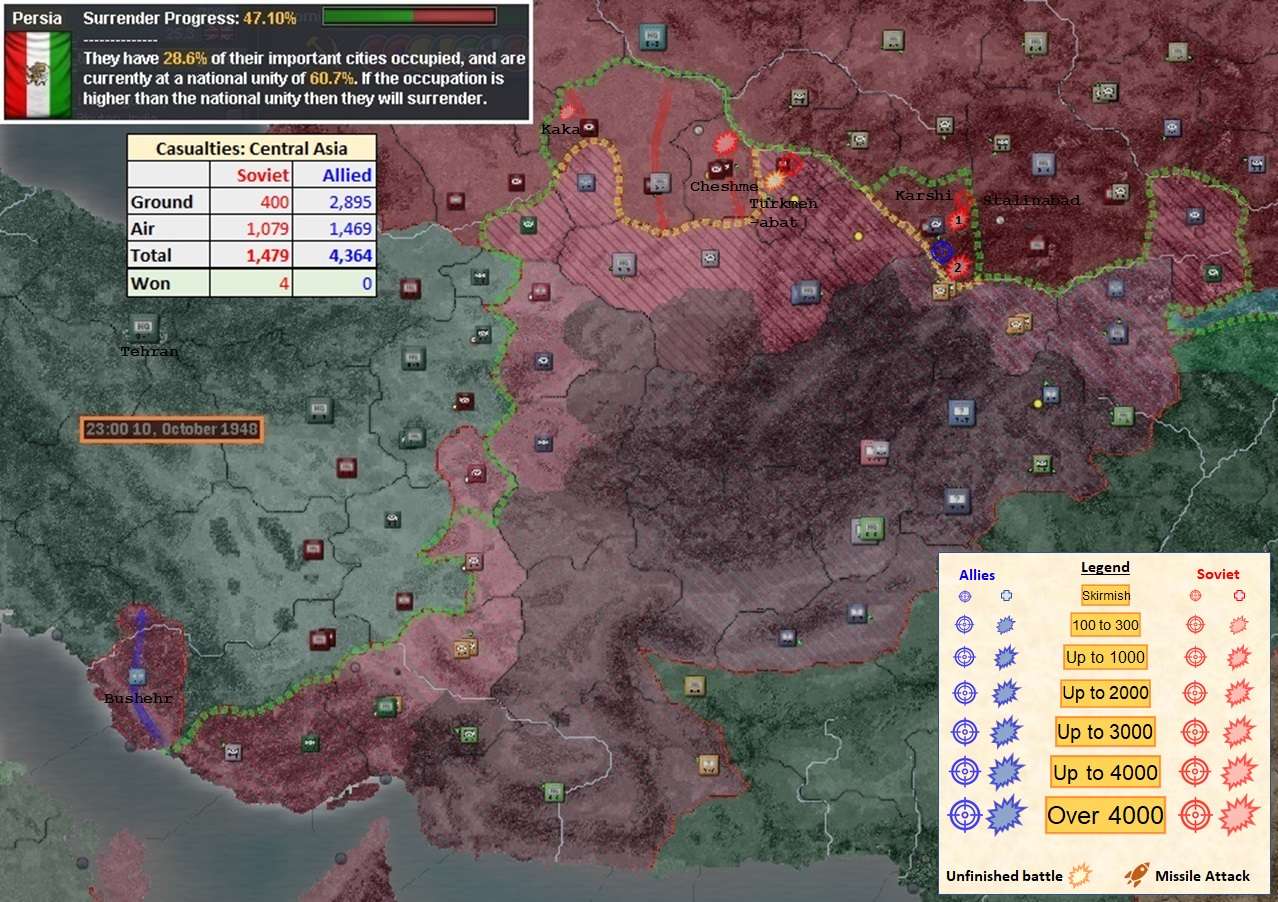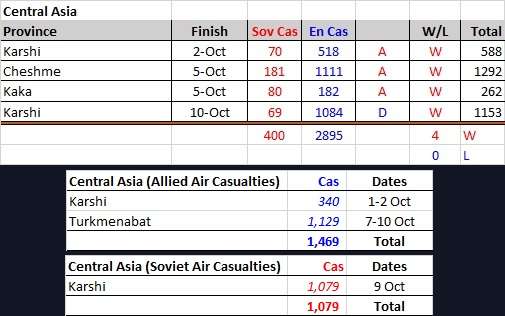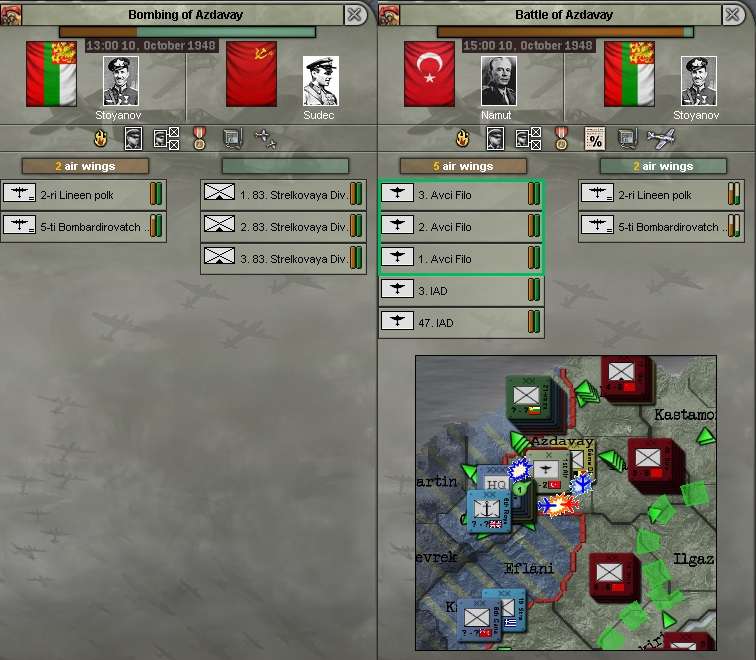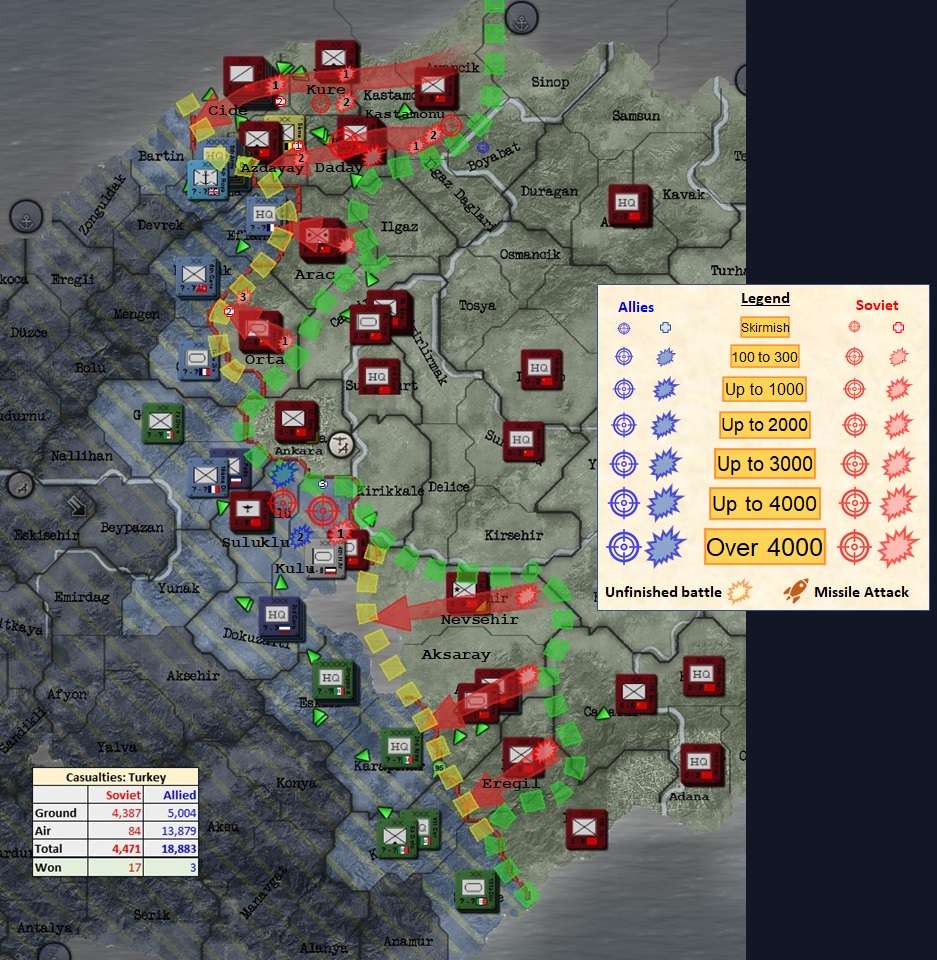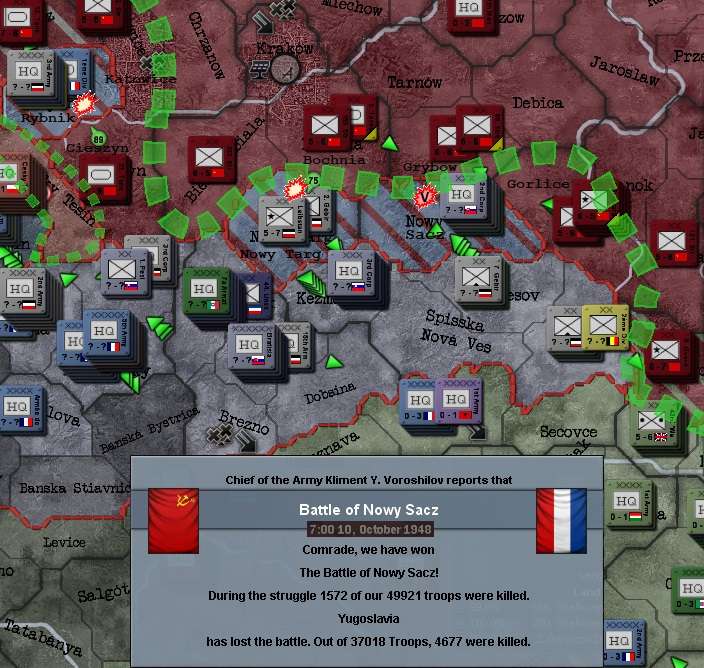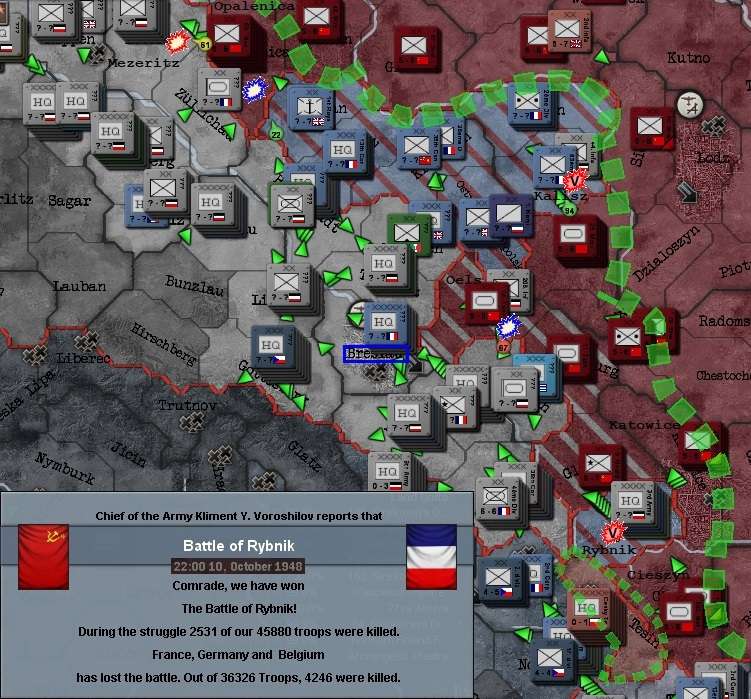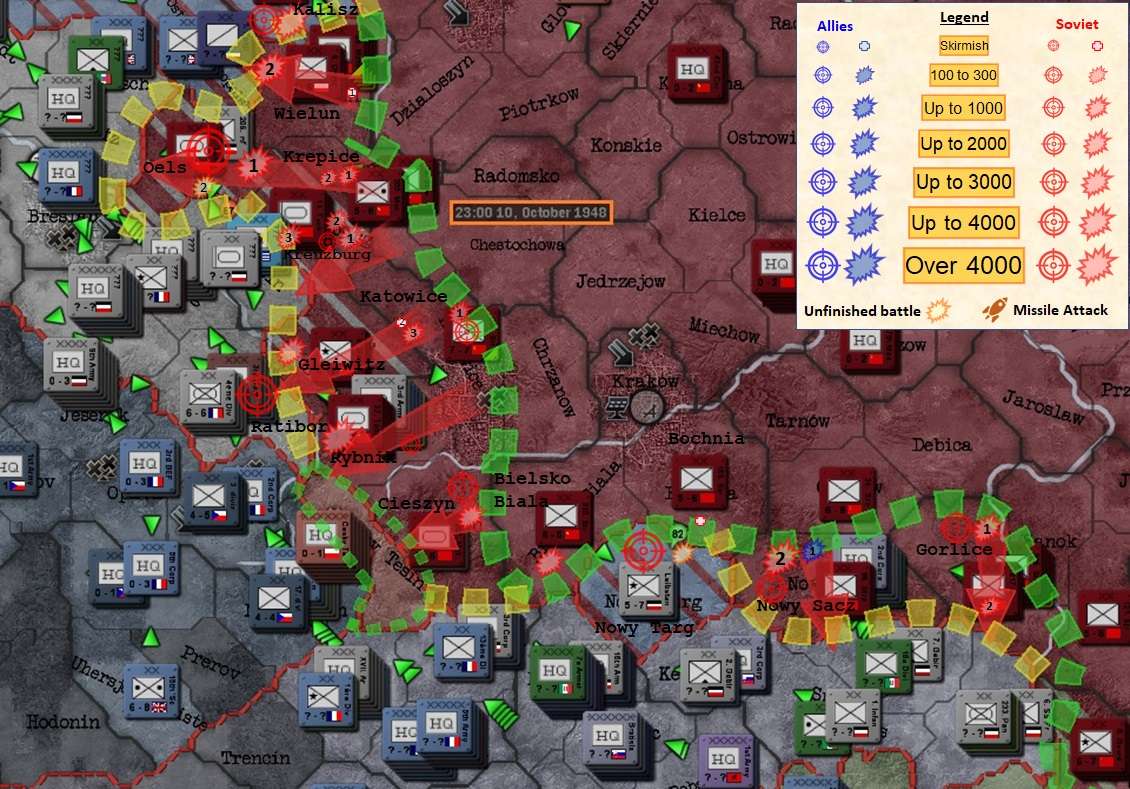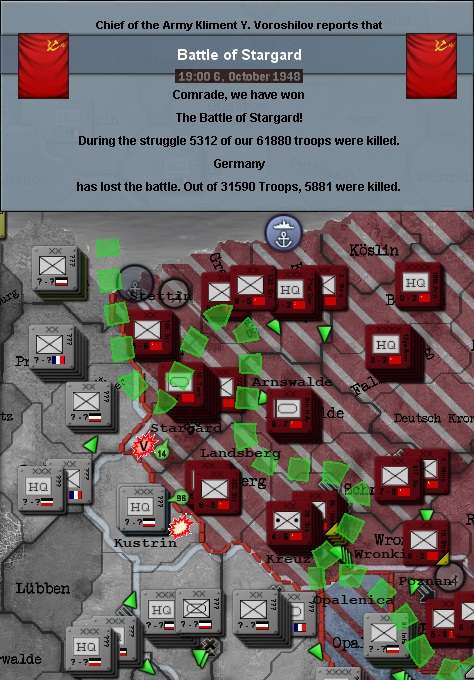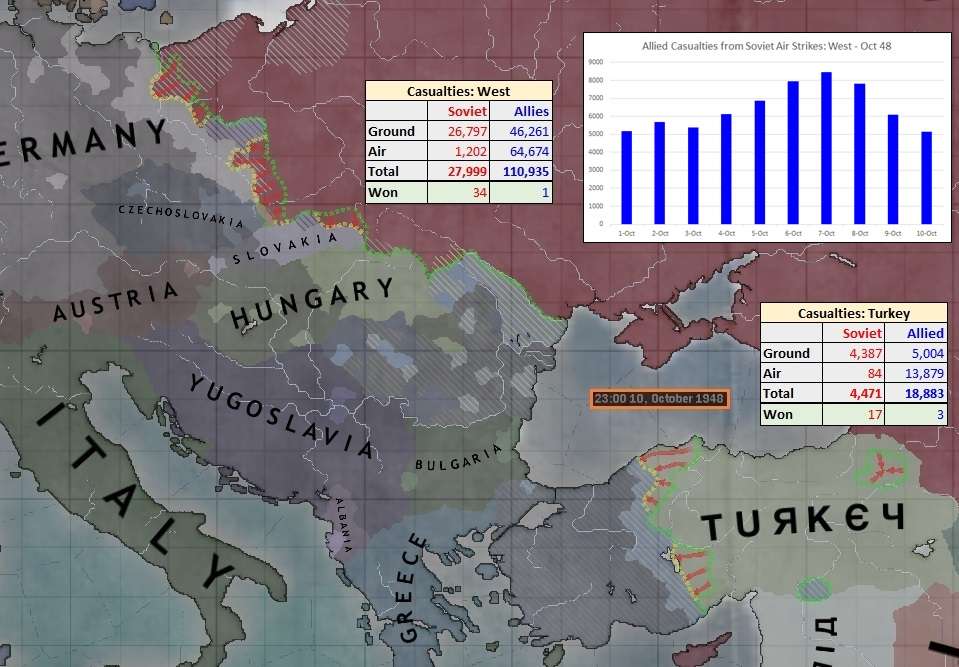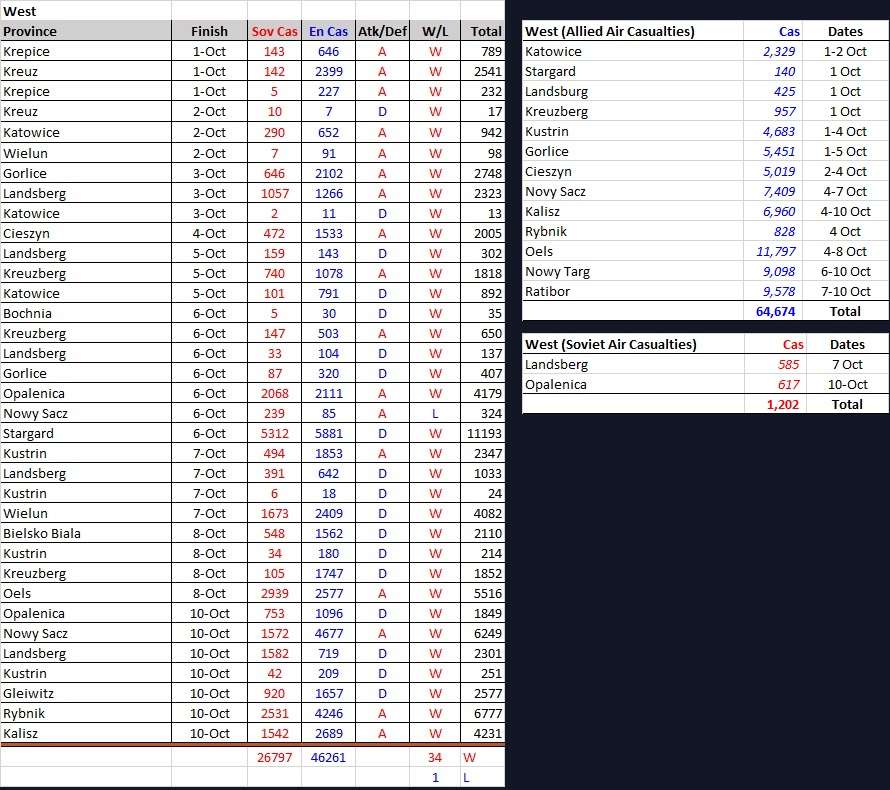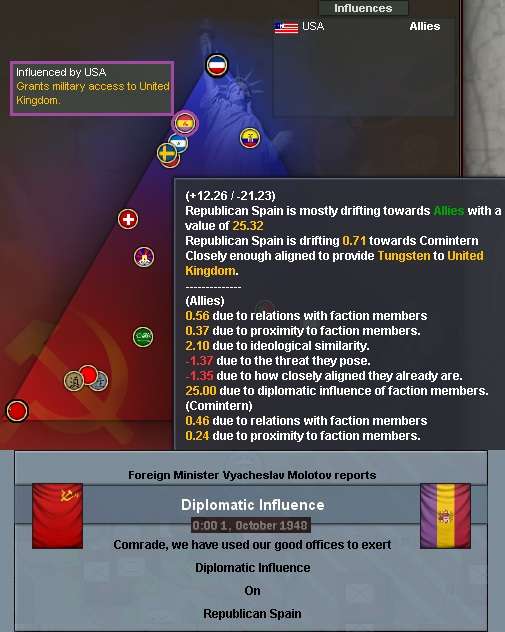Chapter 40: January 1948
Introduction
Note: the mini mod to extend the game end worked fine (big thanks to @Wraith11B for pointing me in the right direction before the clock ticked over to 1948). Though when redoing the message settings under the new mod, I forgot to check spy neutralisation reports until late, when I belatedly noticed I hadn’t been getting any. So I’m sure many will be abjectly heartbroken that the intel summary will not be quite as comprehensive as usual! 
December 1947 had seen the Soviets reorganise their air resources and begin to exert air superiority in the West, to deadly effect. But despite Allied supply problems, Red Army progress in Prussia had been slow and the Polish-Hungarian sector had been largely neutral.
In Romania the Soviet 12th Army had been encircled in western Romania and their pocket gradually compressed, but they still fought on hard as the year ended. The Soviets had made a largely ineffectual attempt to reach and relieve them, but were now more concerned with securing eastern Romania, where minor Allied countries were reinforcing efforts to push to and over the Soviet border towards Odessa.
Operations in the Middle and Far East had been progressing well with a Dutch attempted naval landing at Vladivostok decisively repulsed. Though in Central Asia, the Allies had reinforced their line and were pushing further into Afghanistan.
******
1. The Far East
January 1948 started with suggestions being made to Manchuria and Japan to send expeditionary forces to Vladivostok (allied objectives set), though none would appear that month.
As the 7th Army pushed slowly down on Mengukuo from the north and west, 1st, 6th and 15th Armies were making their way across Manchuria to Mengukuo’s eastern border. By 6 January, enough of these divisions were at or approaching the border for the stances of all three armies to be switched to attacking and offensive air operations.
Manchuria remained in the Comintern but neutral and a number of Allied units were still making their way out of it, mainly to the south-west. This continued to result in sporadic skirmishes, often as Soviet troops on strategic redeployment bumped into these generally unsupplied enemy divisions. These were usually recorded as ‘technical’ losses, as the Soviet divisions just broke contact and kept moving.
An more deliberate battle was fought at Jianchang (southern Manchuria) on 7 January, where the unsupplied French 27th Mountain Division was defeated (Soviets 20/17,000; France 145/12,748 killed).
By 11 January, encounter skirmishes were still occurring as Soviet formations were still moving into position.
The largest battle of the month so far occurred in Quinglong on the 17th (Soviets 74, France 346 killed) as the tidying up of Manchuria continued. Successful skirmishes were then fought at Har Nur (19 January) and Xilinhot (24 January), with the latter being occupied on the afternoon of 29th, forming the leading edge of the 7th Army advance in northern Mengukuo.
The largest battle of the month in the Far East was won in Duolun against a Chinese division early on 31 January (Soviets 38/52,982; China 841/5,965 killed), including VVS air support (another 759 enemy casualties). This signalled the first serious involvement of forces from the three ‘eastern’ armies on Mengukuo’s eastern border with Manchuria, who were now largely in position.
Note: I hope the colours work. It's more to indicate the scale and spread of combat during the month in each province, rather than flag individual battles or which side was the attacker. But if it's confusing, I'll adjust as I go.
******
2. The Middle East
As in the Far East, allied objectives were set for the Comintern puppets of Iraq, Jordan and Persia at Lankaran, on the Soviet border with Persia, on the western shore of the Caspian Sea. Again, designed to attract EFs to Soviet service. And again without any result that month.
A skirmish for Damascus was won early on 1 January against Syrian militia as Soviet tanks advanced to secure it. Damascus was taken at 2000hr on 2 January, but the capture of the capital did not trigger a Syrian surrender.
[Note: as one of those countries without a VP province, it would seem every province needs to be occupied to make them surrender: too much work to bother with for the moment.]
The first attempt to take Beirut began at 1600hr on the 3rd, but was soon halted as the odds were poor: the Lebanese infantry division defending it had AT that matched the light armour of 1 Tank Div (Soviets 14, Lebanon 9 killed). Reinforcements would be required.
There was no serious resistance when Jerusalem was attacked by 16. Tank Div at 2200hr on 4 January. It would be taken at 1200hr on the 6th, followed by the Israeli surrender at midnight.
Meanwhile, Jordan announced its mobilisation on 5 January – but remained at truce with its former Allies. Israel would suit follow on 8 December.
The second attack on Beirut began at 0000hr on 8 January, this time with 9 Tank joining 1 Tank Div, though a Syrian militia brigade had been brought in to help defend it
[only 32% progress]. It would take exactly four days until victory came early on the 12th (Soviets 282/16,374; Allies 741/12,844 killed). The city was taken three hours later, following which Lebanon surrendered on 13 January and started mobilising the next day.
As the fight for Beirut was in progress, the Palestinians were attacked by 16 Tank Div in their capital of Gaza at 0200hr on 10 January. The battle would be won the following day (Soviets 73; Palestine 329 killed) and Gaza occupied, but as with Syria (ie no VP province) the whole country would need to be occupied before they would surrender.
As some 13th Army divisions were redirected to help stabilise the deteriorating situation for 19th Army in Afghanistan, at 0000hr on 15 January STAVKA took advantage of the passing 7th HArm Div (which included a Guards brigade) to direct an attack on the oil-rich British outpost of Al Kuwait. It would take over five days for them to organise after they de-trained at Shagra in southern Iraq.
Meanwhile, a nearby Egyptian division was ignored by 16 Tank Div as STAVKA directed it to race for the Suez Canal. By 0100 on 15 January they were in El’ Arish - two provinces from Romani, on the eastern shore of the Canal. They were attacking from Misfaq by 1800hr on 16 January, but found Romani well-defended by two Egyptian divisions and their attempt to blitz through the defences expertly countered.
But the Soviets had an armour advantage and would persist with their attack, 16 Tank Div eventually winning (Soviets 339; Egypt 1,023 killed) and advancing into Romani by 1500hr on 20 January. They immediately began trying to force their way across to Bûr Sa ‘id on the western bank, which at that time was still not defended.
The battle for Al Kuwait began at 1600hr on 20 January, just as their colleagues were attempting to cross the Suez. The 10th (British) Indian Div plus some HQs were the only British defenders. They would resist until 0800hr on the 23rd (Soviets 139/10,994; British 1,051/11,991 killed), with the rest of the enemy troops surrendering and Kuwait was occupied by 1400hr on the 26th (and made an EF objective for Iraq).
Unfortunately, one of the retreating Egyptian divisions made it across to Bûr Sa ‘id first at 1900hr on 23 January, starting a battle. Although they lacked supplies
[-40% penalty], the reckless assault of 16 Tank Div across a water obstacle was making little or no headway
[0% progress]. It would eventually be called off on the night of the 29th, with 467 Soviet troops and only 14 Egyptians killed.
Meanwhile, the rest of Palestine had been occupied by (STAVKA-directed) Soviet troops following up the build-up heading to the Suez. Palestine was acquired as a direct-ruled Soviet Middle Eastern outpost on 28 January: first up an EF rallying objective was established
[just on the off-chance it may work one day]. Later, Stalin may decide to develop a port and air base at Gaza, if such was deemed useful.
From 1100 hr on 30 January, the British quite cleverly began a series of logistic strikes on the supply choke-point of Misfaq in the Sinai. There would be three completed before the end of the month, and another in progress, doing heavy damage to road and supply dumps. It may have an impact later, but for now the lead Soviet divisions had sufficient fuel and supplies.
At 1300hr on 31 January, 9 Tank Div had reached Bîr Gifgafa (south of Romani) and tried to cross the Suez into Ismâ’ilîya but found another Egyptian infantry division in place, beginning another opposed amphibious attack – again, with small hope of success, though the Egyptians were still about 1/3 disorganised from their earlier defence of Romani and the Soviet medium tanks had an armour advantage. They persisted with the attack for now.
At the same time, with the logistic strikes continuing on Misfaq, the 2nd Fighter Group 93 x INT), which had been repairing in Baghdad for some days, was reserve-hopped to Tel Aviv Yafo. They would repair for a little longer, but it was intended they start intercepting further Allied bombing missions in early February.
By the end of the month, good progress had been made in the Middle East, though the hope of gaining full control of the Suez Canal had been checked, for now.
The situation in the Battle for Ismâ’ilîya and after the RAF strikes on Misfaq.
******
3. Central Asia
The Soviets continued to slowly trade ground for time in Afghanistan and on the Persia-Pakistan border, but STAVKA became increasingly worried by growing Allied strength as the month wore on. The RAF was active and more Allied divisions from further afield were joining in, with Britain, Pakistan and India being the most numerous. Objectives for 19th Army were adjusted to reflect previously lost ground and the deteriorating situation as the new year began.
On 2 January, 18th CAS Group (2 x CAS) was transferred into the bare-bones (level 1) air base at Stalinabad from Tbilisi
[no bases near enough for a reserve hop, so organisation lost].
Meanwhile, a series of dogfight began early on 3 January, with Soviet fighters from Bandar e Abbas tangling with two unescorted RAF TAC wings over Gwadar (western Pakistan), causing damage and preventing ground casualties. But the great battle there, which had been going on since December, was lost at 0100hr on 4 January (Soviets 3,273; Allies 2,964 killed).
The VVS engaged escorted RAF TAC over Iranshahr on 7 January but the same day, a raid by the VVS 18th CAS Group on Jalalabad killed 161 enemy troops but was intercepted and both wings damaged, forcing future missions to be shelved. At that stage, precious IC were diverted to begin improving the repair facilities at Stalinabad air base to level 2.
On 11 January, the Household Division from Bhutan attacked the Persian 4th Div and Soviet HQ 69th Corps in Chabahar (Persia-Pakistan border). The Allies would reinforce the fight in coming days and it would not end until the 22nd.
By 19 January the RAF were supporting the attack on Chabahar, with the VVS again intercepting unescorted TAC there early that morning: though the raid still struck home, those bombers would not return. But raids on Asmar (Afghanistan) continued from 18-22 January, killing a total of around 3,000 Soviet defenders.
The VVS was left unable to respond to these, as they were ambushed and significantly damaged and disorganised over Sonmiani Bay on 19 January by three full-strength RAF INT wings as they pursued the RAF TAC trying to hit Chabahar again. 2nd Fighter Group had to be rebased to Baghdad for repairs, as Bandar e Abbas did not have sufficient facilities (level 1, with three Persian fighter wings also in place there). It was that partly-repaired Group that would later be transferred to Tel Aviv Yafo at the end of the month.
The fight in Chabahar was lost after dogged Persian resistance at 1100hr on 22 January (Persia 1,303/7,645; Allies 2,012/26,987 killed).
But a week later, an Allied attack on Asmar (Afghanistan) was finally defeated at 1500hr on the 29th (Soviets 1,285/14,619; Allies 2,129/17,988 killed), despite renewed RAF bombing in support (another 551 casualties). A determined Allied attack on Shindand was also defeated at 0400hr on 31 January (Soviets 408/8,998; India 1,353/8,993 killed).
As the month ended, RAF bombing had shifted the overall casualty count in the Allies favour once VVS air cover was gone and they had gained some significant ground. But by then, the first reinforcements from the Middle East were beginning to arrive, while some other units from the far north had begun a long redeployment to help stabilise the sector …
4. The North
After being dormant so far since the war began in November, signs of activity began to be seen in the northernmost sector, on the Norwegian-Finnish border. But that activity was the withdrawal of some ‘excess’ divisions to the Romanian border (four divs) and Stalinabad (two divs) – a very long rail journey for both redeployments.
It was almost three weeks before anything else occurred – it was a probe initiated by one of the local divisional commanders. And he put over 65,000 defending Allied troops to flight merely by advancing towards them. Victory came without a shot being fired: the enemy had apparently been out of supply for so long that morale had completely collapsed in Rastigaissa! MAJGEN Mishanin would be made a Hero of the Soviet Union for his bold but bloodless conquest.
The two armies in the north were quickly switched to attacking stances.
Though a ‘recon bombing’ that afternoon of Kirkenes by the small bomber group rebased to Murmansk revealed the defenders of Kirkenes were better provisioned and still well-organised.
Two STRAT groups ( each 2 x STRAT) were rebased to the Finnish airbase in Oulu at the same time, with 2nd Strat Gp starting the first logistic bombing of Kirkenes that evening, as the TAC bombers began making ground attacks. The other STRAT group soon joined in the rolling logistical strikes on Kirkenes: the objective would be to eventually put the whole Allied force in northern Norway out of supply.
The assessments at 0400hr on 21 January made after the first raids showed local fuel (1.06) and supply (5,27) holdings had been heavily reduced and were now well below required Allied resupply rates, though new supplies still came into the port. Infrastructure had already been heavily reduced (from 3.00 down to 1.92). By that night, the supply dumps were virtually empty and infrastructure badly damaged (0.69).
Early on 22 January, 89th Tac Gp switched from ground attack to port strikes, aiming to reduce the amount of supplies being shipped in as well. As a by-product they also started to damage two Norwegian sub flotillas in the harbour. Which
[AI dumbness] seemed unwilling to leave as the raids dragged on.
By early on 23 January, infrastructure in Kirkenes was almost non-existent and the port badly damaged, shipping in only 2.74 units of supply and fuel per day. The following morning, it was only about 0.3 units per day.
STAVKA ordered a two-division probe on Kirkenes at 1700hr on 24 January: although supply was indeed almost gone
[-49% defender penalty] for the Allied 74,700 troops there, organisation had not yet deteriorated. It was discontinued straight away (25 Soviet, 6 Allied casualties). By that night, the logistic bombing of Kirkenes was not doing any more damage. 2nd Strat Gp was switched to ground attacks, to see what they could do. The answer was ‘not very much’ (five soldiers killed).
Meanwhile, the continued port strikes had sunk one of the sub flotillas
[stupid AI  ]
].
That night, 2nd Strat Gp was switched to logistical bombing of Polmak, to good effect, while the other STRAT group kept Kirkenes ‘topped up’ with logistic strikes, while the TAC still hit the port. By the afternoon of 26 January, supply and infrastructure in Polmak was almost as bad as it was in Kirkenes. Logistical bombing of Kirkenes was switched then to Storfjordbotn, where the Allied troops were retreating to from Rastigaissa. 2nd Strat Gp kept hammering away at Polmak.
At 0100hr on 27 January, another brief probe hit Kirkenes (14 Soviet, seven Allied casualties), but the 56,816 Allied troops there were still not disorganised
[supply penalty 49.8%], though some were spotted withdrawing to Polmak. Which was soon hit with a STAVKA-ordered attack by four divisions at 0300hr. Allied supply was low and the defenders were badly overcrowded. Even in the poor weather, the Soviet’s shock attack looked promising and would continue, with the TAC bombers switched to ground support attacks there, away from their port strikes on Kirkenes, though a STRAT group was switched back to logistic strikes there to keep supply suppressed.
At 0400hr on 30 January, 27th Army (objectives Polmak and Kirkenes) was switched to a blitzing stance. When this had not energised the local army commander by 2000hr the next day, STAVKA directed an all-out attack on Kirkenes with all available troops. Weather, over-stacking, enemy entrenchment and terrain hampered the attackers (as did the night attack of course, when that applied), but the Allies of course lacked supply and were themselves still somewhat over-stacked.
The battle would be a tough one, but the Soviets had the manpower to sustain the attrition and hoped to exhaust enemy supply and organisation with time. If the Allied presence in the north could be eradicated, it would allow a small garrison to be left and many more divisions freed up for other fronts.
In the last ten days of the month, the ground attacks on Polmak and Kirkenes had caused almost all the enemy troop casualties, while local Norwegian port and infrastructure had been pulverised and supply choked off.
5. The West
Of course, the vast majority of fighting in WW3 was conducted in Europe, where consideration of ground combat will be divided into three broad sectors and the general air war summarised.
******
5a. Prussia and North Poland
The fighting was heaviest in this sector, with the main Soviet offensive efforts still directed at cutting off as many Allied units as possible in Königsberg and Cranz as possible by taking Braunsberg. It was there the heaviest air support was directed throughout the month and repeated Soviet attacks were launched.
From 1-26 January, eleven successive battles were fought over Braunsberg, as the Allies kept slipping in new divisions to hold it even when defeated, and beating off a number of attacks in between. A total of 15,163 men died in these frontal assaults, 8,889 by the attacking Soviets and 6,274 by the Allies. Soviet air strikes killed even more: 16,114 during many raids from 3-28 January, when the final Red Army victory was won. Though the province was not yet occupied before the end of the month.
At Braunsberg and in Königsberg, Allied supply remained difficult throughout the period, hampering the enemy defence despite their large numbers.
[For example, during one major battle for Königsberg, at 1900hr on 7 January the six defending Allied divisions had combat penalties of 20%, 4.50%, 8.7%, 0%, 0% and 12% due to lack of supplies.]
On 11 January, the fighting continued in both key provinces, but many disorganised Allied divisions had managed to extract from Königsberg to Braunsberg (and then from there to Elbing), protected by one organised French division.
That battle for Braunsberg was lost on 12 January (Soviets 2,436/16,777; Allies 2,224/111,285 killed) but more attacks would come relentlessly as fresh units made their way to the front. But the attack on Königsberg was finally won by 1200hr on 14 January (2,889/64,887; Allies 1,935/67,916 killed). Königsberg at last fell into Soviet hands by late morning on 25 January – and after all the bombing and fighting over the last three months, it was a devastated pile of rubble and almost 9,000 men had died fighting over it.
This trapped about four Allied divisions in Cranz – the only troops cut off during the whole Prussian campaign so far, as the staunch Allied defence of Braunsberg had allowed most to escape west – though all badly disorganised. Almost 9,000 men from both sides died fighting for the city (including Allied attacks after it had been taken) in ten battles from 4-26 January.
Another main focus of Soviet attacks in January was Marienwerder, to the south-west of Braunsberg and part of the grinding push towards Danzig. Even though Allied supply there was poor by 16 January
[from 35.8 to 43.7% penalties among four defending divisions], it would prove a tough nut to crack and a cruel killing ground for the Soviet attackers. Of the 14,952 men who died there in 12 battles from 1-31 January, the Soviets lost 10,762 and the Allies only 4,190, with VVS air strikes killing another 4,845 defenders. But the last battle on 31 January was another Soviet victory: they had won the last seven after losing the first five, the largest an expensive victory on 22 January (Soviets 3,167/33,817; Allies 794/38,455 killed). The Red Army was still trying to occupy it as the month ended.
Other largest battlefields over the month were defensive for the Soviets. In Ostroleka only three battles were fought, ending on 10, 15 and 18 January – all Soviet victories. But 12,485 men were killed in a mirror to the attacking carnage in Marienwerder: 2,830 Soviet and 9,655 Allied casualties. The other large battle site was in Zambrow, where 10,705 men (4,396 Soviet, 6,309 Allied) died in four battles from 19-31 January (two losses and two wins for the Soviets). Fighting was also heavy in Mlawa, where the Soviets won four defensive battles from 2-15 January after taking it on the 1st (1,957 Soviet, 7,531 Allied casualties).
Cranz was cut off when Königsberg fell on 25 January, at which point it was attacked. After a hard battle, on the morning of 29 January over 35,000 Allied troops (mainly French and German) surrendered.
Note: and 11 Abn Div is still lurking in Königsberg four days after it fell and no enemy transport planes had been at the air base. They just sit there, doing nothing.  "They like to watch!"
"They like to watch!" 
Fighting was heavy all across the front and there were also some sporadic but deadly Luftwaffe bombings during the month, particularly on Bartenstein (to spoil the attack on Braunsberg – 2,734 Soviet casualties) and Allenstein (975). But most of the time, Soviet interceptors were able to disperse them quite quickly (see air summary below), the Soviets attacking in the north and largely defending in the south of the sector.
The Prussian and North Polish sector, 1-31 January 1948.
******
5b. Central Poland and Hungary
The enemy was having supply problems in Poland too: for example, a French division in Biala Podlaska (in front of Brzesc Litewski) being attacked late on 1 January
[at a 23.9% supply penalty]. It may well indicate the Allied problem related more to supply production than infrastructure or distribution.
Brzesc Litewski itself was liberated at 0300hr on 3 January. Later in the month, the VVS would begin to use its air base again as it became clear it would be held.
The Soviet armies in this sector all had defensive stances, but they would still make limited offensives, especially when trying to retake lost ground for which objectives had been assigned. Of the larger battles fought, both attacks and defences, some would be won by the Soviets and some lost.
Jaroslaw was successfully defended on 5 January (Soviets 936/26,237; Allies 4,838/34,978 killed), but the province of Skole occupied by the enemy the next day after lost battles on 1 and 3 January. Skole would become a focus for Soviet counter-attacks and
[AI directed] air raids with an attack lost on 13 January but then a victory on the 17th, while VVS raids killed 4,845 enemy there in support of the attacks between 10-17 January.
The heaviest fighting in the sector was over Drohobycz, which began the month occupied by the Allies but (like Skole) would be retaken by the end of the month. A major battle for Drohobycz was lost on 10 January (Soviets 3,577/32,860; Allies 3,672 ground plus 3,976 air raid casualties) but after losing the first two battles for it, the last three would be won by the Red Army. In the end, 13,144 men were killed there during the month in ground fighting (5,599 Soviet, 7,545 Allied) plus another 7,193 Allies (from 6-18 January) and 1,652 Soviet troops killed in on-and-off defensive air strikes on Sambor.
There was heavy fighting in Krasnystaw during an Allied breakthrough in that part of the line, with the Soviets defeated there on 16 January (3,765/19,990; Allies 2,523/27,983 killed). The Allied spearhead would eventually reach Zamosc, two provinces north of Lwow.
Overall, territorial advancement on both sides was roughly even, with Soviet gains around Brzesc Litewski and the reclamation of Drohobycz, balanced by the Allied incursion to Zamaosc.
5c. Romania
There are two main stories to be told of fighting in Romania during January 1948: the reduction and destruction of the pocket that trapped the troops of the Soviet 12th Army in western Romania, and an Allied offensive and Soviet counter-offensive in eastern Poland, in which heavy VVS air support played a key role.
On 1 January, the main Soviet resistance in Bran was broken, despite the Allies taking heavy casualties. But the troops involved had more fighting ahead of them before the tale was over.
The defence of Filiasi was overpowered on the afternoon of 3 January (Soviets 1,032/9,000; Allies 416/37,327 killed), though the Allies wouldn’t occupy in until the 12th. All Soviet troops in the pocket were now retreating to the mountain stronghold of Tirgu Jiu.
By 16 January, some troops had filtered back into Bran, so its would resist for a while yet. All 12th Army units were out of supply by that point. By 18 January, Tirgu Jiu was under attack, but still resisting strongly, with 18 divisions and HQs trapped in the pocket.
The battle for Tirgu Jiu was lost after days of fierce resistance at 0600hr on 20 January – one of the fiercest battles of the war so far (4,314/89,078; Allies 4,615/102,389 killed). After this, only small skirmishes occurred in Bran (lost late on 23 January) and Tirgu Jiu. More stragglers from Bran had made it to Tirgu Jiu by the afternoon of 26 January, but by this time most 12th Army divisions had surrendered. The final act of the drama ended on the 30th, with the last stragglers surrendering at 1100hr and the province occupied by midday.
In eastern Romania, Allied advances meant any rescue mission to save the 12th Army never really got off the ground, though they did try. Suceava was a focal point for Soviet offensive efforts, winning a major battle there on 6 January (Soviets 1,868/16,984; Allies 3,064/18,884 killed) and another attack on the 12th, but then being repulsed by arriving Allied divisions with losses later on the 12th and again more heavily on 21 January.
Alarm bells were rung early on 11 January, when an Austrian division managed to take the Soviet border province of Illichivsk, despite heavy aerial bombardment as it passed through Cetatia Albia (5,919 killed from 7-10 January by the Sevastopol based bomber group (2 x INT, 2 x TAC) that would prove so devastating in eastern Romania during that month.
By 20 January, a STAVKA-directed Soviet division had retaken Illichivsk without opposition from the battered Austrians, but Ermoclia had been retaken after a sizeable fight by the Allies from the Soviets who had themselves seized it earlier in the month. A Soviet counter-attack on Ermoclia would be won on 31 January (1,333 Soviets and 2,206 Allied ground and another 6,438 killed by the VVS from 28-31 January).
Another target of fierce Soviet attacks on the ground and from the air was Artyz, with a Soviet attack succeeding there on 24 January (Soviets 2,242/25,918; Allies 3,323/30,800 killed, 3,223 air casualties).
Fighting was spread throughout the old Romanian border areas and in the pocket over the month, with thousands of Allied troops killed in defensive and offensive air raids in eastern Romania during the month, including a total of 12,707 in Artyz, 11,027 in Kilia and 8,610 in Ermoclia alone.
5d. Air War in the West
The first week of January saw heavy aerial combat, with Soviet interceptors doing their best to suppress Allied air strikes, especially by the very destructive Luftwaffe TAC bombers, over Allenstein, Osterode (where a single unescorted German TAC was destroyed on 1 January) and Ostroleka. Hungarian fighters challenged Soviet air raids over Drohobycz and Jaworow on 2 January, but a Soviet INT group was called in and saw the Hungarians off, while other took on unescorted Polish bombers trying to attack Jaroslaw.
Alas, Luftwaffe fighters (3 x INT) managed to single out one of two an escorting VVS M/R wings over Bruansberg on 3 January and managed to shoot it down, though the Germans also took some heavy damage and the VVS escort was replaced from the ‘repair pool’. Elsewhere over Prussia and Poland VVS Int managed to repel attacks by German and Polish bombers, with one Polish CAS wing presumed destroyed over Sanok on 4 January. The same day, two VVS INT did heavy damage to a French bomber group over Sambor (1 x M/R, 2 x TAC).
Much of the recent Allied air activity in the south seemed to be emanating from Bucharest, with 20 wings from many countries based there, crowding the undamaged repair facilities, which a V2 battery was soon directed to destroy early on 5 January.
Heavy air battles followed in and around Romania over the following days, which VVS interceptors were able to largely repel – and hopefully crowd out the now non-existent repair sheds in Bucharest.
With the toll taken on VVS wings during this time, its commanders attempted to withdraw units before they became at risk of destruction, send them back to depth air bases for repair and bring stronger wings back (though not normally much above 75-80 strength when they returned, such was the demand for their services). Periodic V2 strikes were made – sparingly, to preserve the capability, as industry was being directly increasingly to maintaining supply production as the month wore on. The three new fighter wings currently in production would not be ready before May.
With continued Allied air forays over Romania, Hungary and southern Poland continuing up to 9 January, more likely Allied repair hubs, which could be seen to contain operating Allied aircraft, were sought out. Varna (Bulgaria, on the Black Sea Coast) was discovered to be operating seven French wings (3 x M/R, 4 x TAC) which had been active of late in the south. V2s struck in early on 10 January, destroying most of is level 6 repair capacity.
After a period of suppression, the Luftwaffe returned to strike Labiau (689 casualties) and Bartenstein (801) in one raid each in the early morning of 10 January, while Czech fighters intercepted an (escorted) Soviet TAC mission on Marienwerder. This provoked a savage response from the VVS the next time the German bombers ( 1 x M/R and 2 x TAC in each case), with three INT wings assigned to protect both Labiau and Bartenstein, both in action from 1100-1300hr on the 10th. Both sides suffered damage and some one of the VVS wings had to be rotated back for repairs, but the raids were stopped for some days, as was a separate unescorted German TAC raid on Osterode on the 11th, which was purned back without releasing its payload. And the German air base at Stettin was hit again with V2s when it was discovered to have been fully repaired (level 4) with 7 German wings operating from it.
But the Luftwaffe INT were also active, managing to destroy an escorting Soviet Yak-15 INT wing over Braunsberg on 12 January and forcing a CAS wing back for repair. A search revealed the large (level 10) air base at Berlin had been fully repaired, with 16 German wings operating from it (8 x CAS, 2 x INT, 2 x M/R, 2 x NAV, 2 x TAC). V2 reduced most of the repair facilities to rubble on the 12th. After this intense period, air-air combat activity lulled across the western front, as VVS bombers started to wreak greater havoc all along the line.
The next serious challenge came on 17 January, when a German raid on Bartenstein (1 x M/R, 2 x TAC) was met by two VVS INT wings, then three Luftwaffe INT wings joined the dogfight and the raid killed 804 on the ground. One VVS wing had to be taken off-line for repair. A part-repaired wing was brought forward to replace it, while an hour later the three enemy fighter wings – led by Adolf Galland - fought a Soviet raid over Braunsberg. The Soviet raid still struck home and both sides had fighter wings heavily damaged after a further engagement over Danzig Bay between 3 x German INT and 2 x Soviet counterparts late that morning. No more Soviet raids were challenged for the rest of that day or the next.
The Germans did return to intercept a mixed VVS group (one each INT, M/R, CAS and TAC) over Braunsberg (where the battle was coming to a head and air support remained key) early on 19 January. A different group of 3 x German INT attacked, but the VVS was ready, with three Yak-15 wings joining in soon after. The raid went through and more damage was inflicted on the German fighters. This was repeated later that morning, this time two German and one Soviet INT wing were heavily damaged. The Germans backed off and the raids on Braunsberg continued through to 28 January, when the battle was won, with over 16,000 Allied troops killed from the air that month.
The Germans tried bombing sorties against Bartenstein on 24 and 26 January, but both were met by VVS fighters. The first killed 633 Soviet troops but saw the bombers heavily damaged, the second raid a few days later was savaged and turned back before it could strike. Attempted German strikes on Lezajsk (central Poland) on 27 January and Allenstein (29 January) met similar fates.
The French Air Force was active in the last week of January across the front, with mixed success. Their interception of a VVS raid on Braunsberg on 29 January stopped the raid, but cost two of their INT wings heavily.
All in all, despite some losses during the month, the VVS retained air superiority over most of the front for most of the month and inflicted enormous casualties on Allied ground forces and prevented similar being inflicted on the Red Army – a decisive factor in keeping the slim hopes of eventual Soviet victpory alive into the new year.
While the number of battles won and lost by either side in the West was broadly even, Allied casualties had been almost twice those of the Soviets there and over all theatres, thanks largely to the concerted and heavy VVS effort in the west, after winning the skies in the first five days of the month (and inflicting almost four times the ground casualties they had in December, and nearly halving those caused by the Allies).
Also, it seemed Soviet ground commanders had been quite judicious in their tactics in the defence, while Allied supply problems probably did them great damage in the great Prussia-North Poland battles. The figures above do not include captured troops (eg the 12th Army in Romania, Allied forces captured in Cranz).
The big news overall was Allied losses in all theatres topping 220,000.
******
6. Research
As the month was drawing to a close, fuel demands had increased significantly, to the extent that the Soviets finally had to start investing in oil refining improvements – something their vast oil reserves had made unnecessary to that point. Leadership was taken out of officer training to allow an extra research project so it could start immediately.
Otherwise, the month saw eight projects finished. Attention finally turned to progressing to ‘human wave’ tactical options. An increasing need for supply production had constricted new unit production, so better industrial techniques (production and efficiency) became a renewed priority. The rest of the new research focused on fighter improvements, better bombs to increase TAC lethality and a new area of research into naval strike tactics.
7. Industry and Strategic Warfare
Three new SS-6 (V2) missile batteries began construction on 1 January to replace anticipated use (more would have been built, but IC remained at a premium).
By 6 January, the supply stockpile had fallen under 52,000 with net usage of over 3,000 per day. Supply IC allocation was increased to 100 IC (30.21% of total IC), at the expense of upgrades (now 83/179). Reinforcement (currently around 69 IC) was always kept maxed and production left at 60 IC.
Supply production was ratcheted up to 110 (33.54%) on 8 January, then 120 (36.58%) the next day and 130 (39.51%) on the 10th as the stockpile continued to fall below 48,000. It then went to 140 IC on 14 January and 150 (45.04%) on the 17th with the stockpile under 40,000.
At this point, VVS technicians observed that many aspects of Japanese fighter design were ahead of the Soviets’. Had there been the spare IC, they would like to have licensed some Japanese INT wings then upgraded them with Soviet jet engine and A2A missile technology. But that would have to wait – if it ever became possible or necessary as Soviet design tried to keep pace with world parity.
On 23 January the supply stockpile had eroded to under 38,000 and production was increased to 160 IC (48.05%). Finally, on 28 January, with the stockpile falling to under 35,000, all upgrades were ceased (0/123 IC) and supply production maxed to 192.79 IC. At this point the fuel stockpile (as noted above) was also in free fall prompting some hasty oil refining research. STAVKA was beginning to appreciate the supply problems the Allies had been having since the war began – it was likely they were far less able to support their troops and planes in the field.
As January ended, the three new SS-6 batteries became available for deployment and the three new INT wings (most of the 60 IC production queue) were due for delivery on 2-3 May. All upgrades remained halted and supply production at 198.55 IC, not quite stabilising the stockpile at around 36,700. At current usage, fuel supplies (64,524) would last less than another 20 days.
Mercifully, the RAF had conducted on four STRAT bombings during the month.
But the Allies – especially the US - had stepped up their war against Soviet convoys (some for trade, some supplies, all auto generated).
8. Intelligence
As noted above, spy notifications were turned off for most of the month. The abbreviated report below still provides the key info on the missions in Turkey and Spain. With Turkey now subdued after the heavy Soviet spy losses of the month before, in February the effort would switch back to covert ops. Communist party support in both countries had decreased a little, but remained quite high. Once covert strength became high enough to try a coup, all efforts would be thrown back in that country to build political support ahead of an attempted revolutionary coup.
